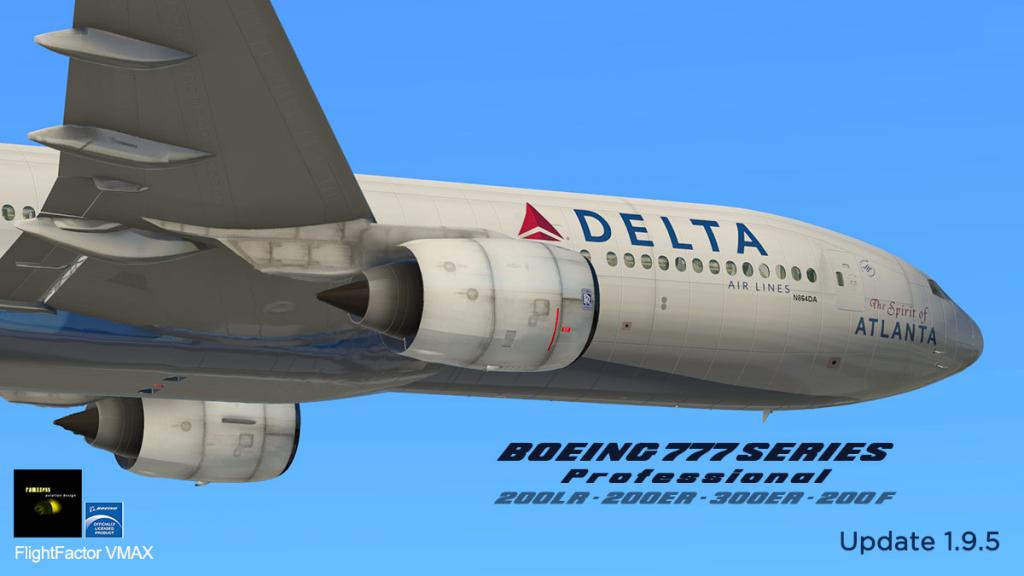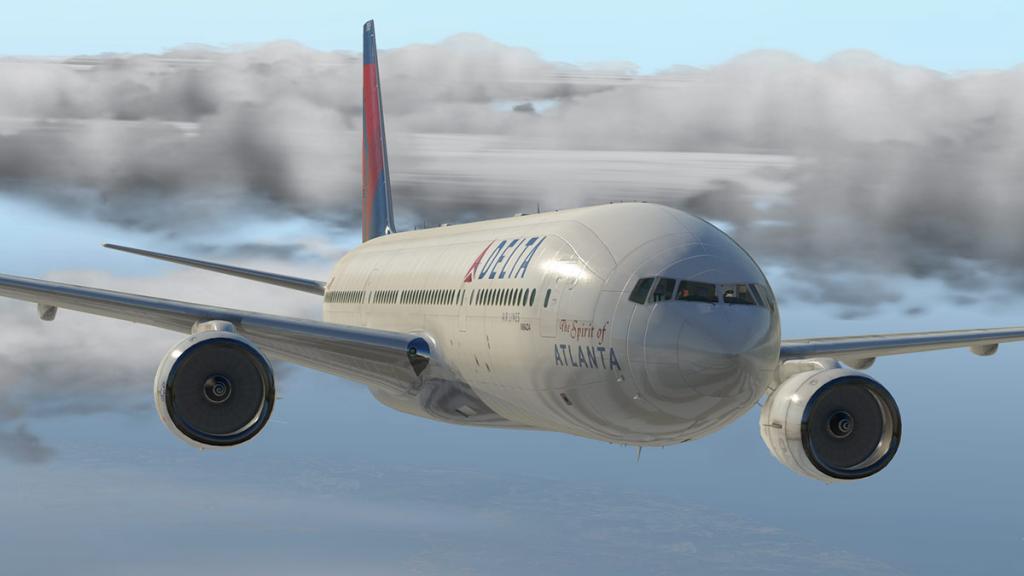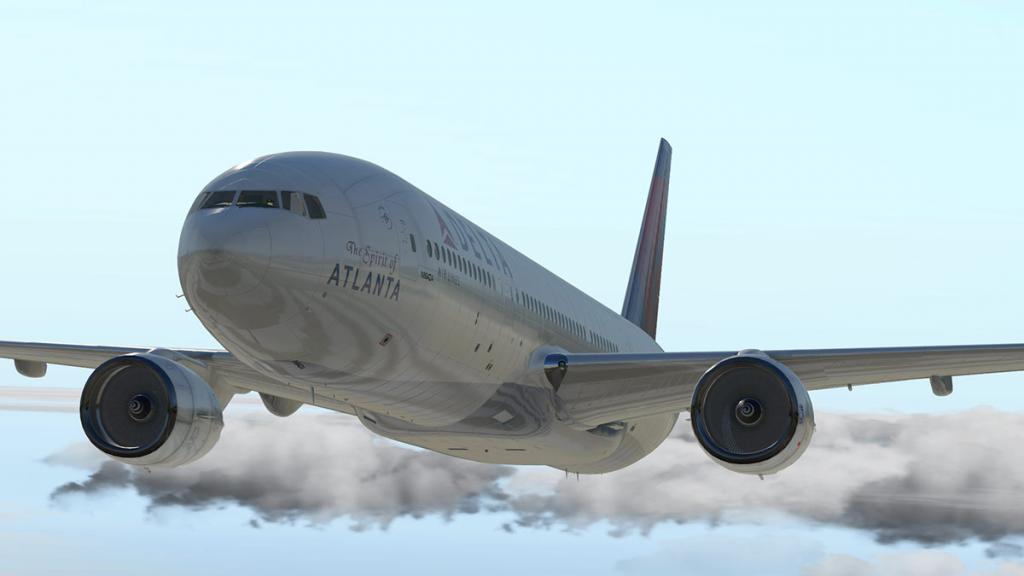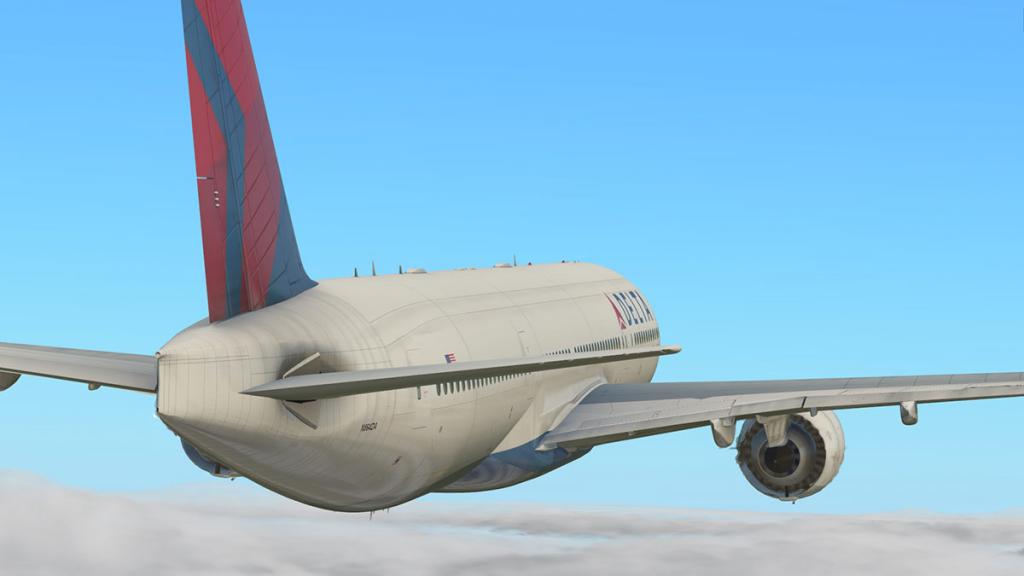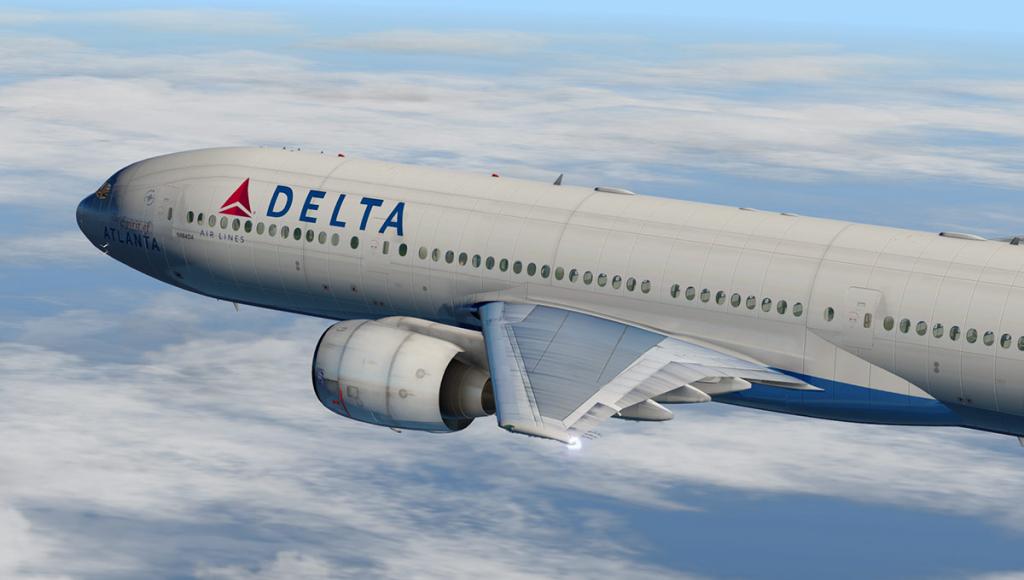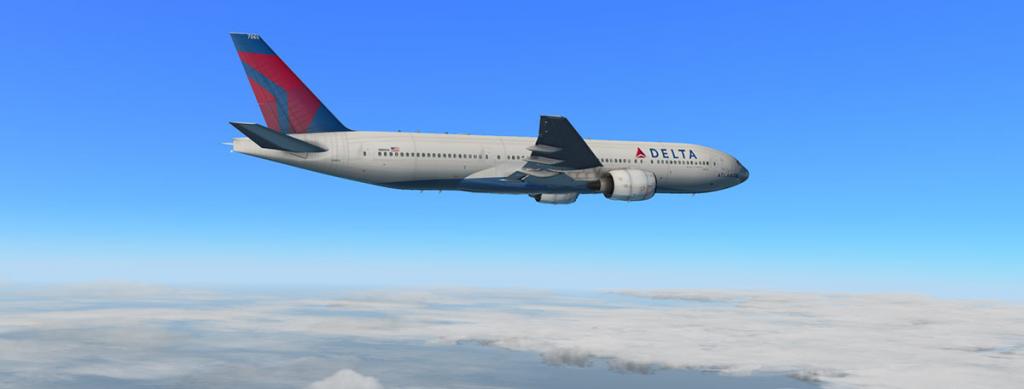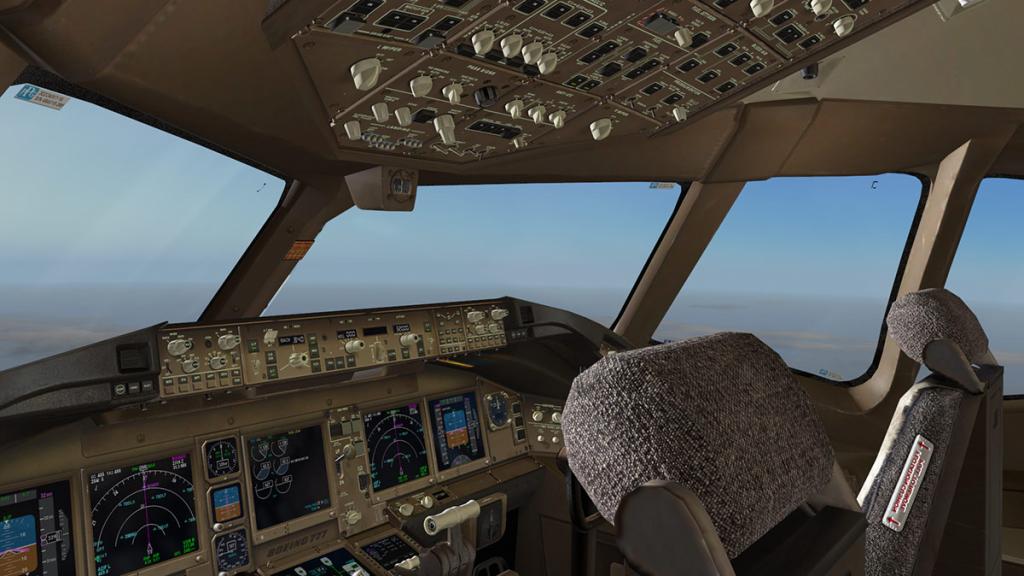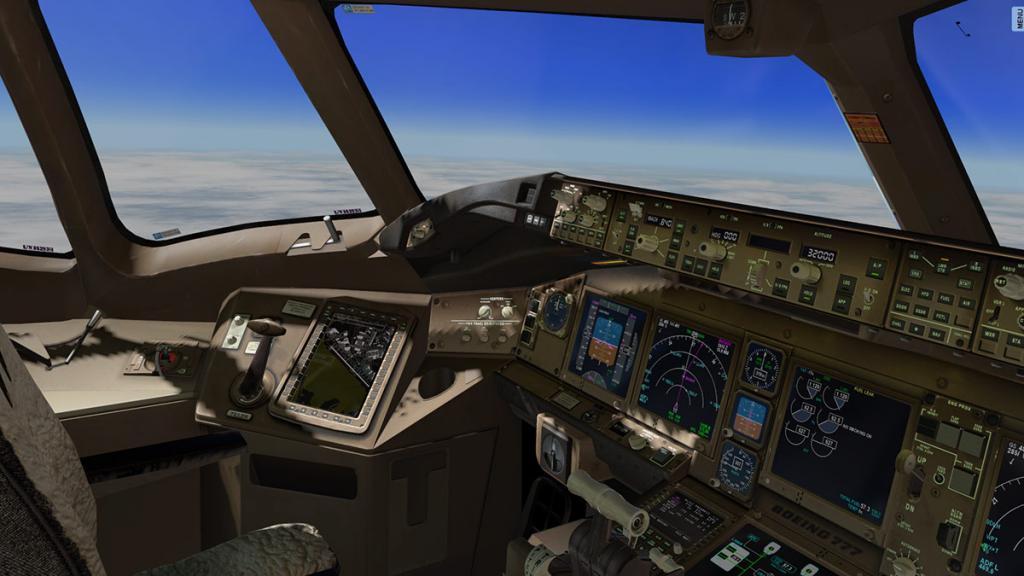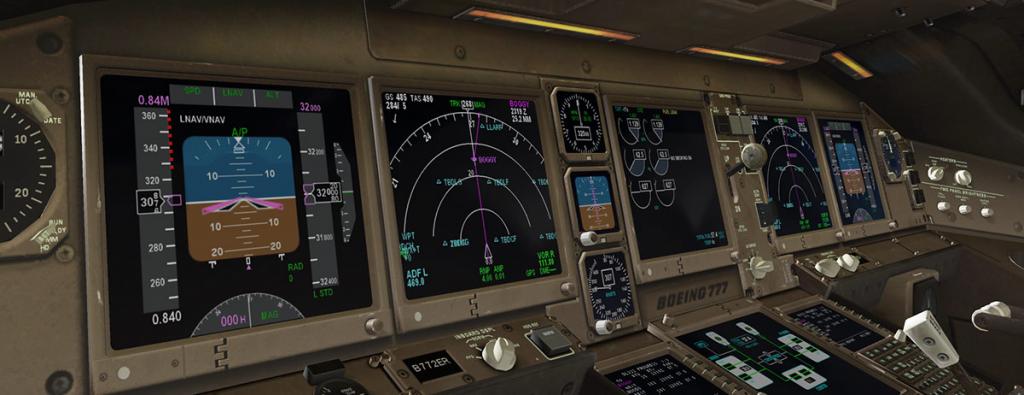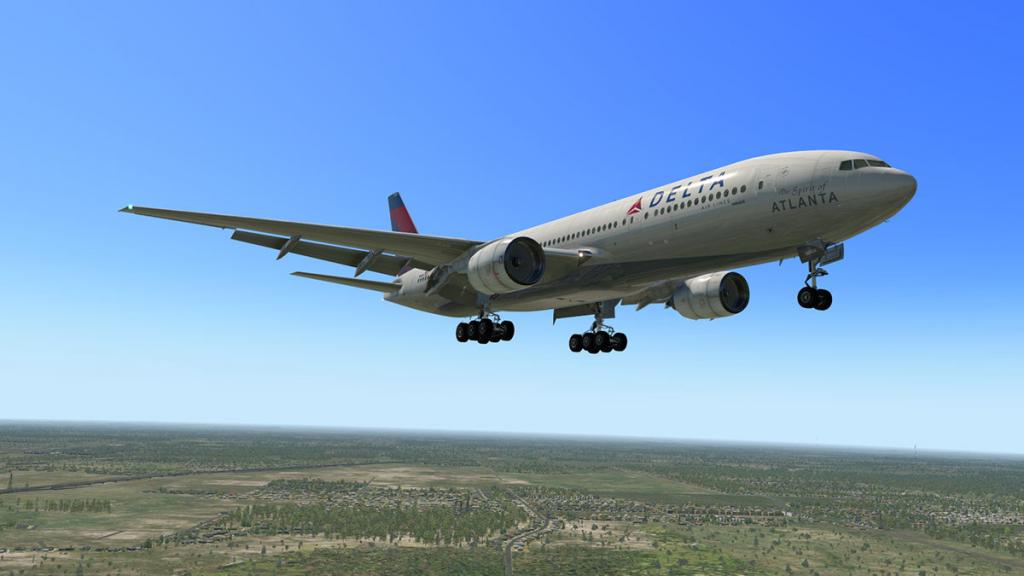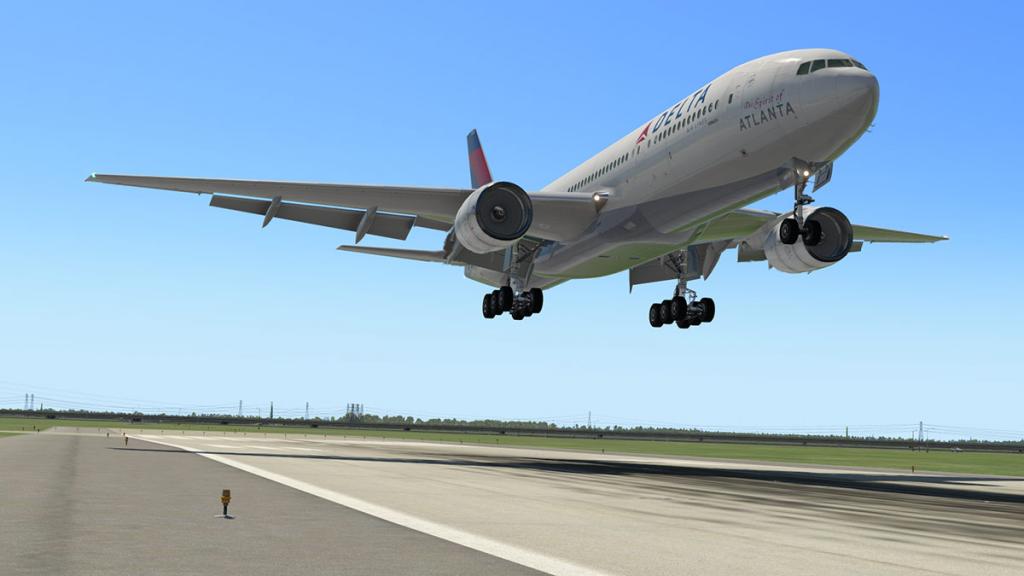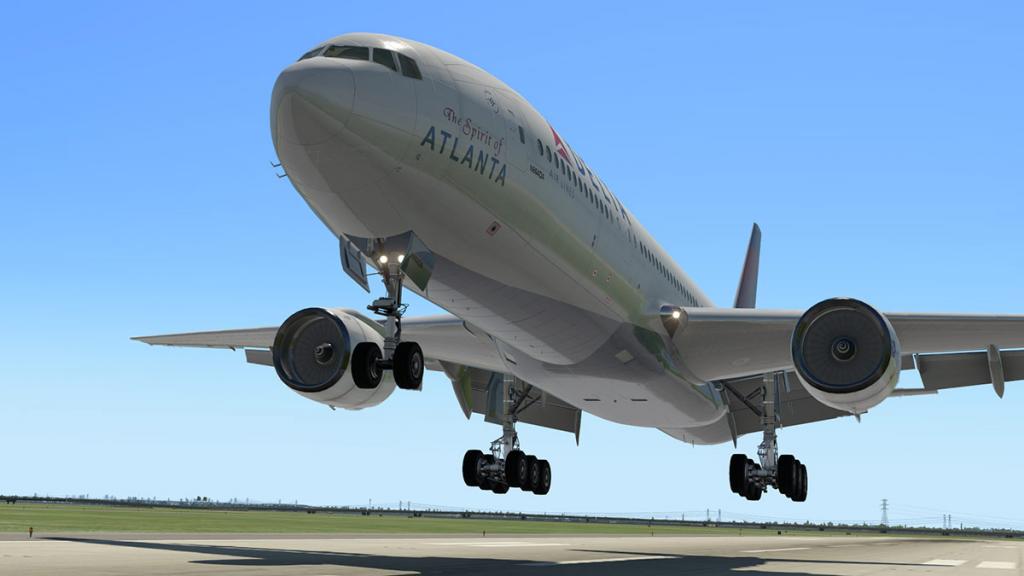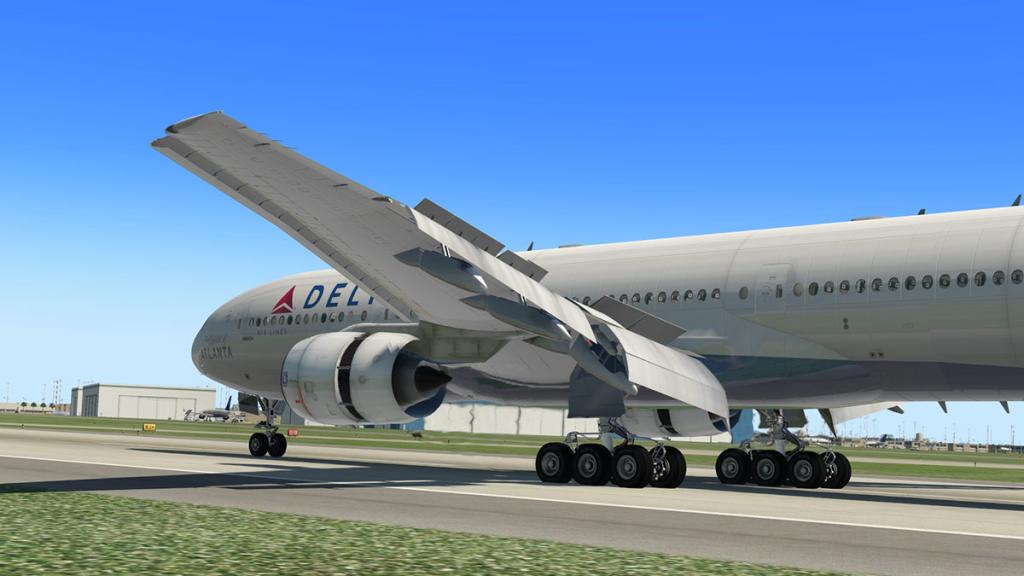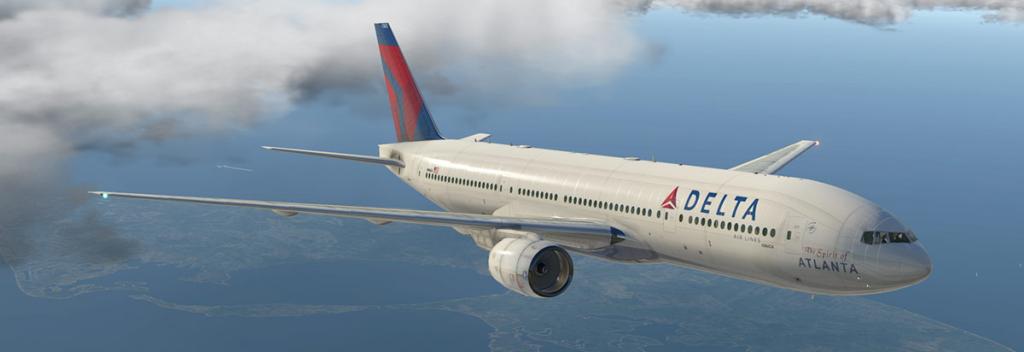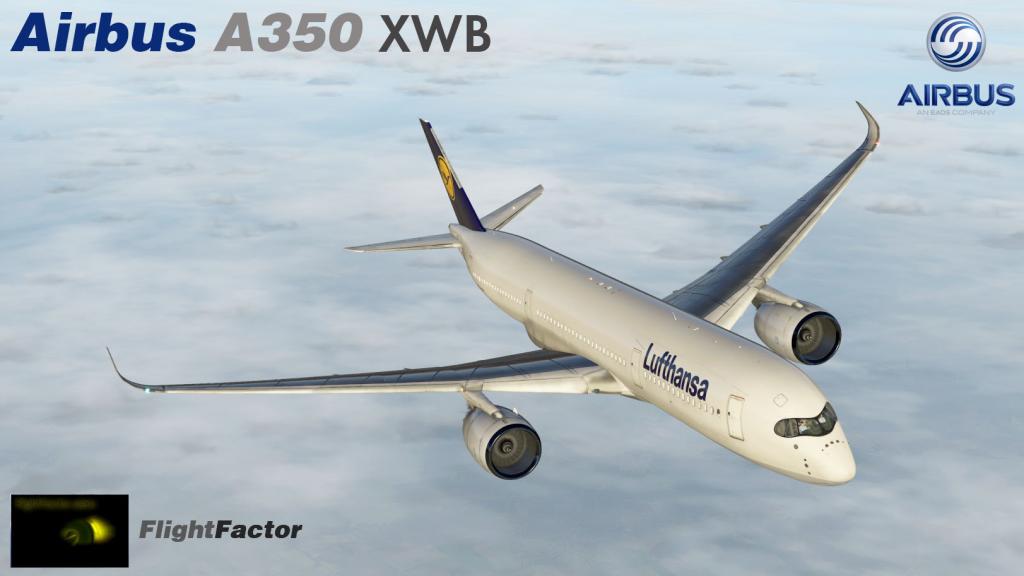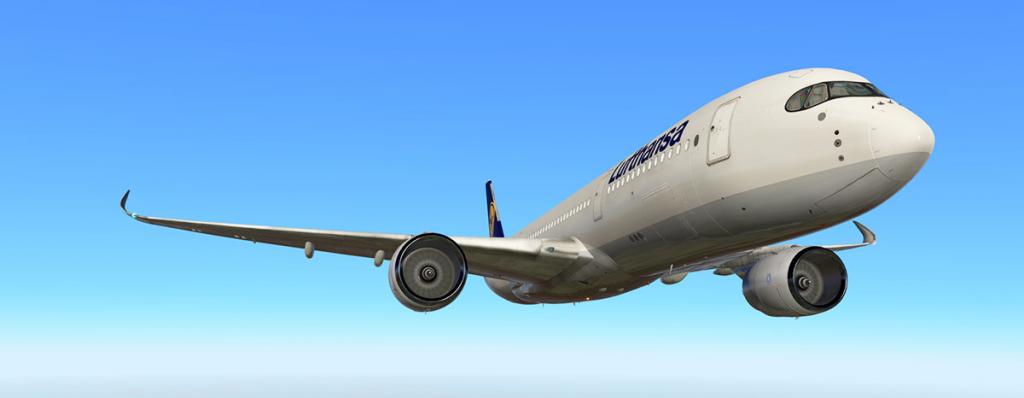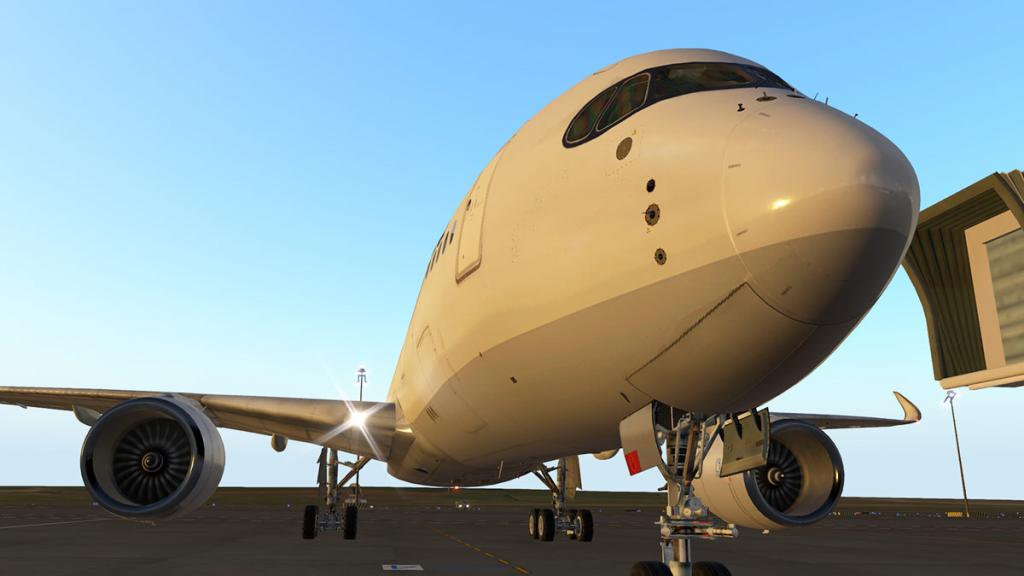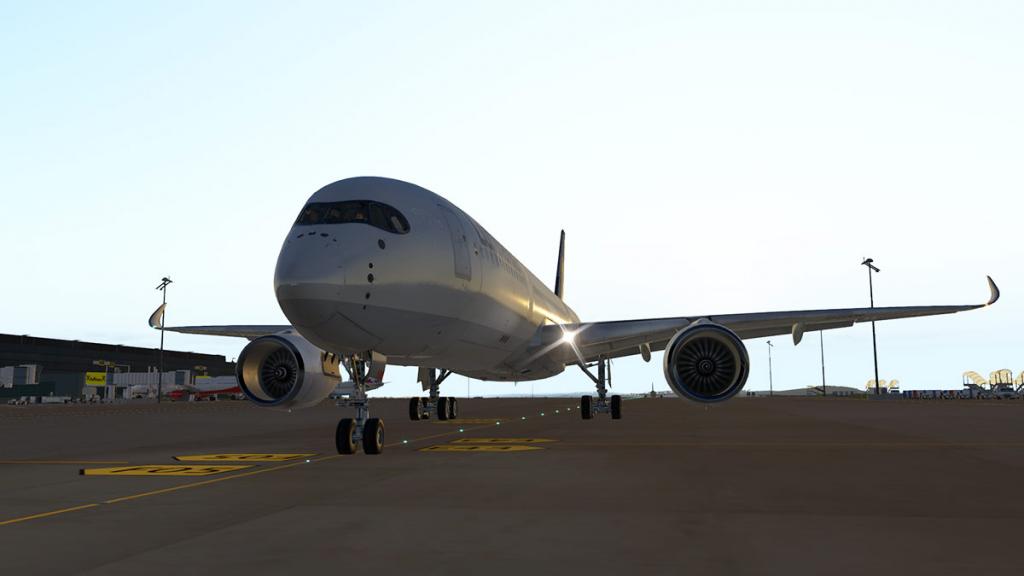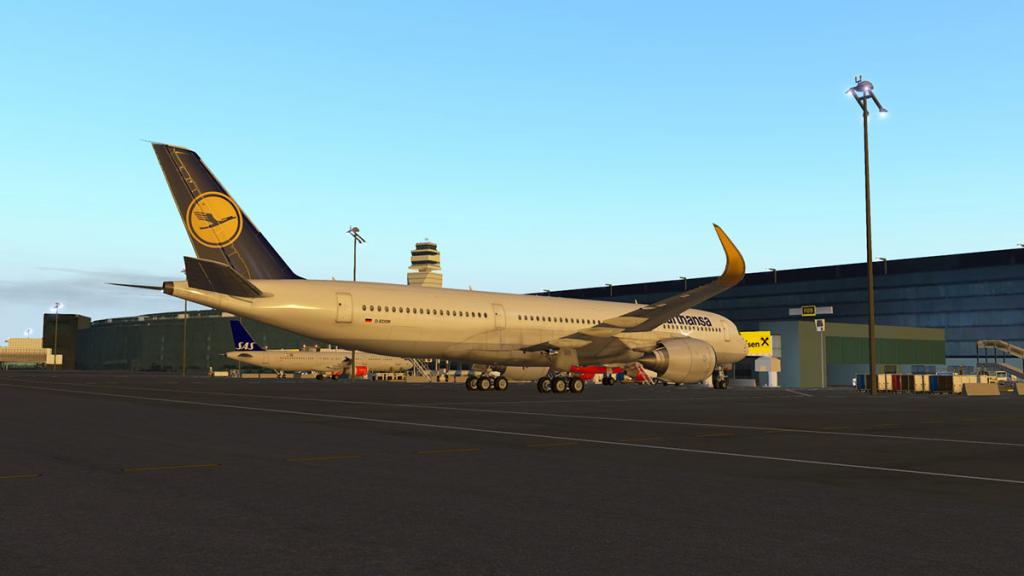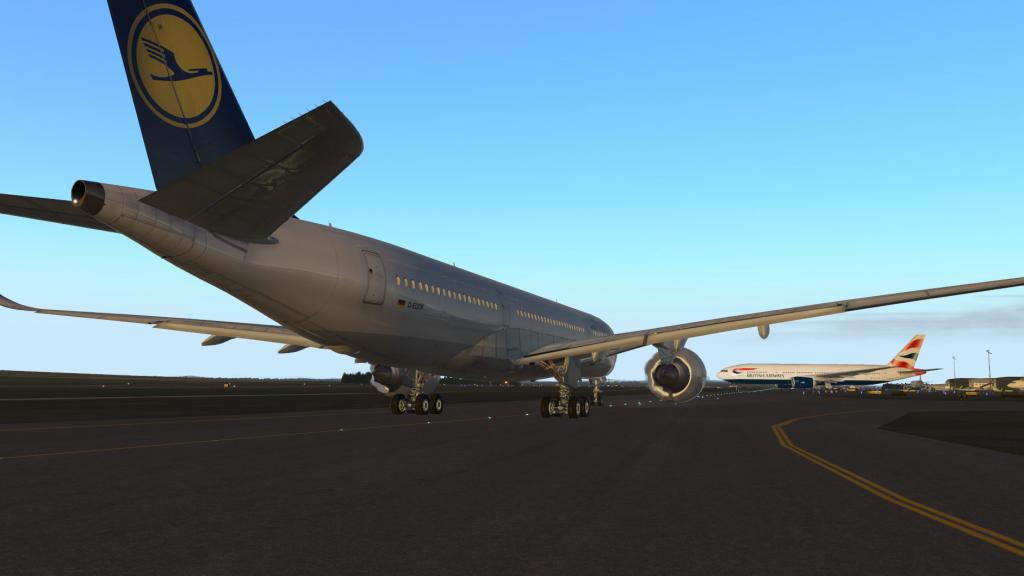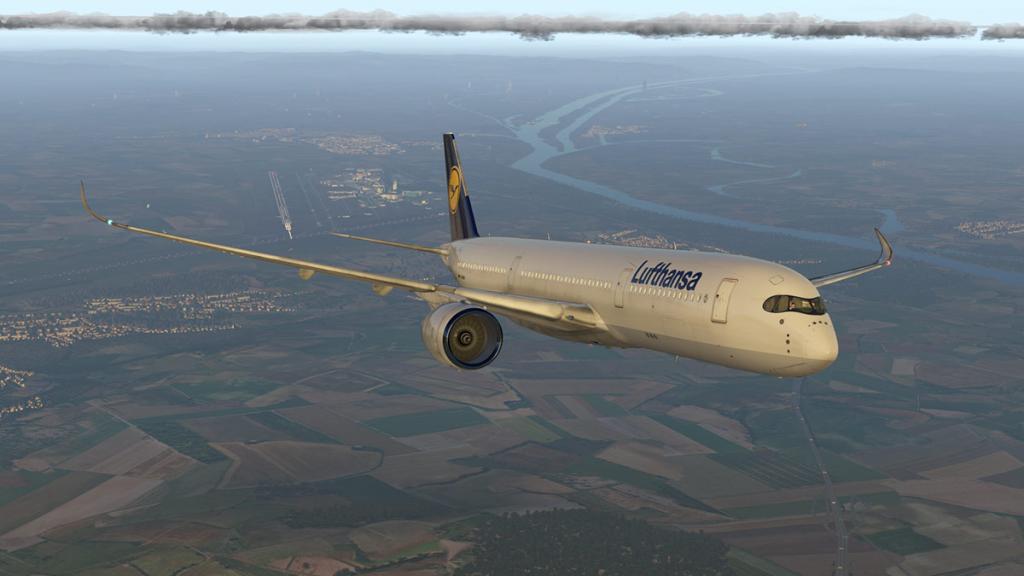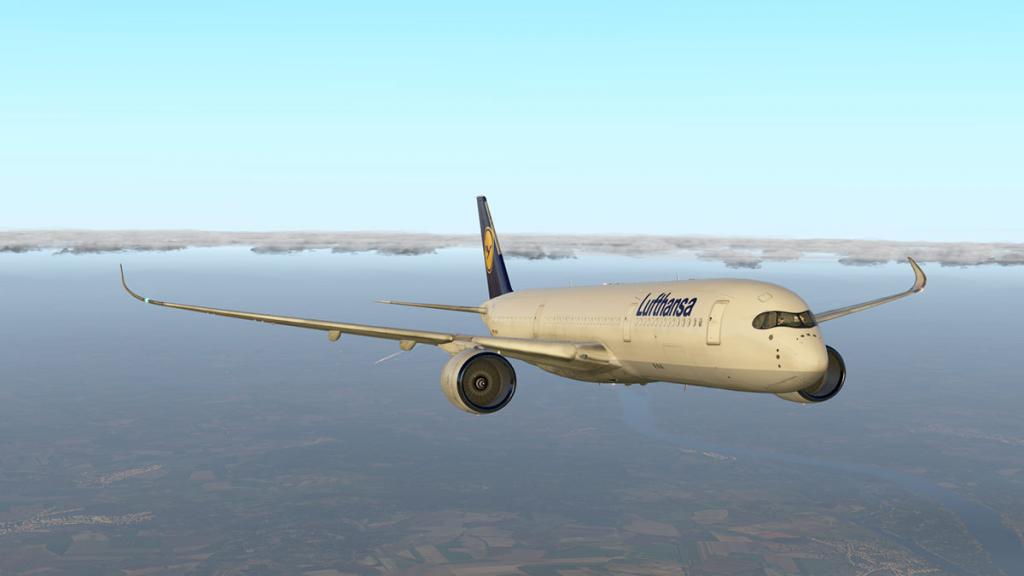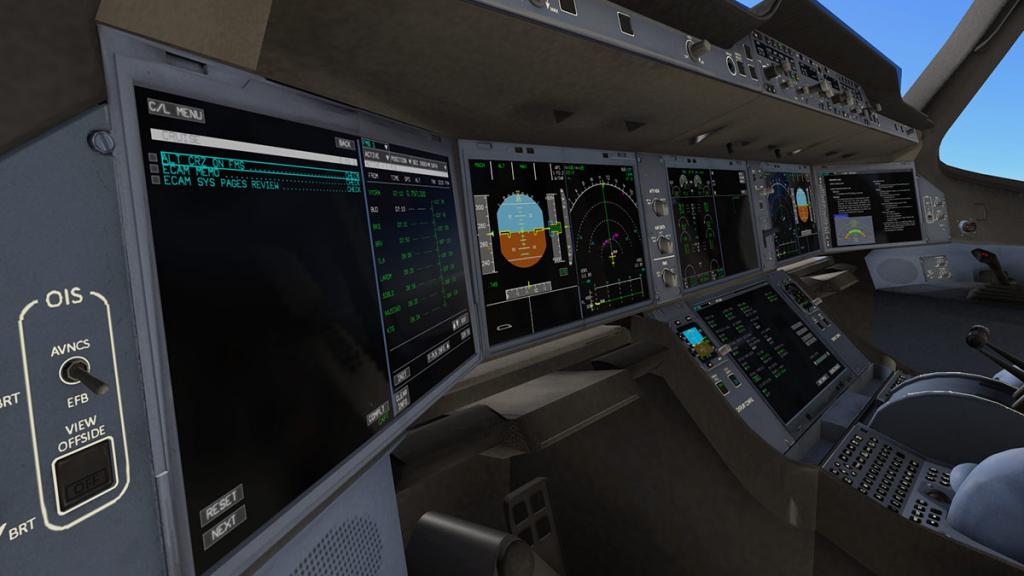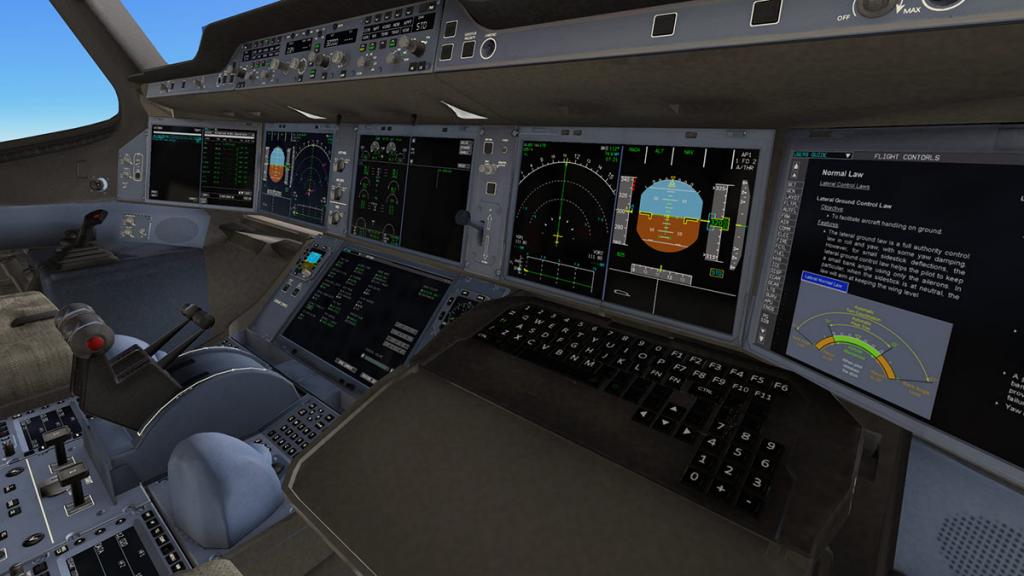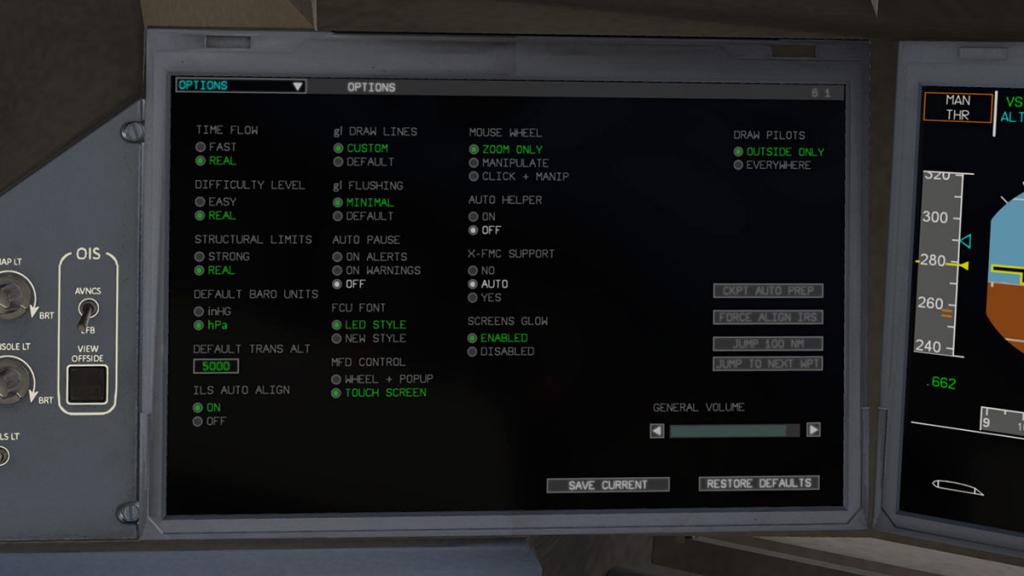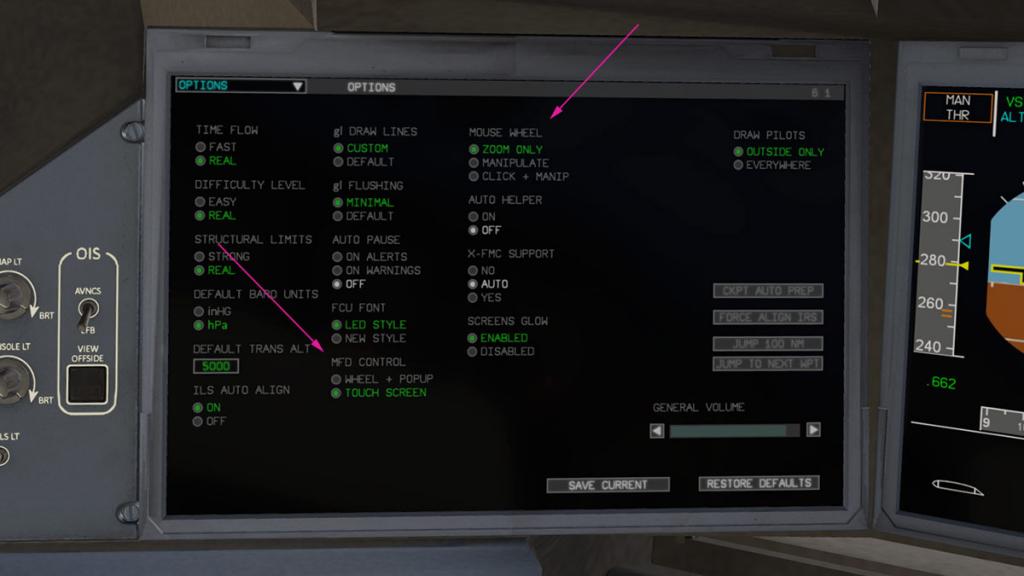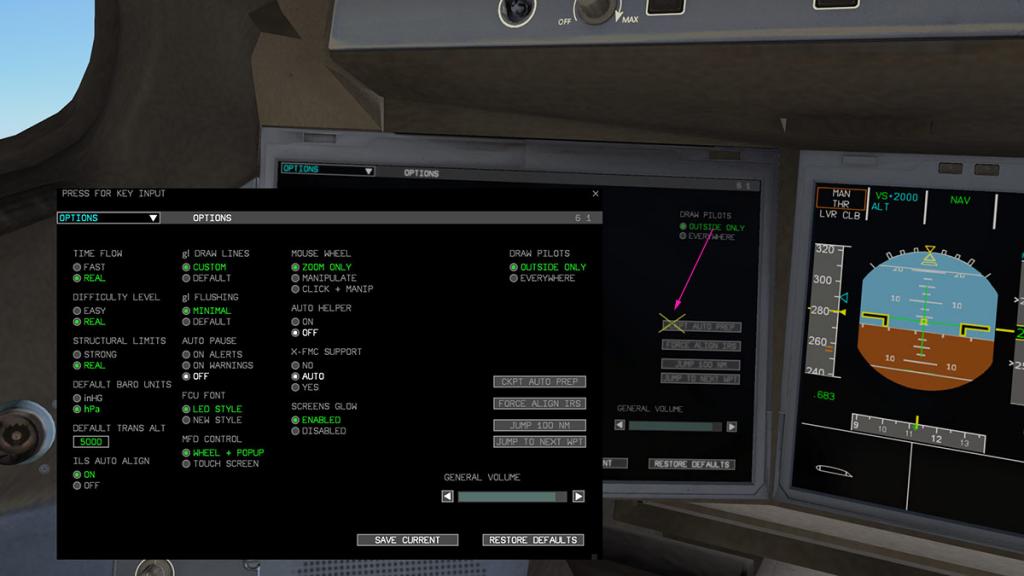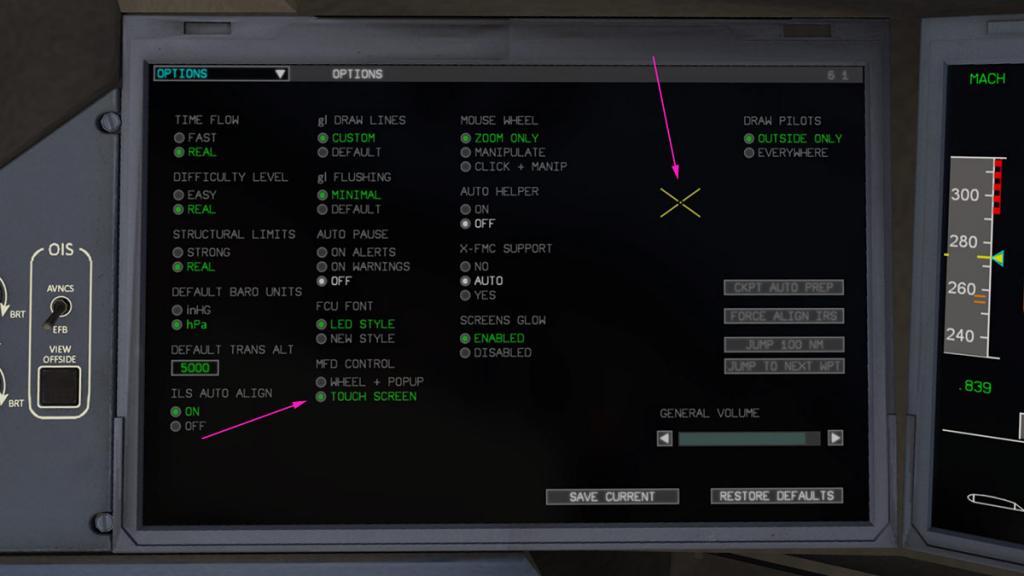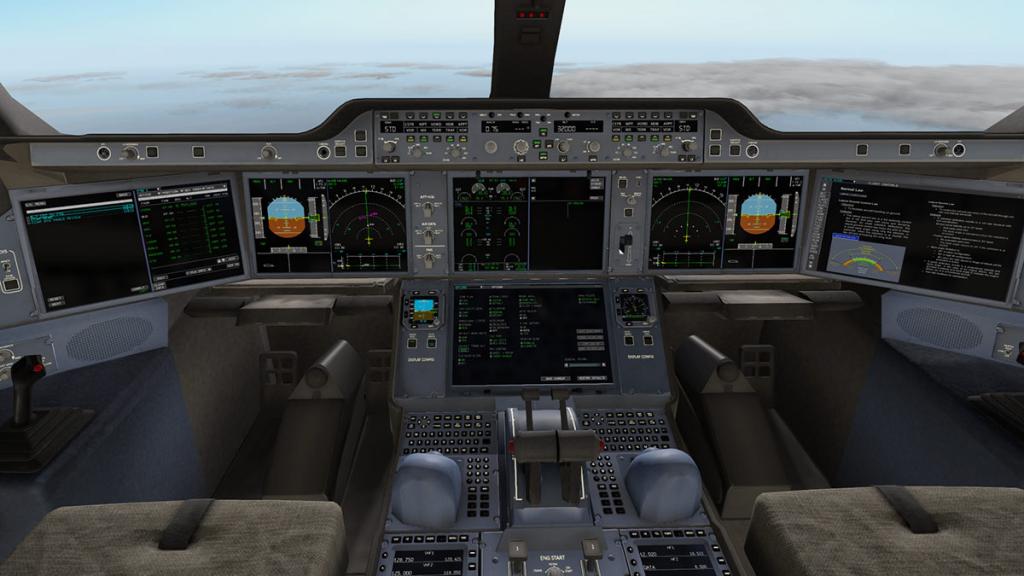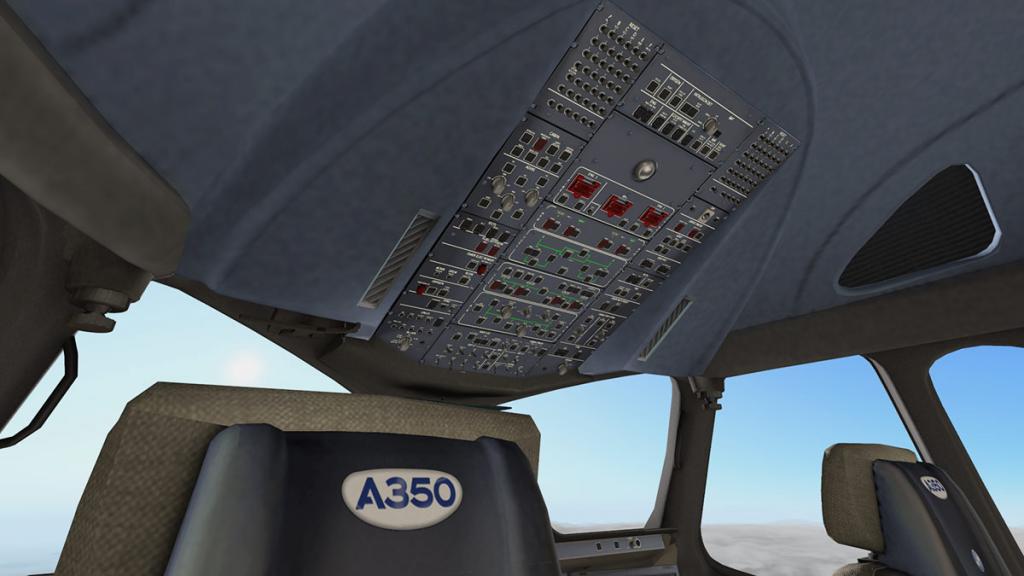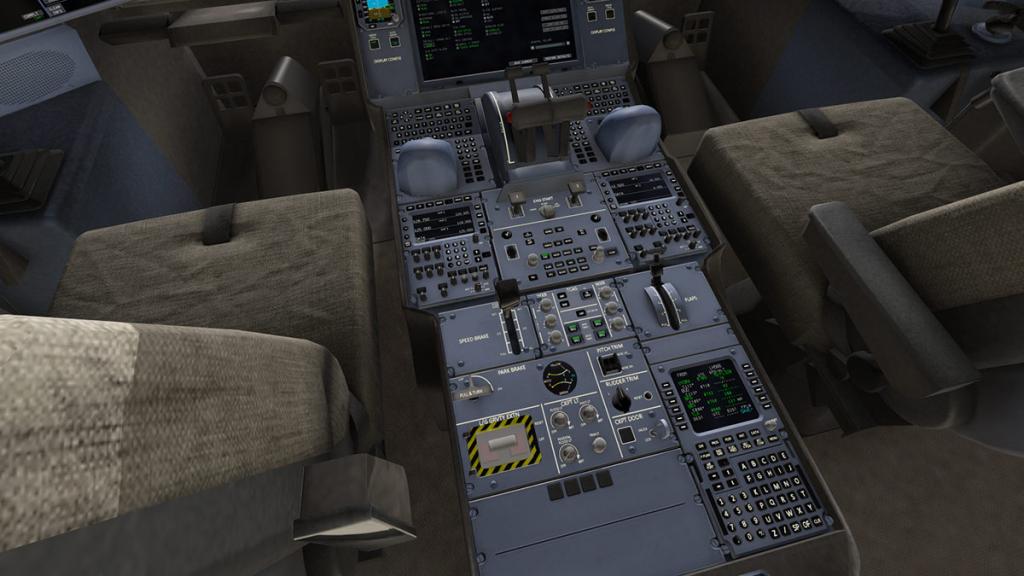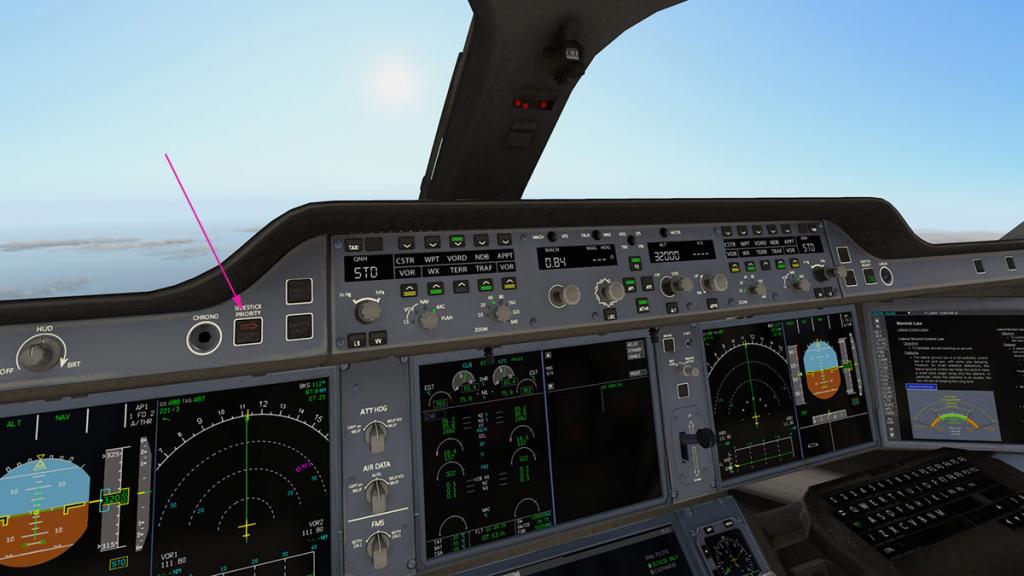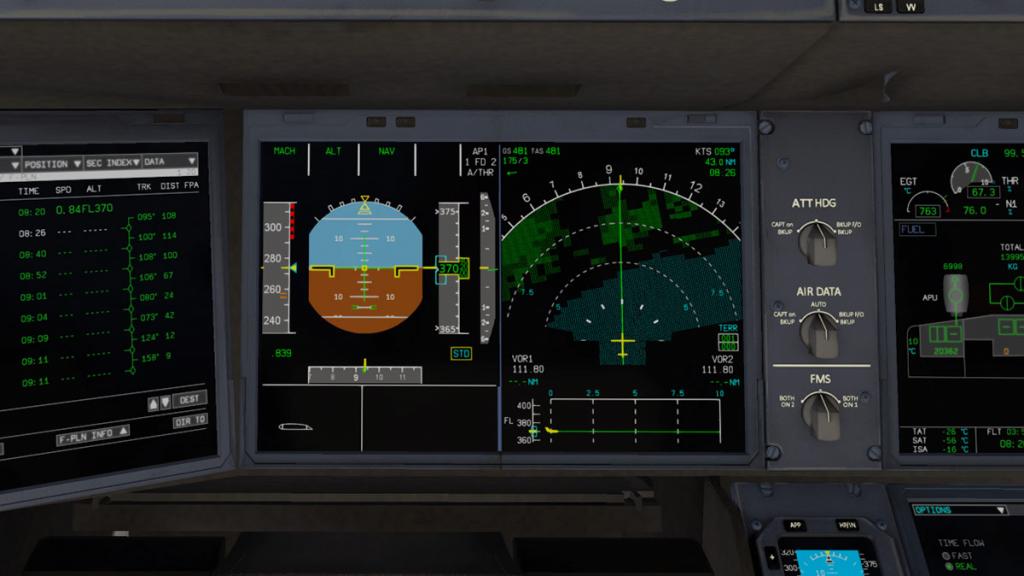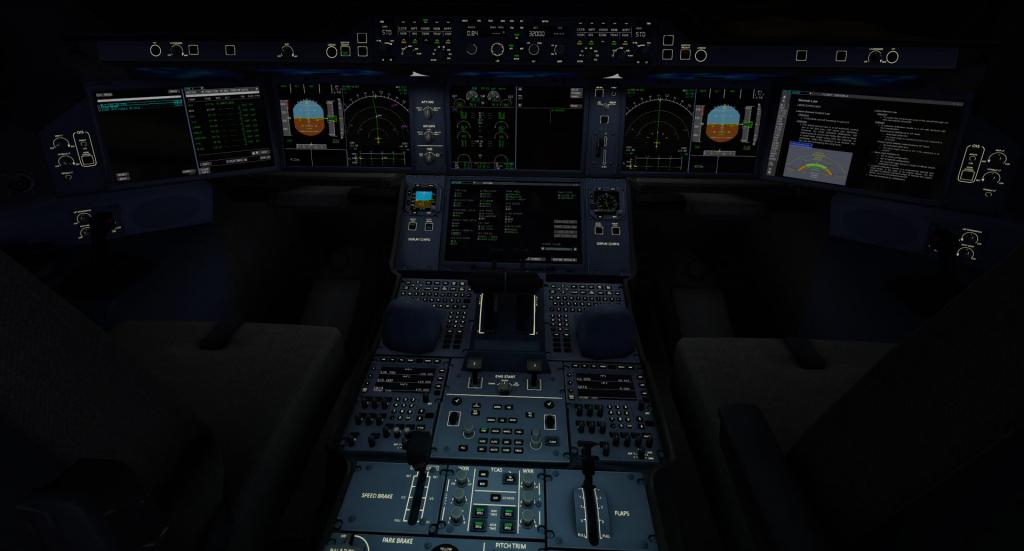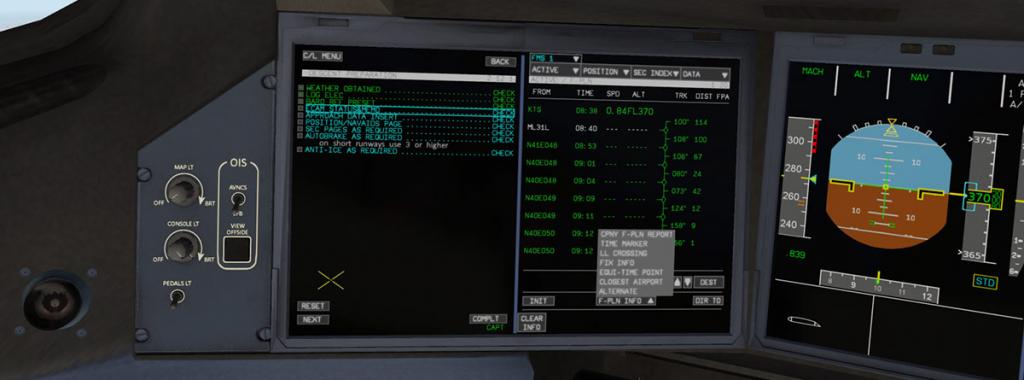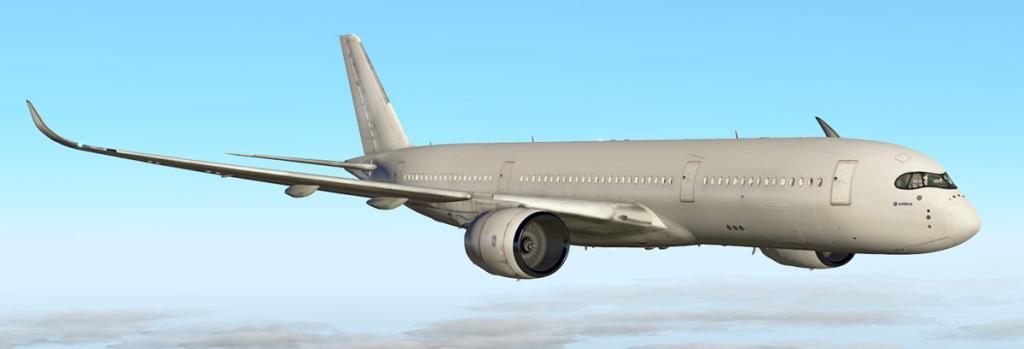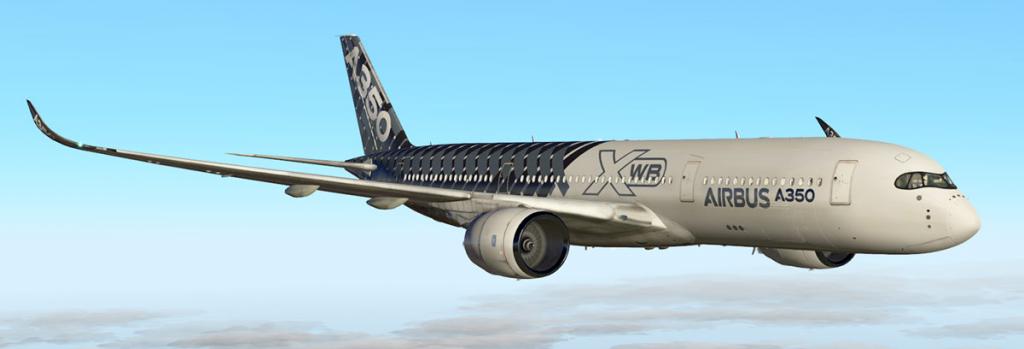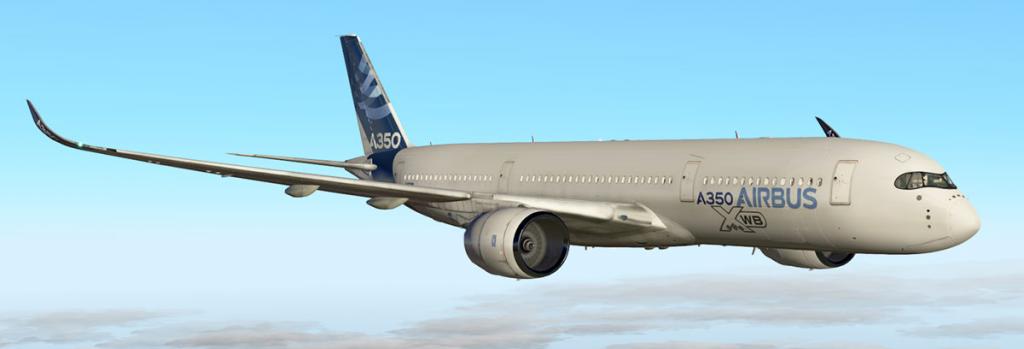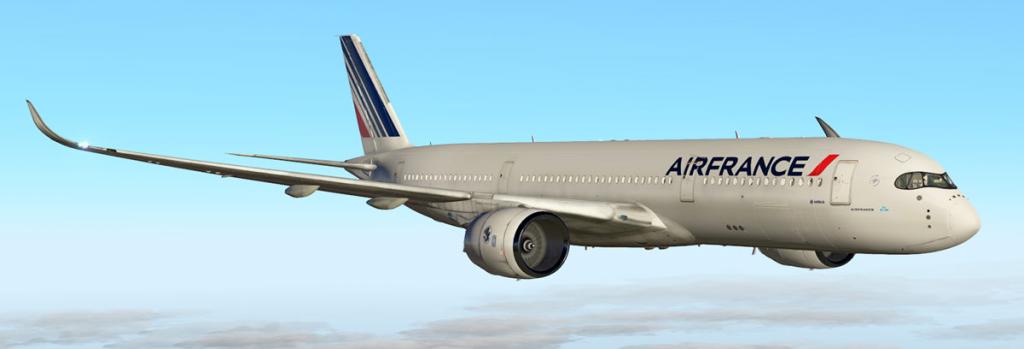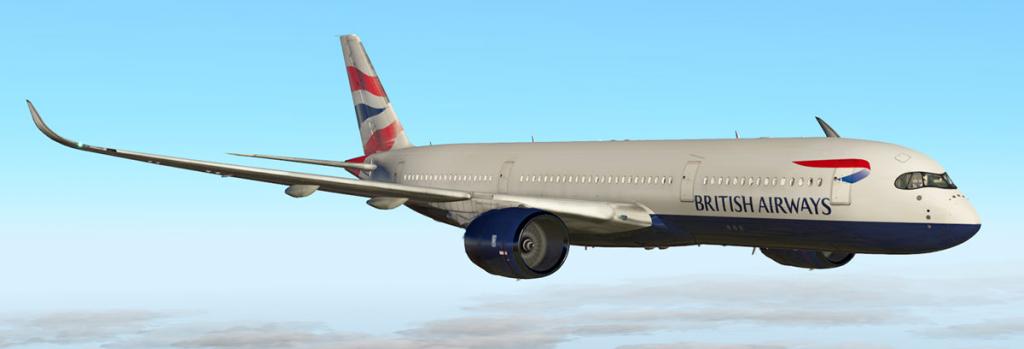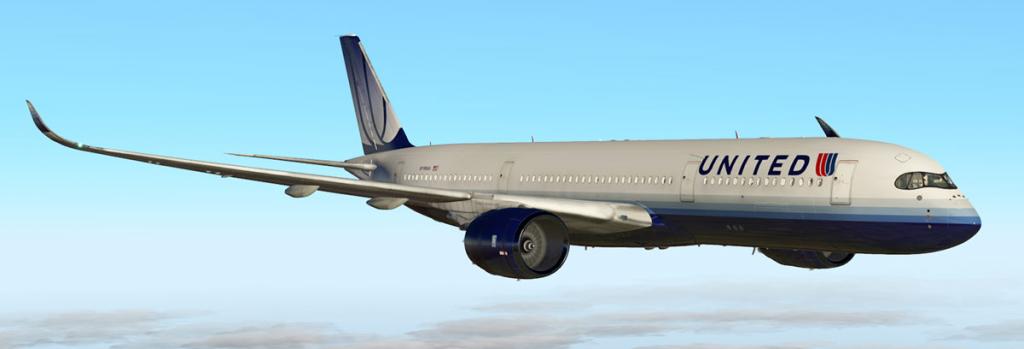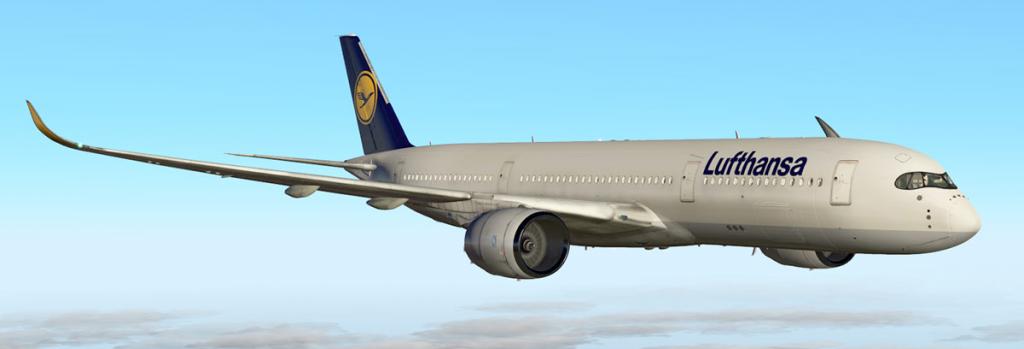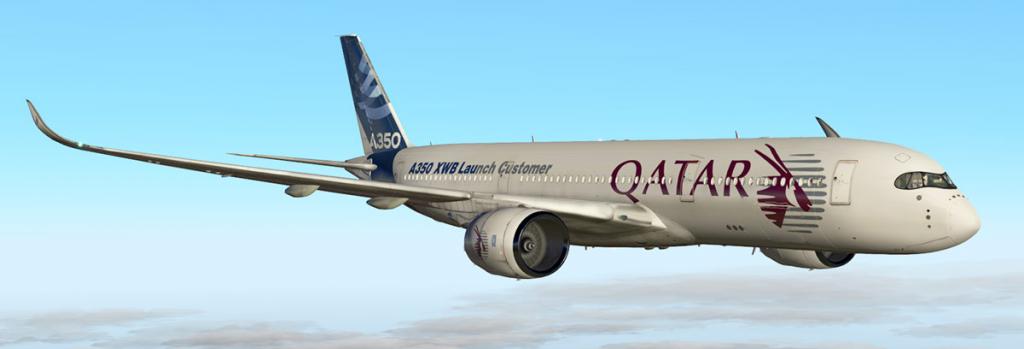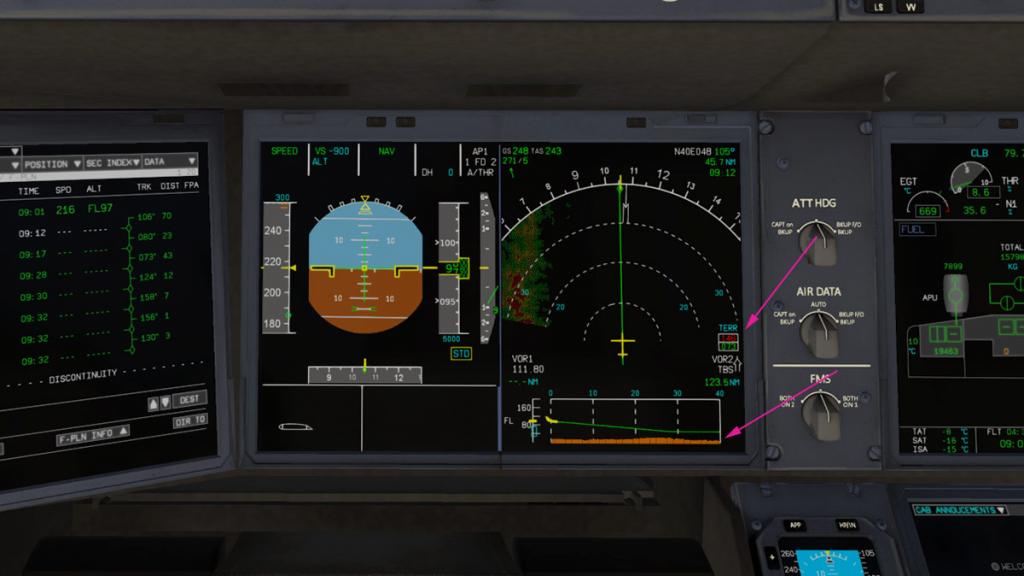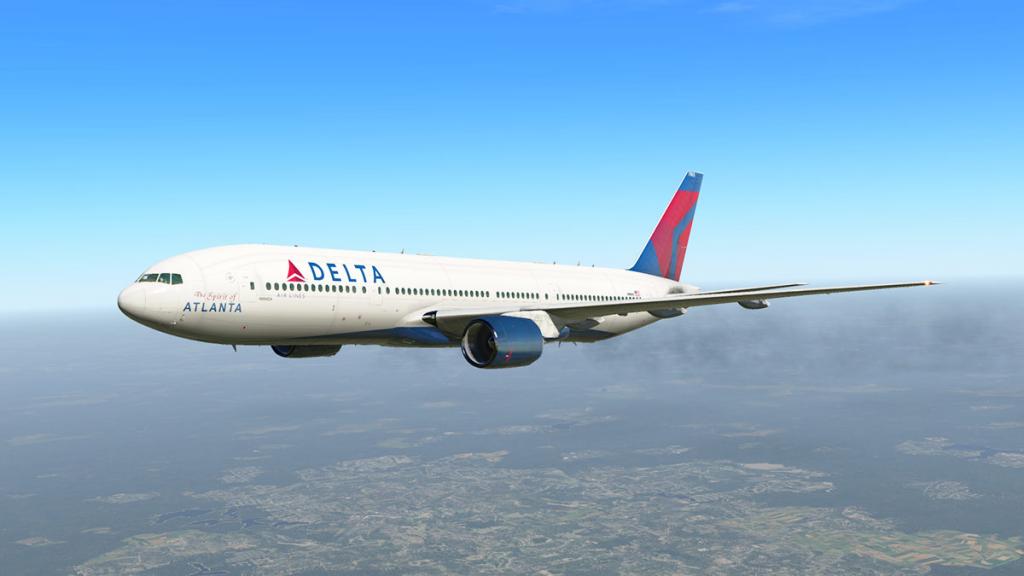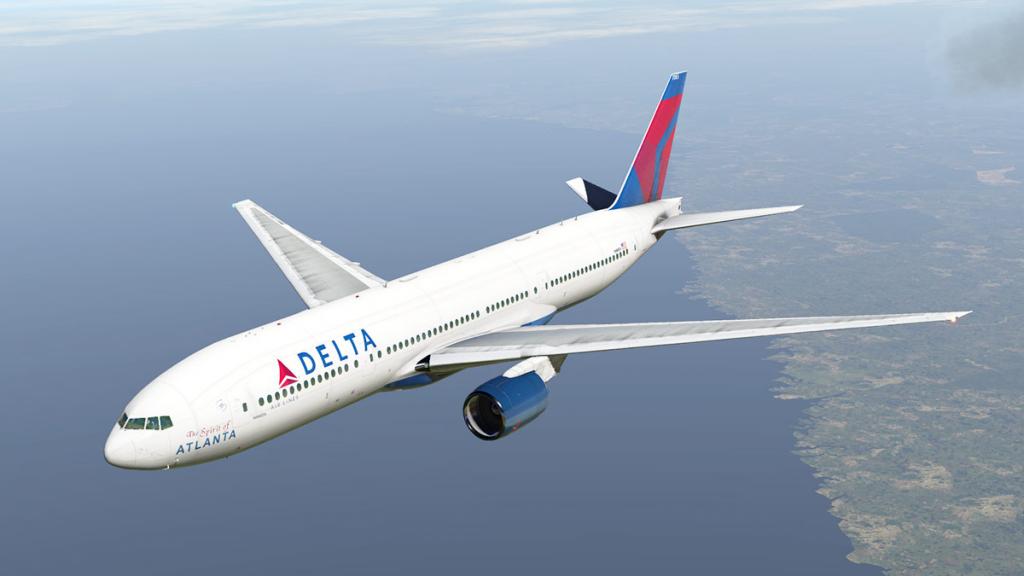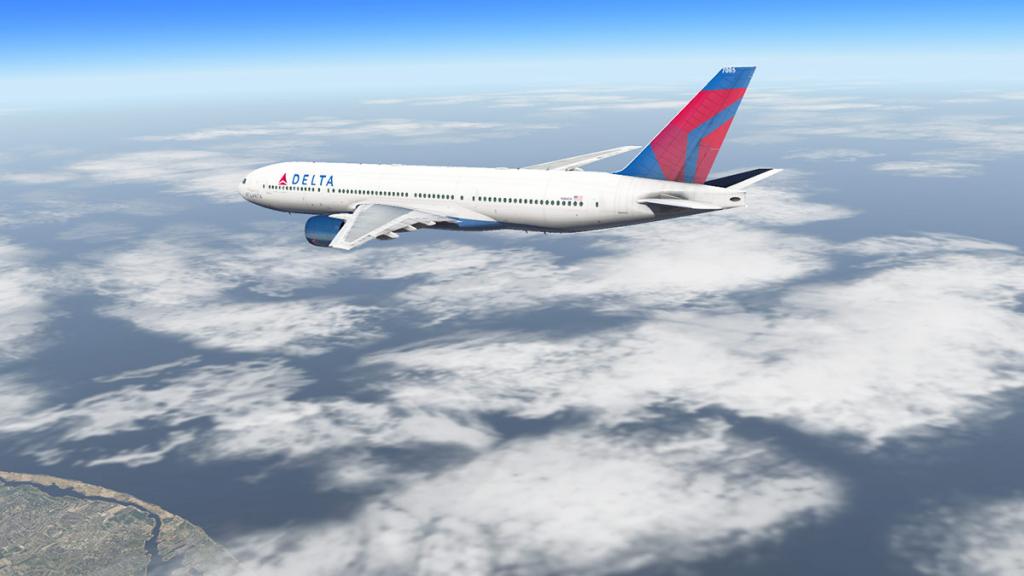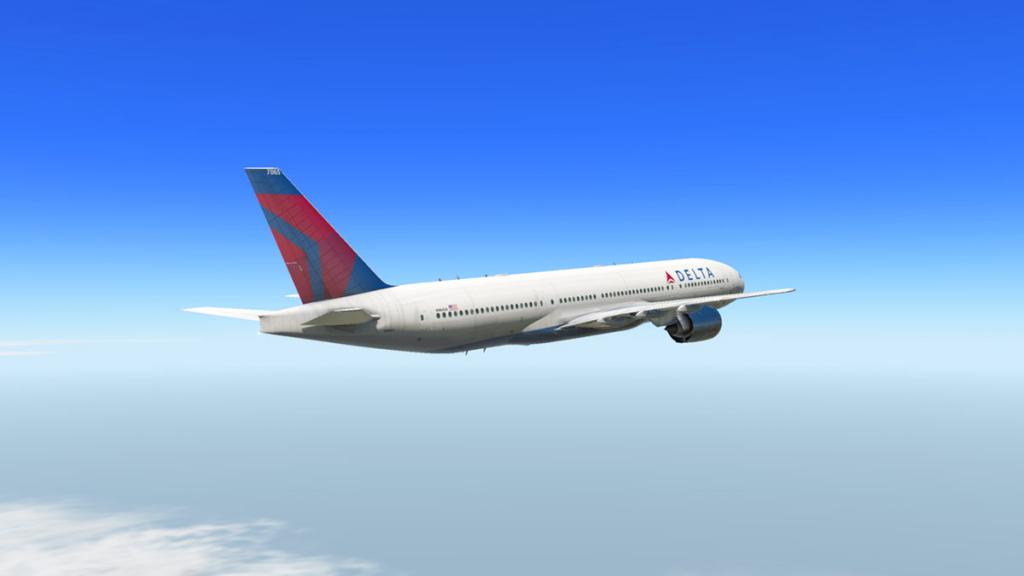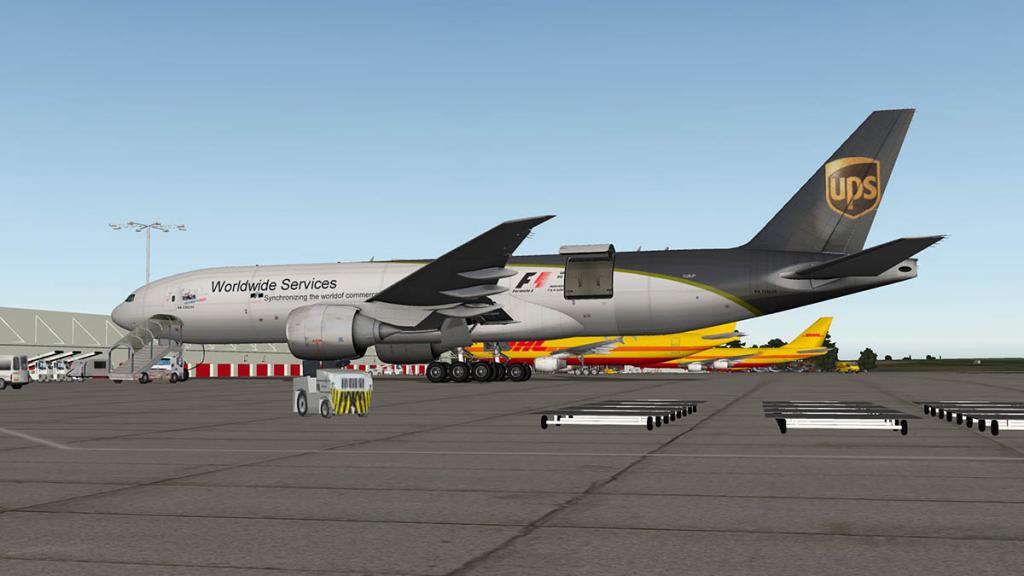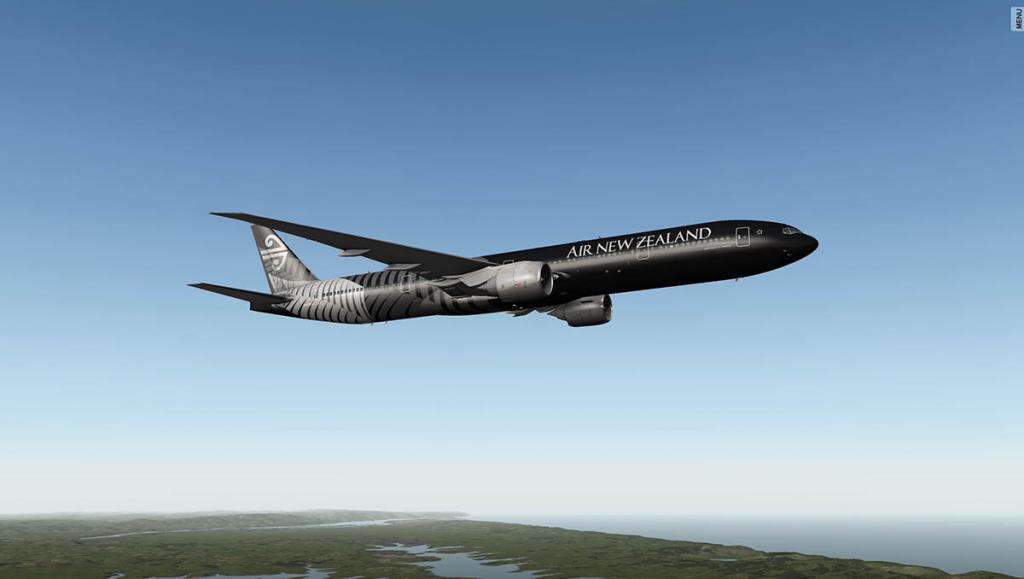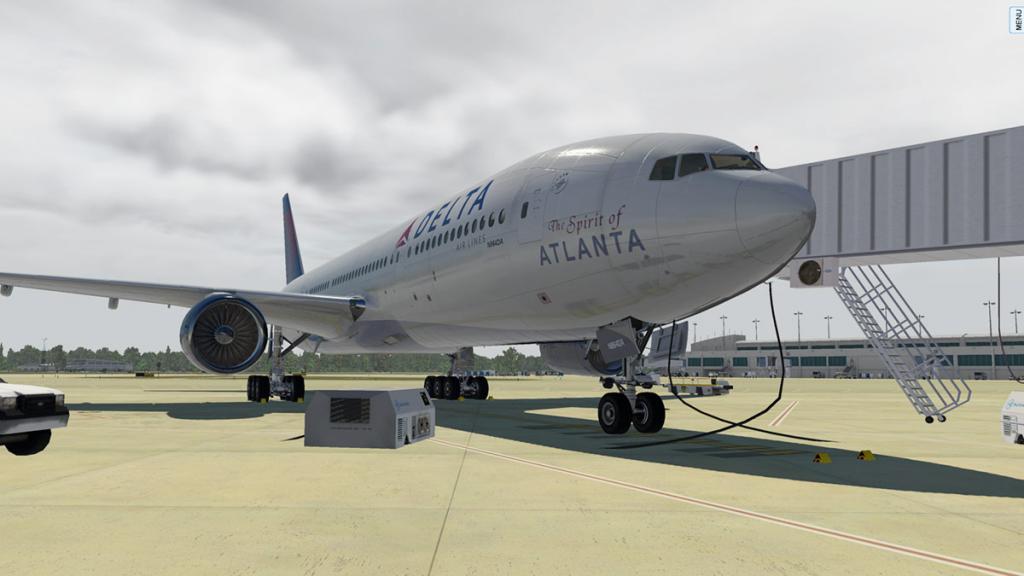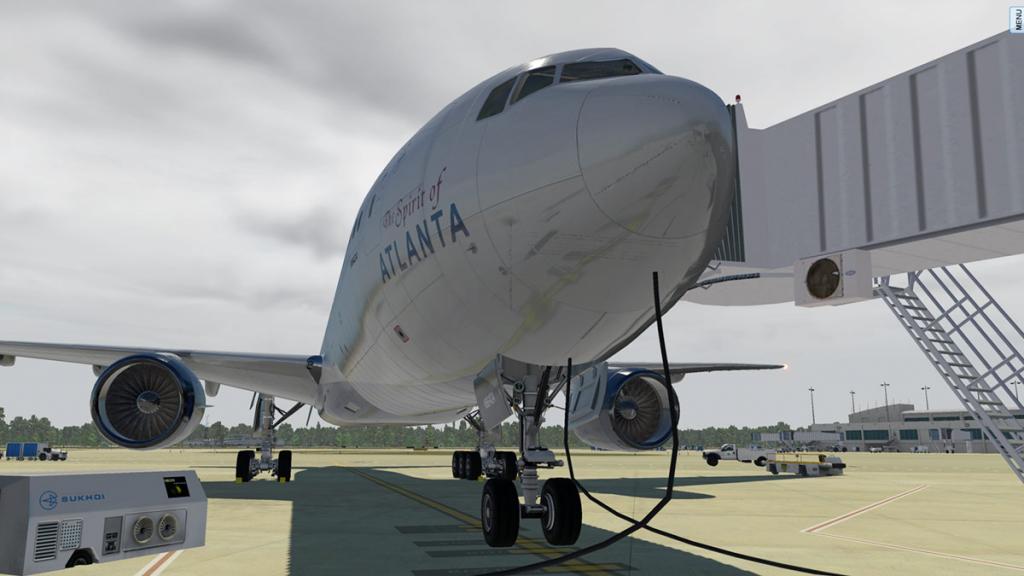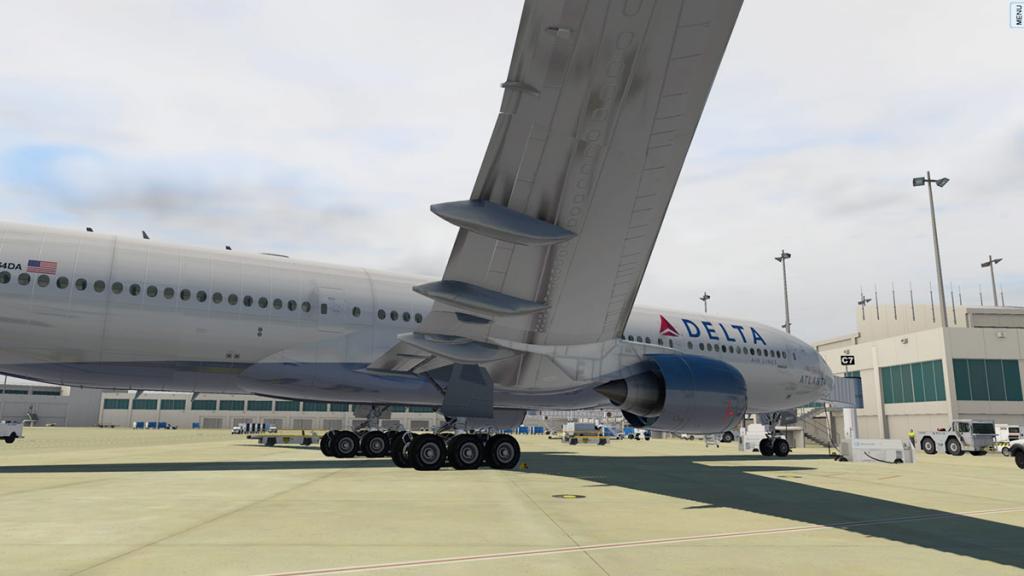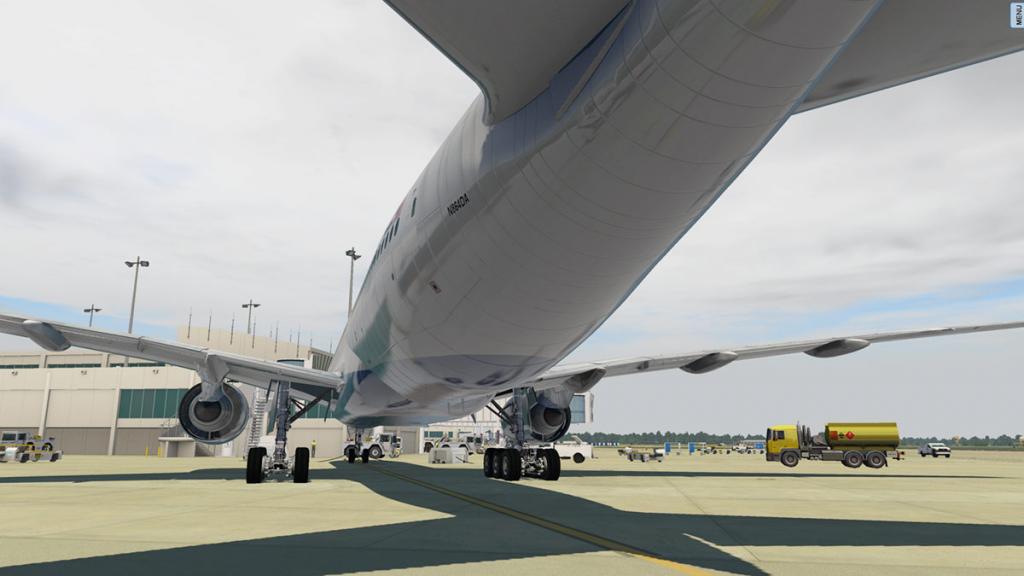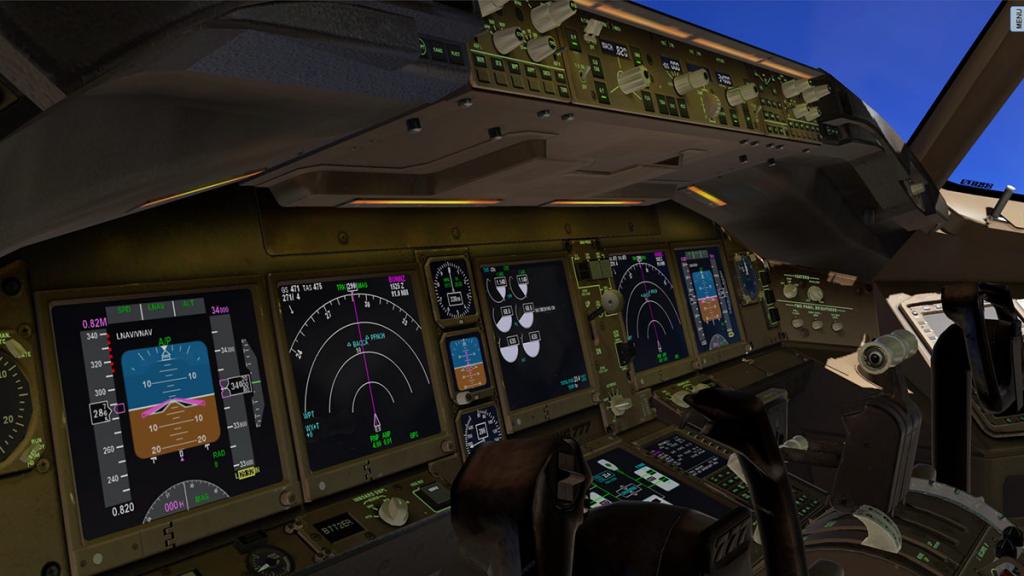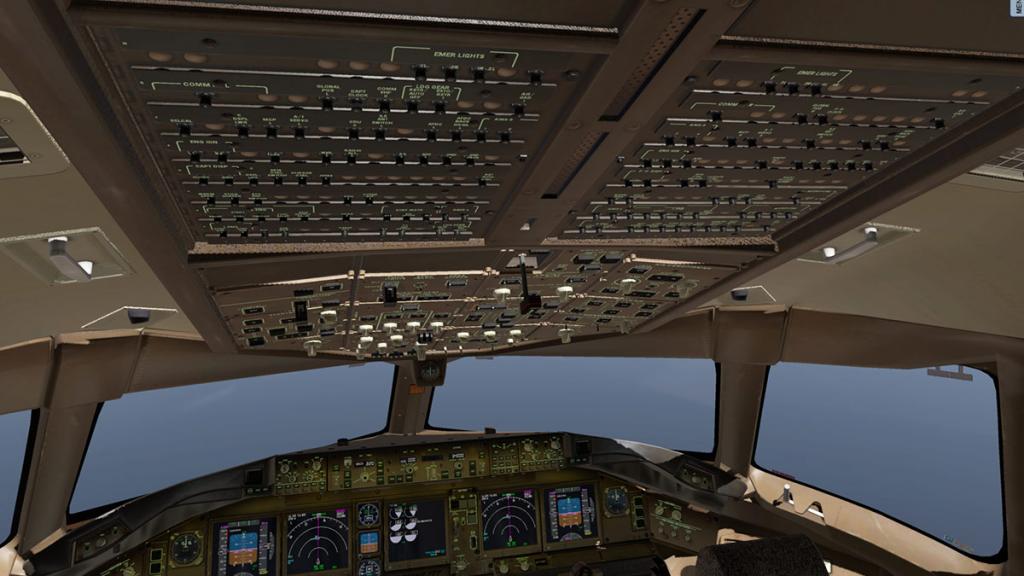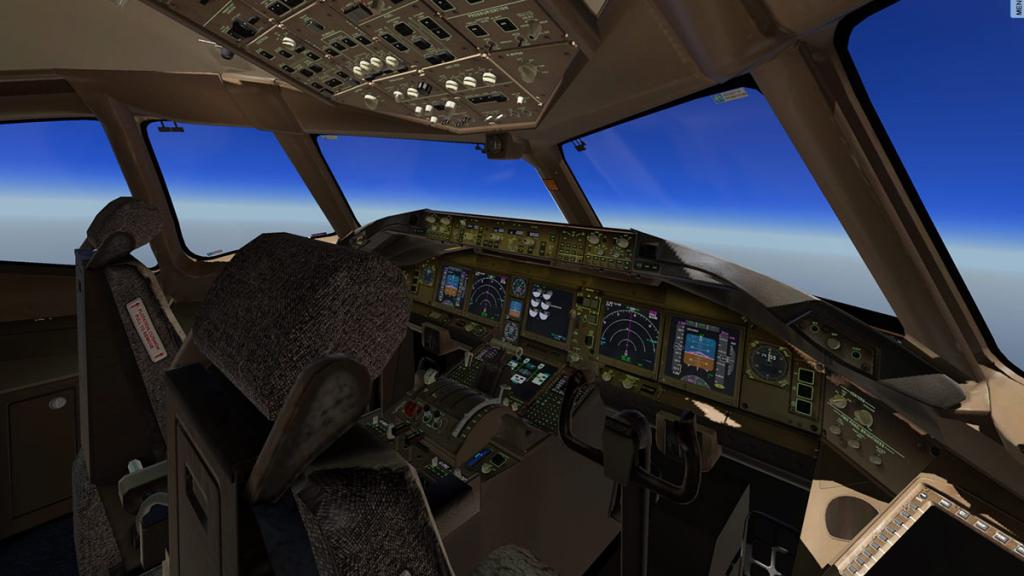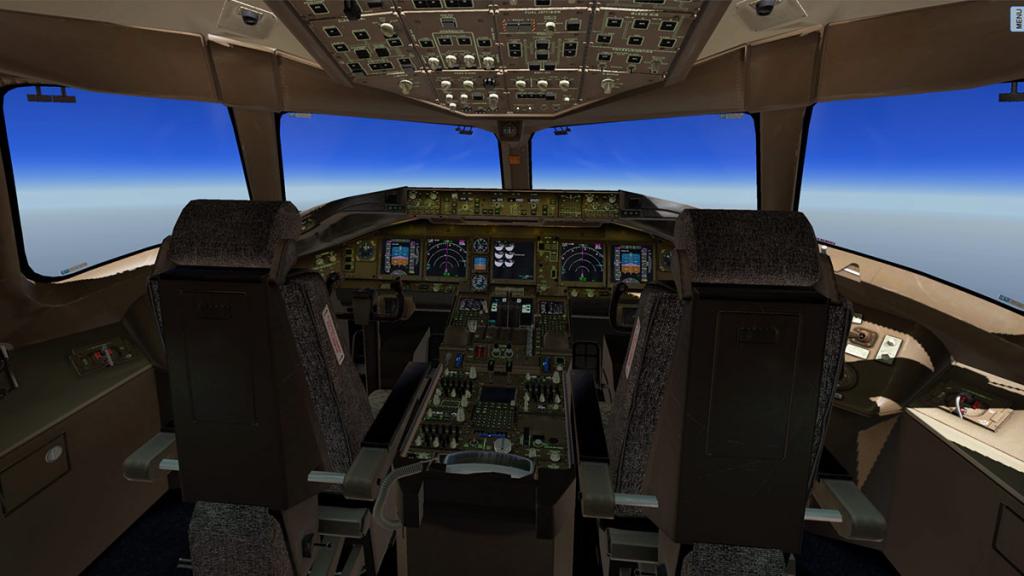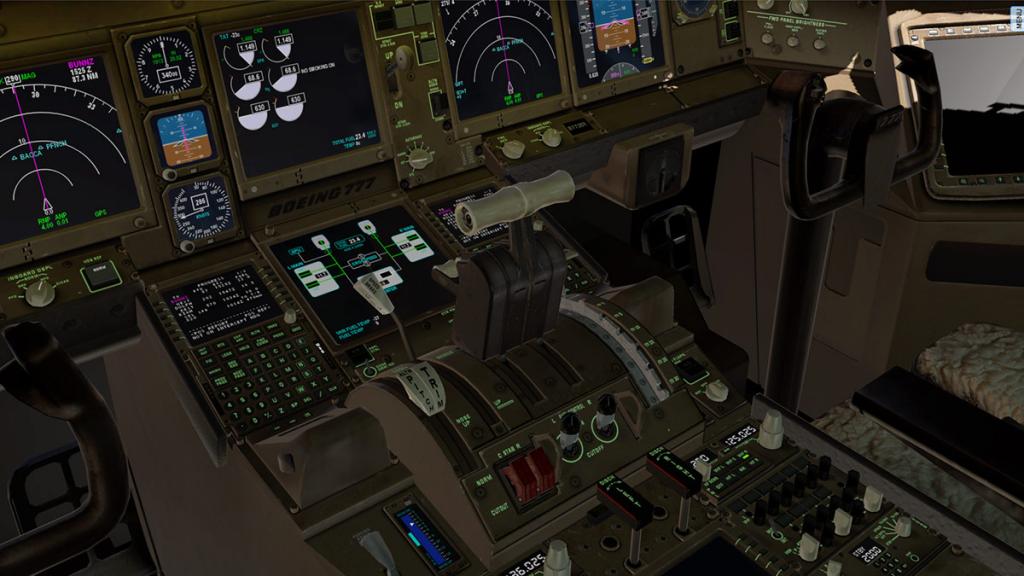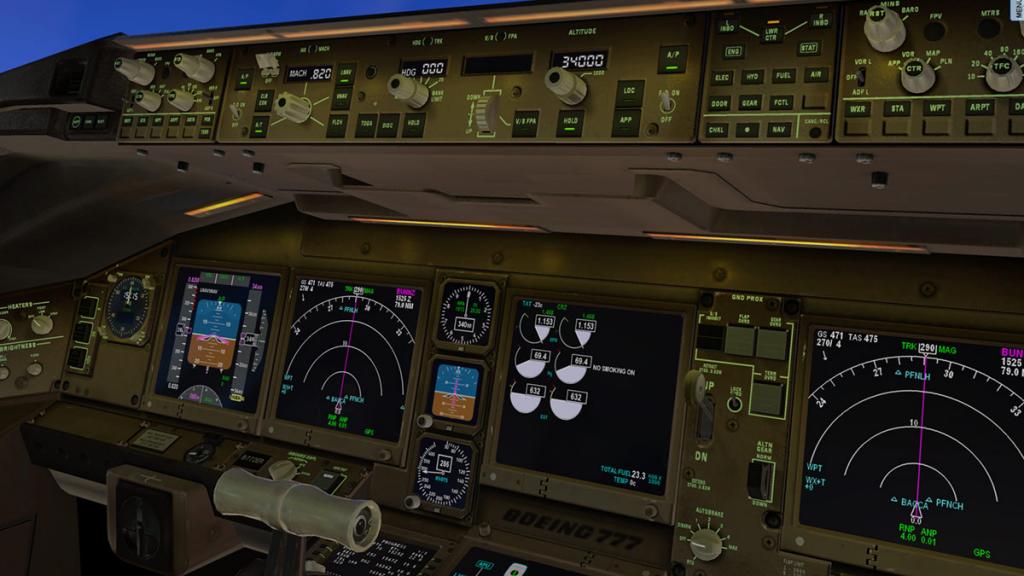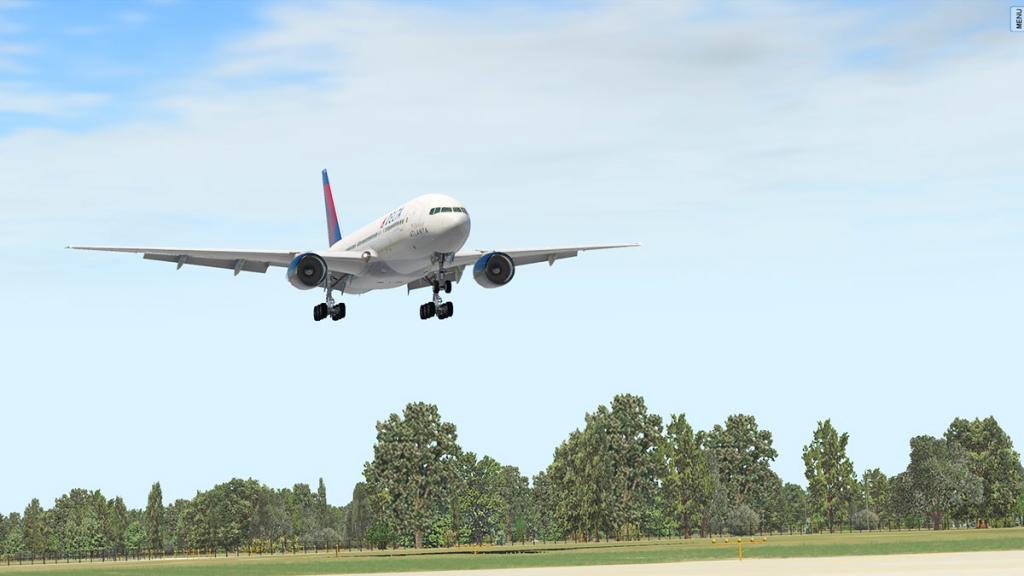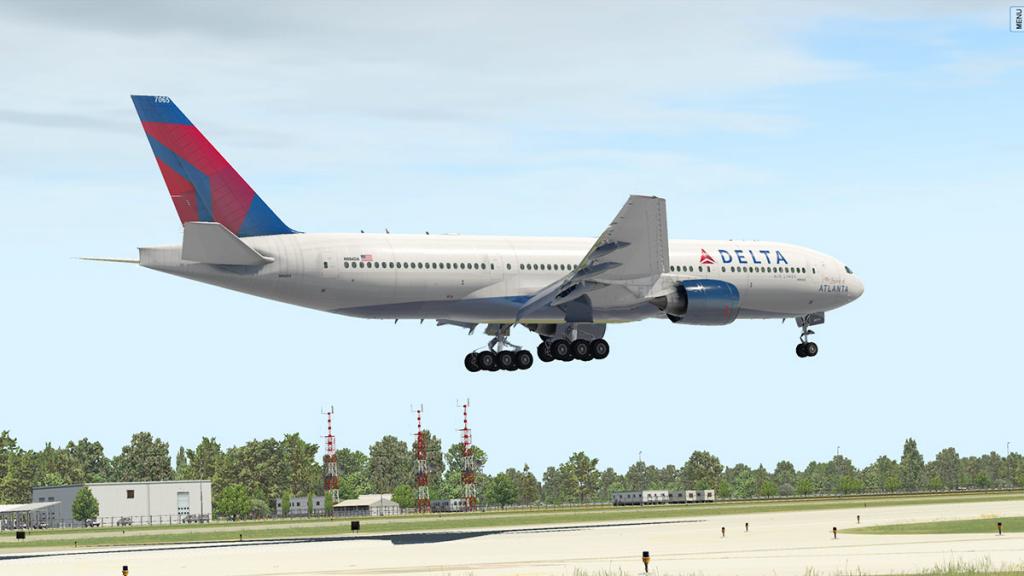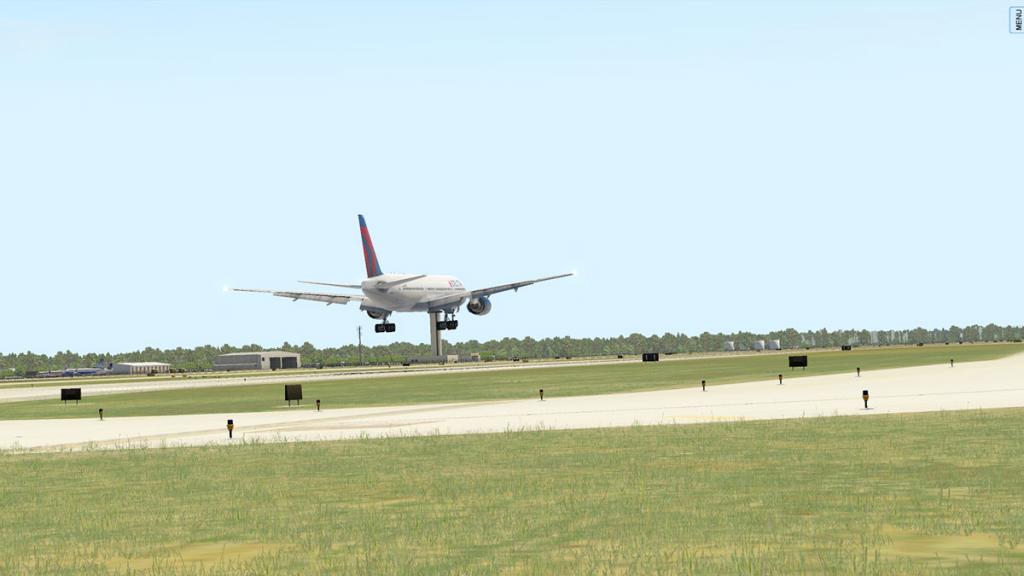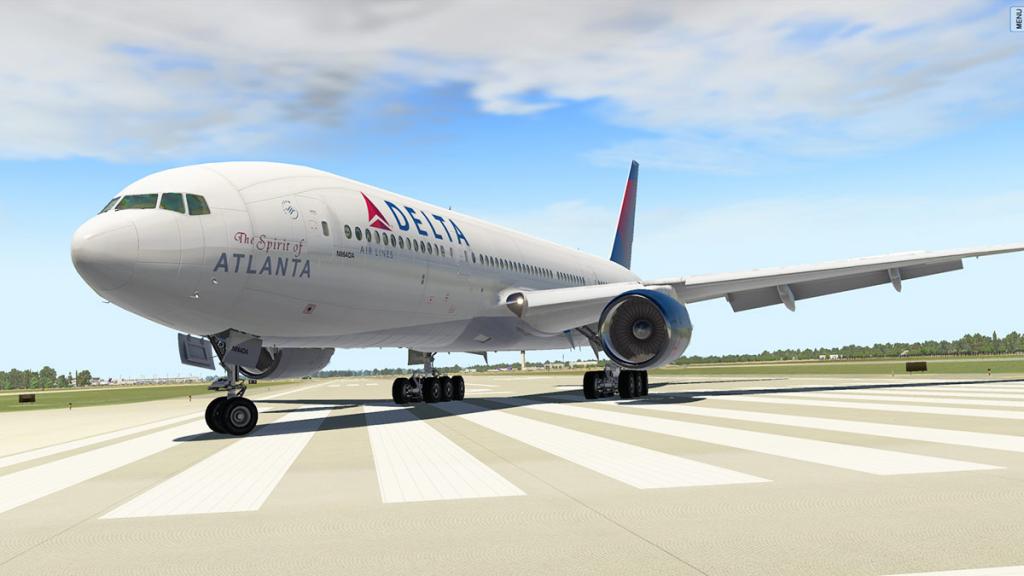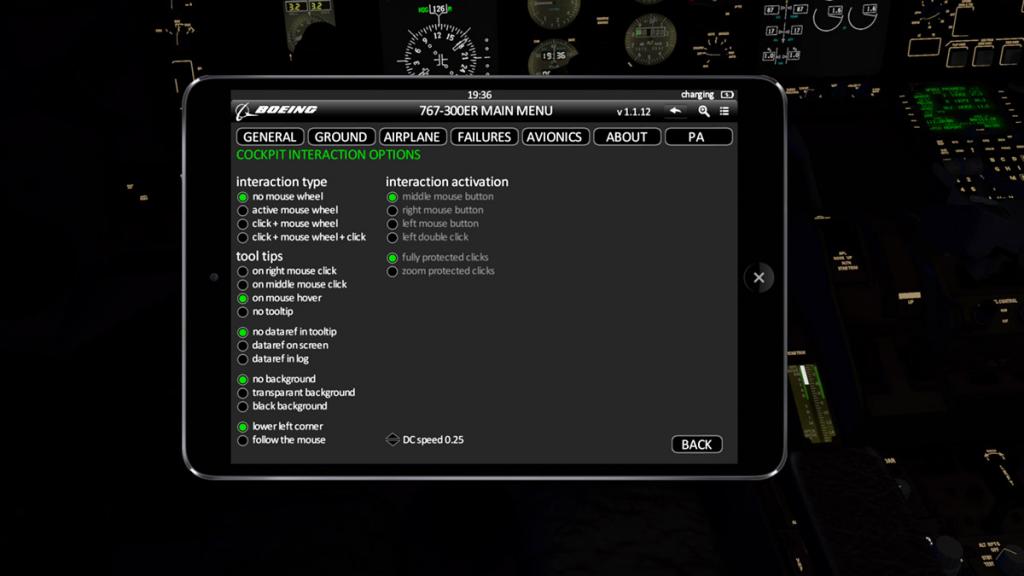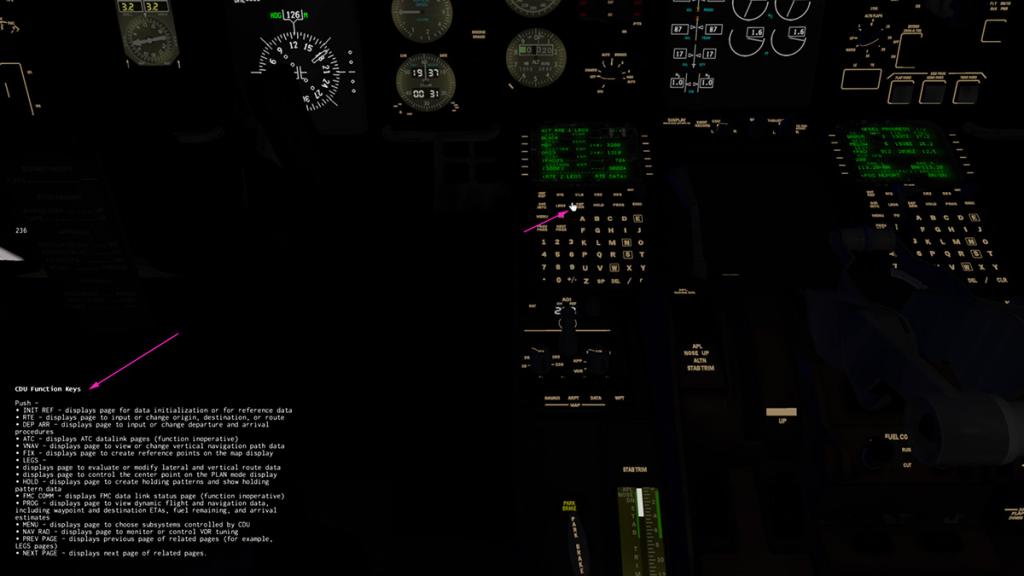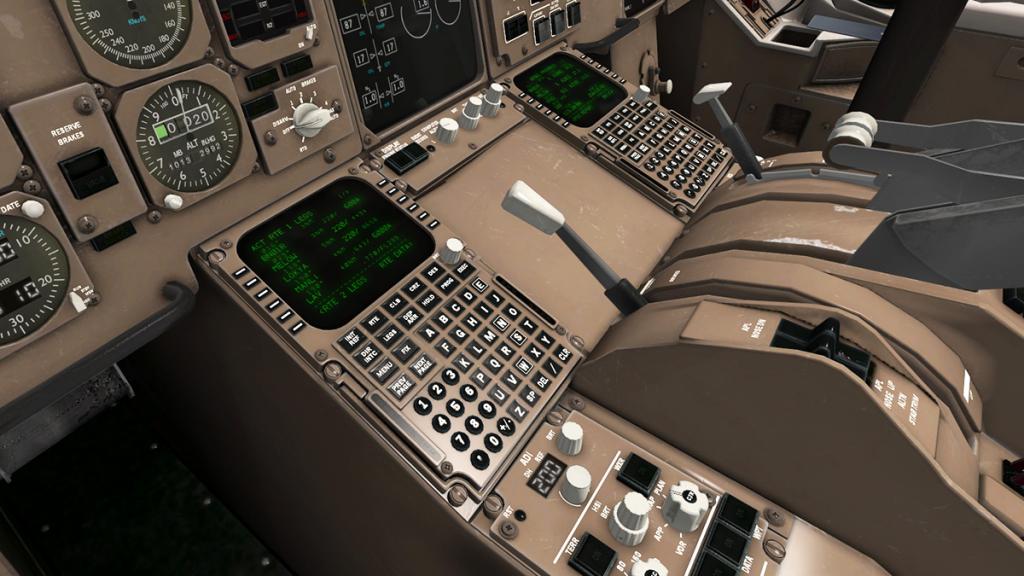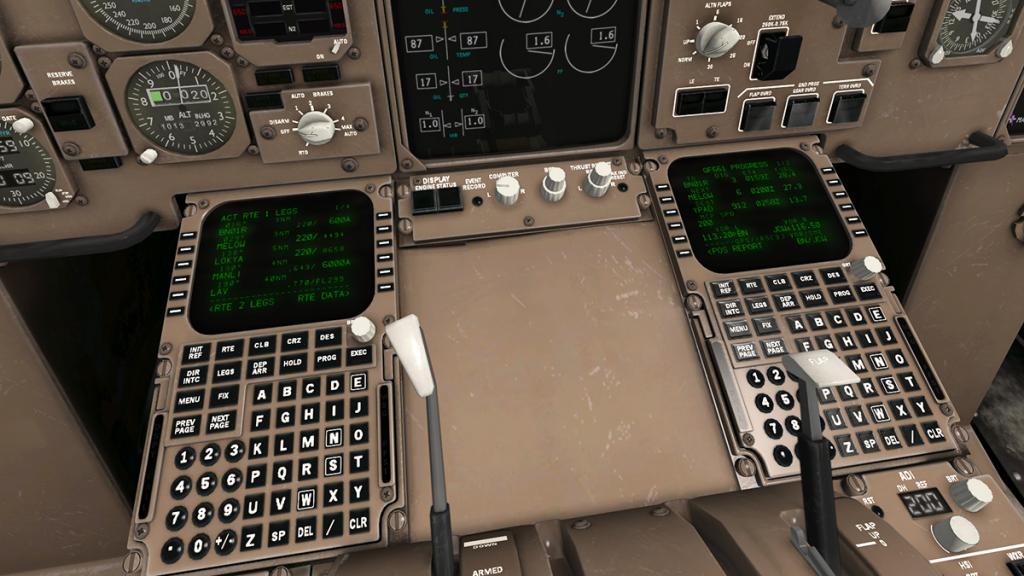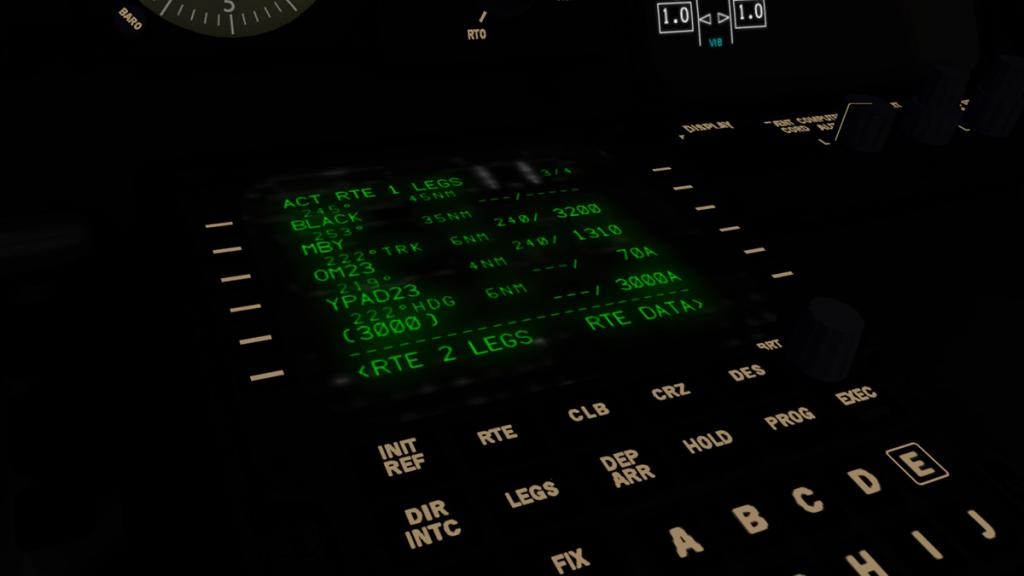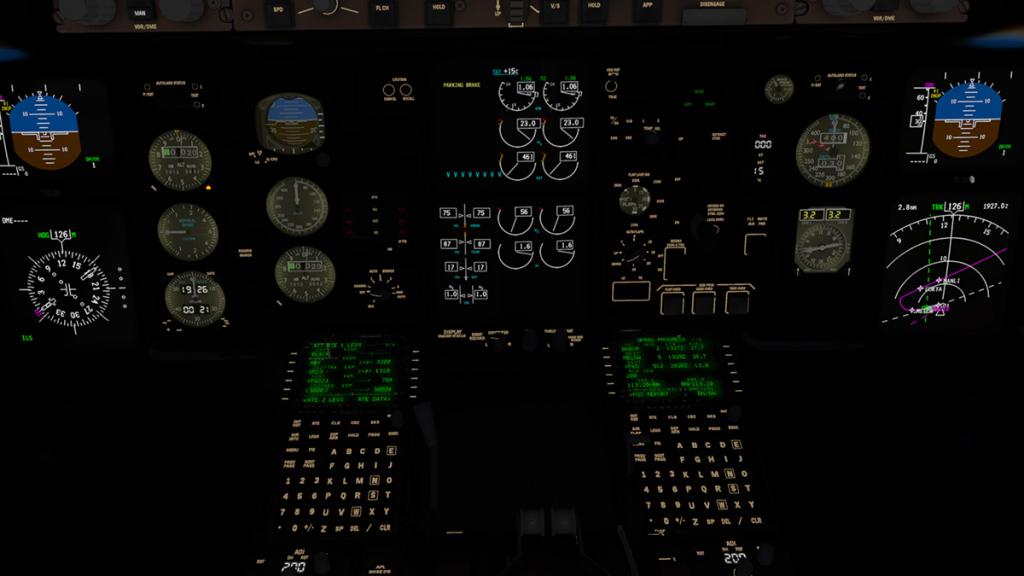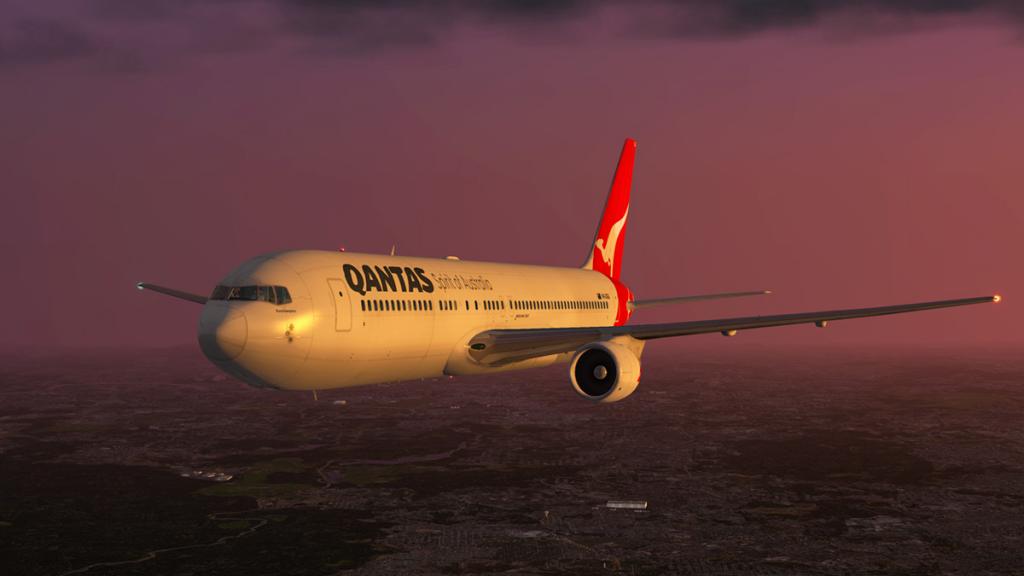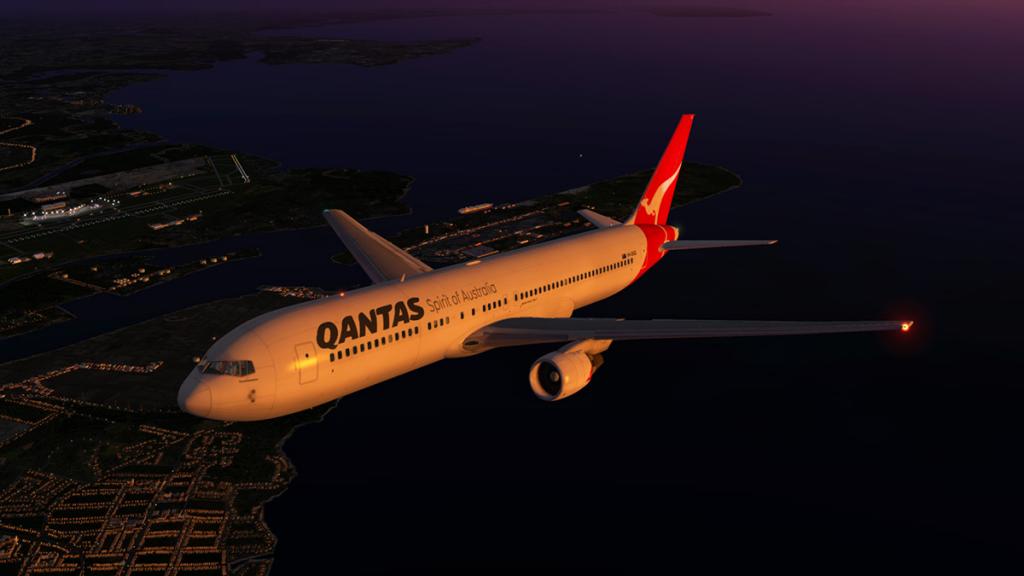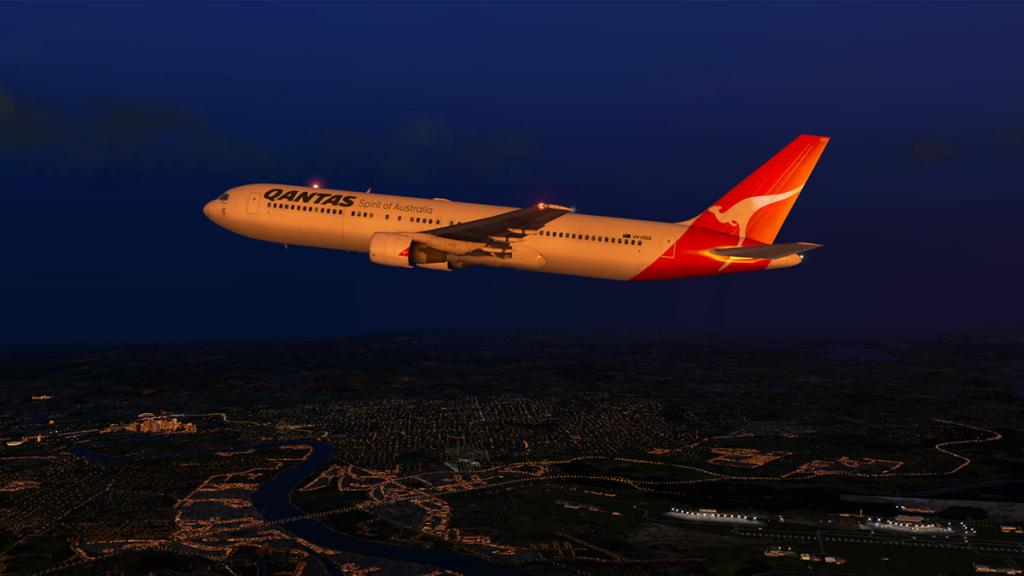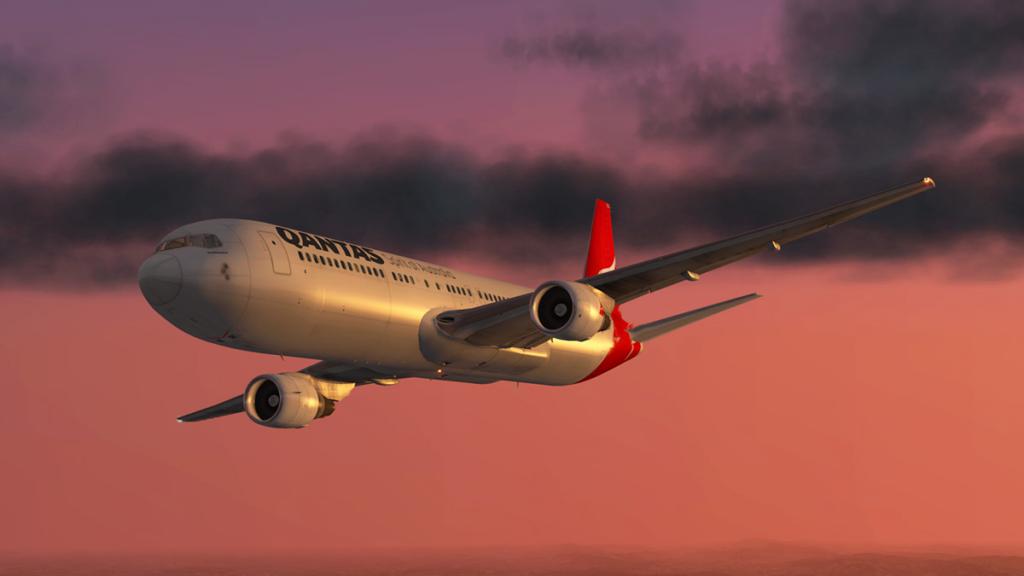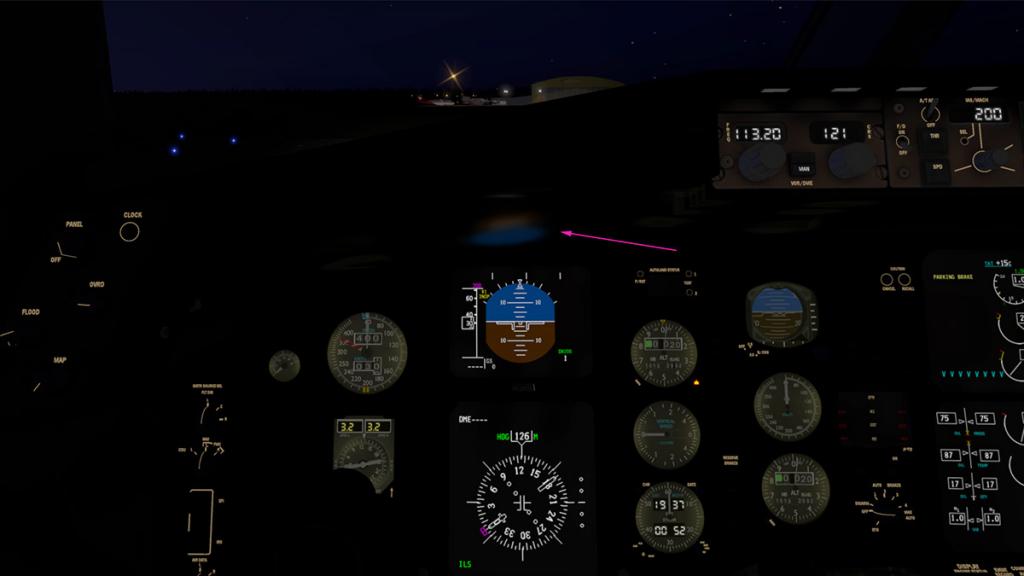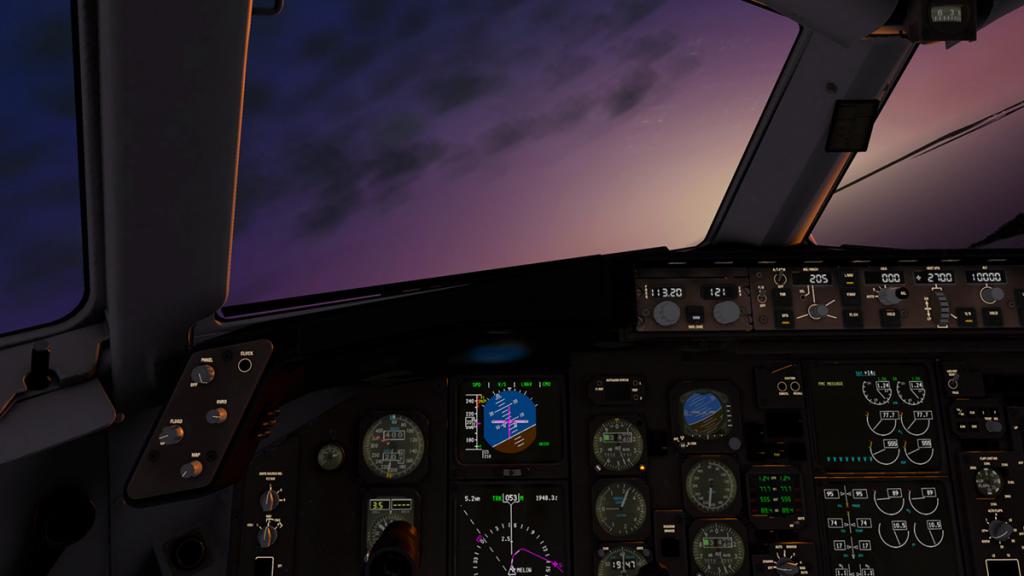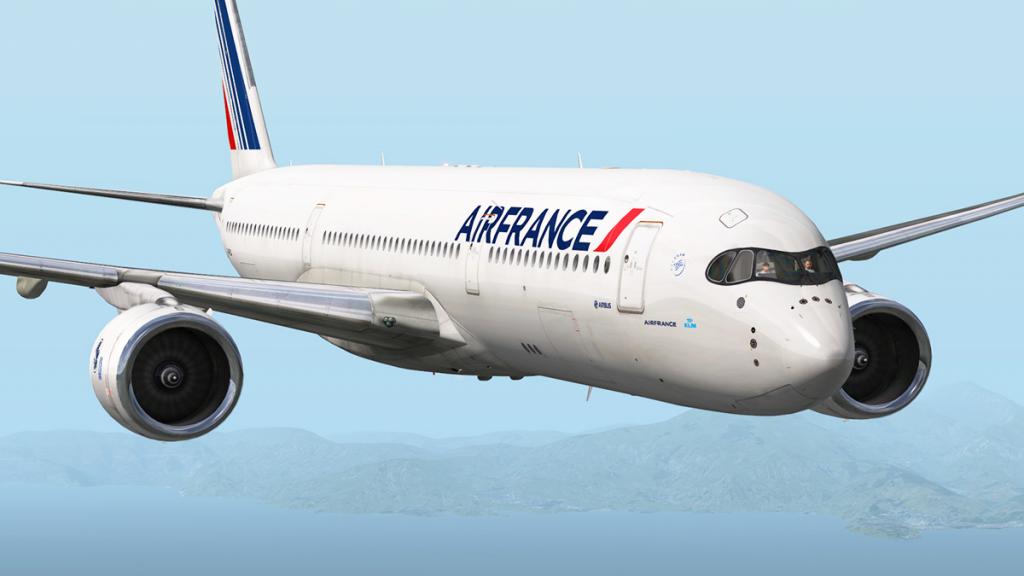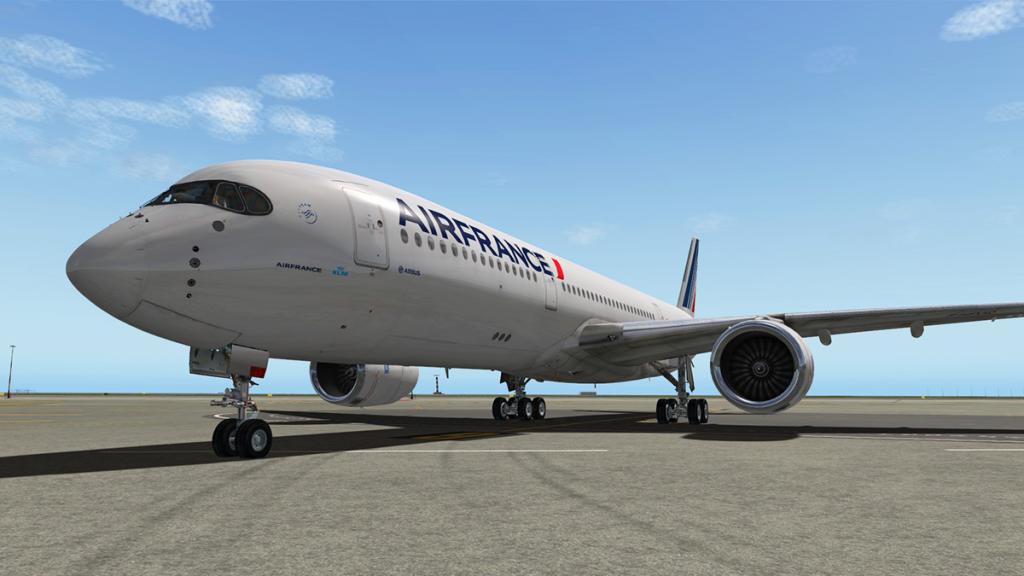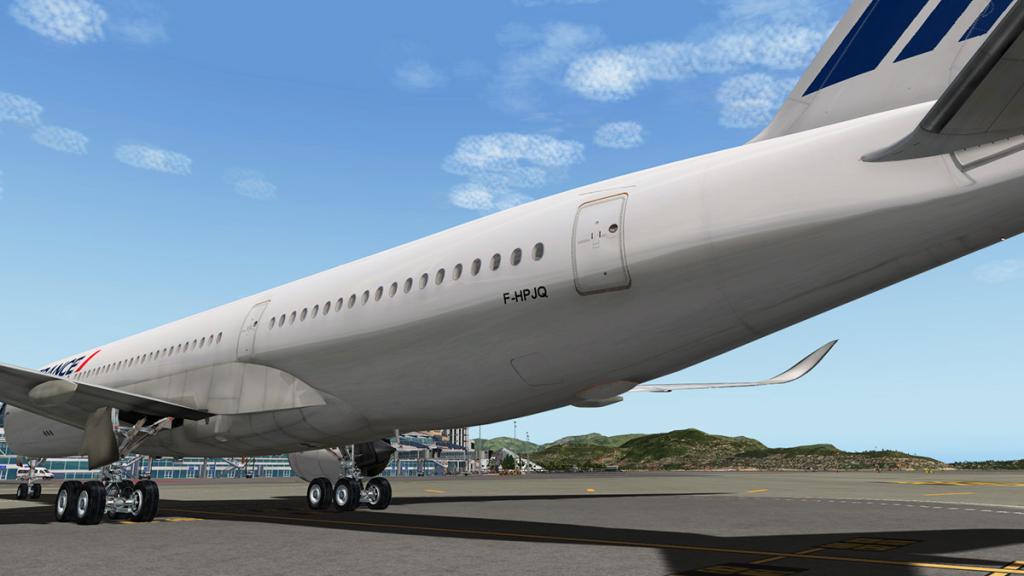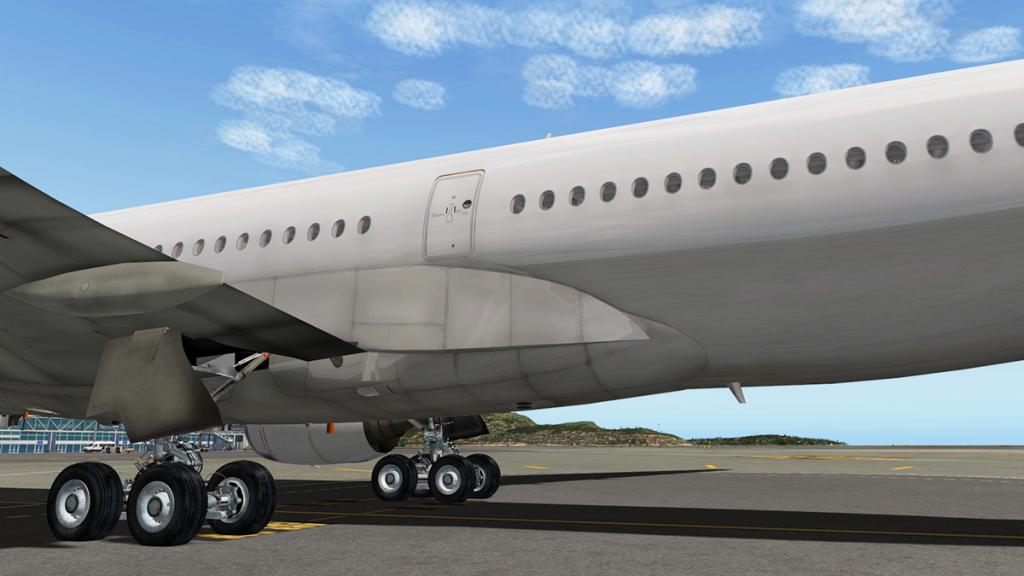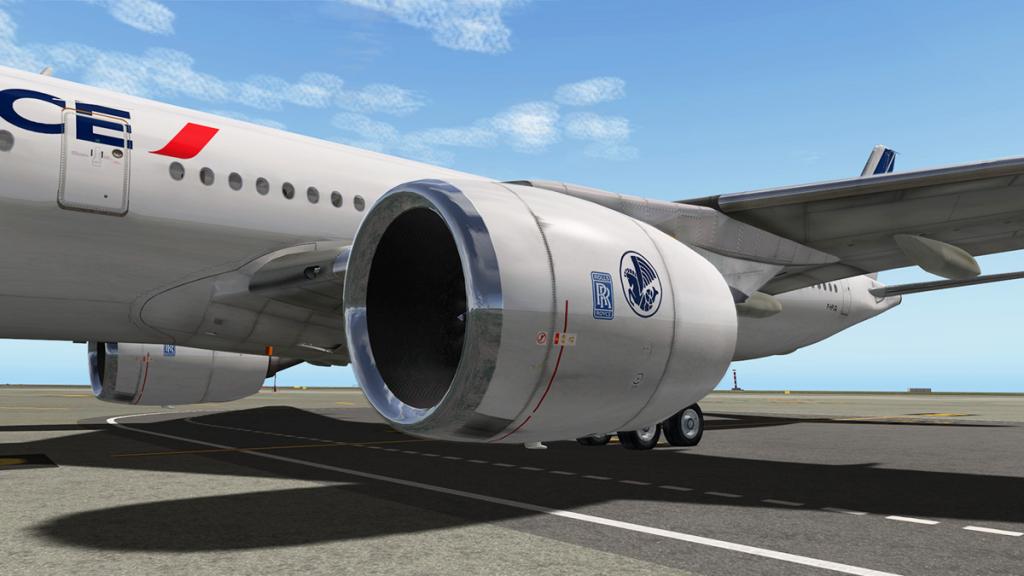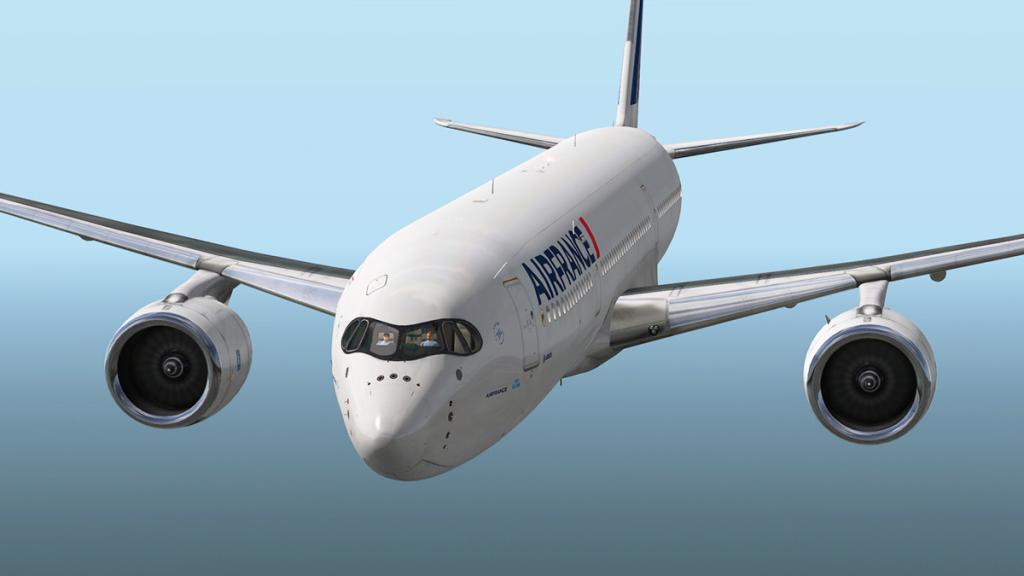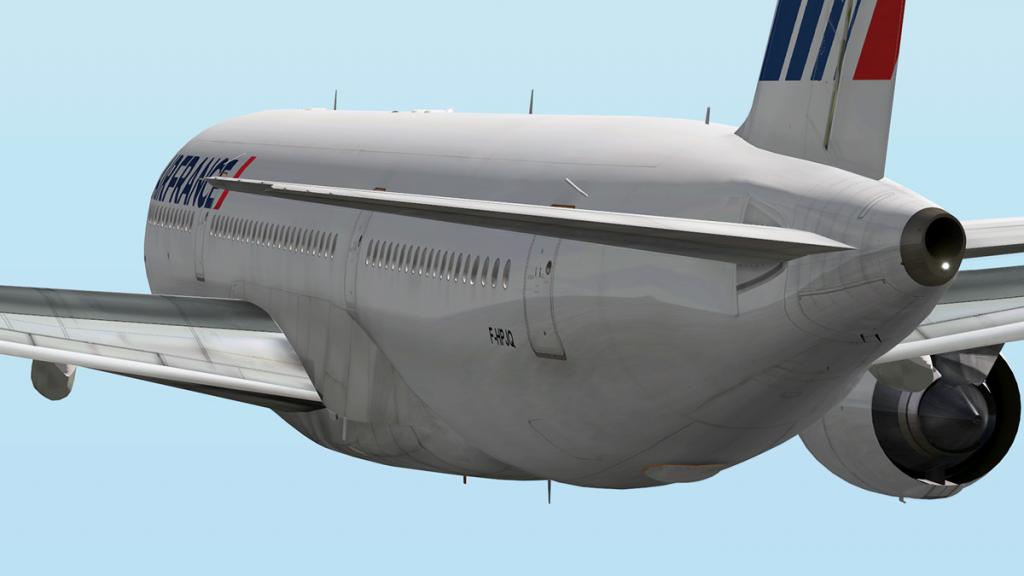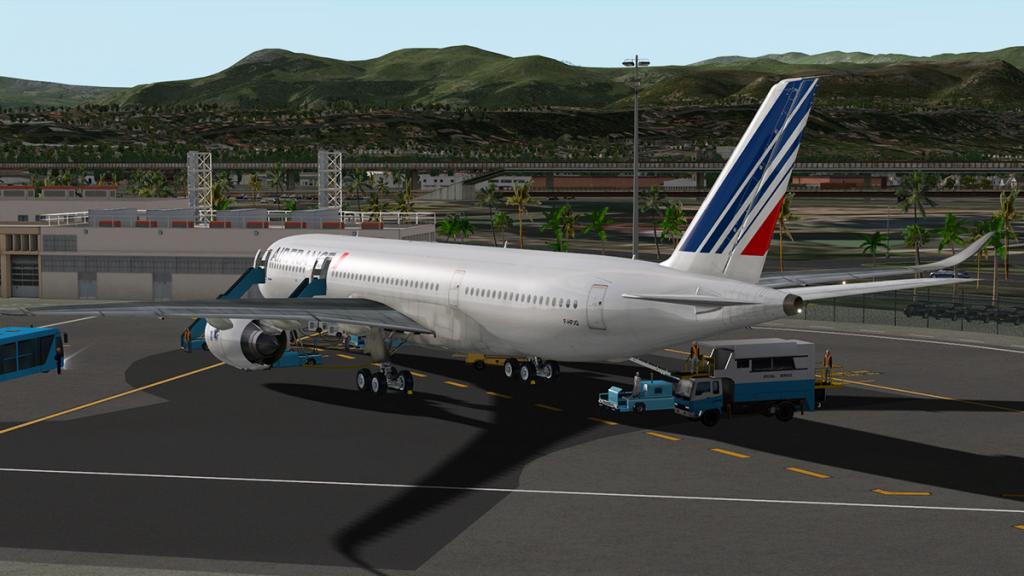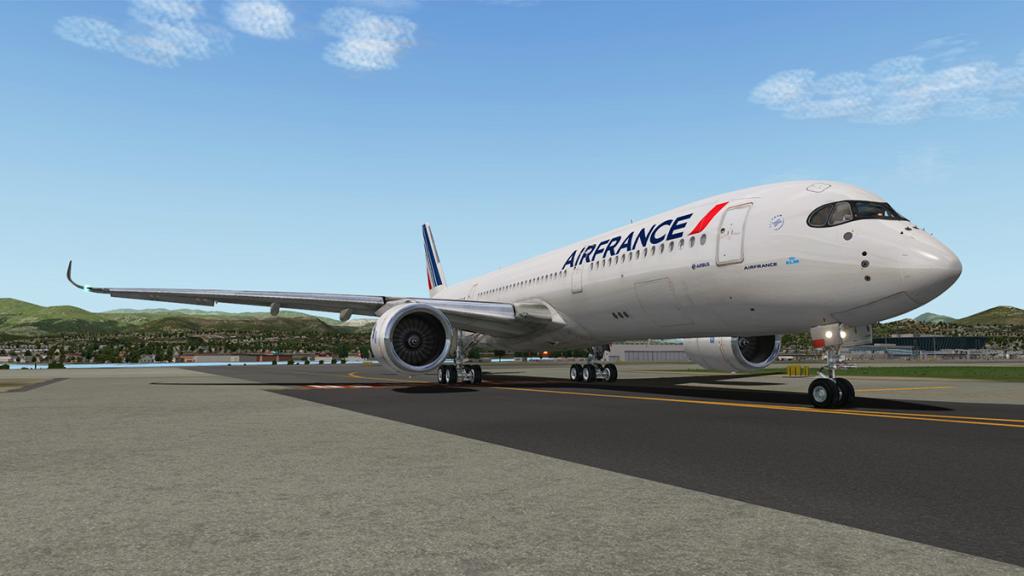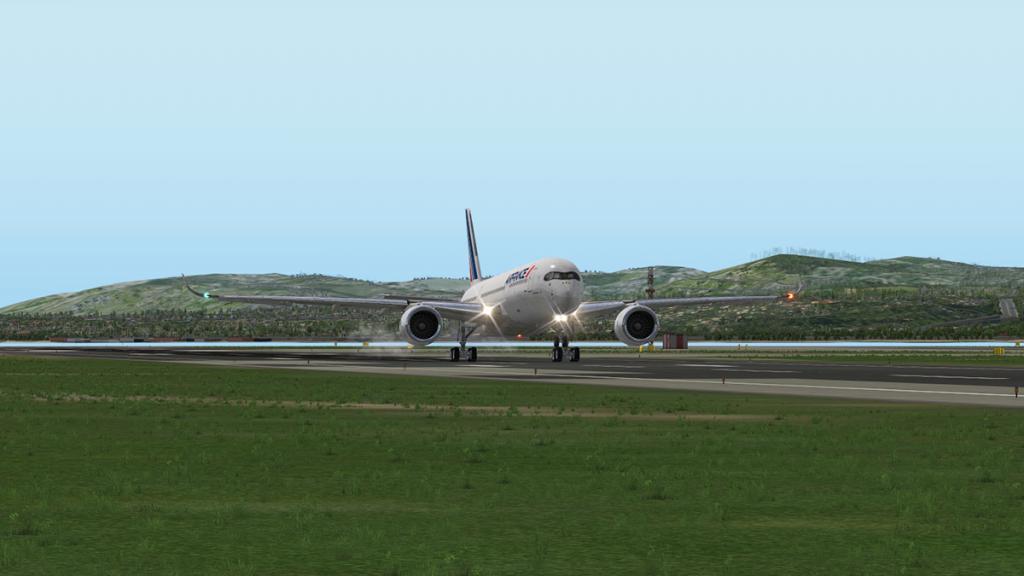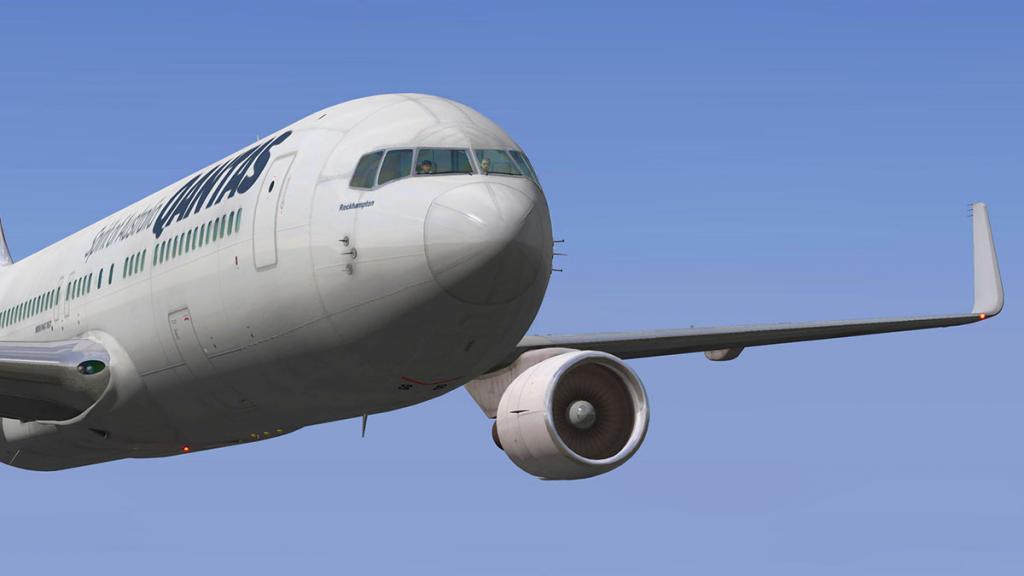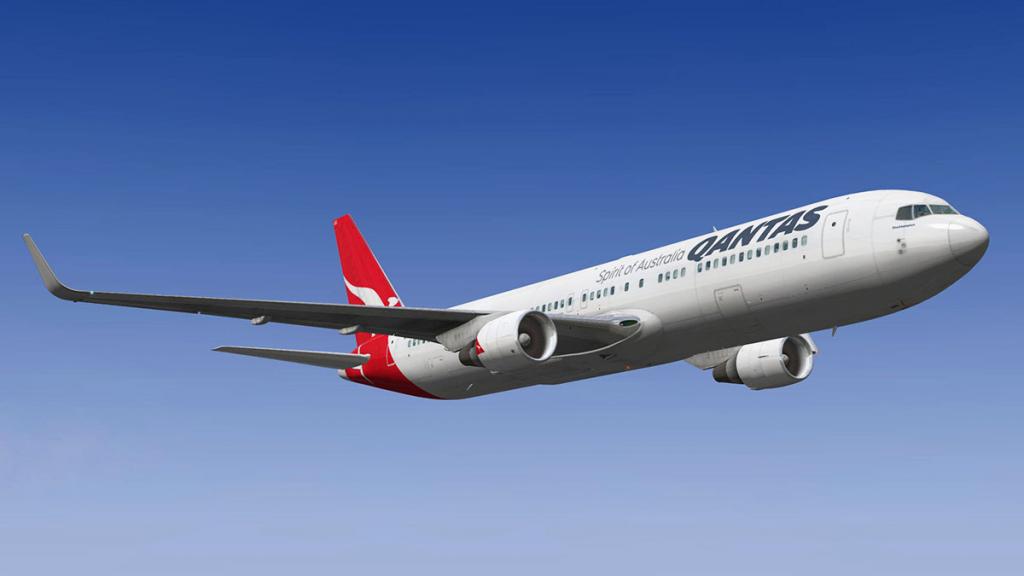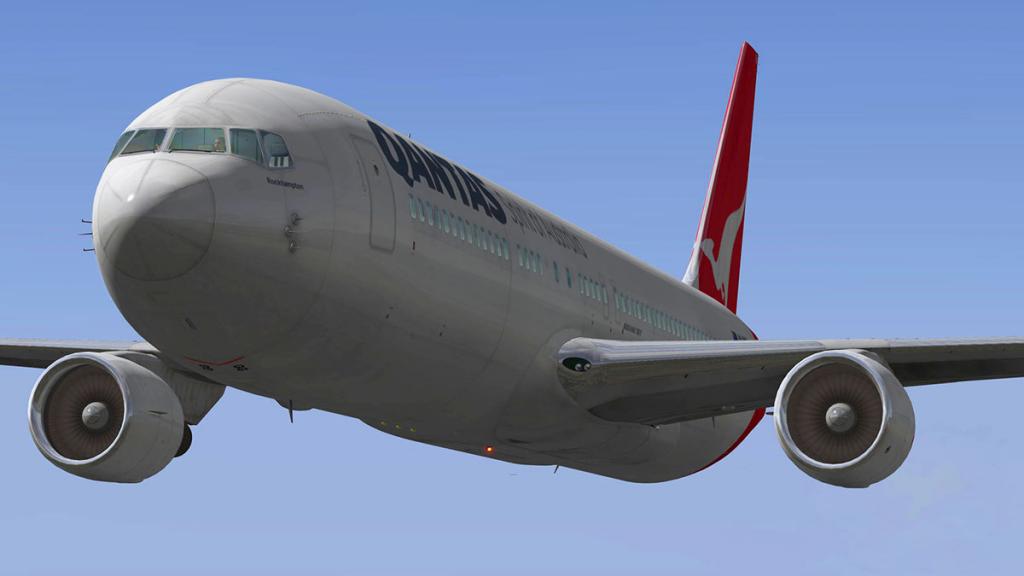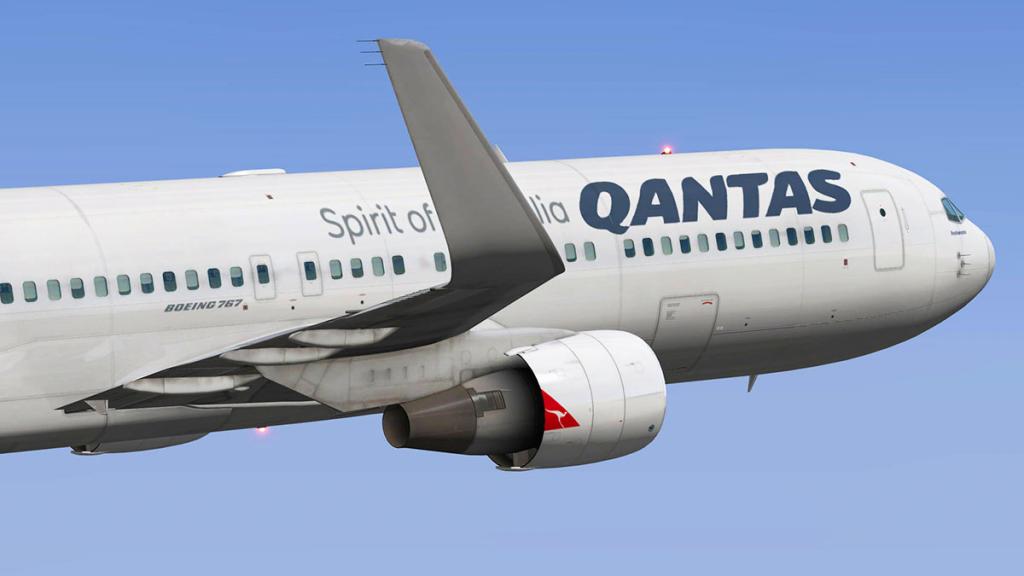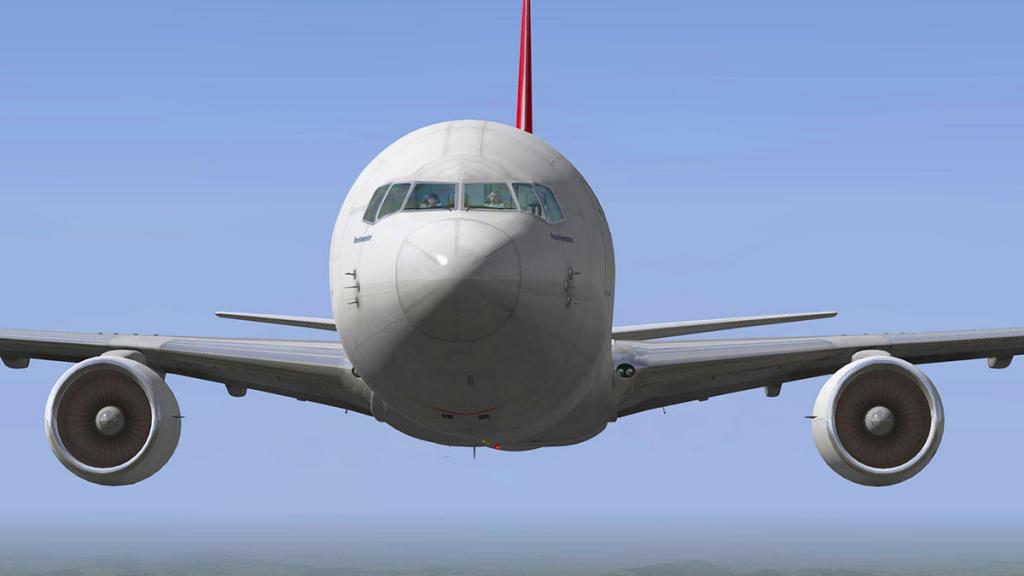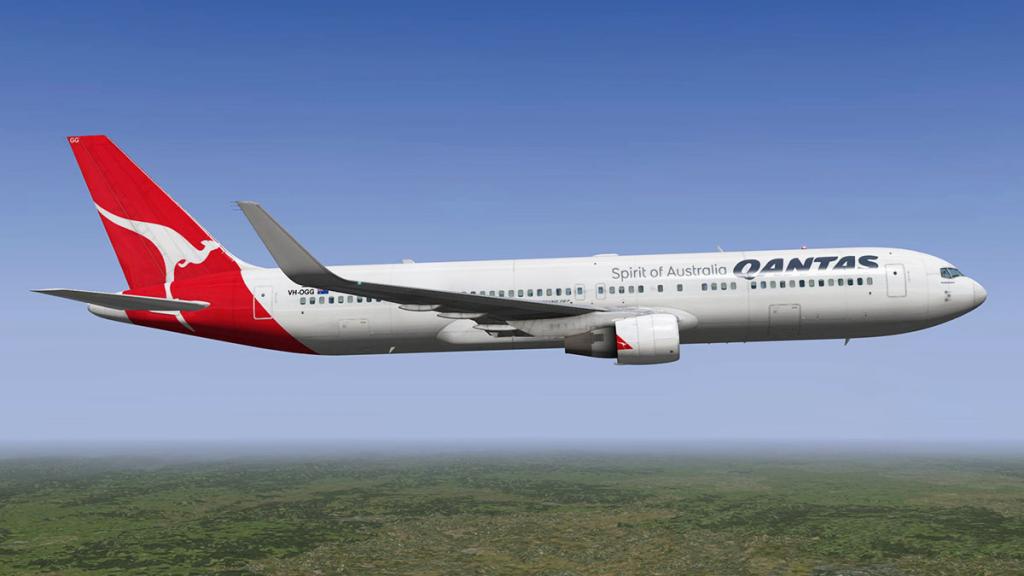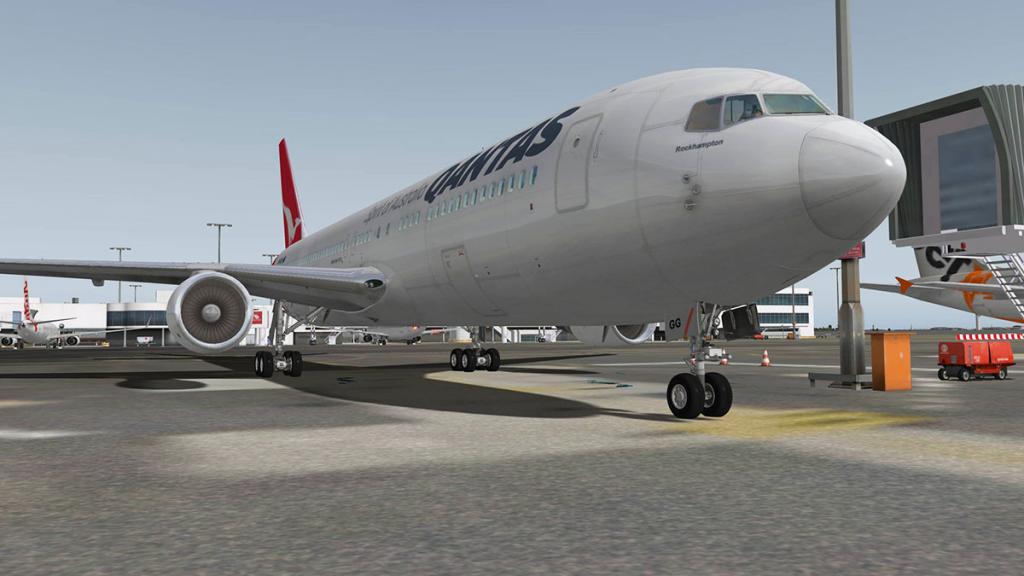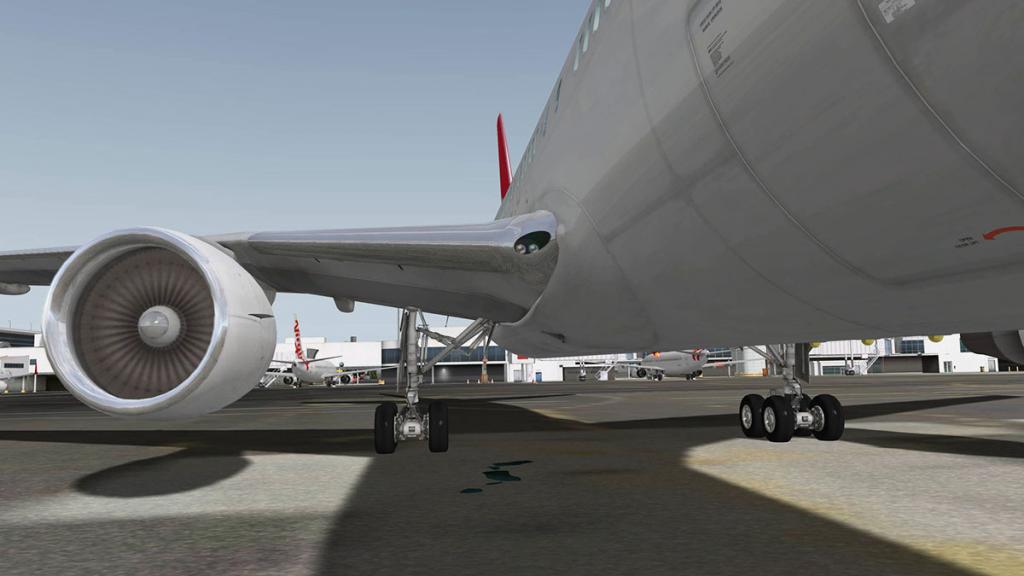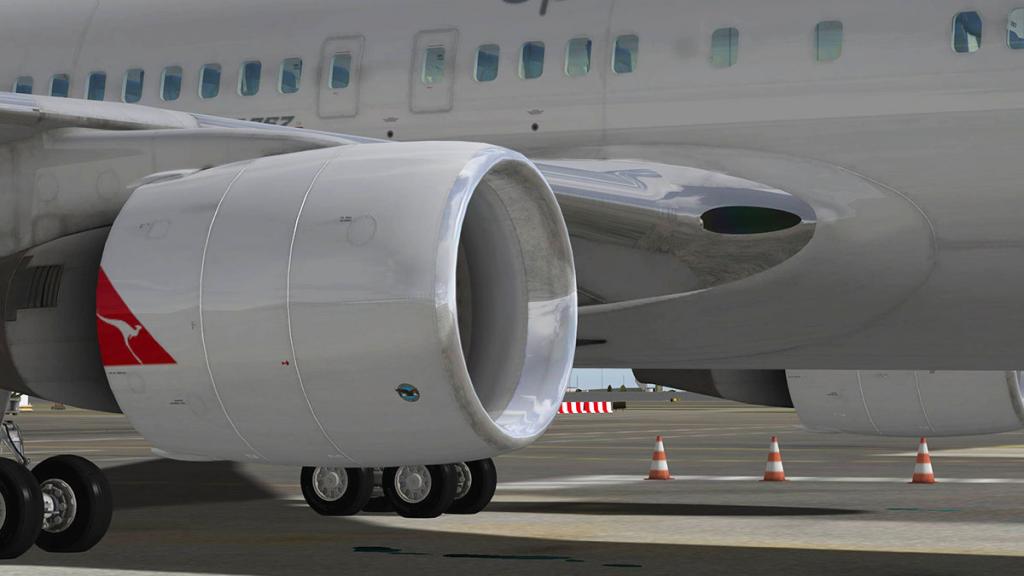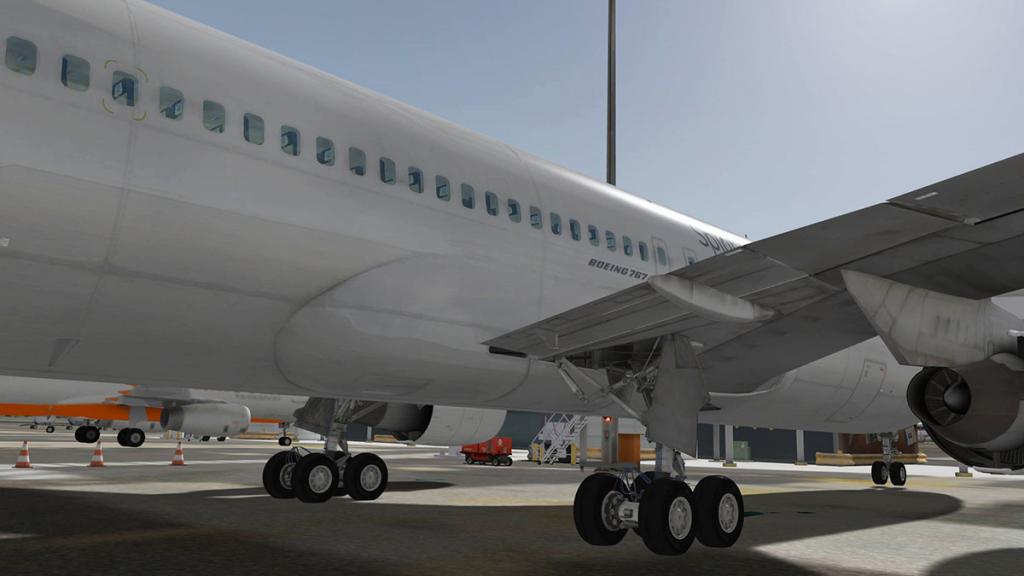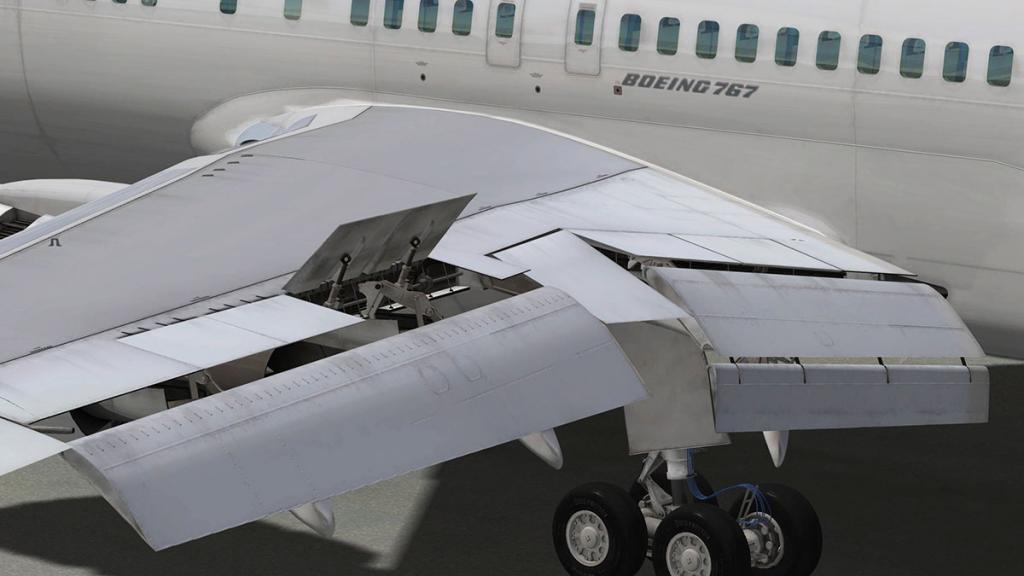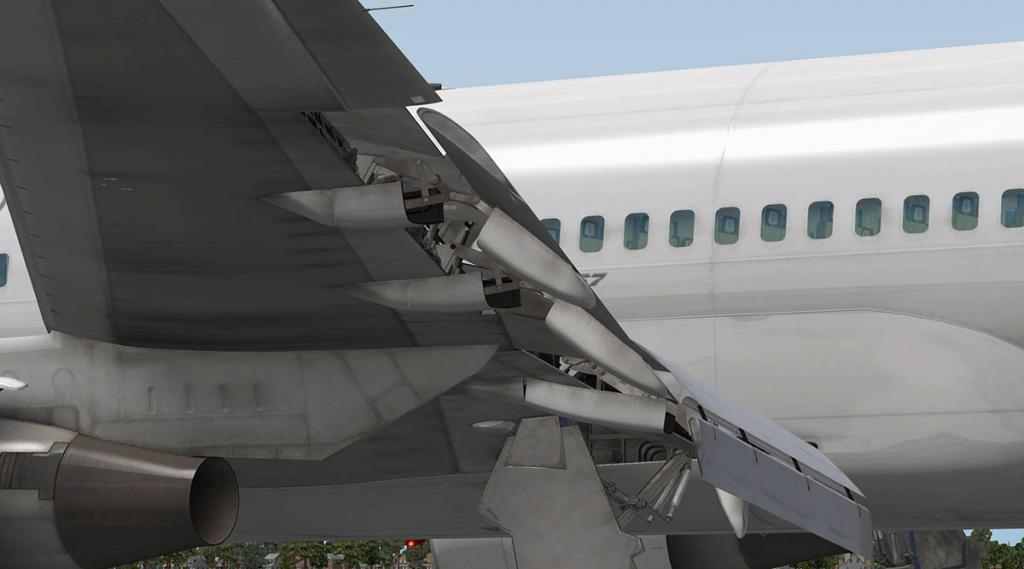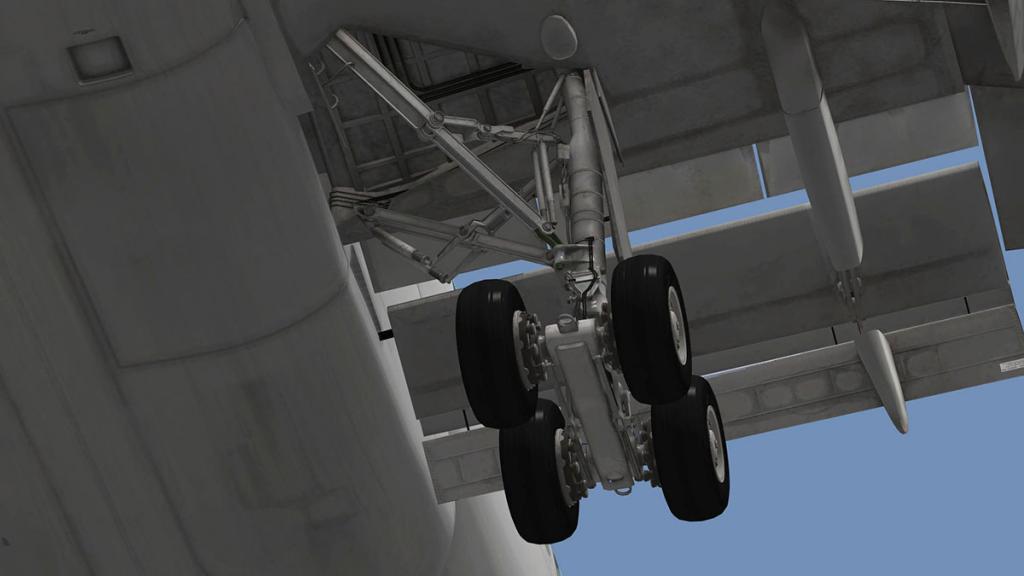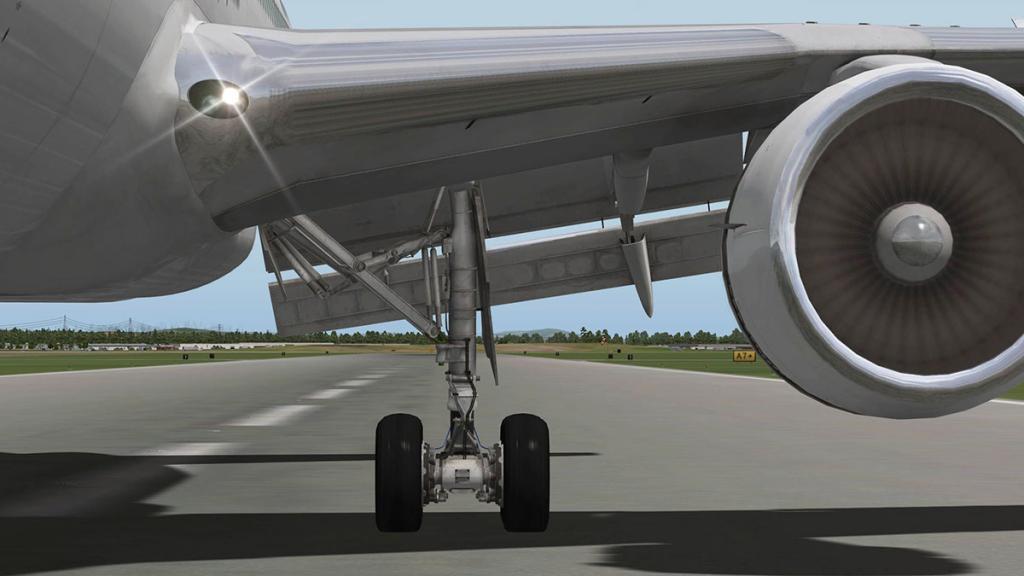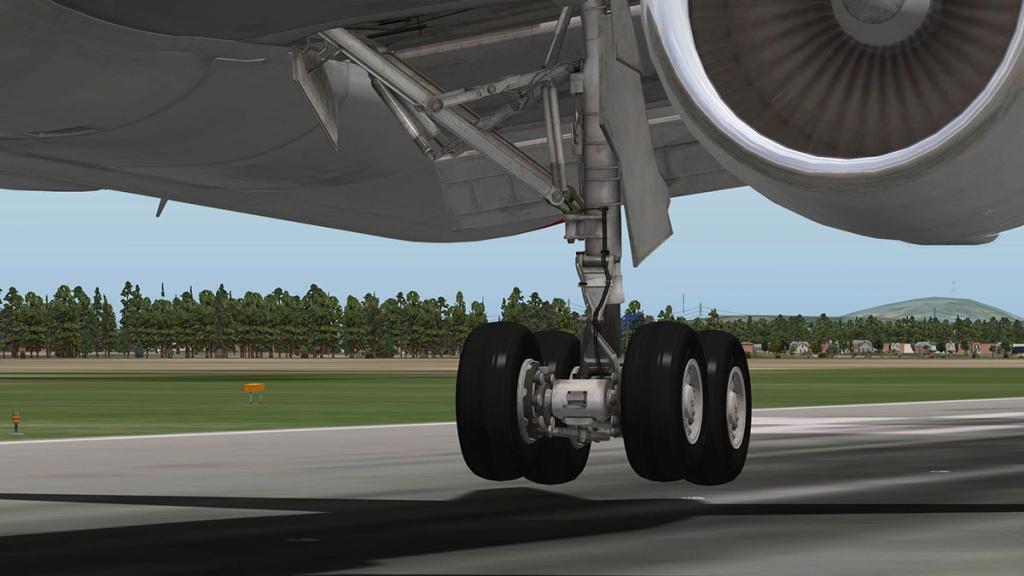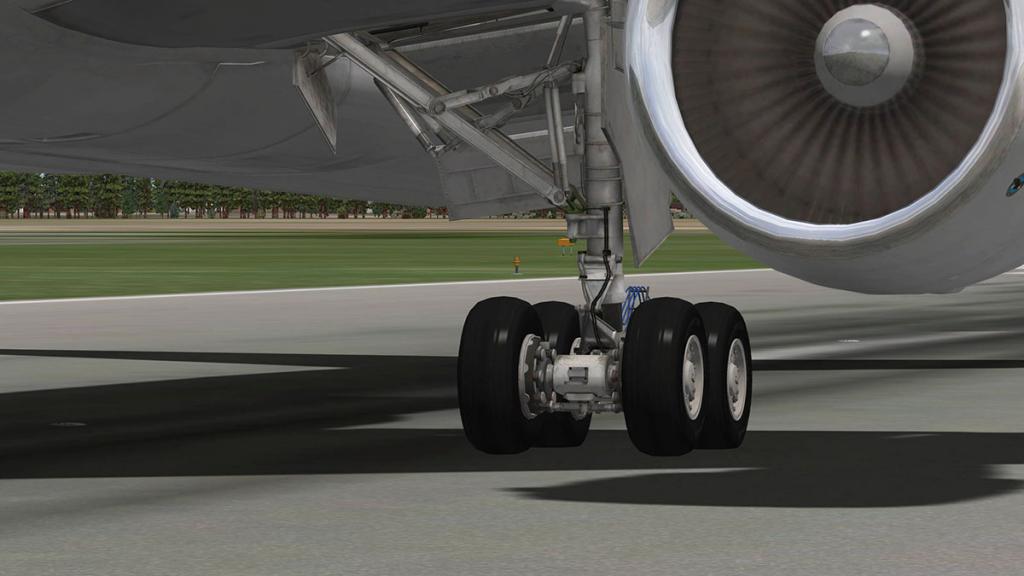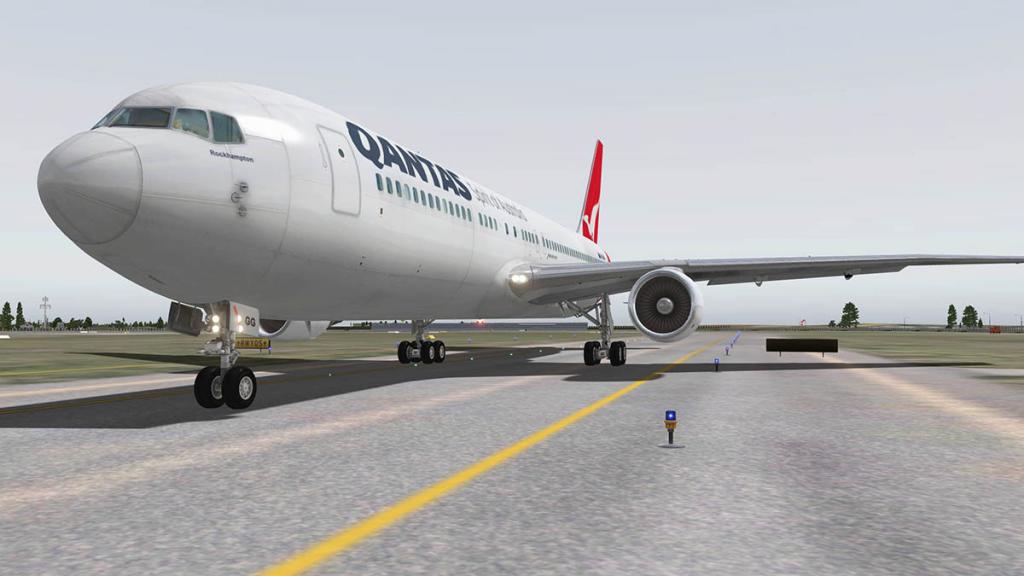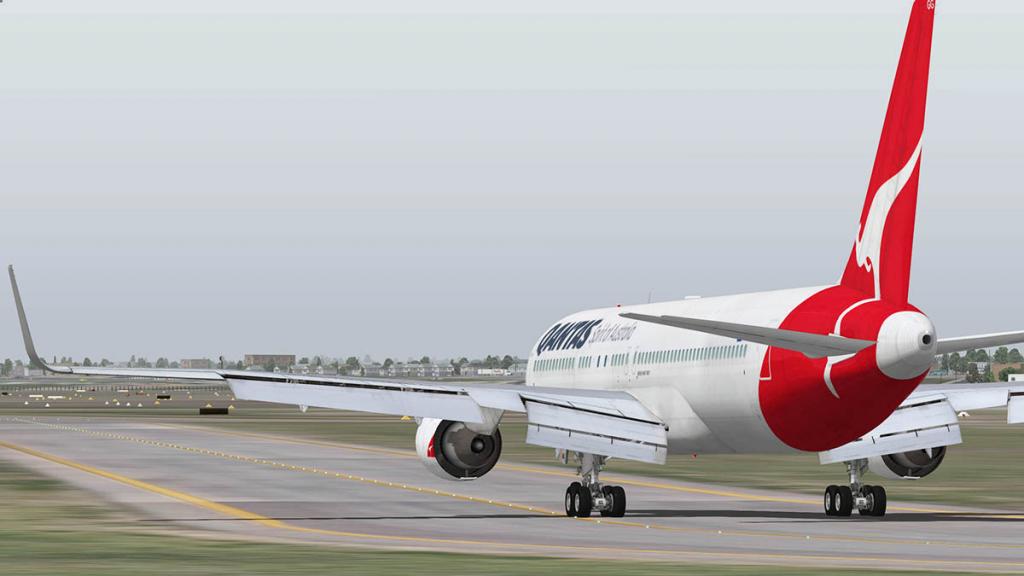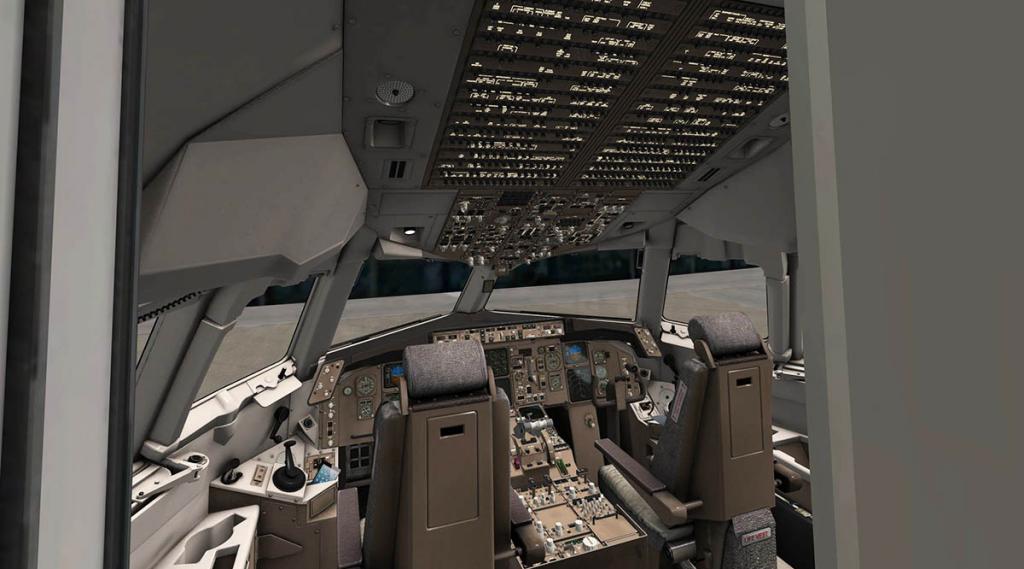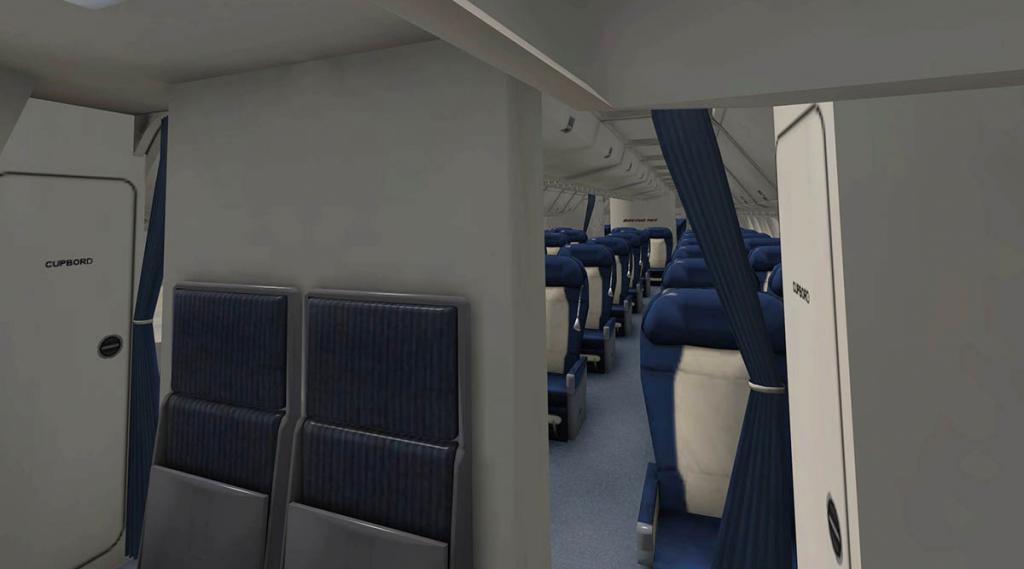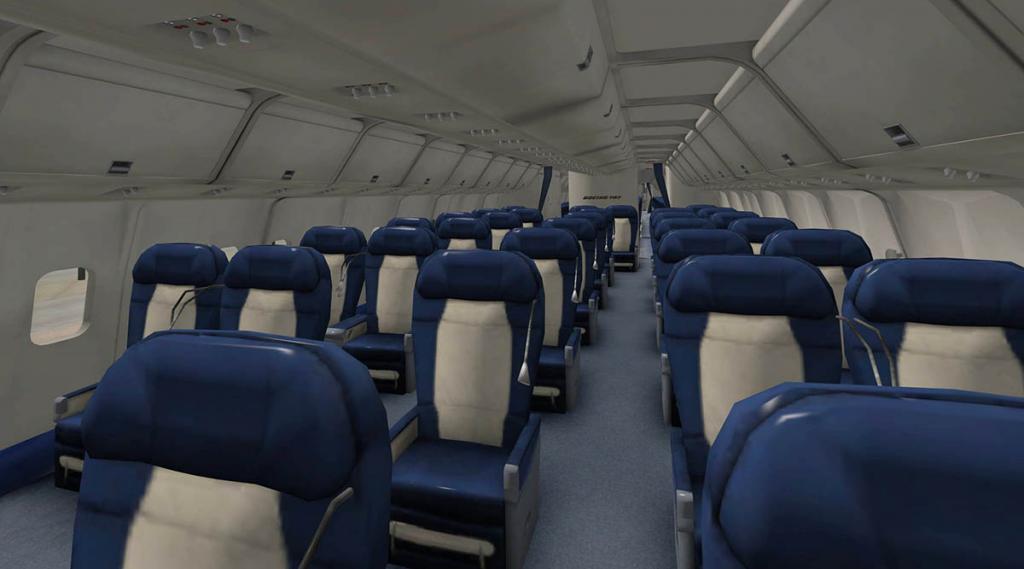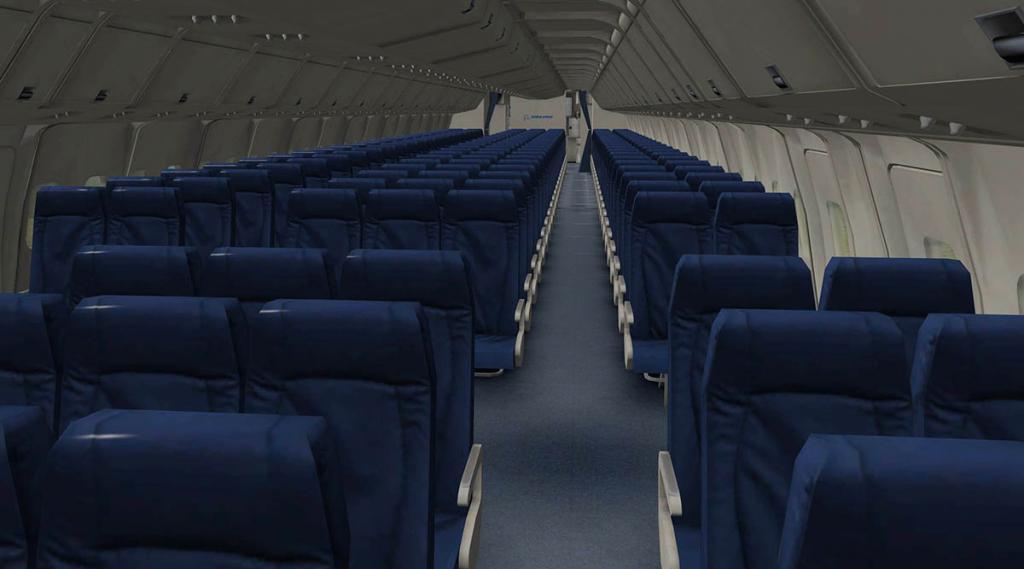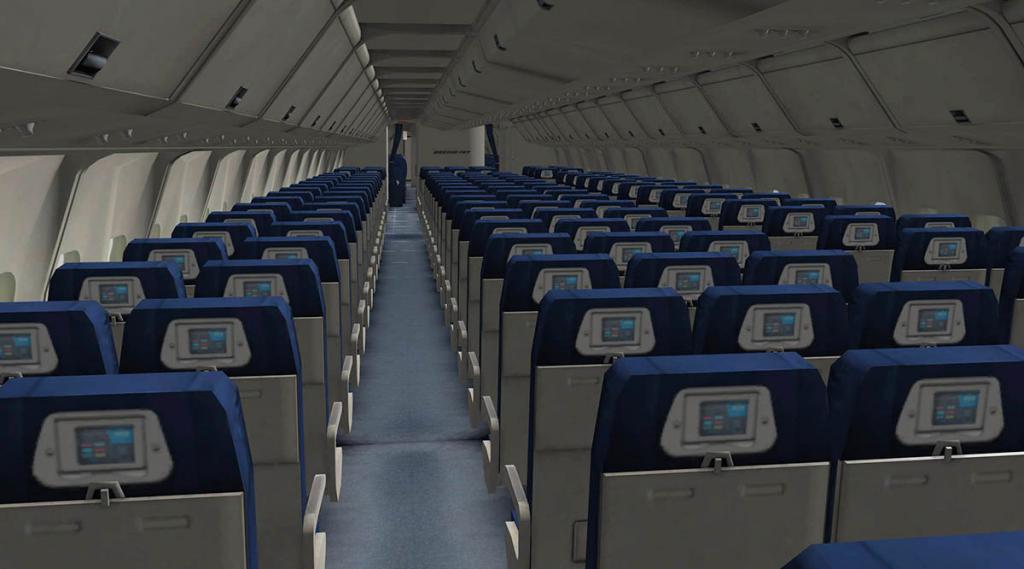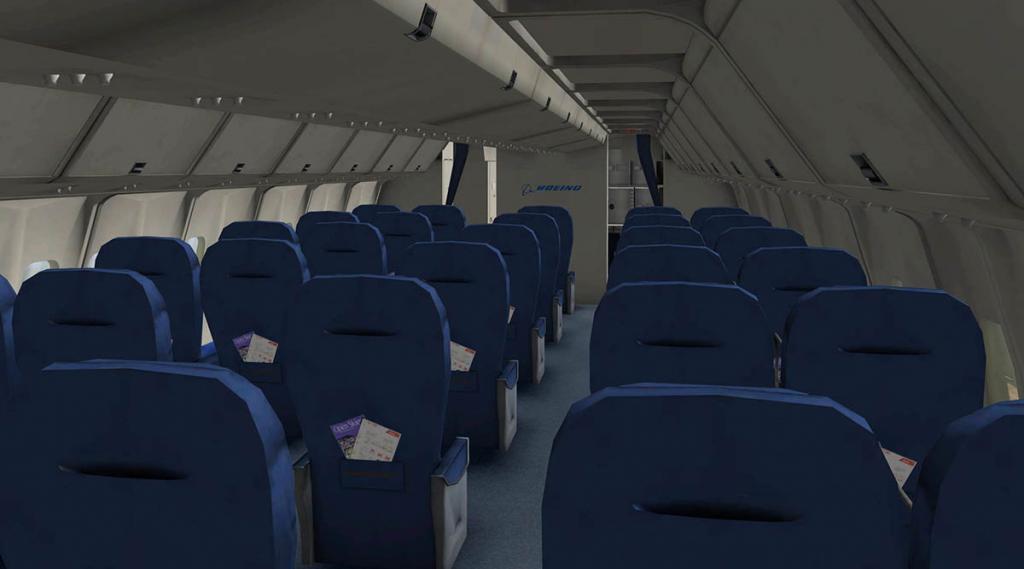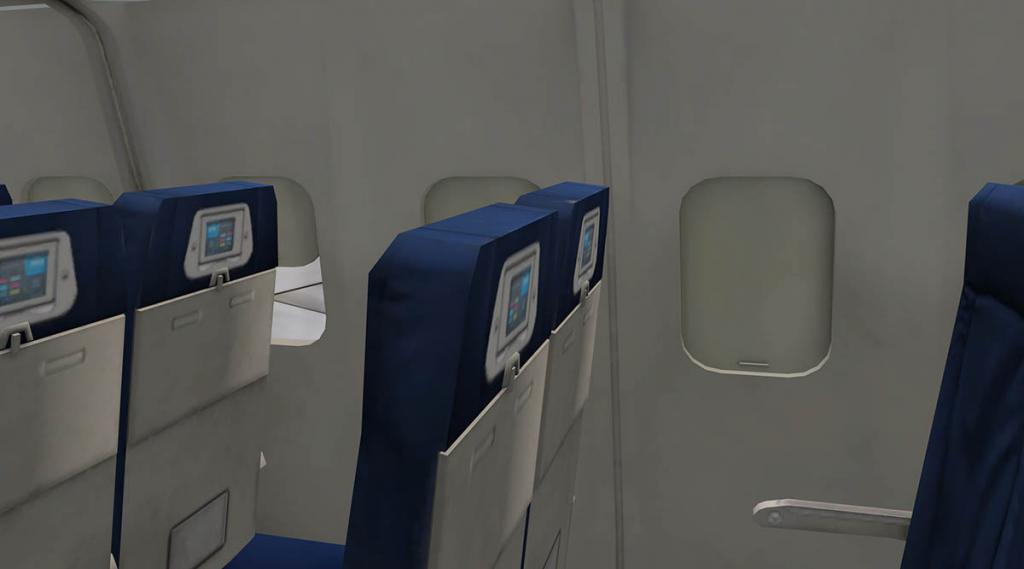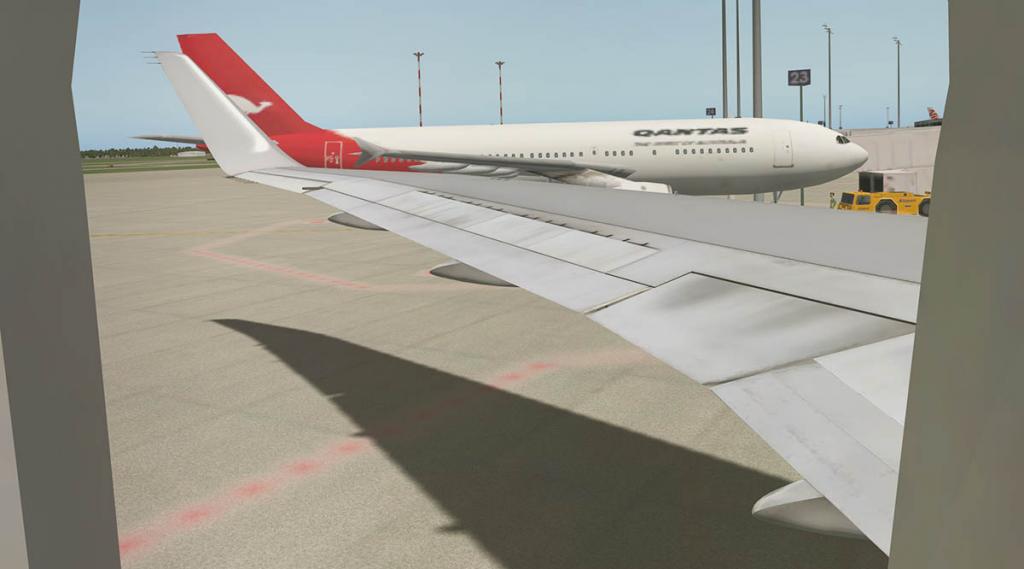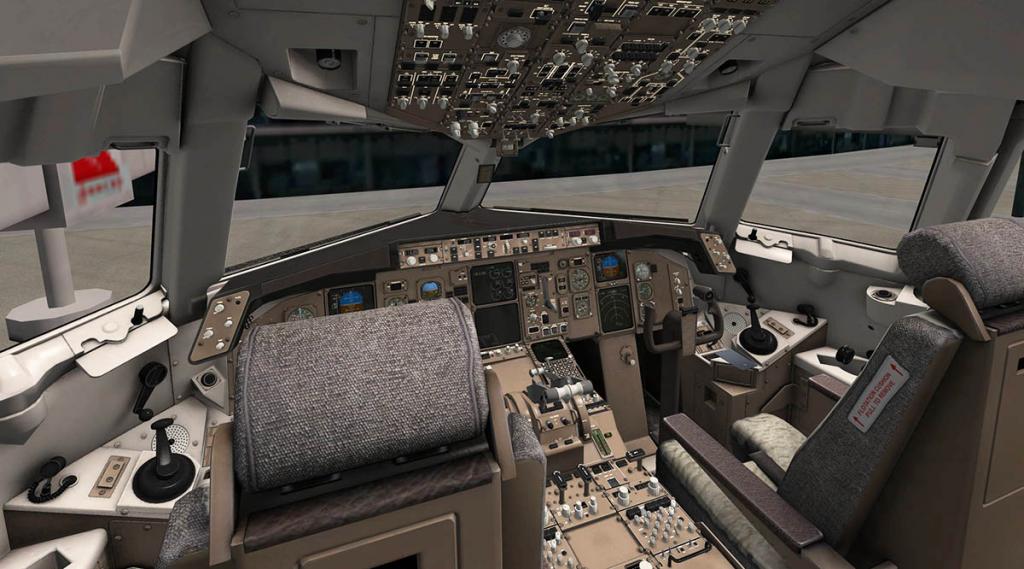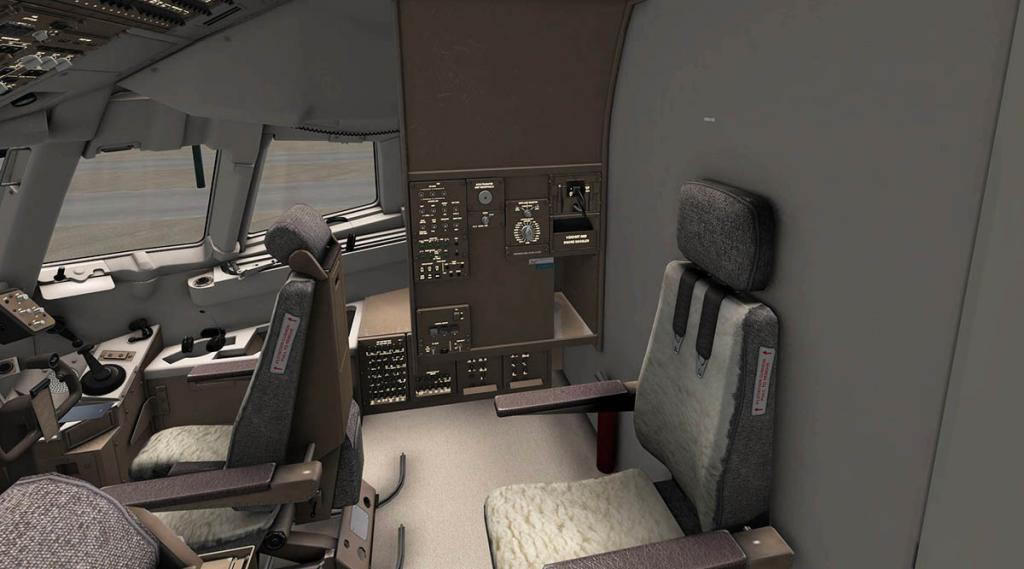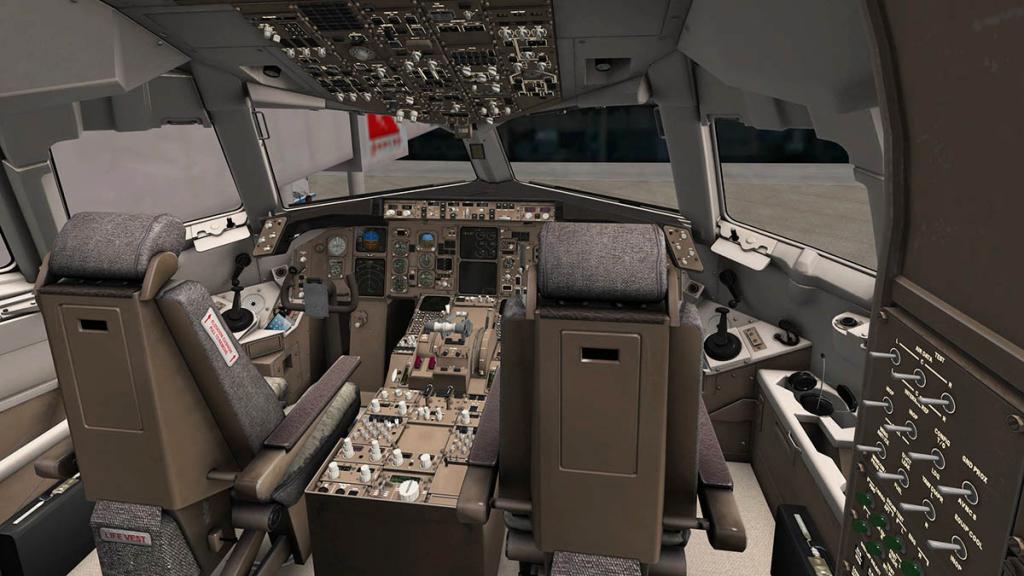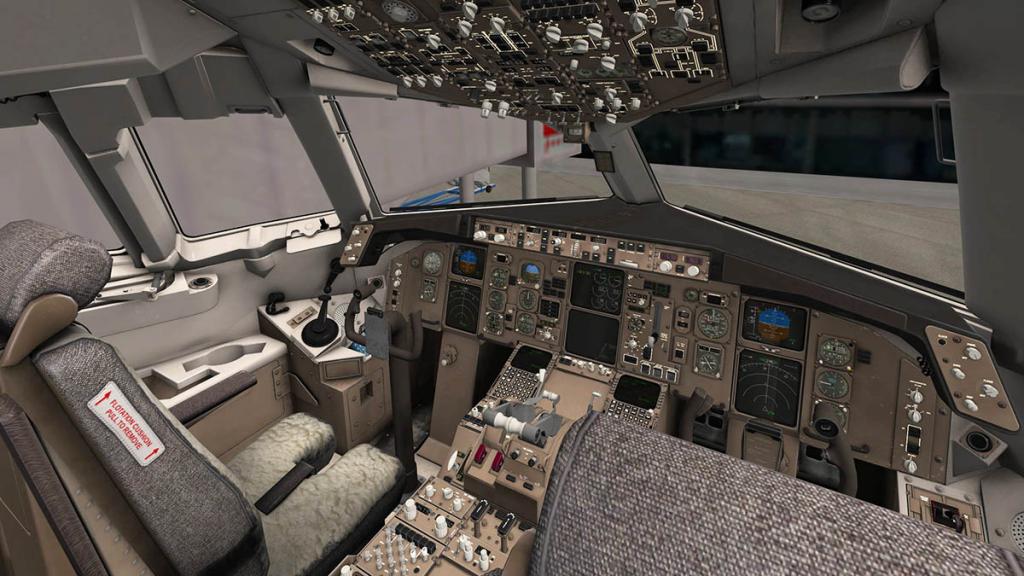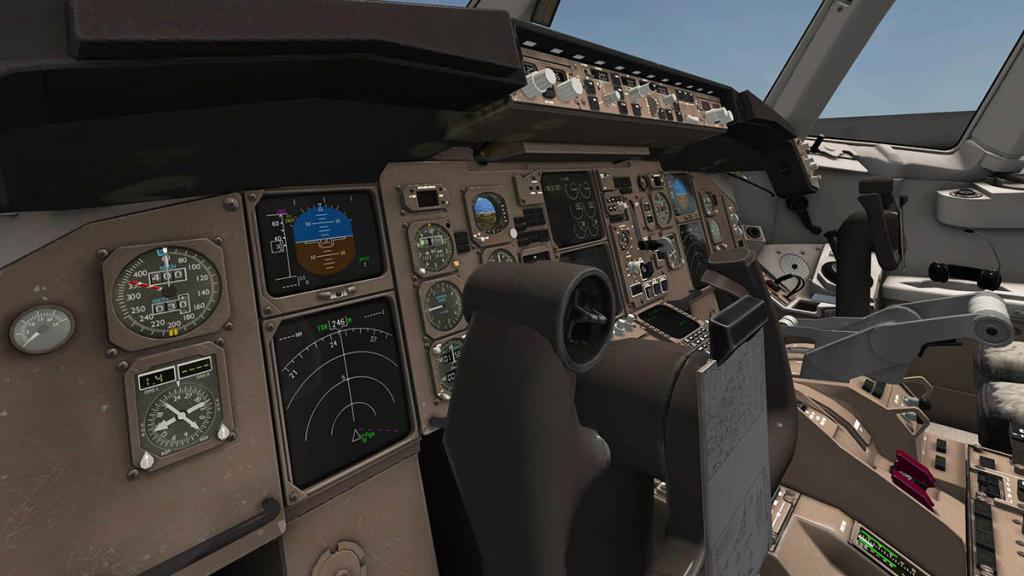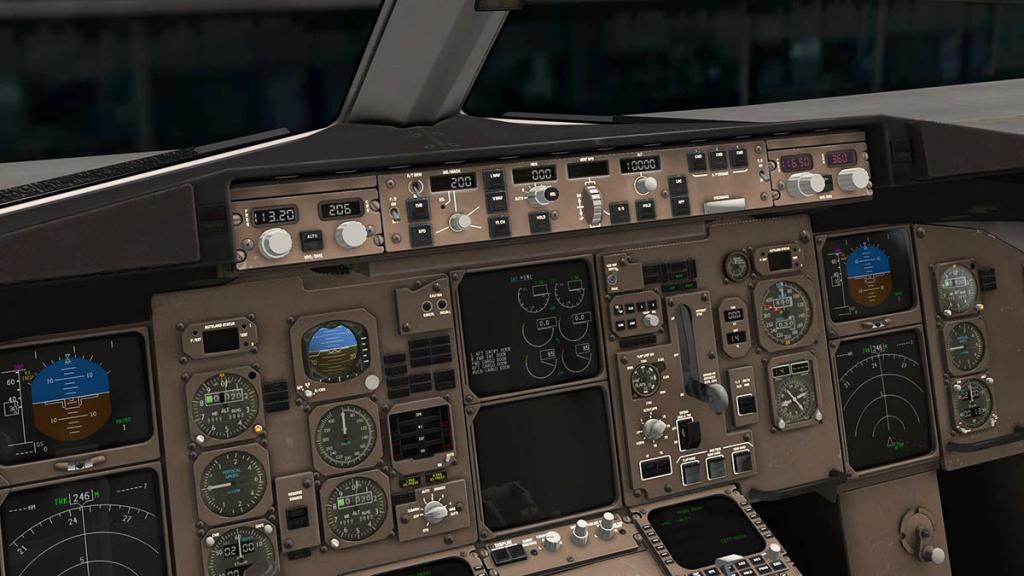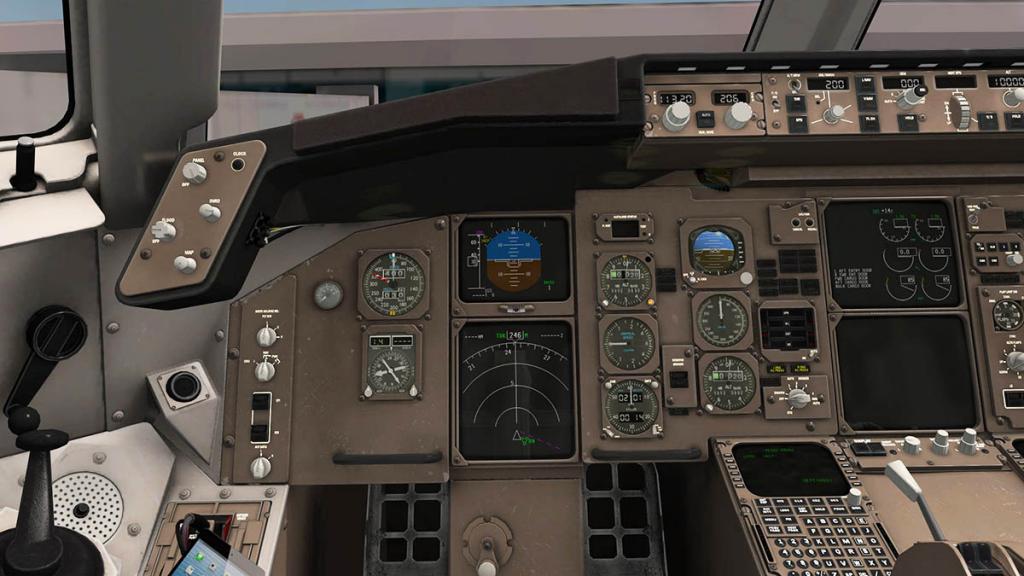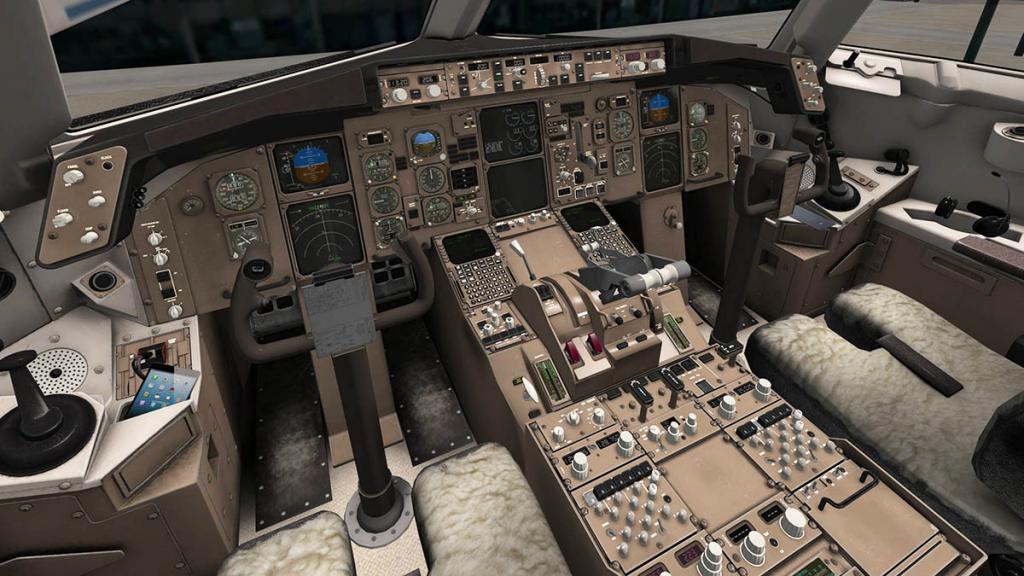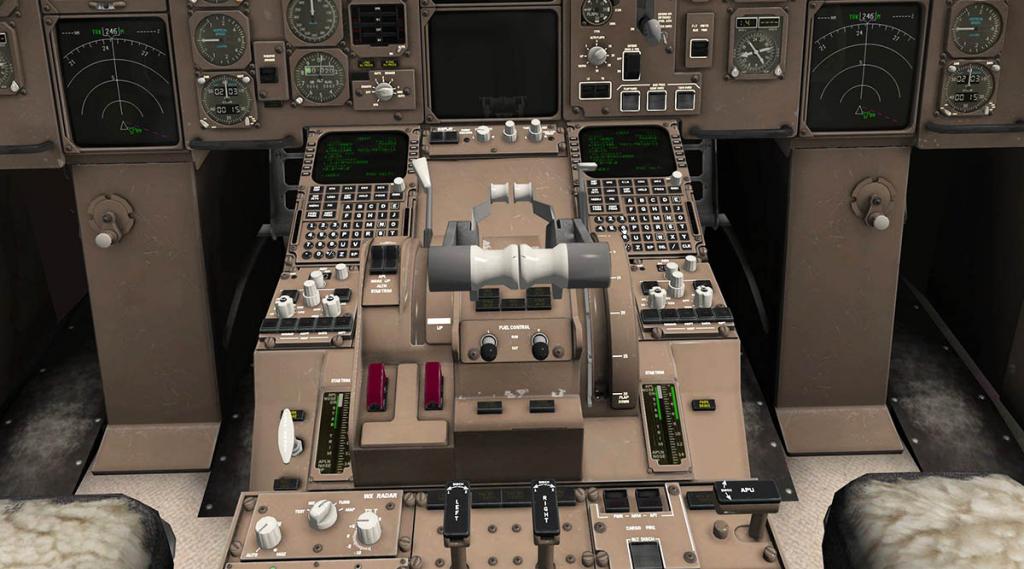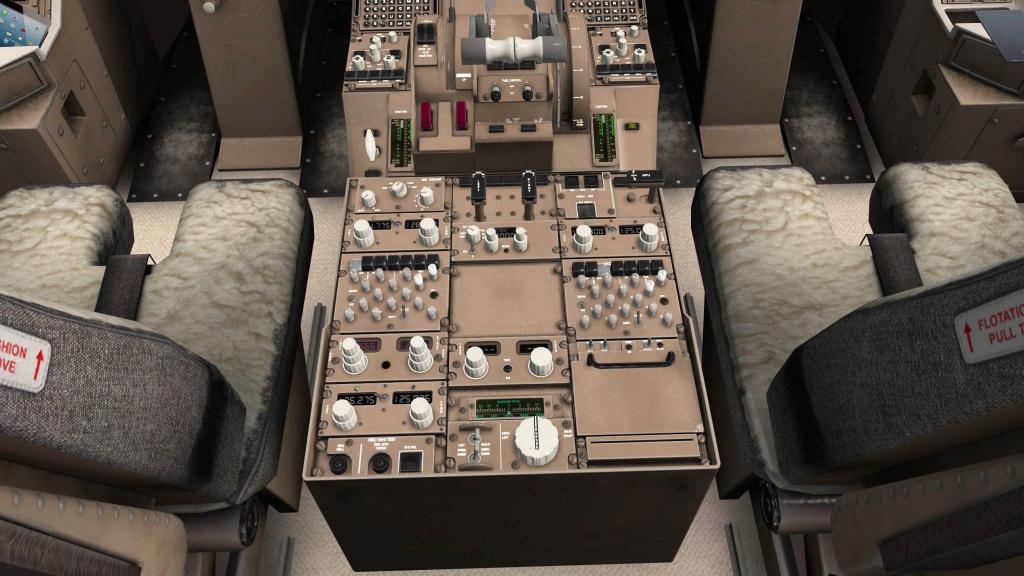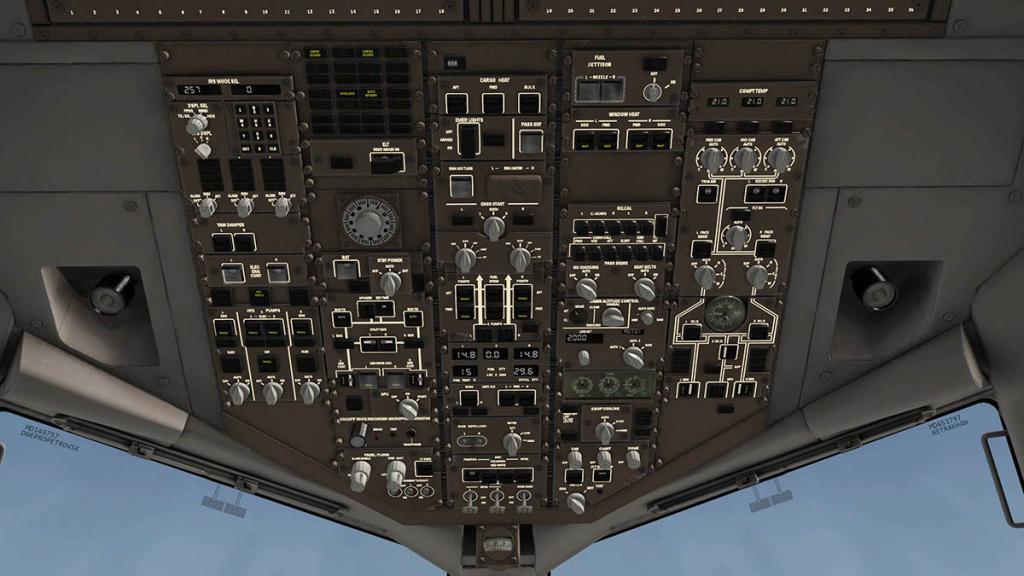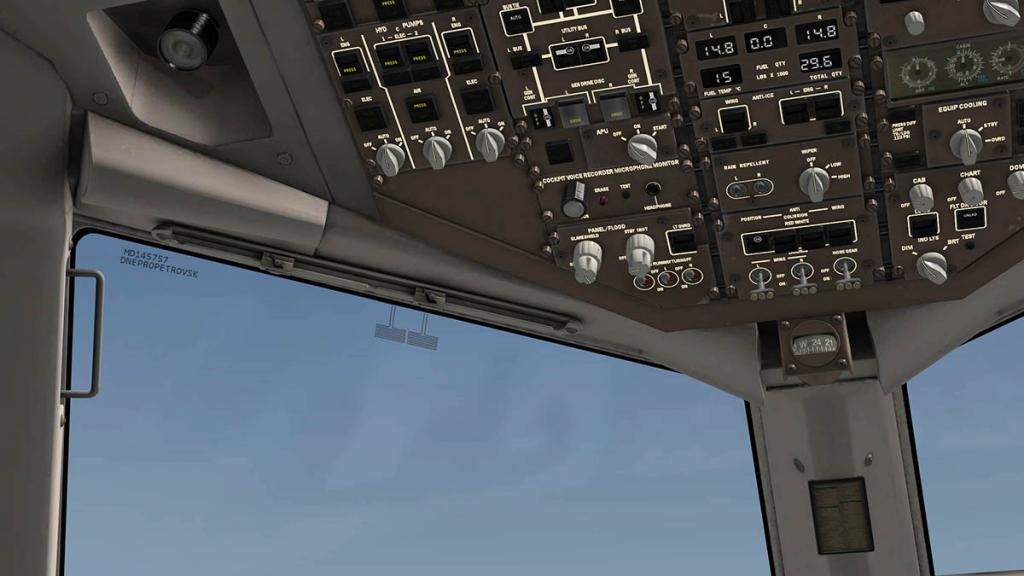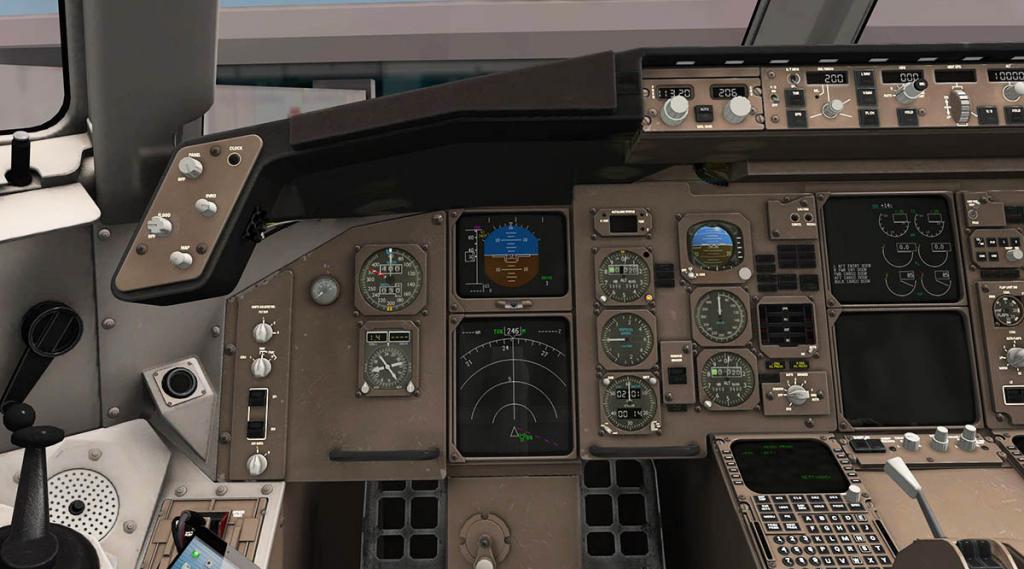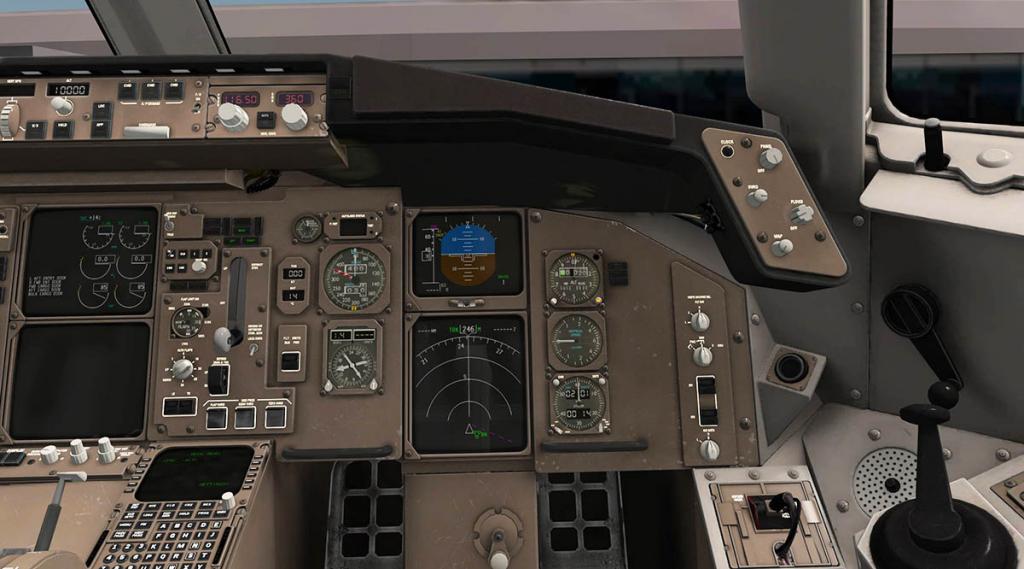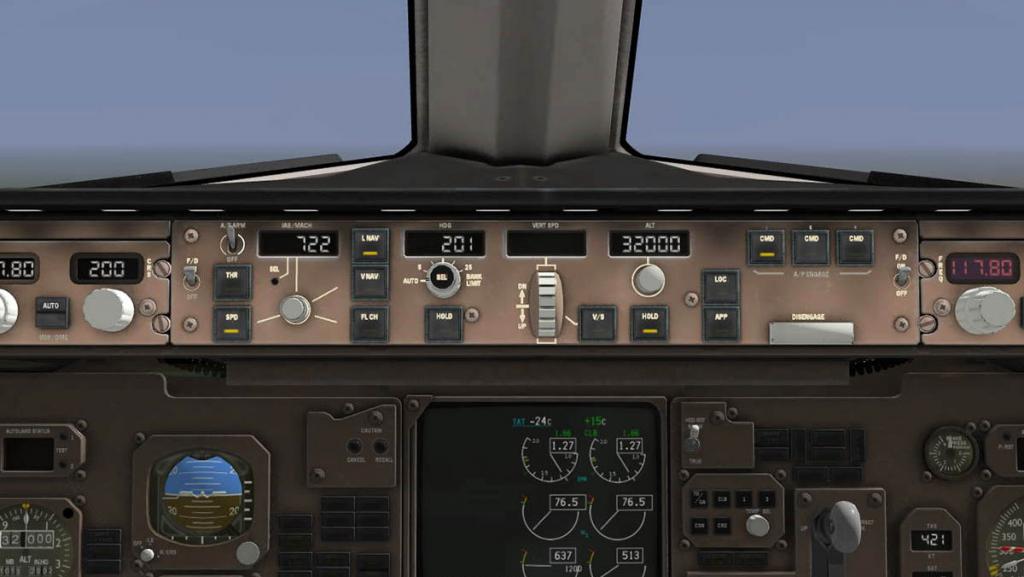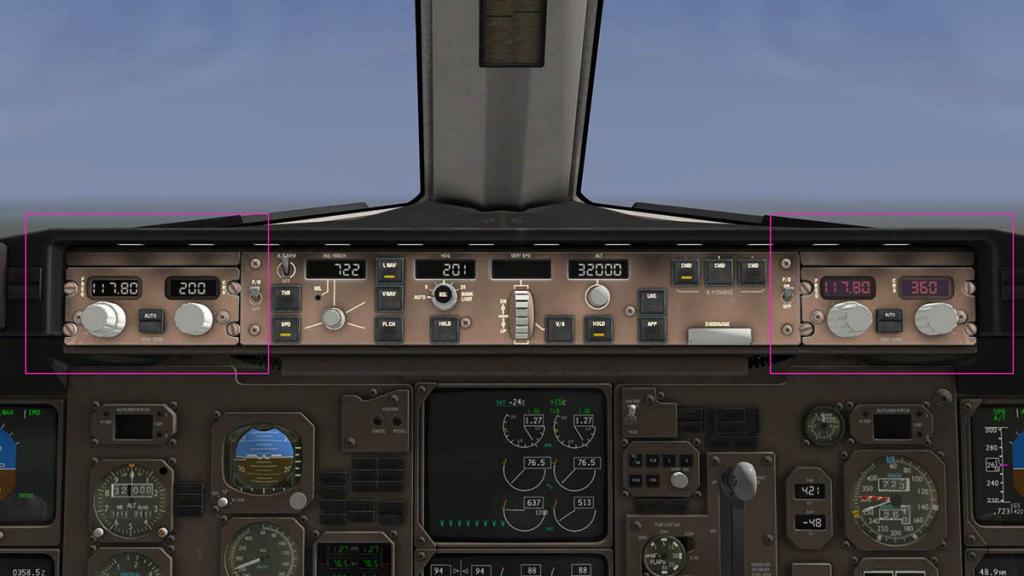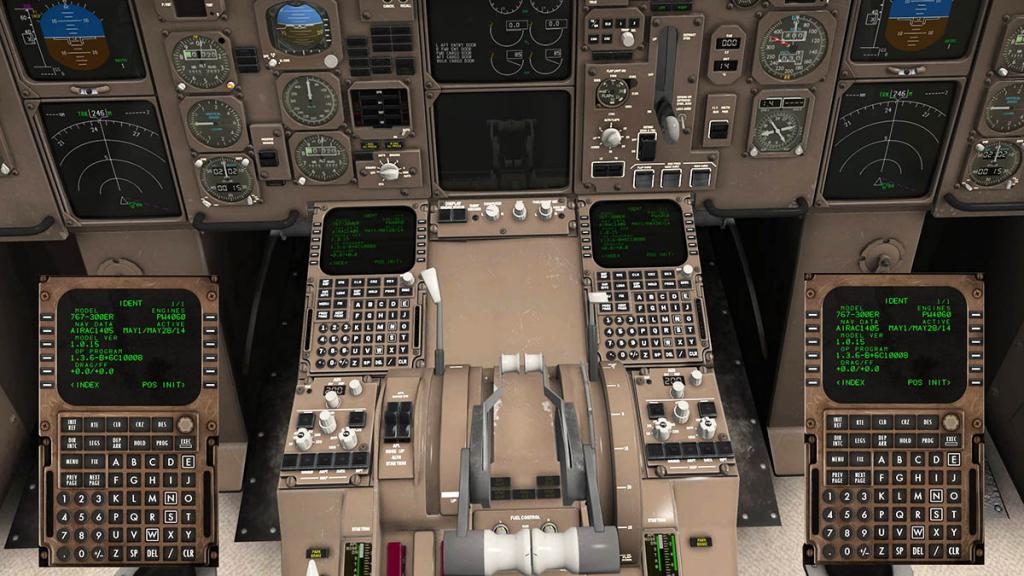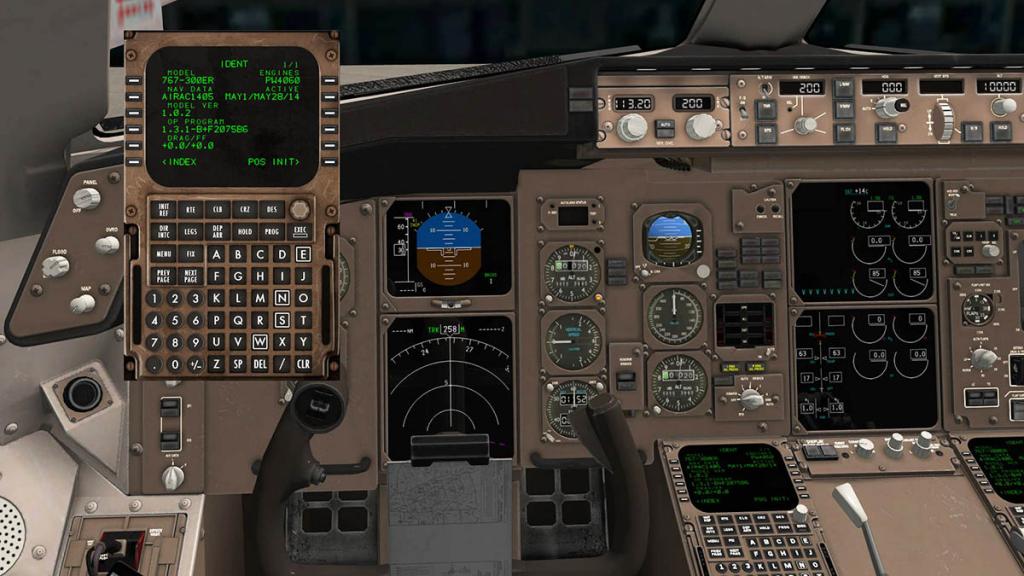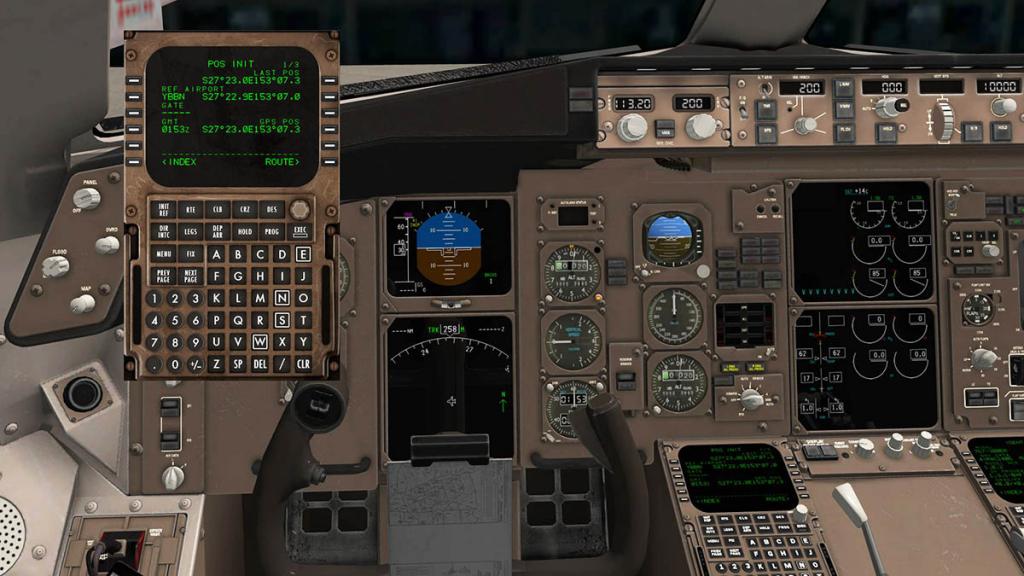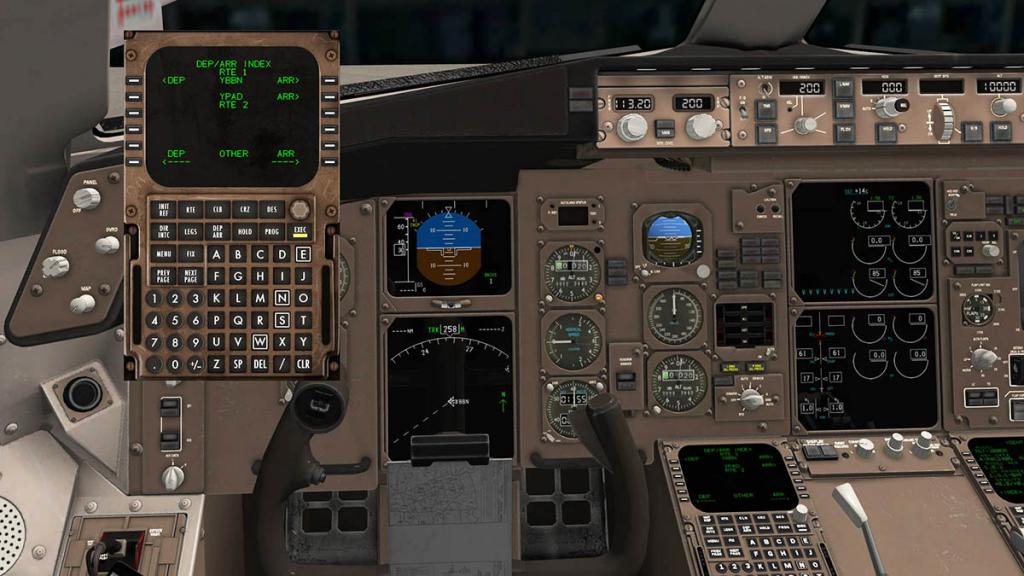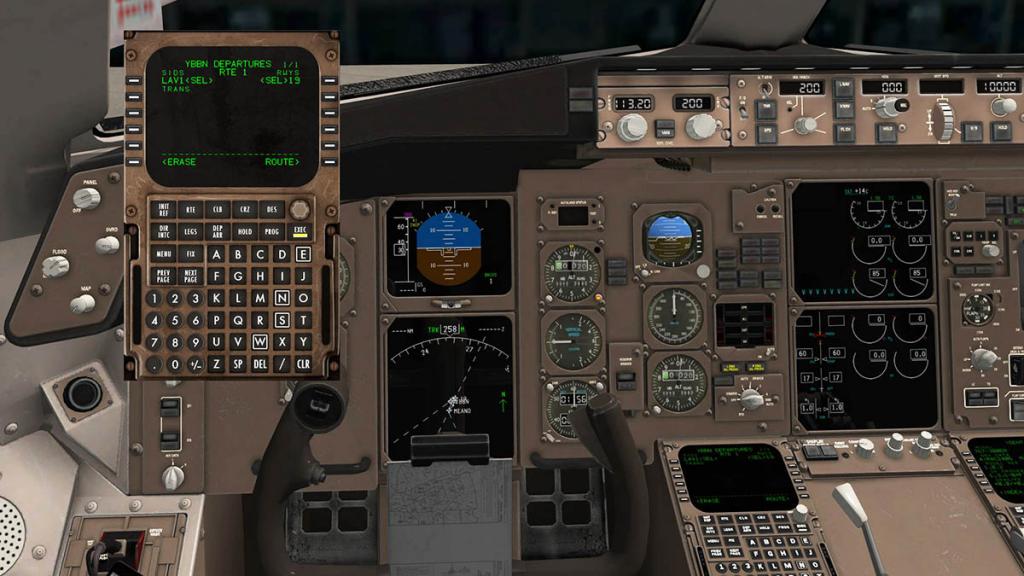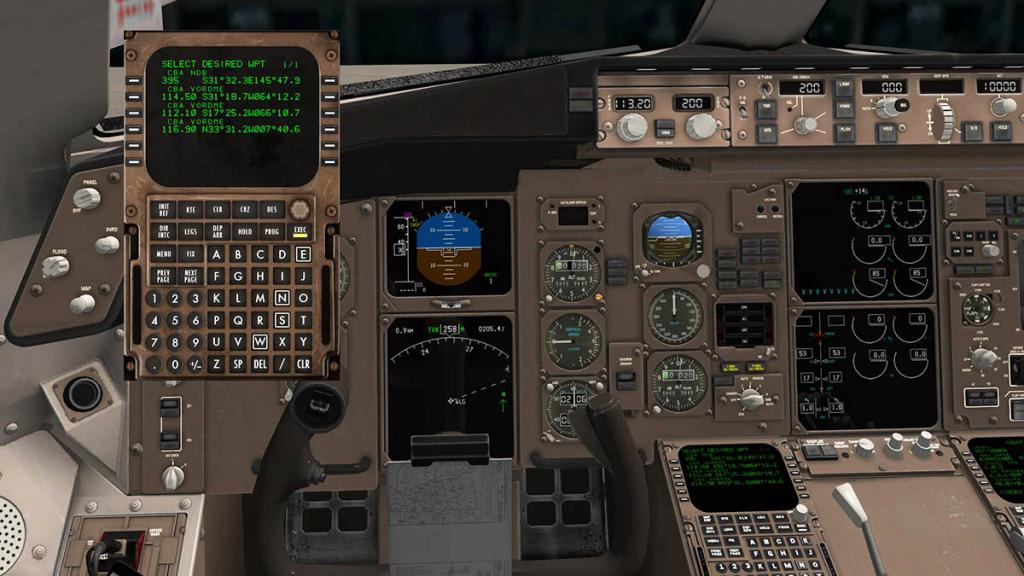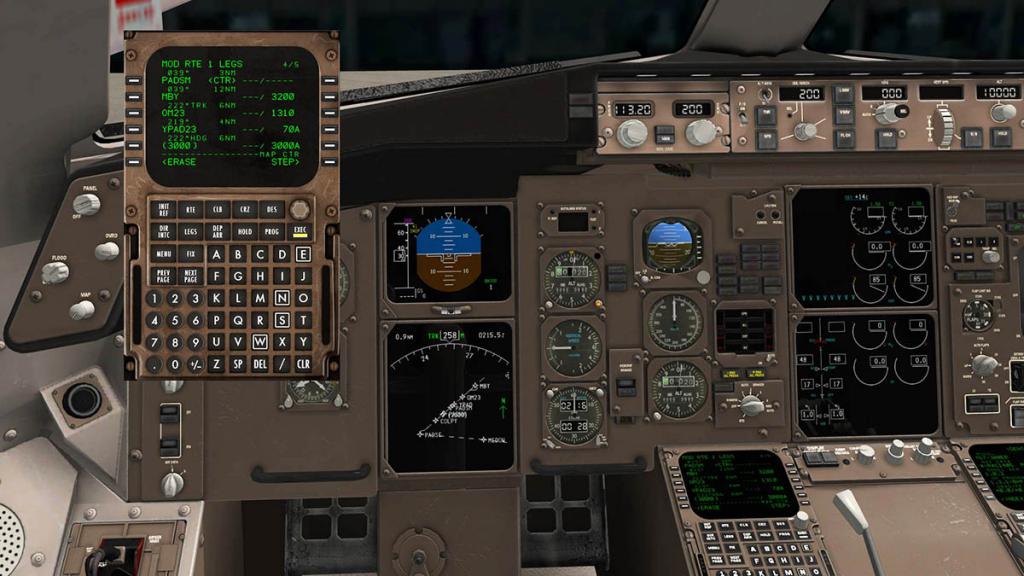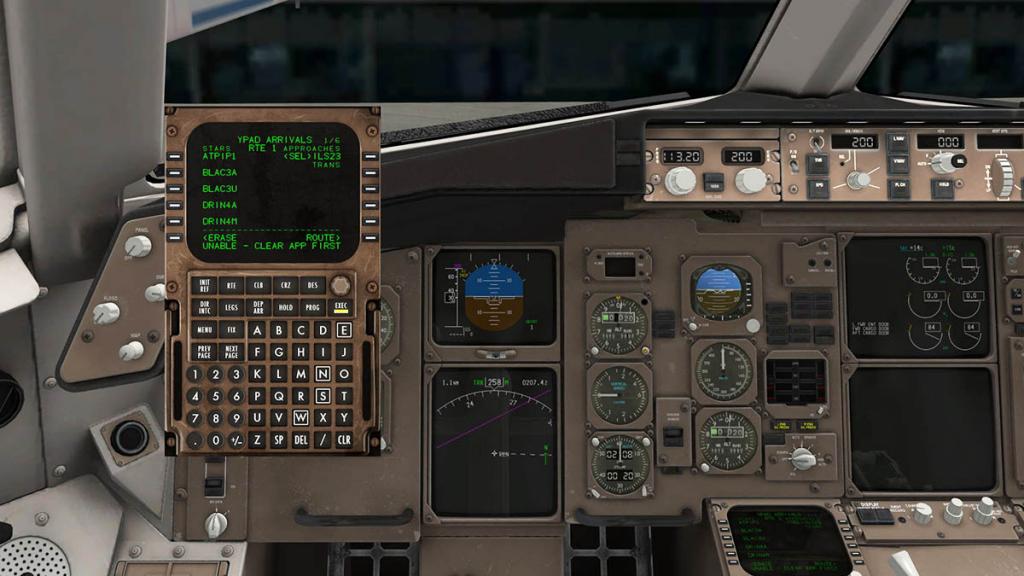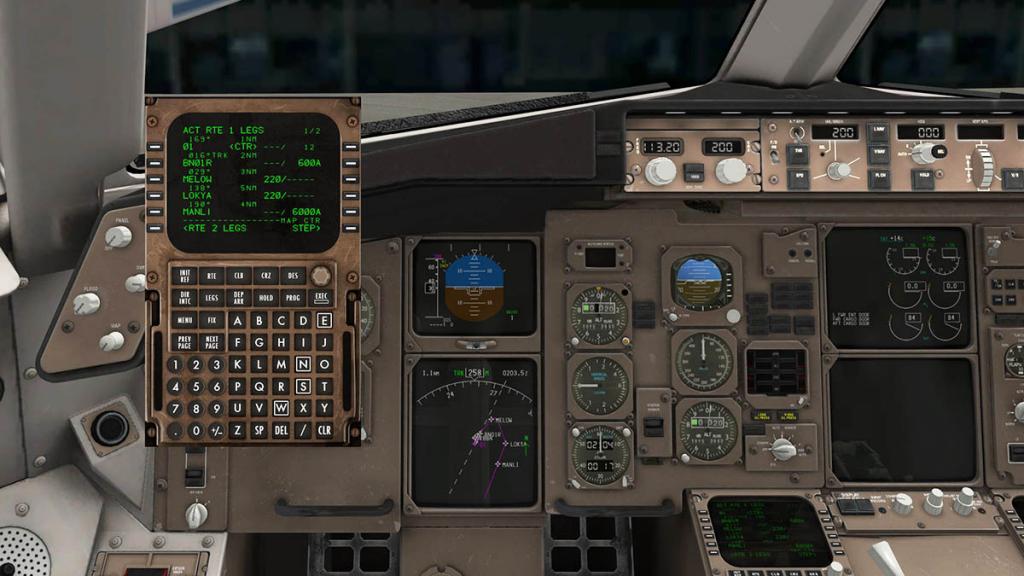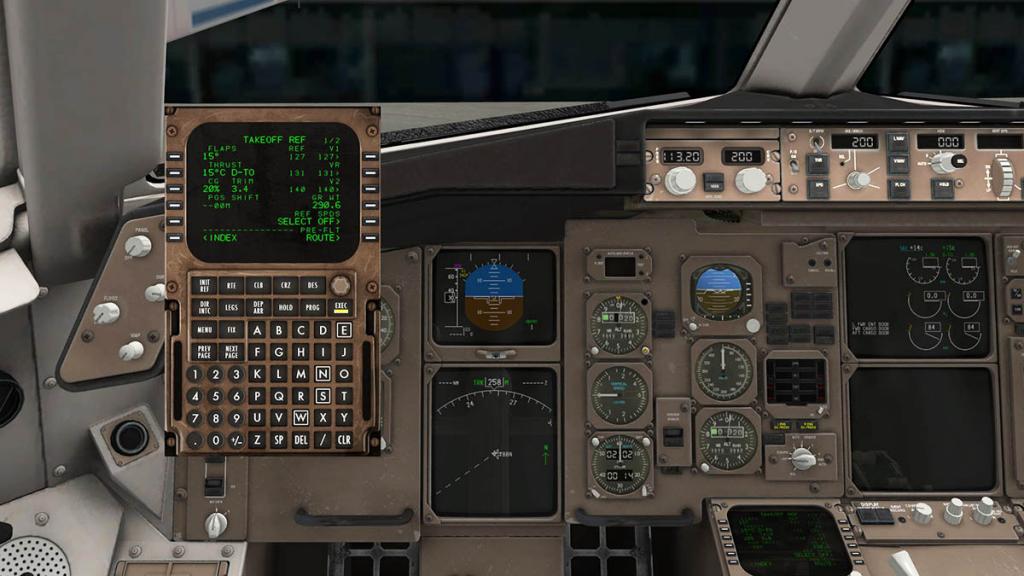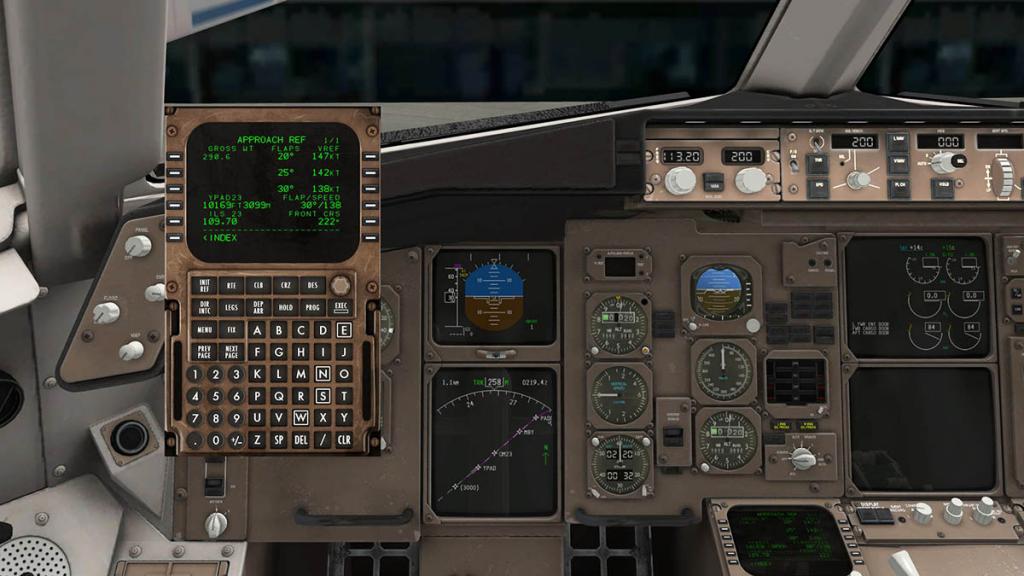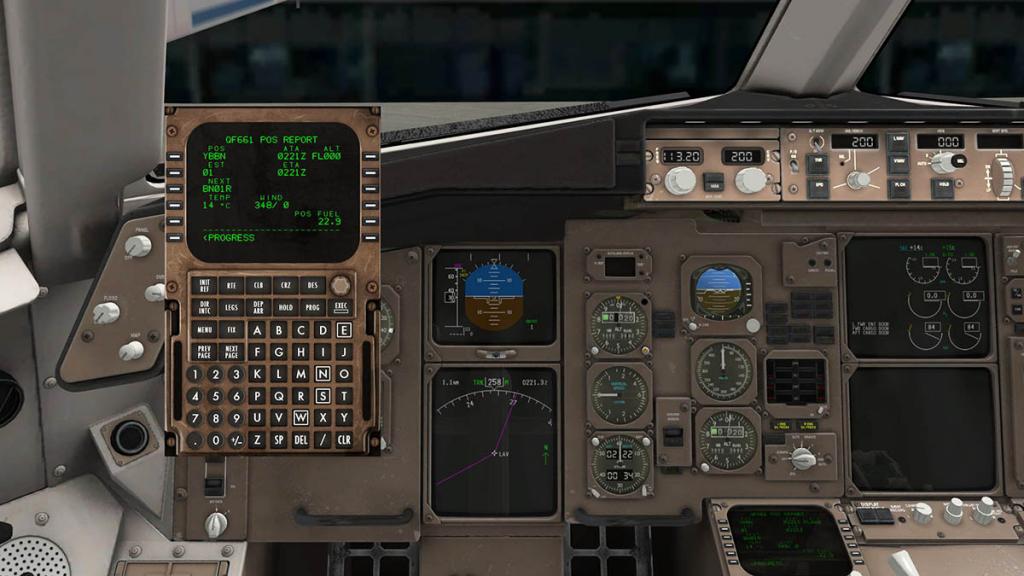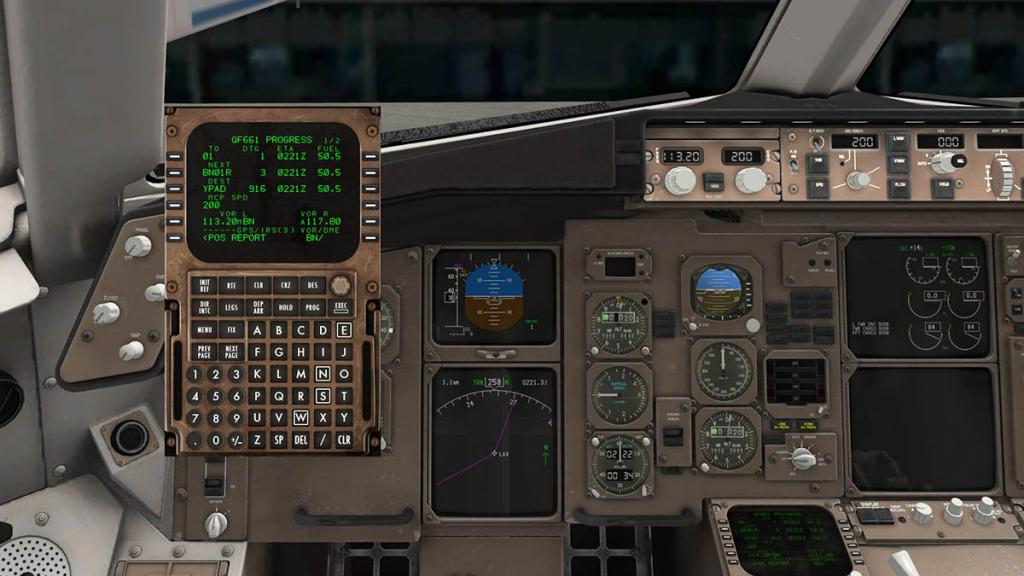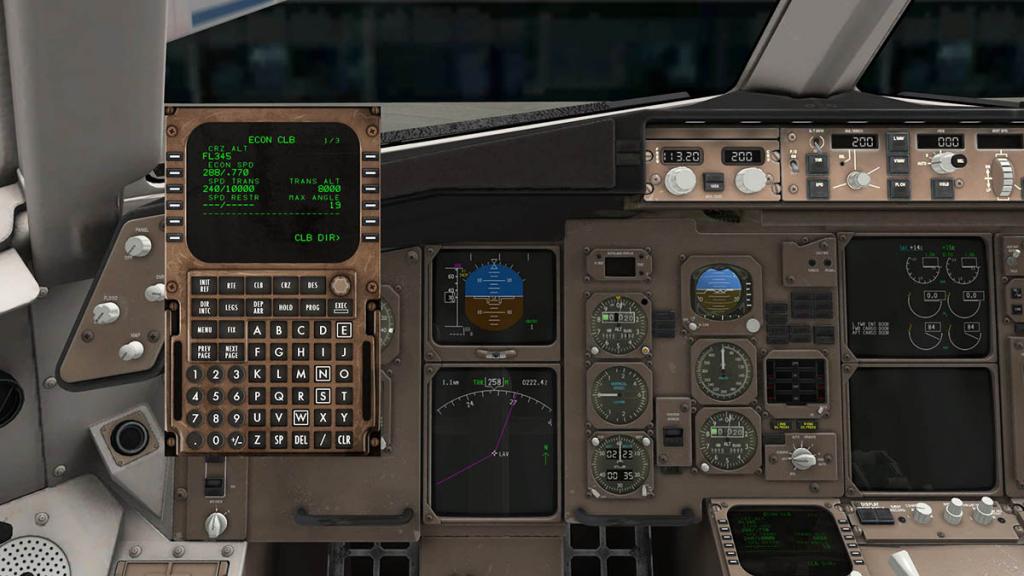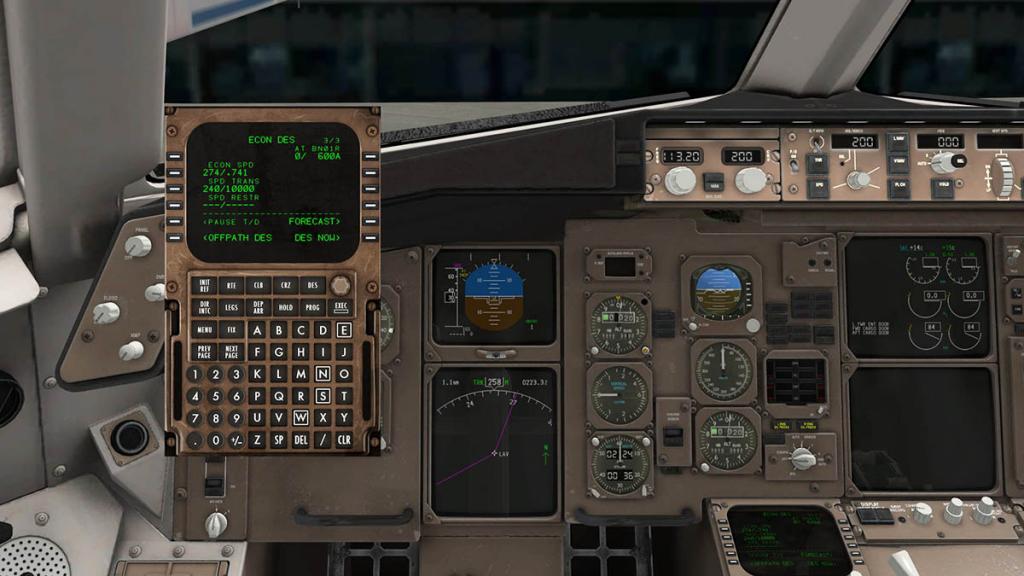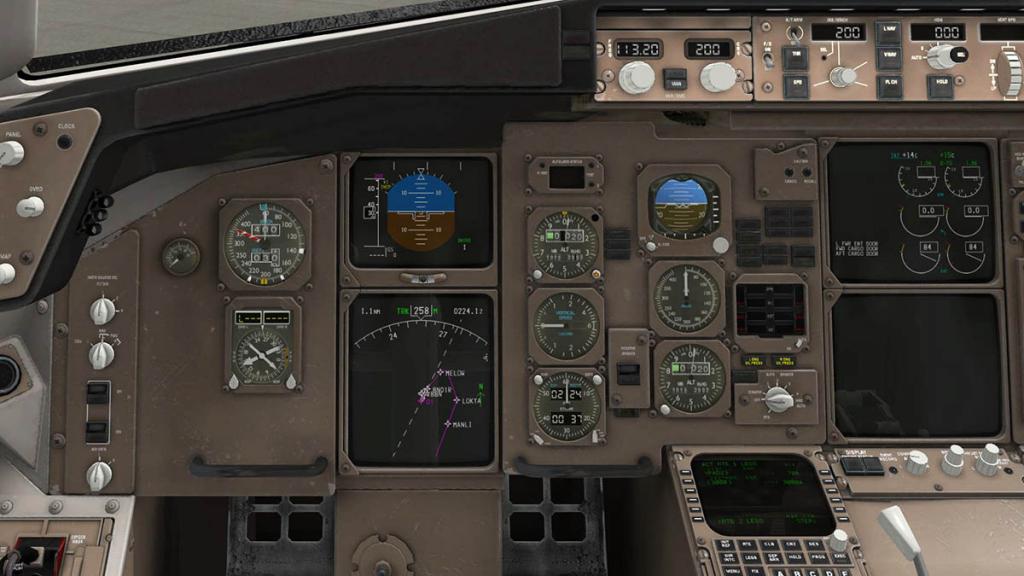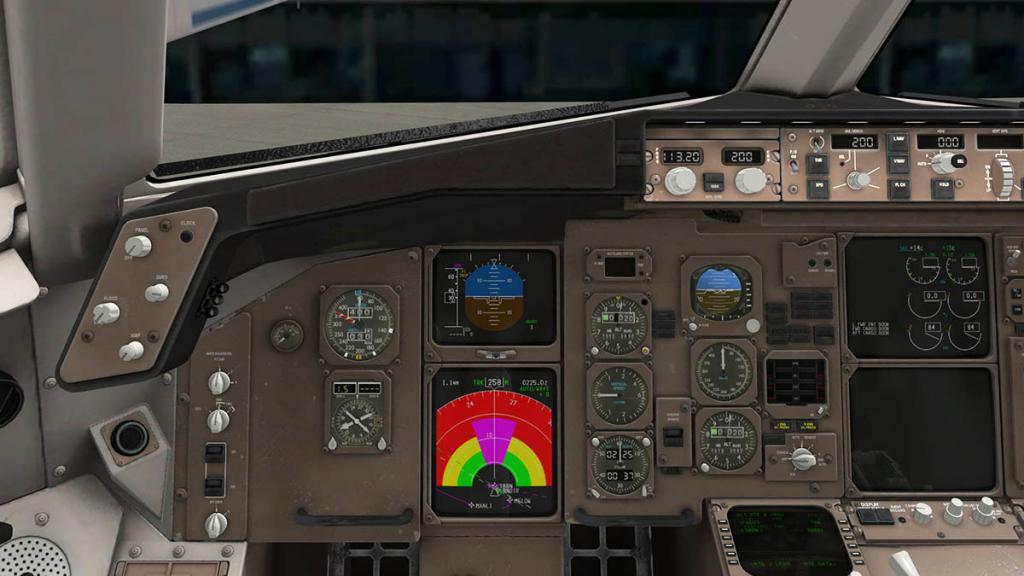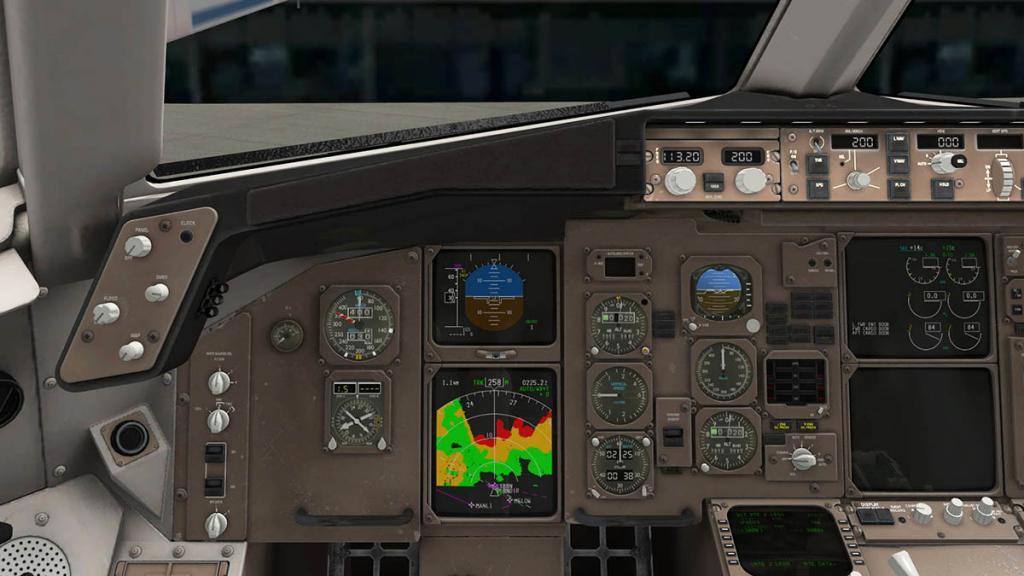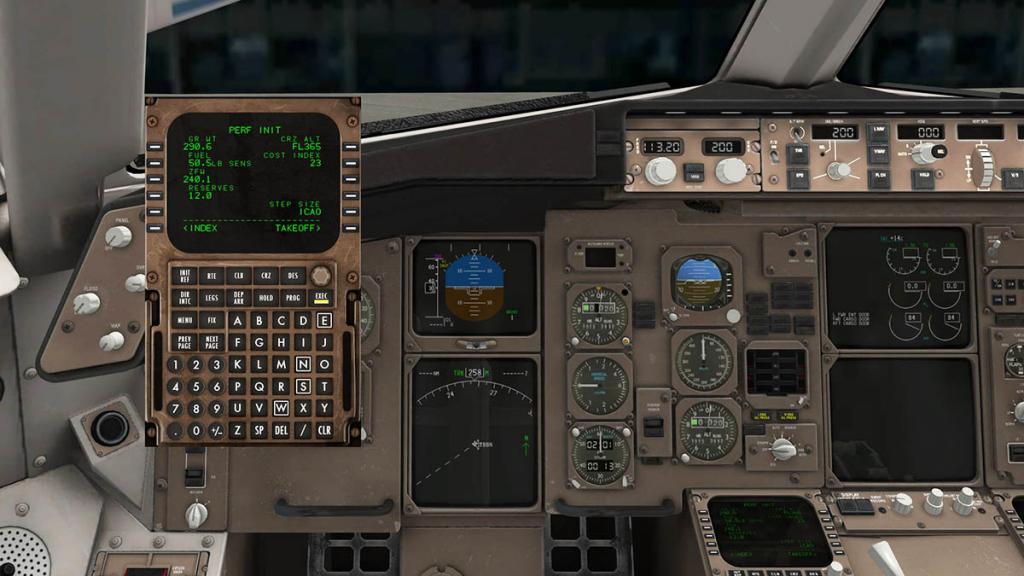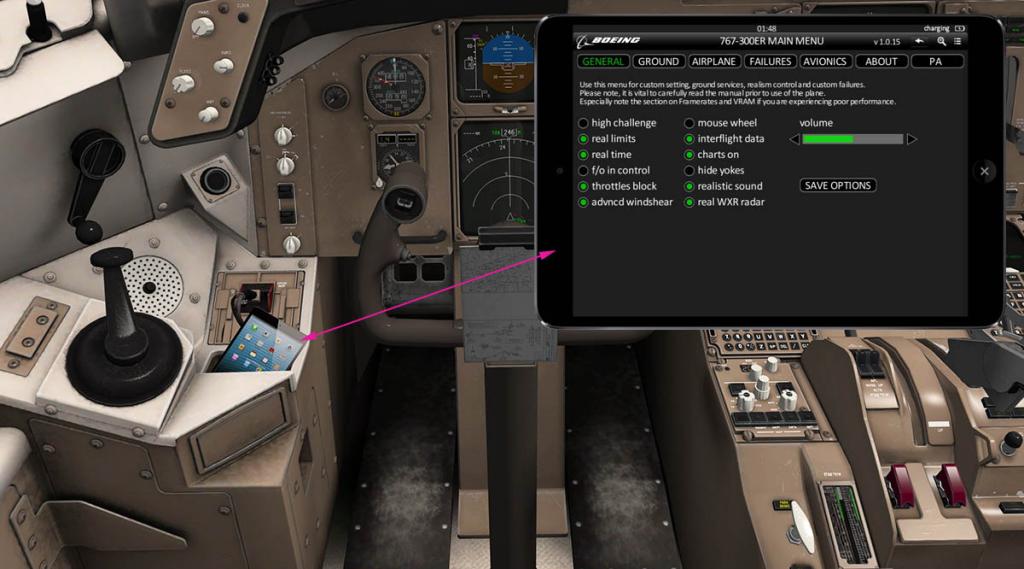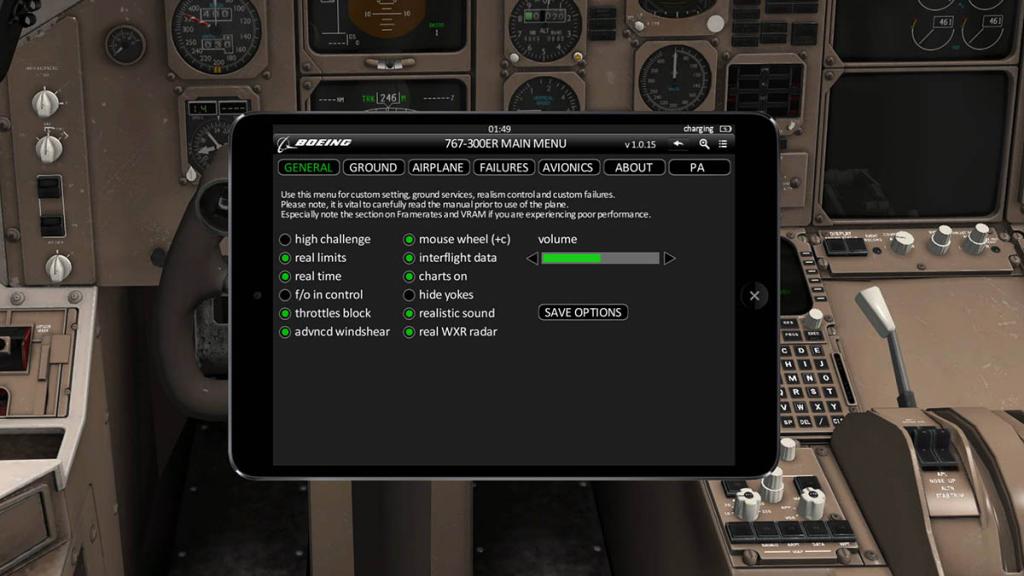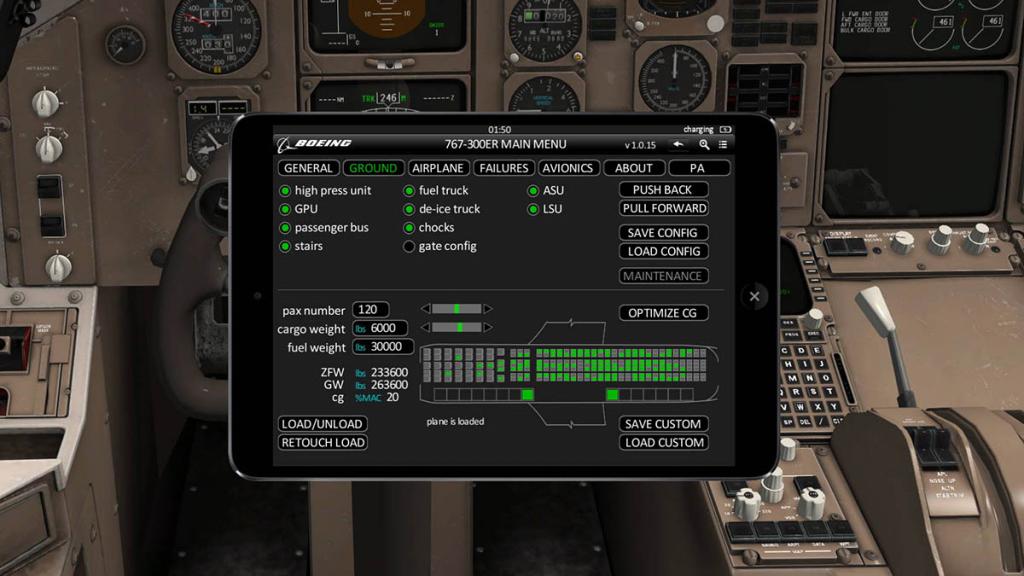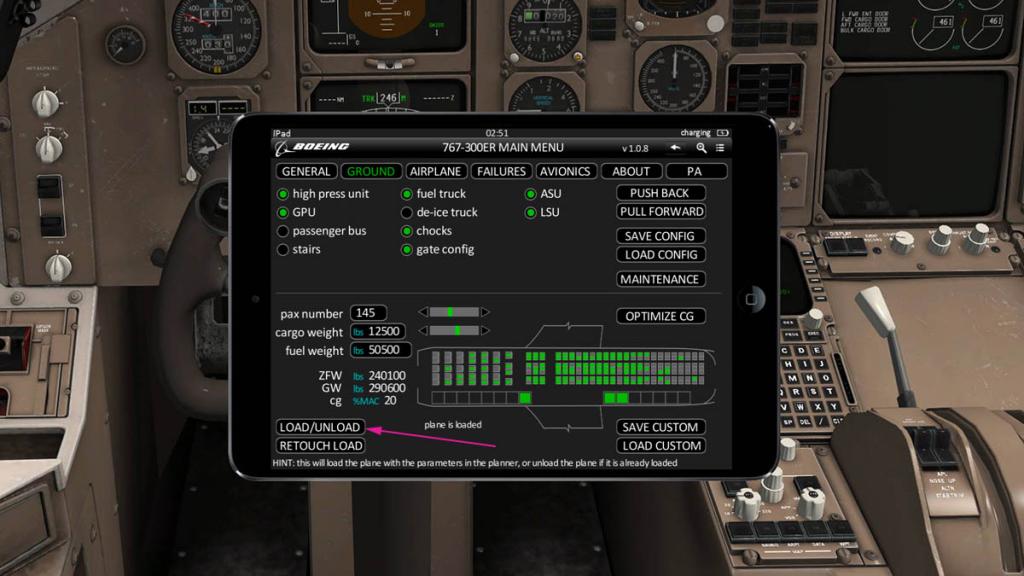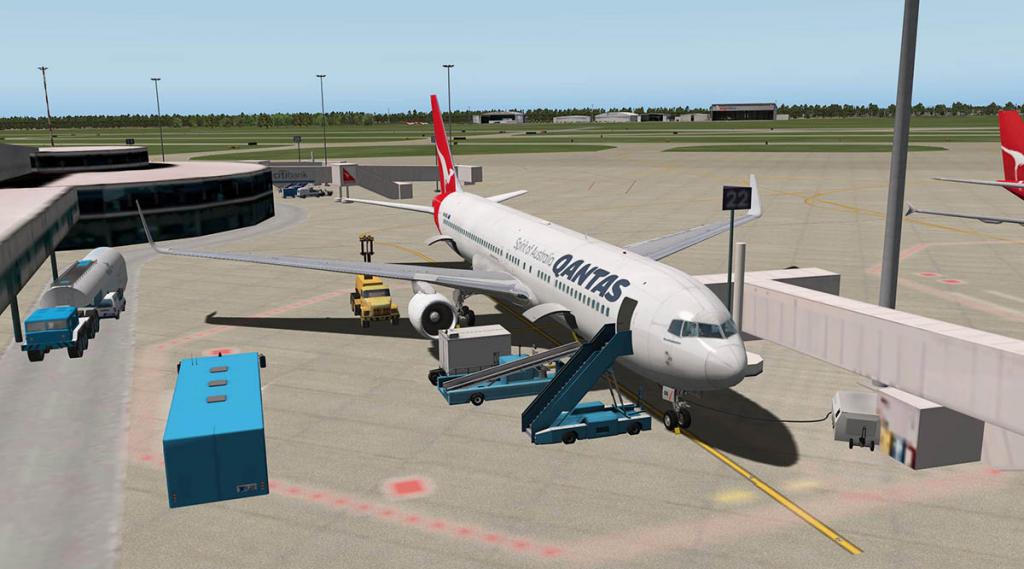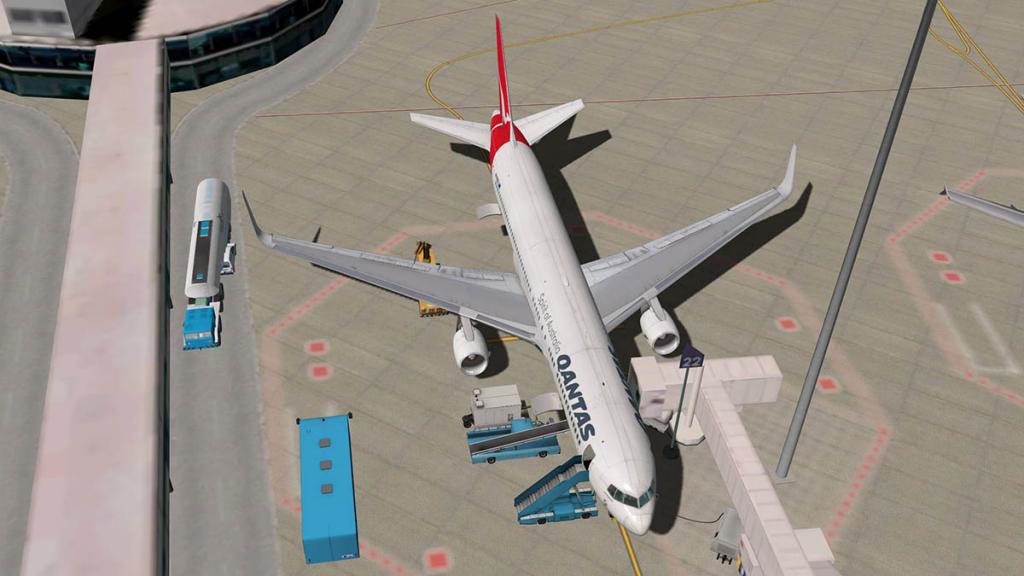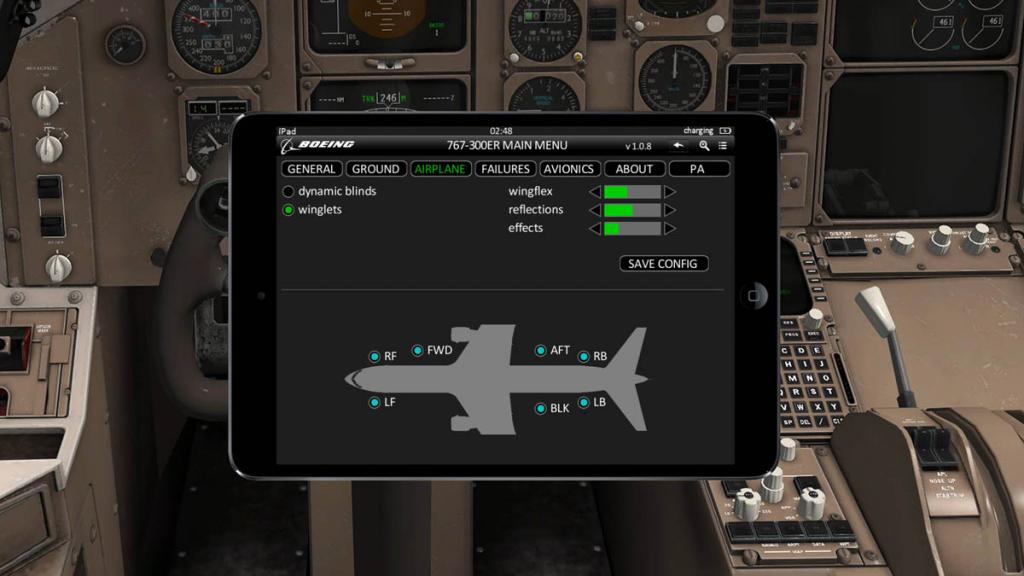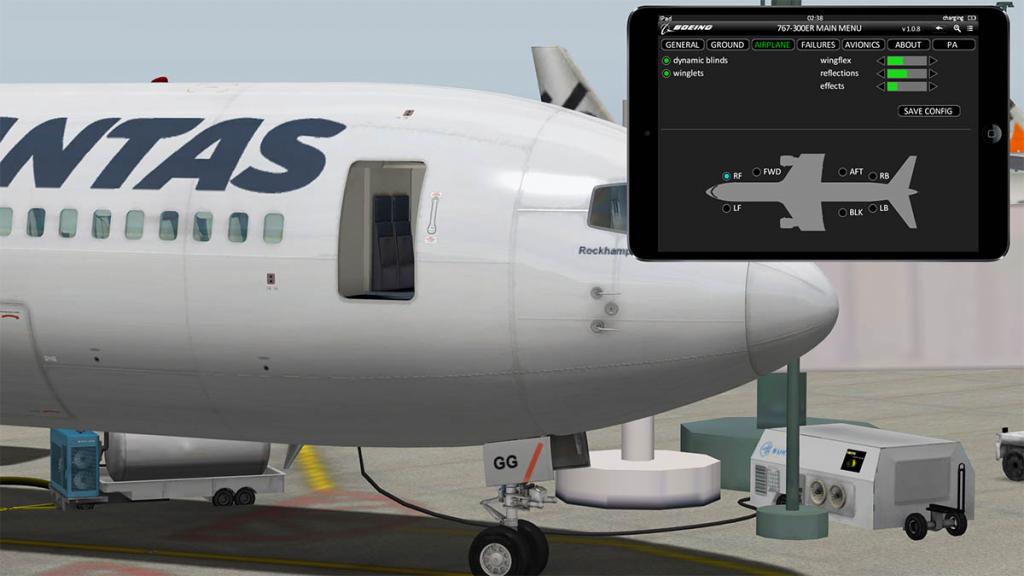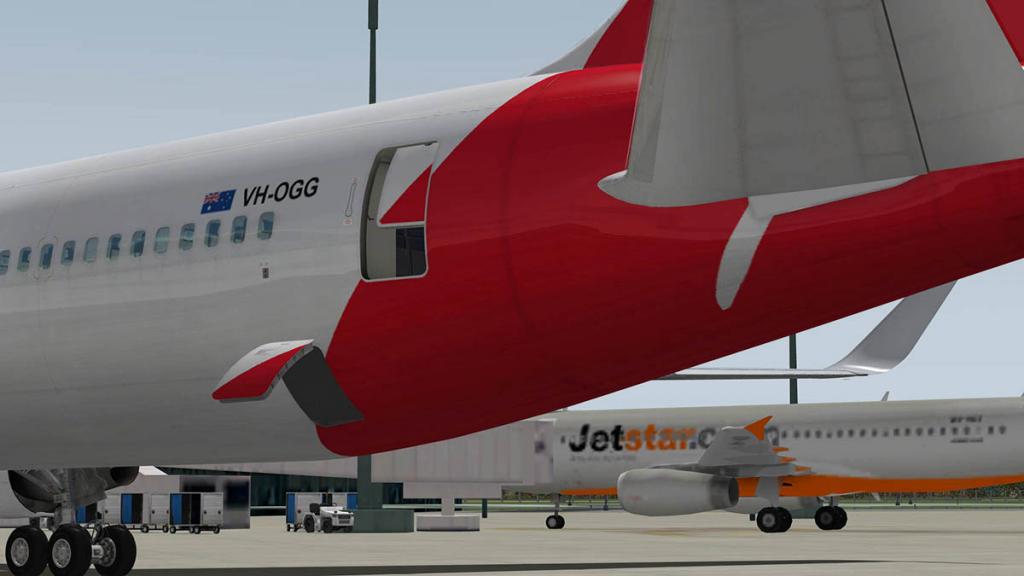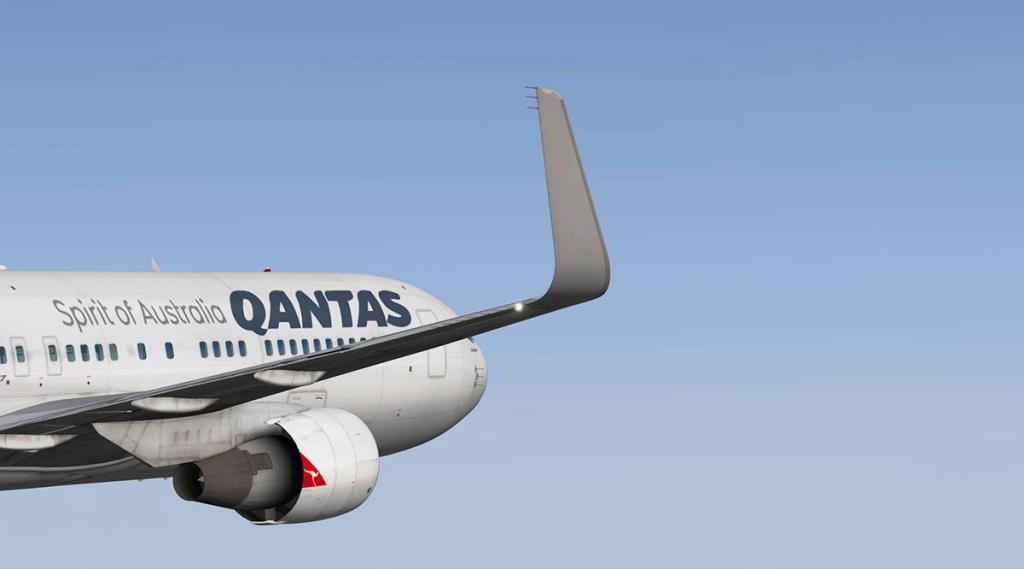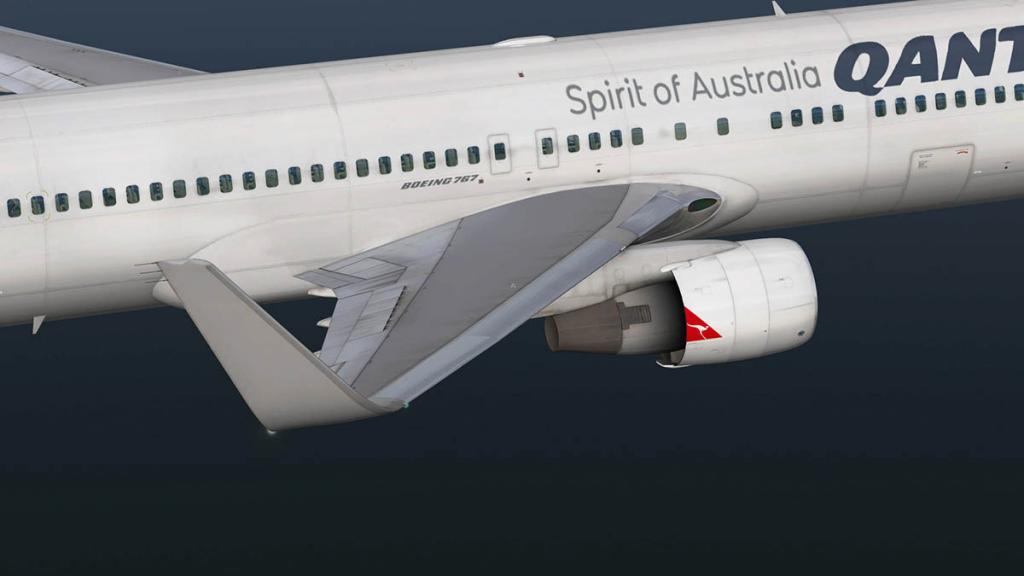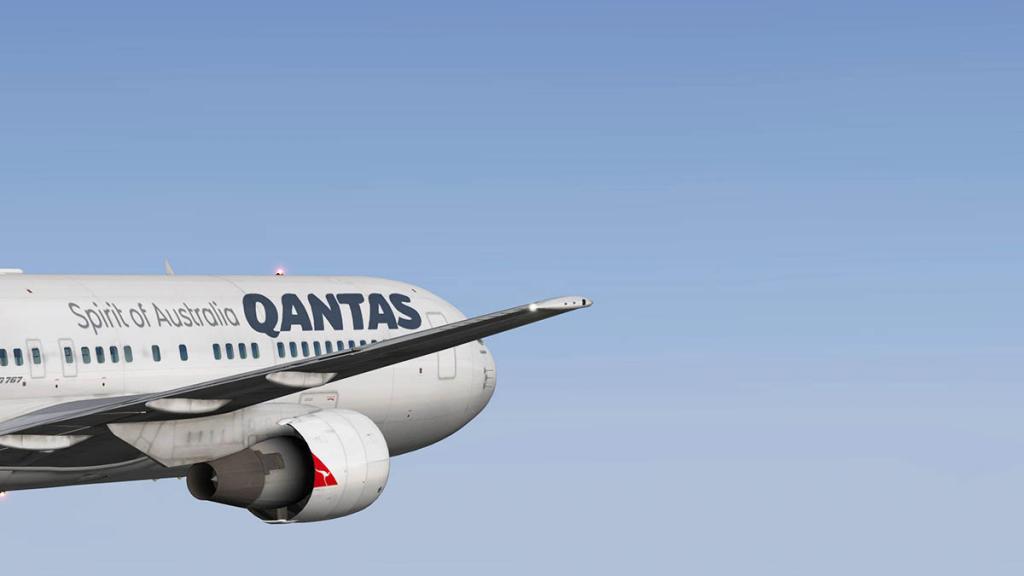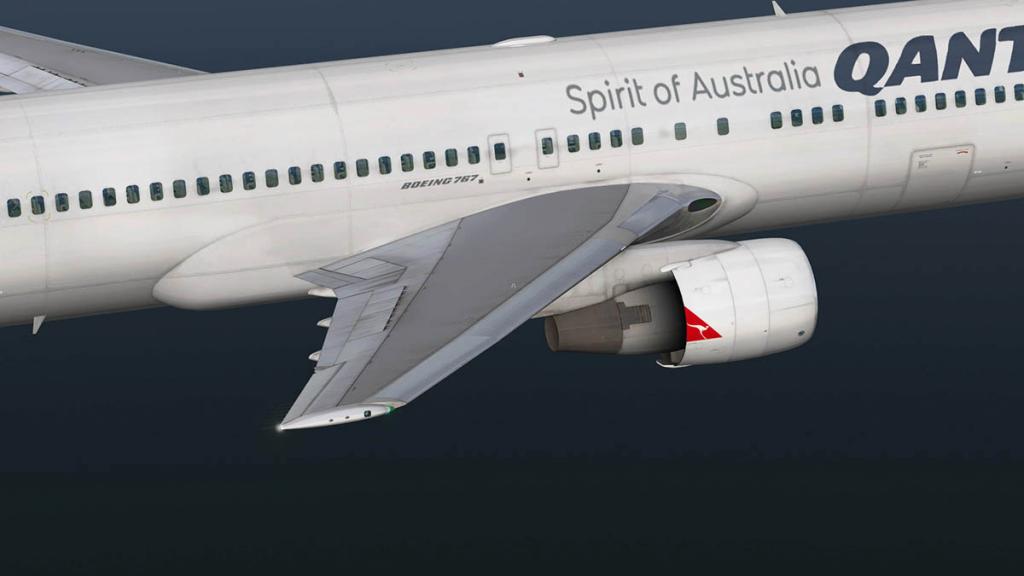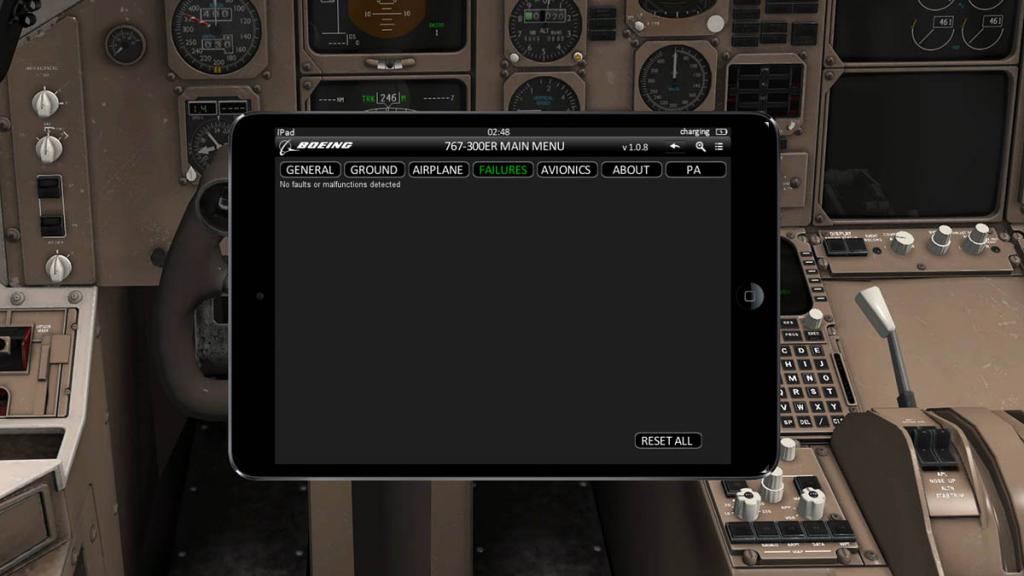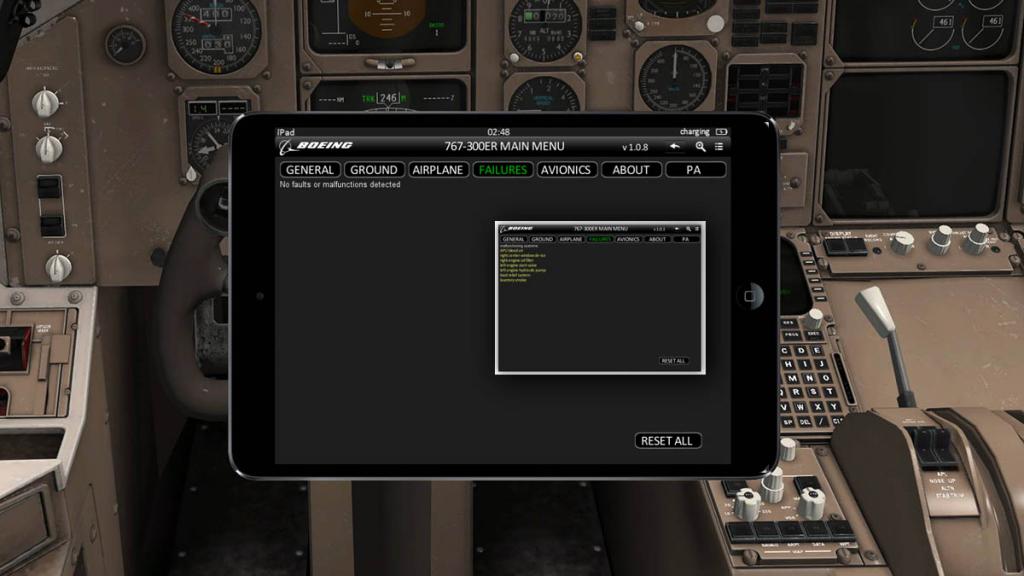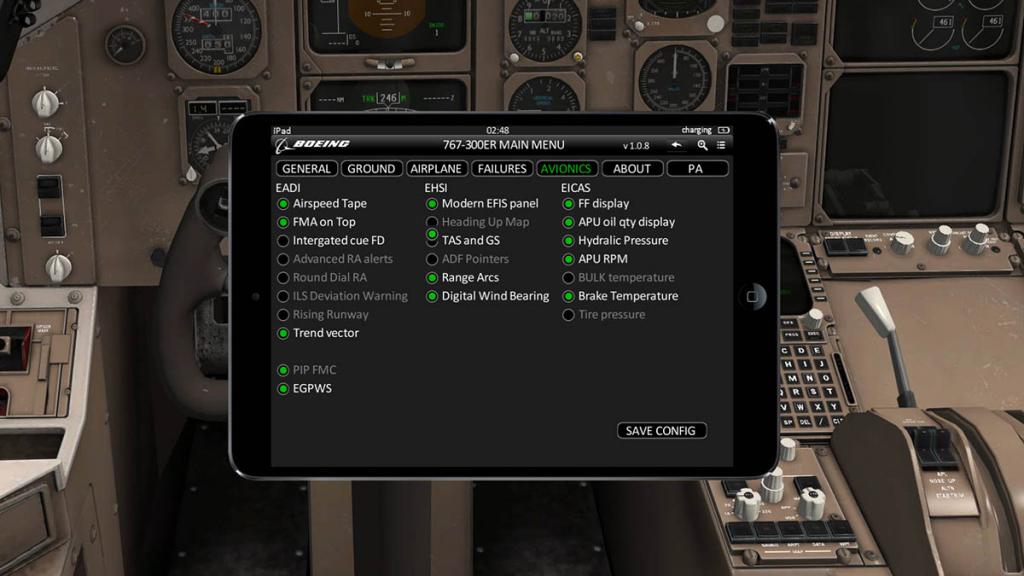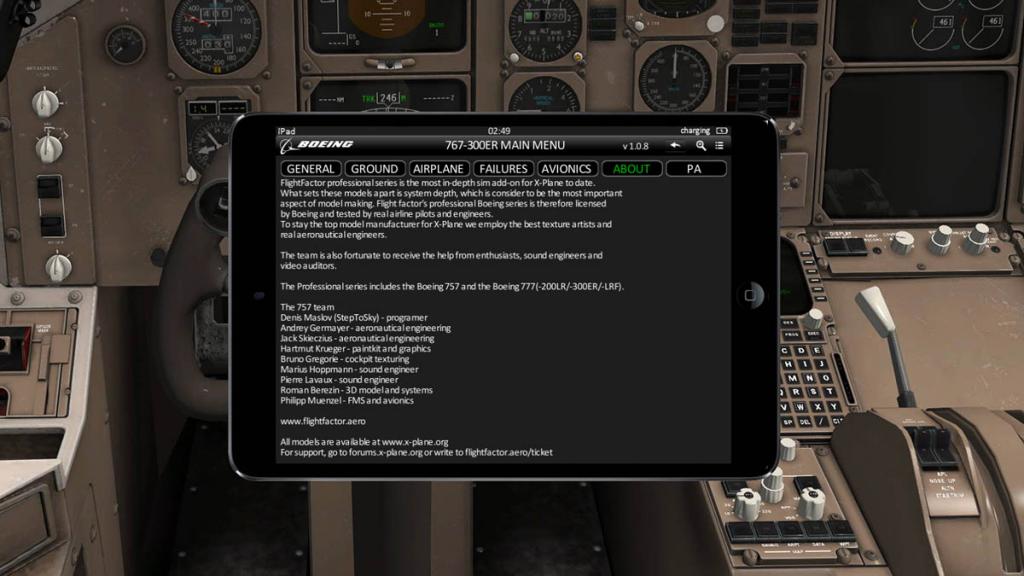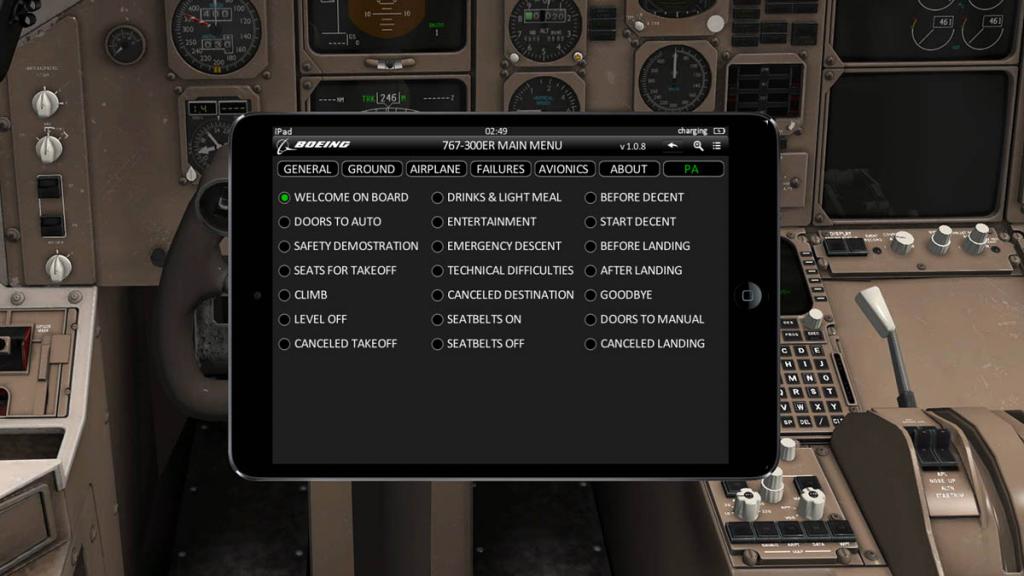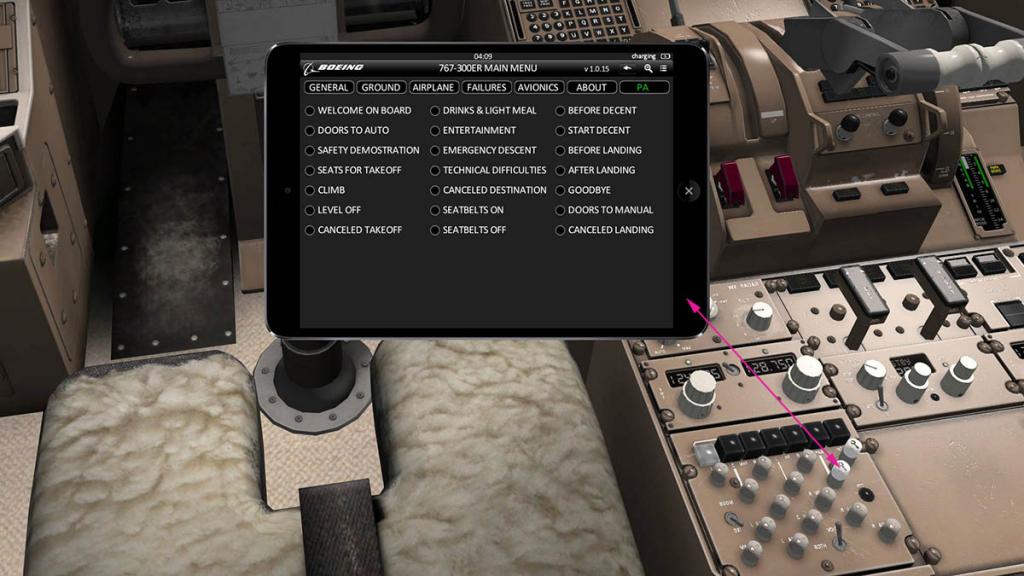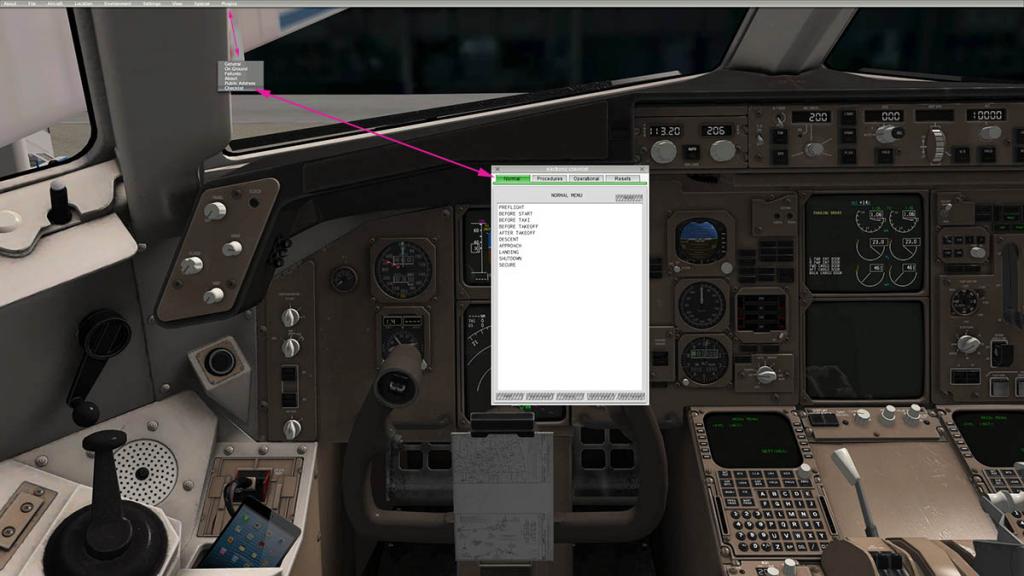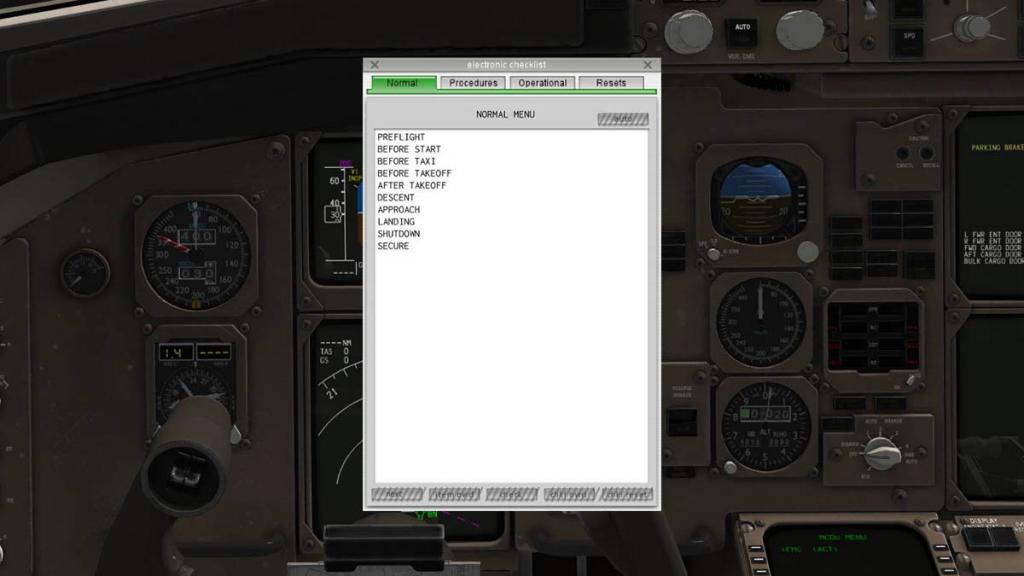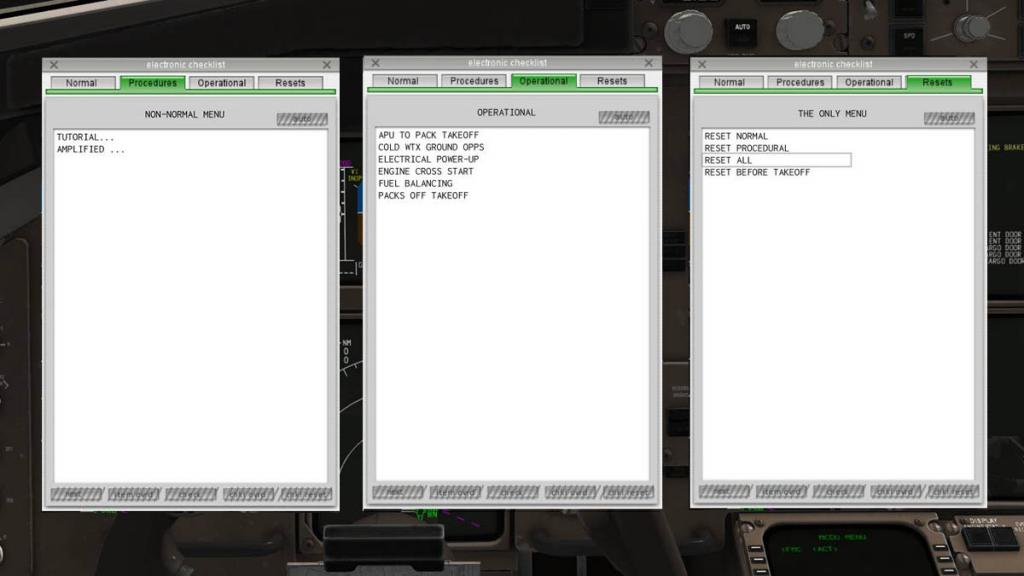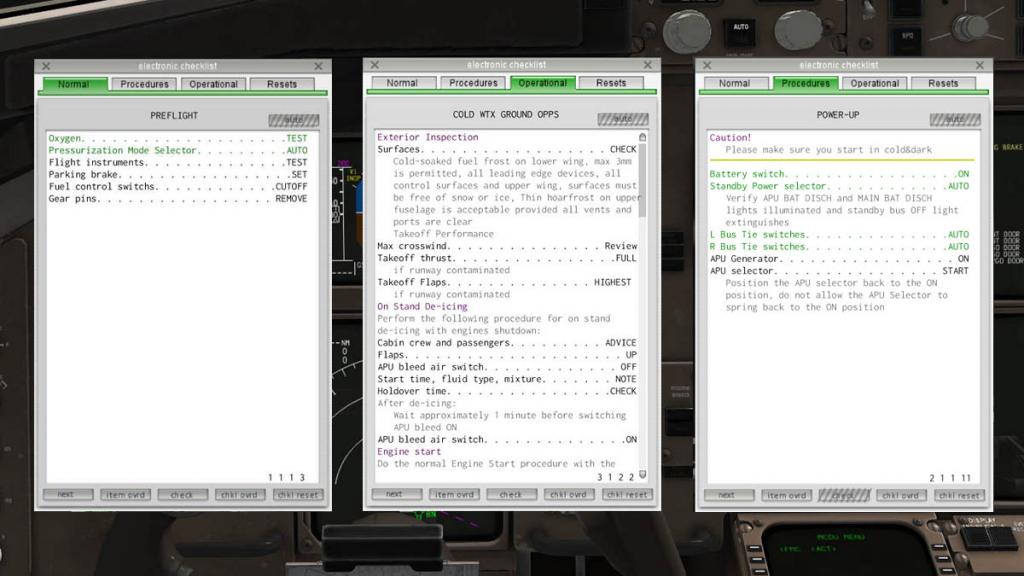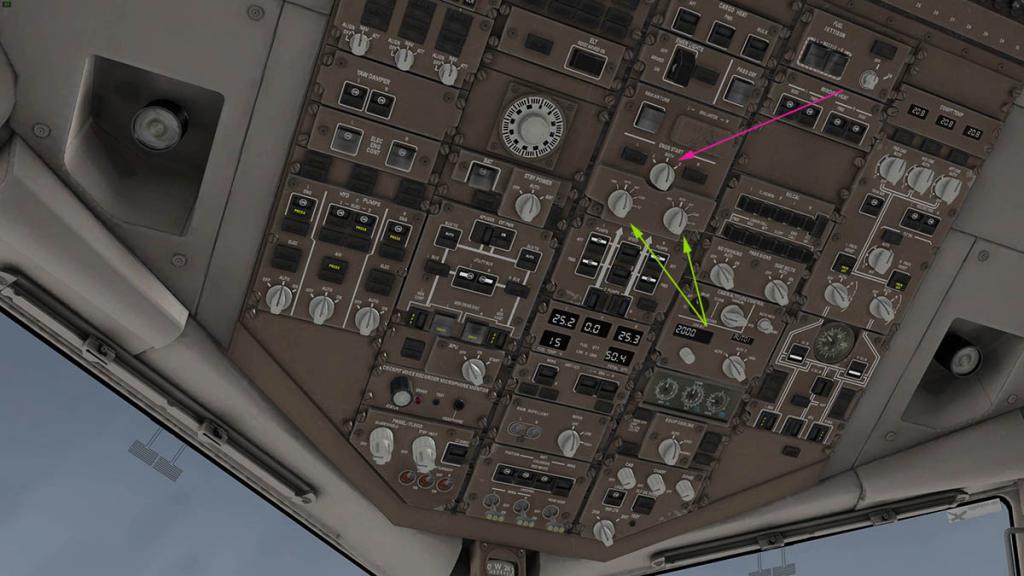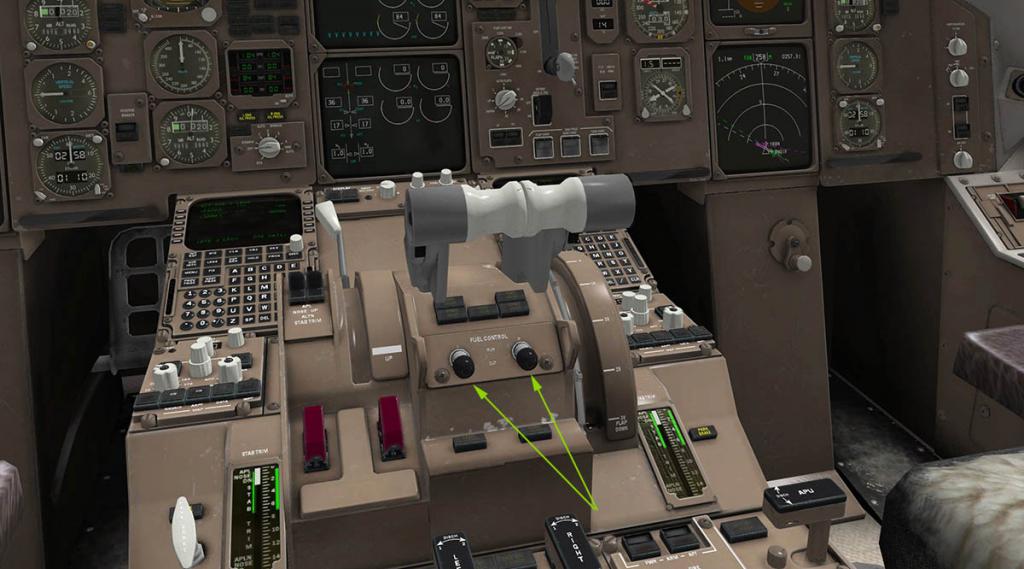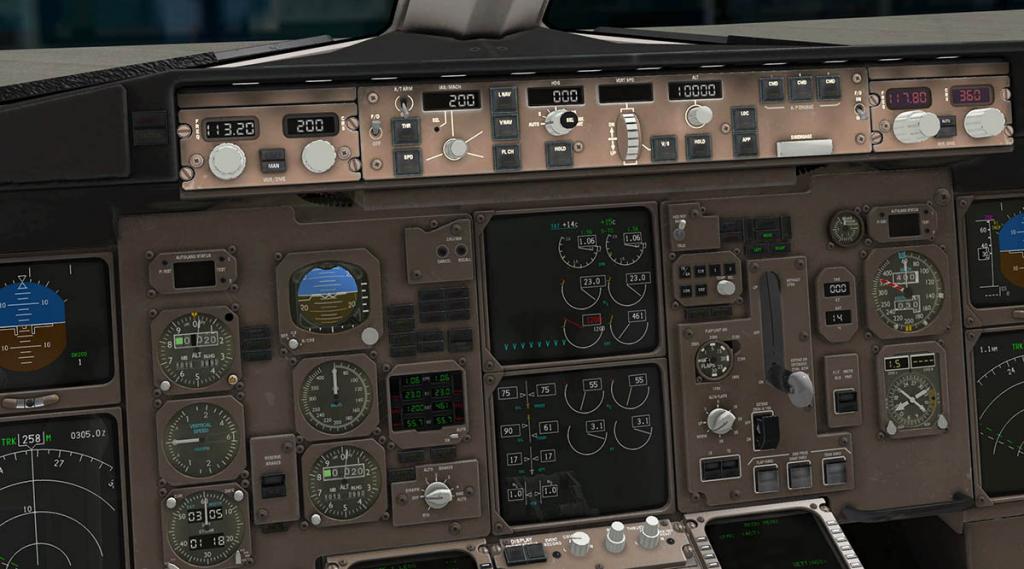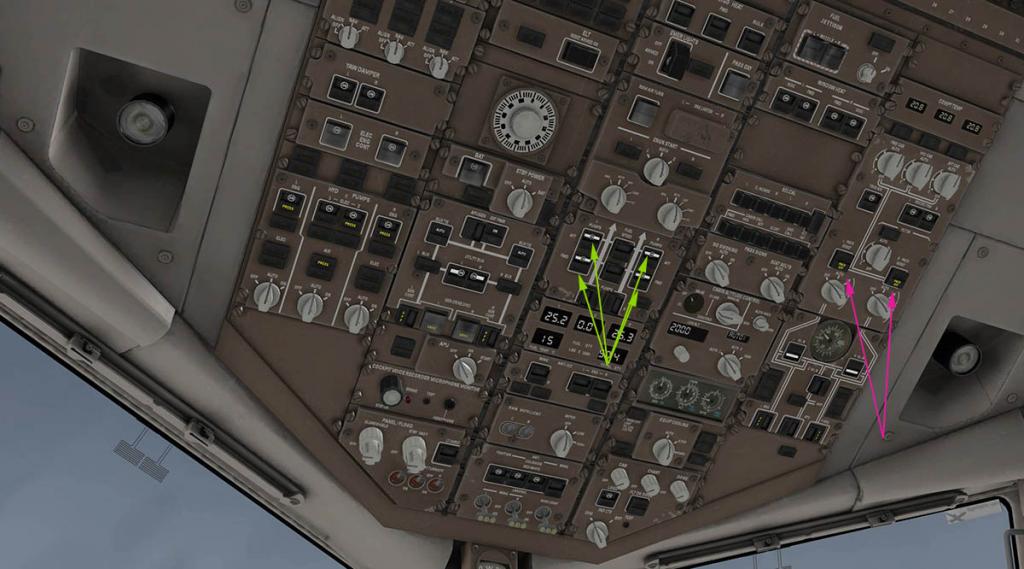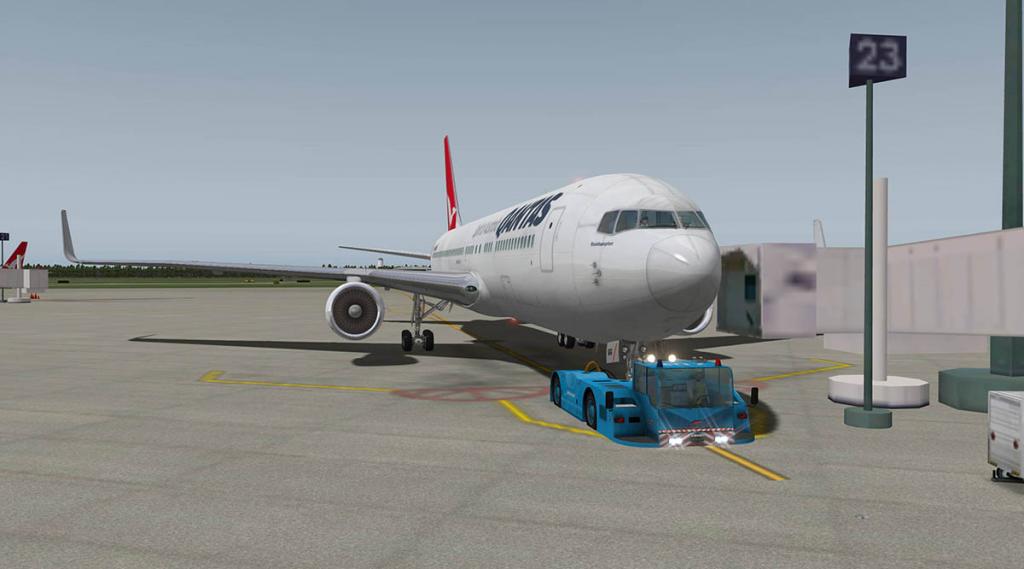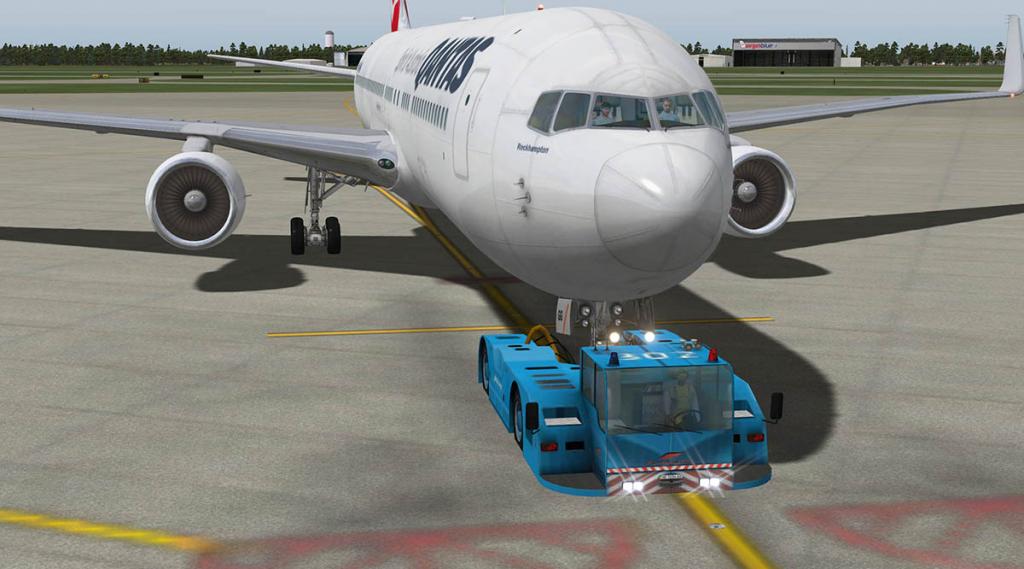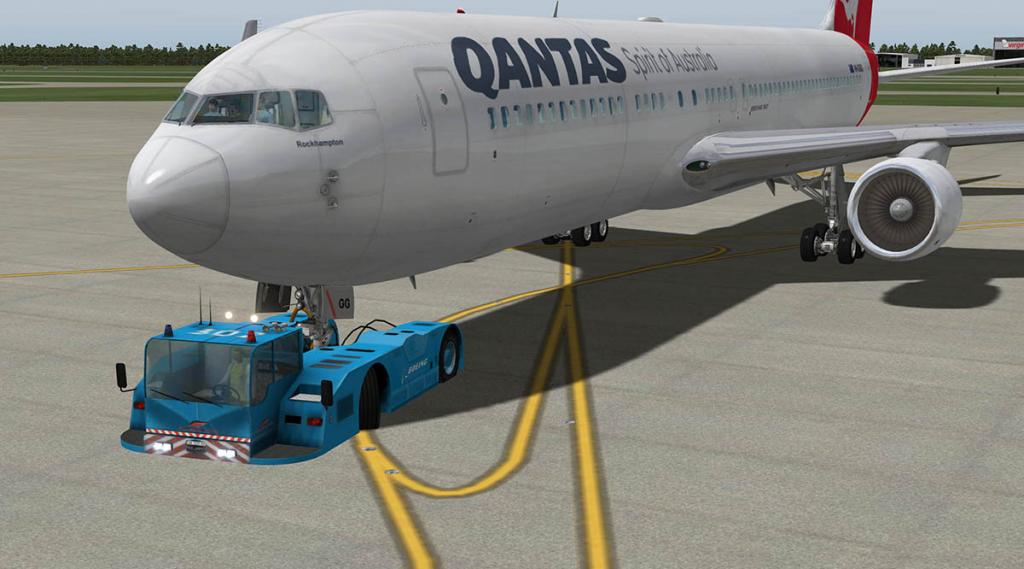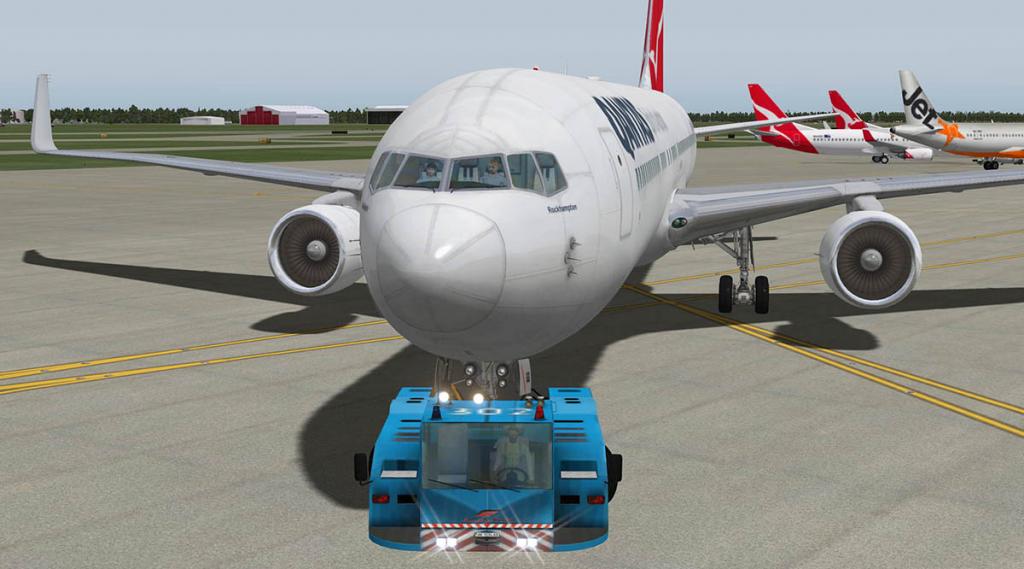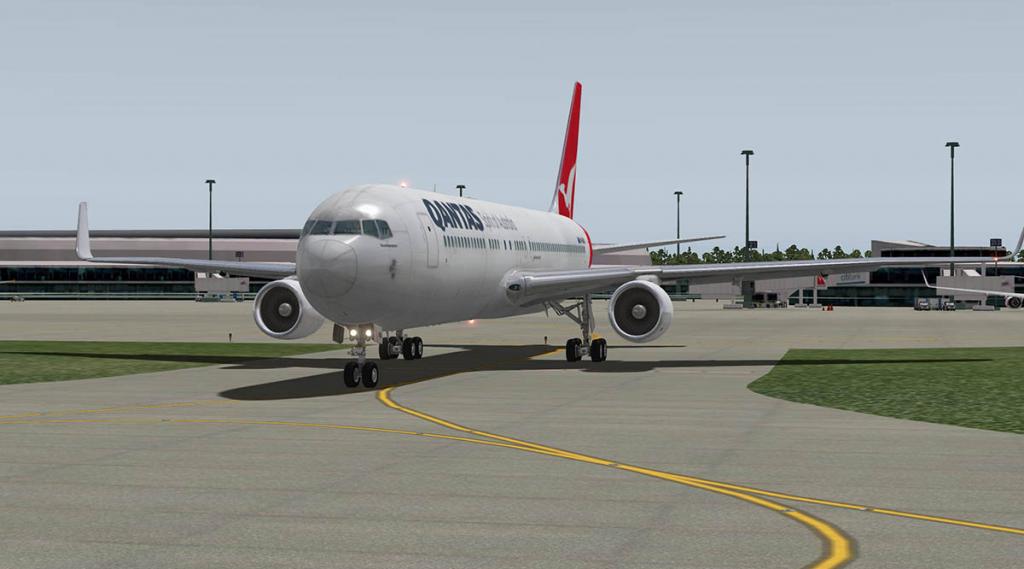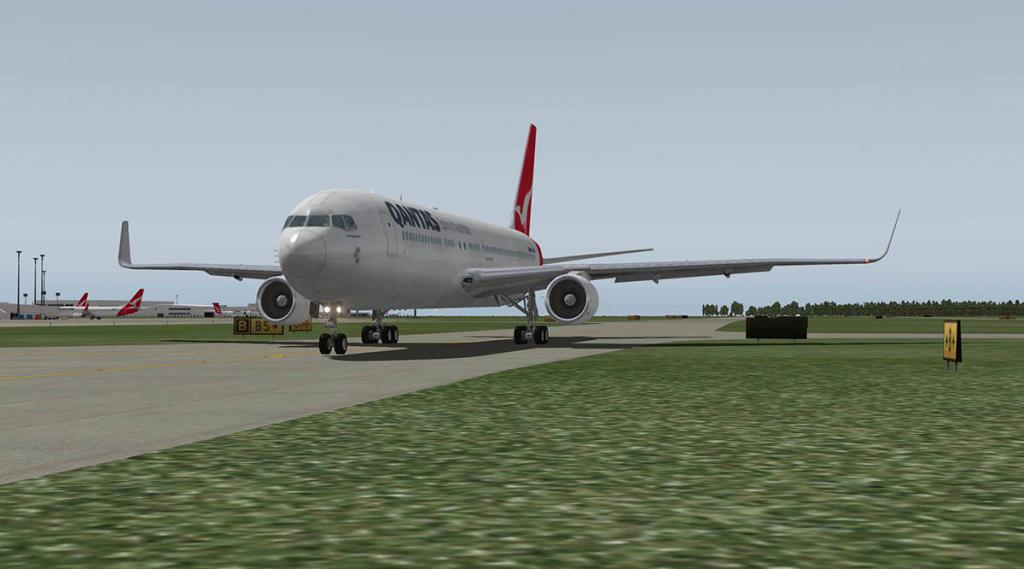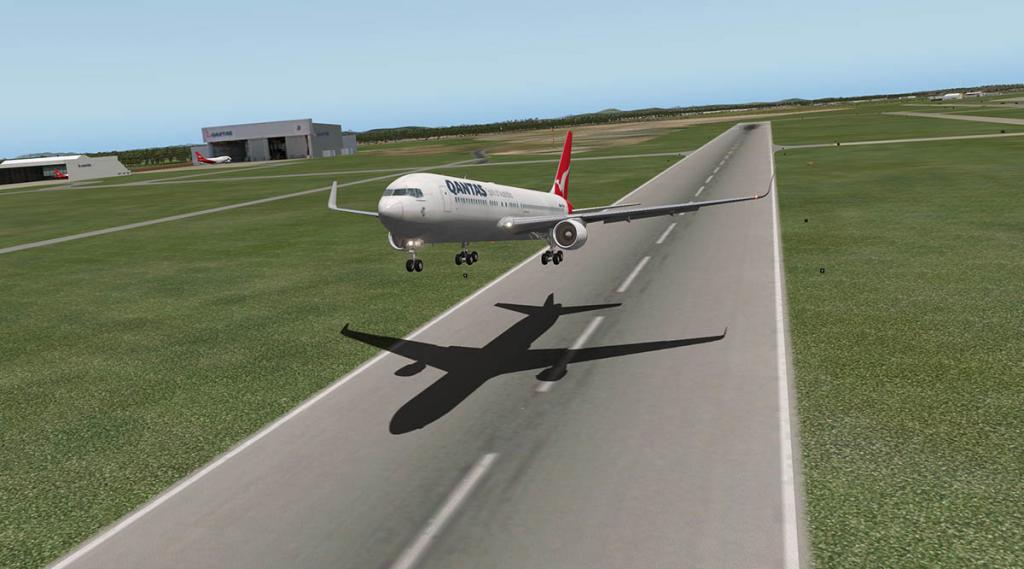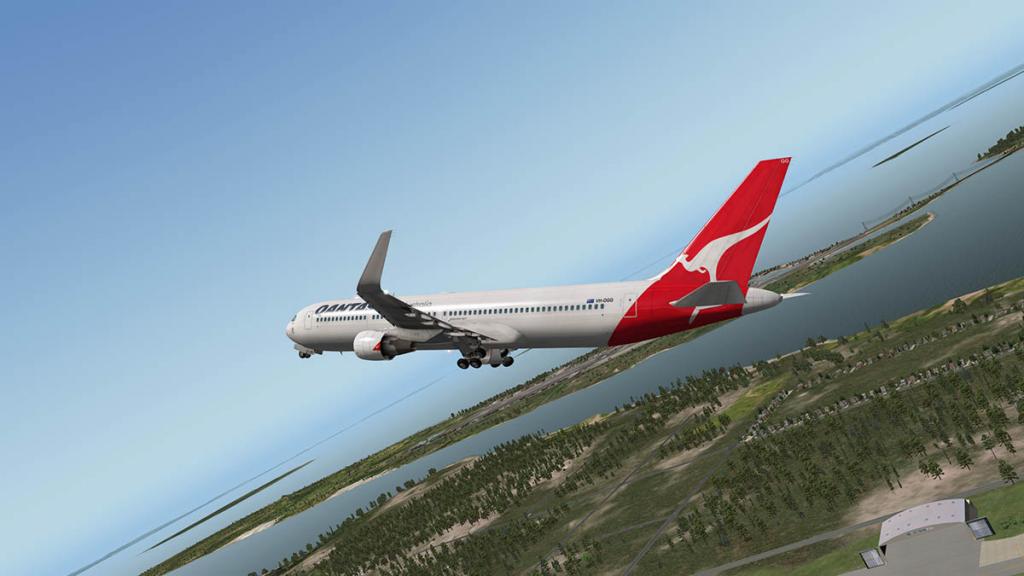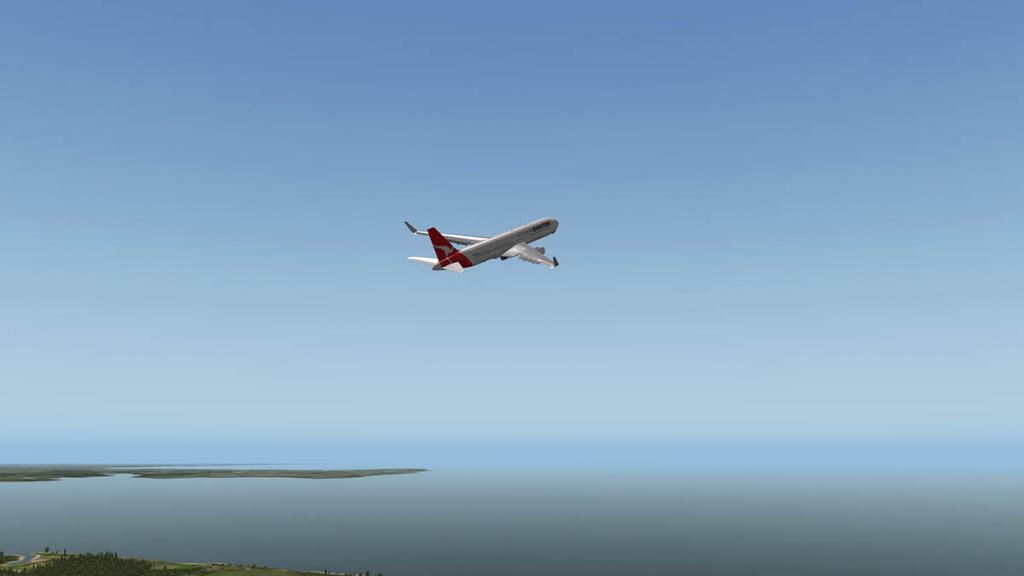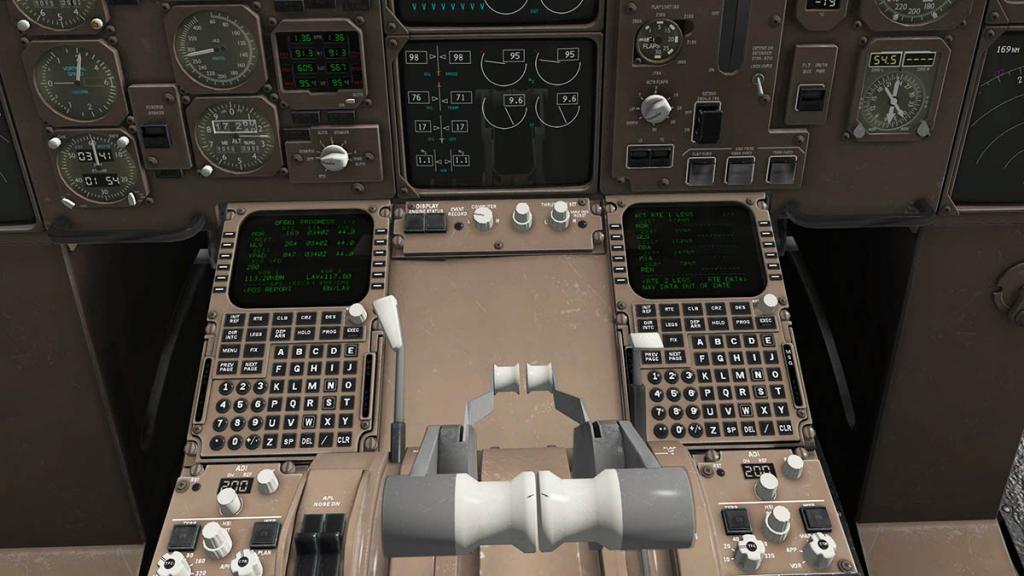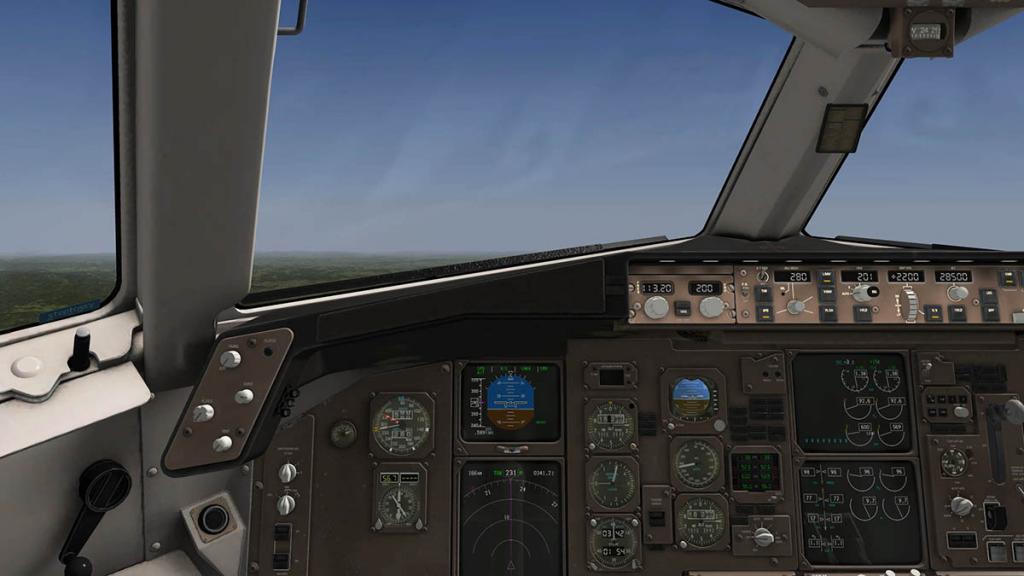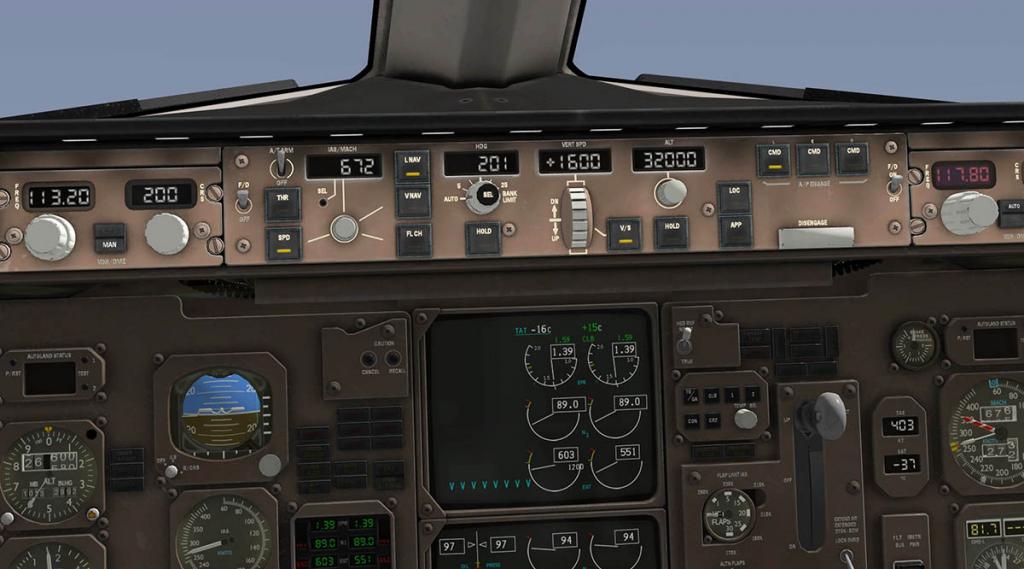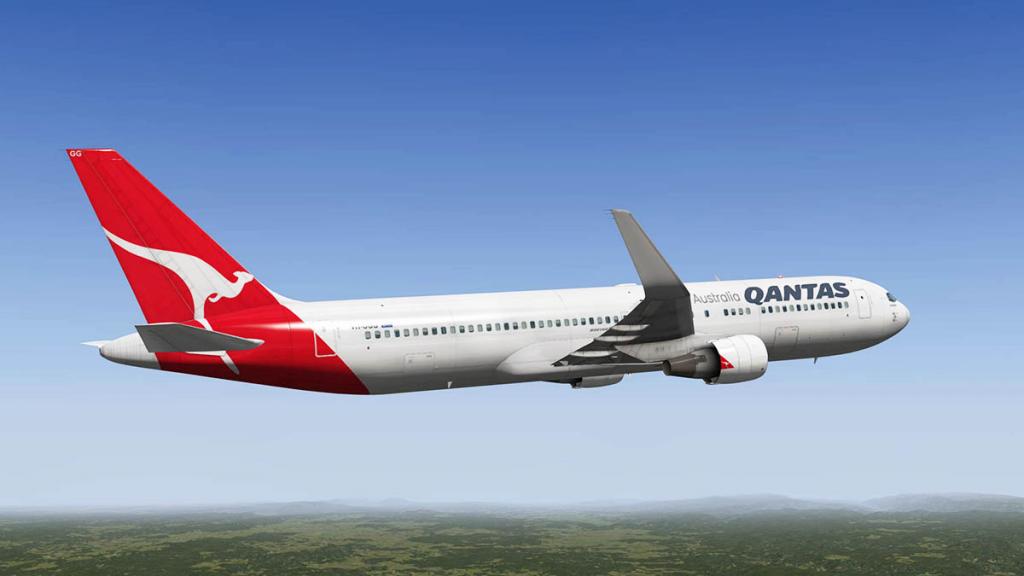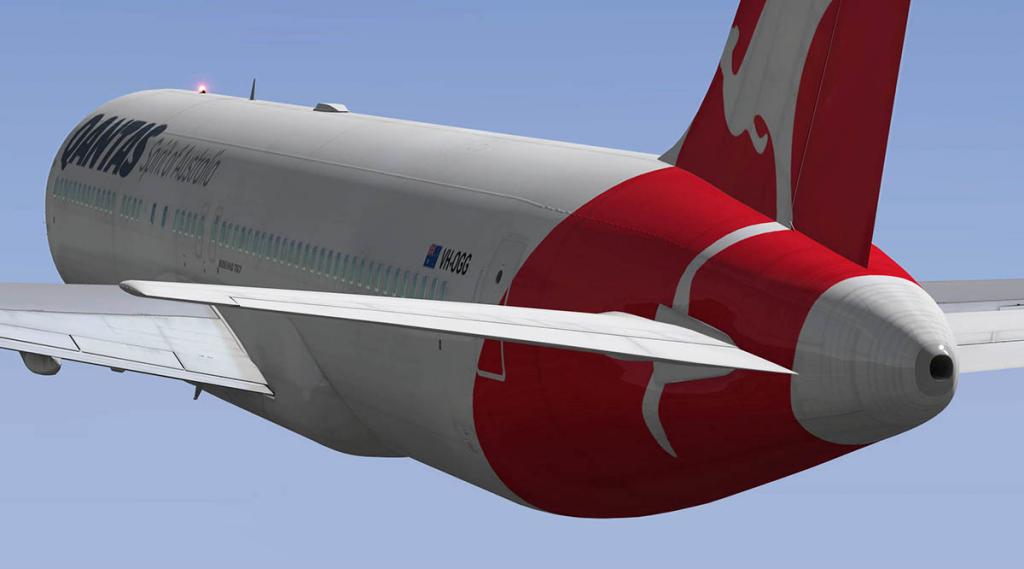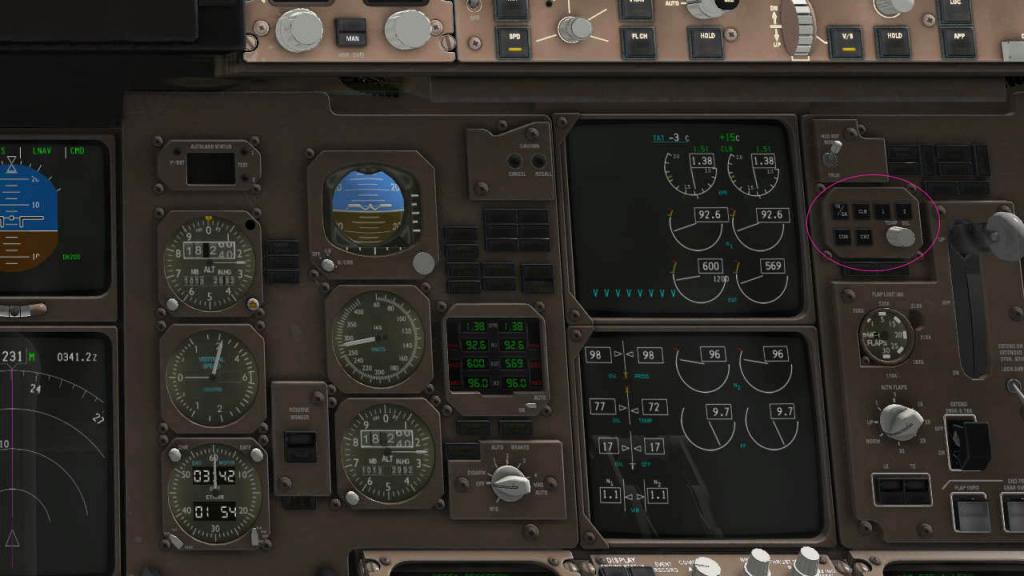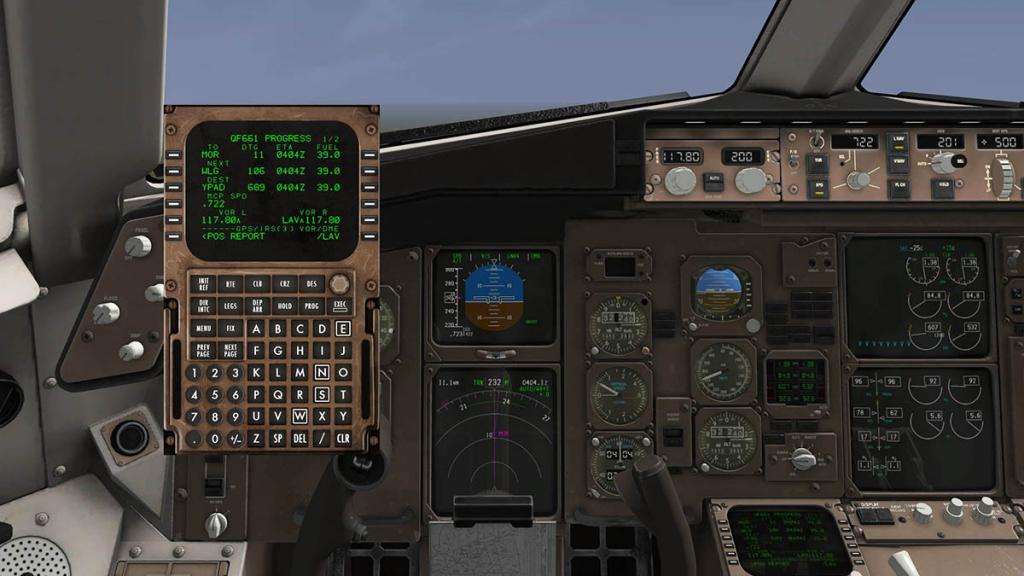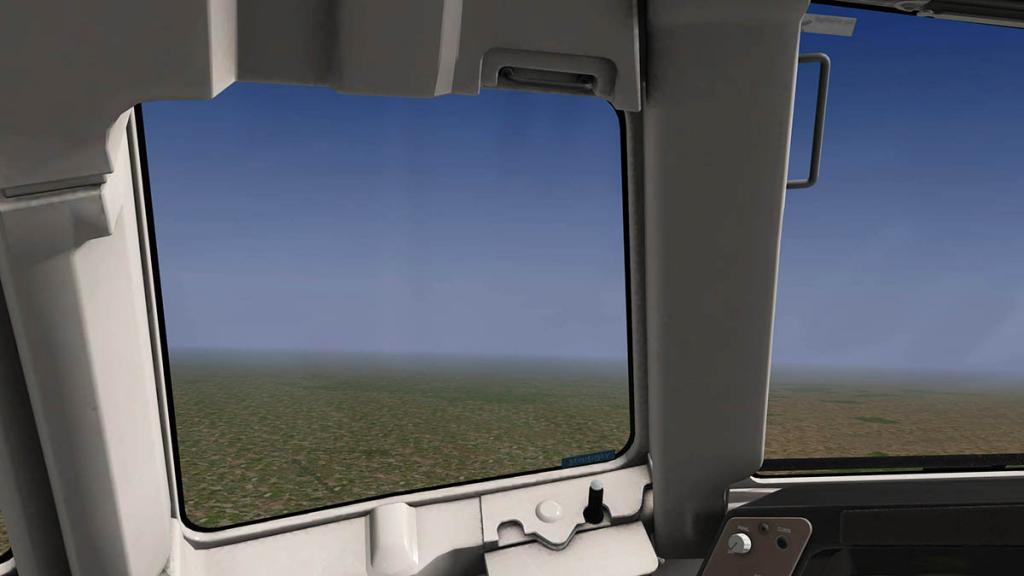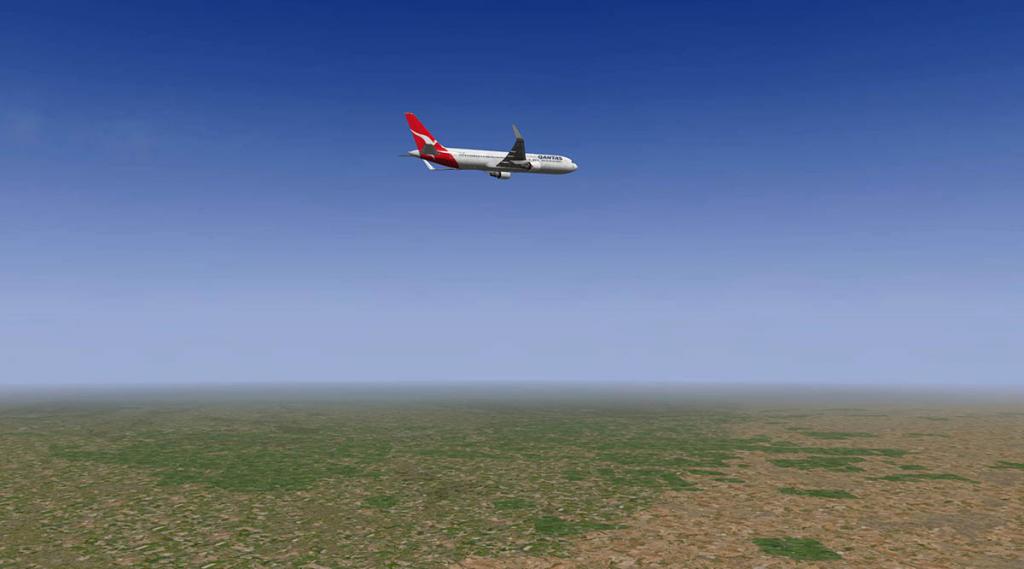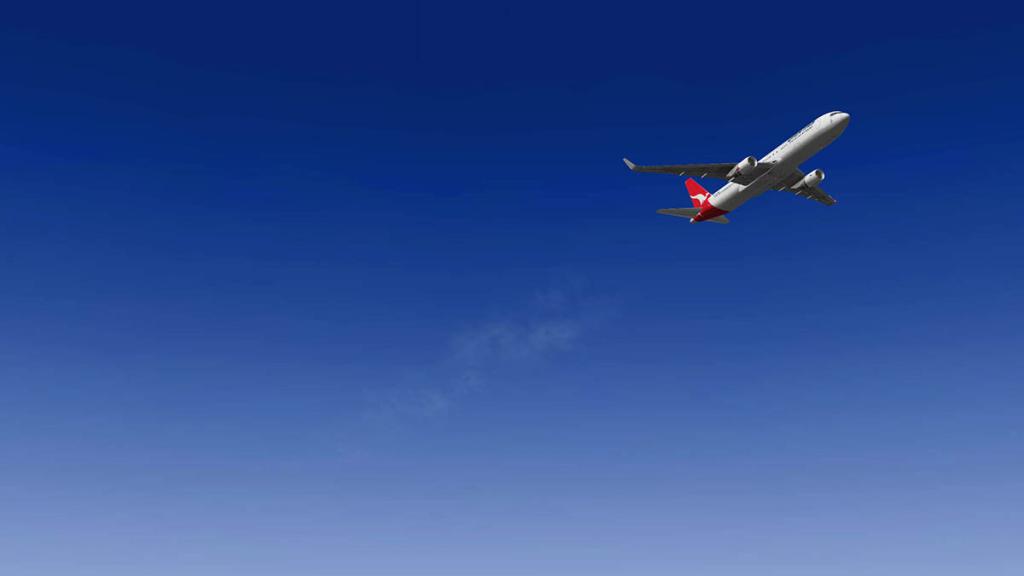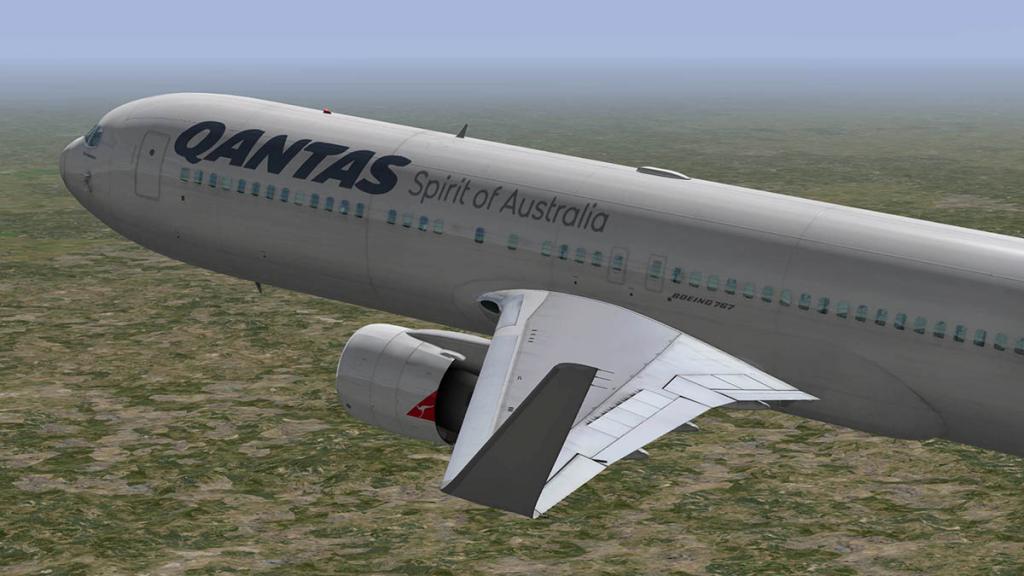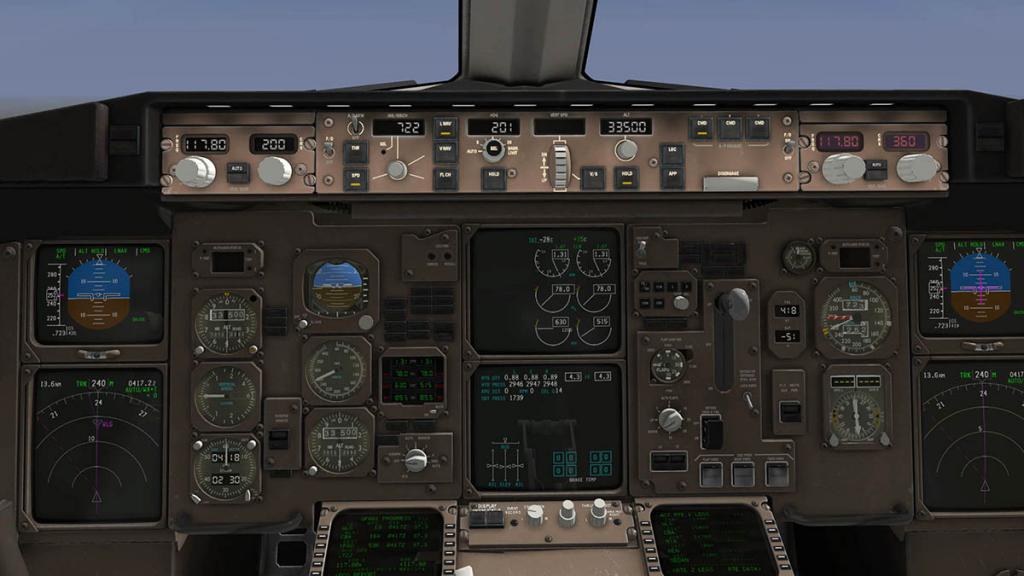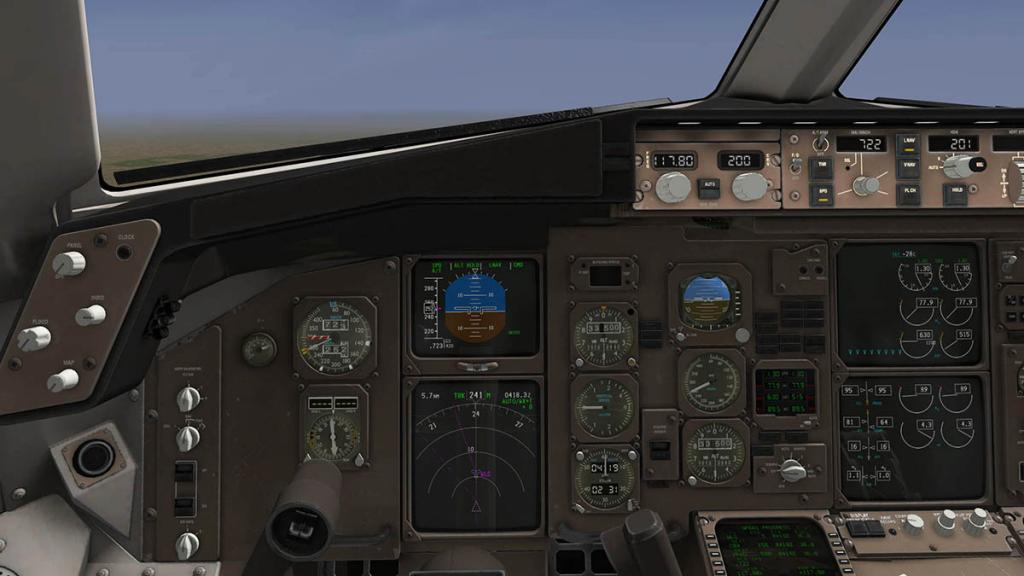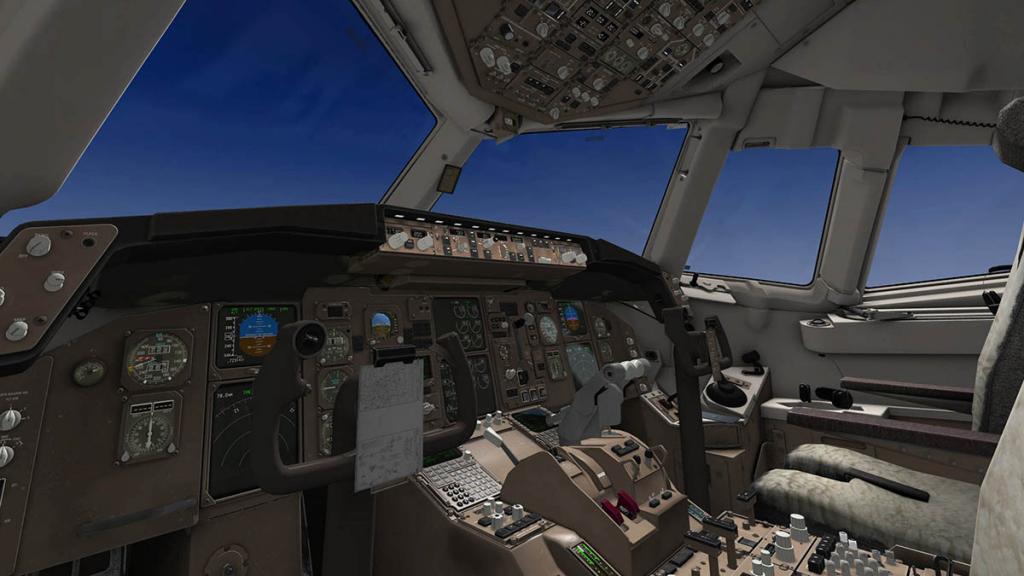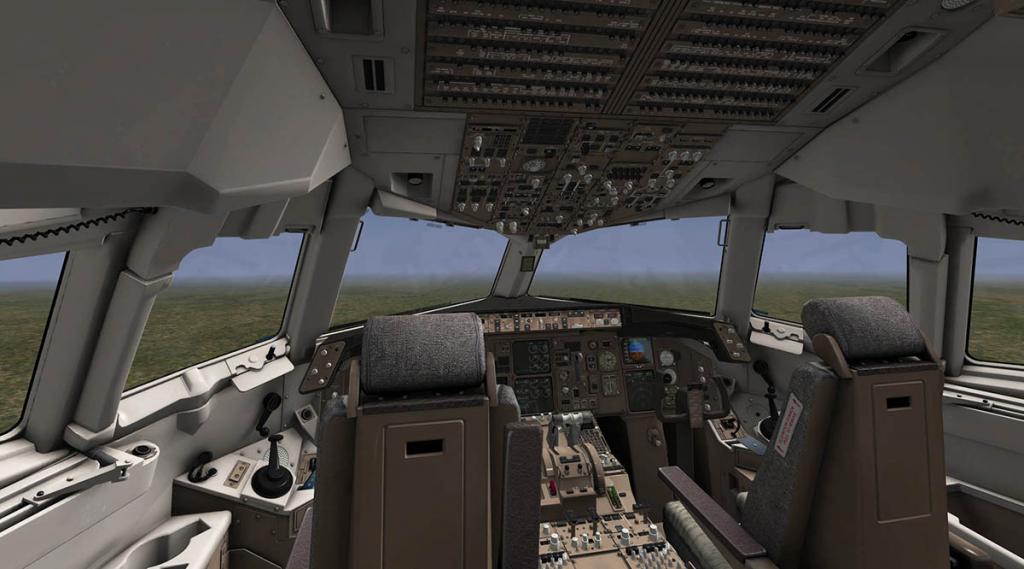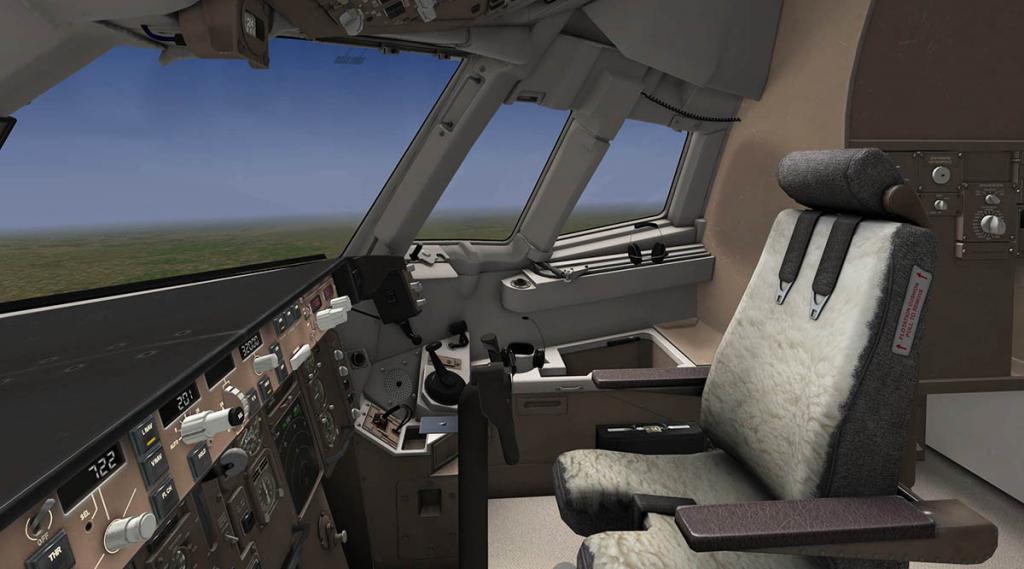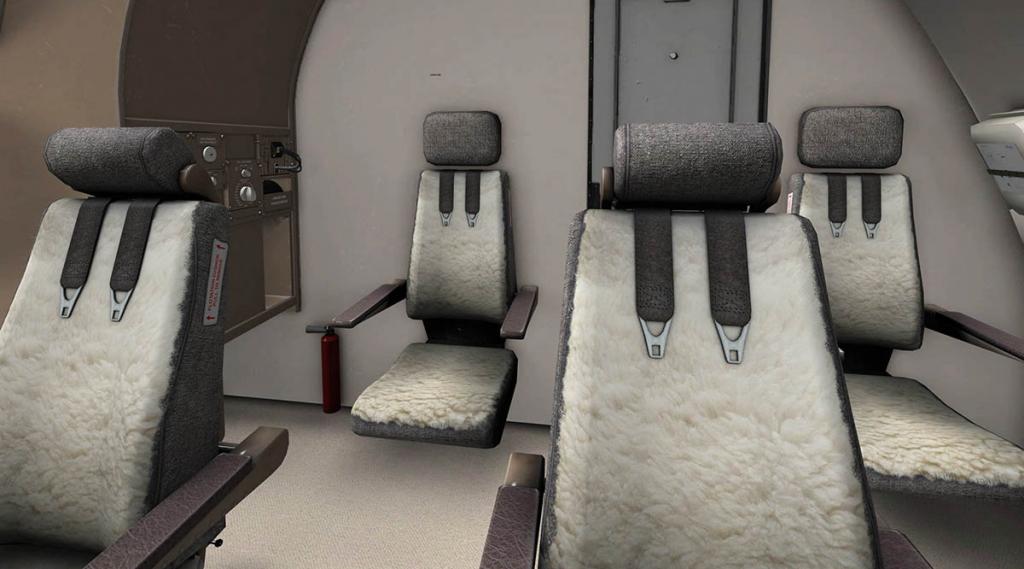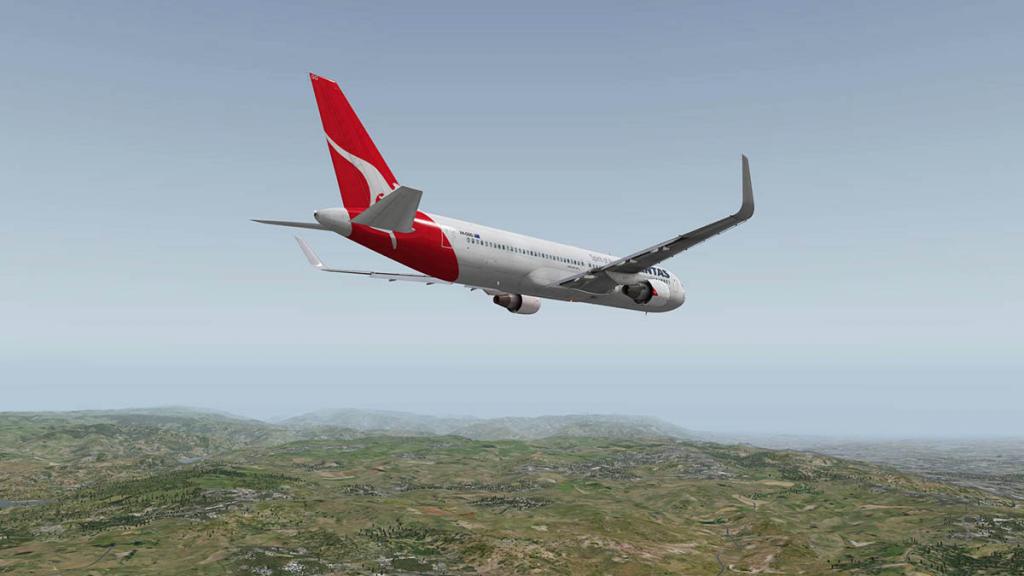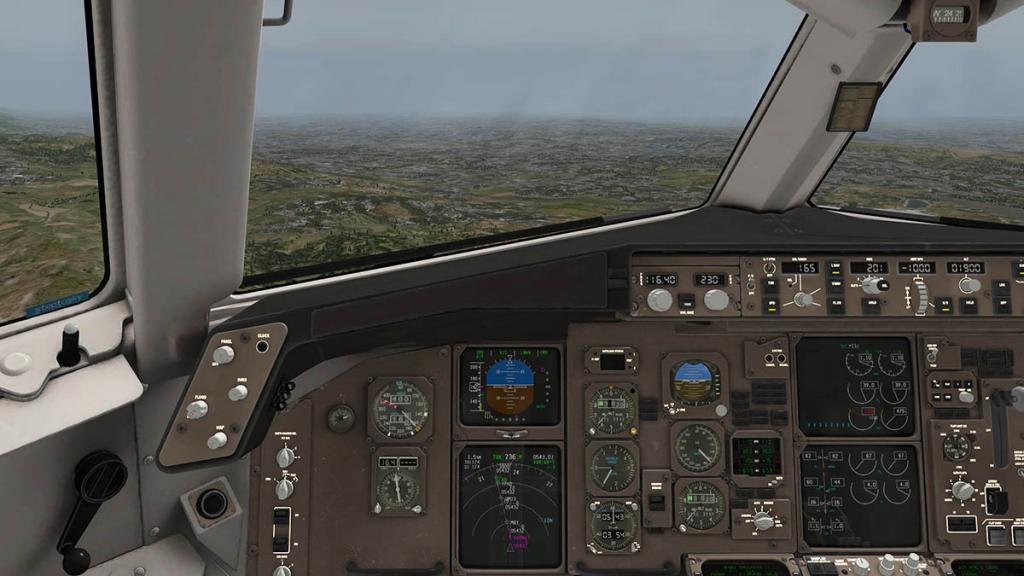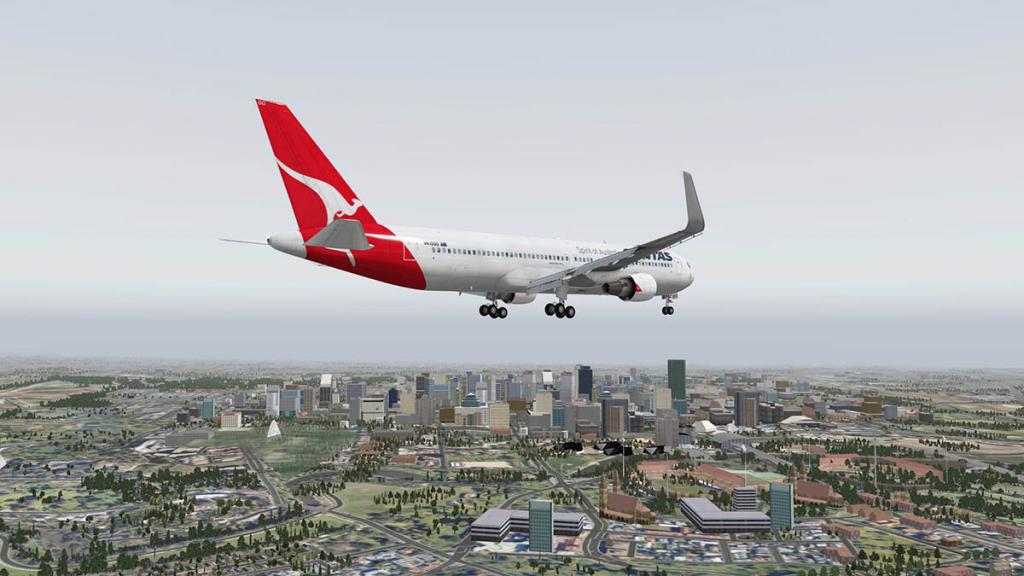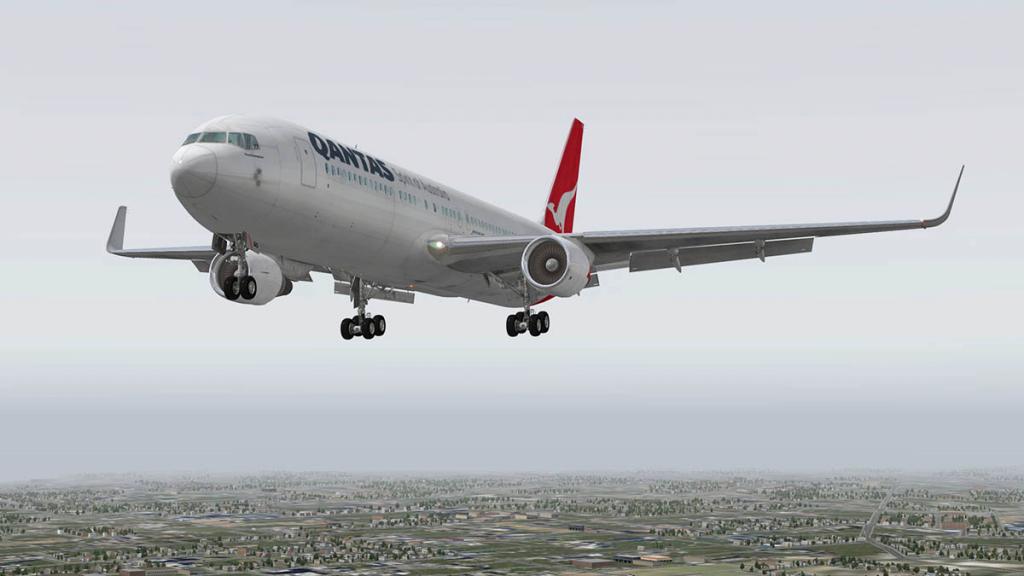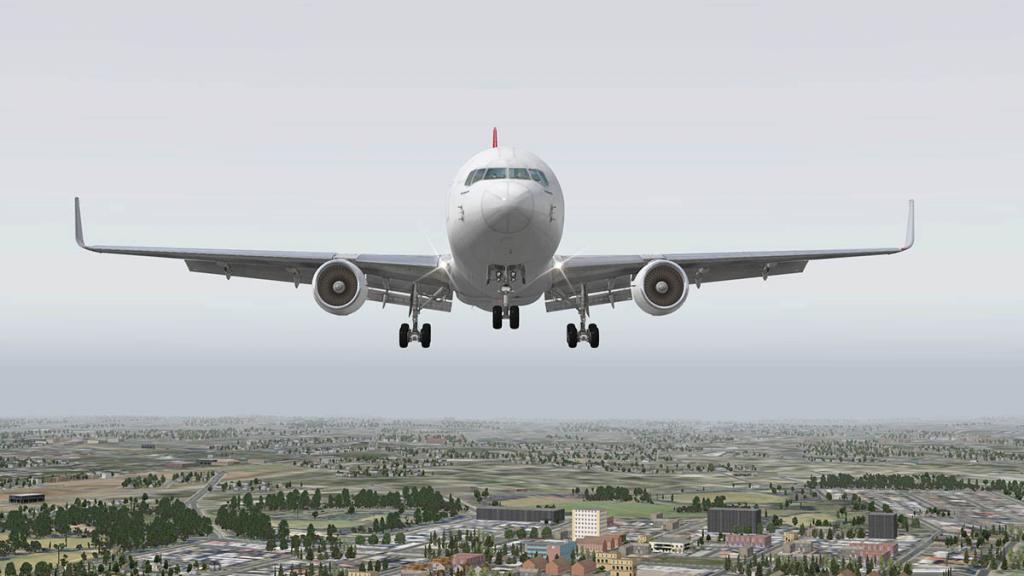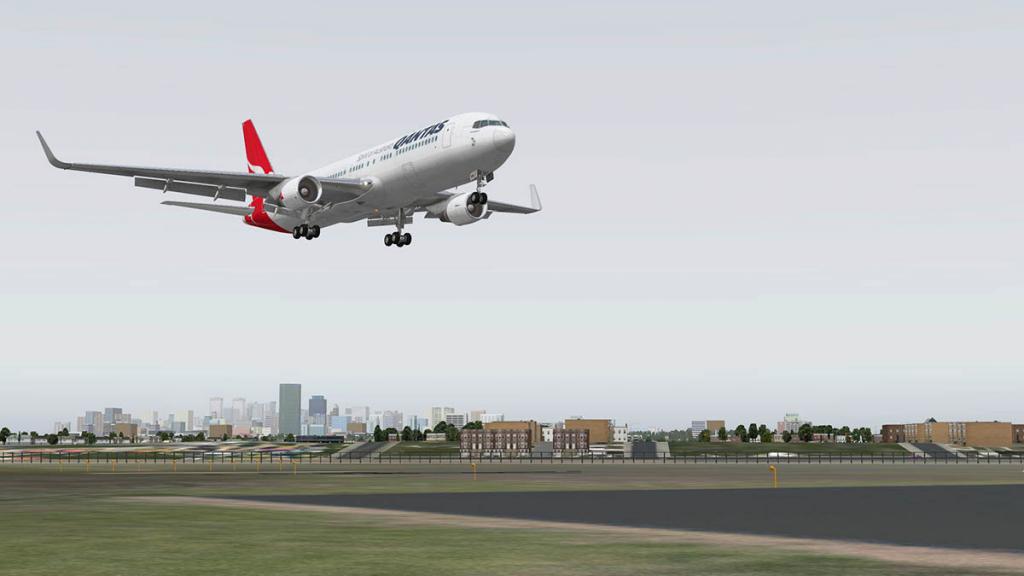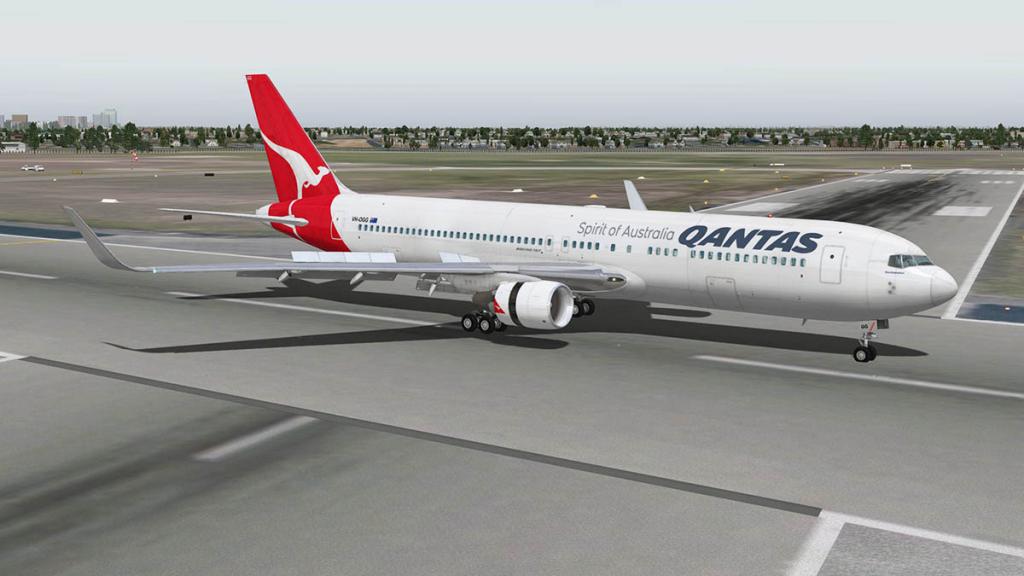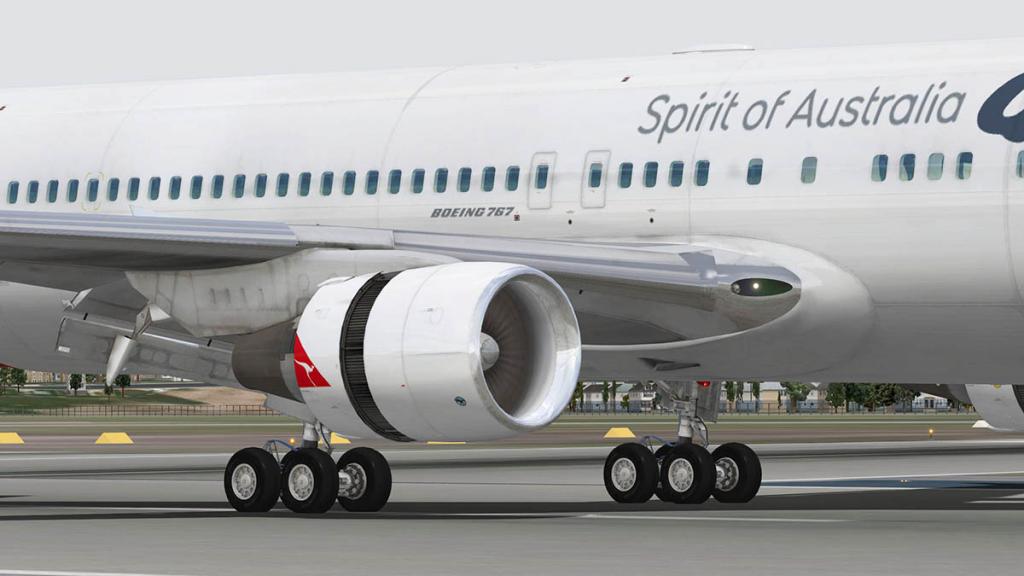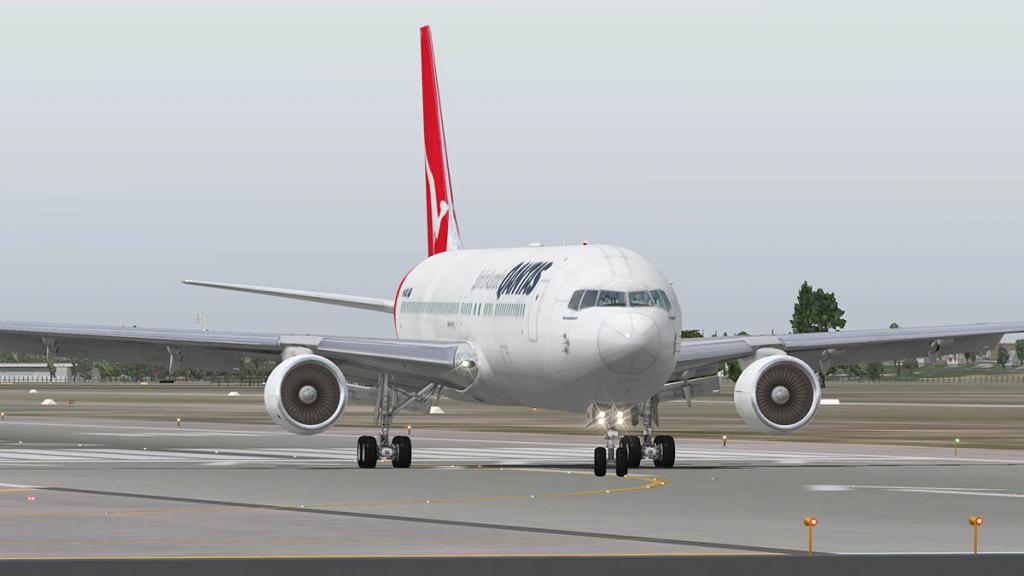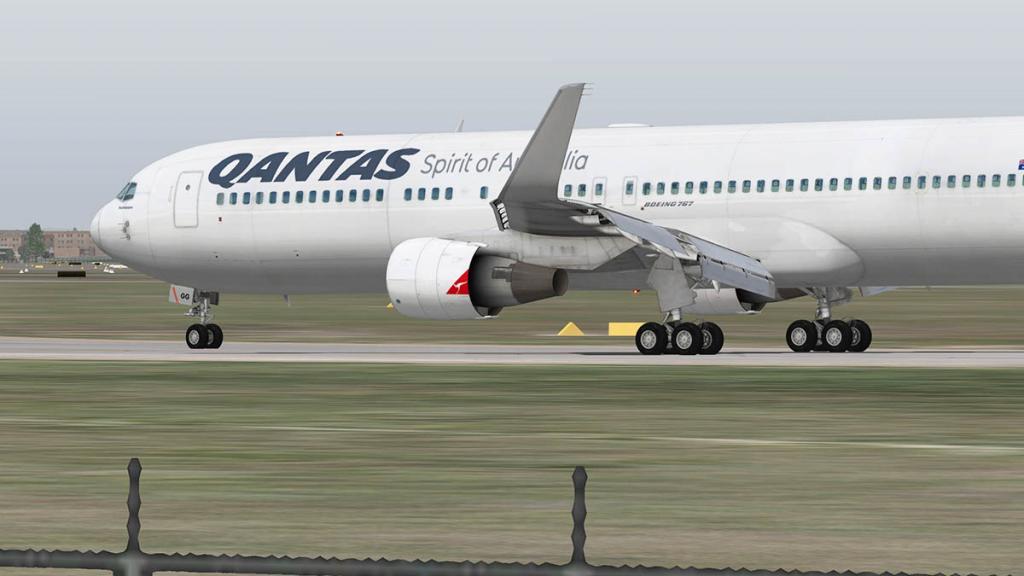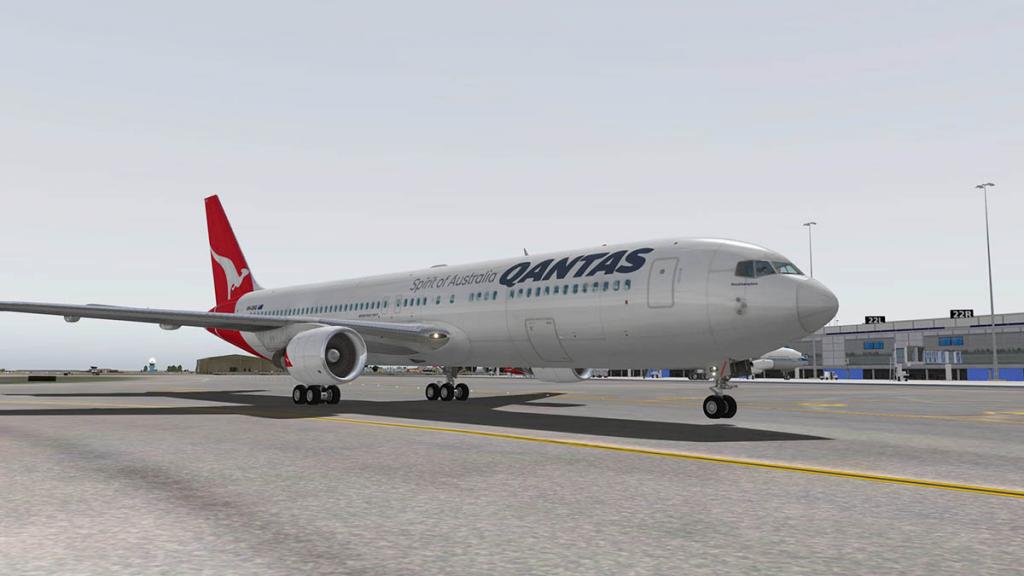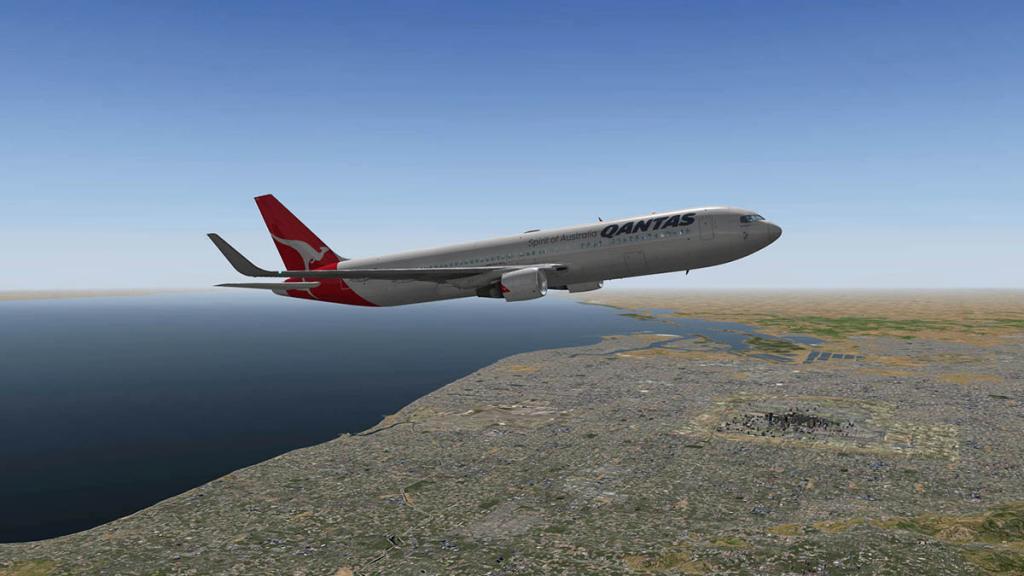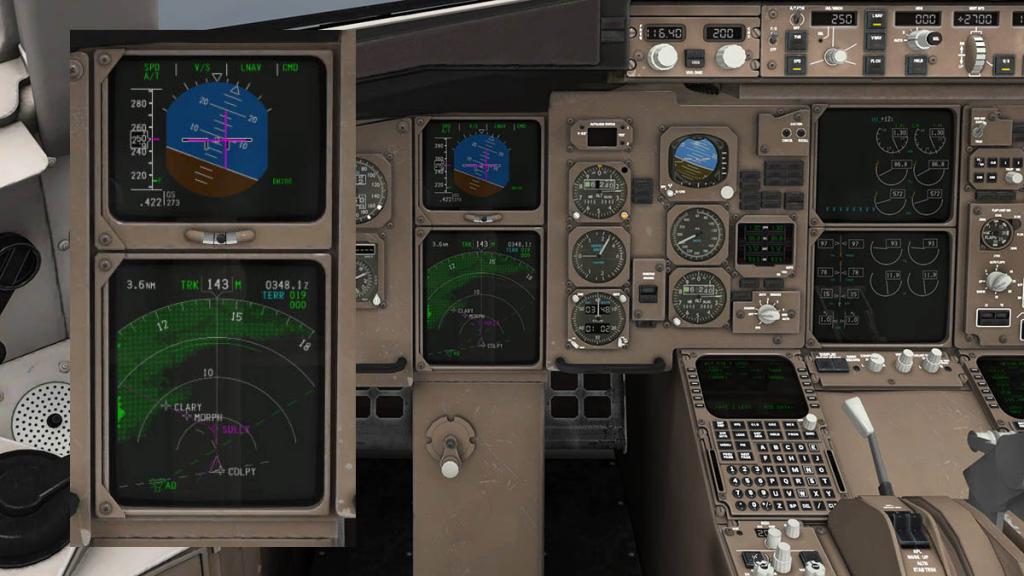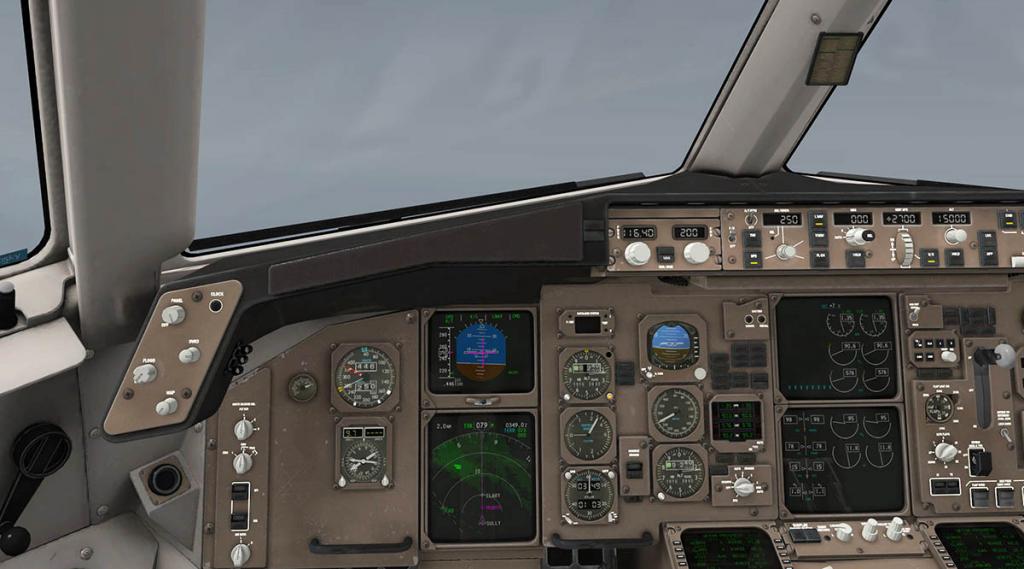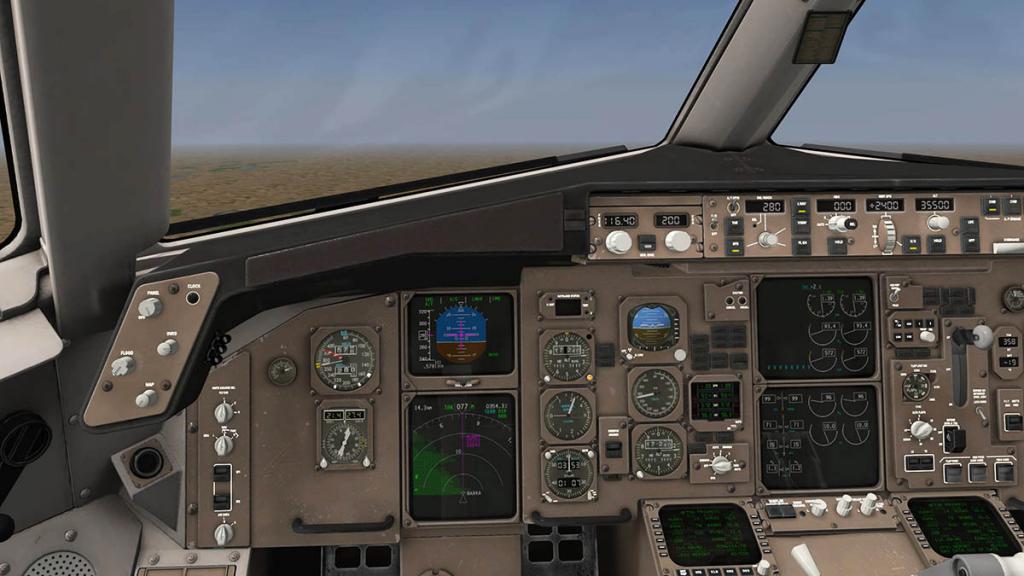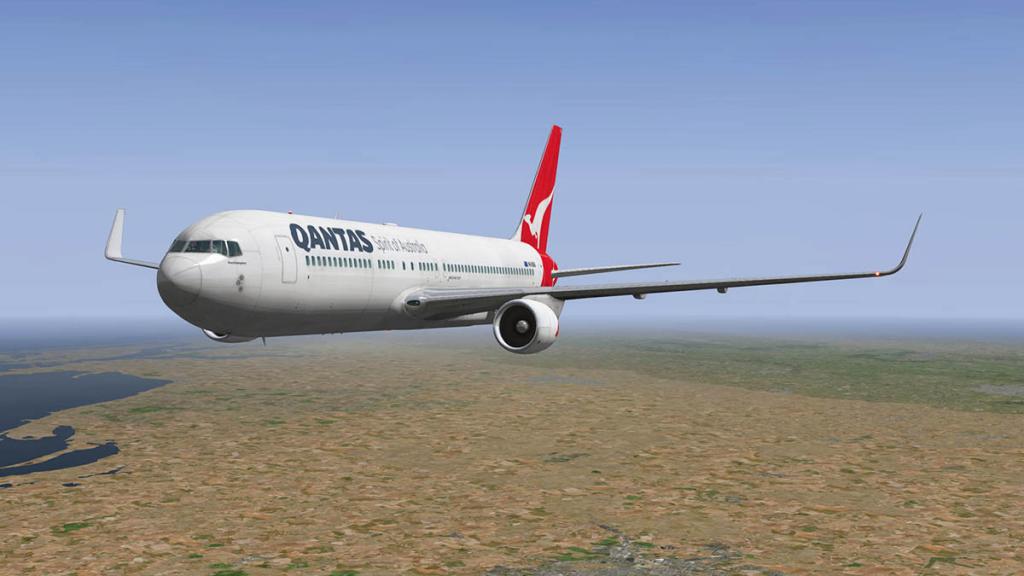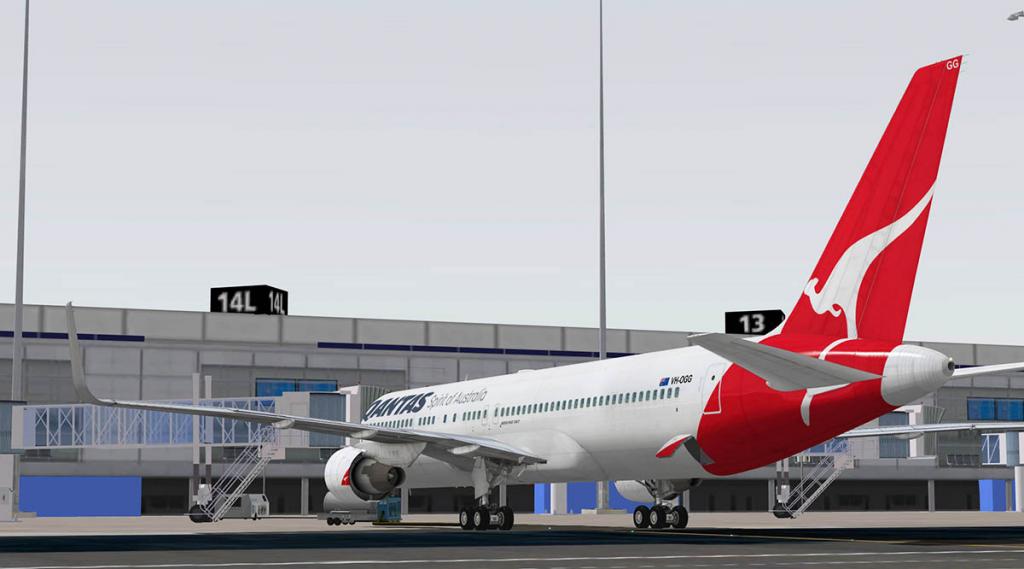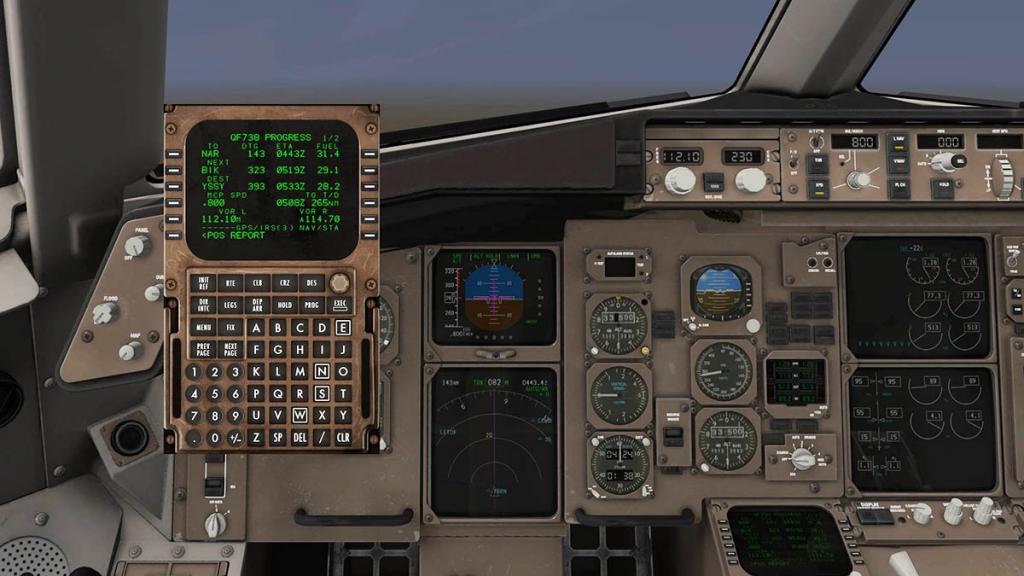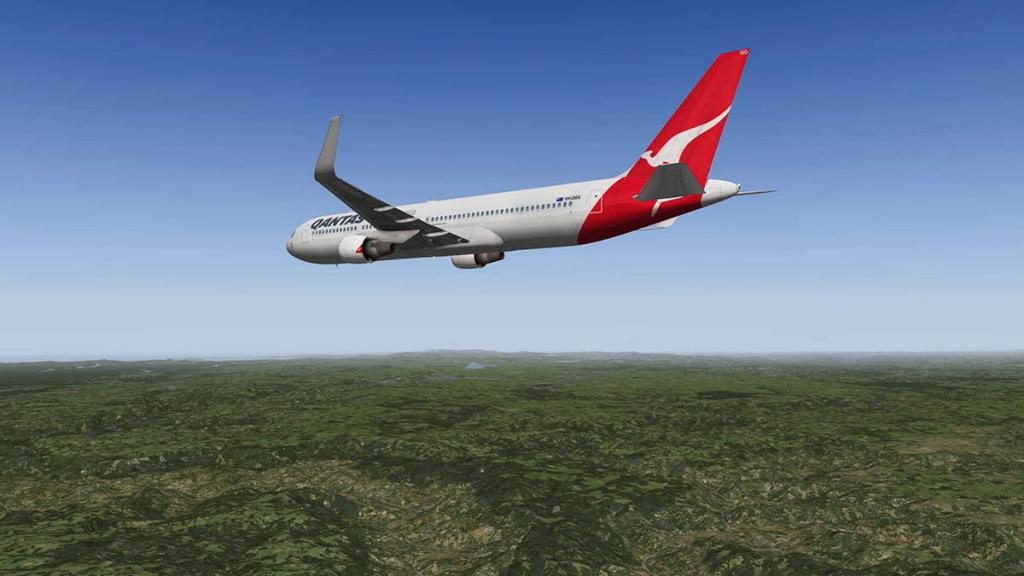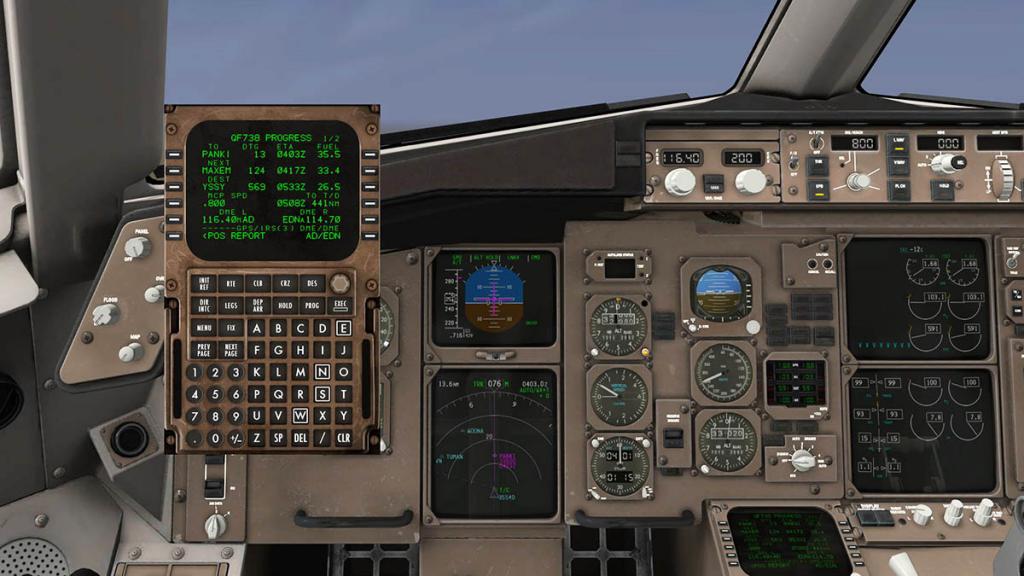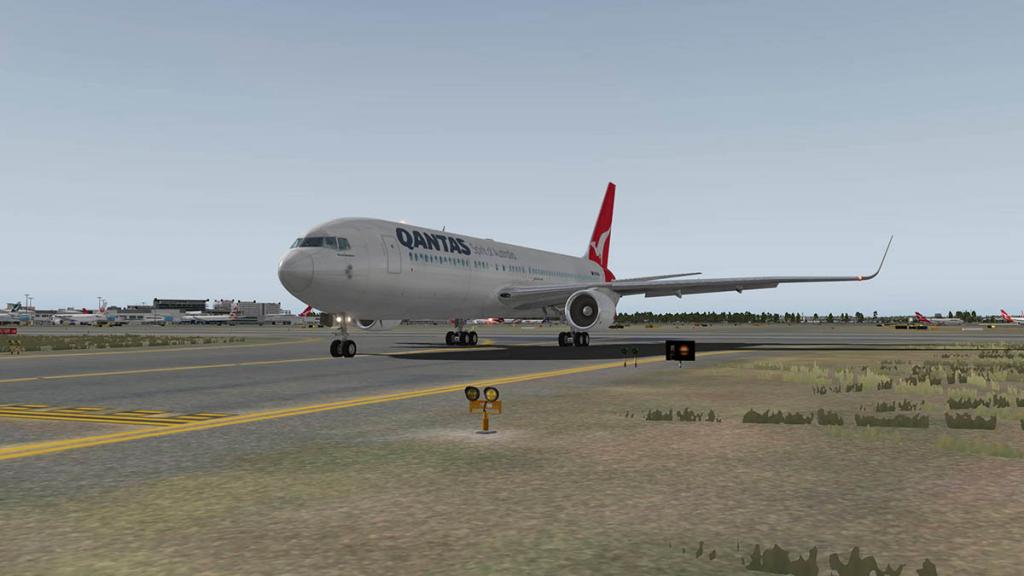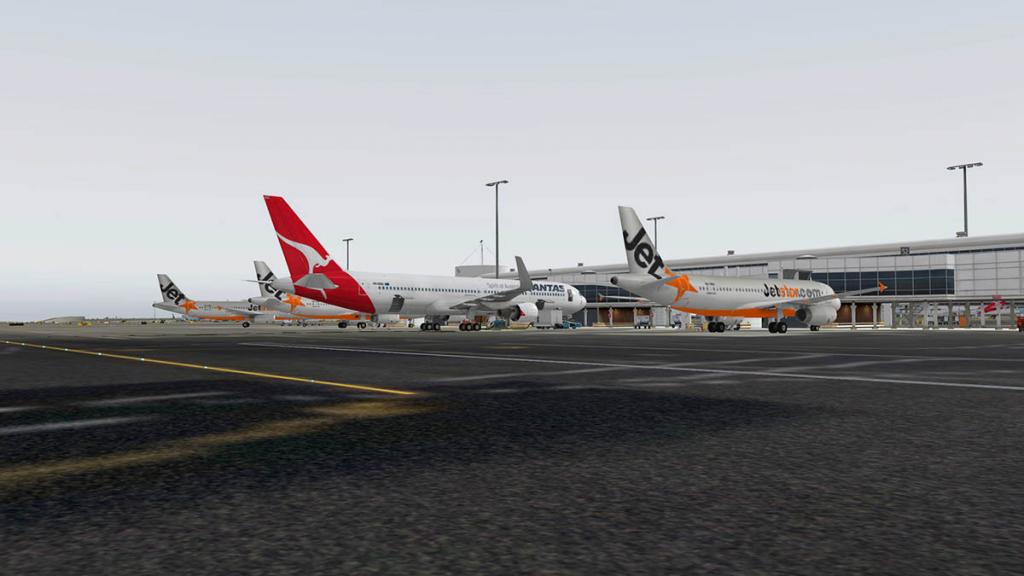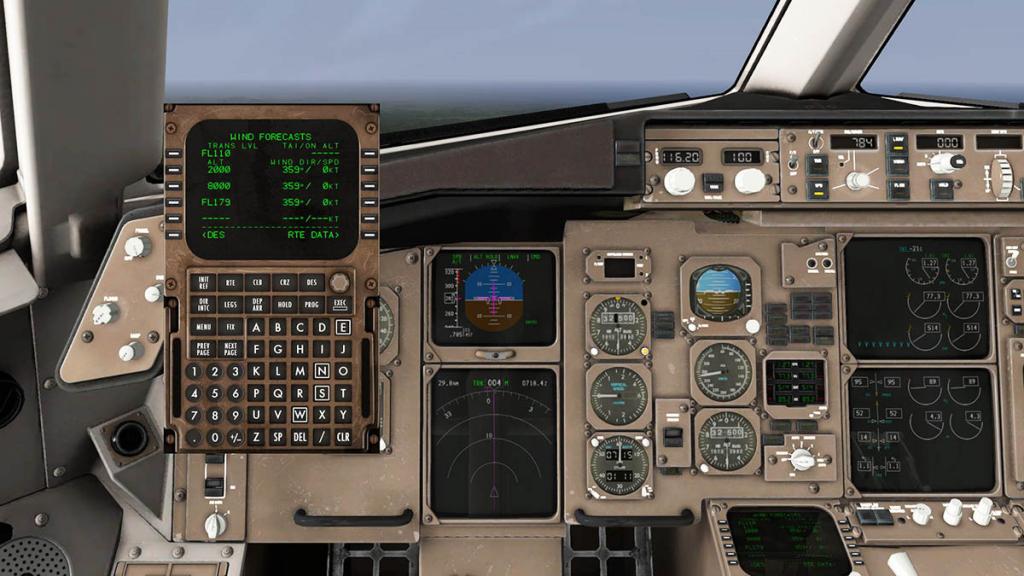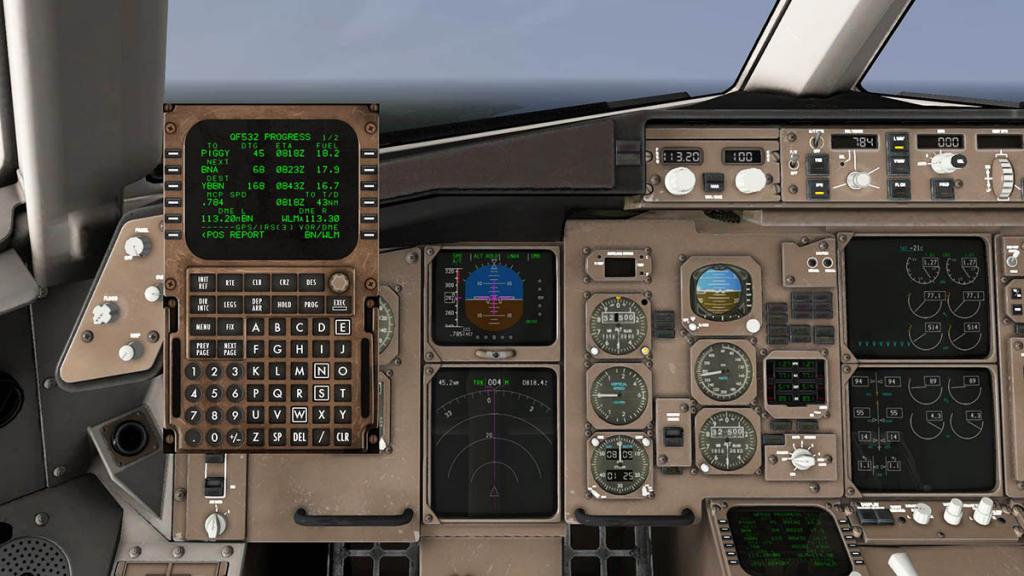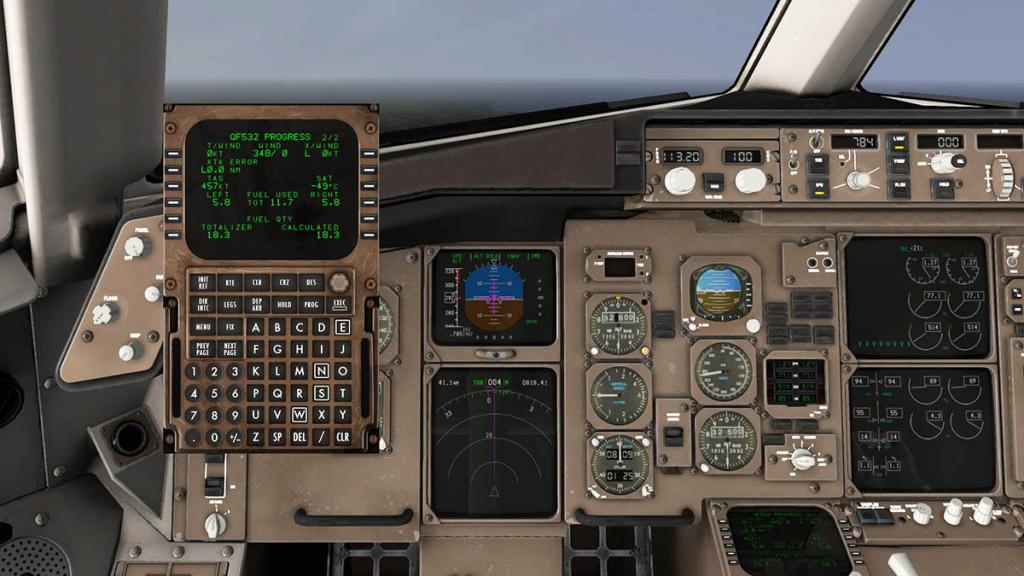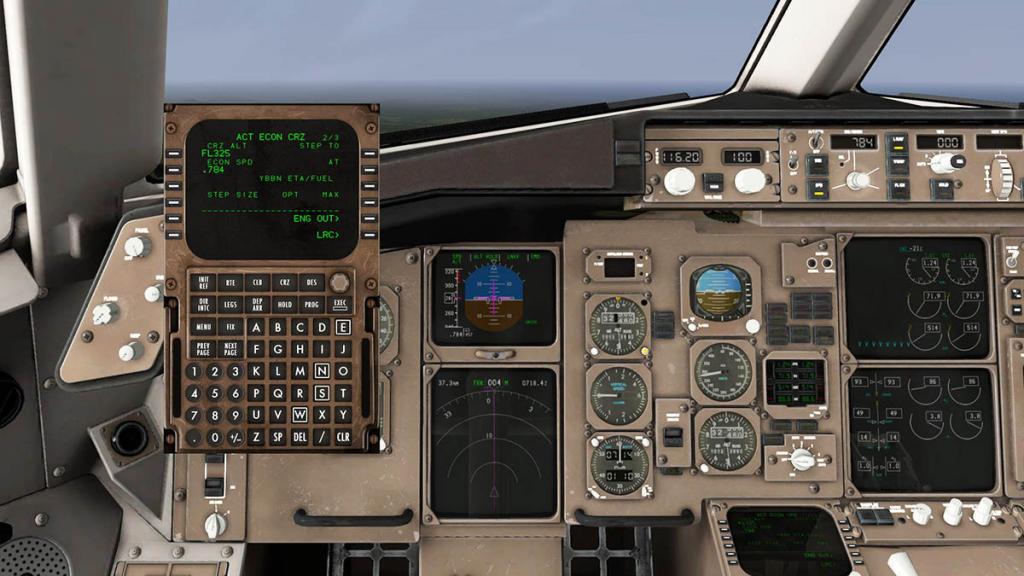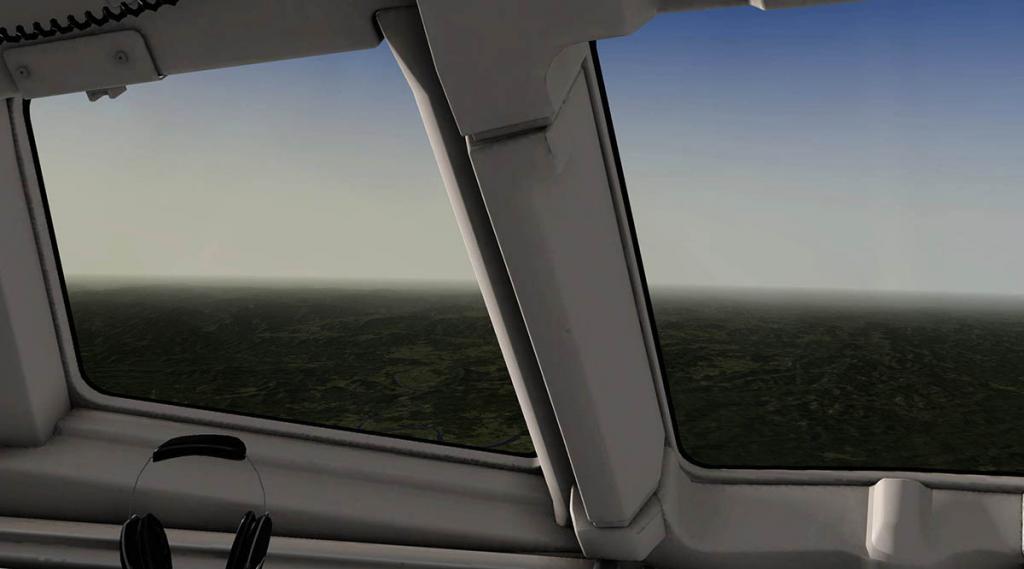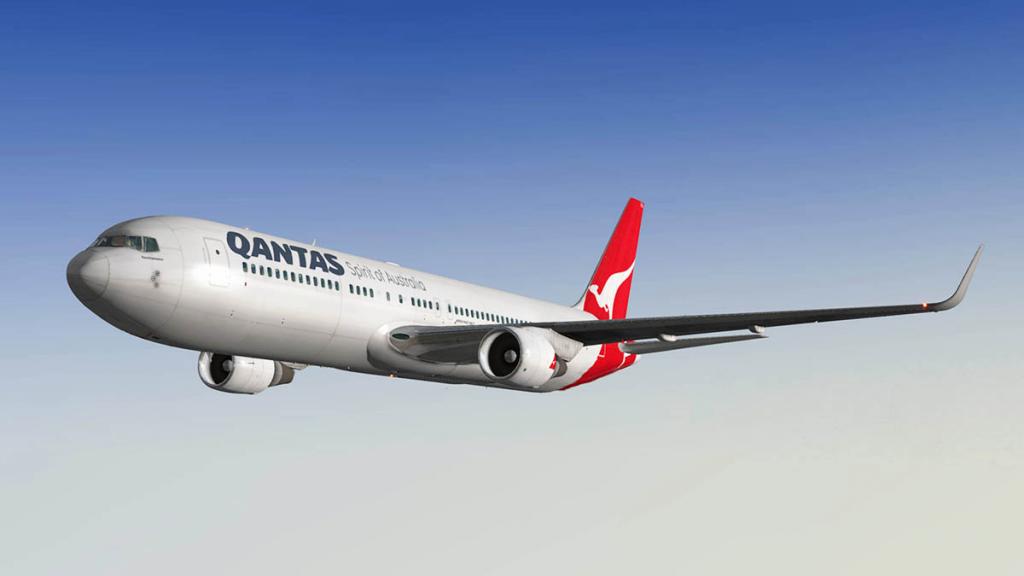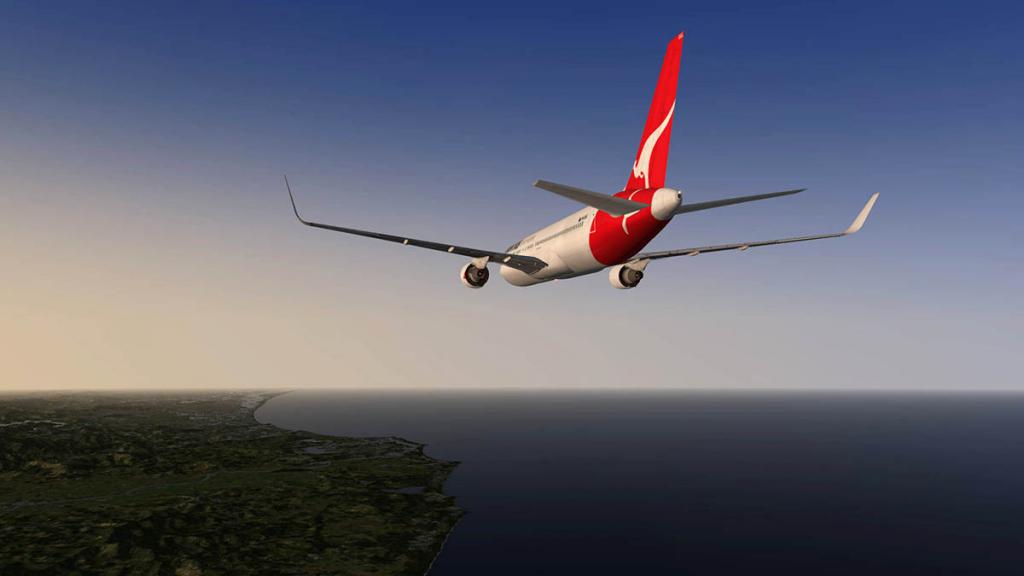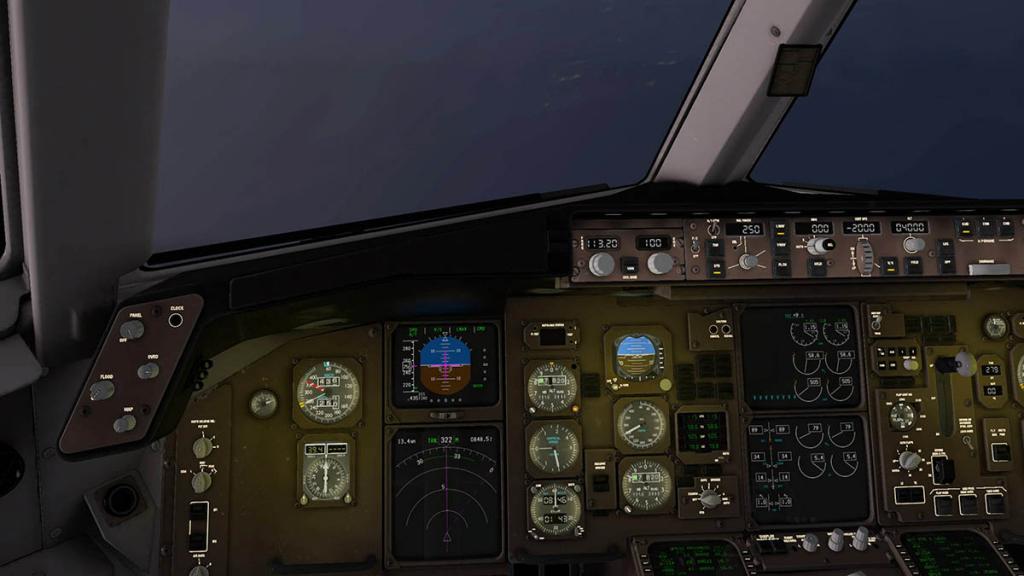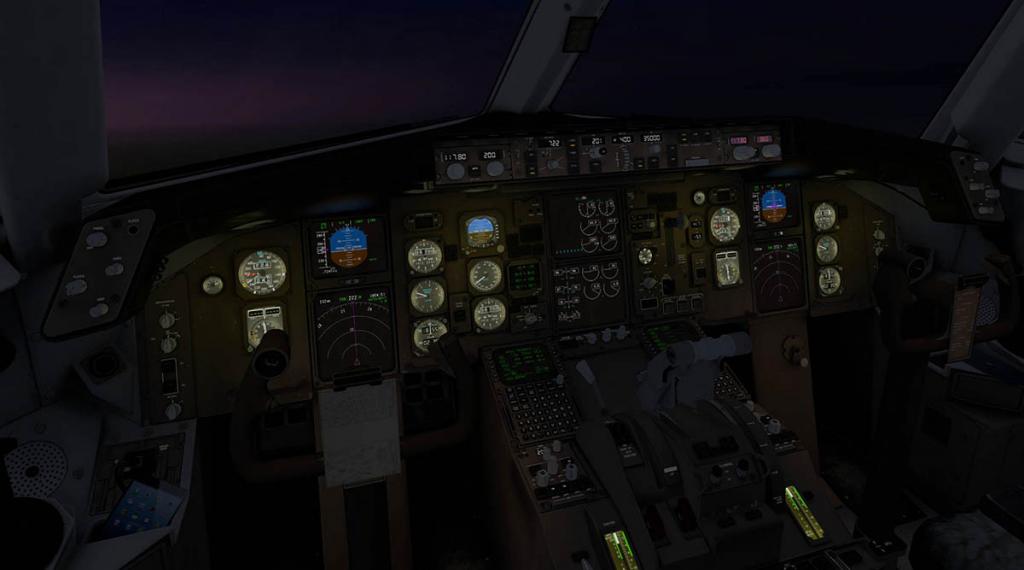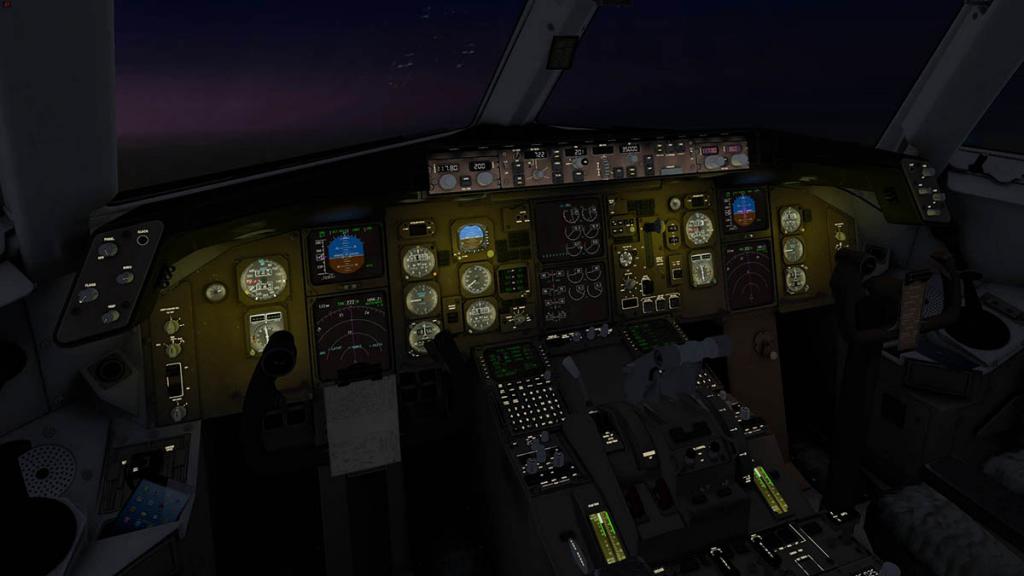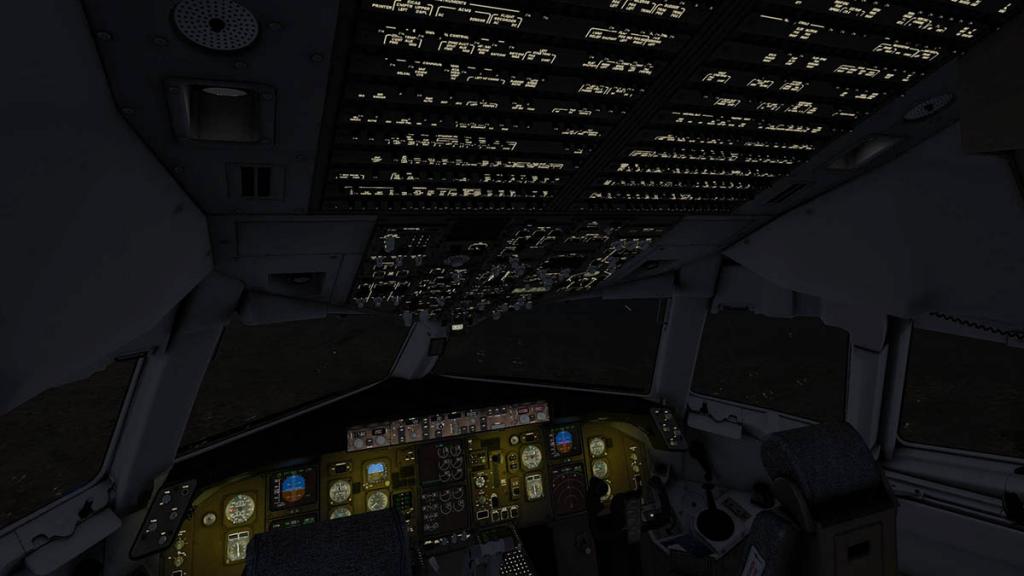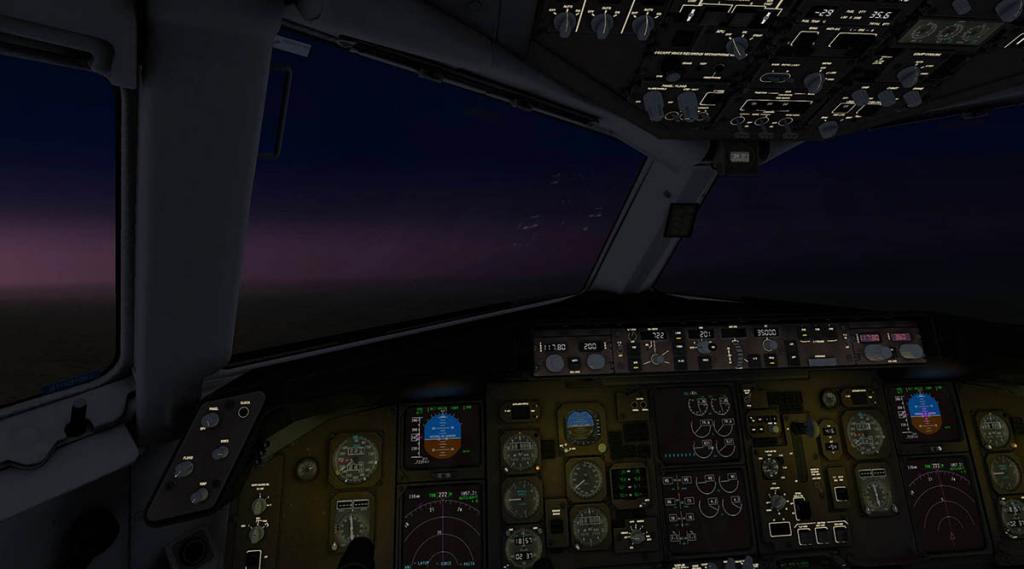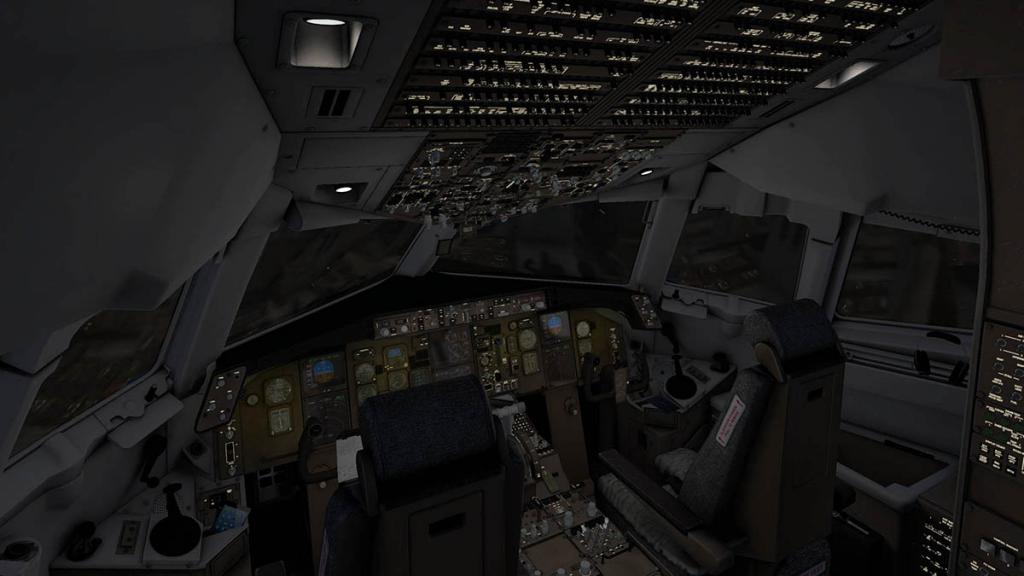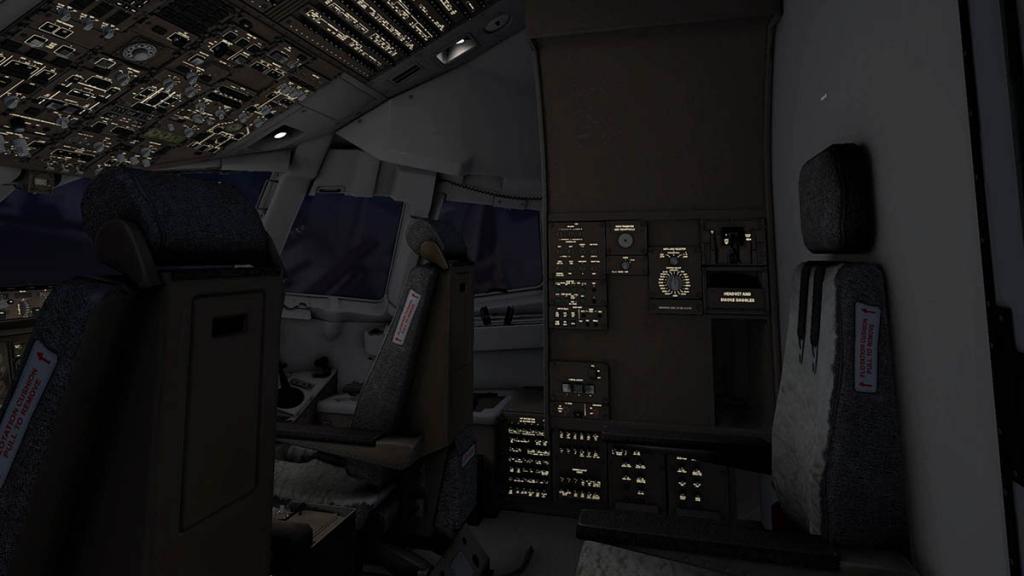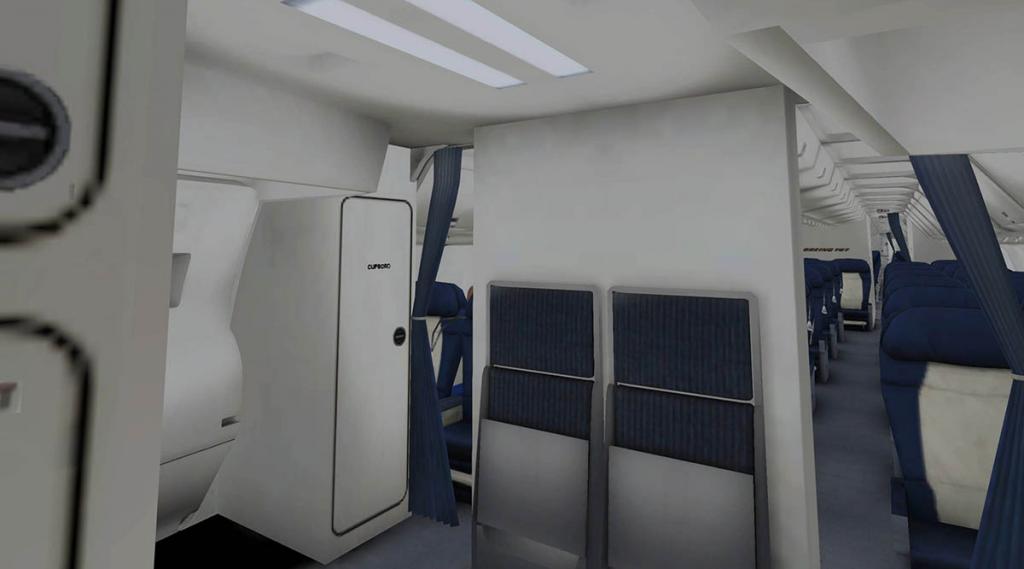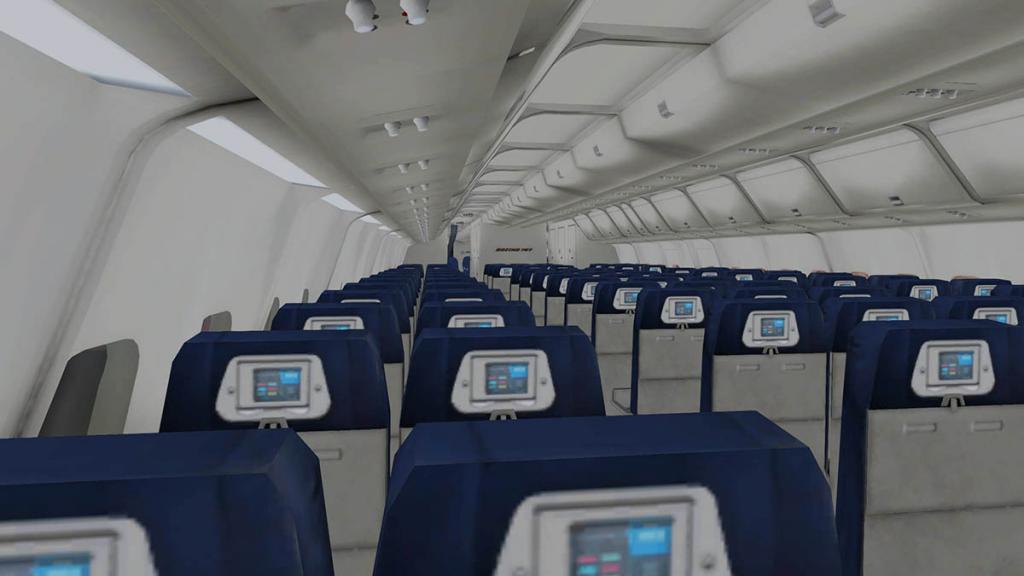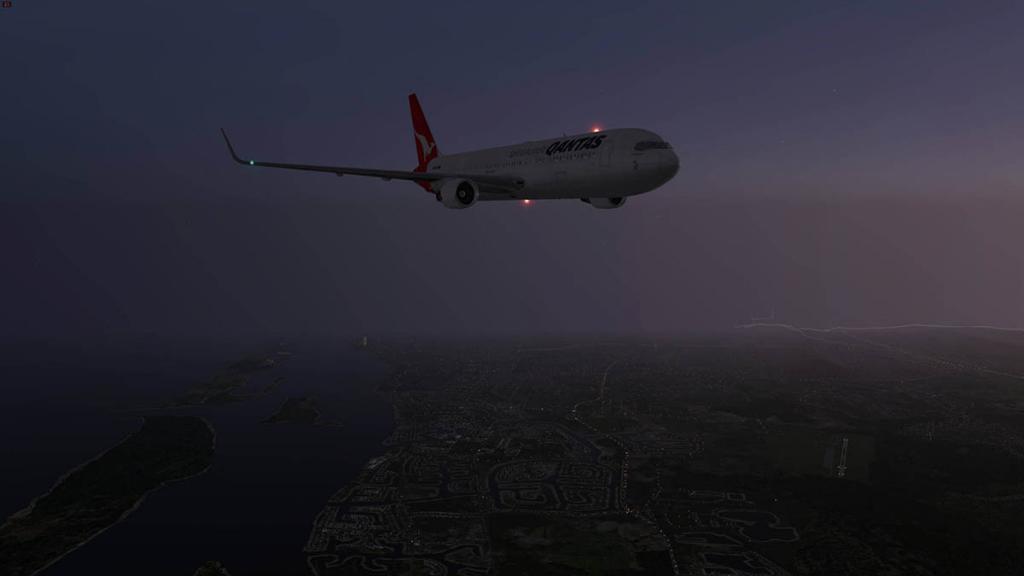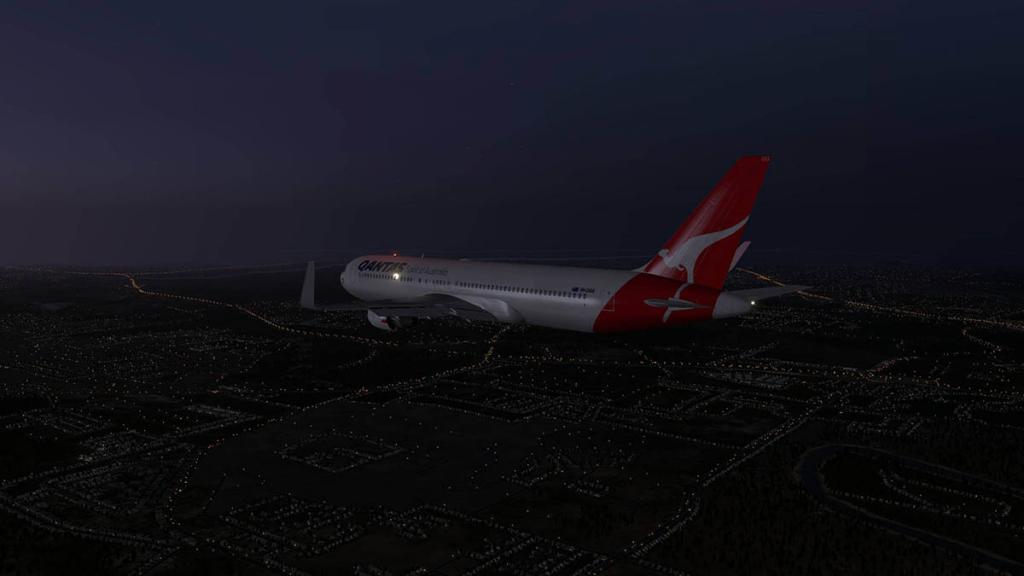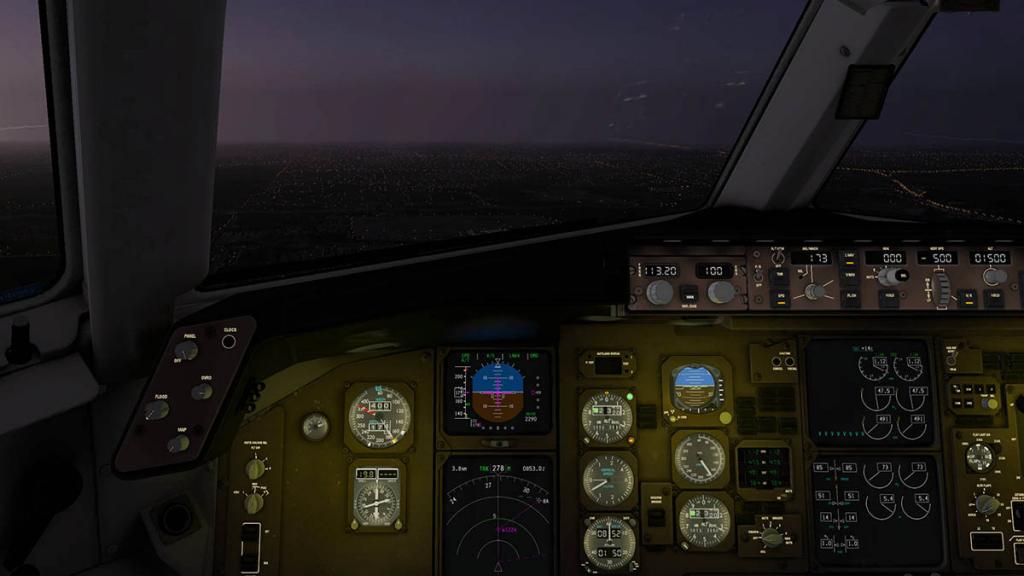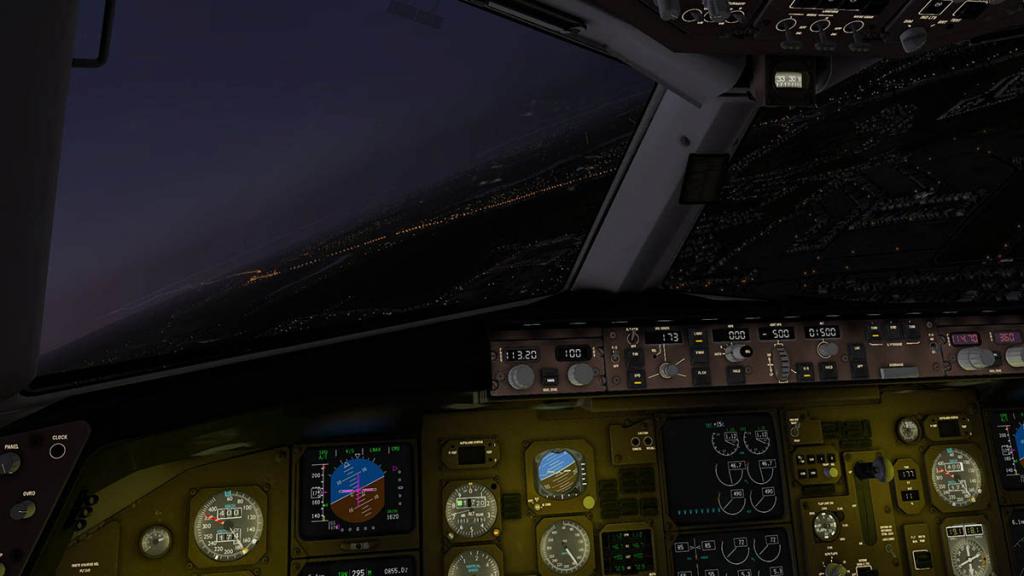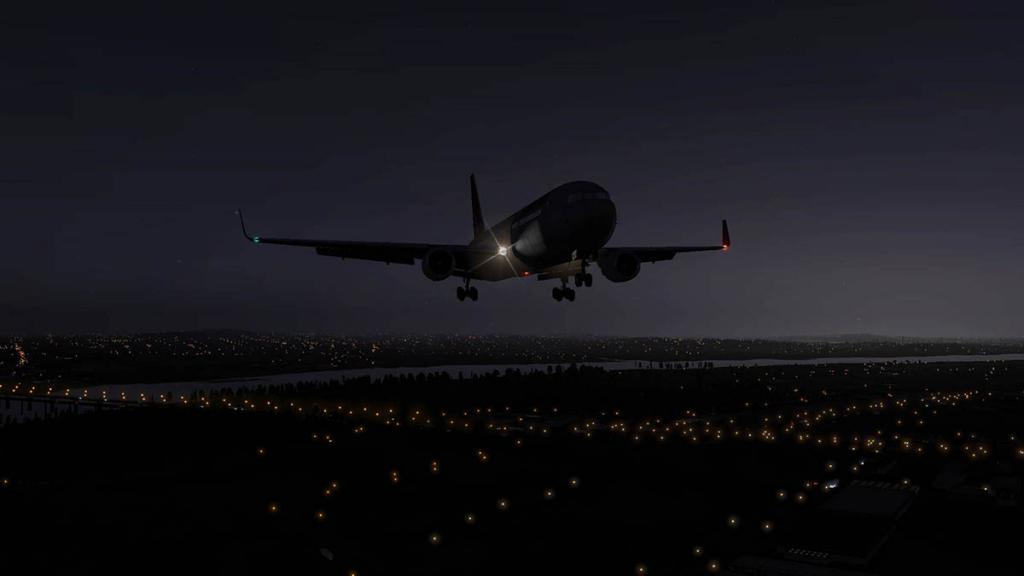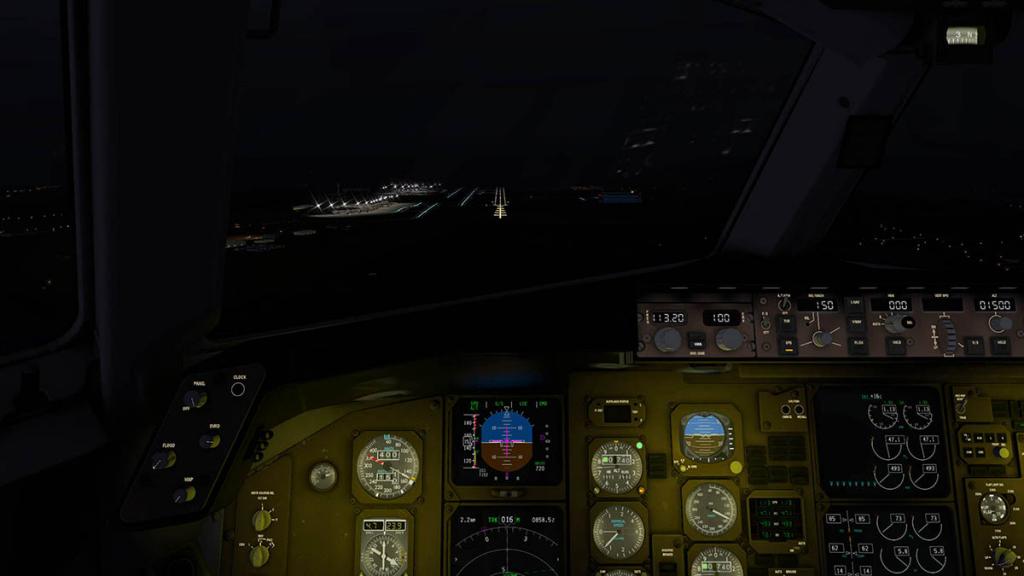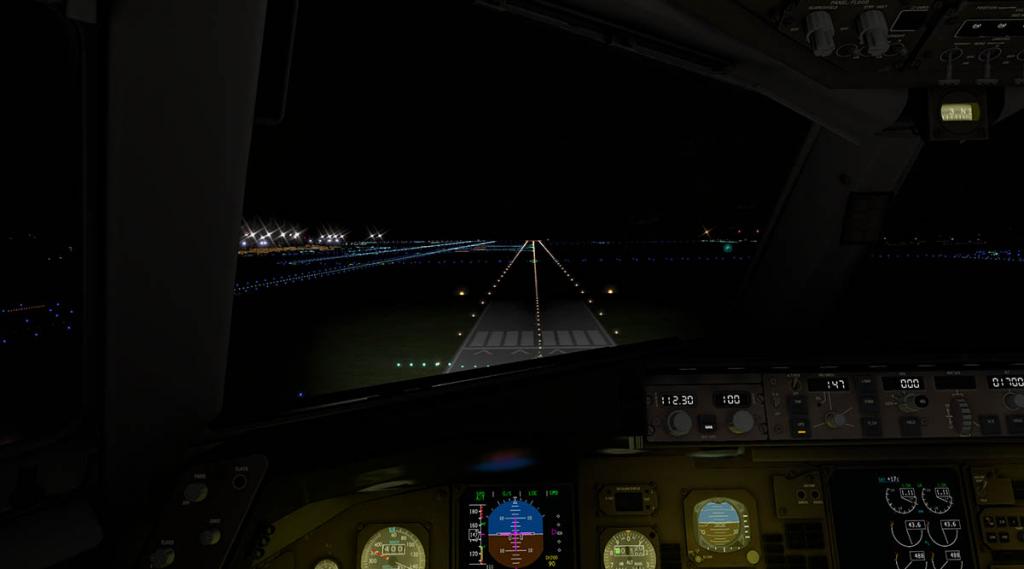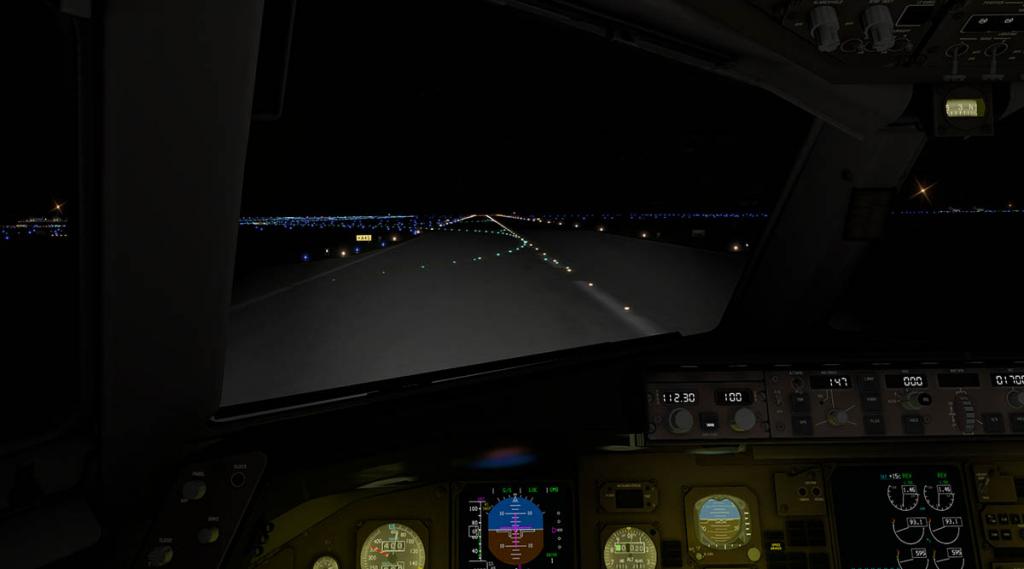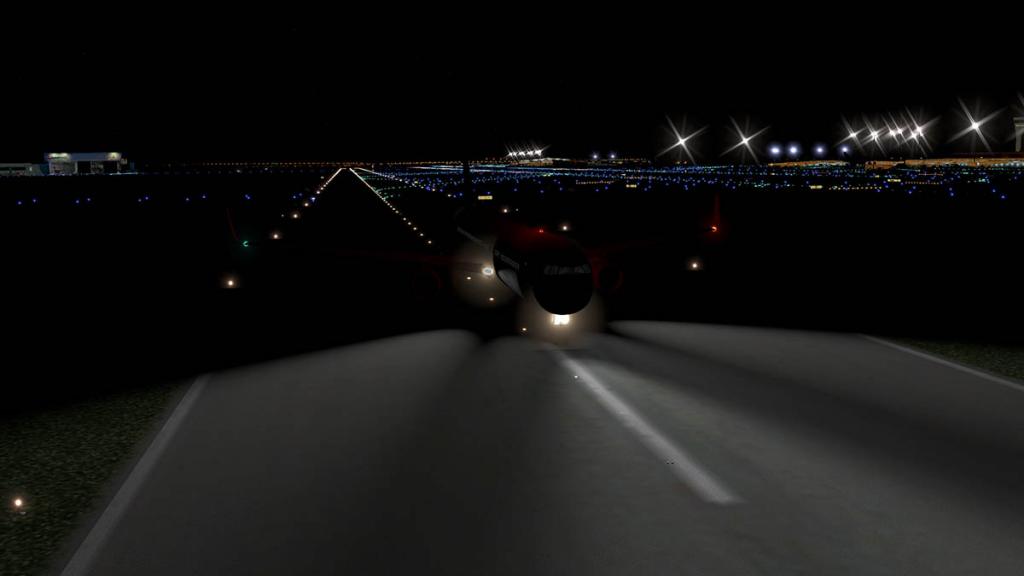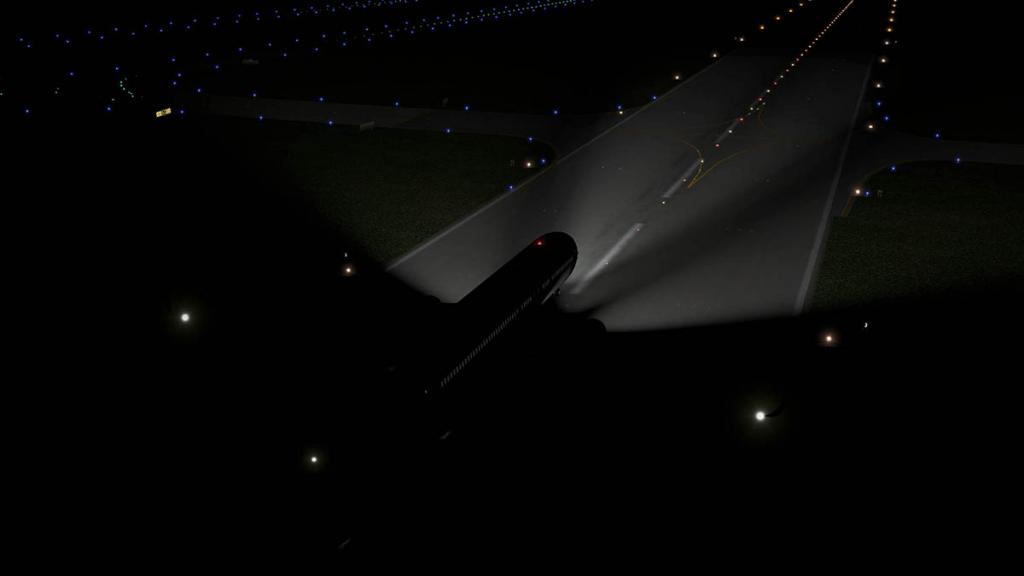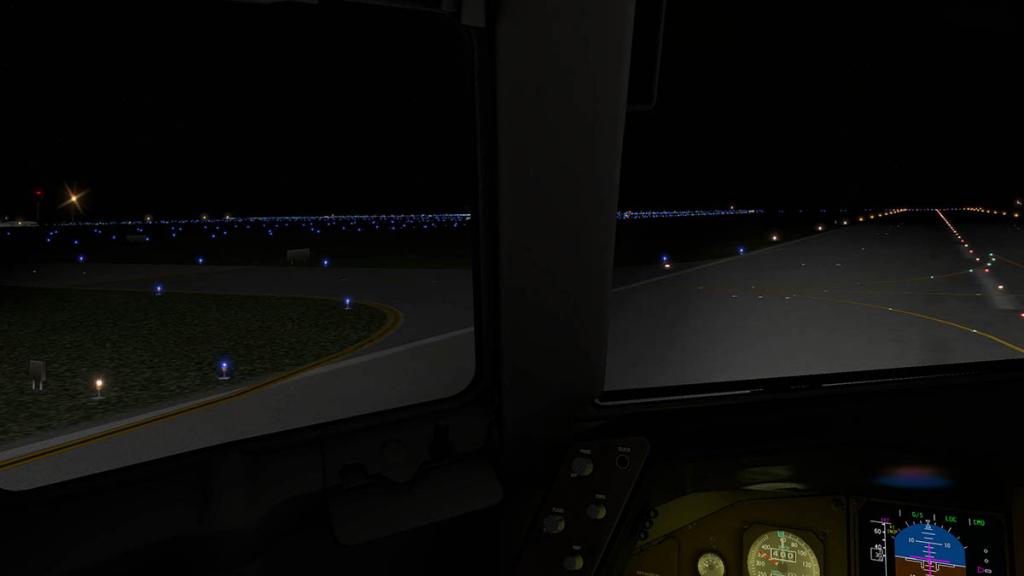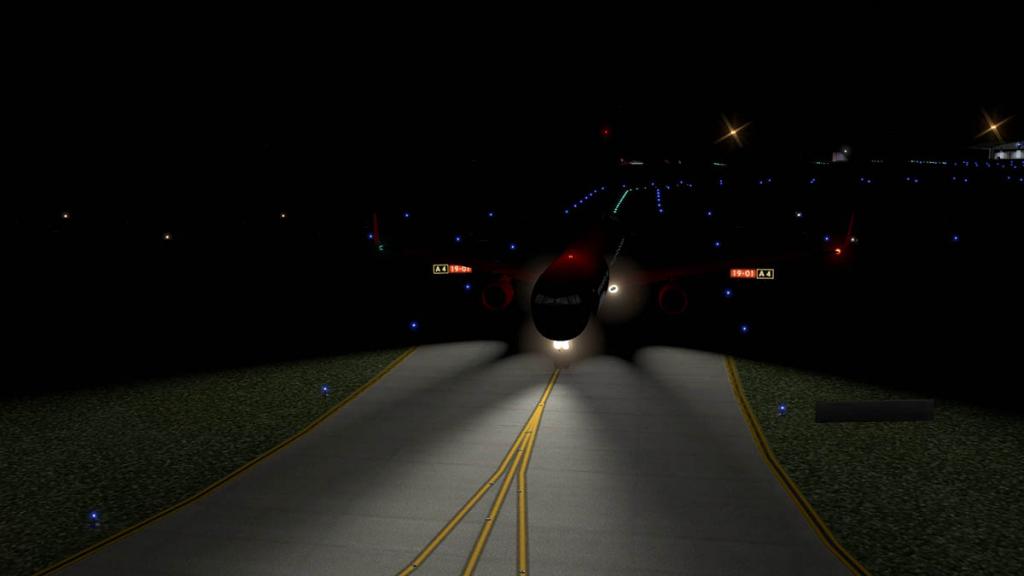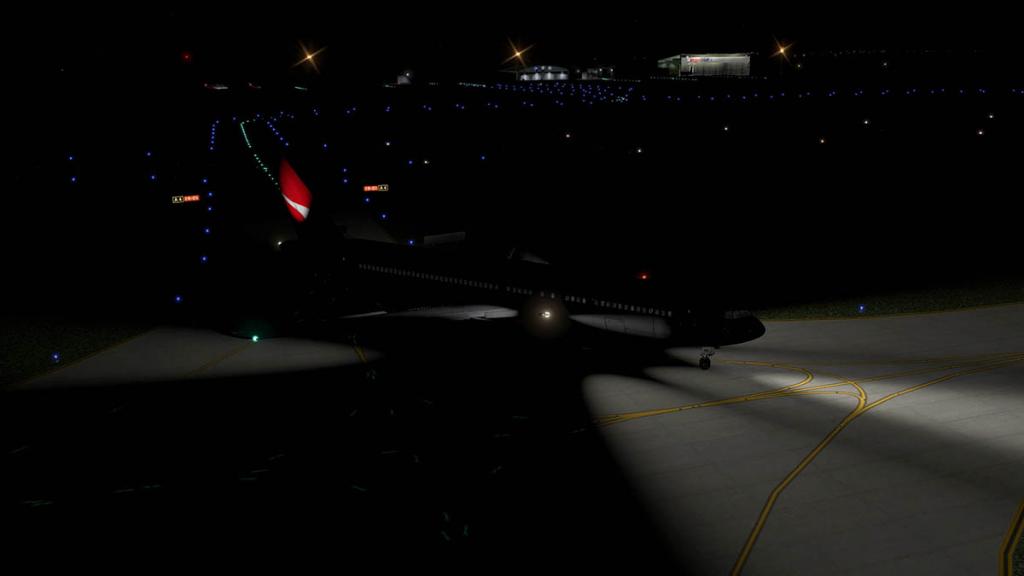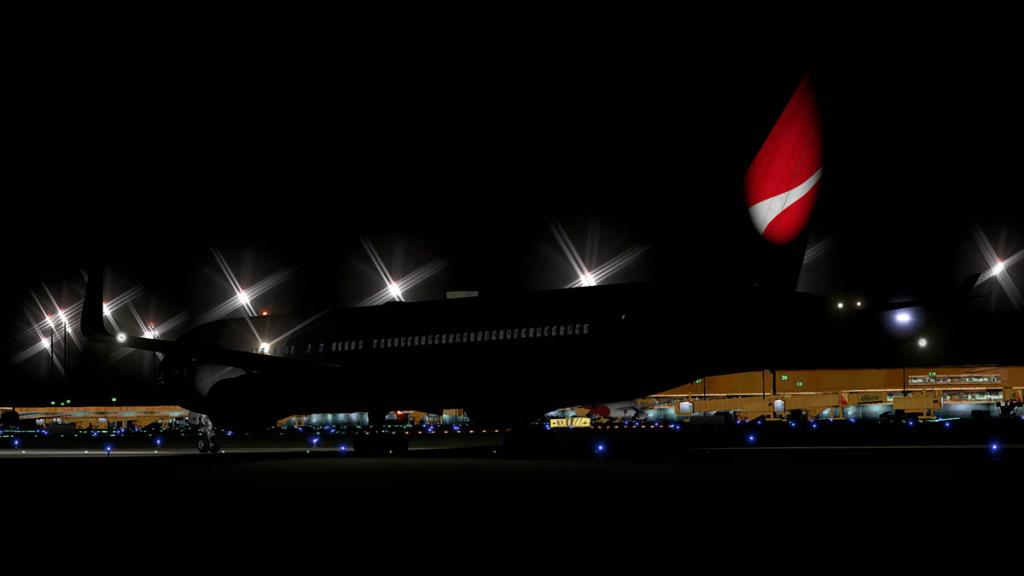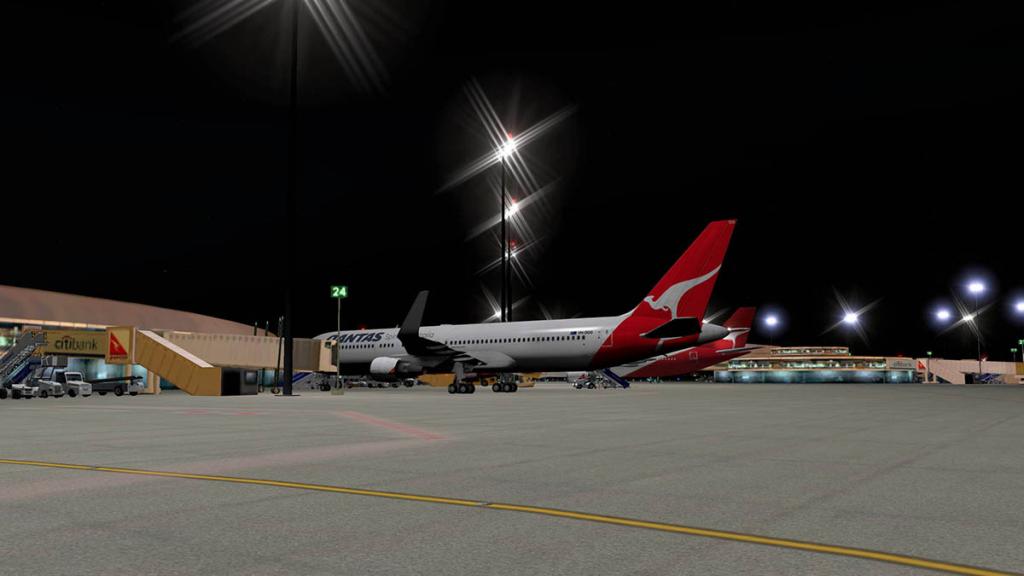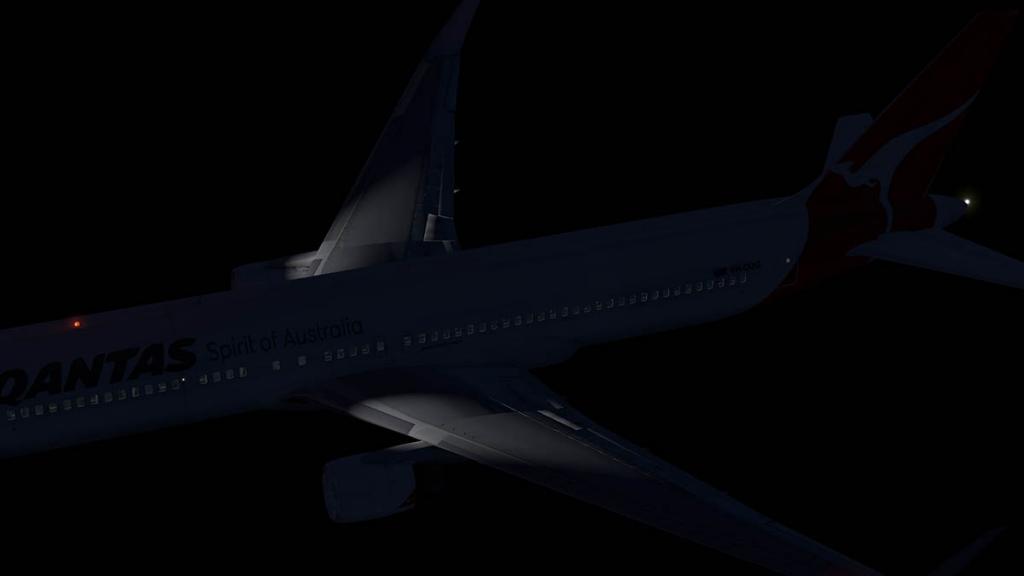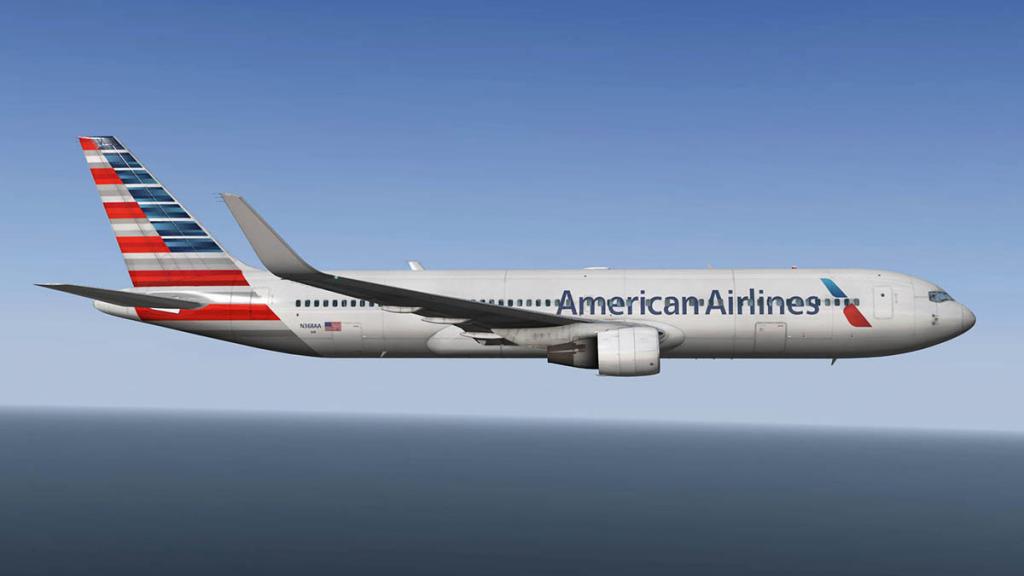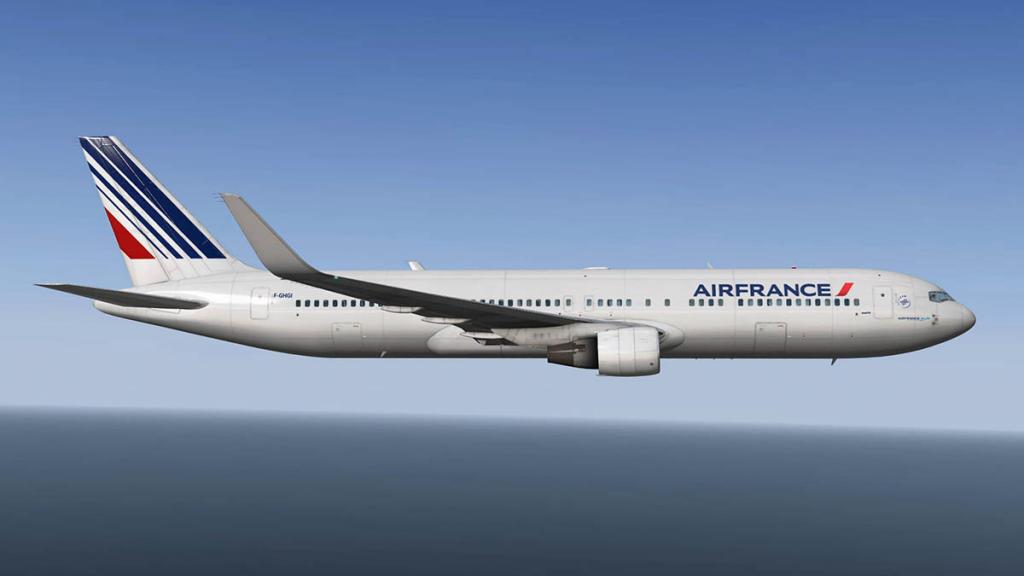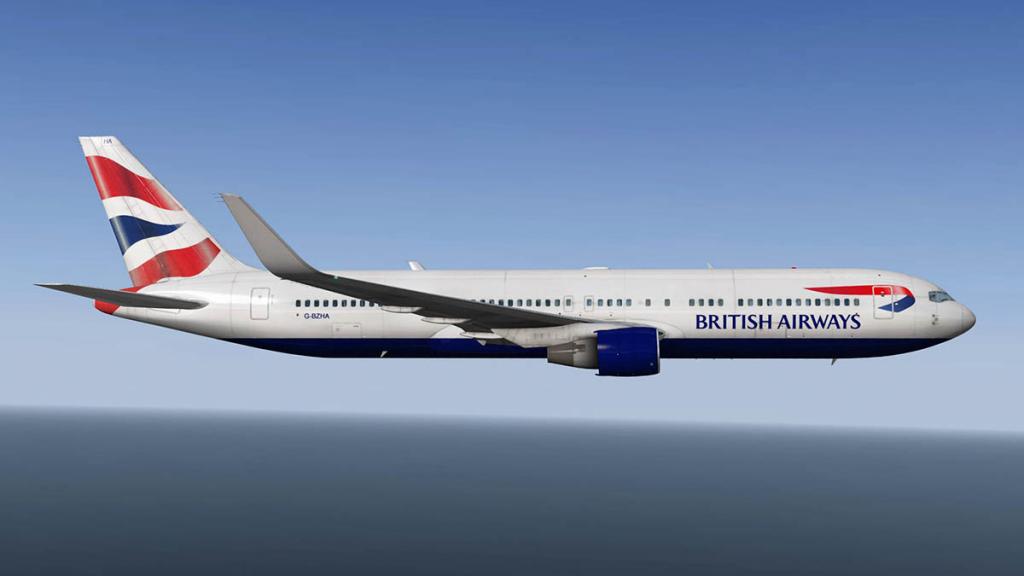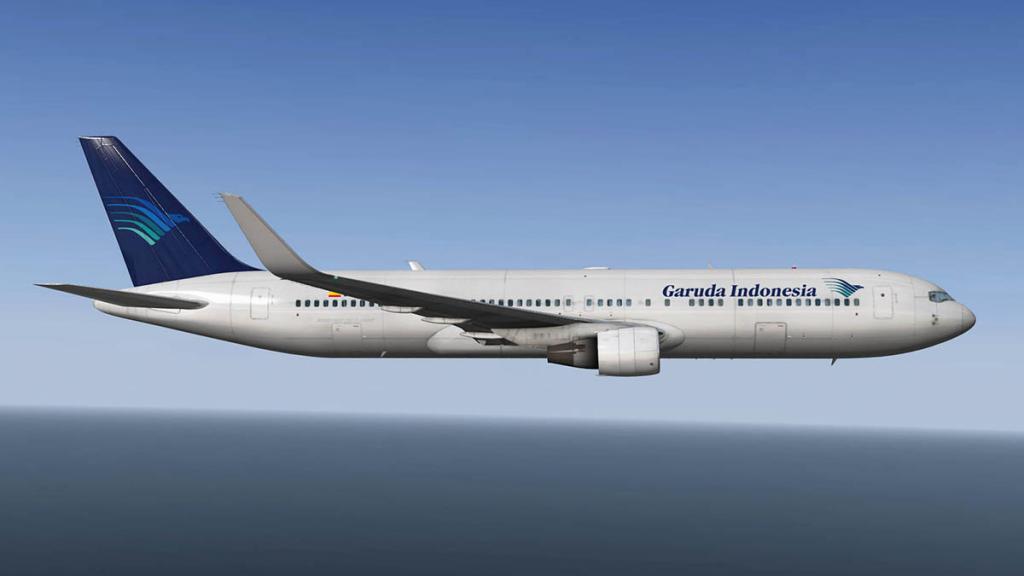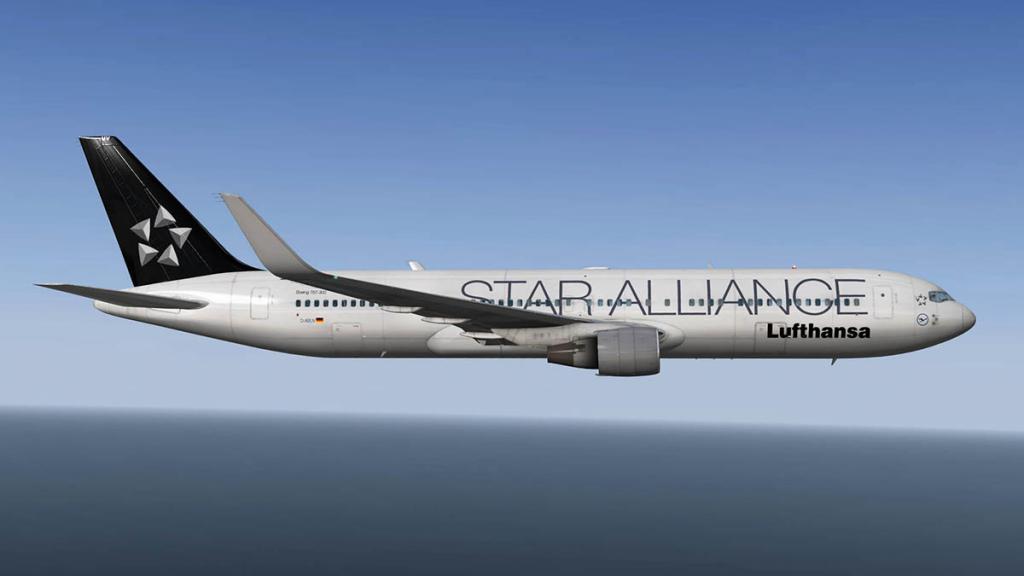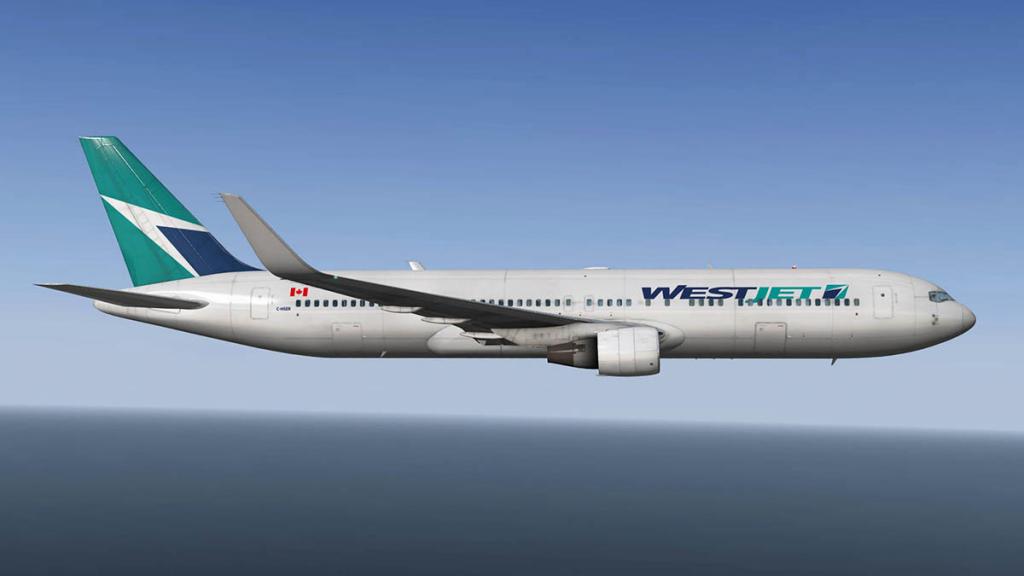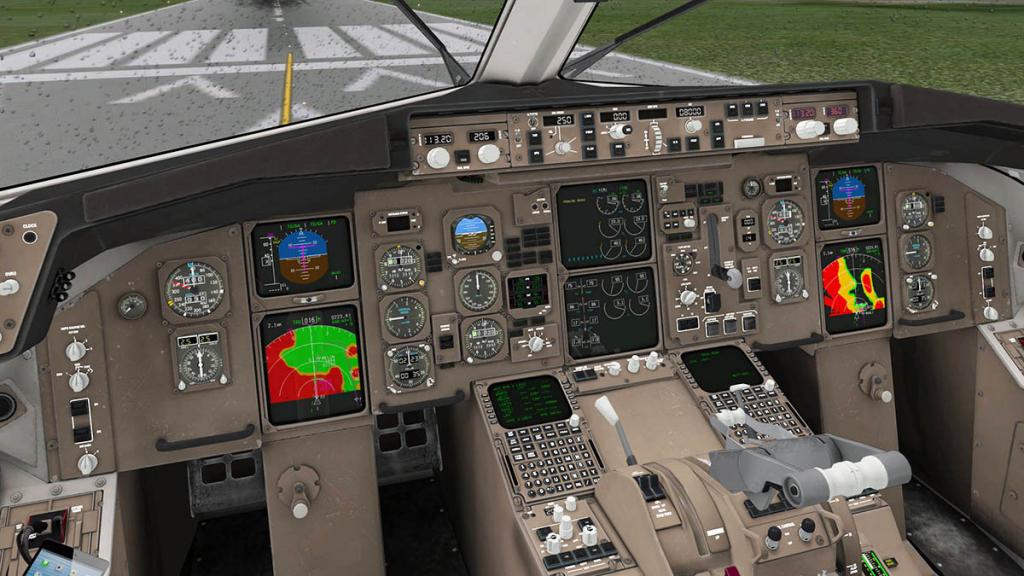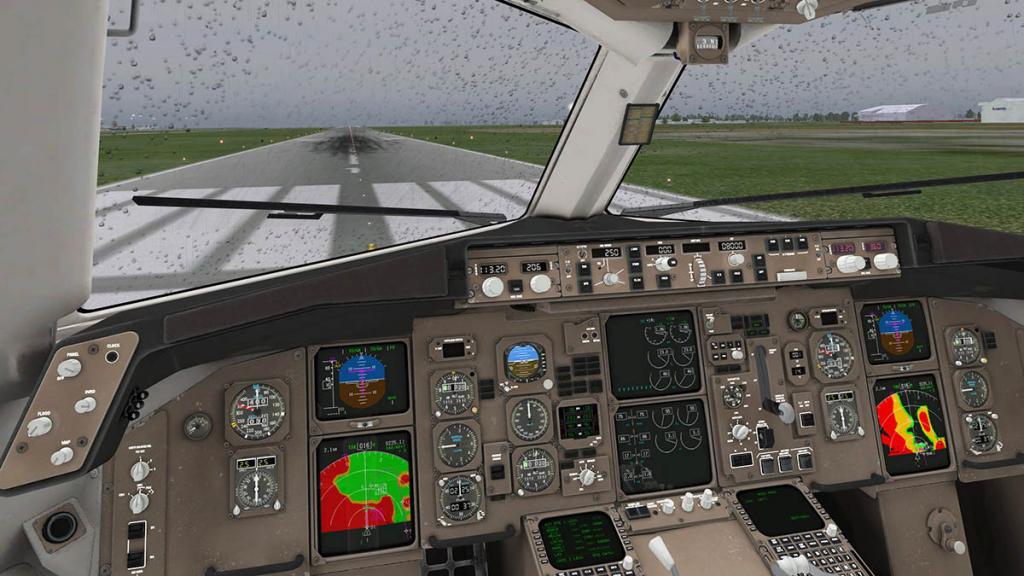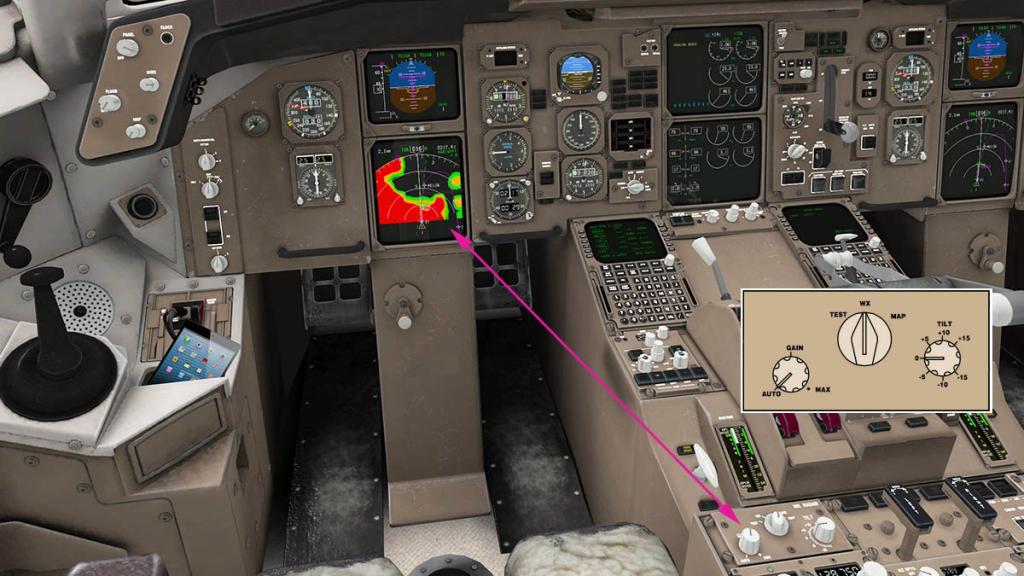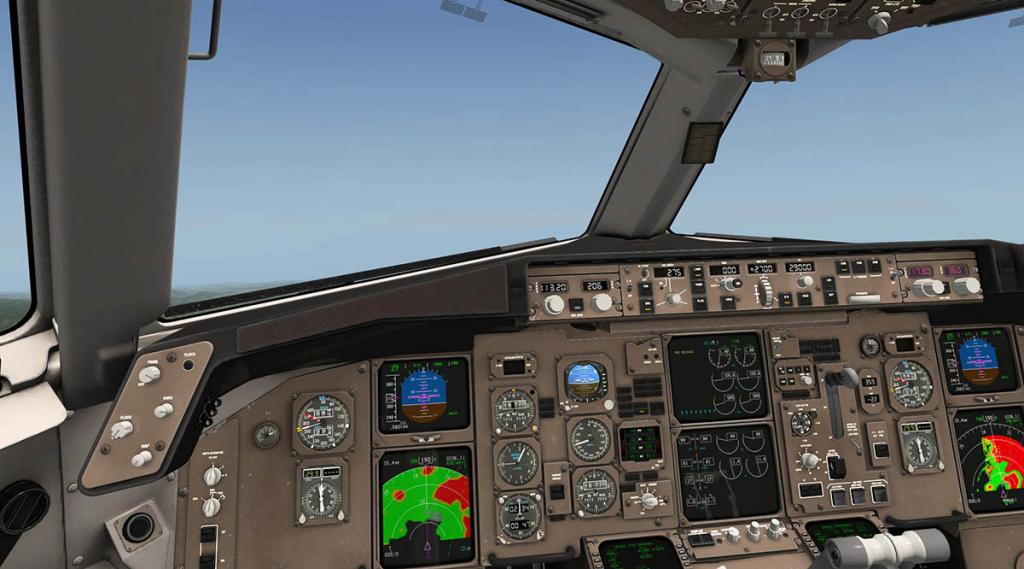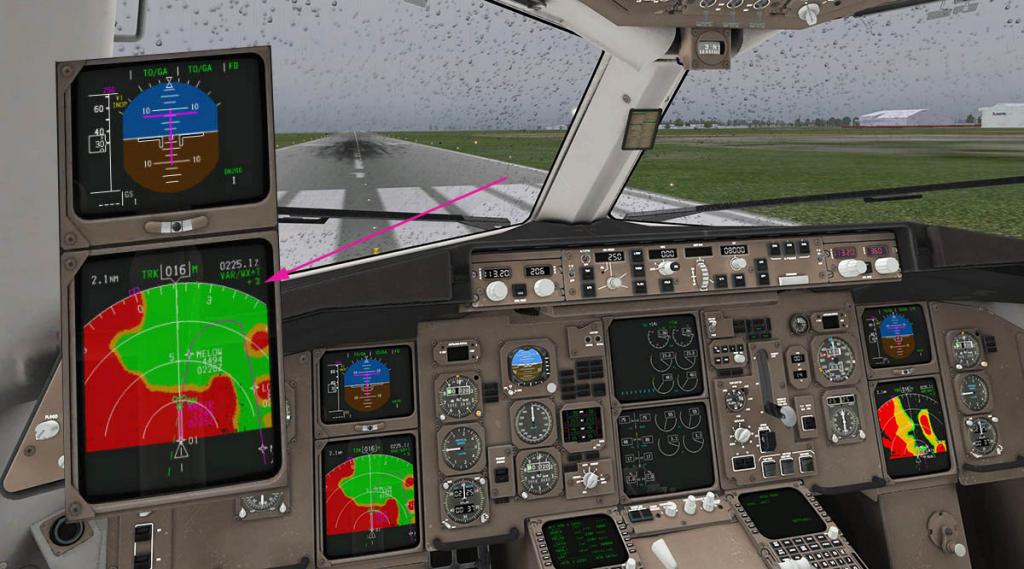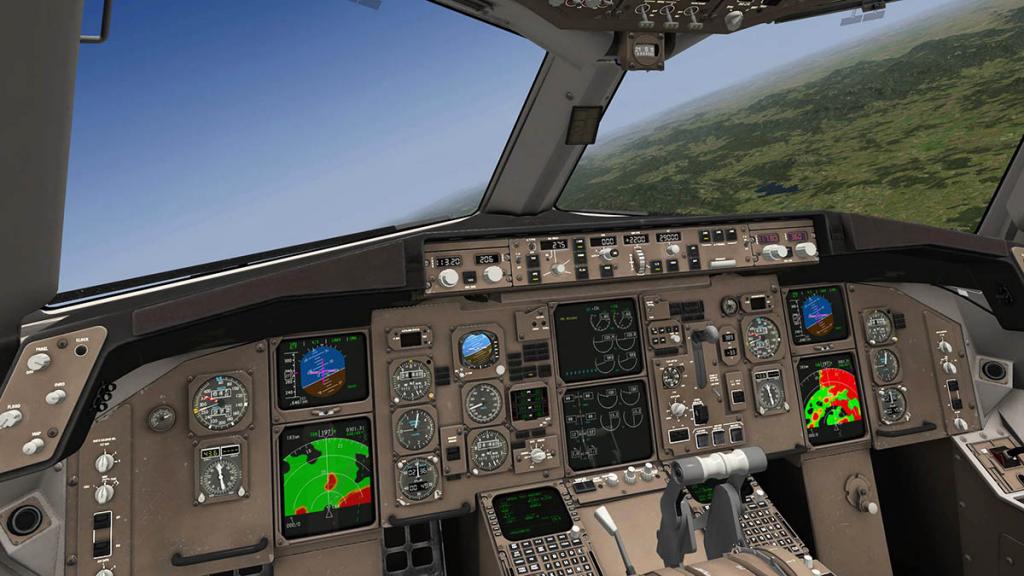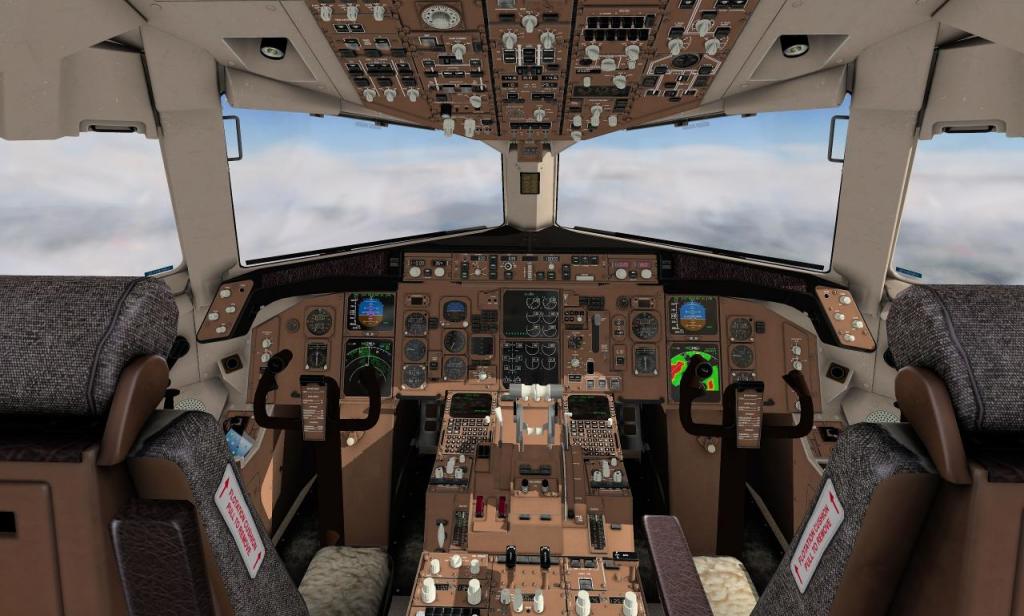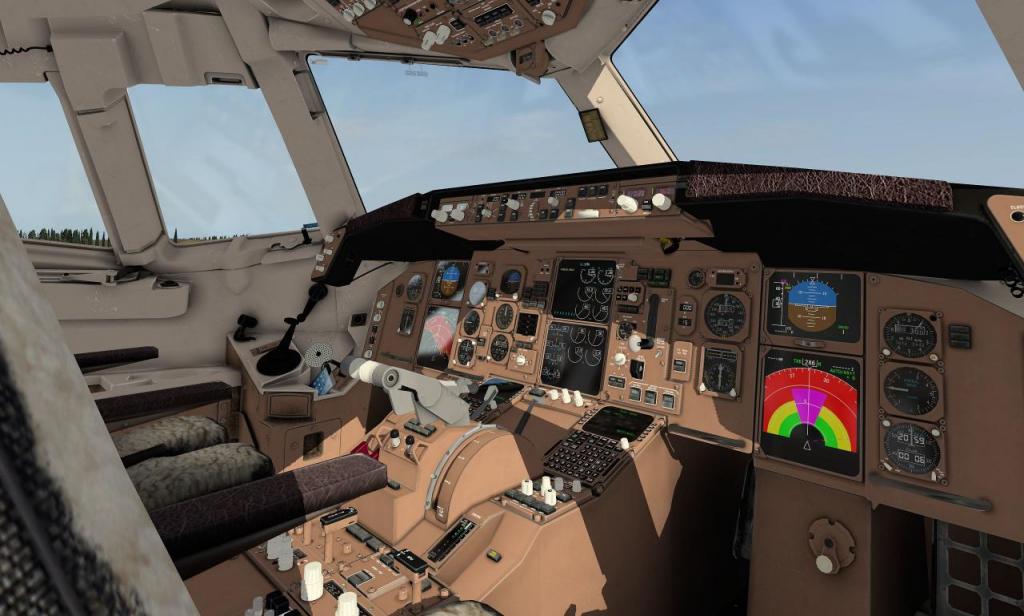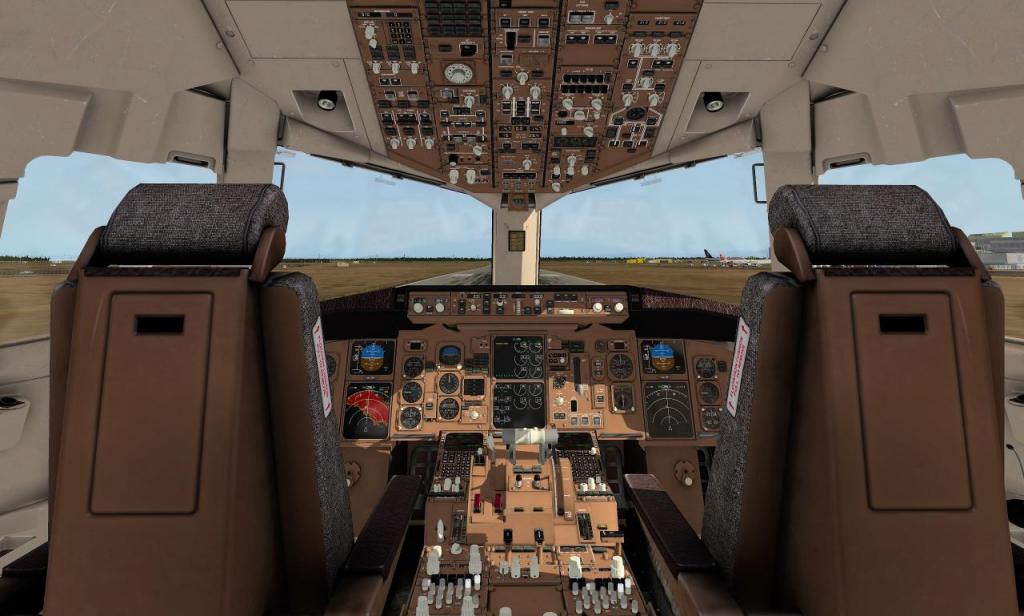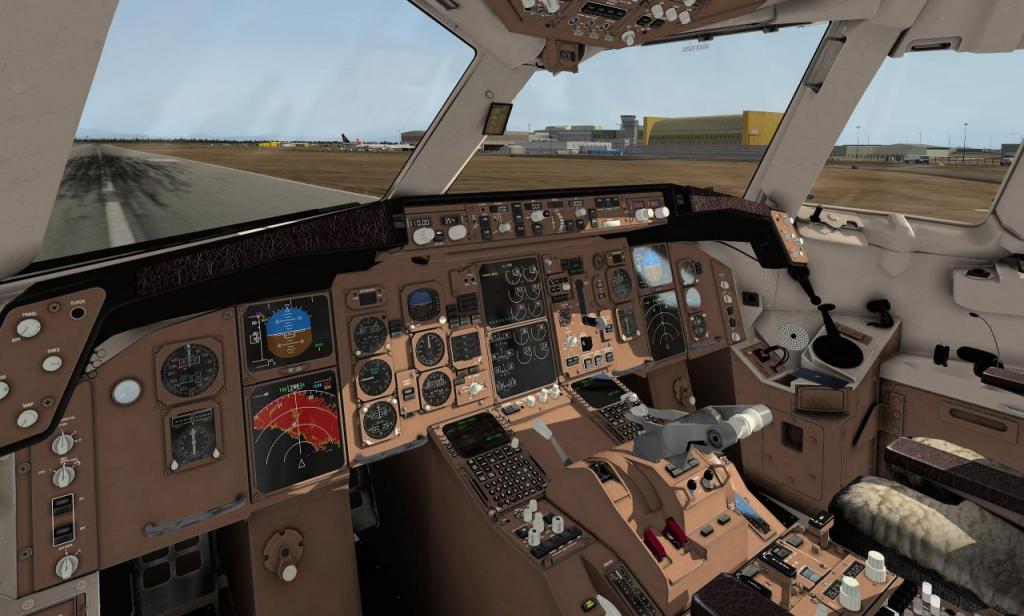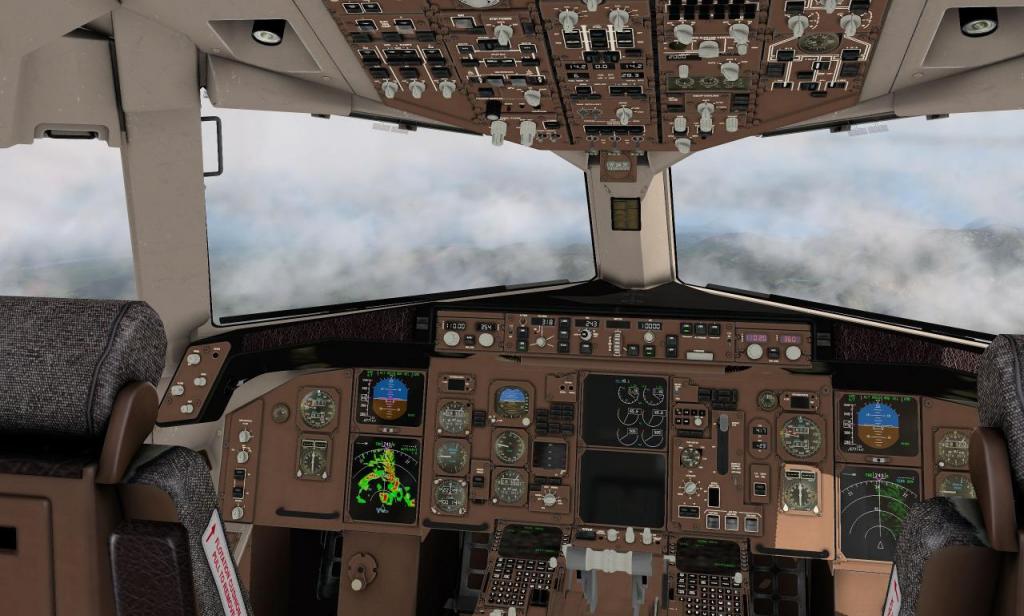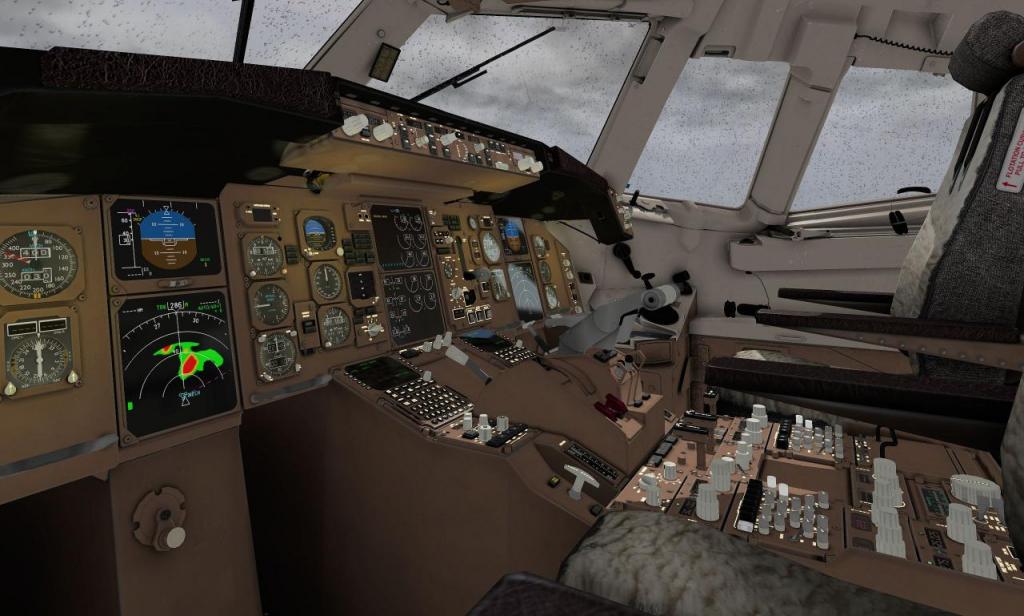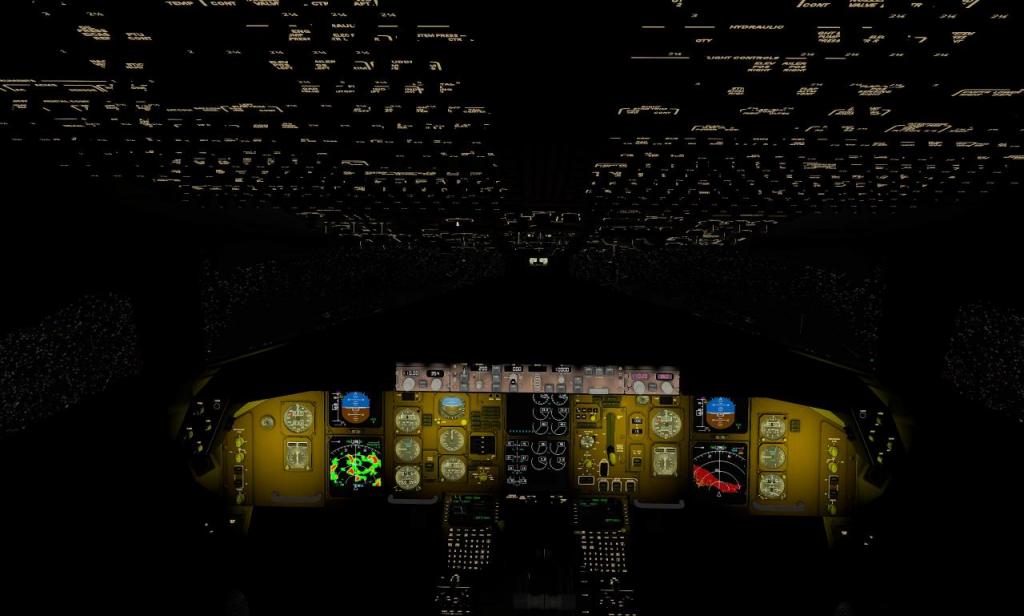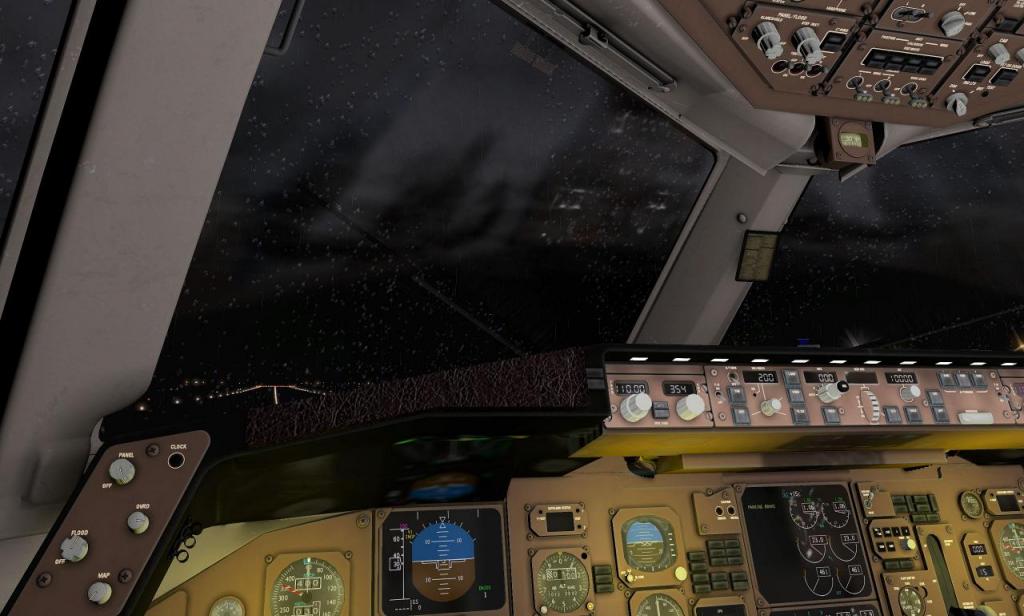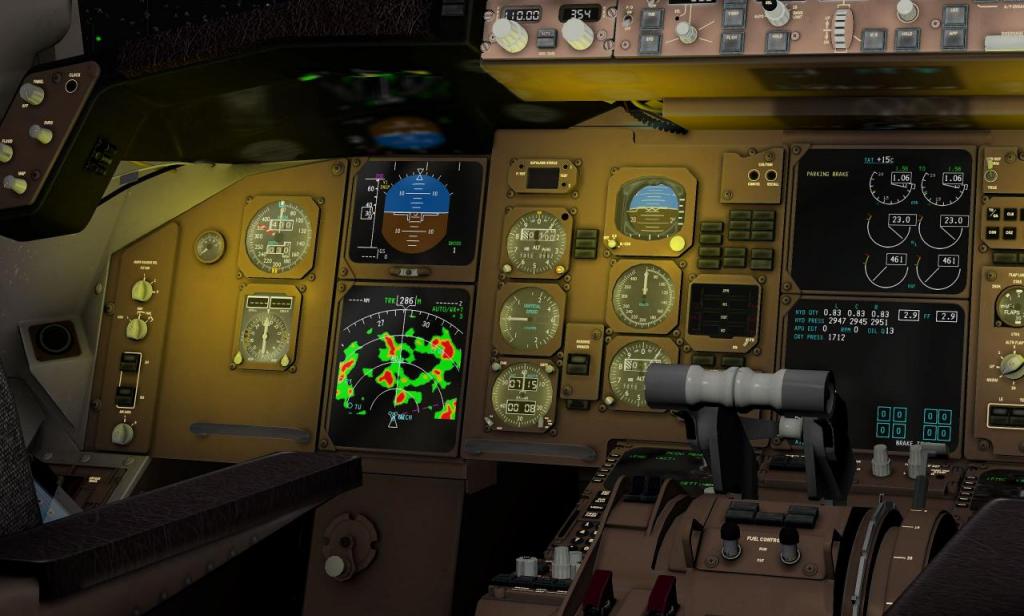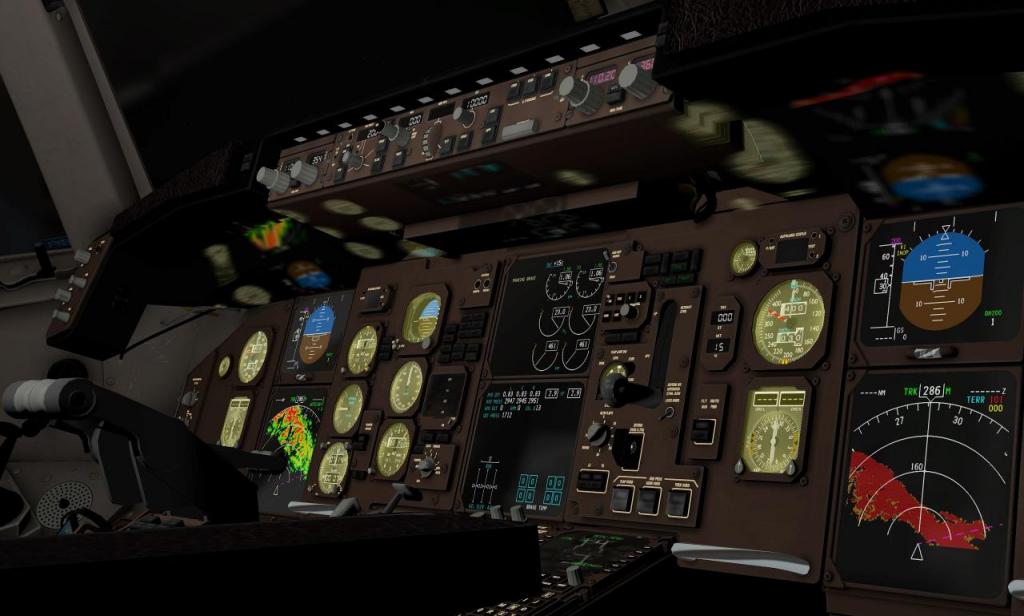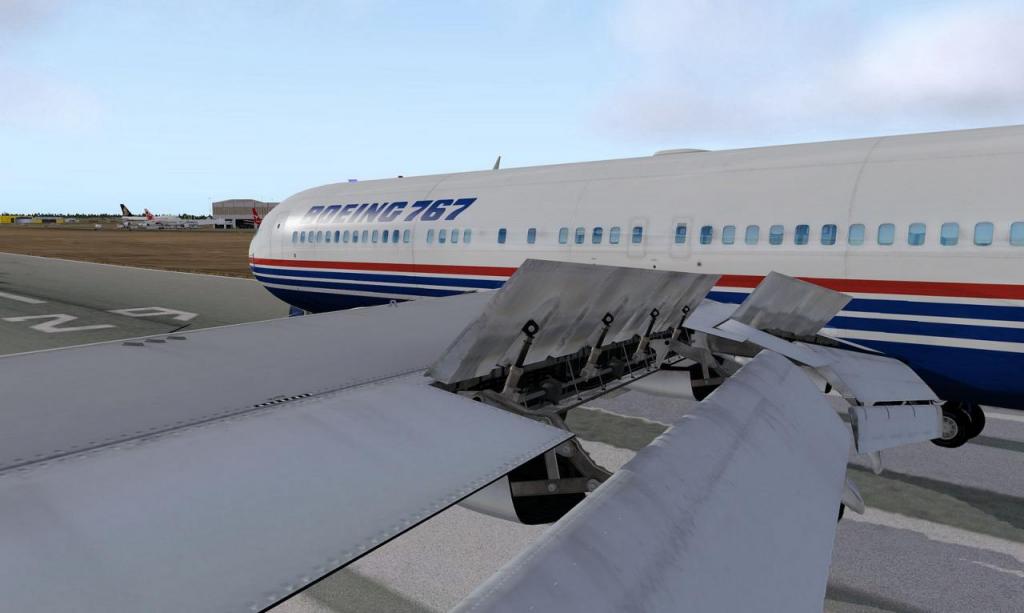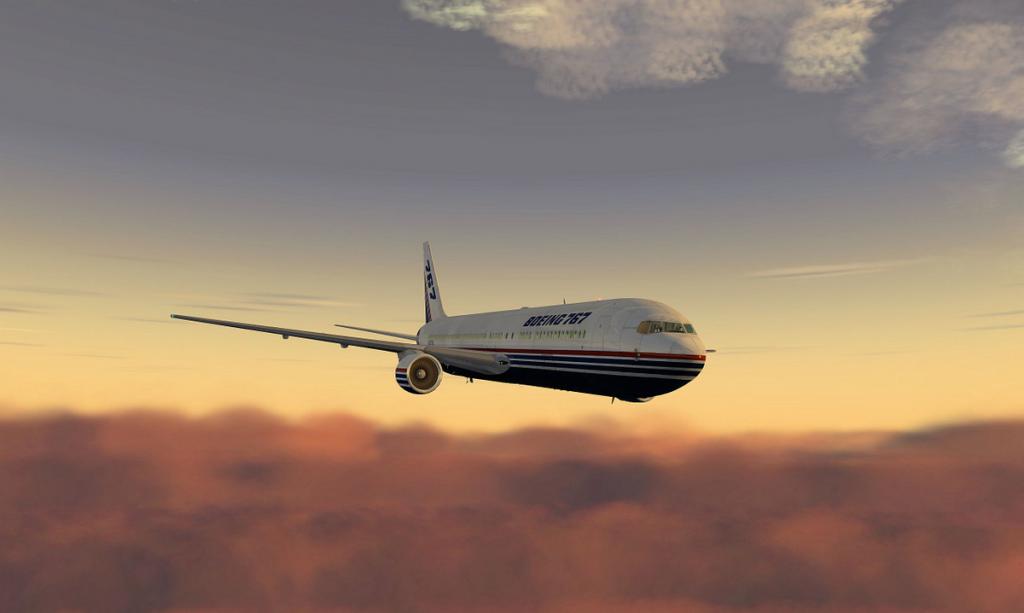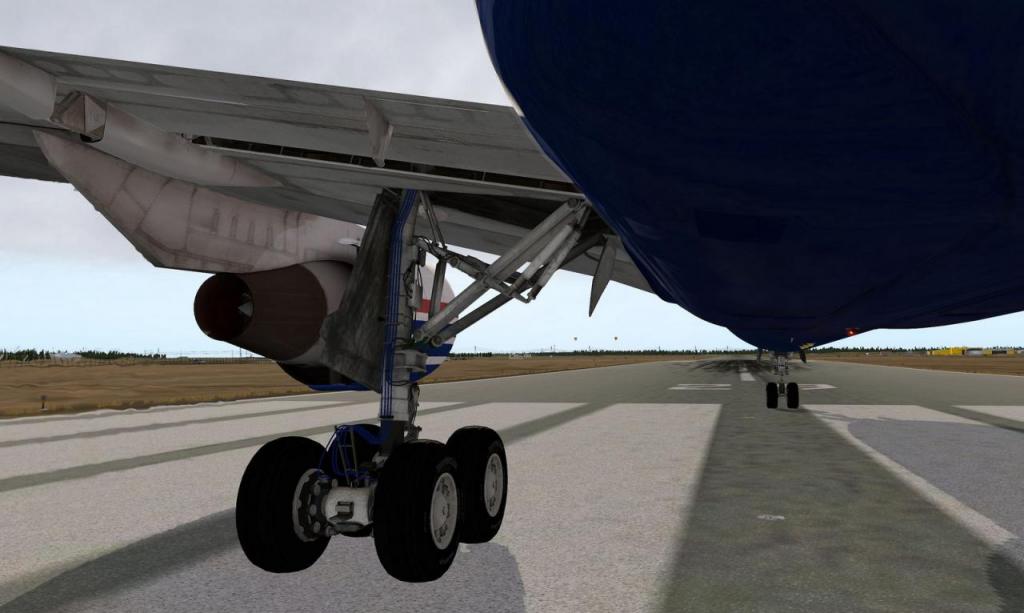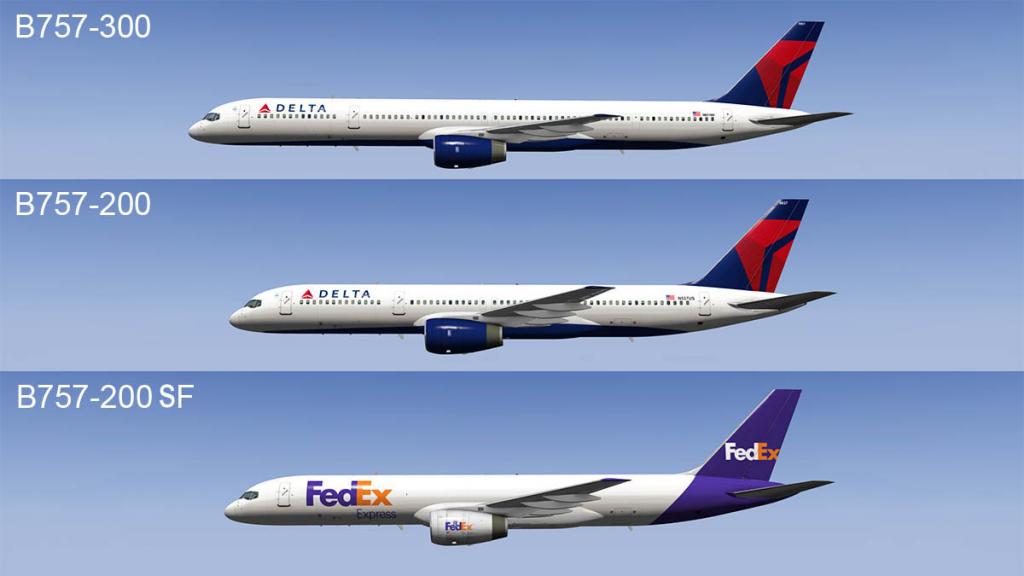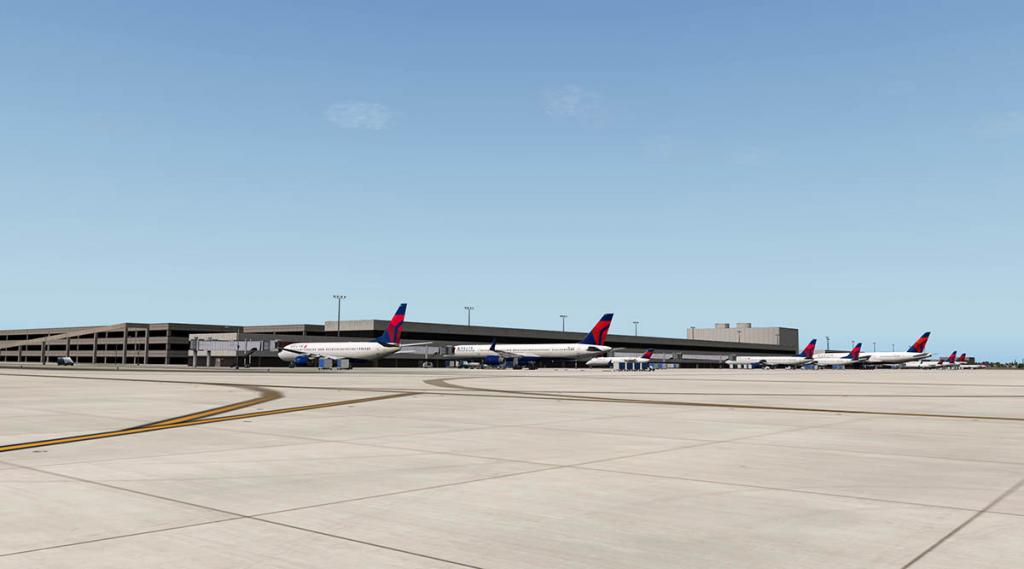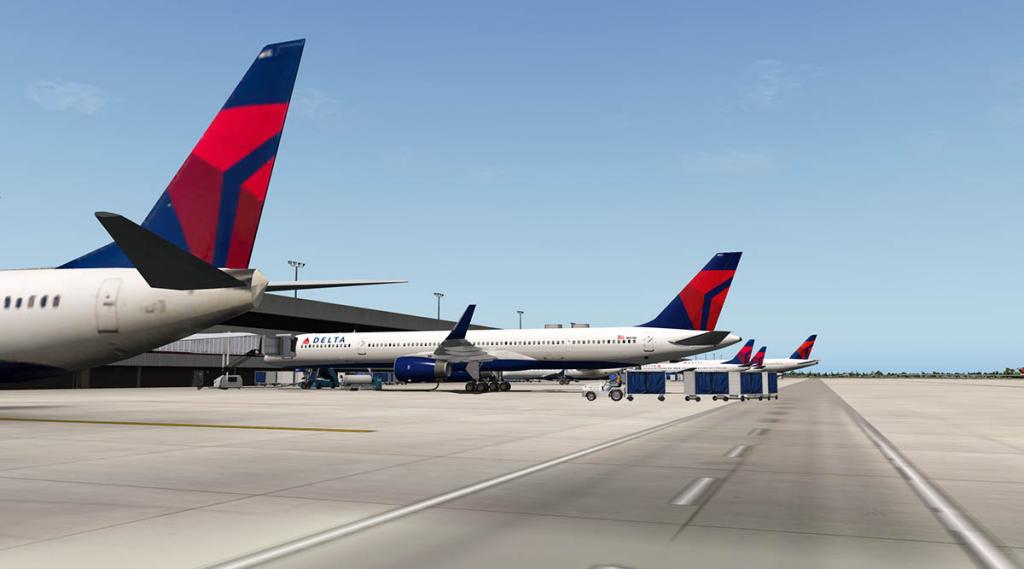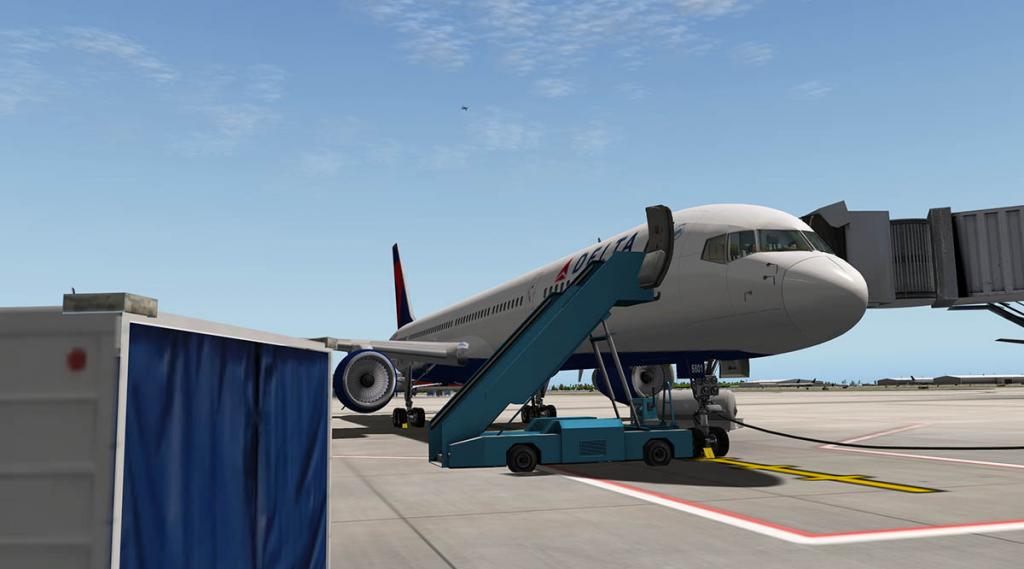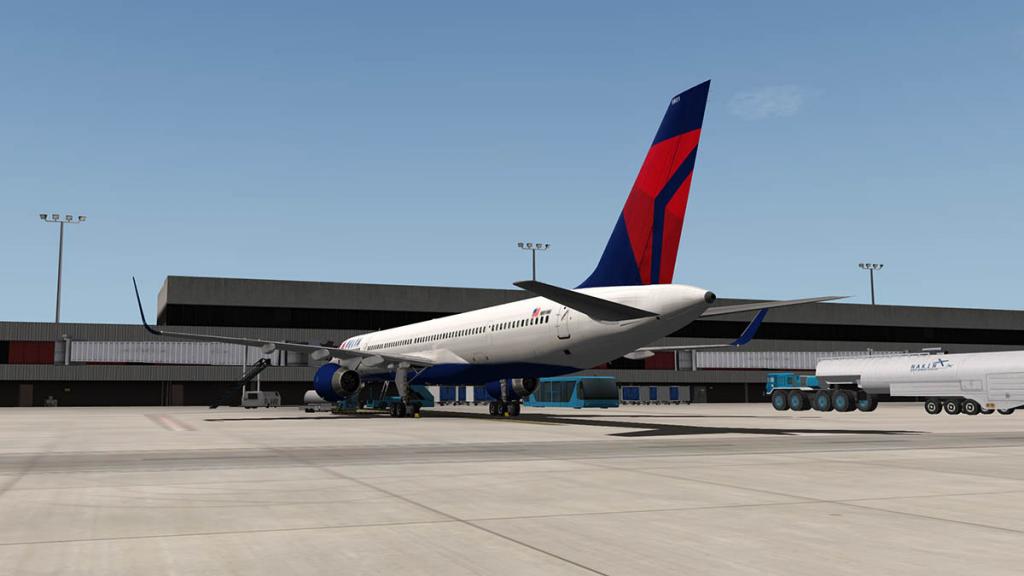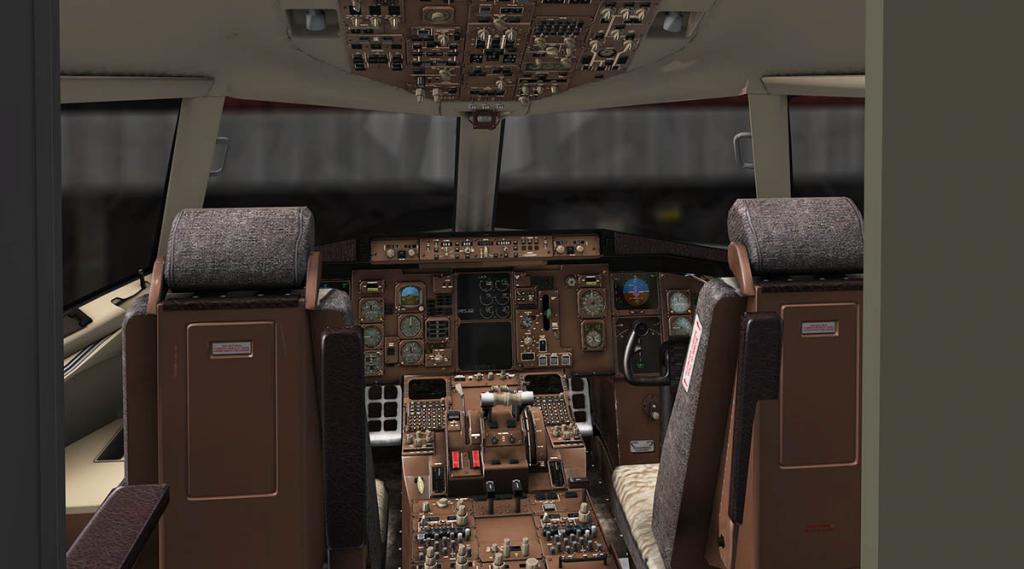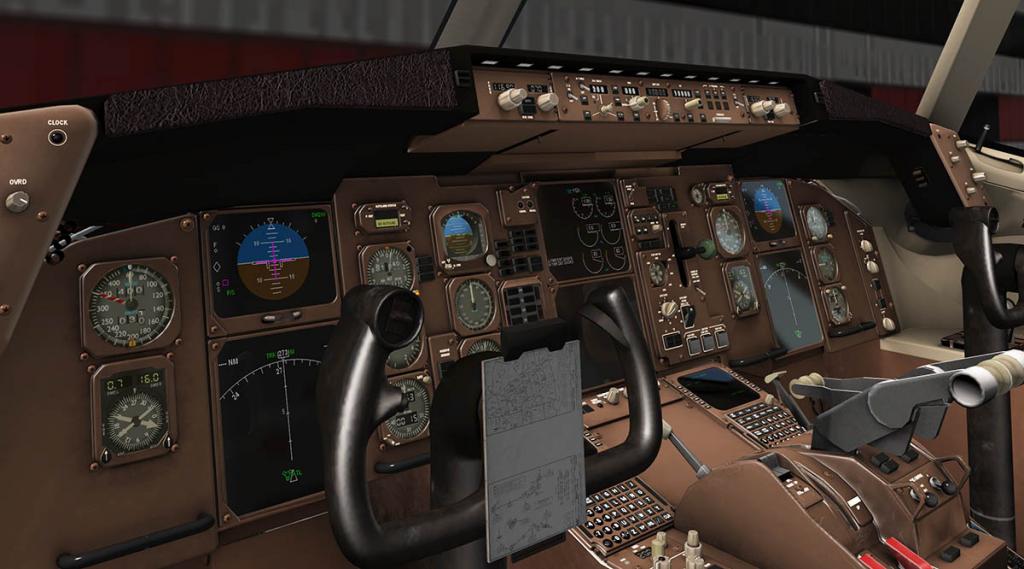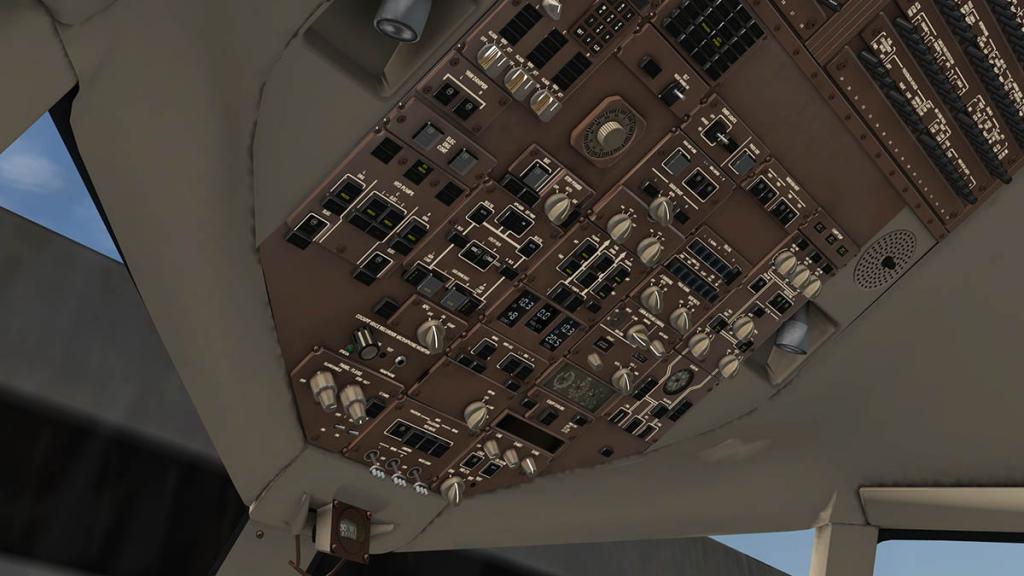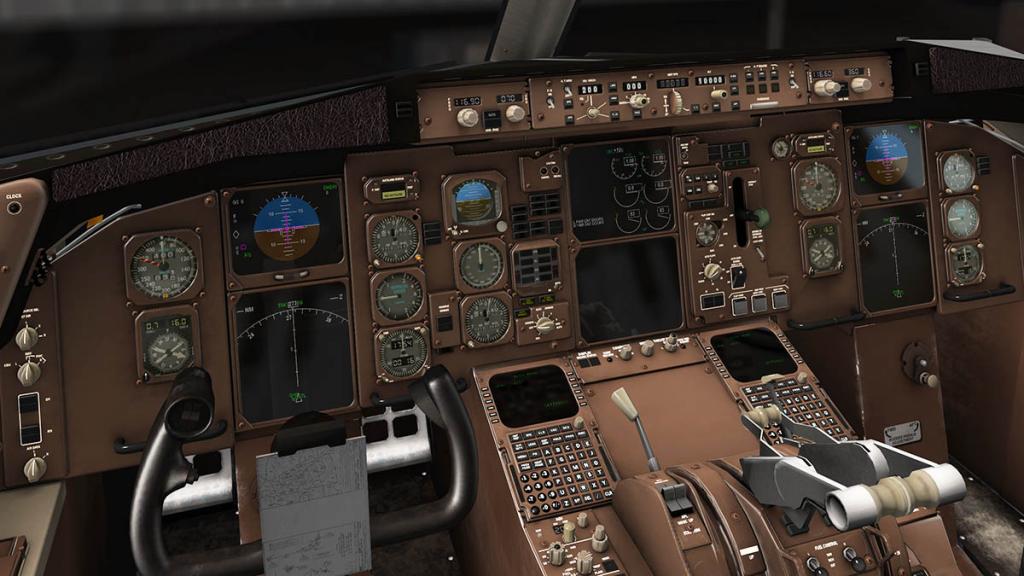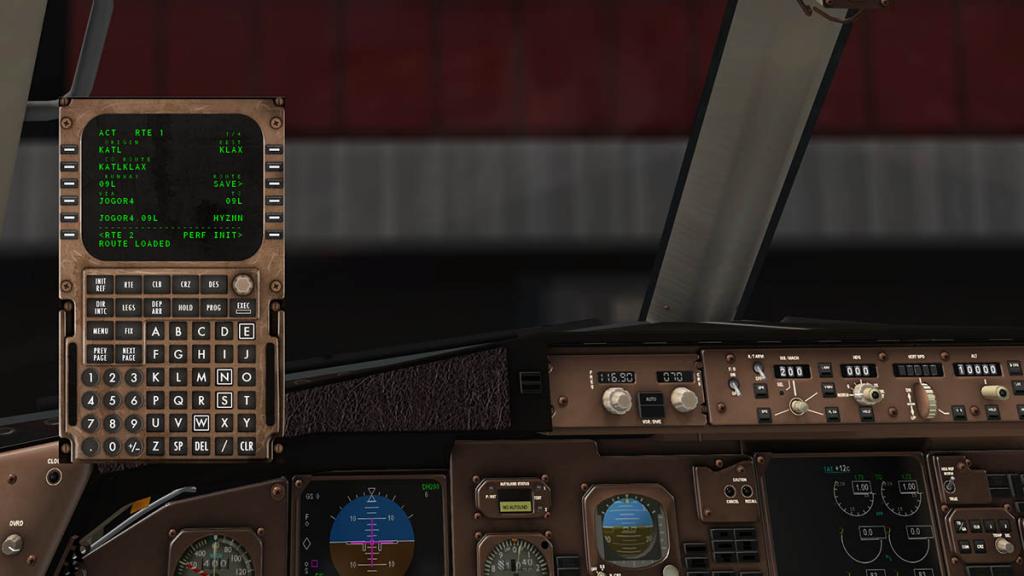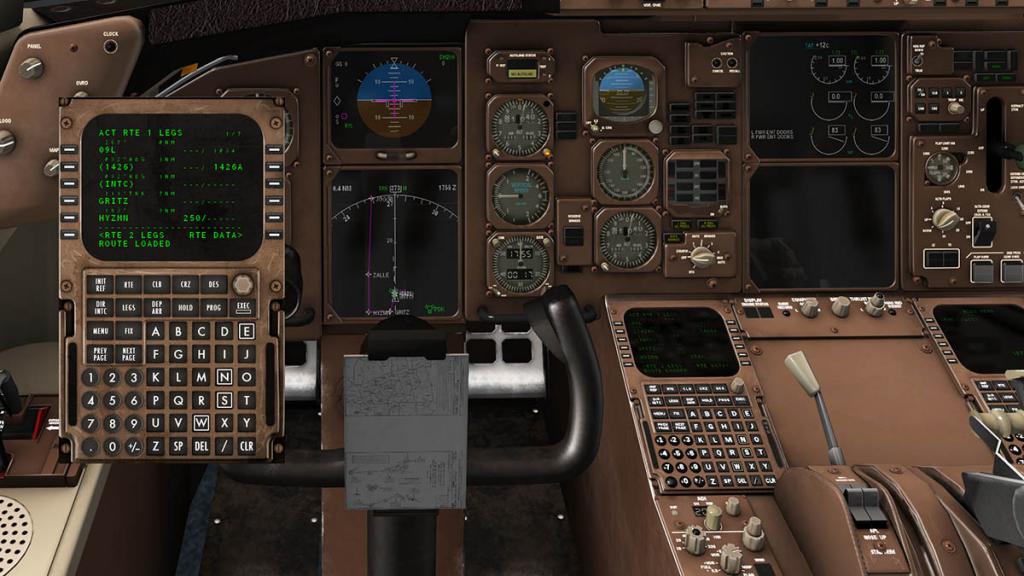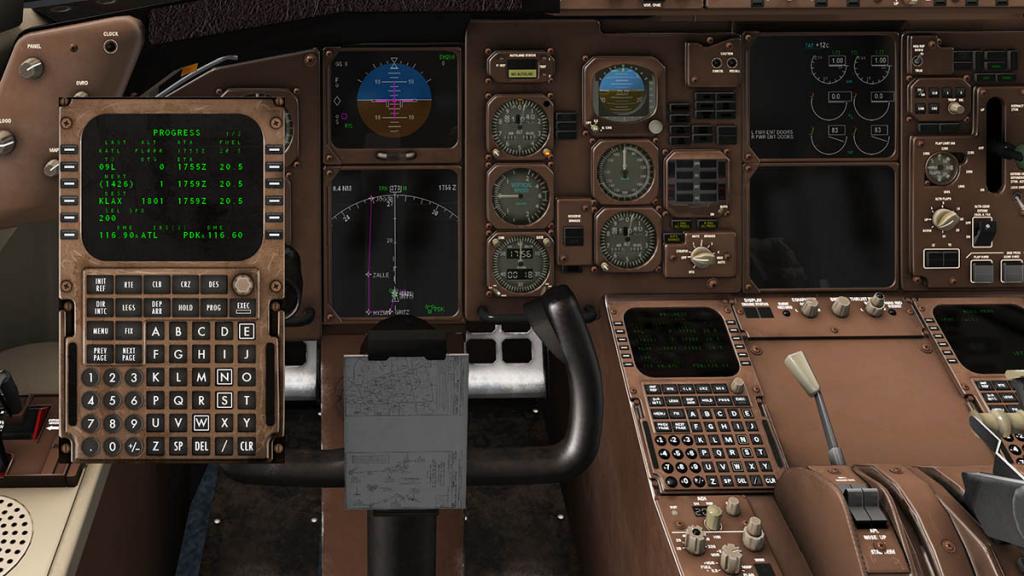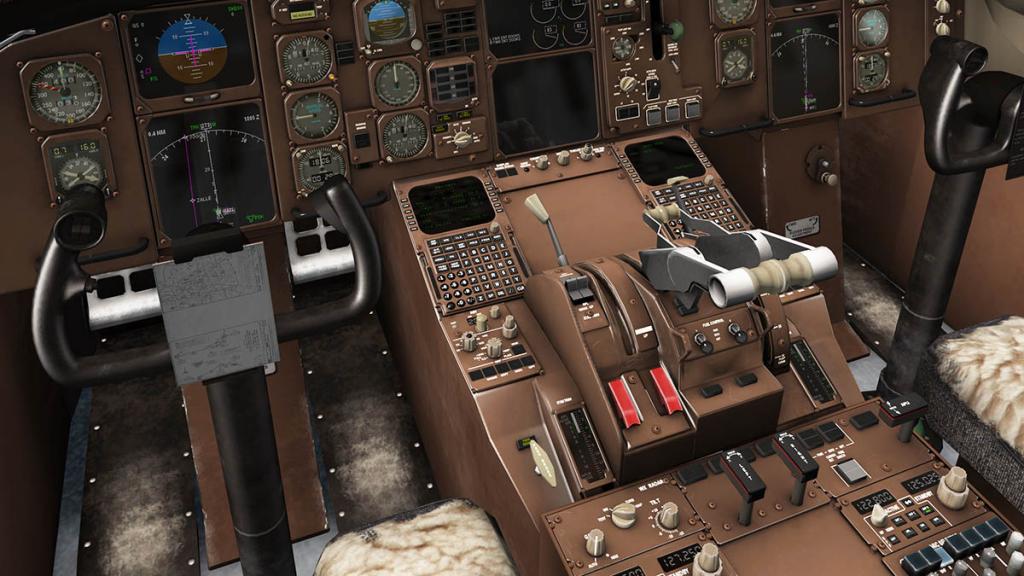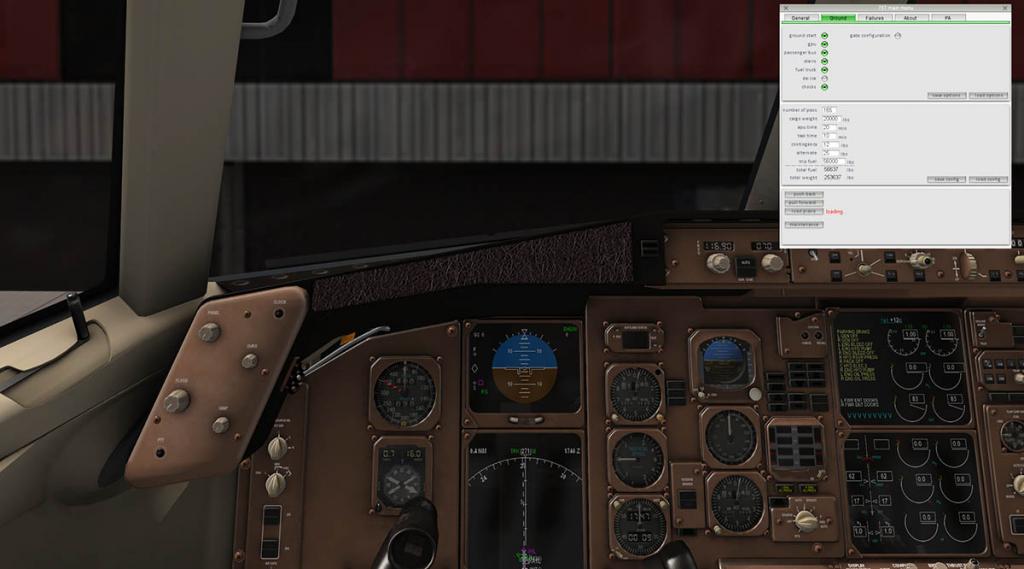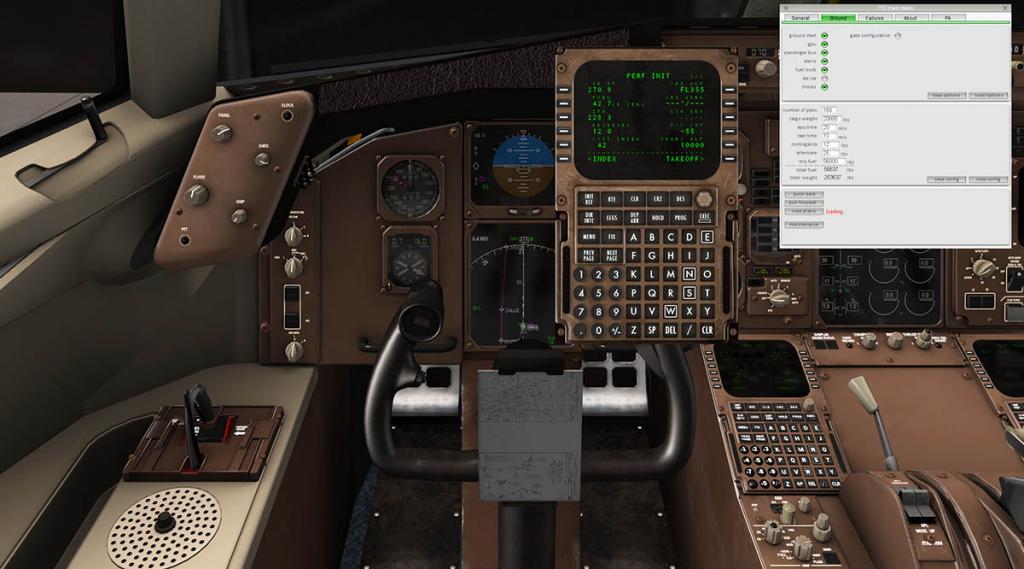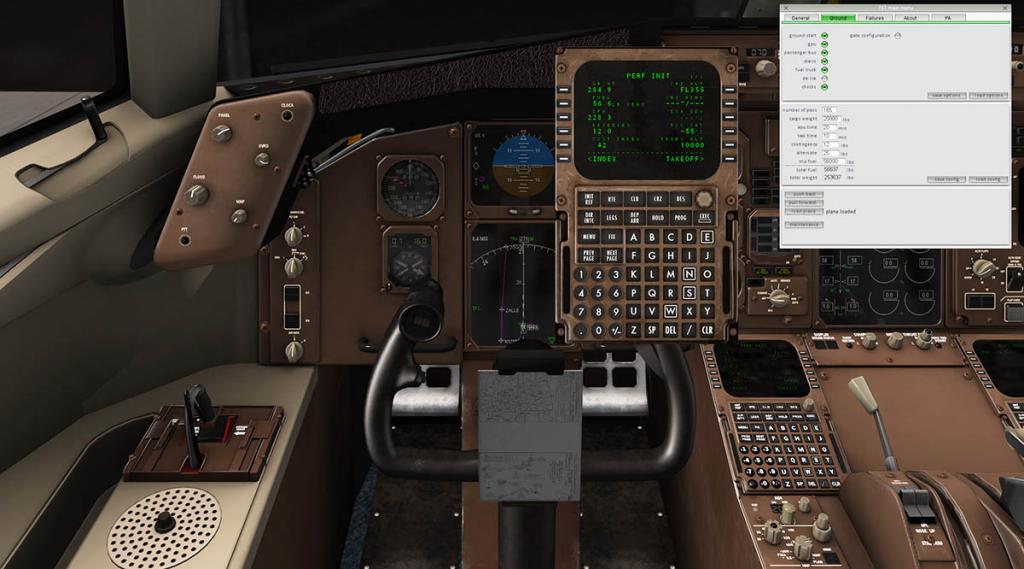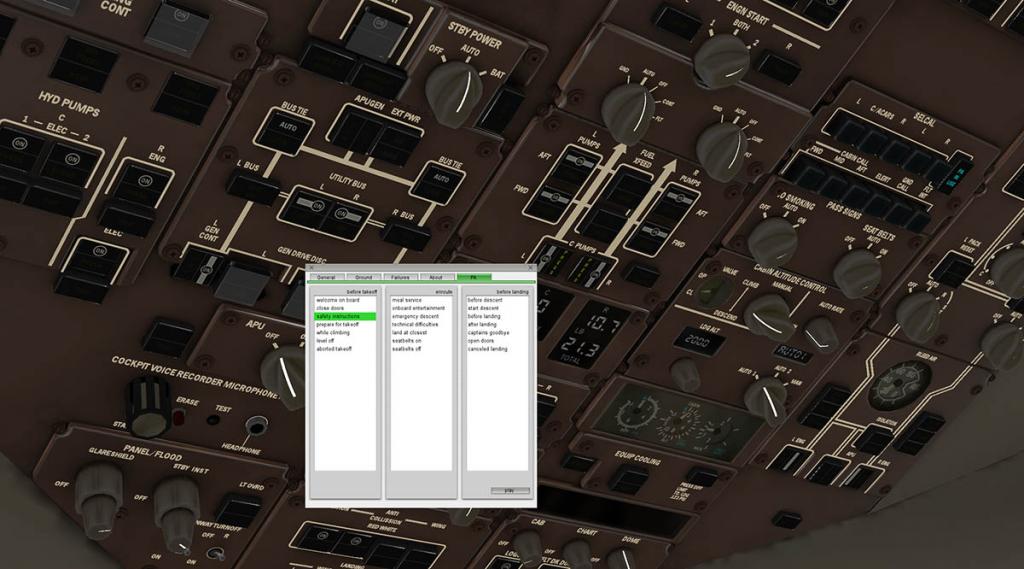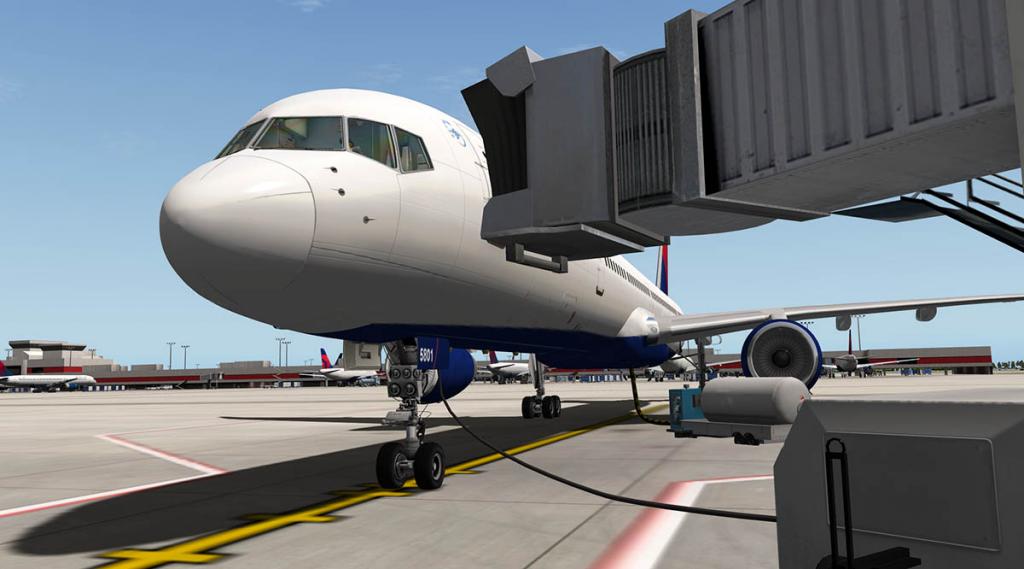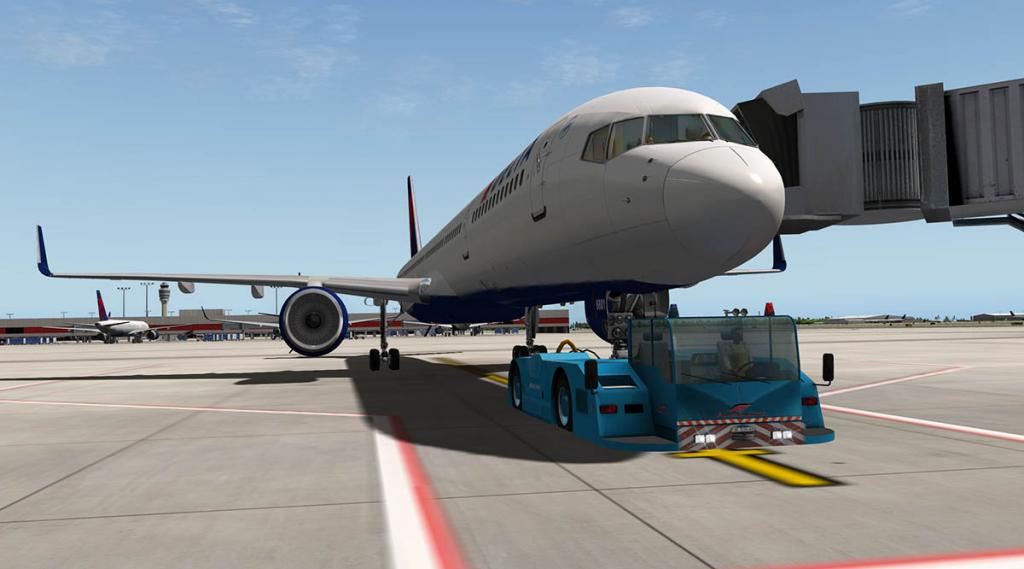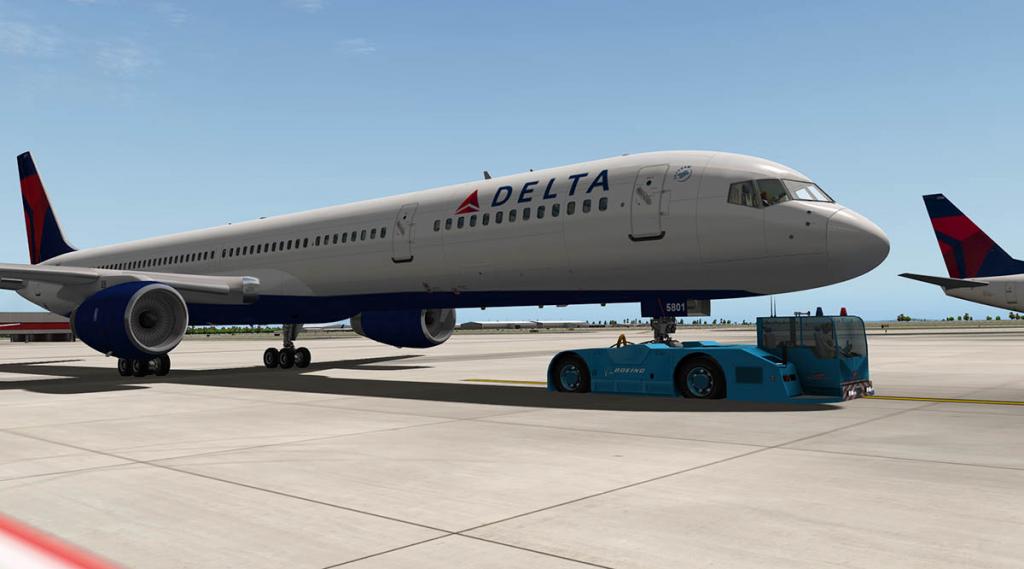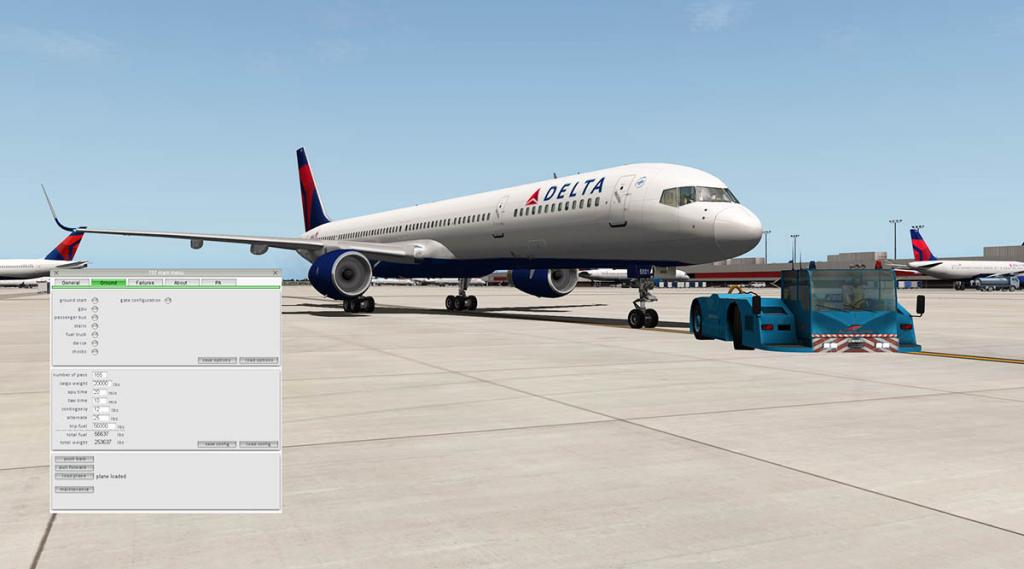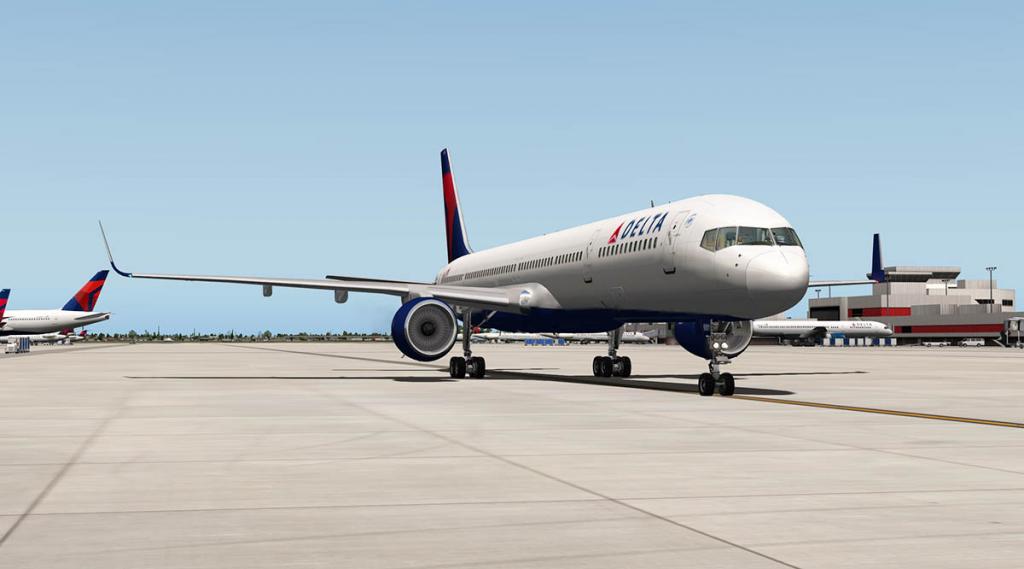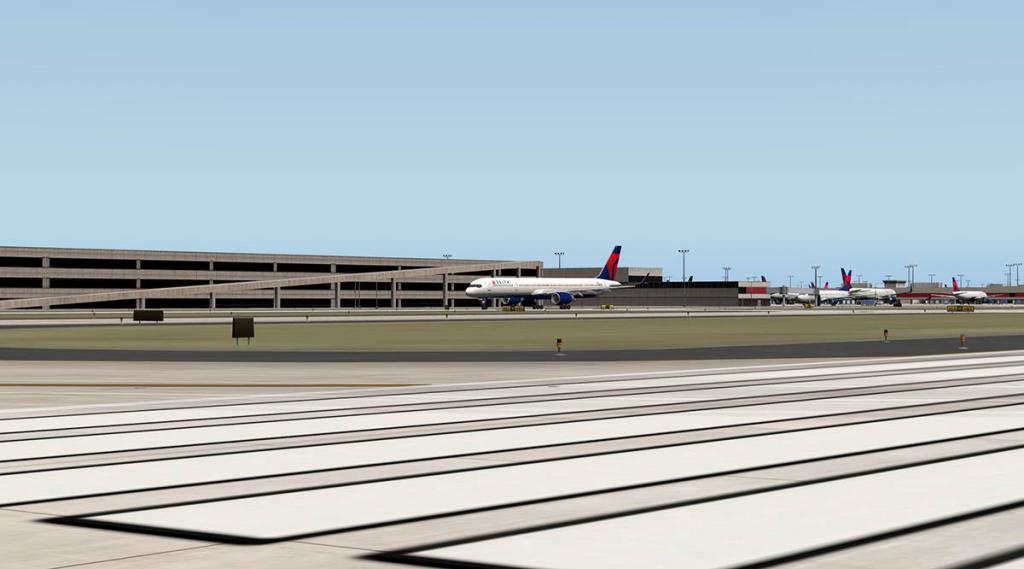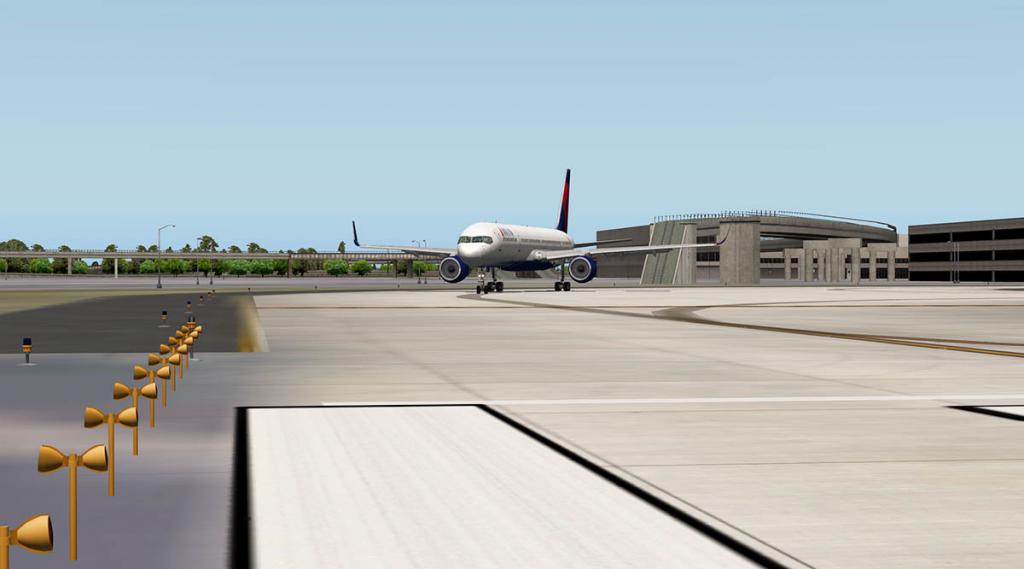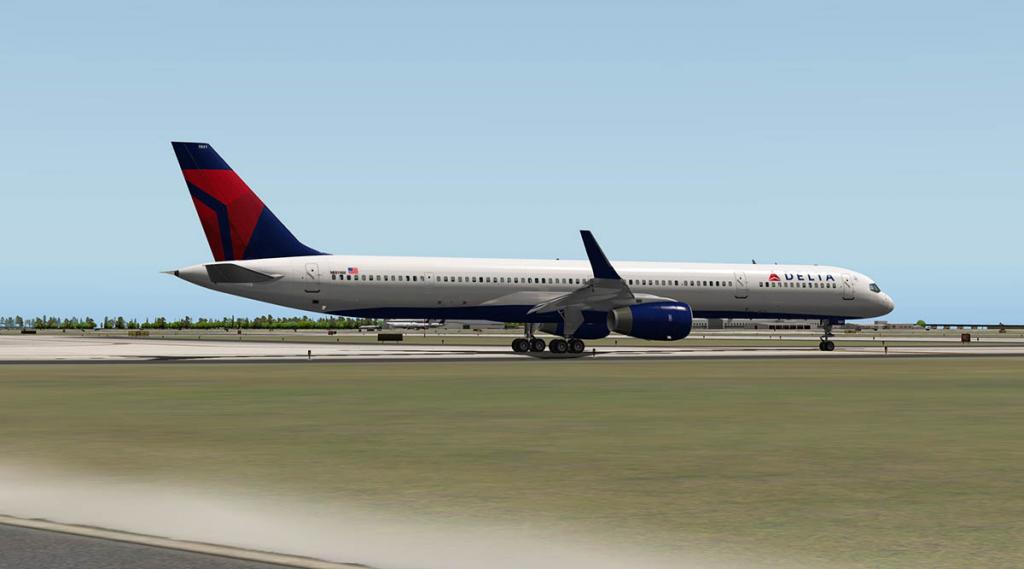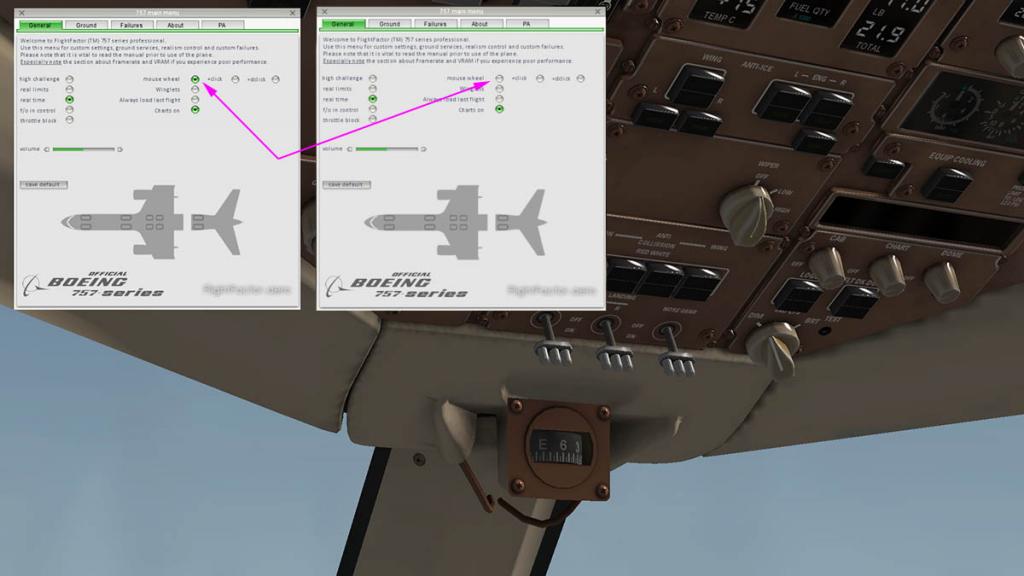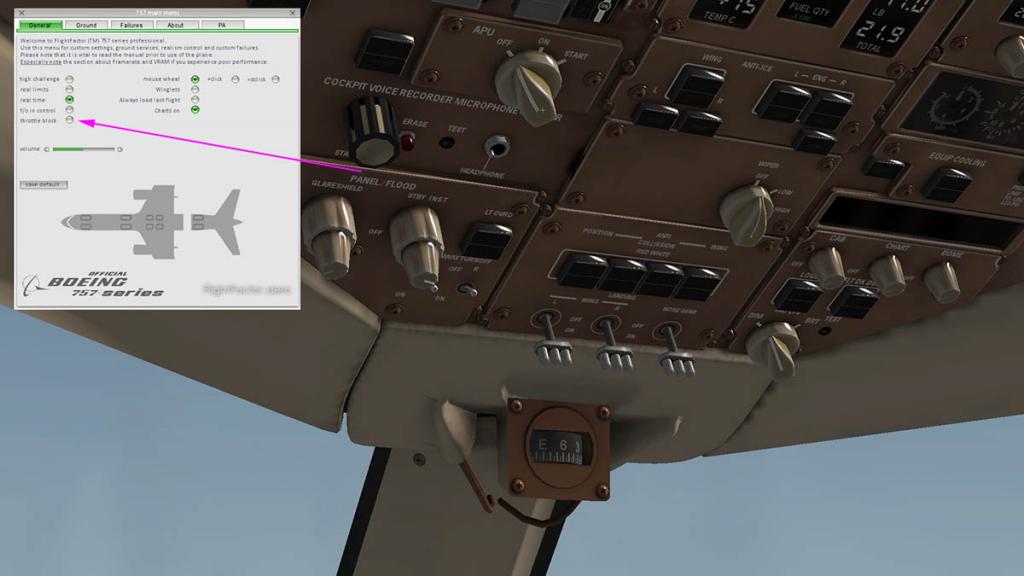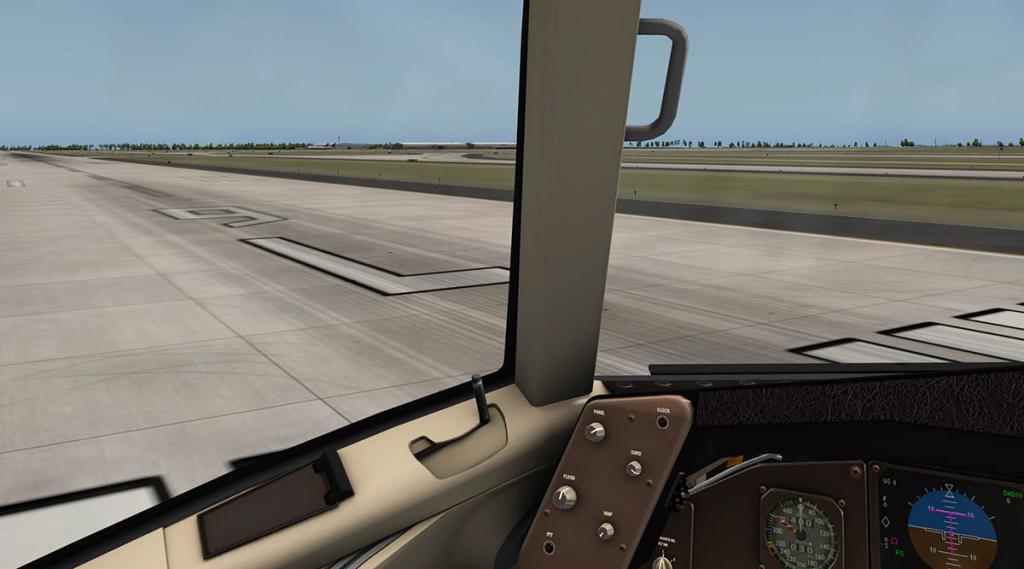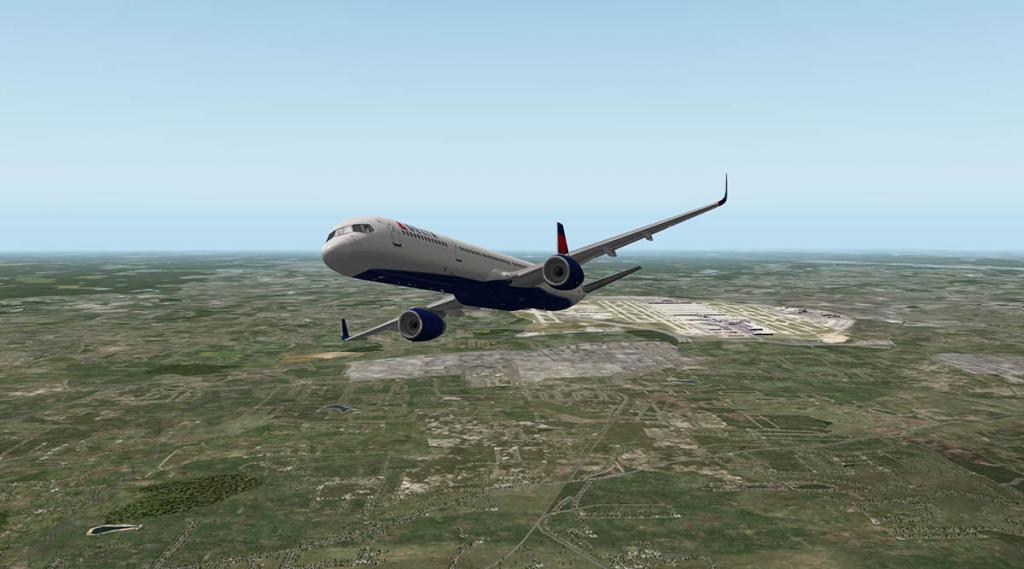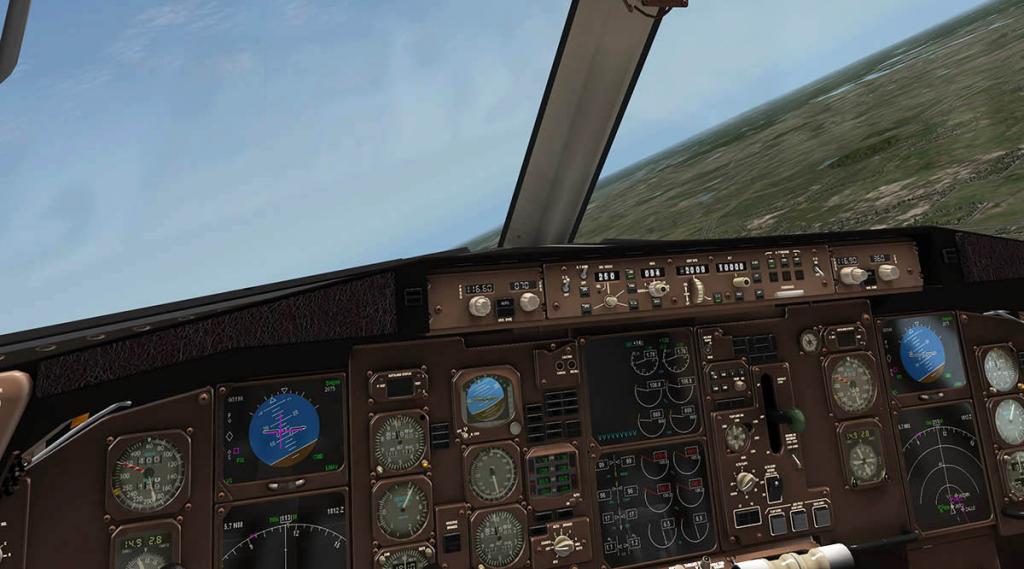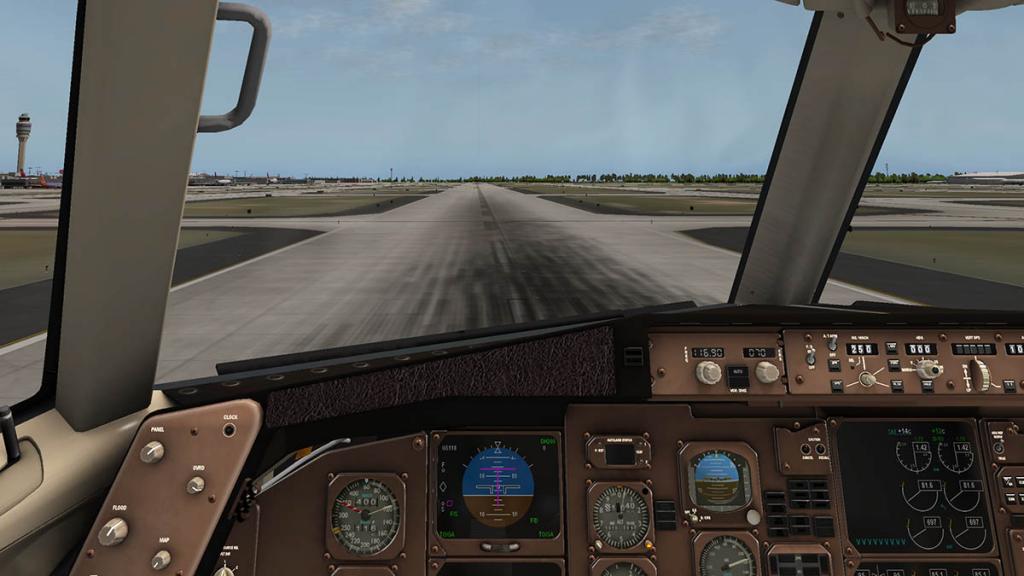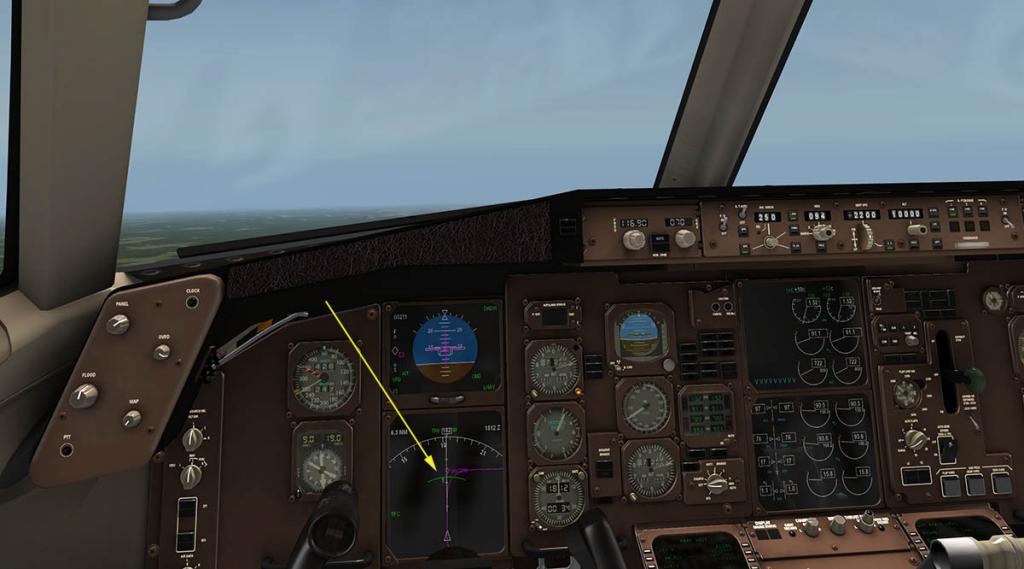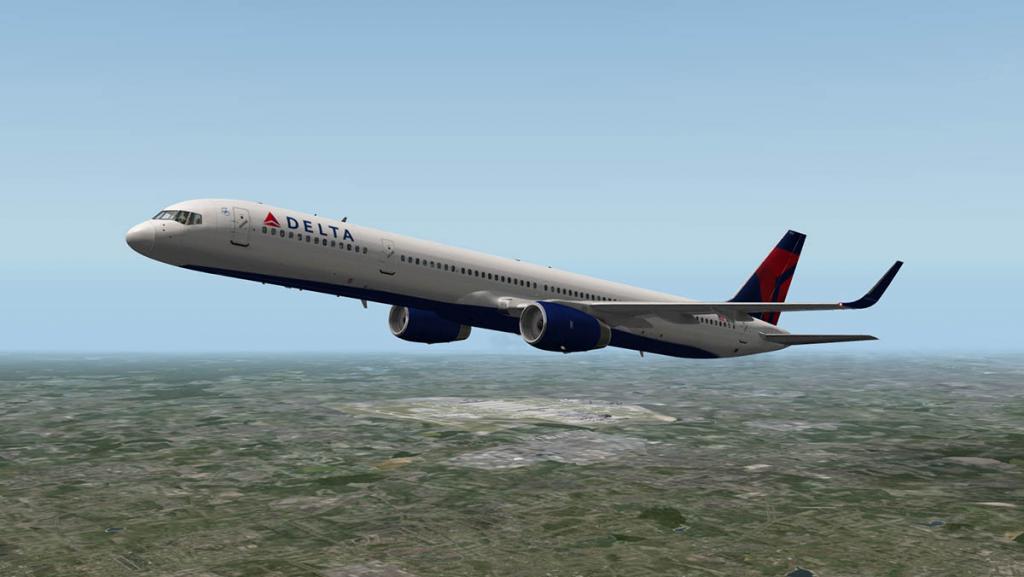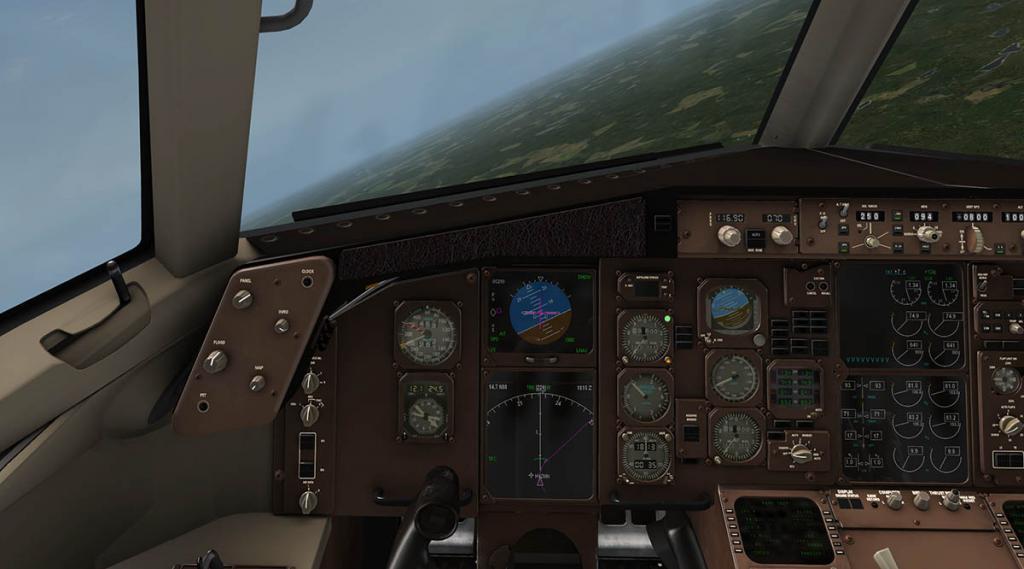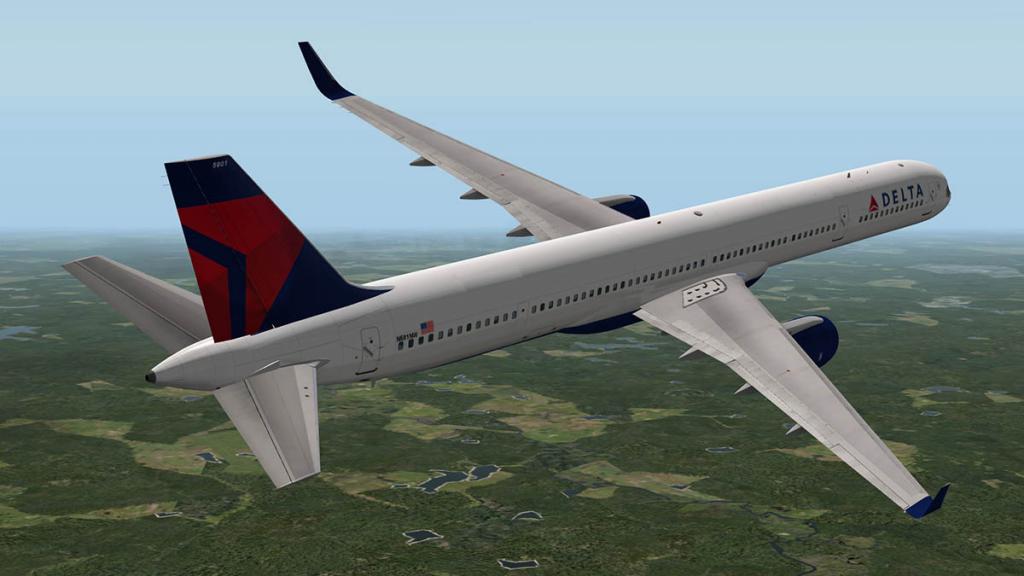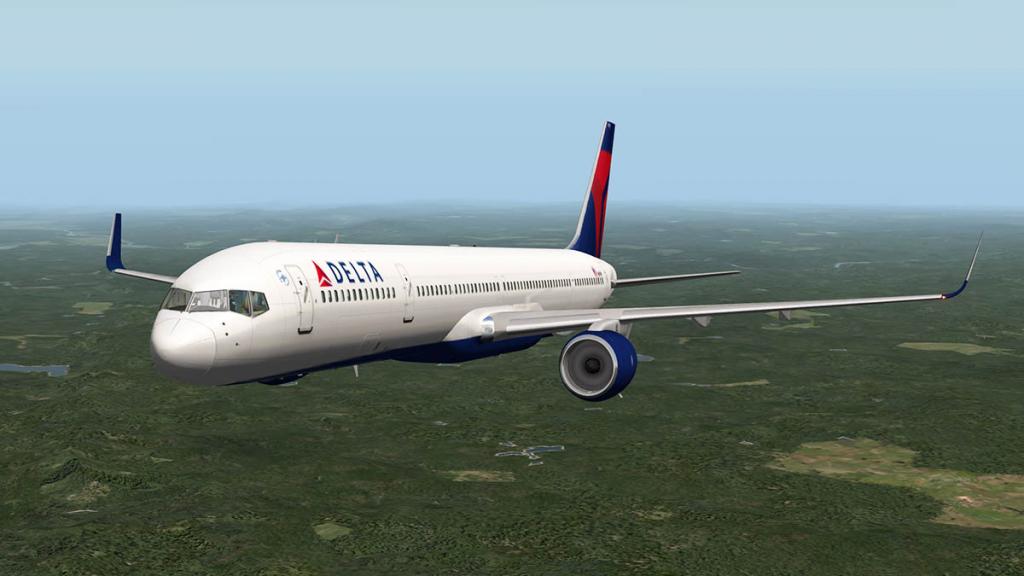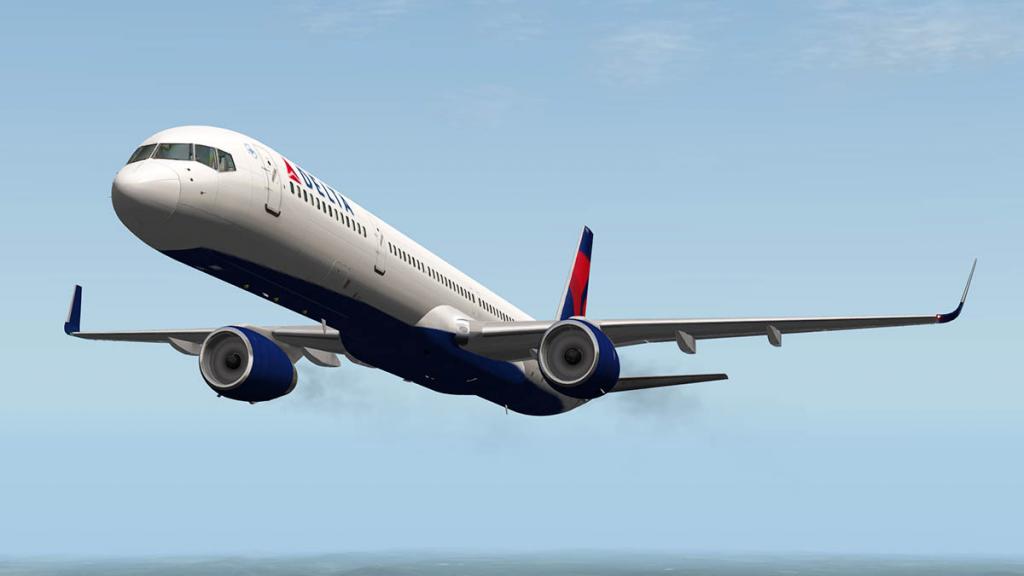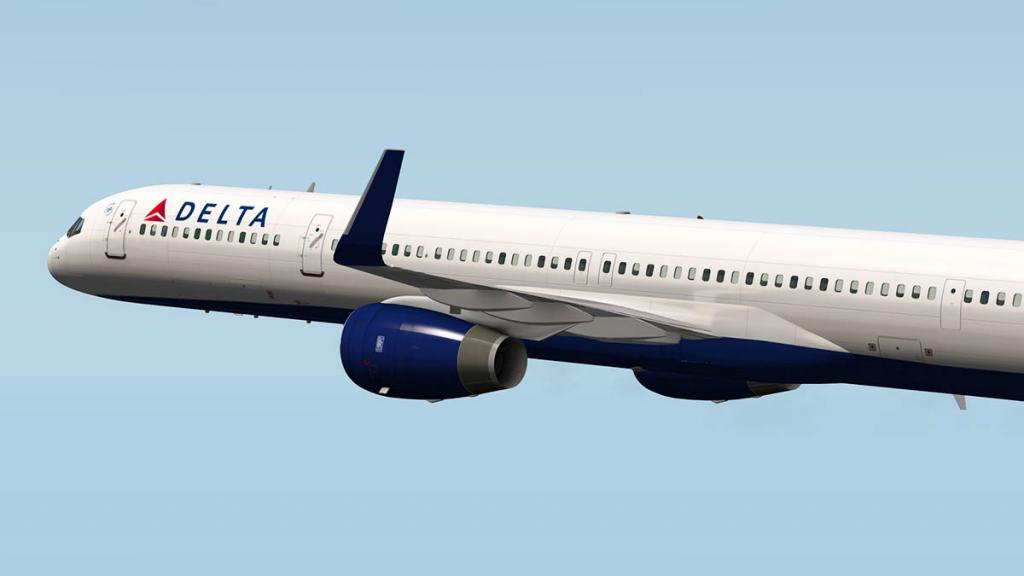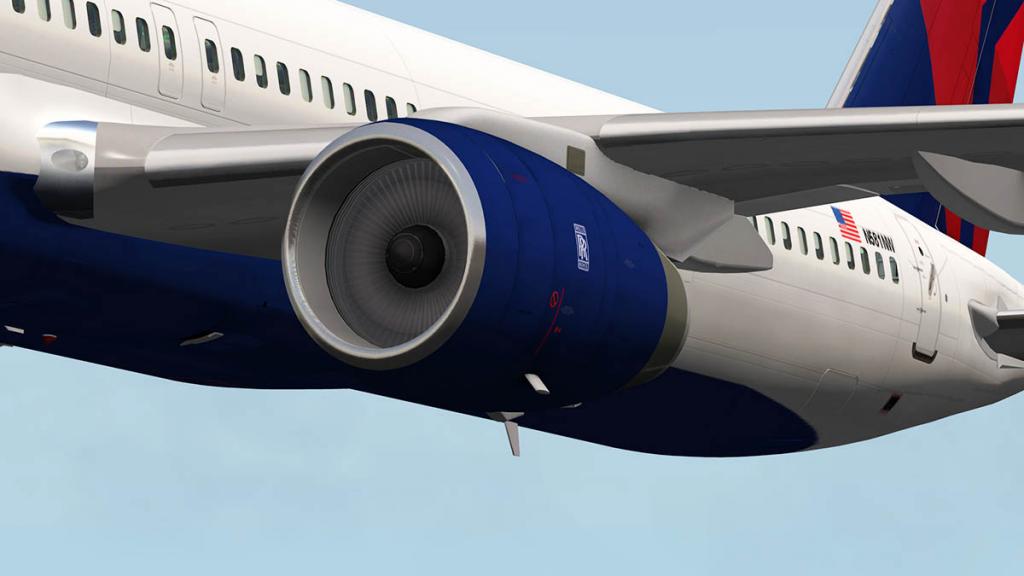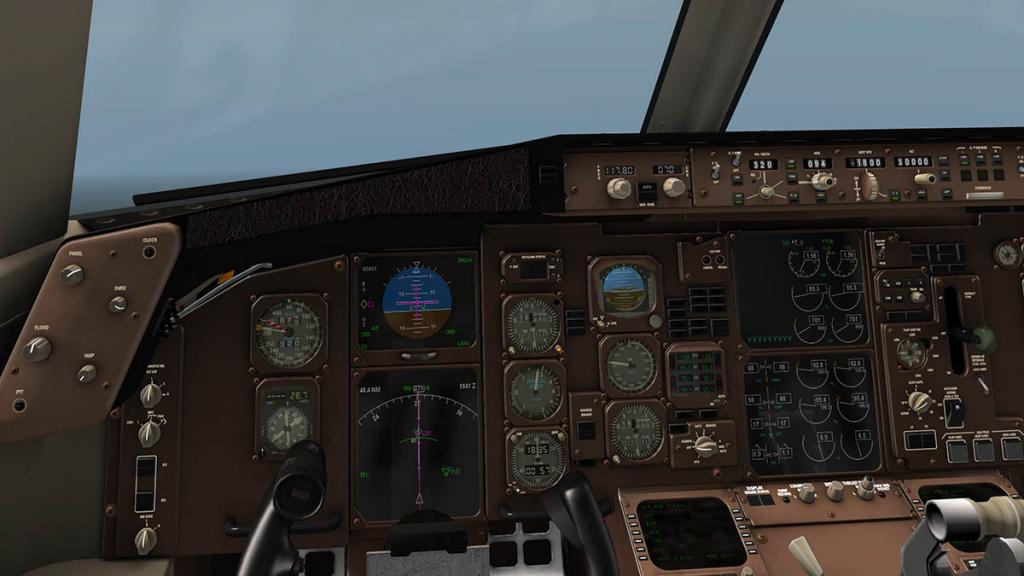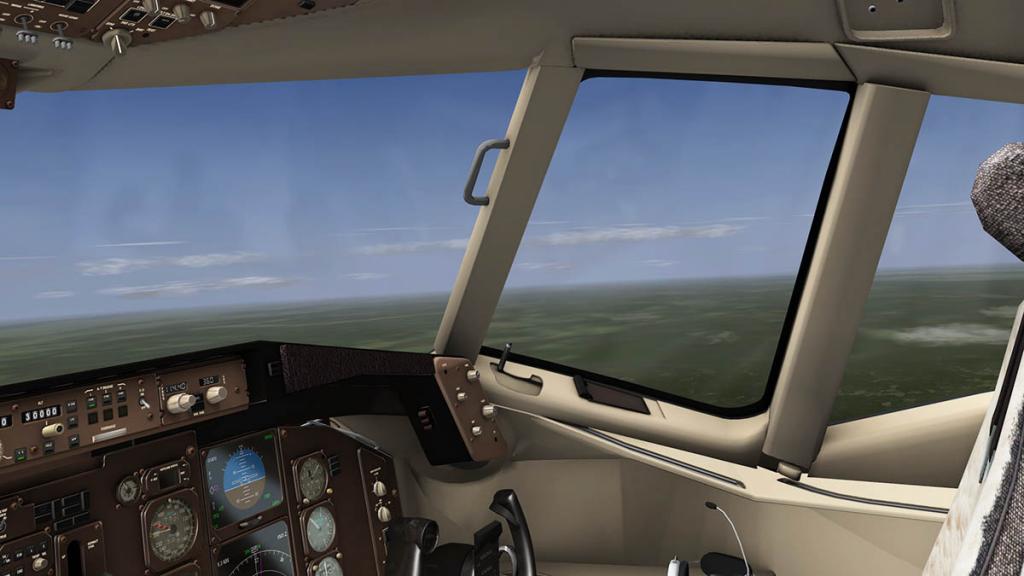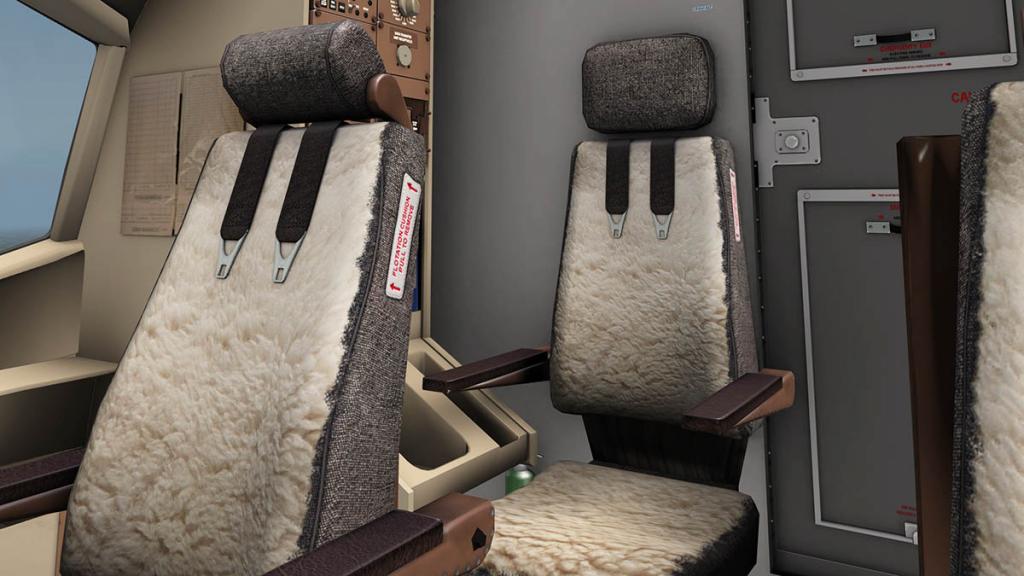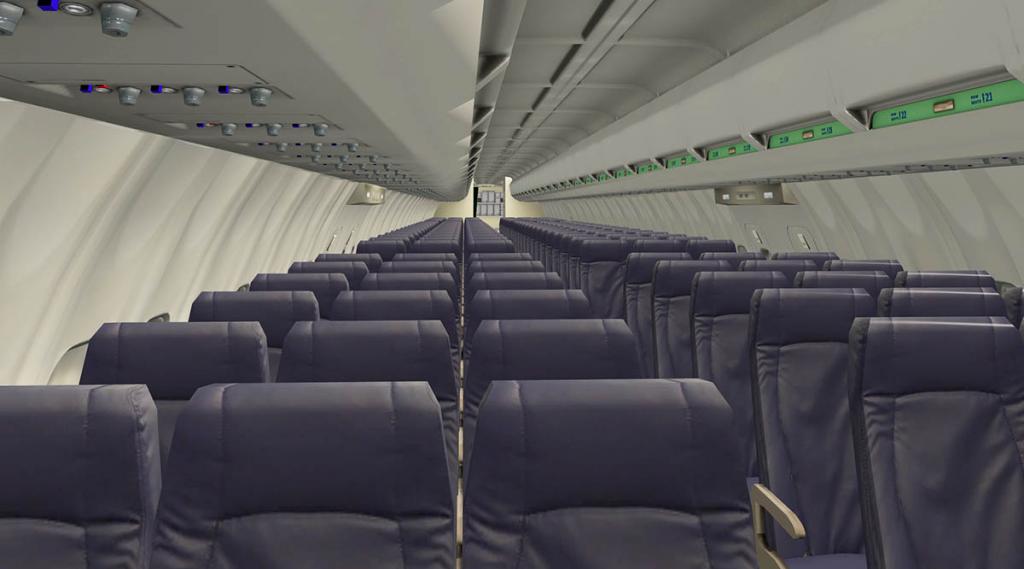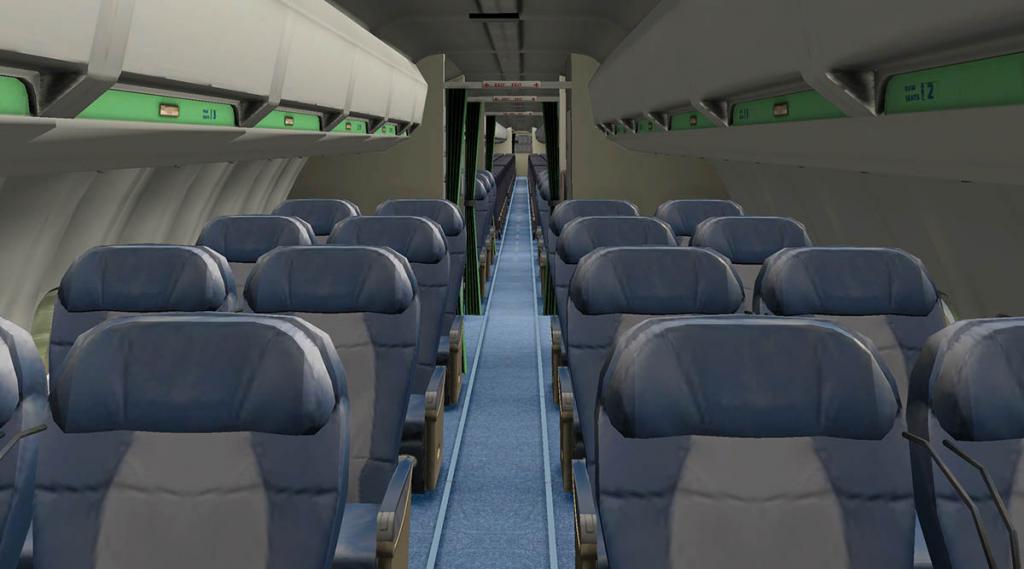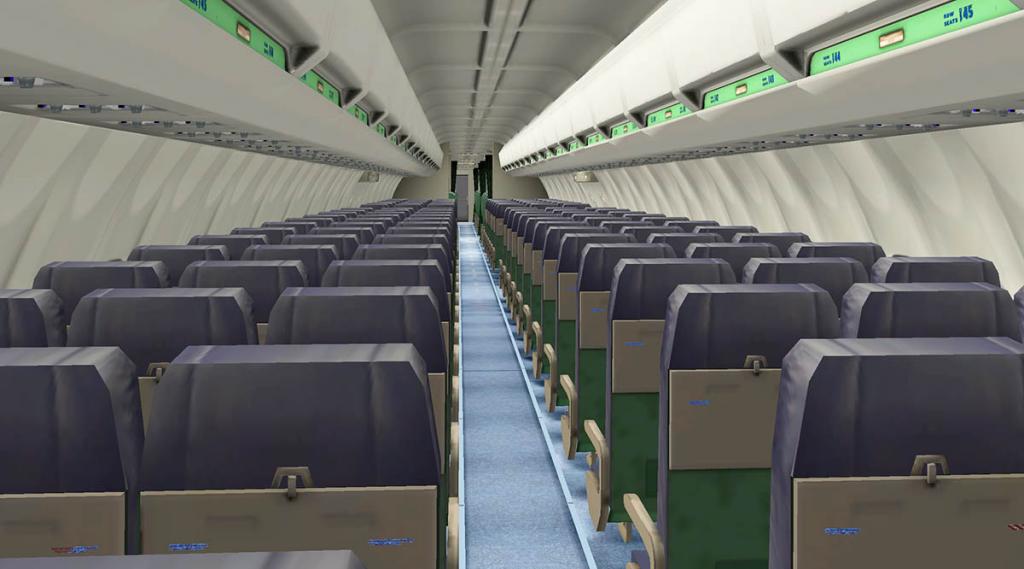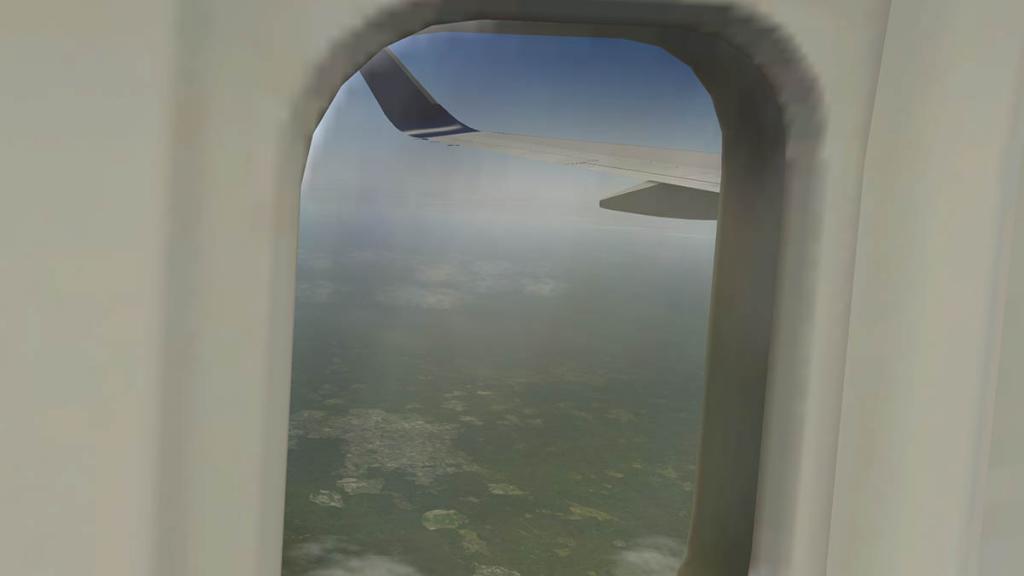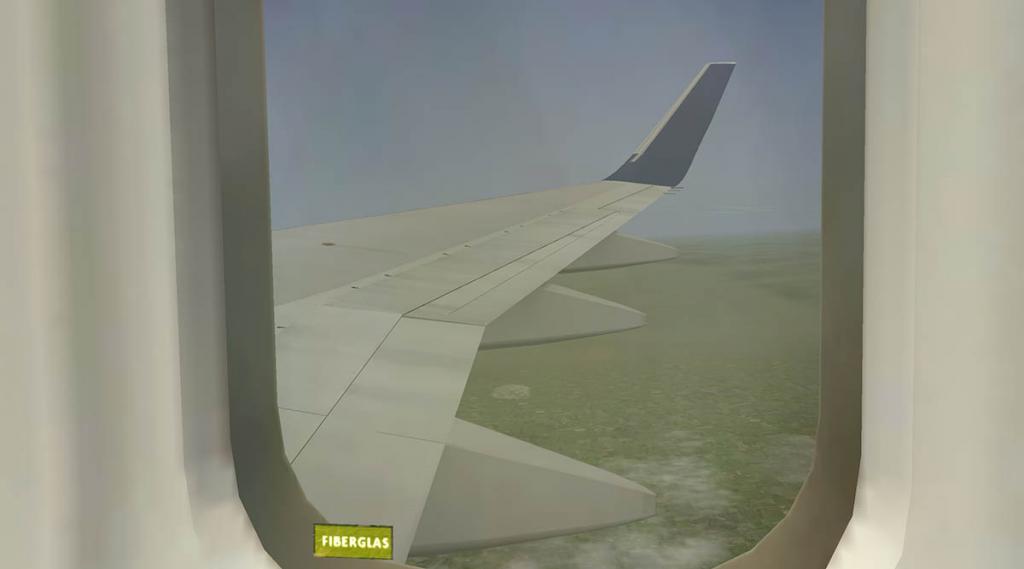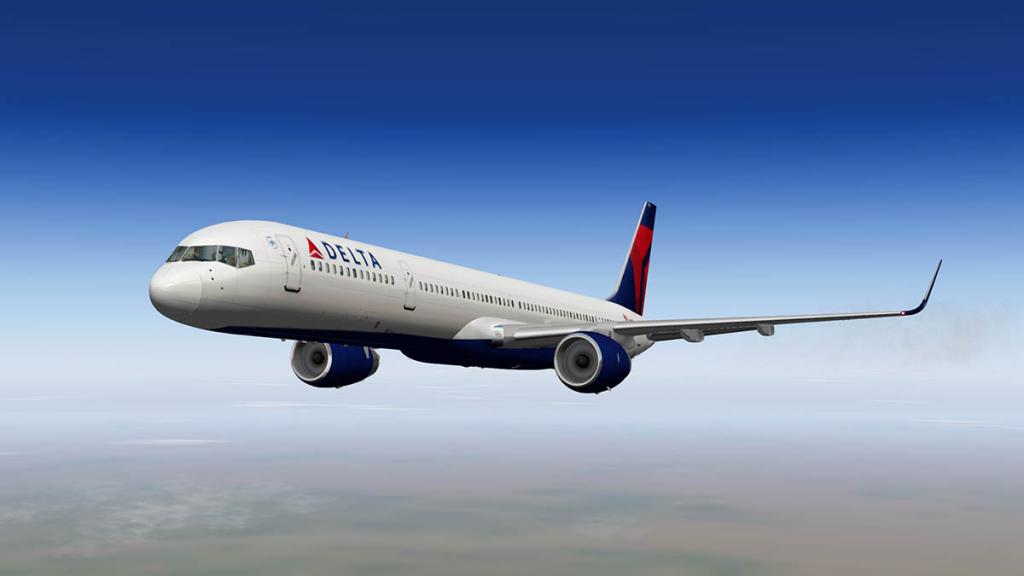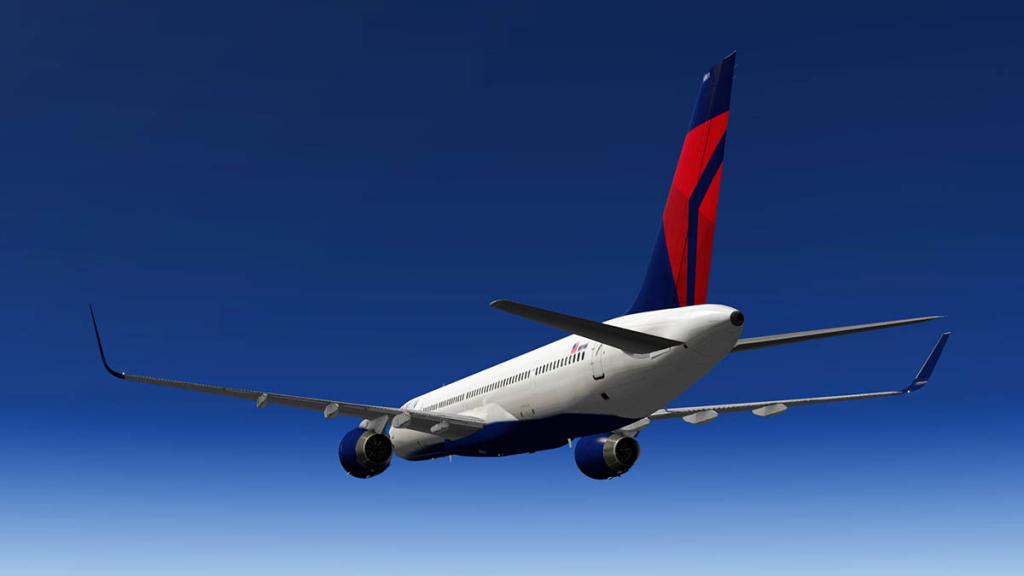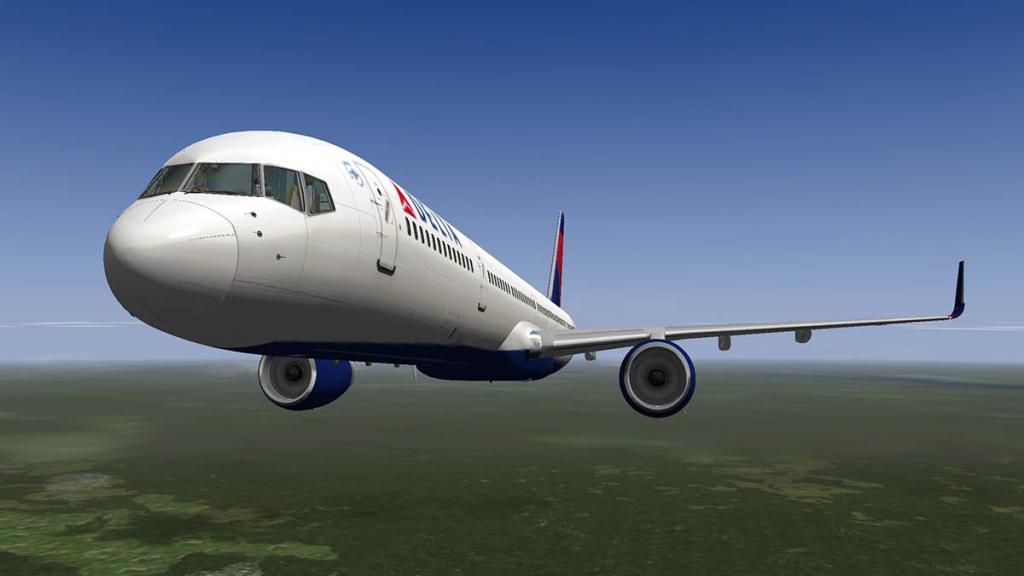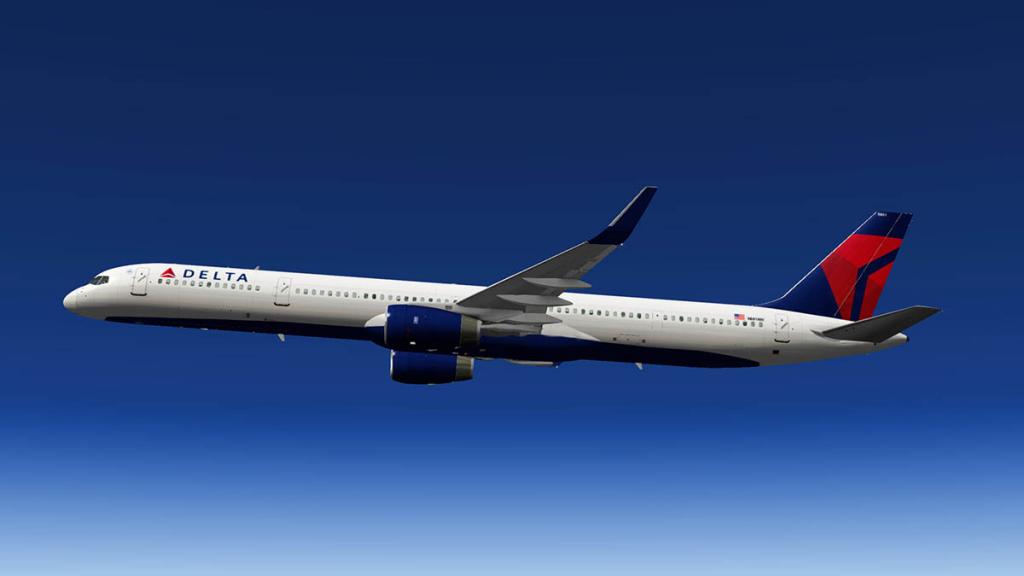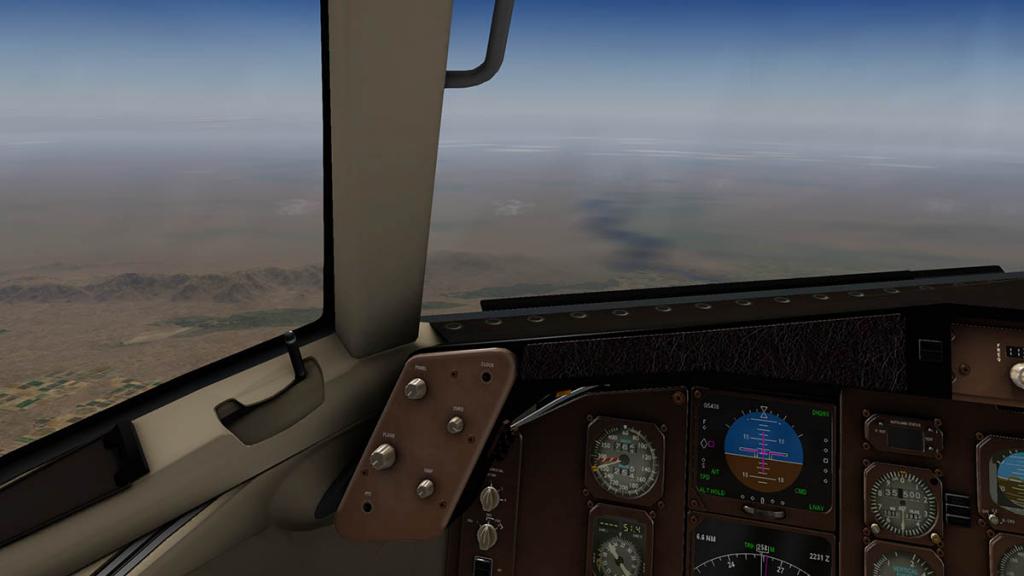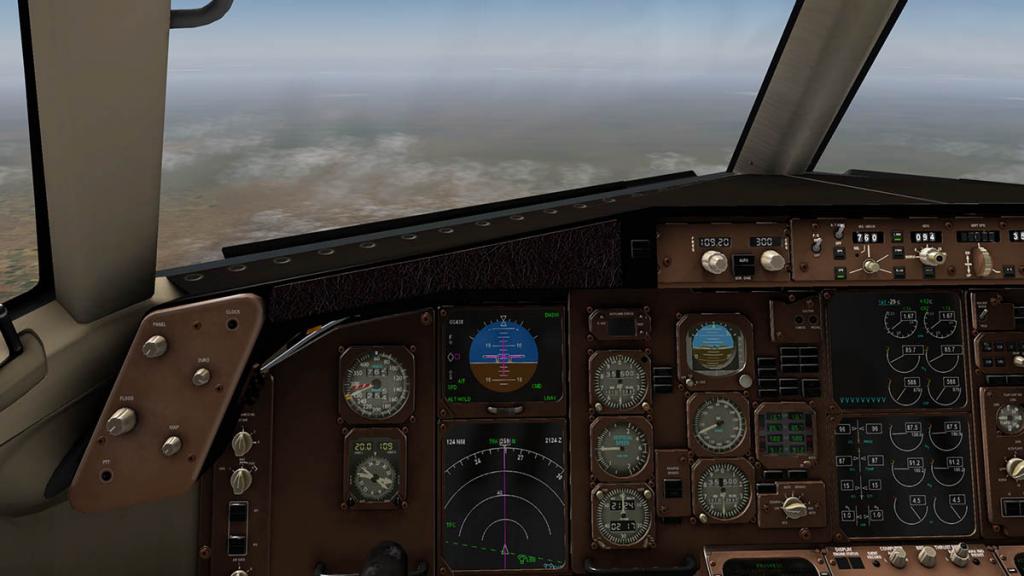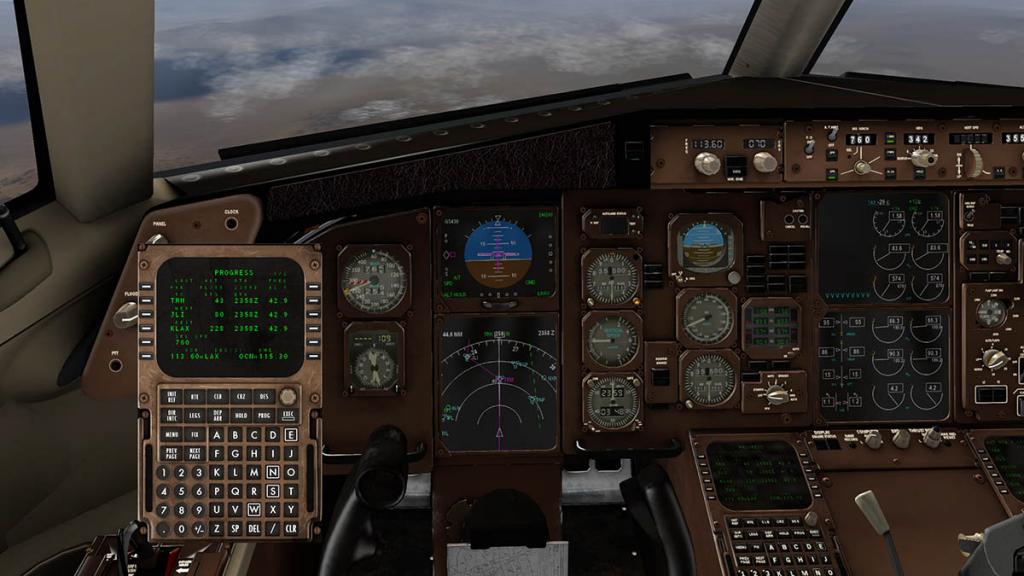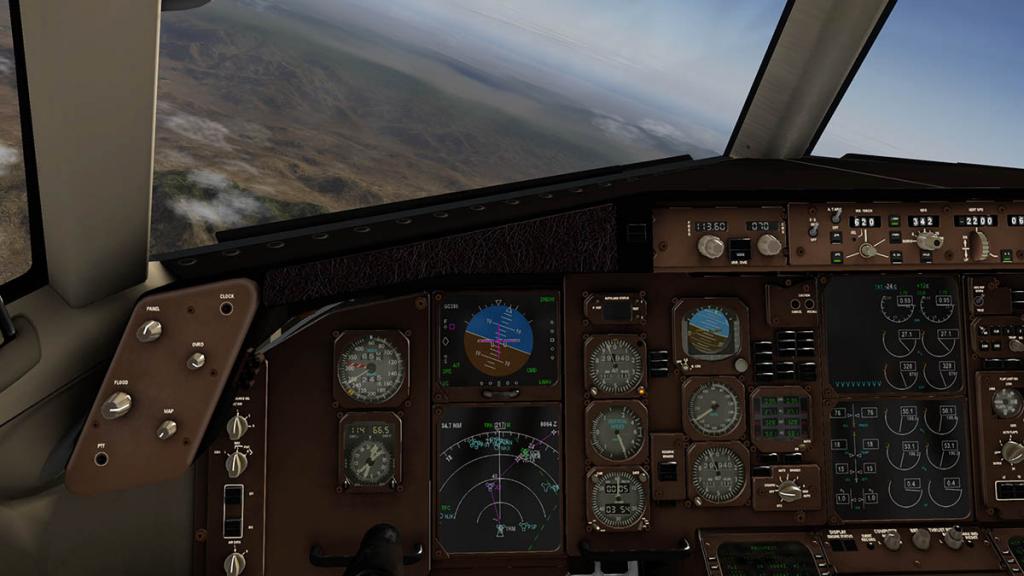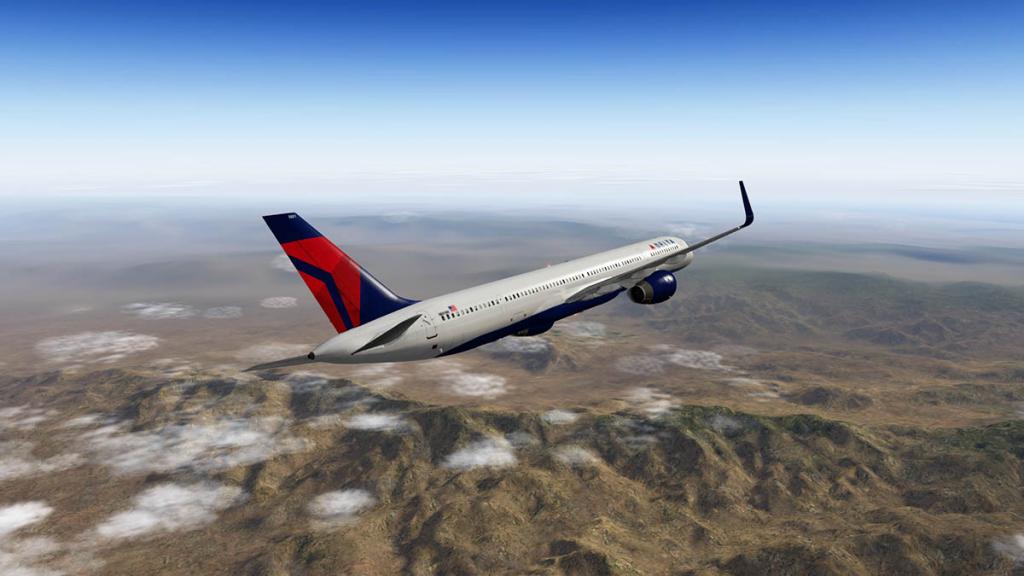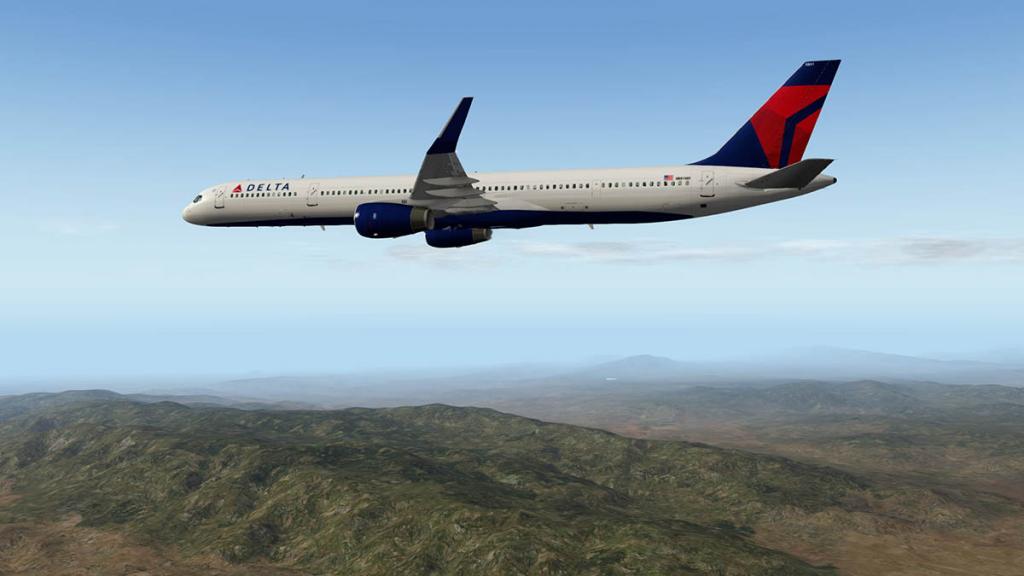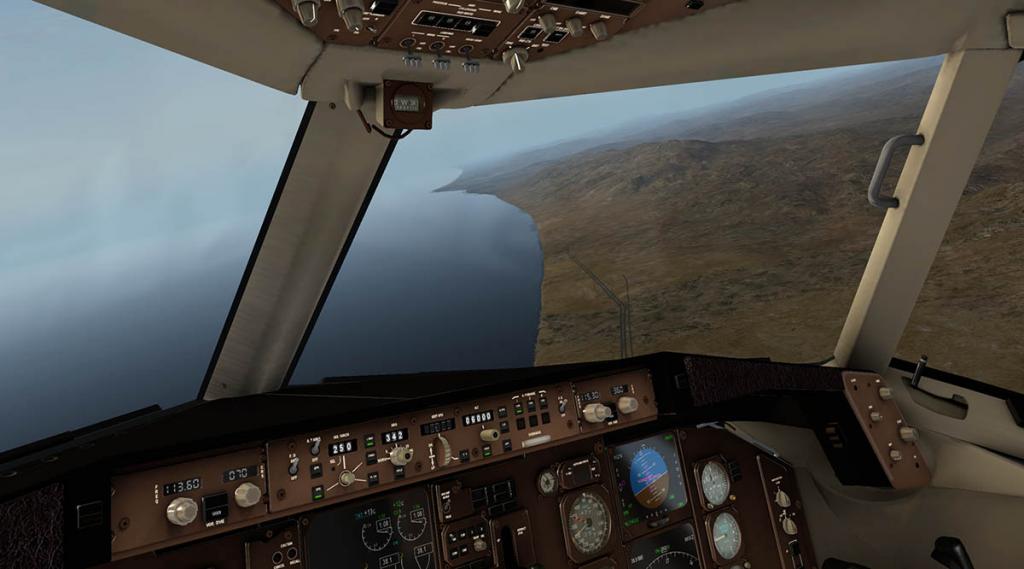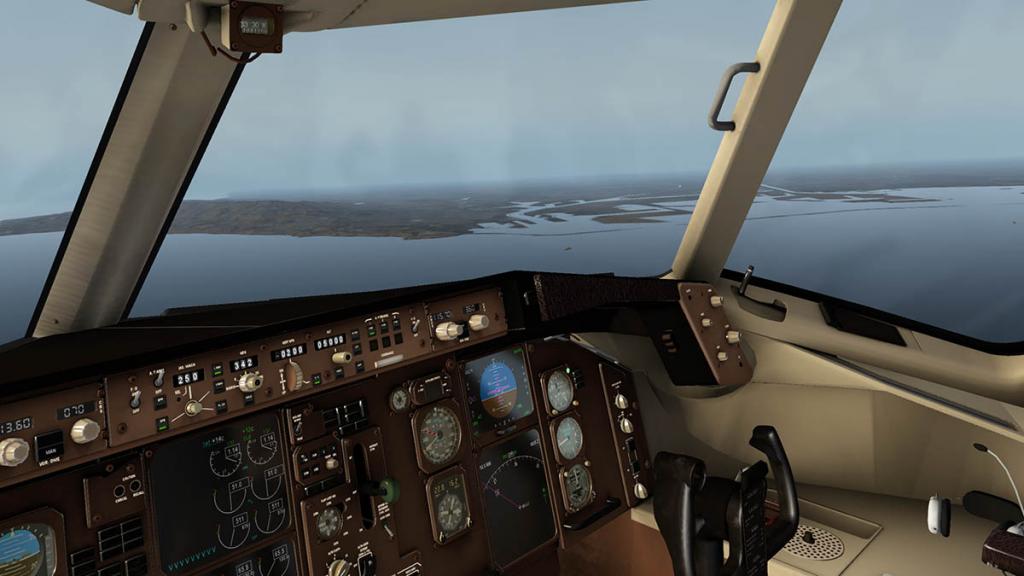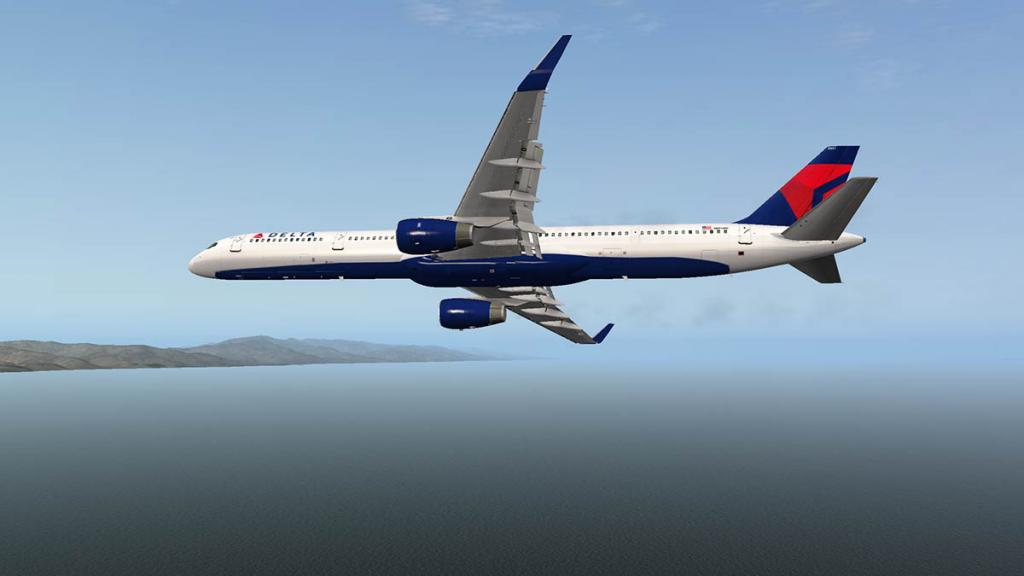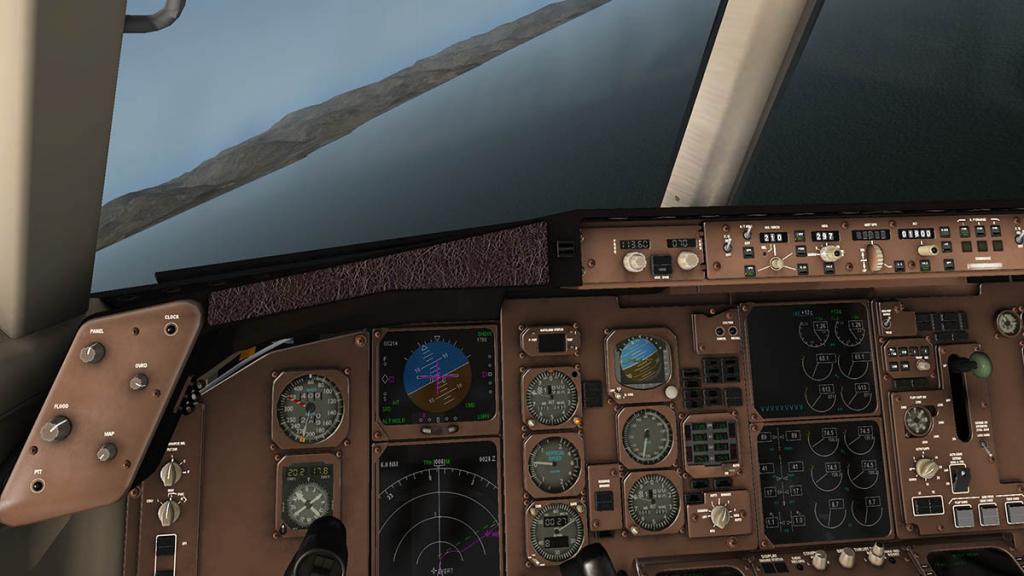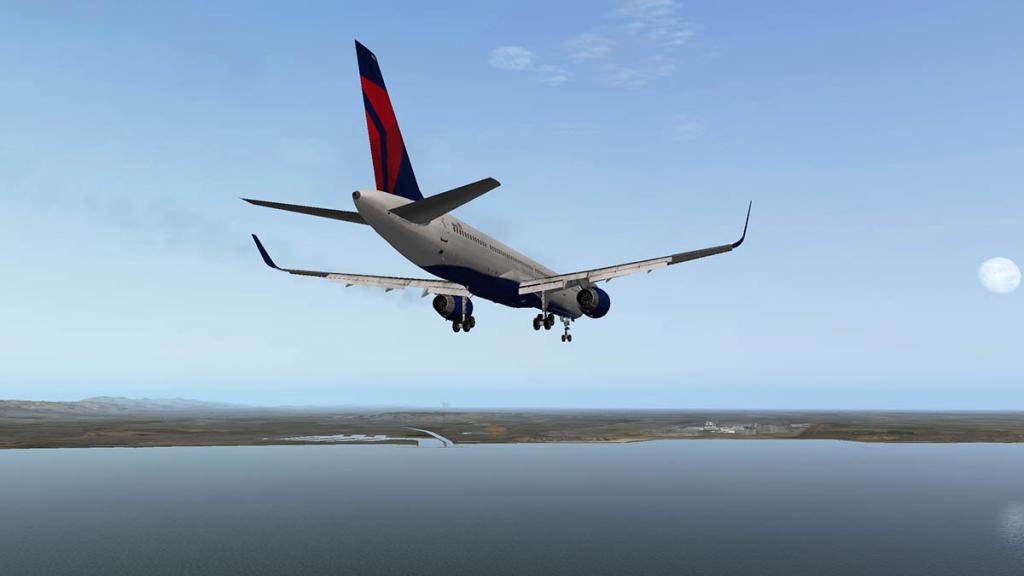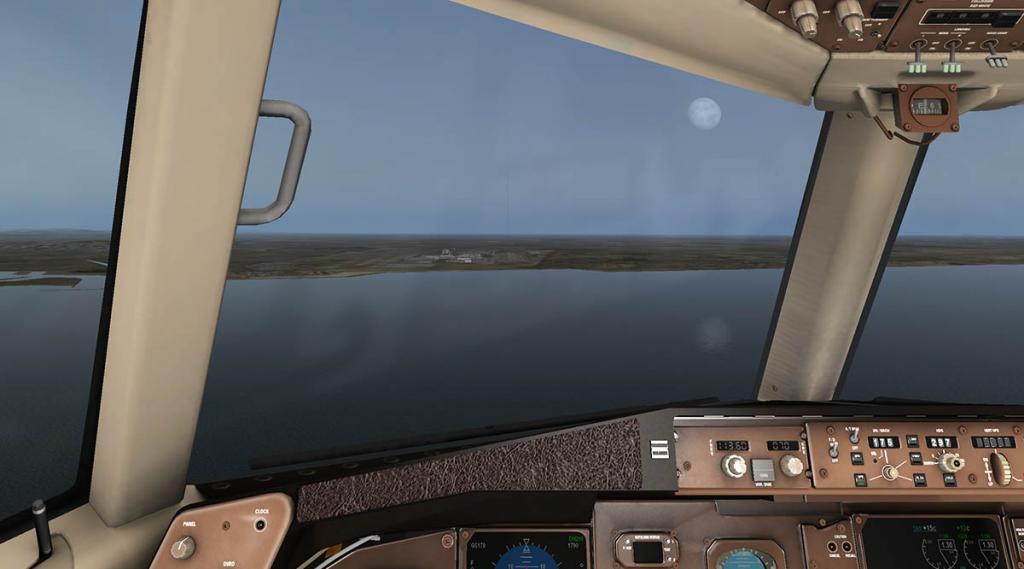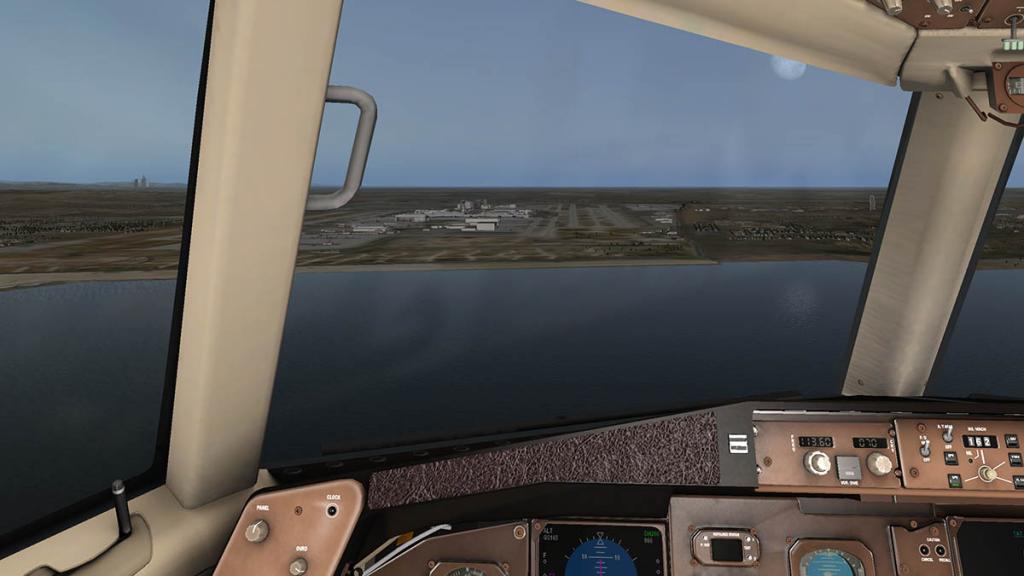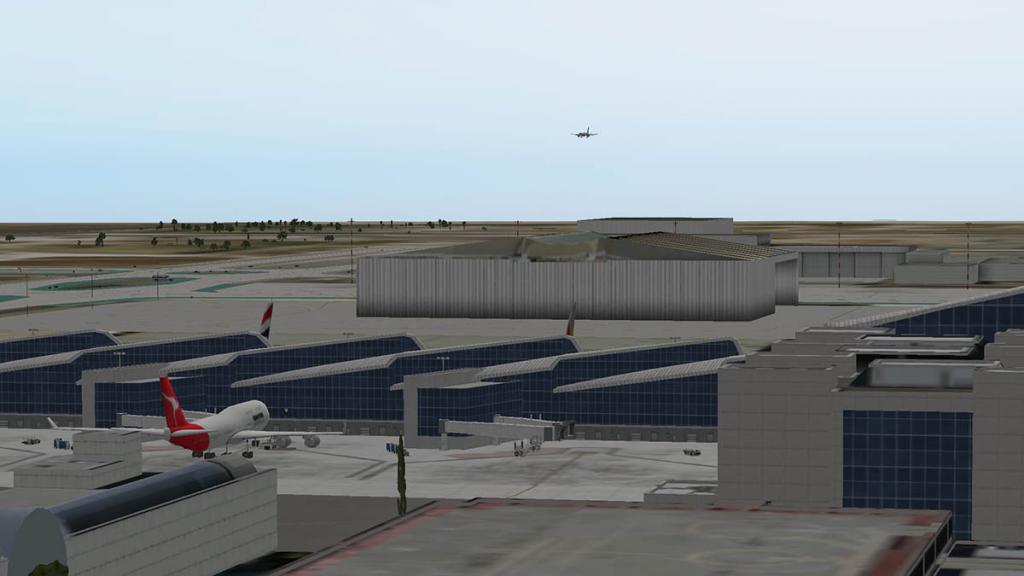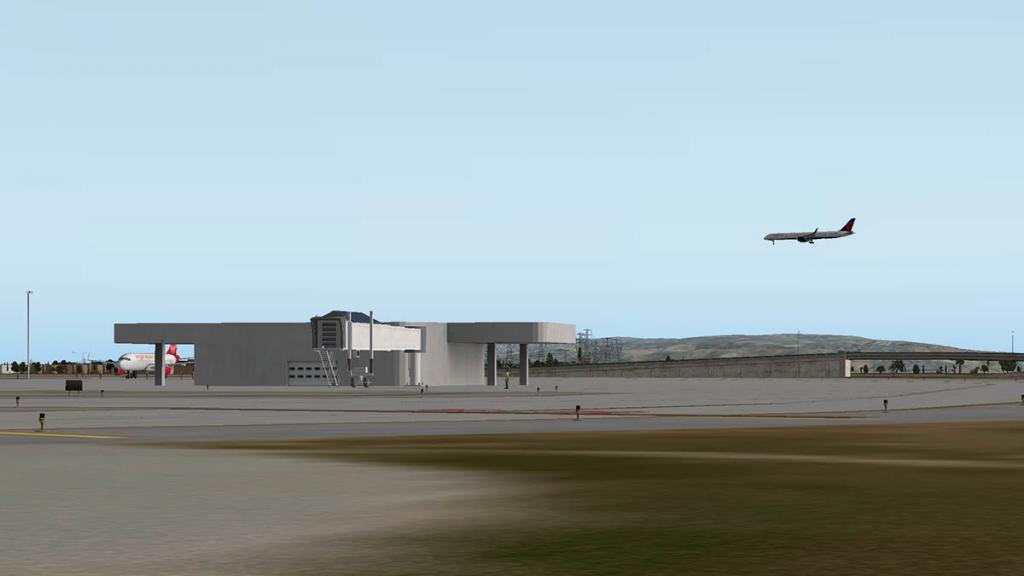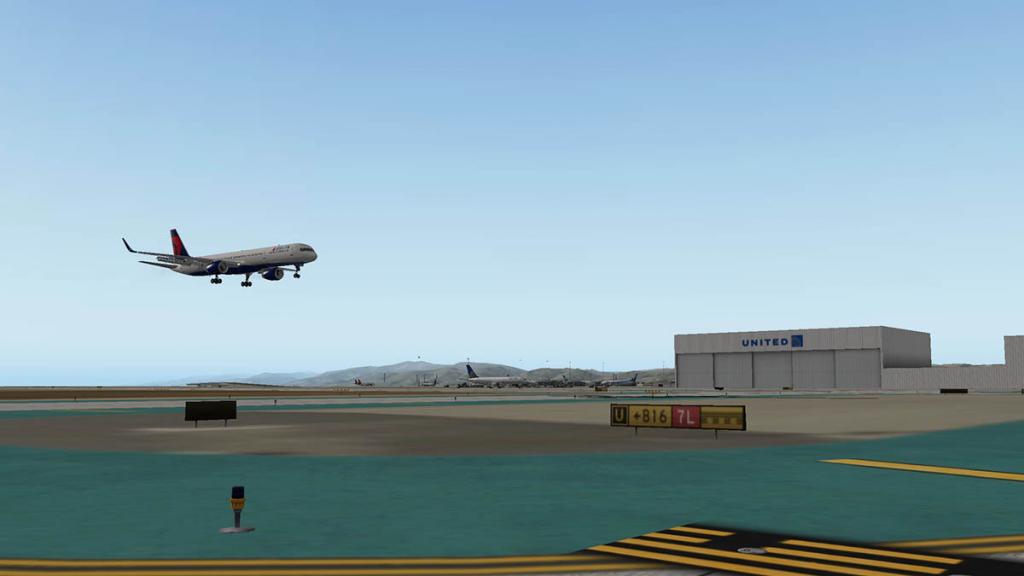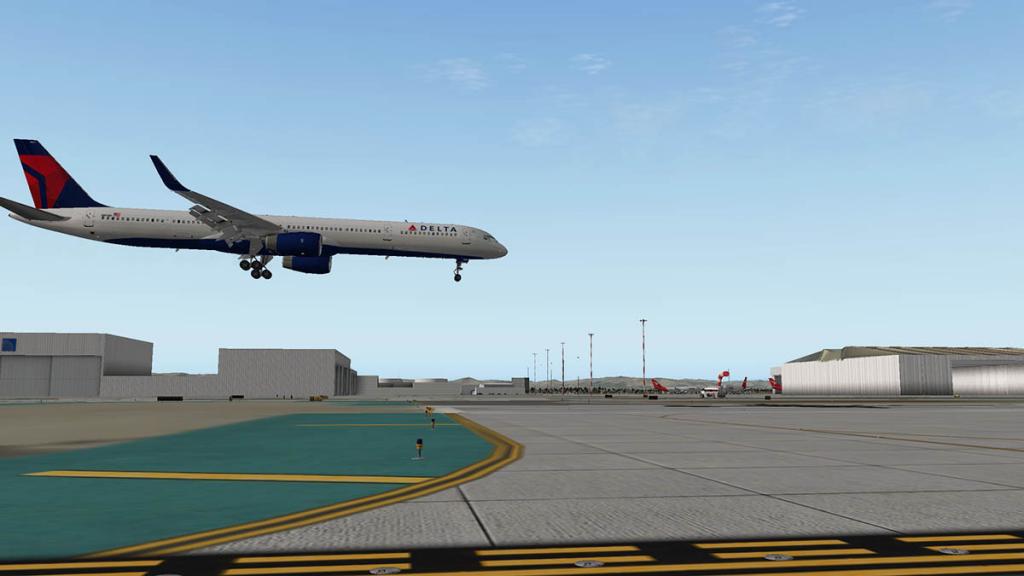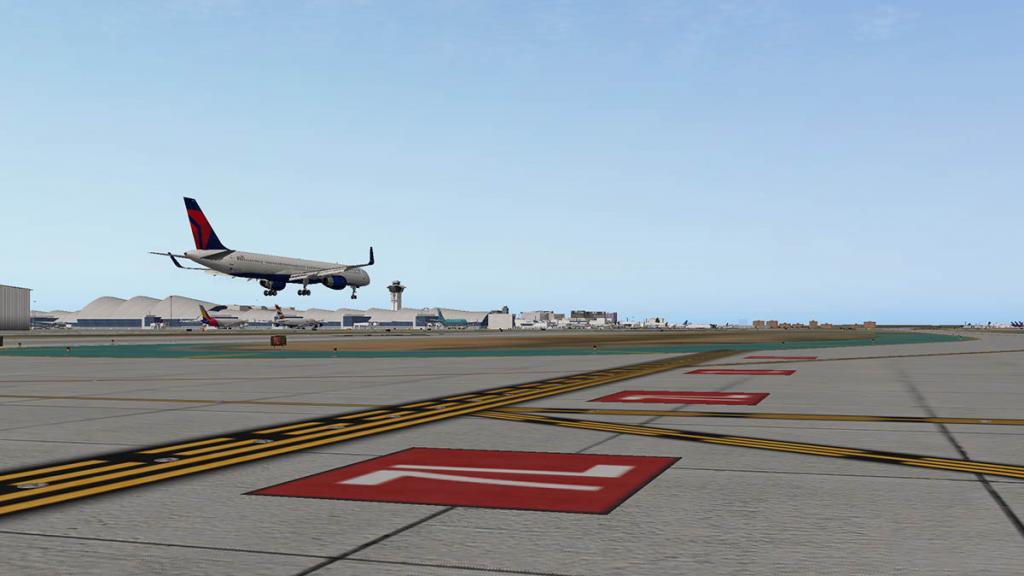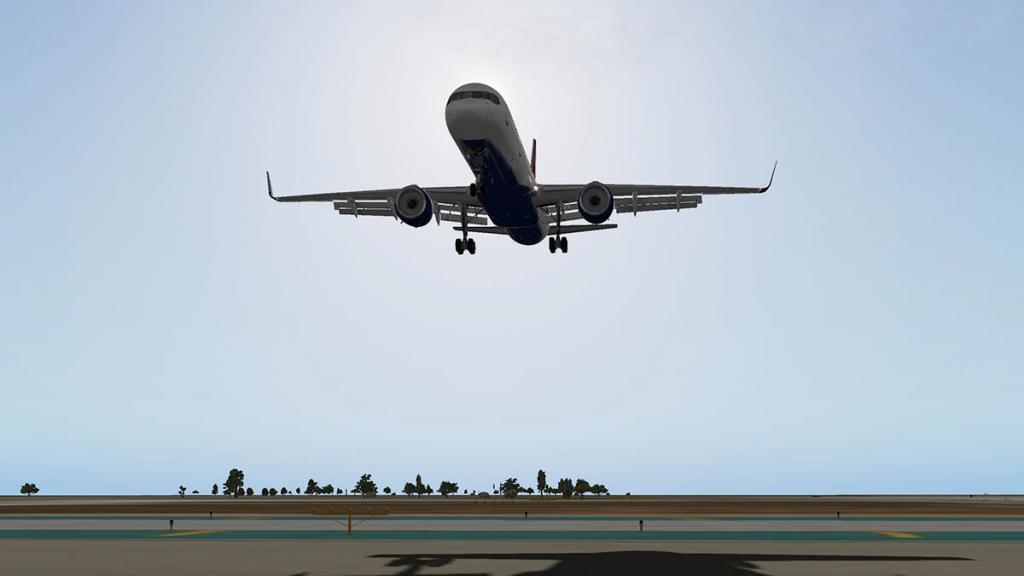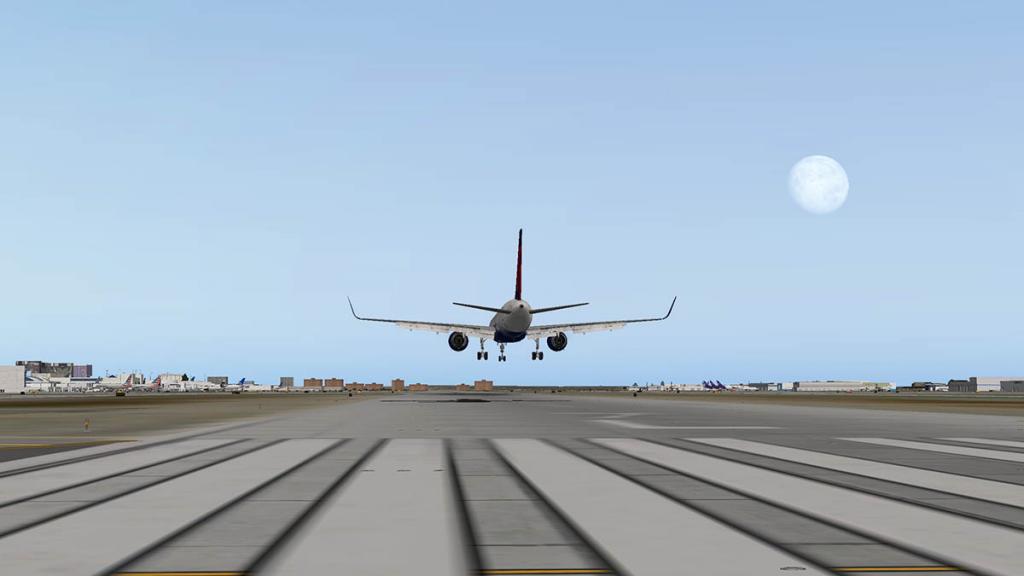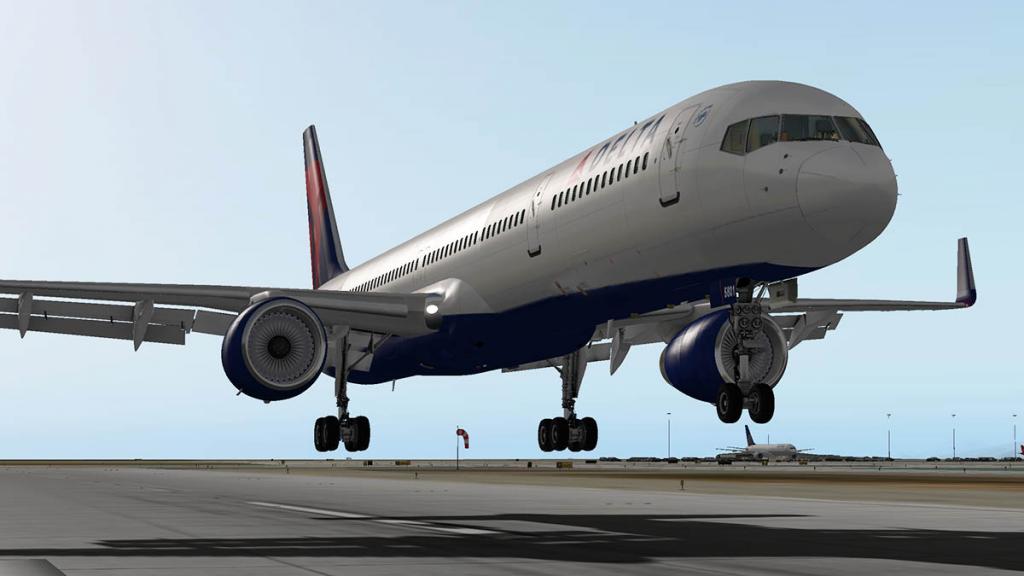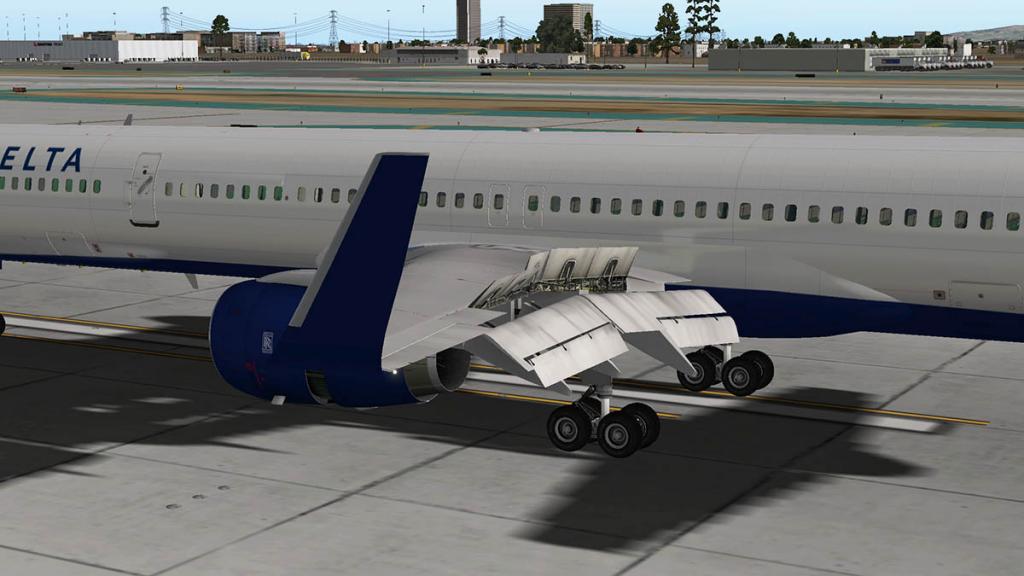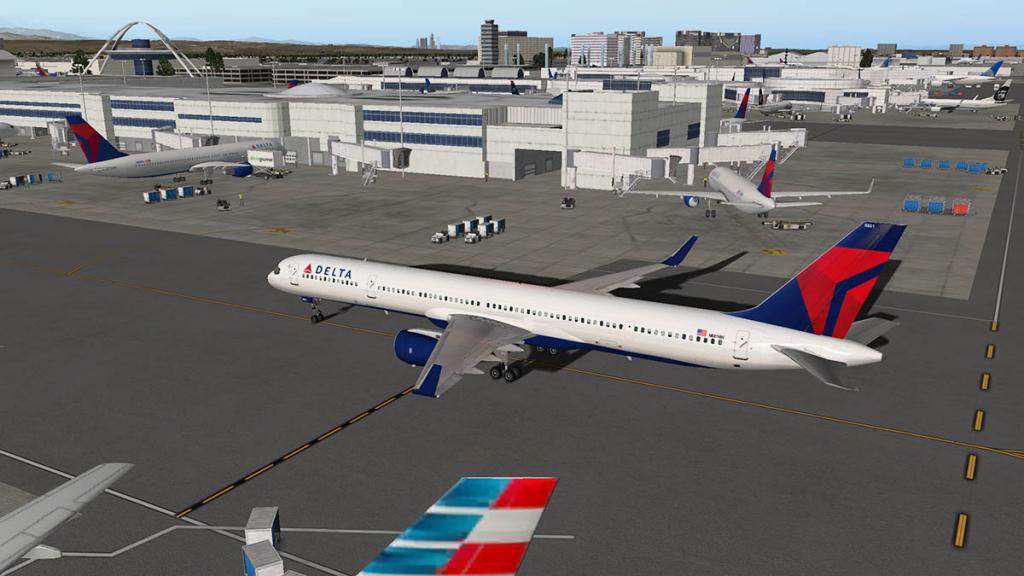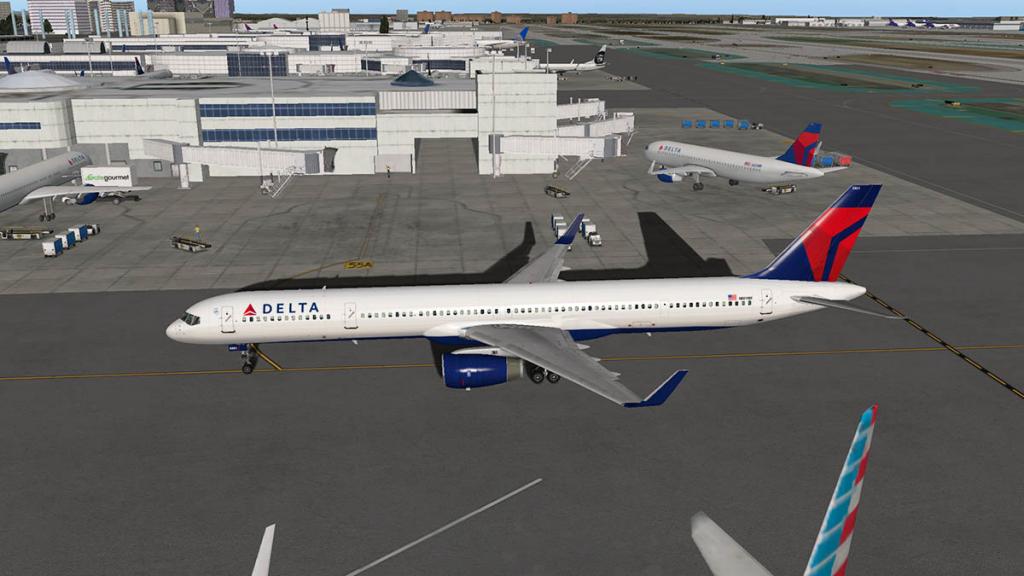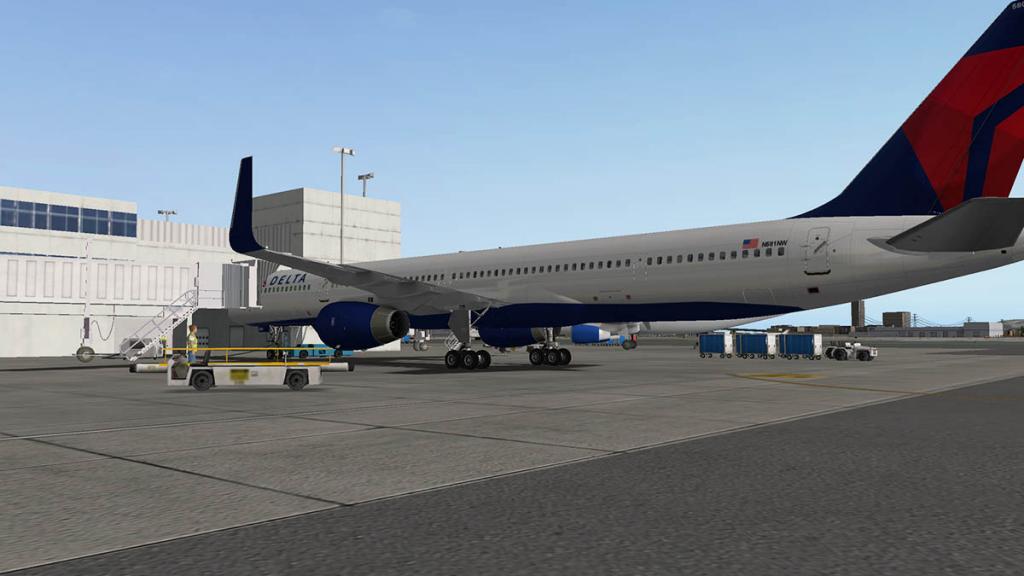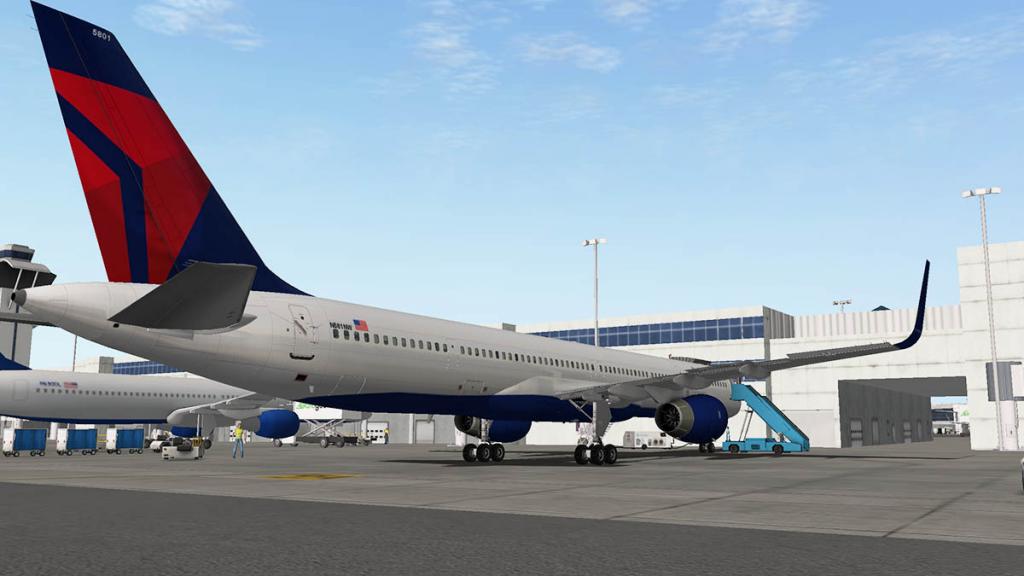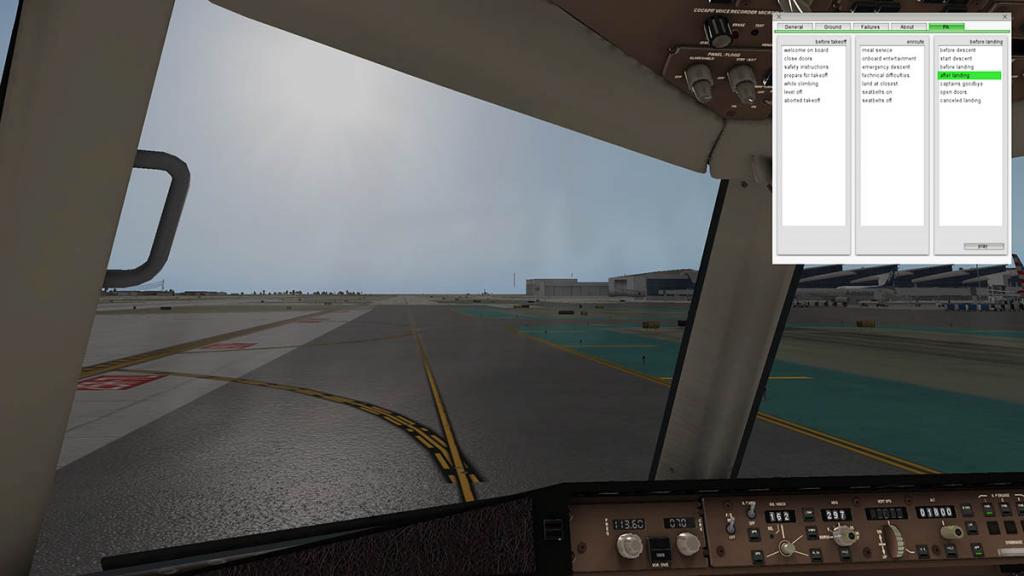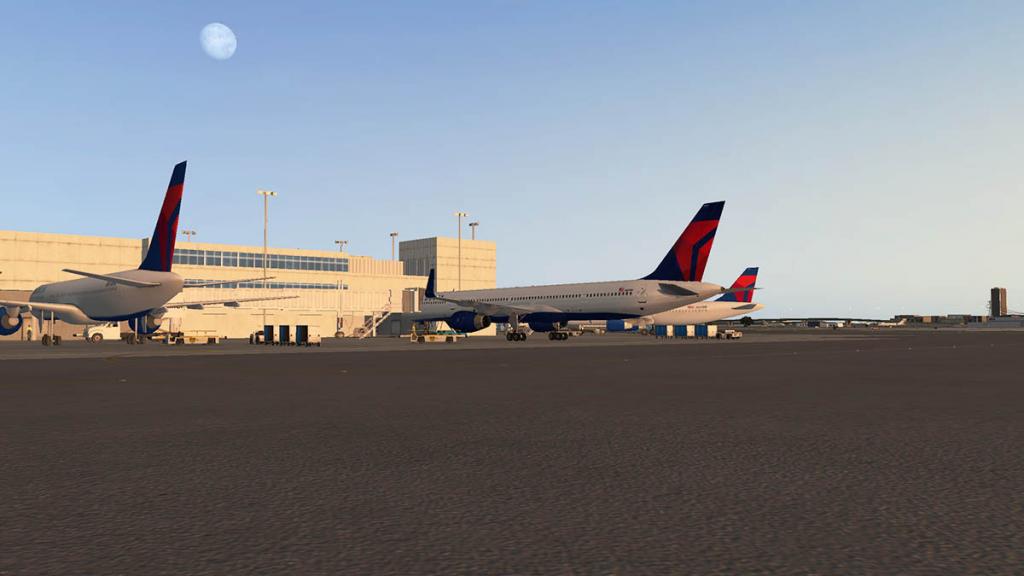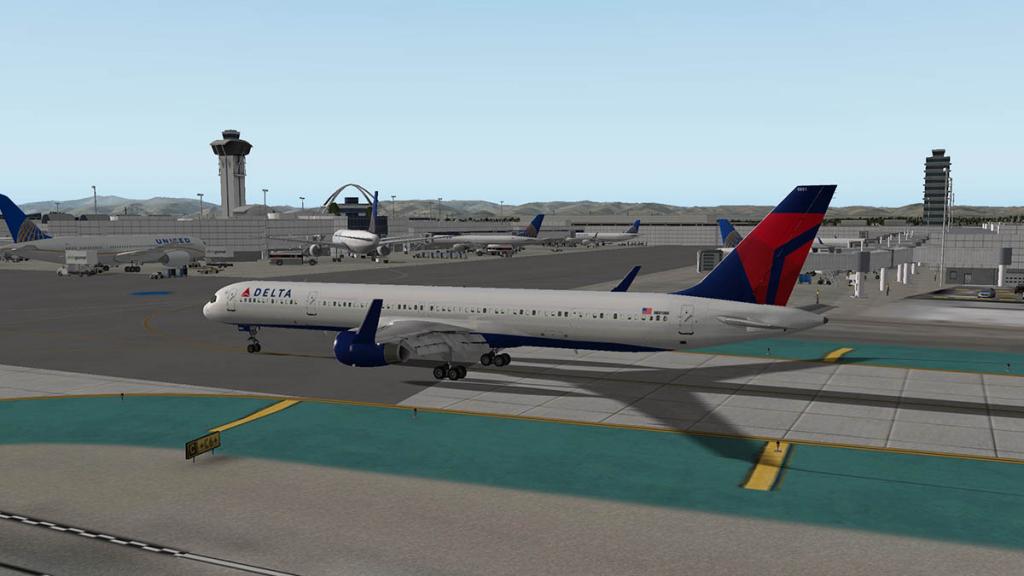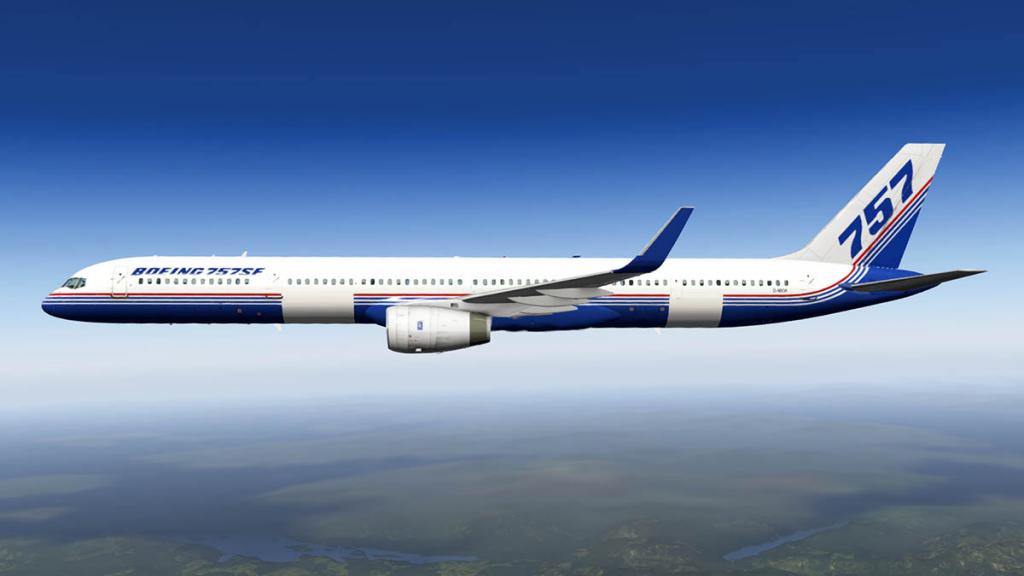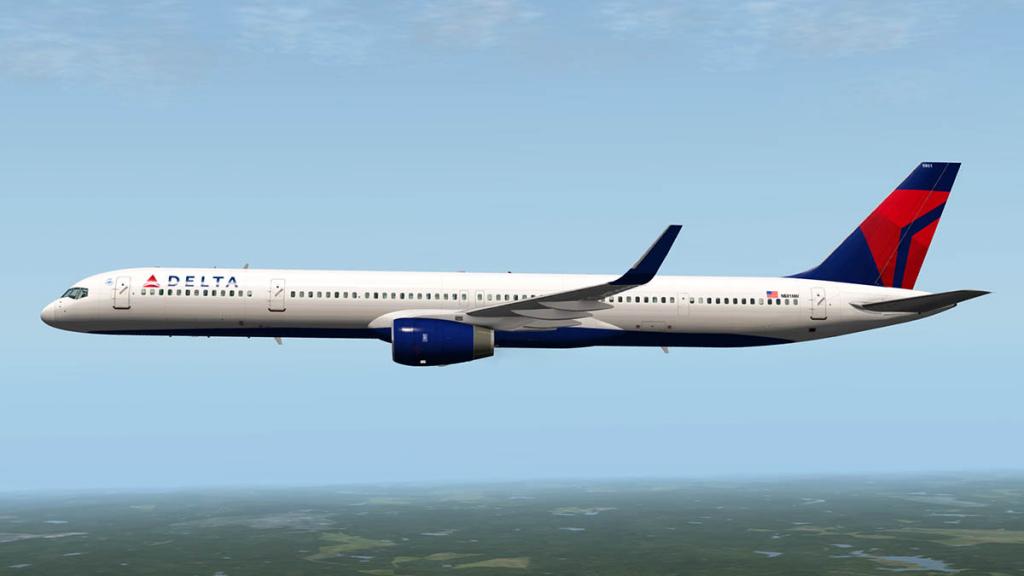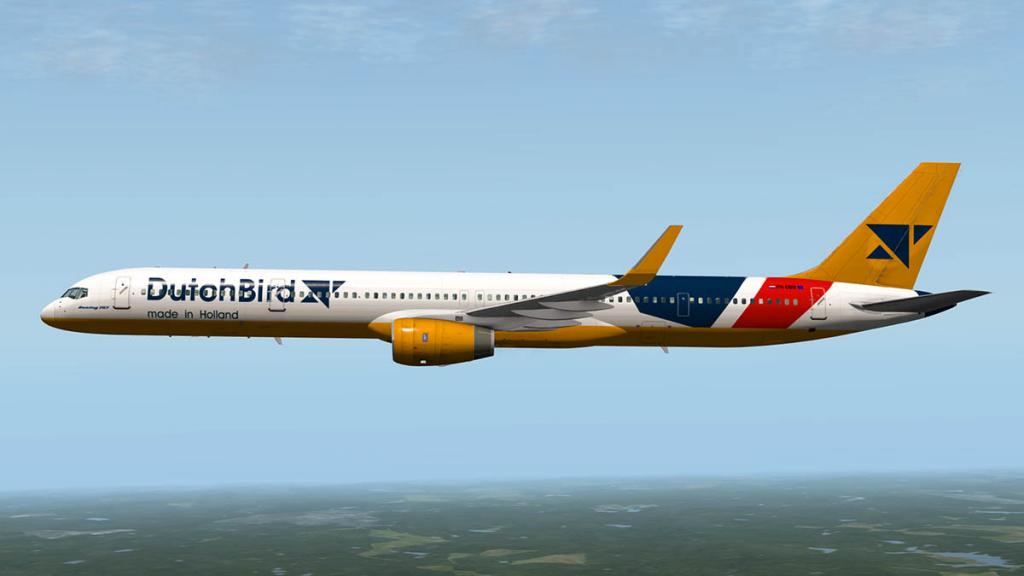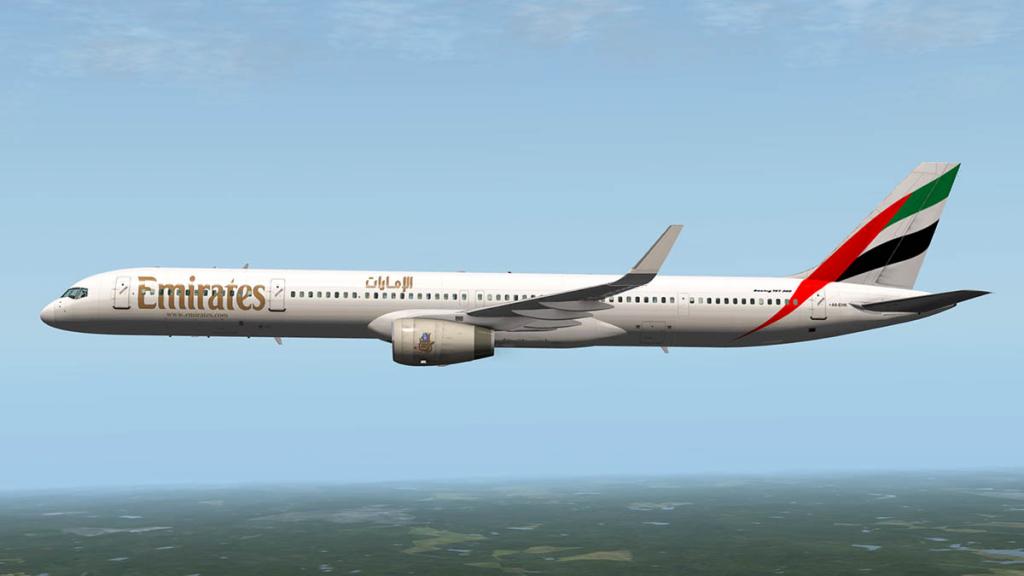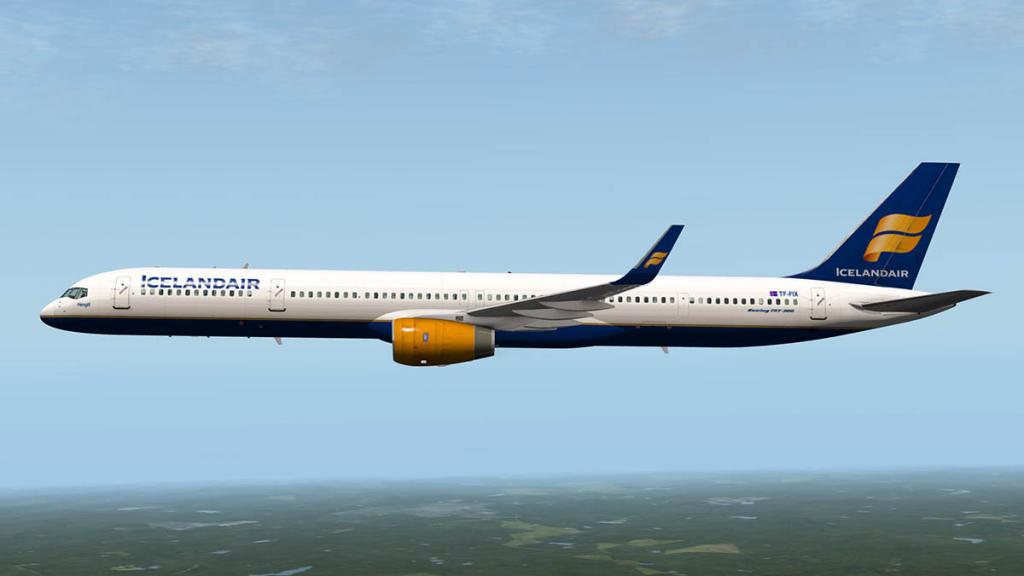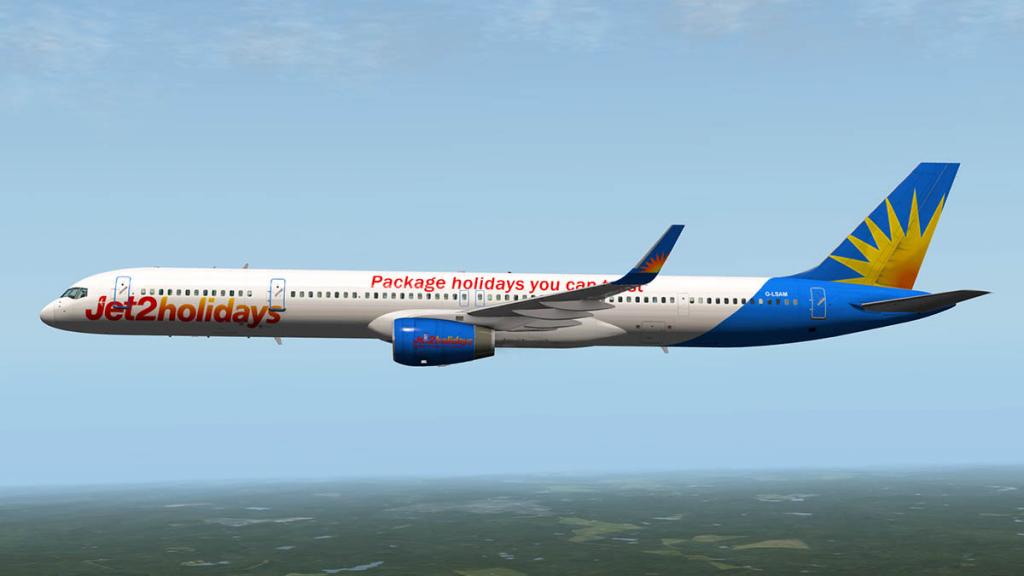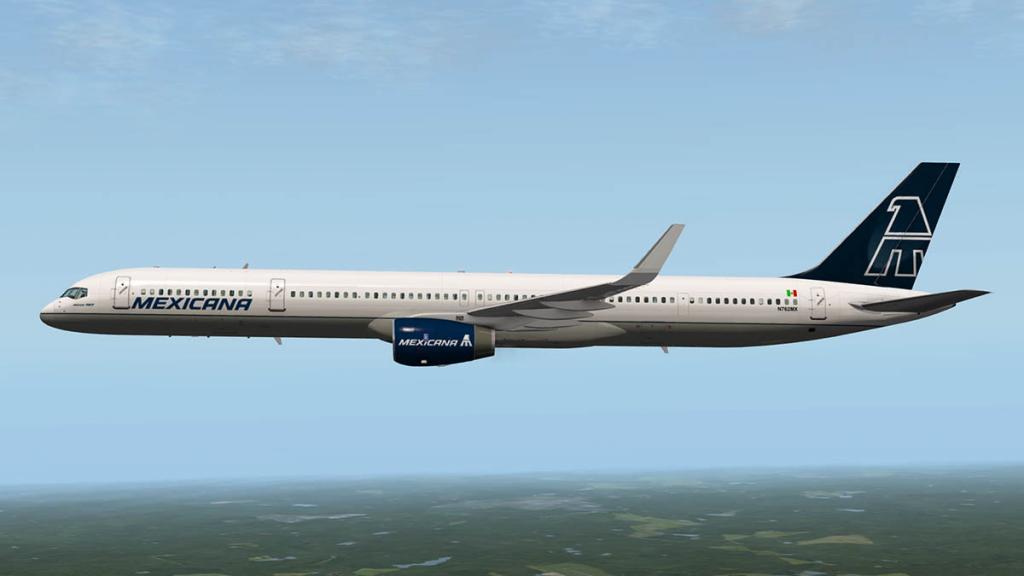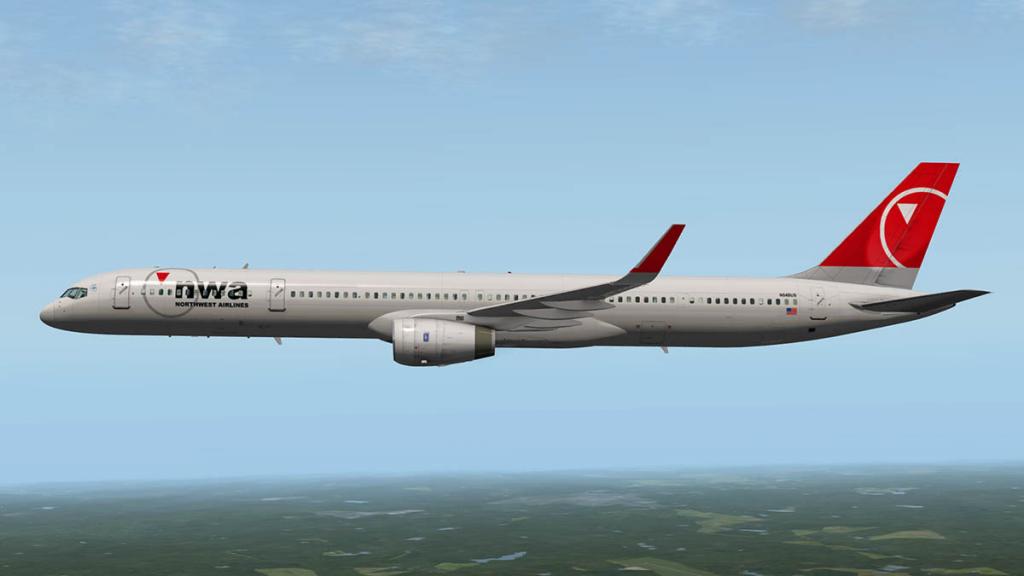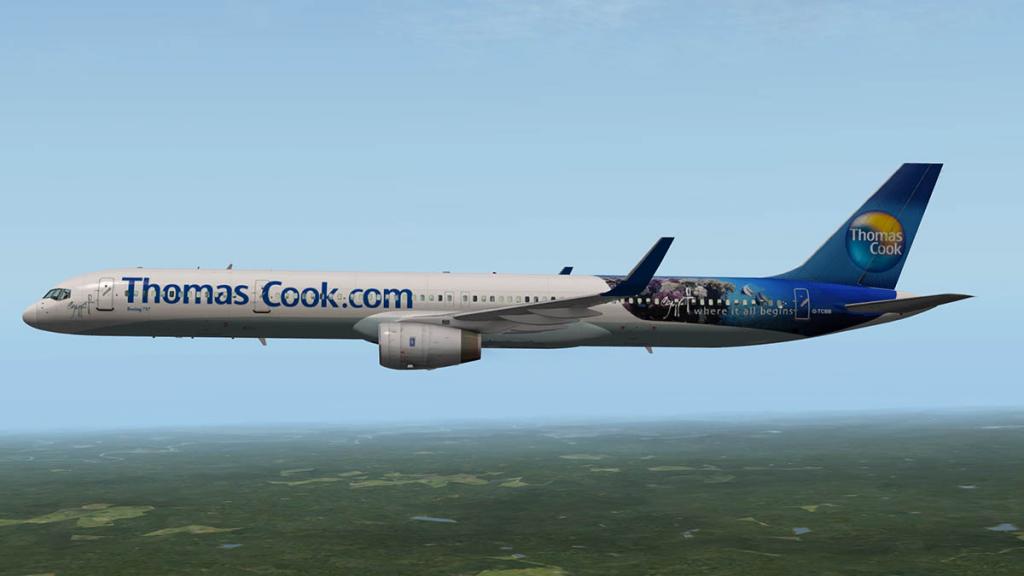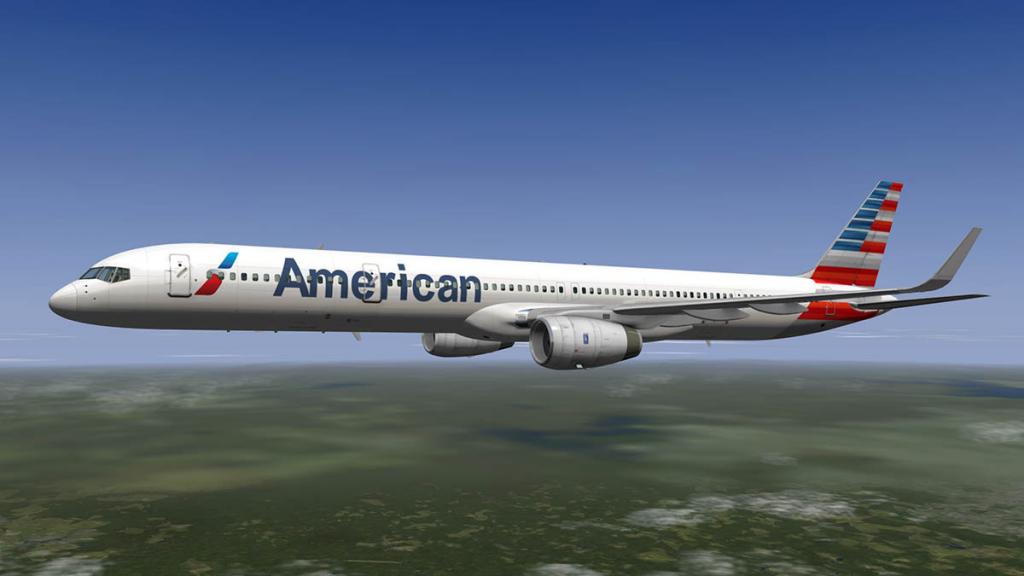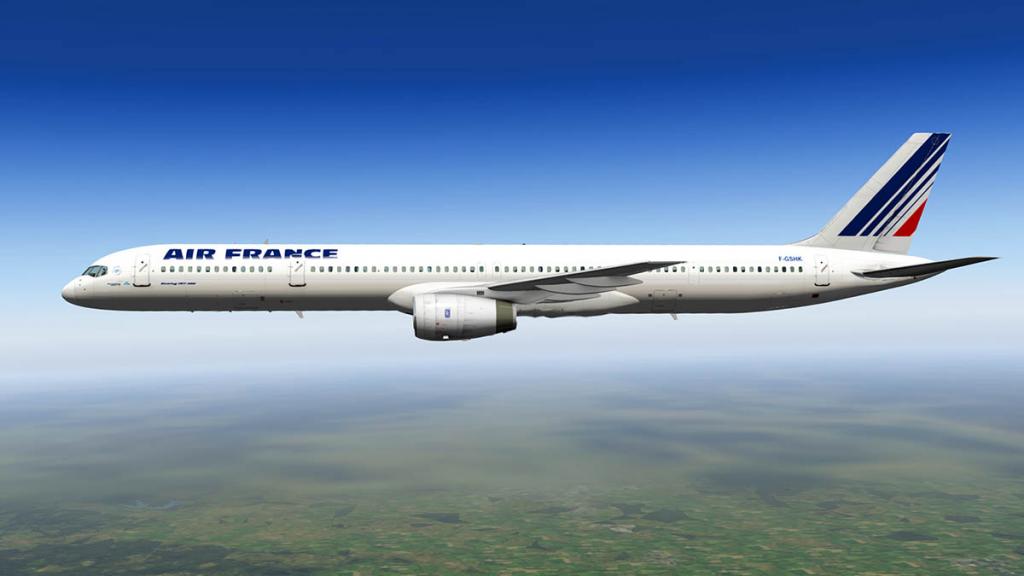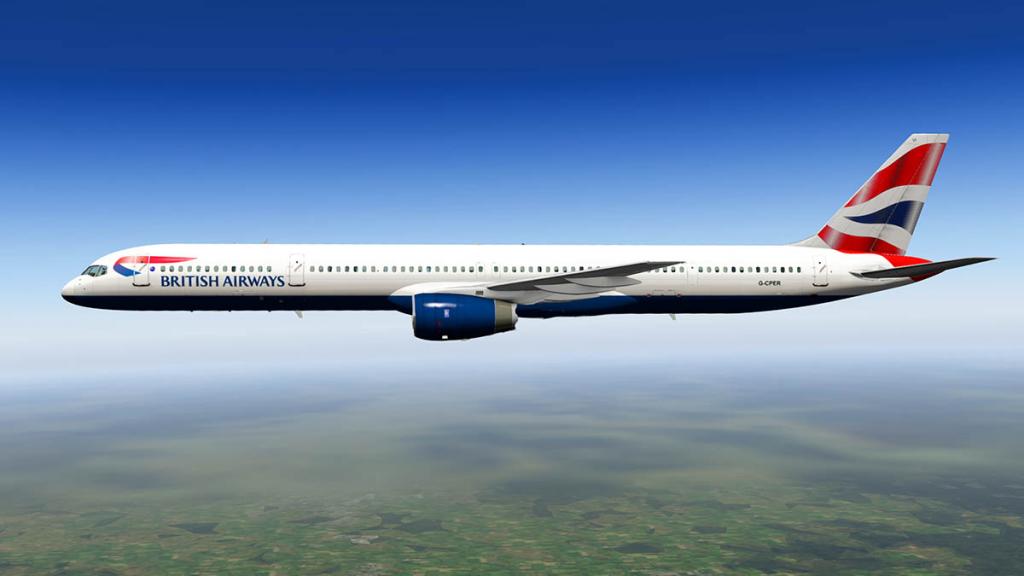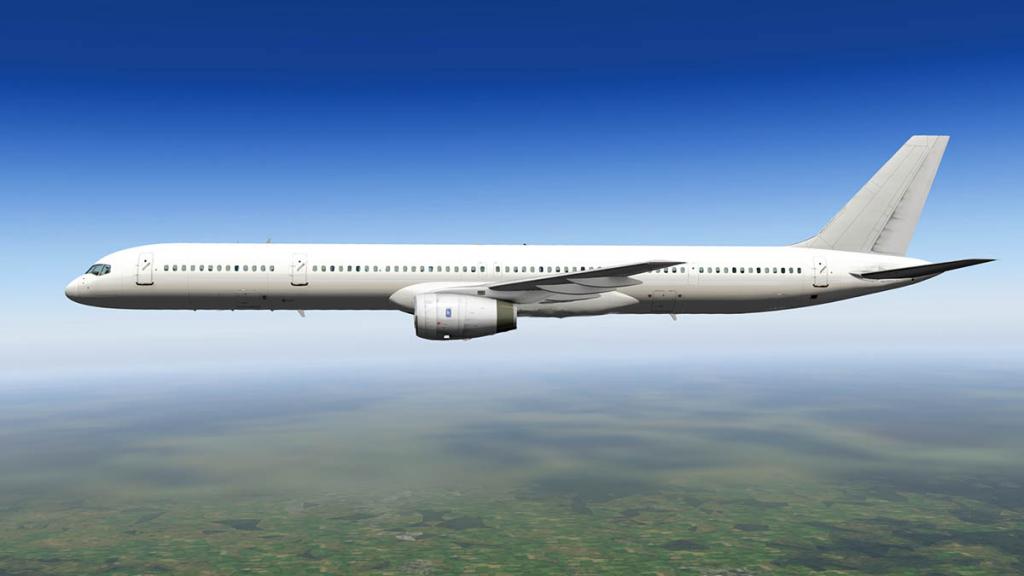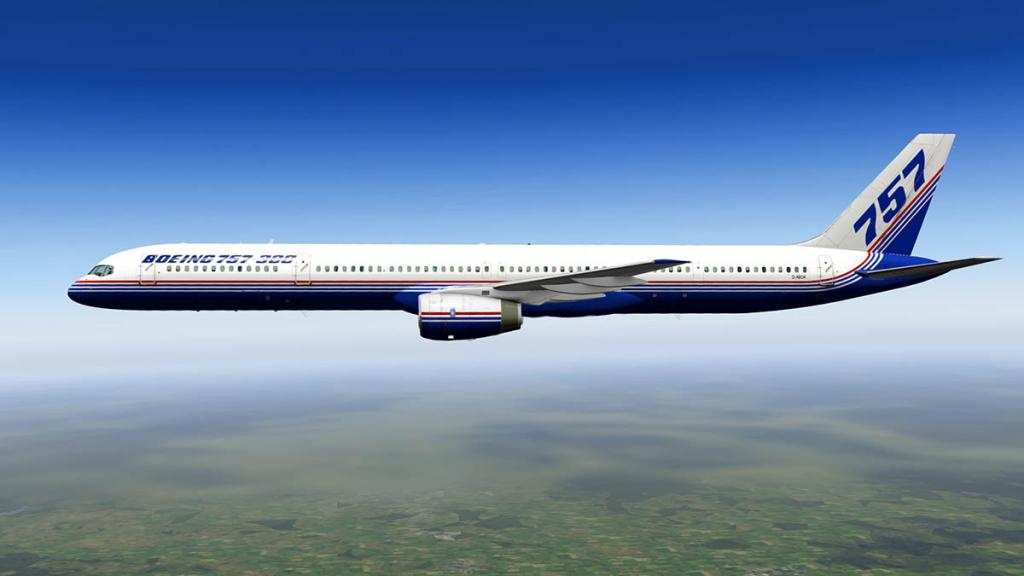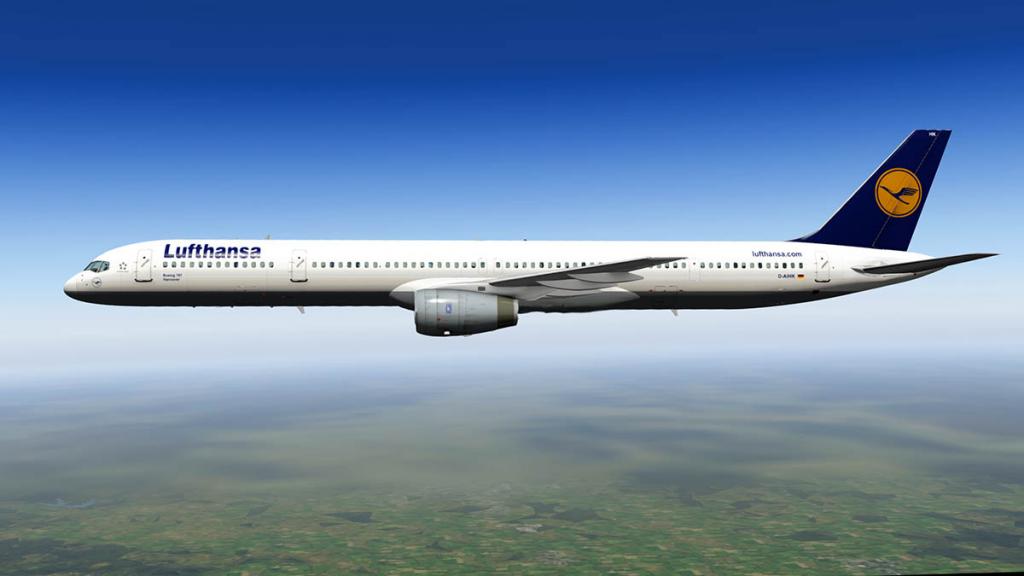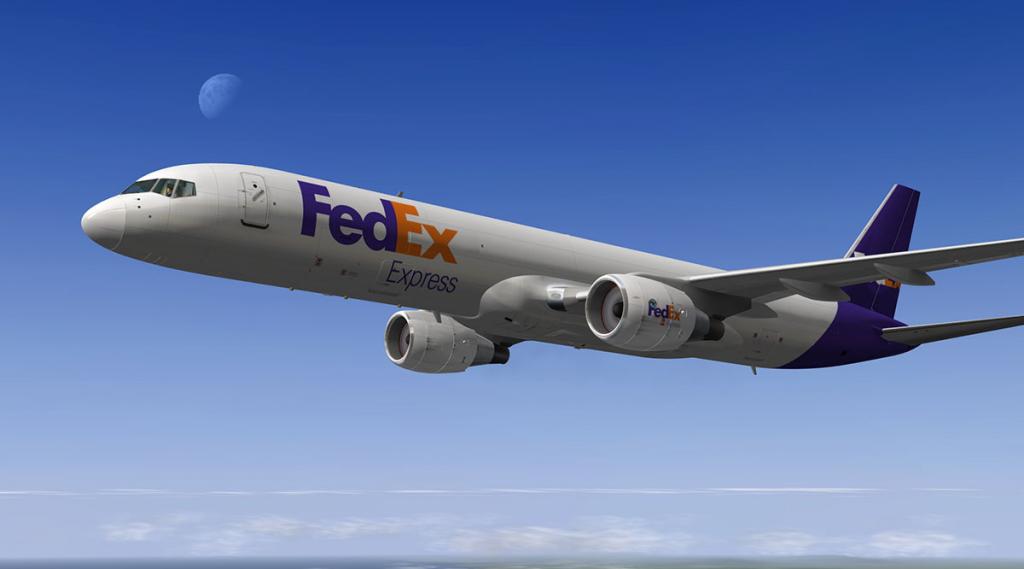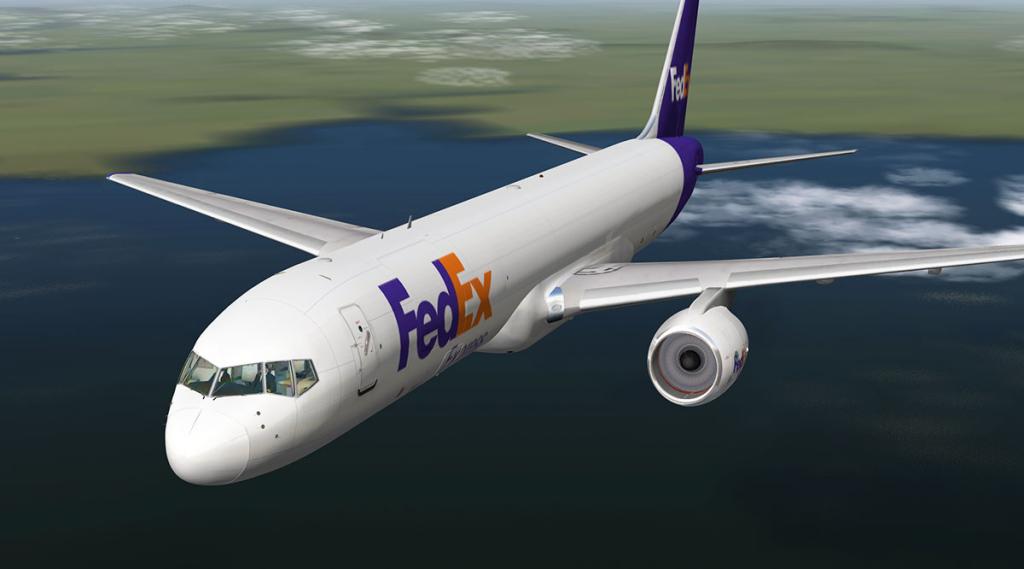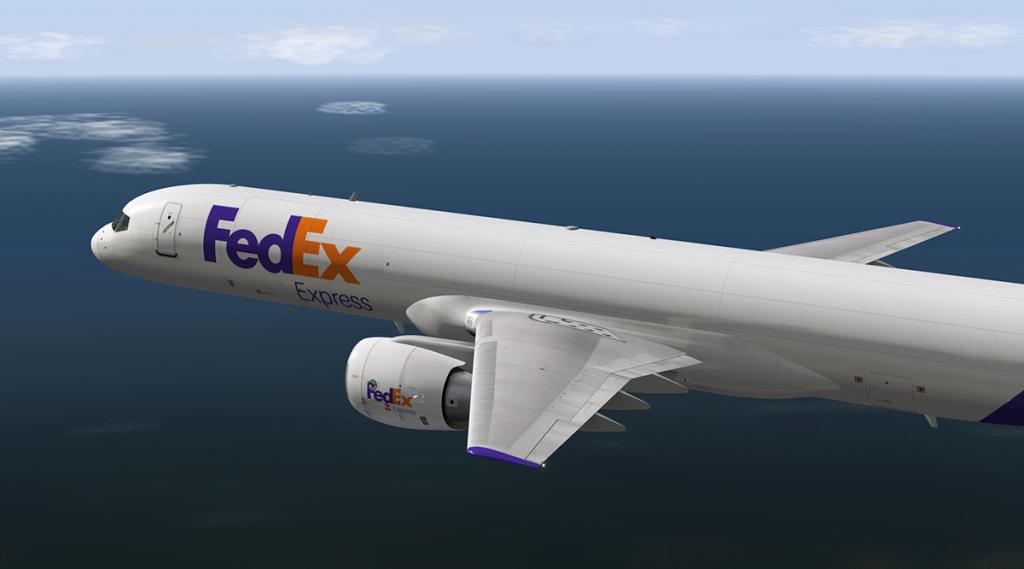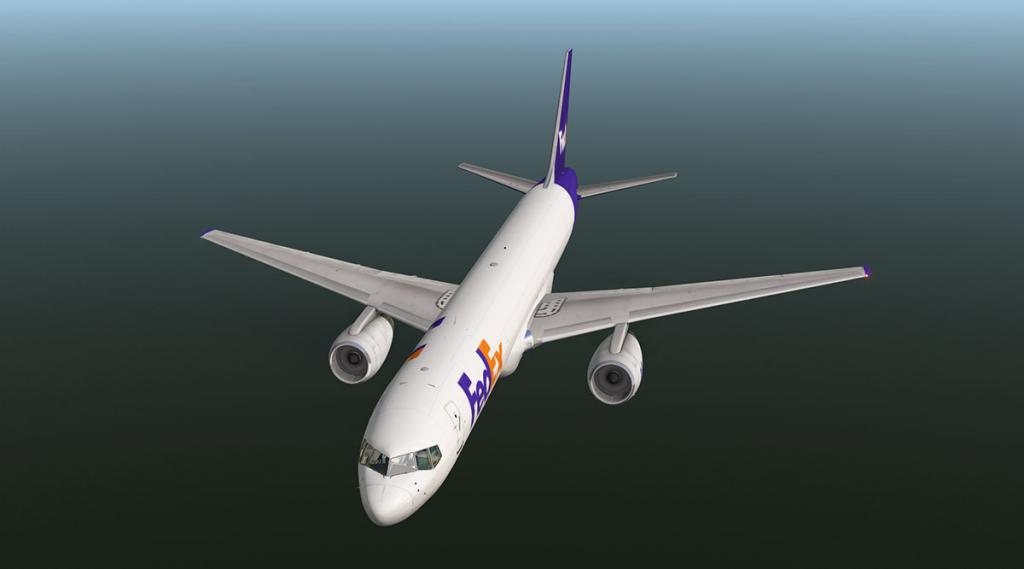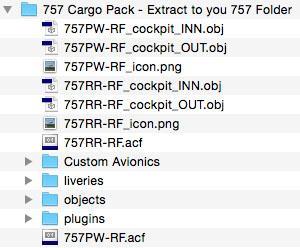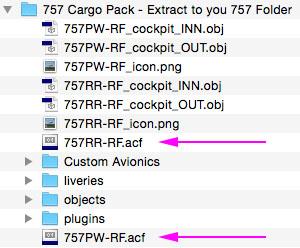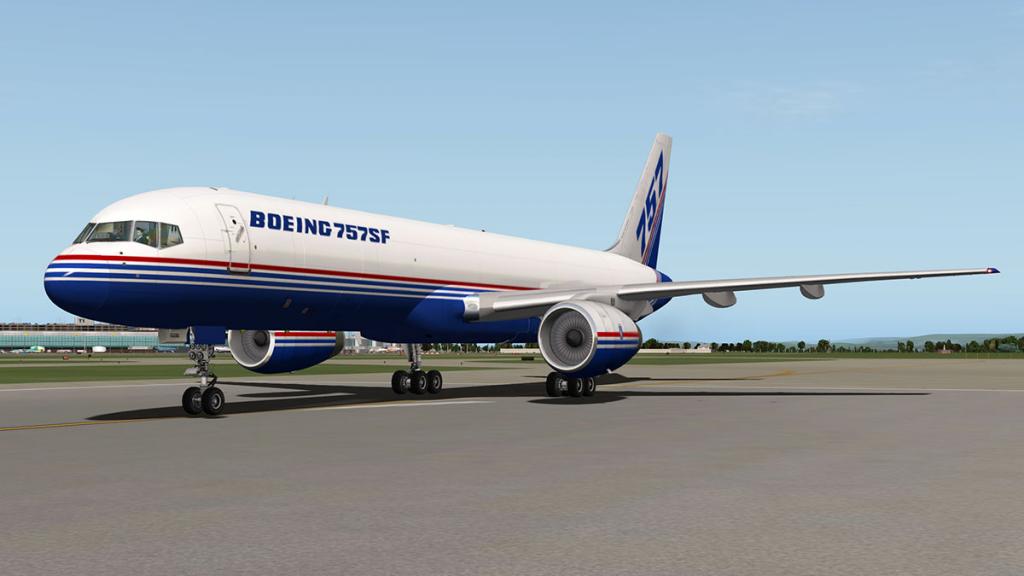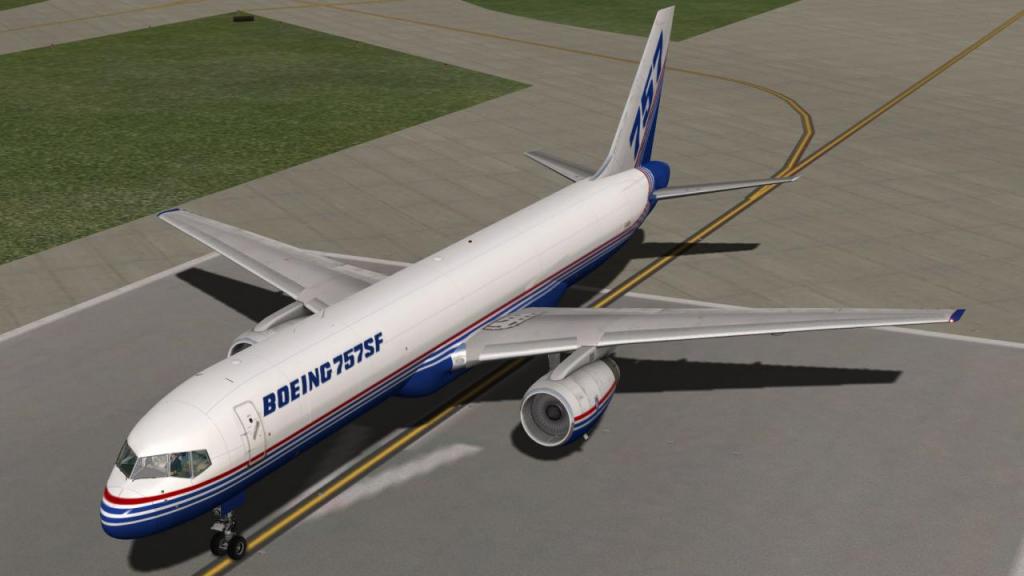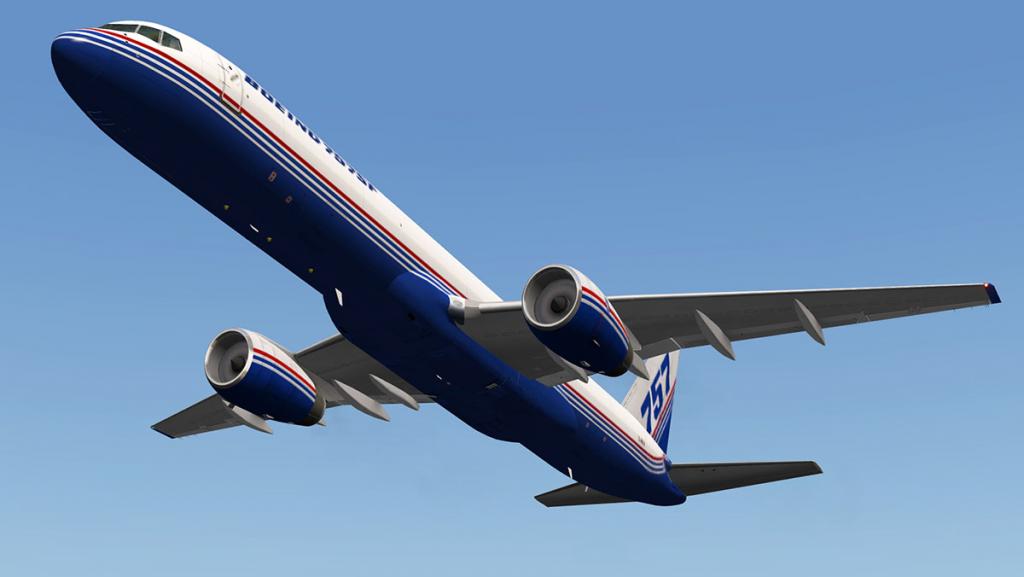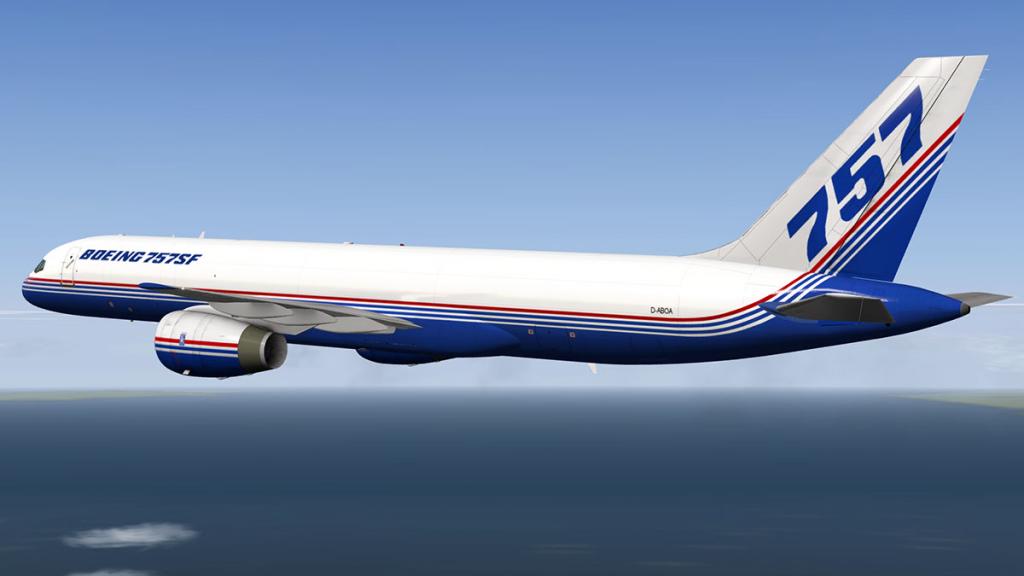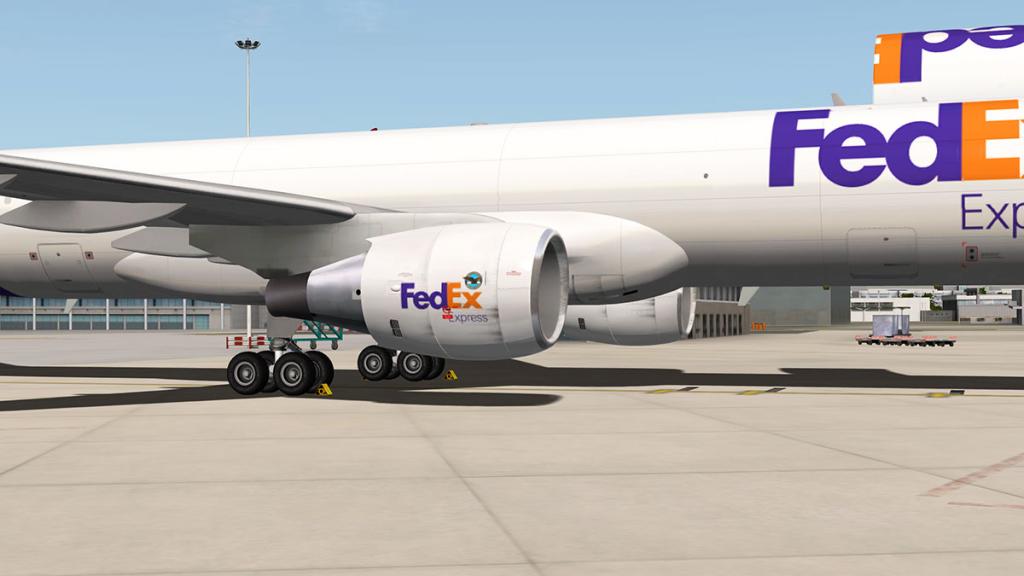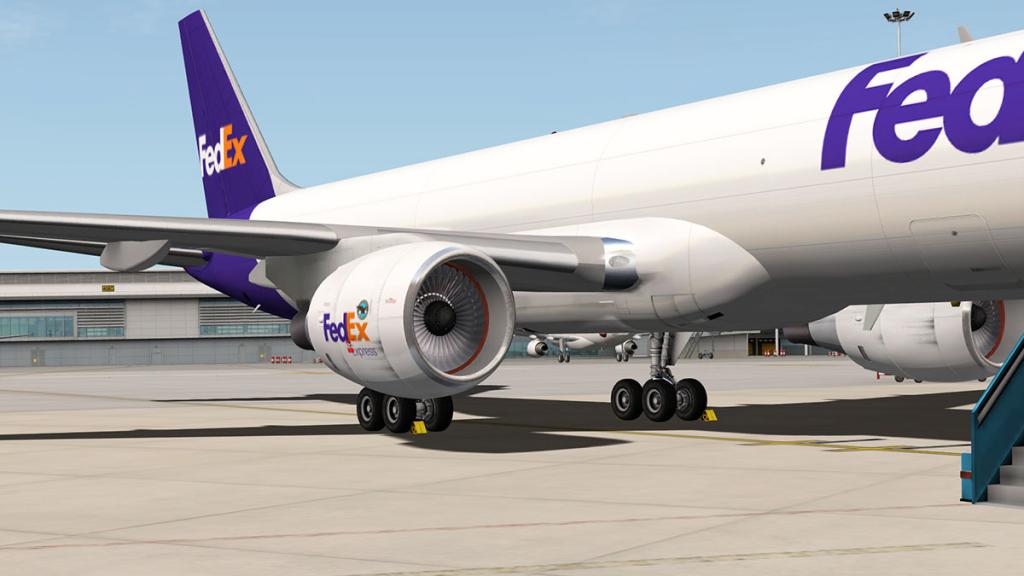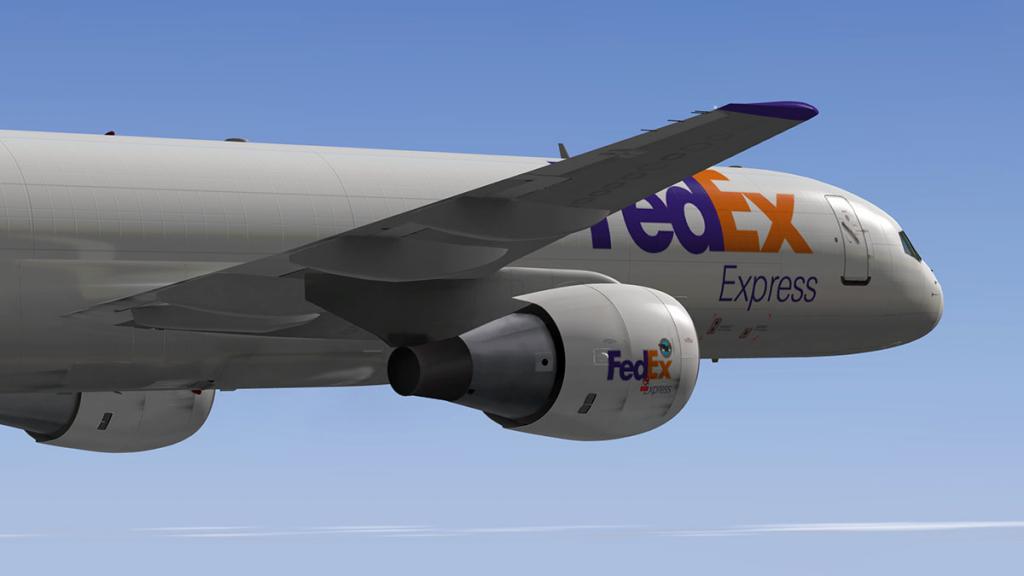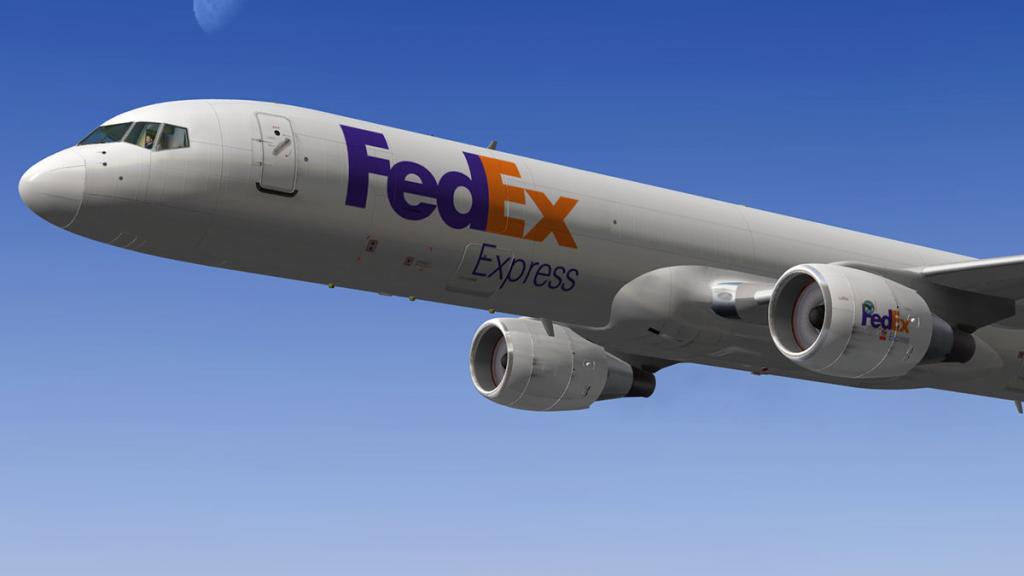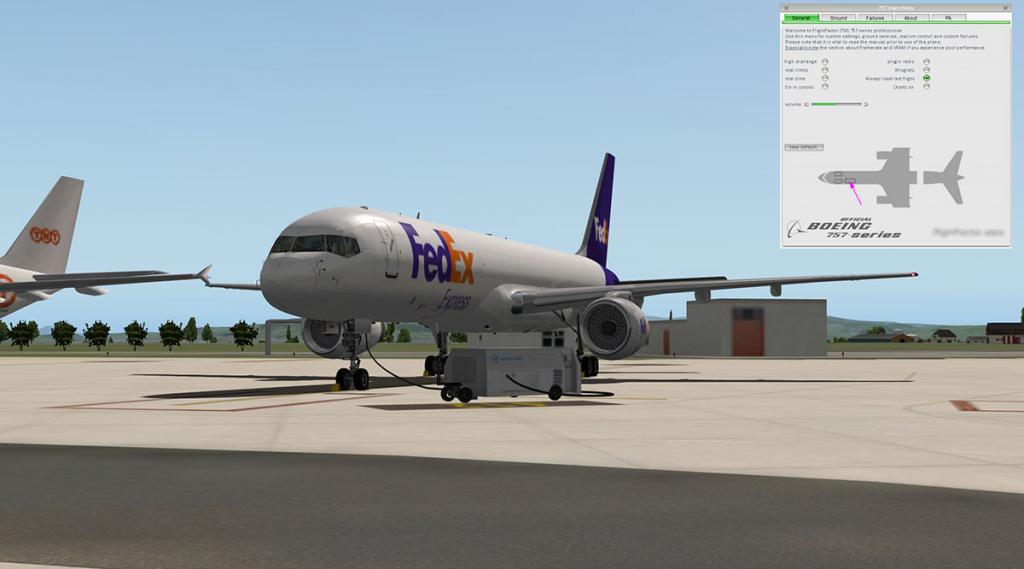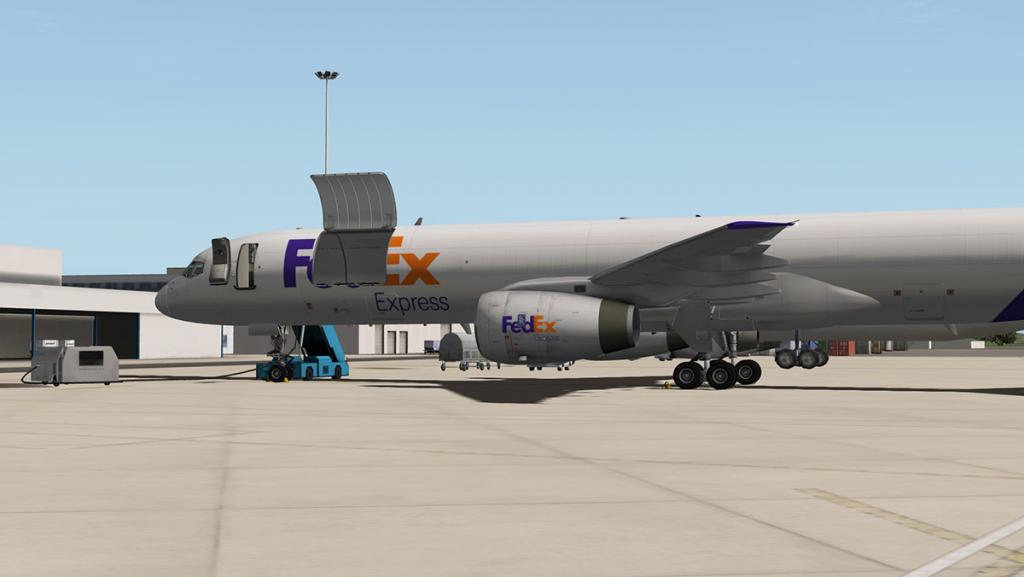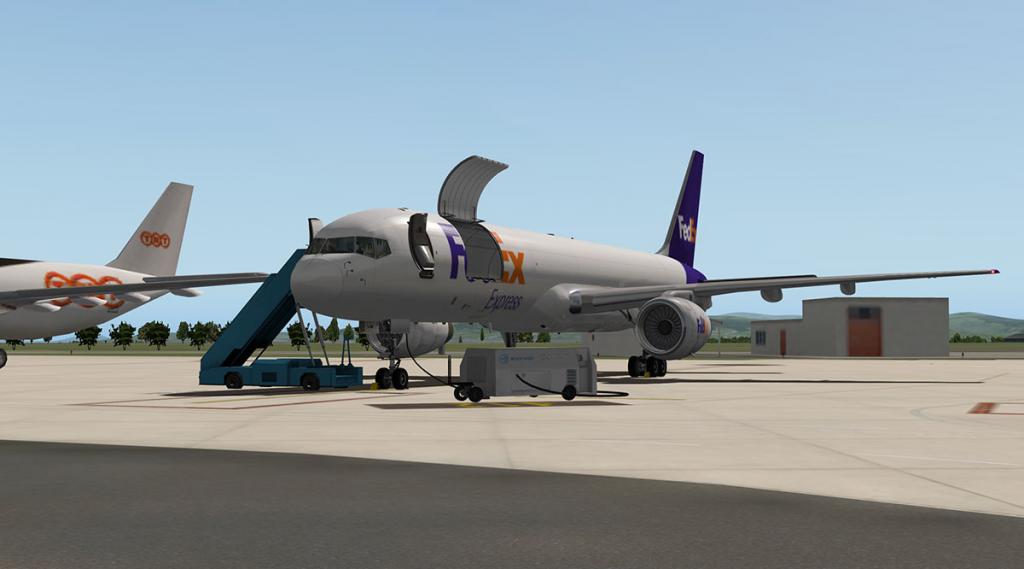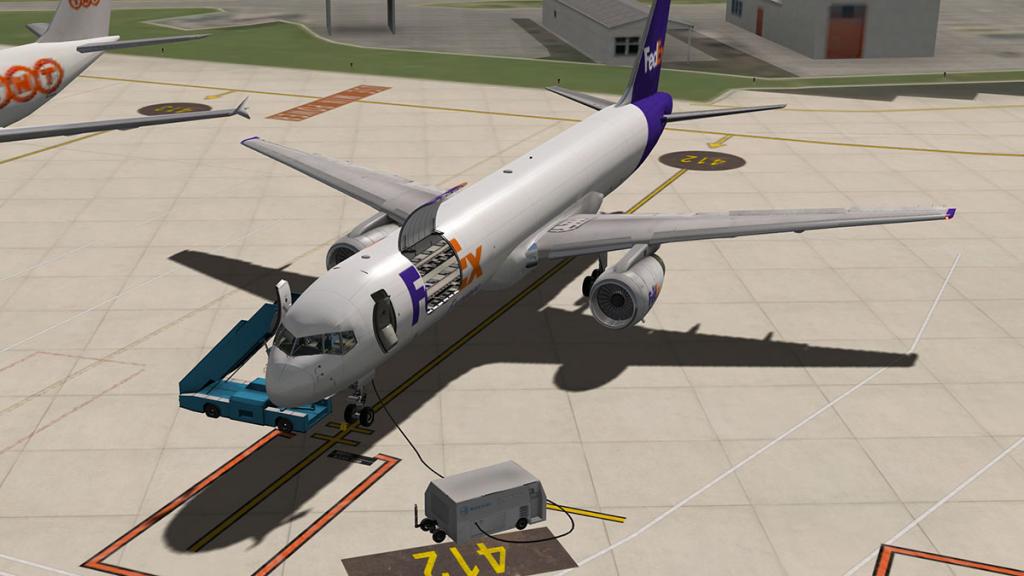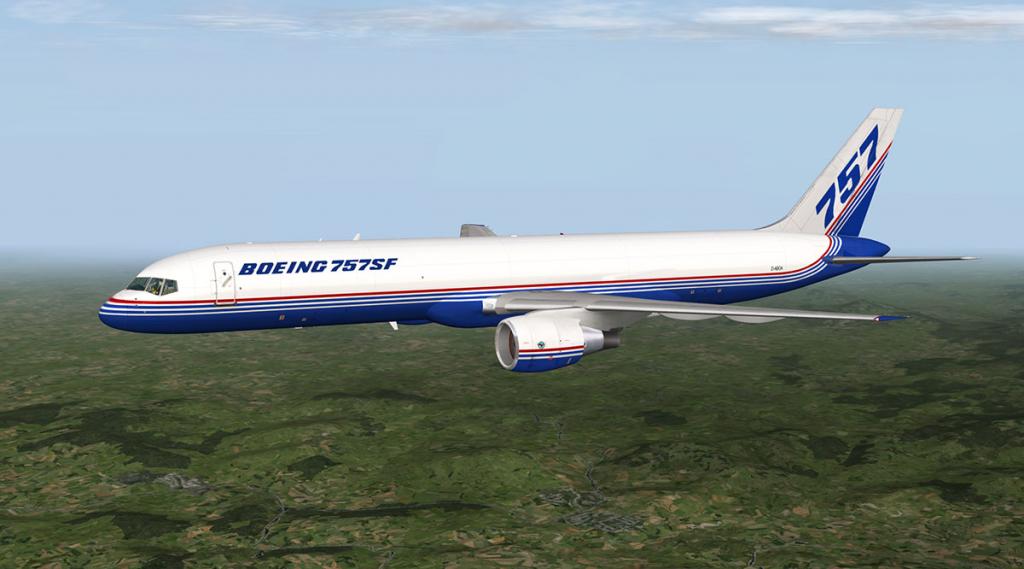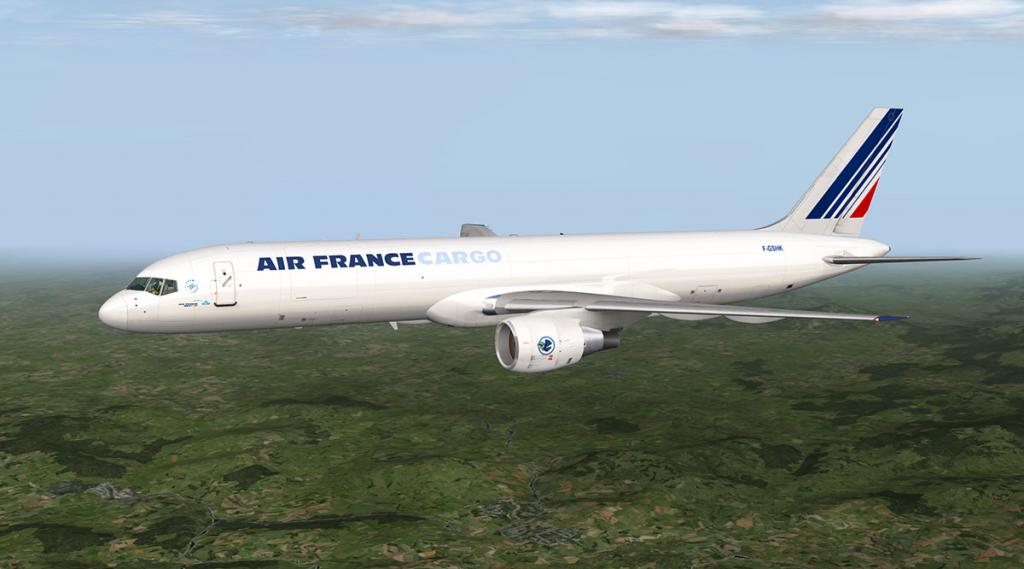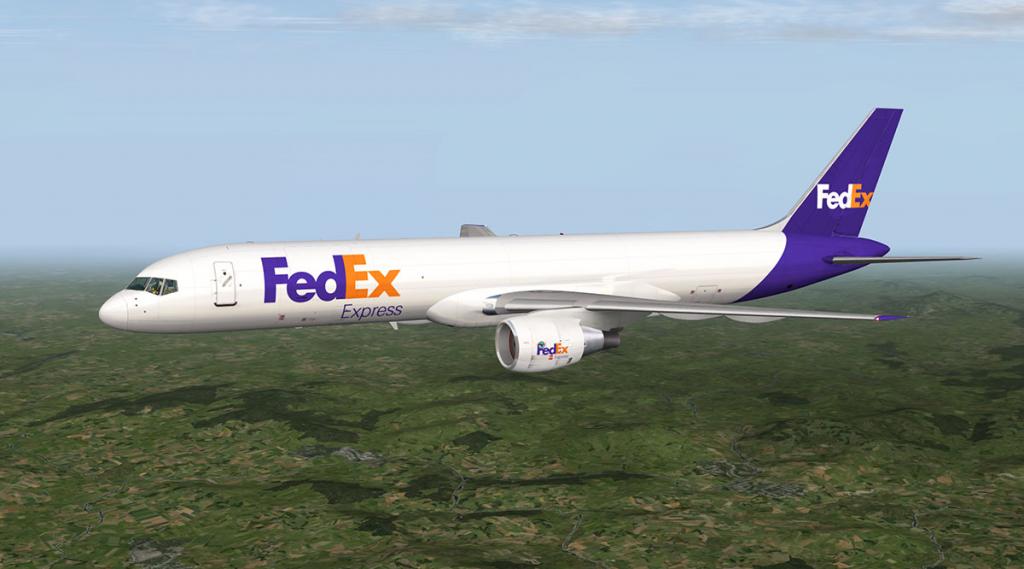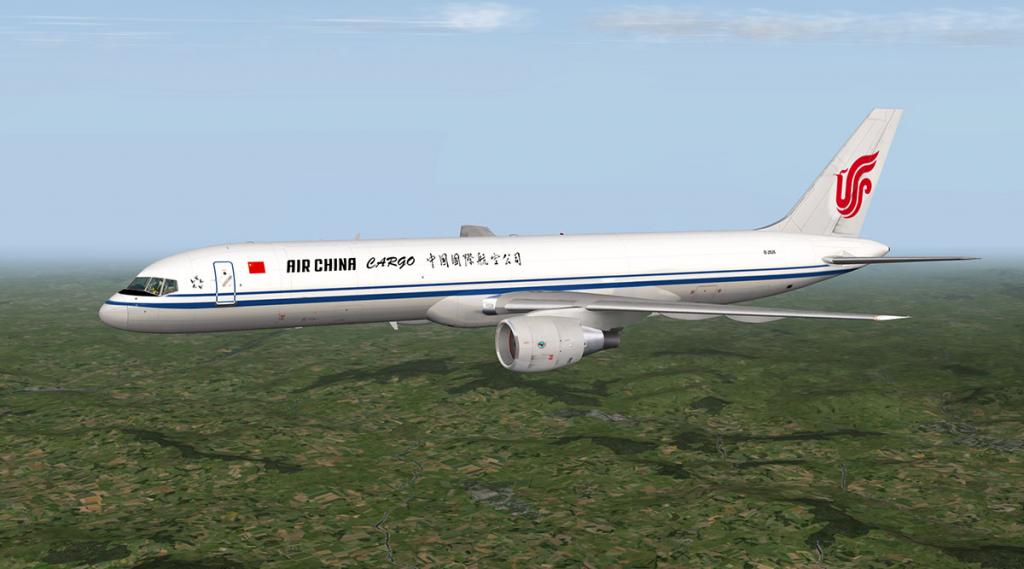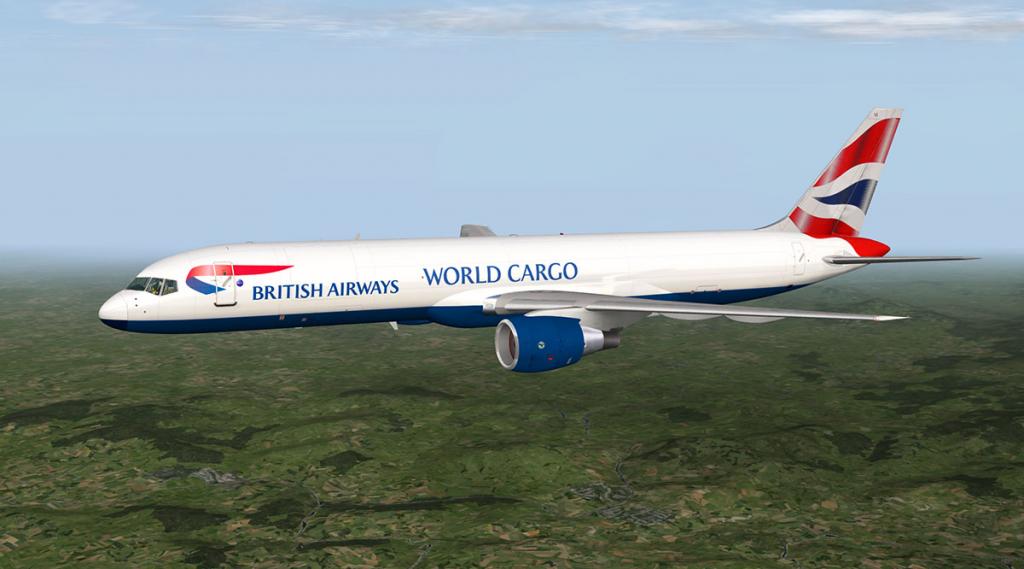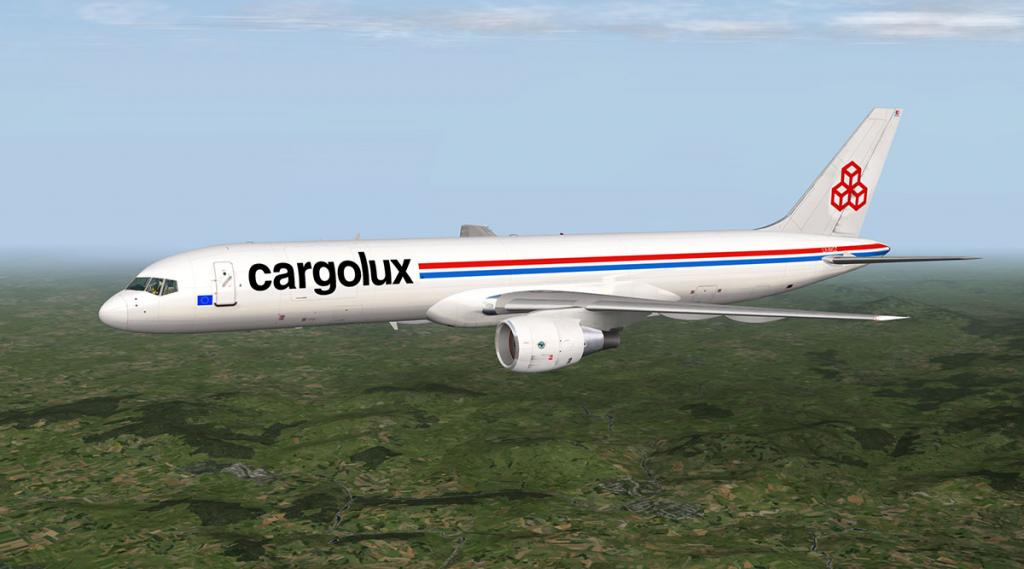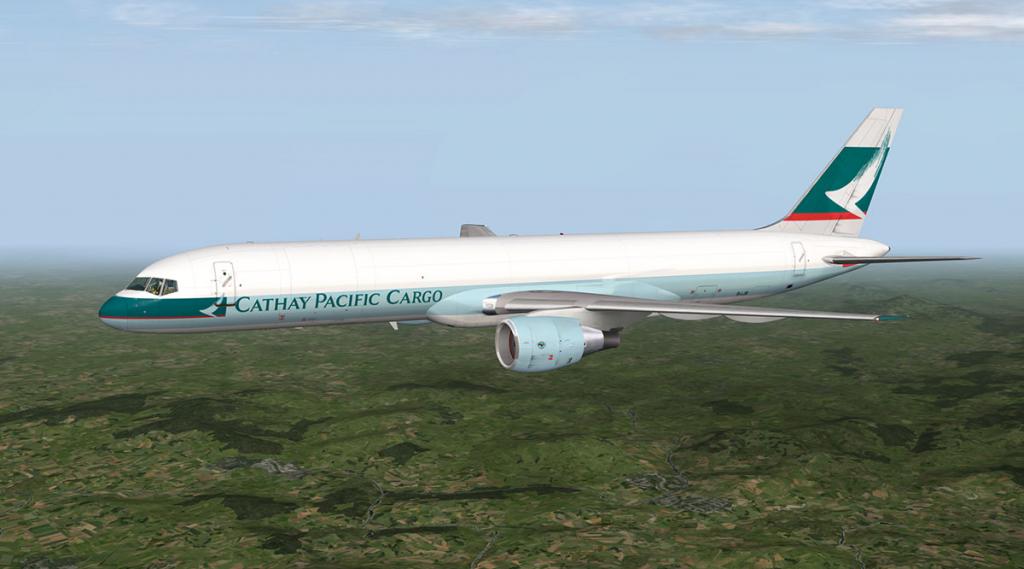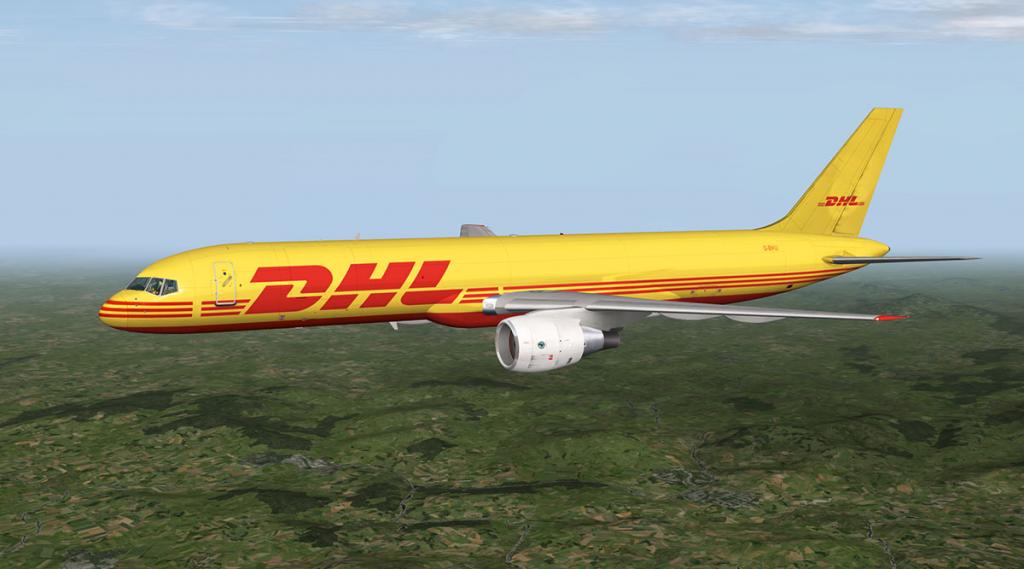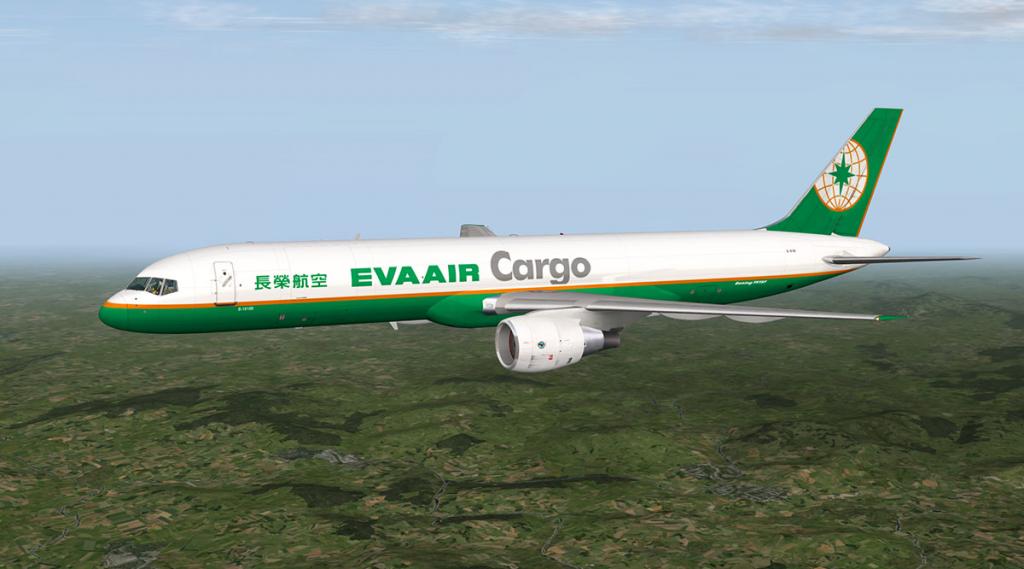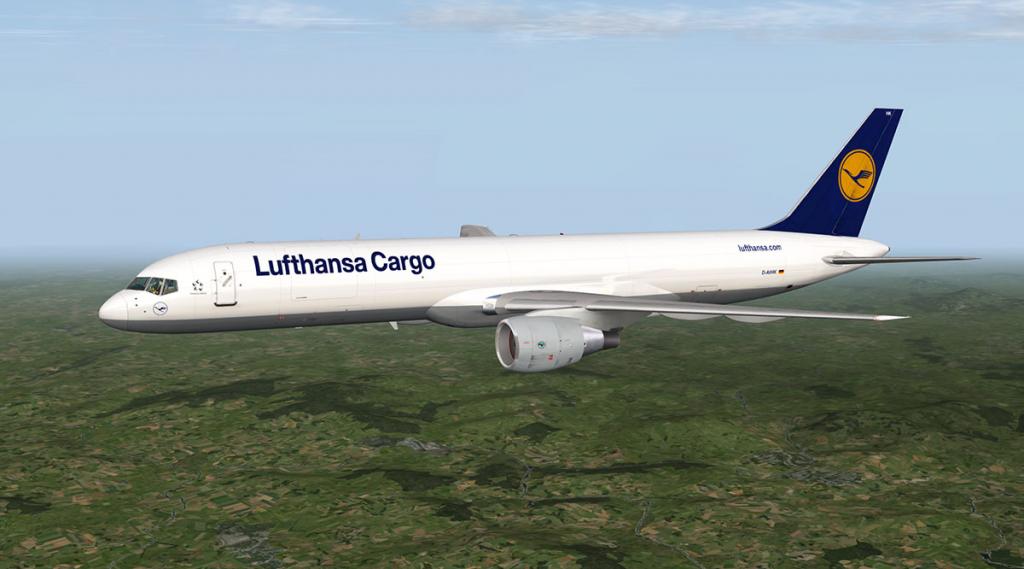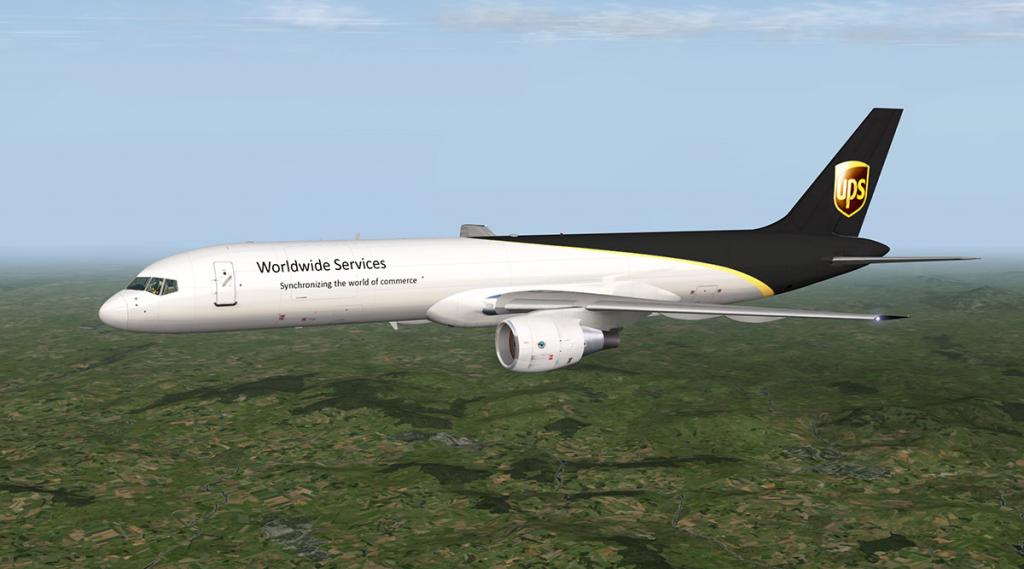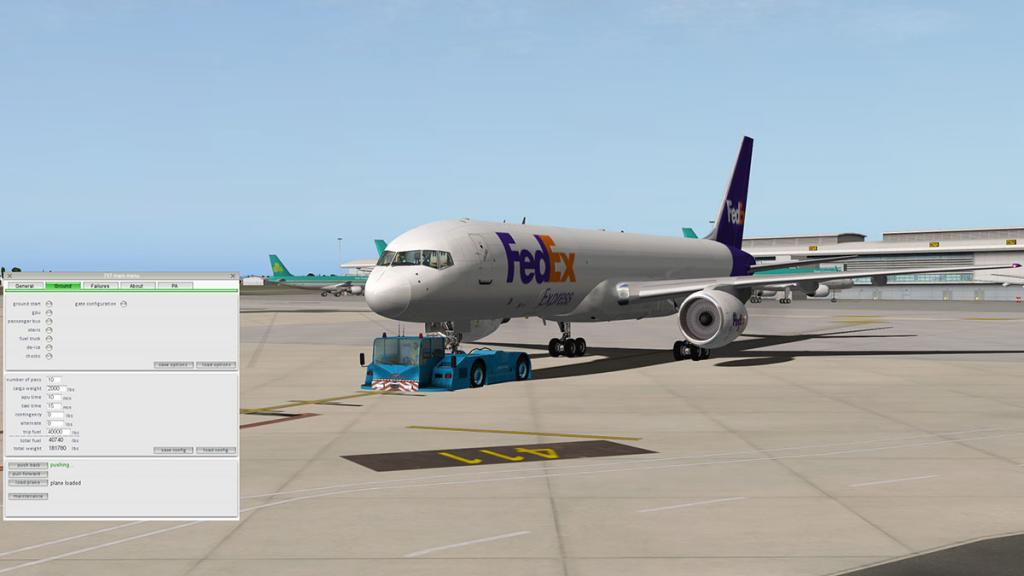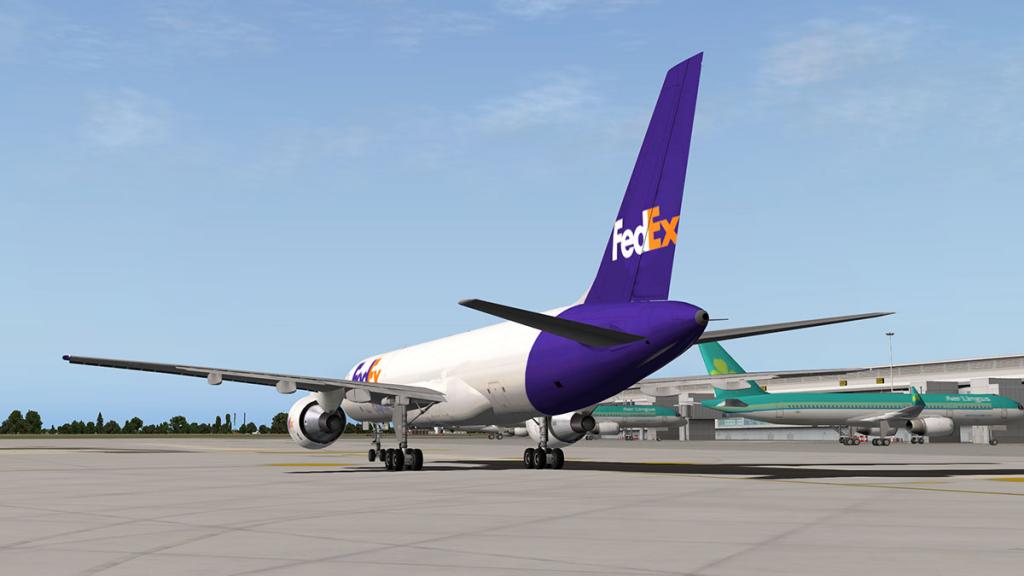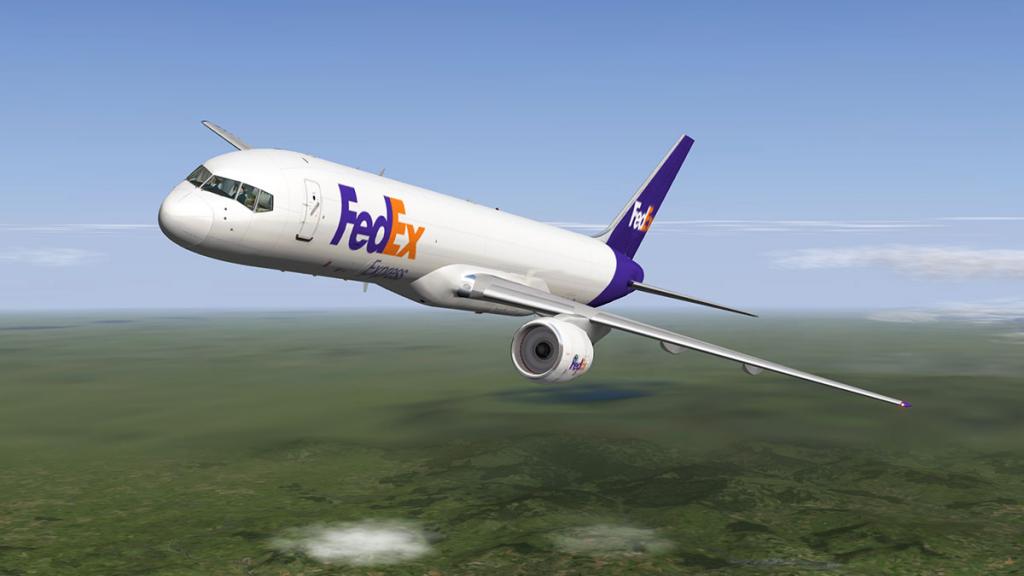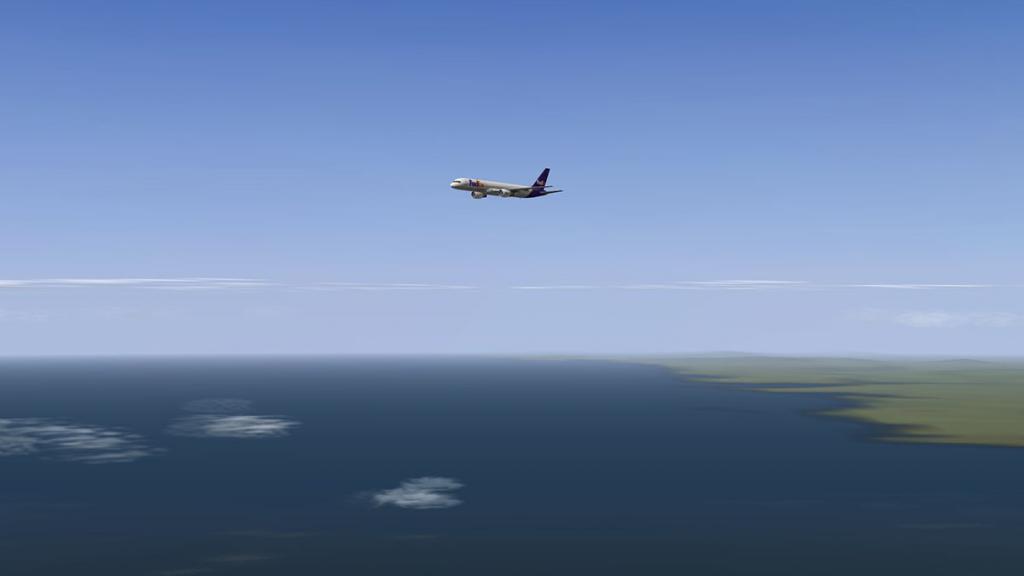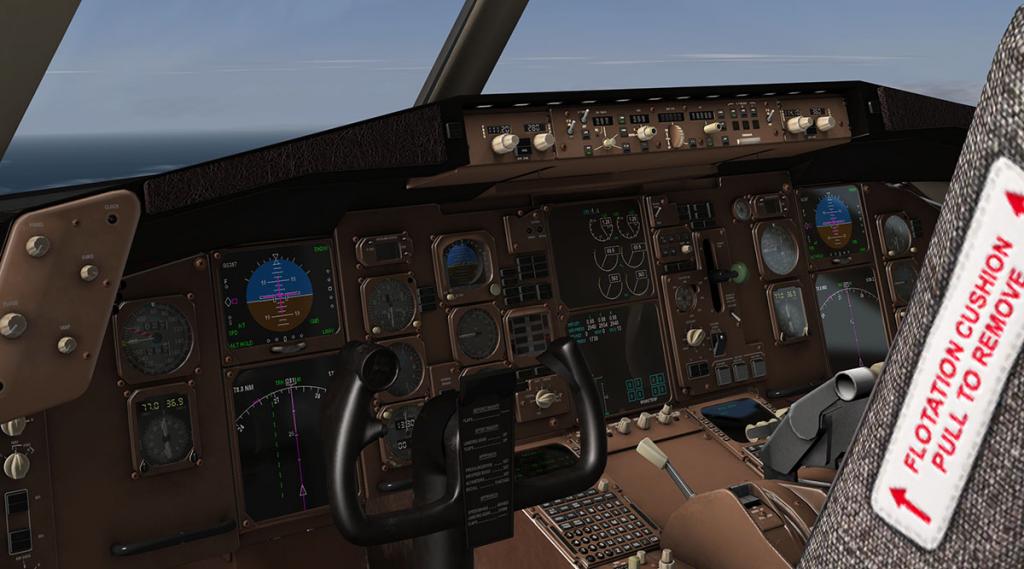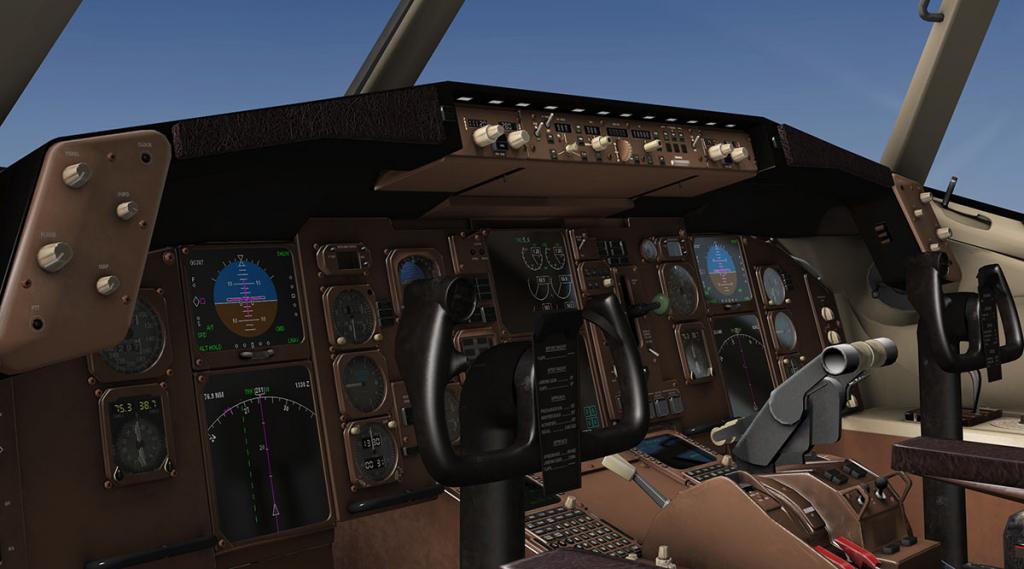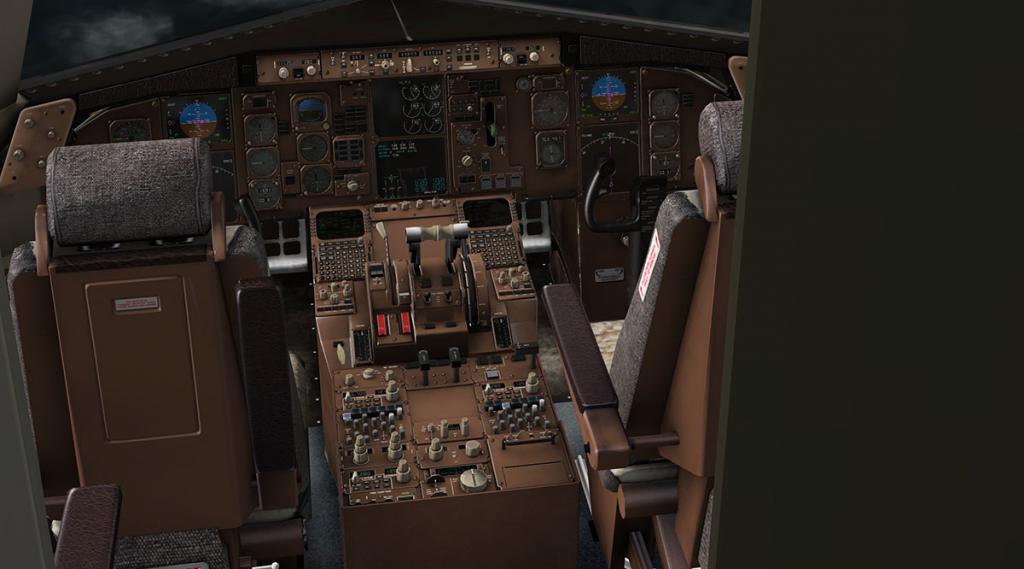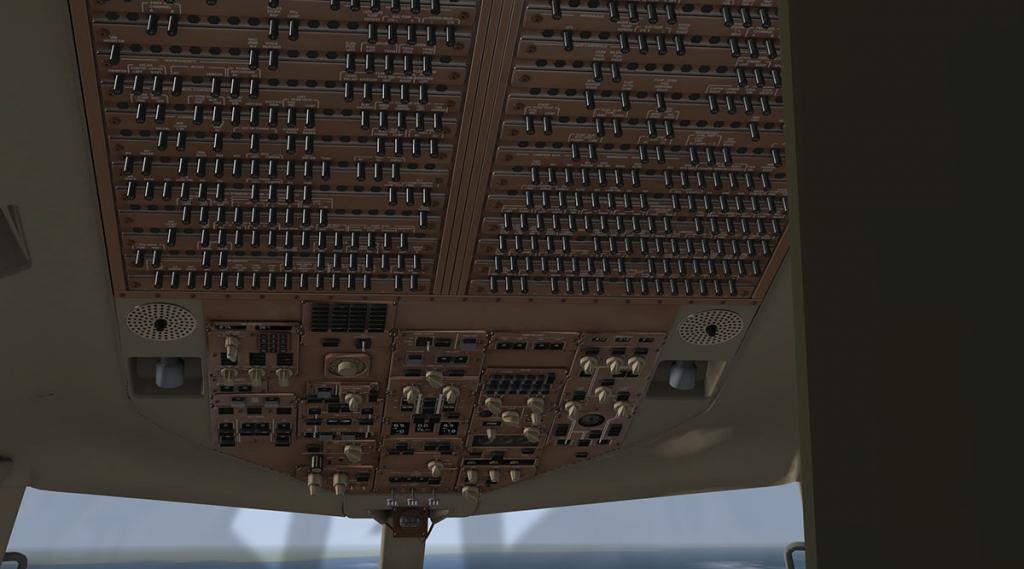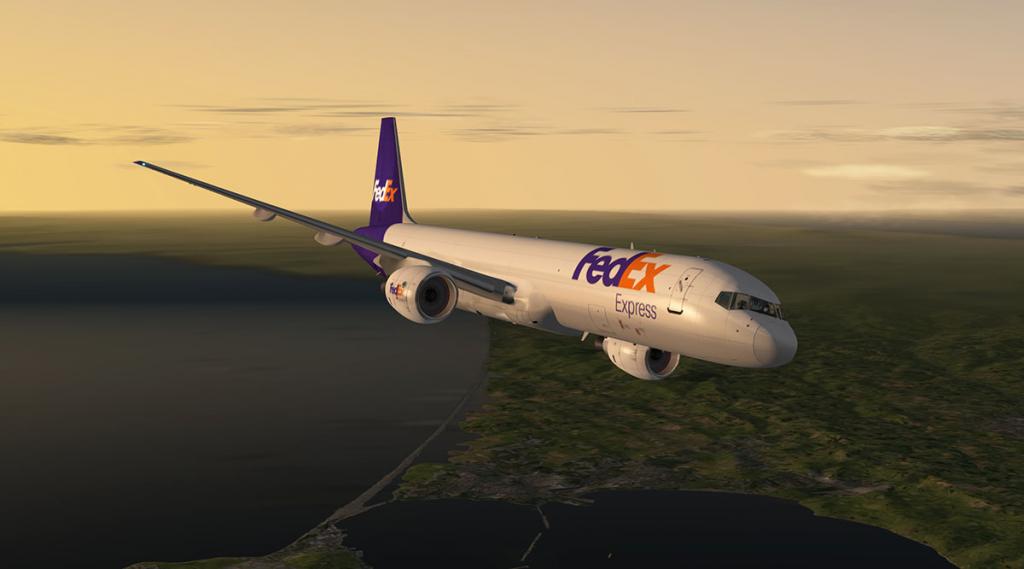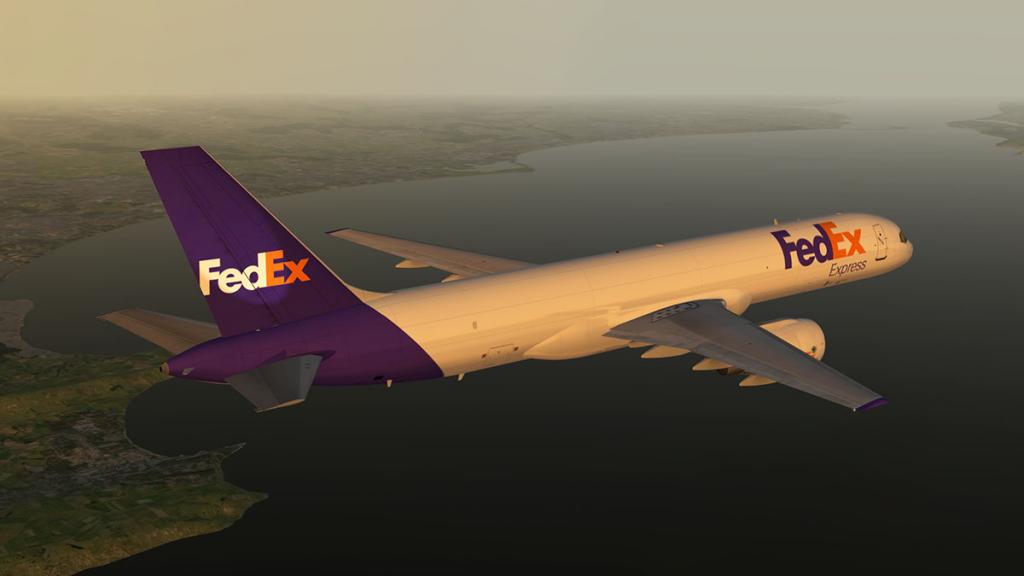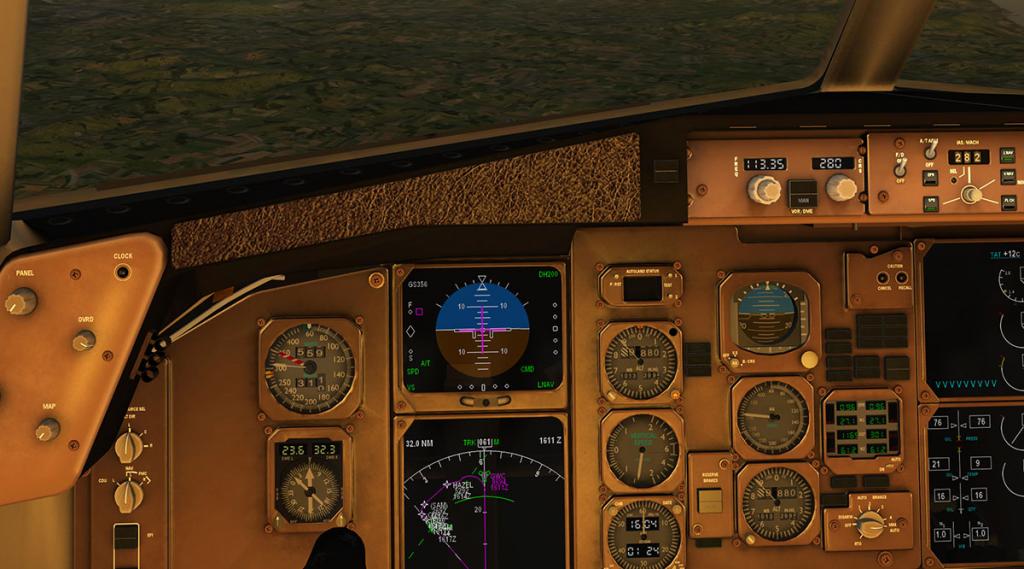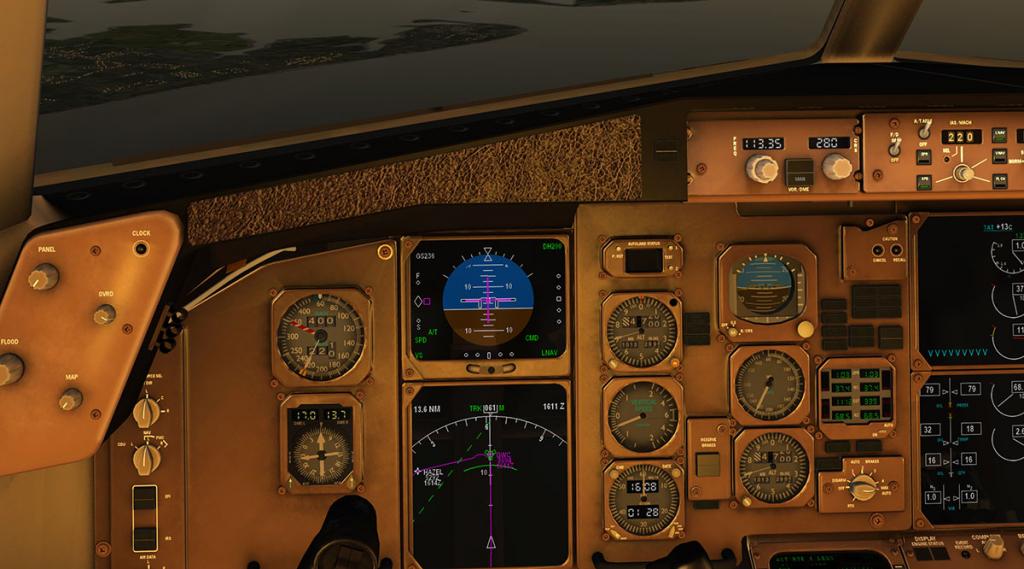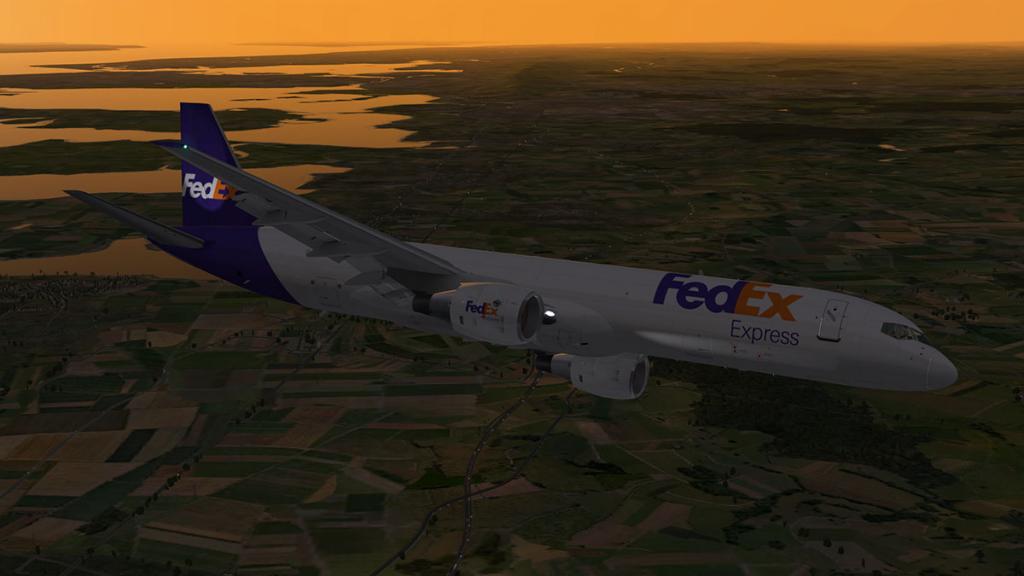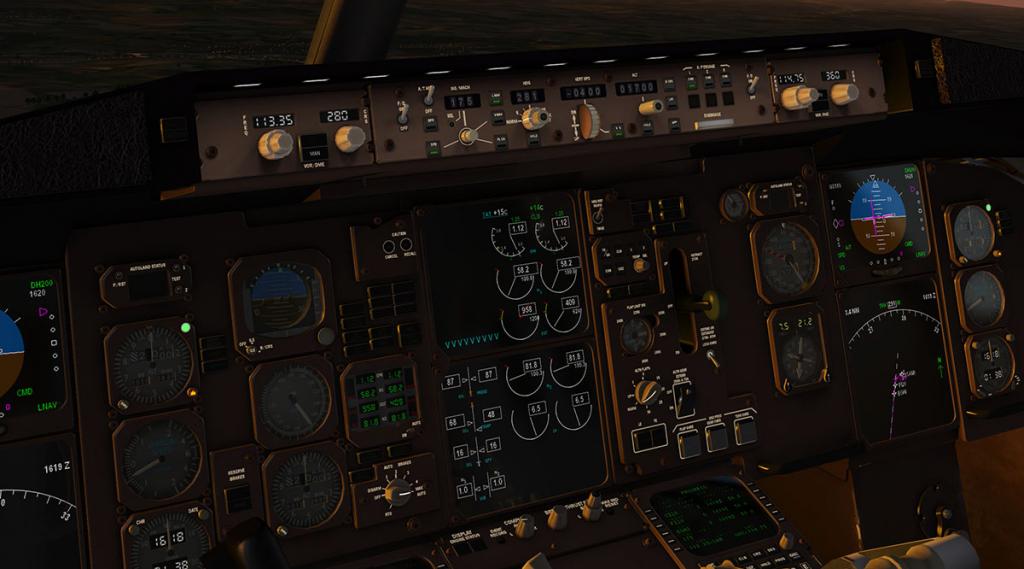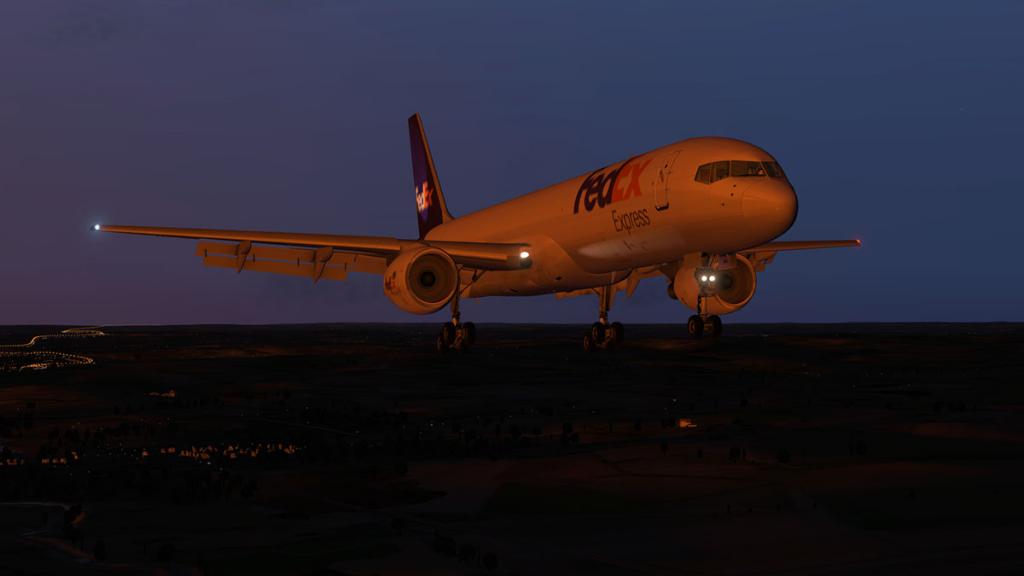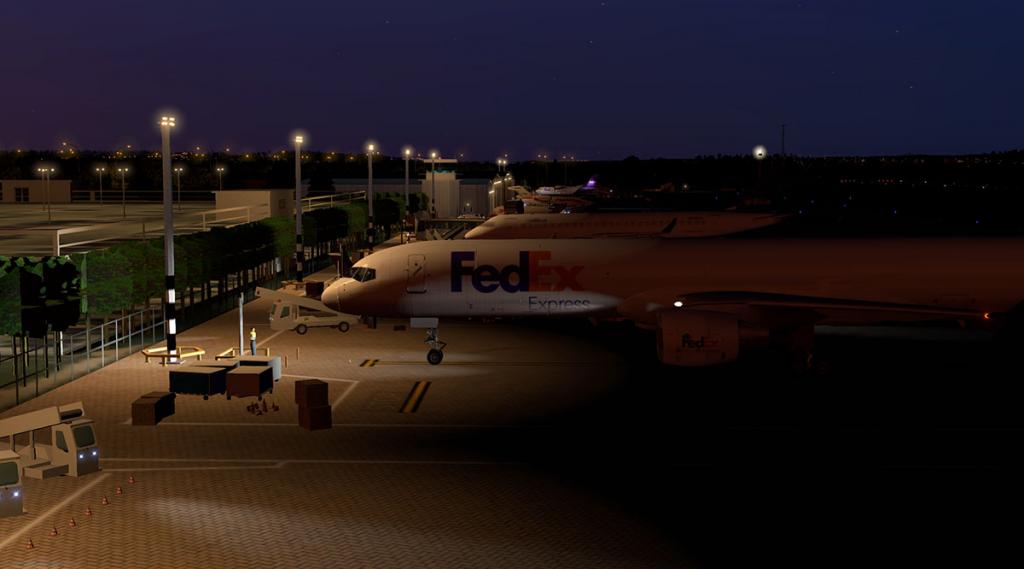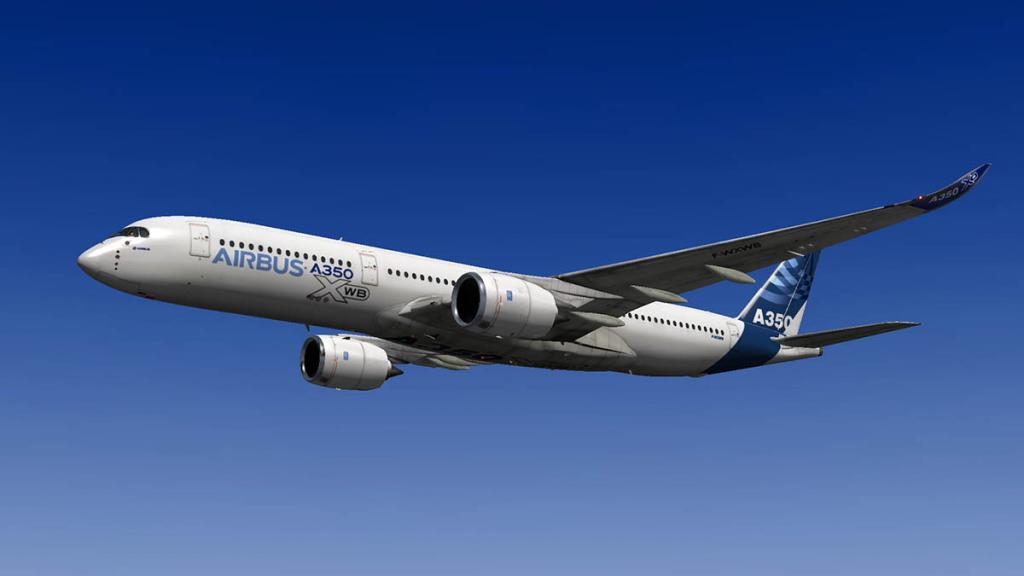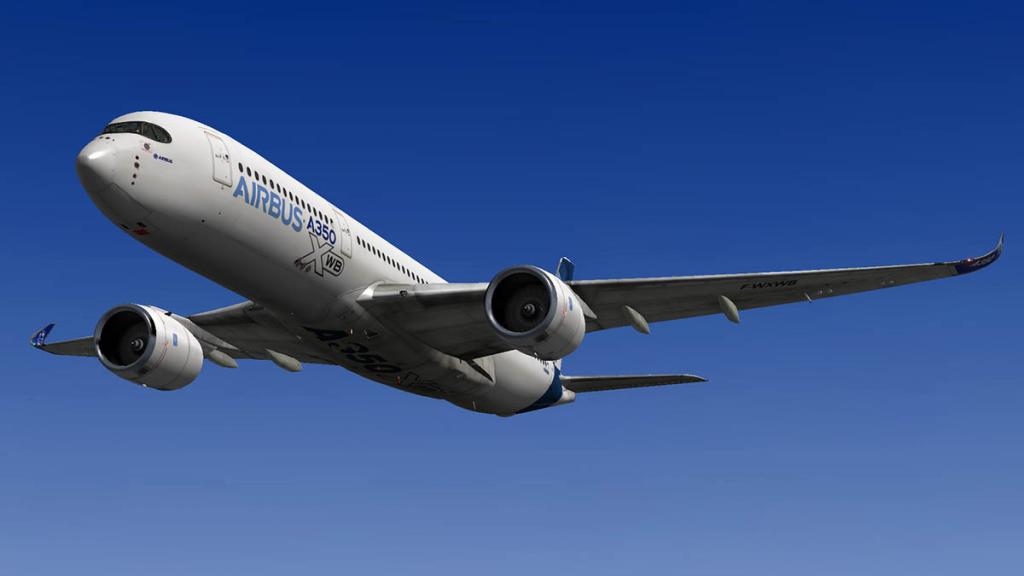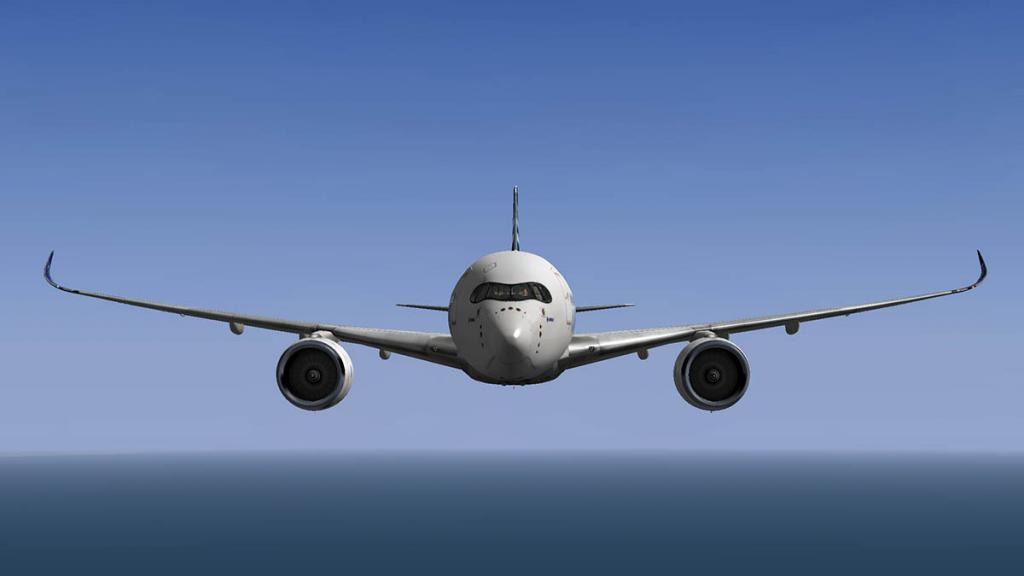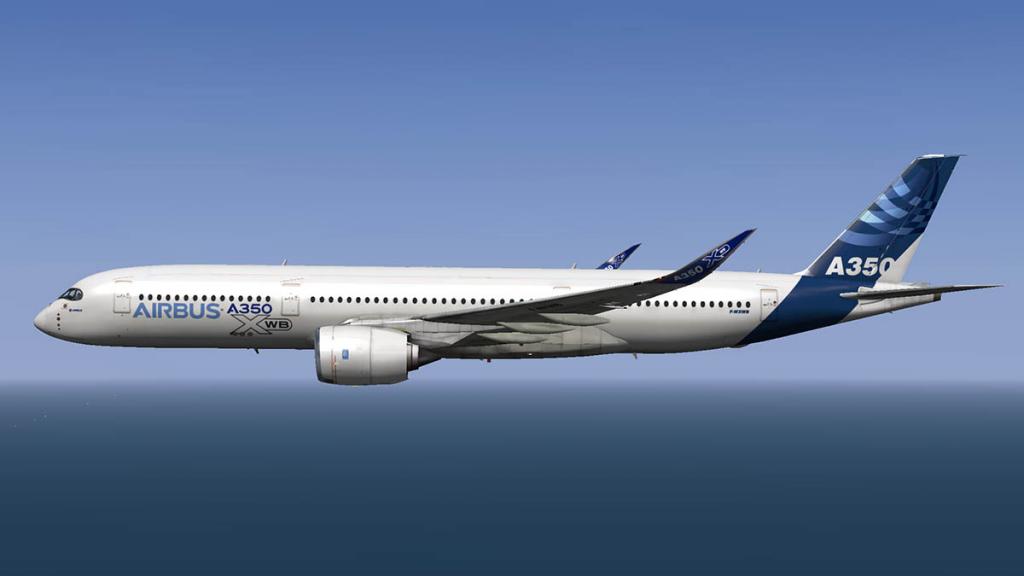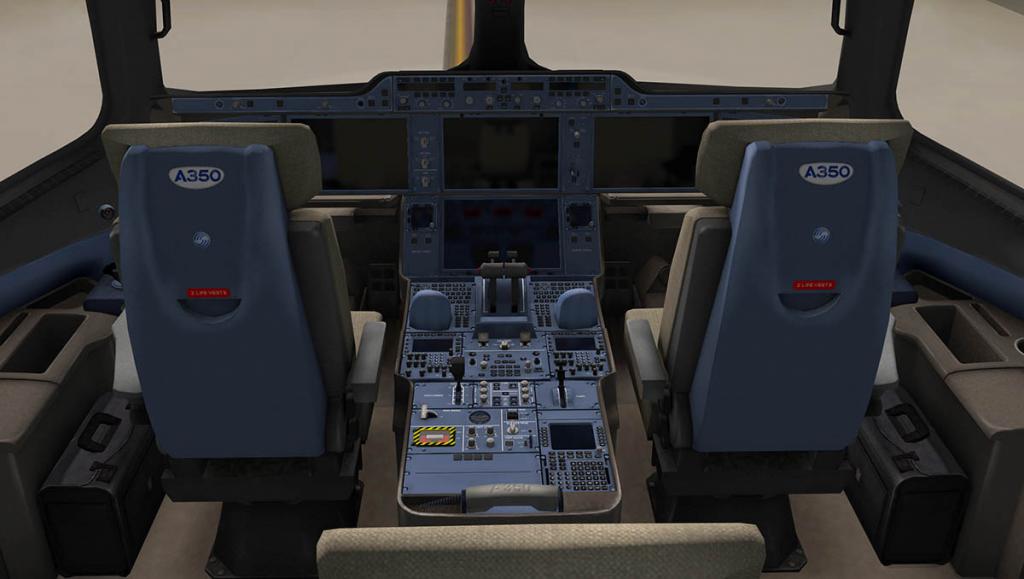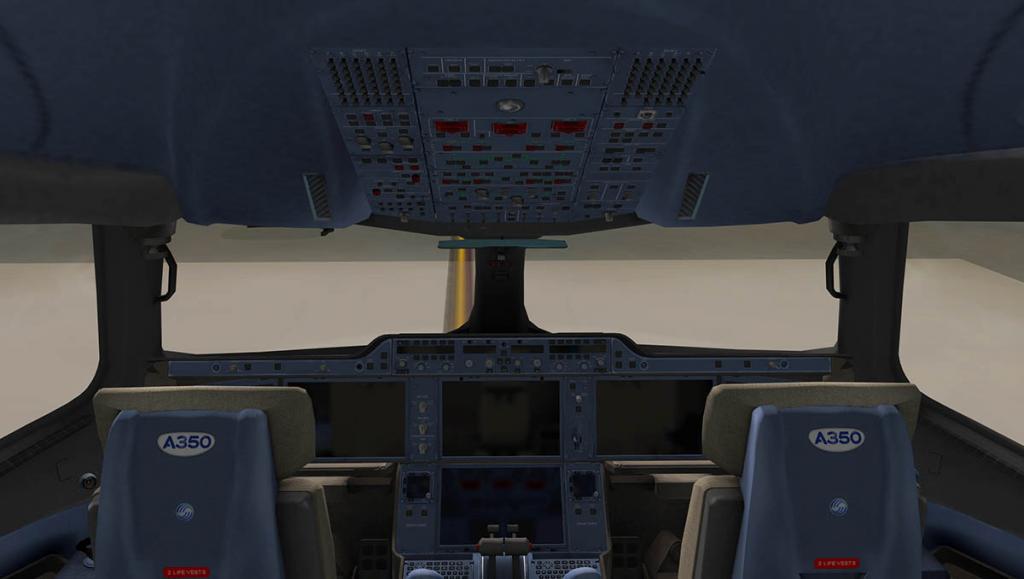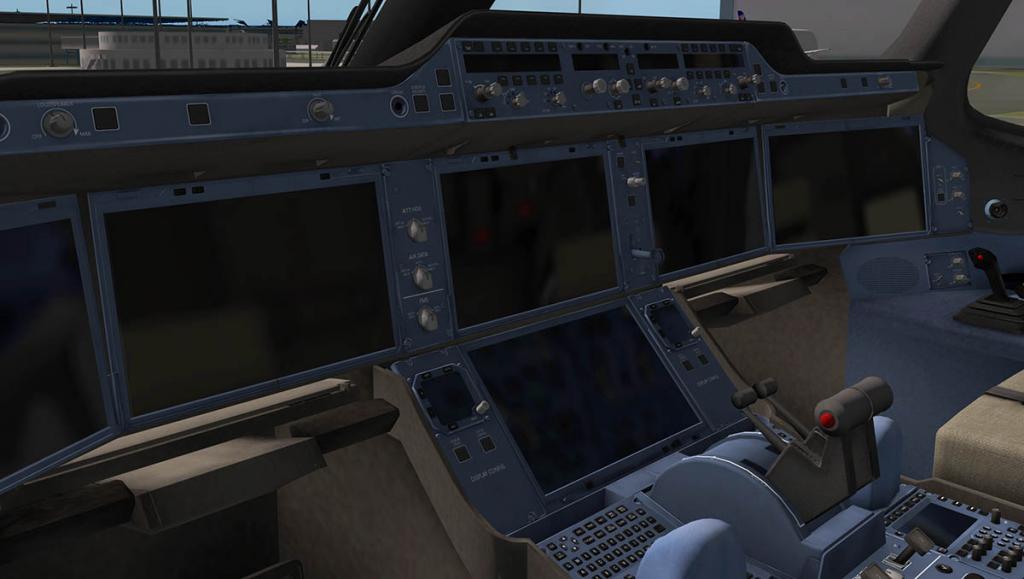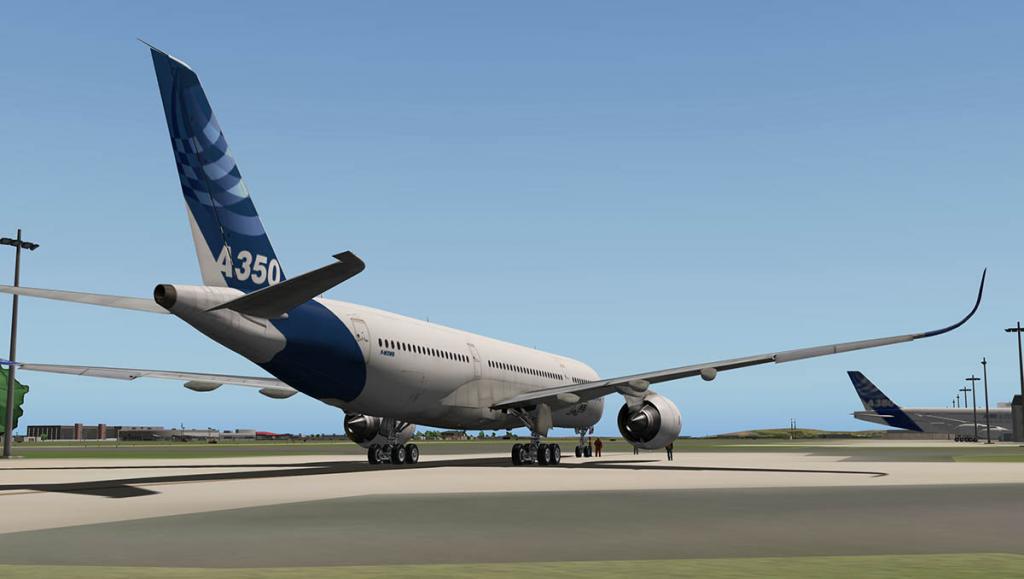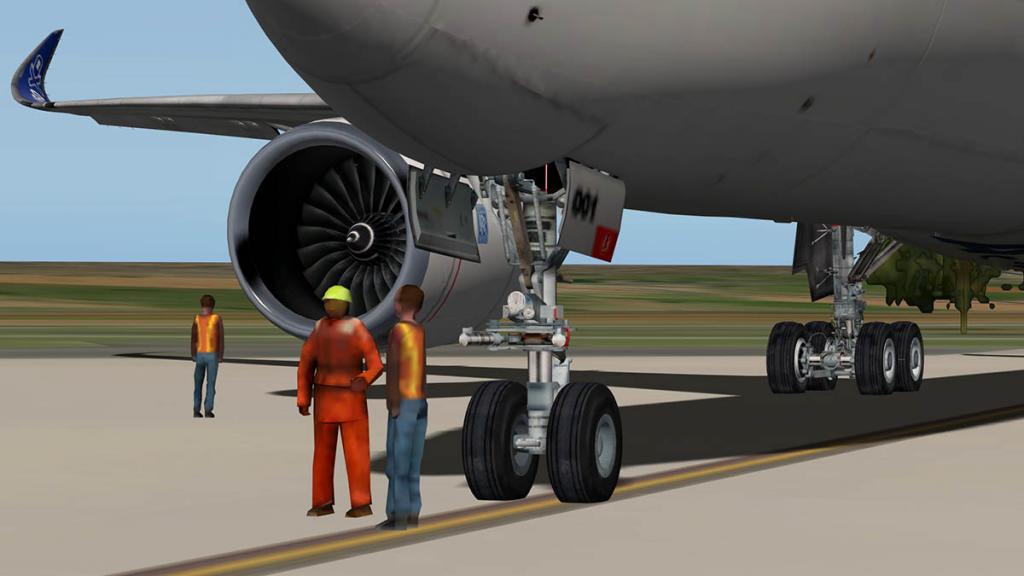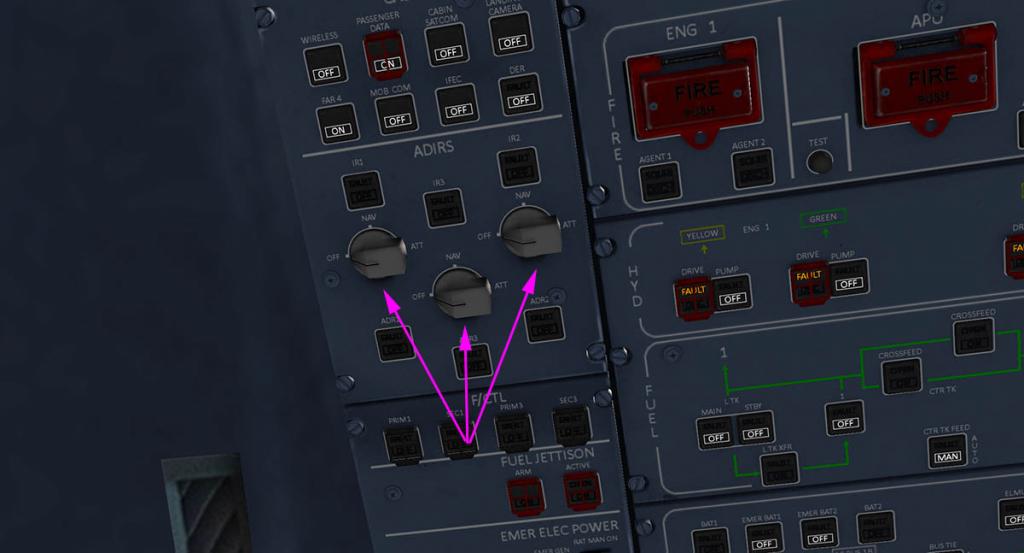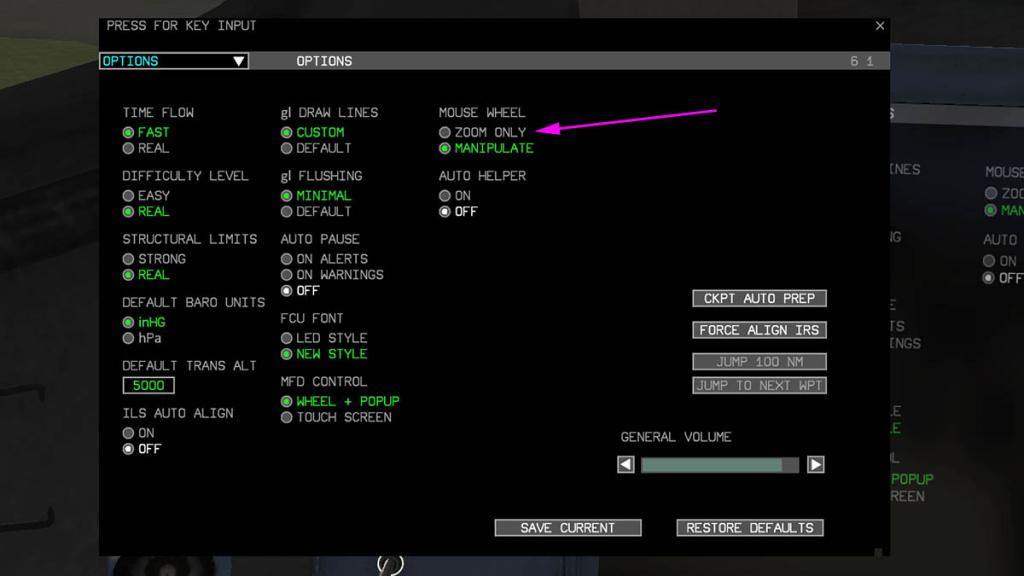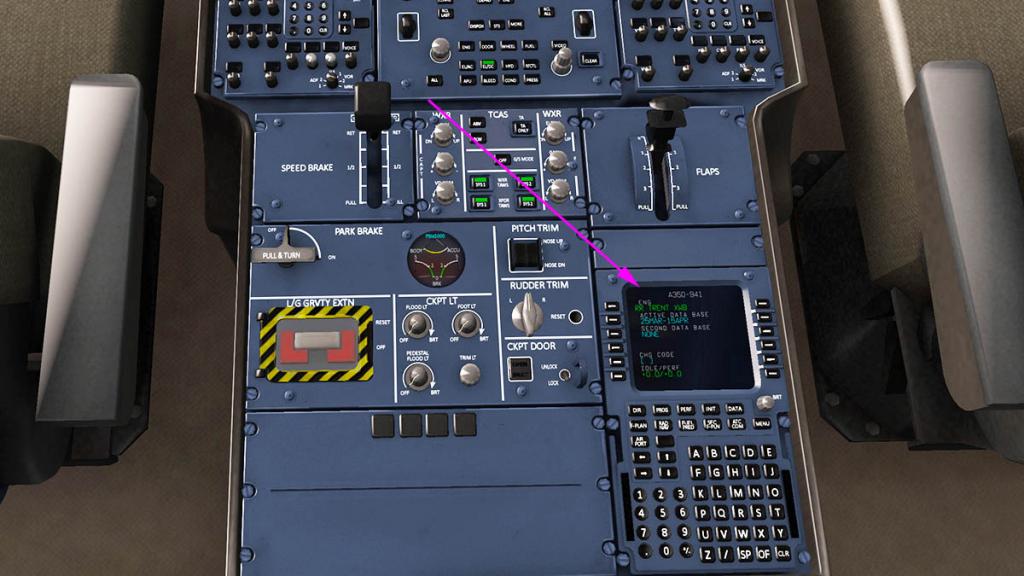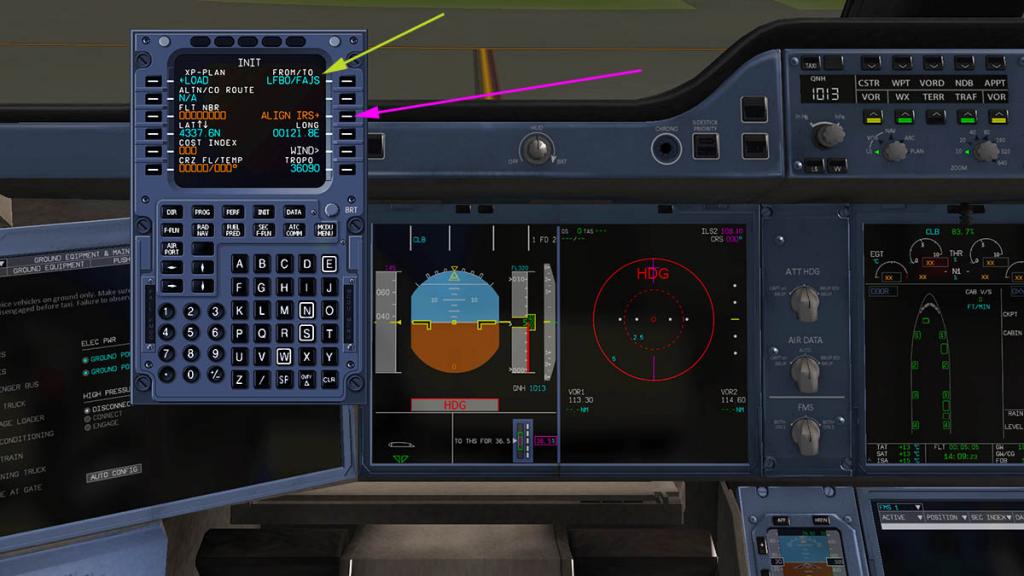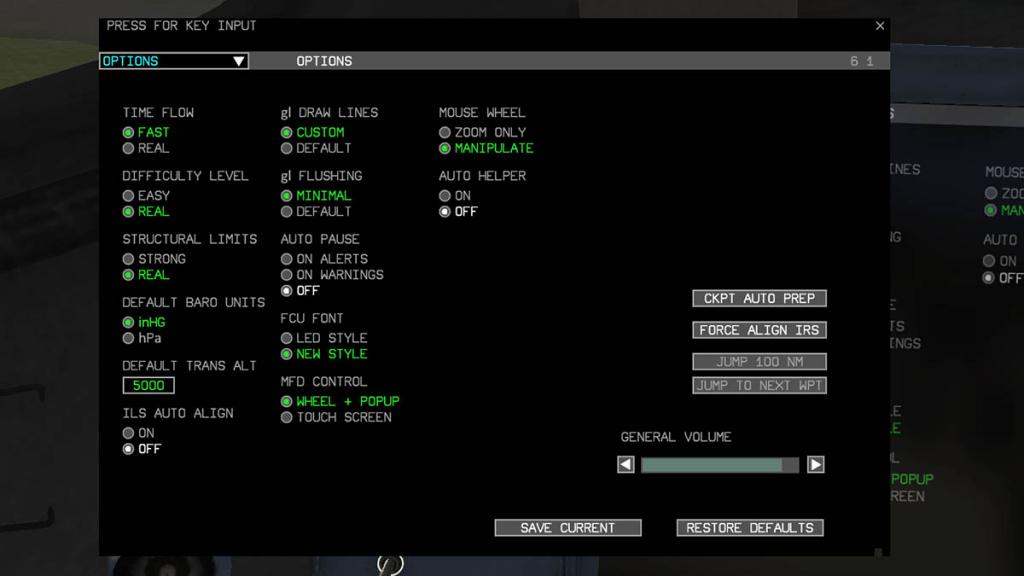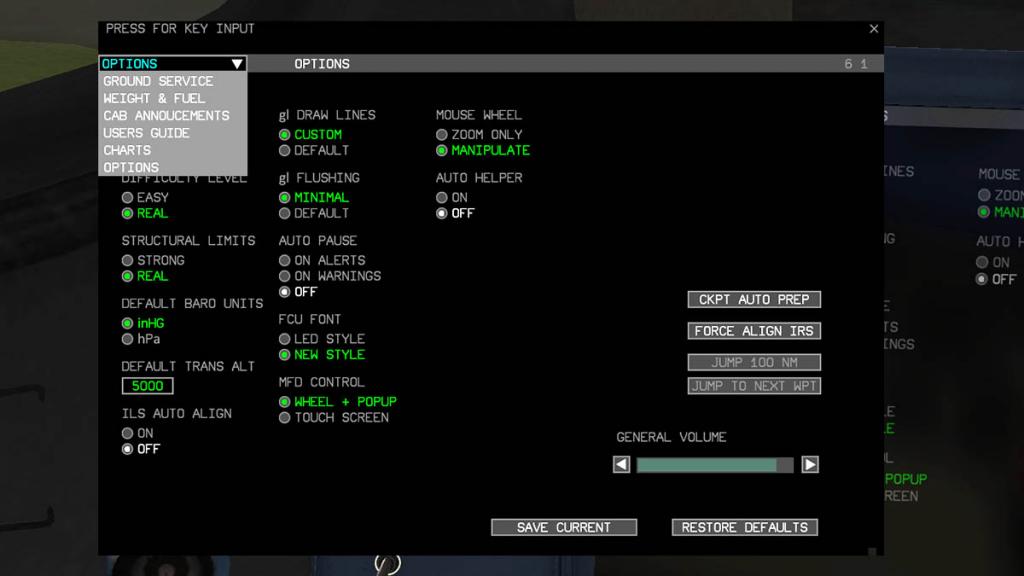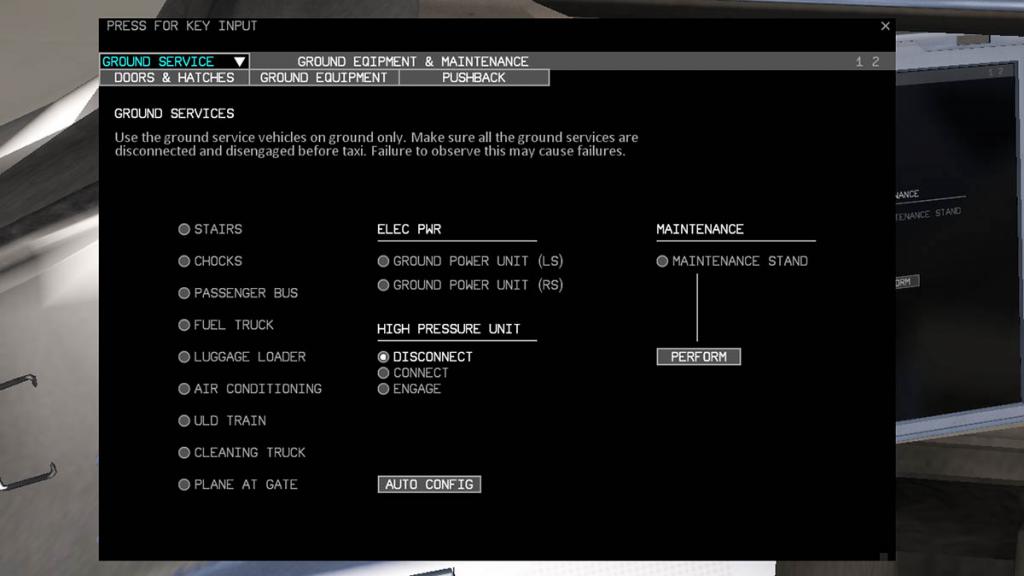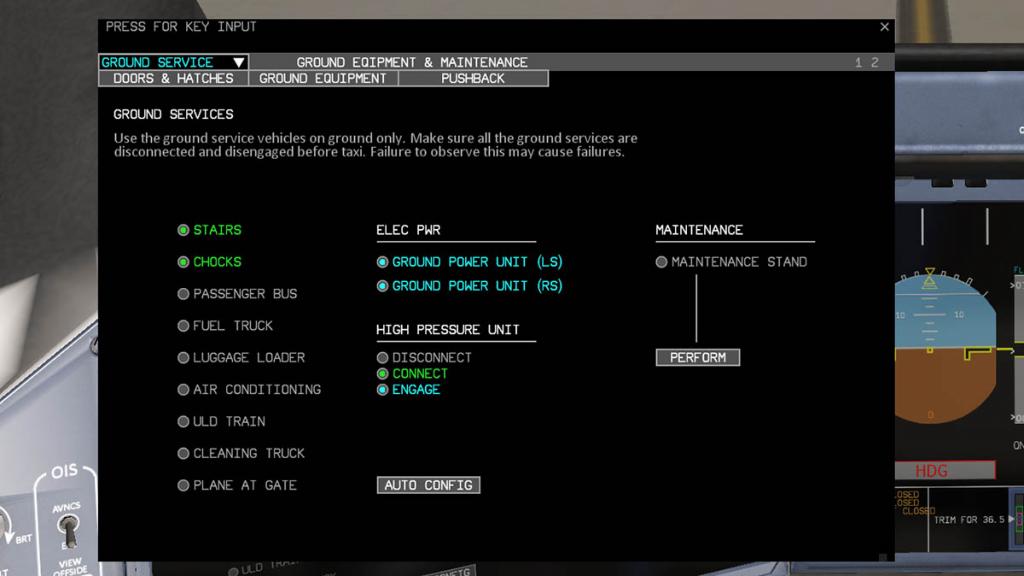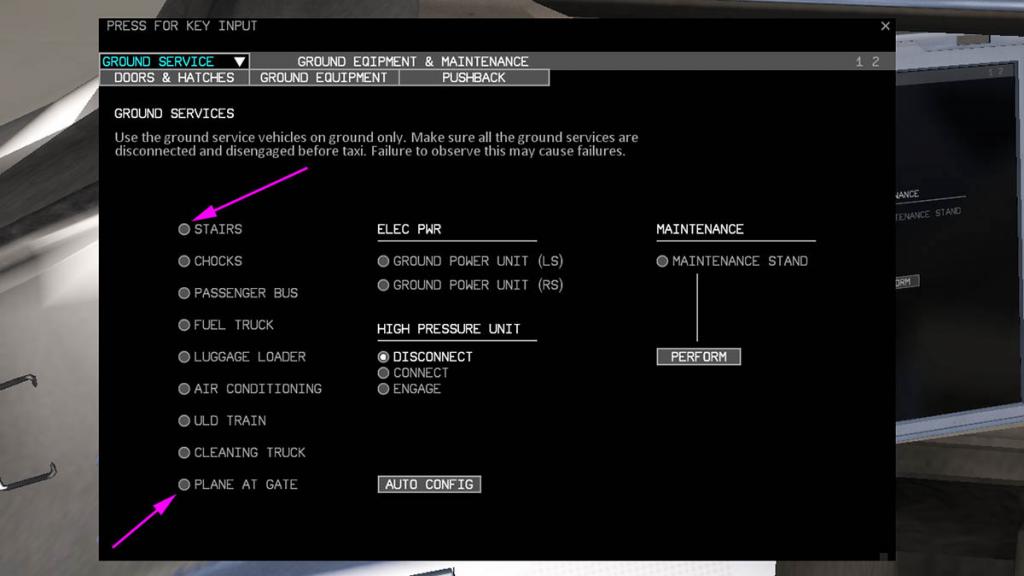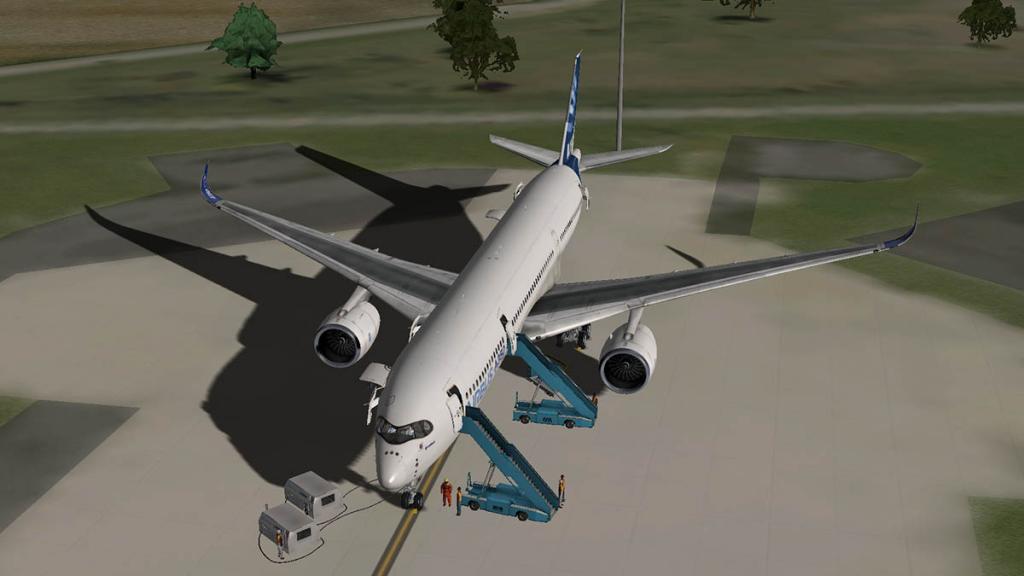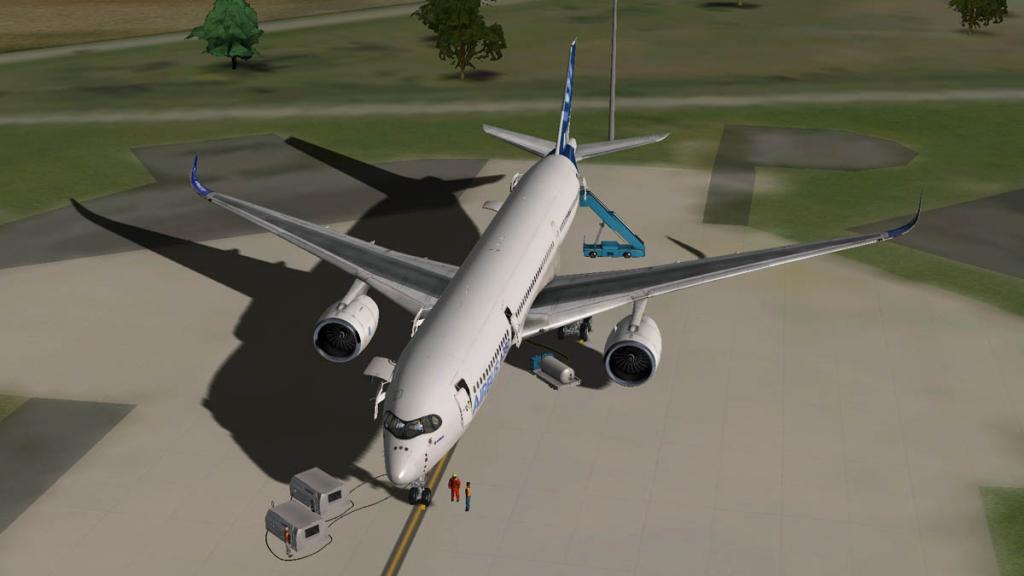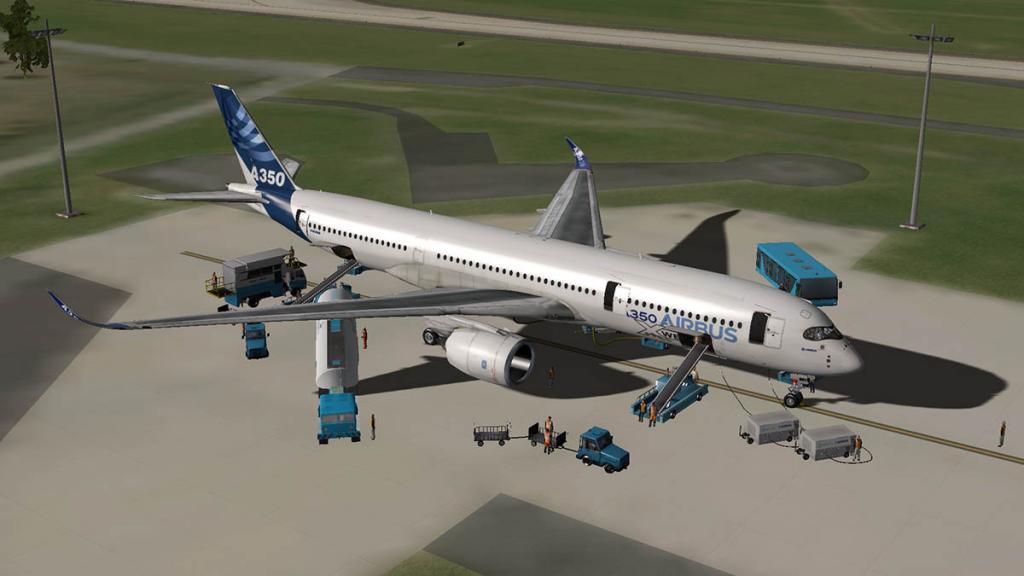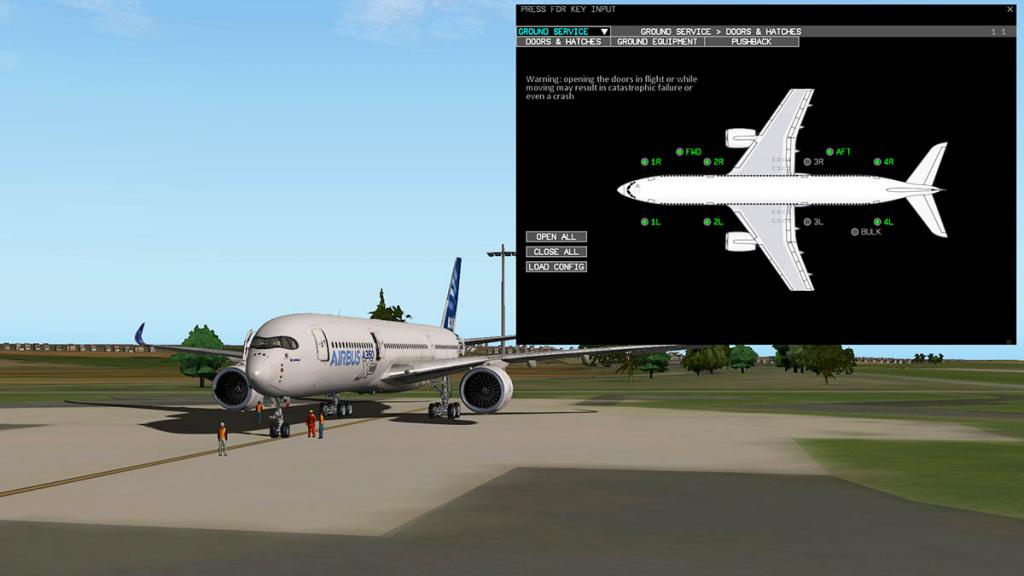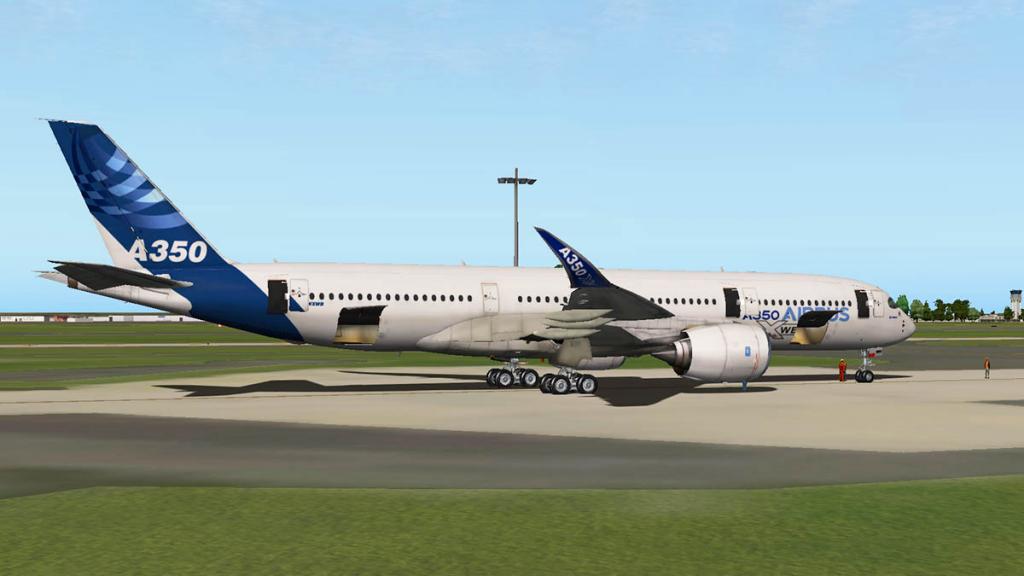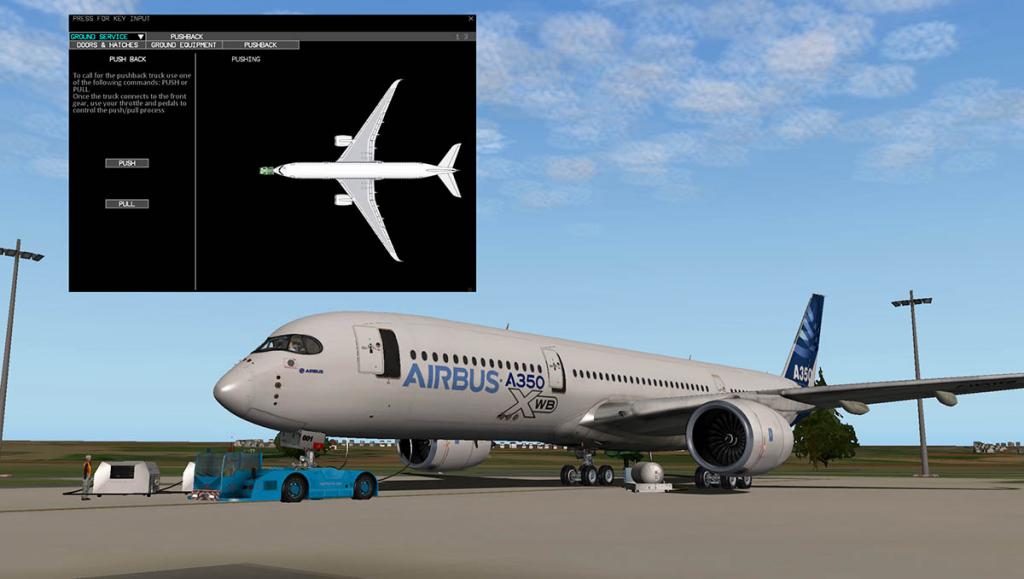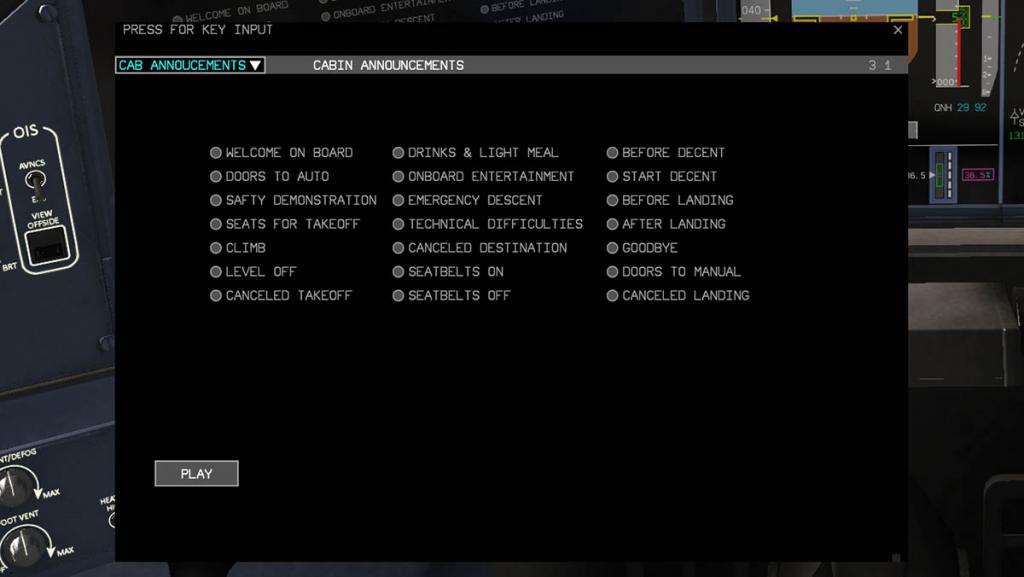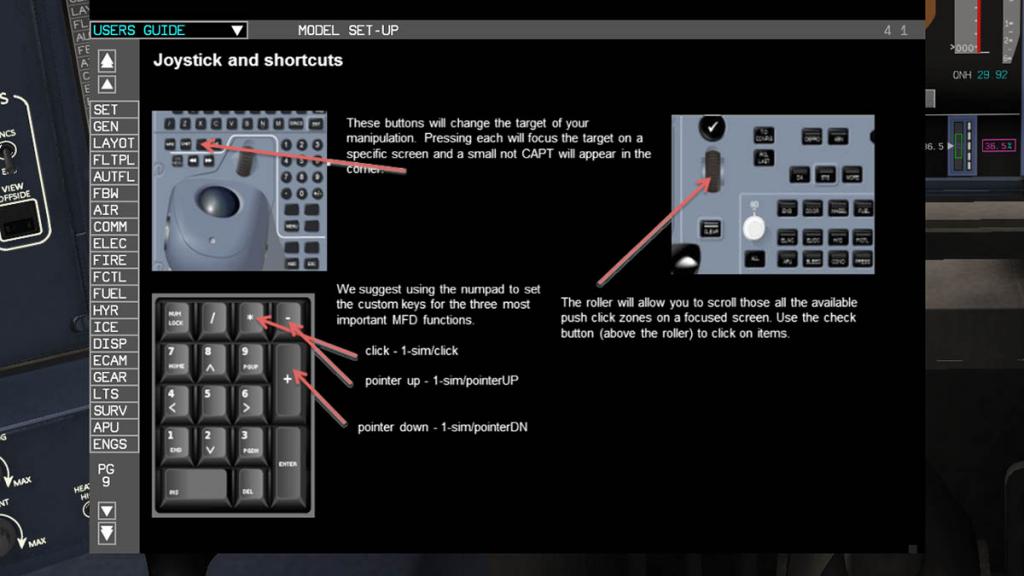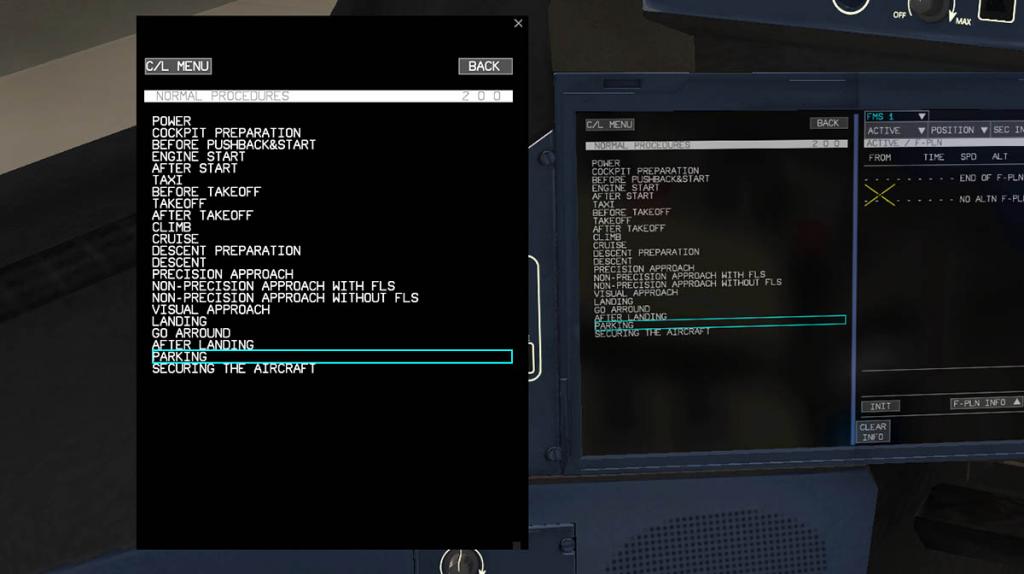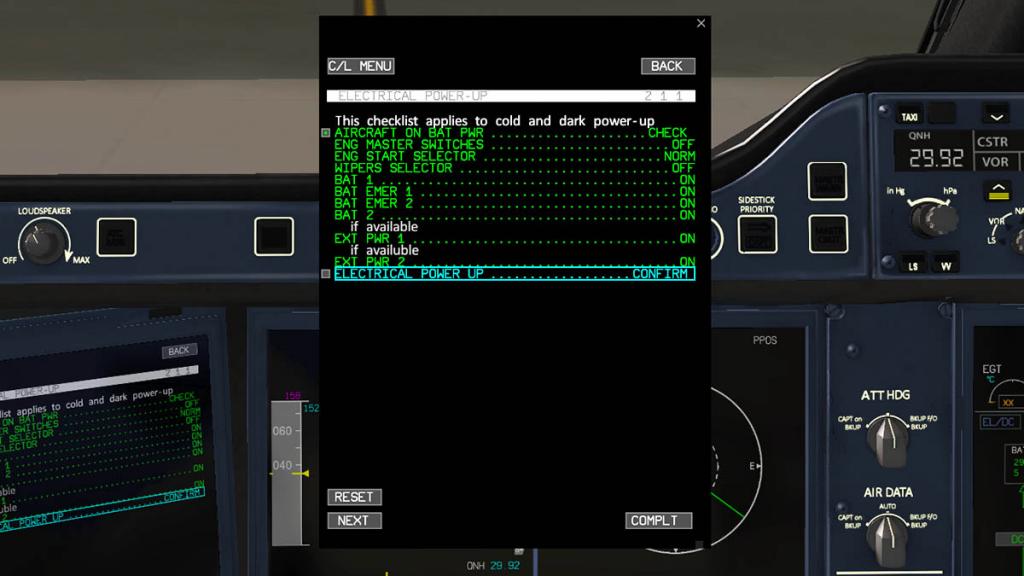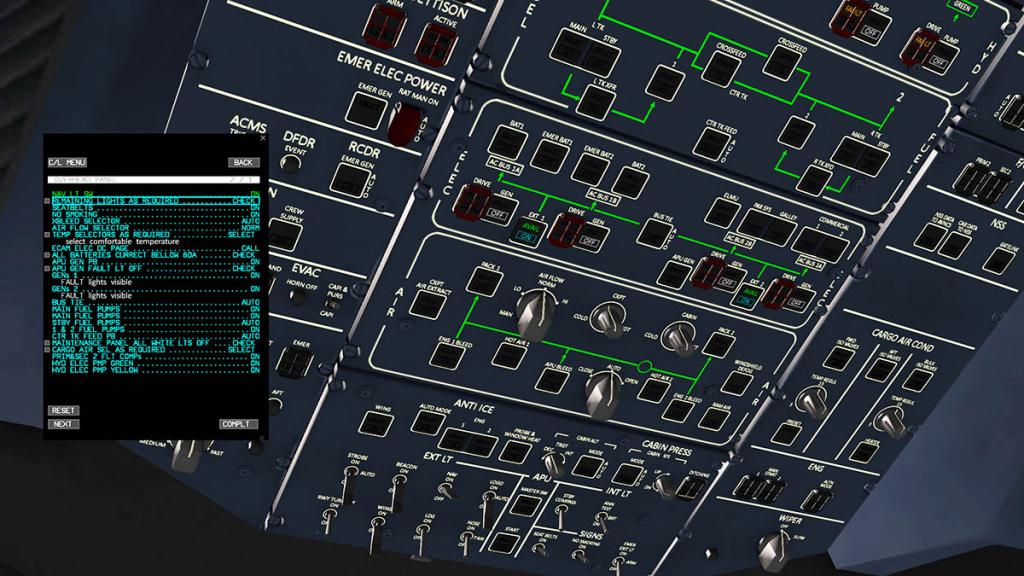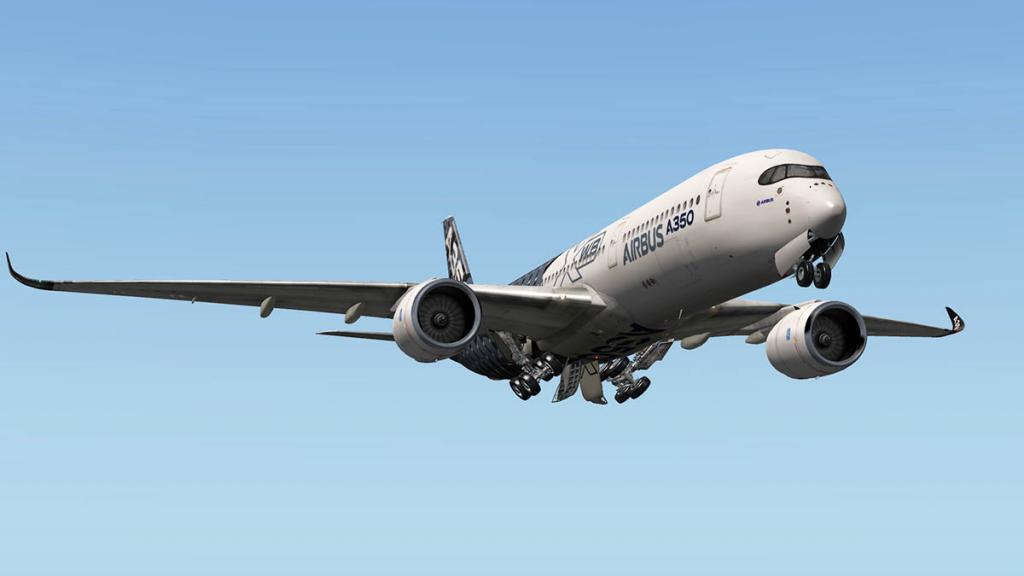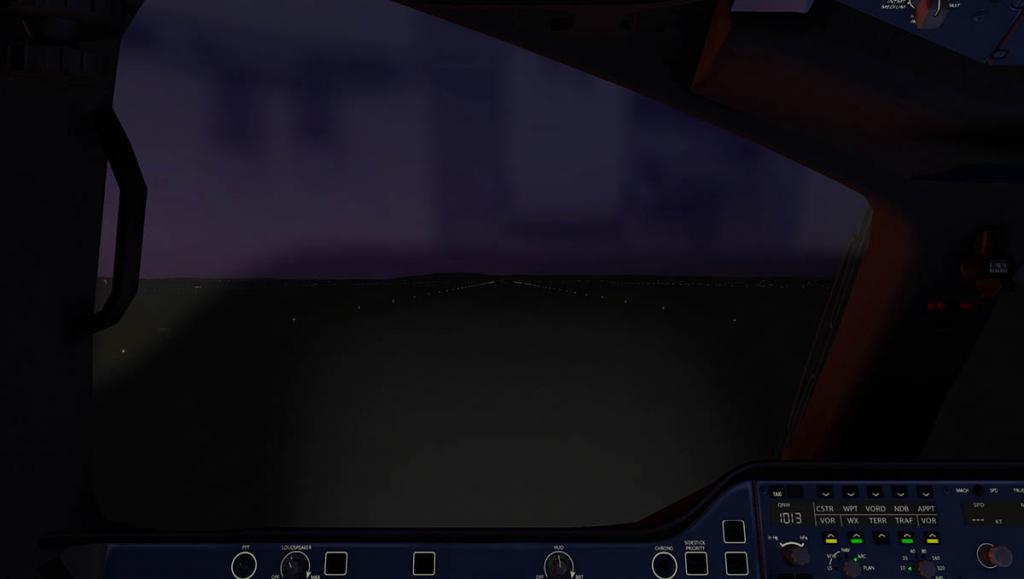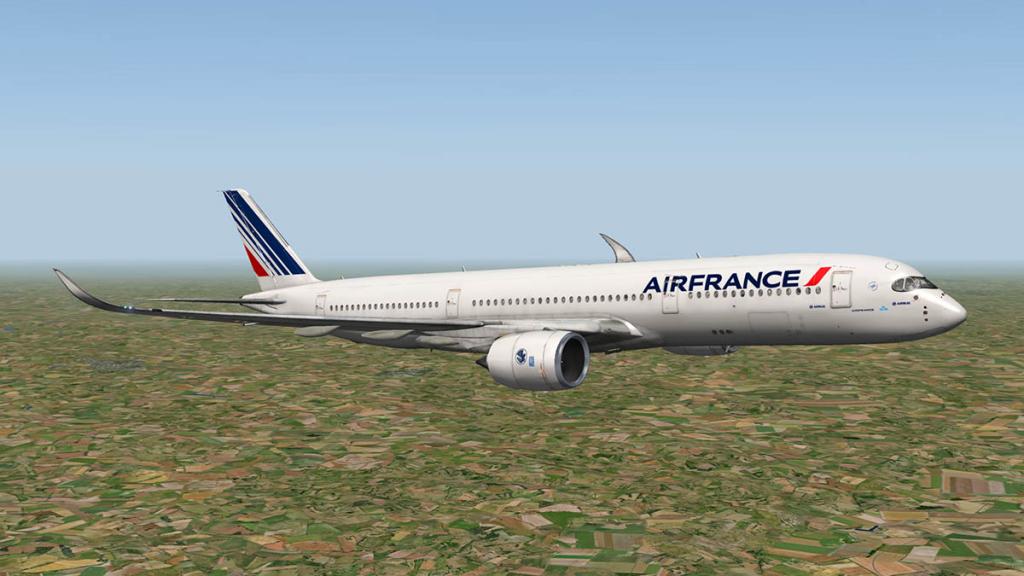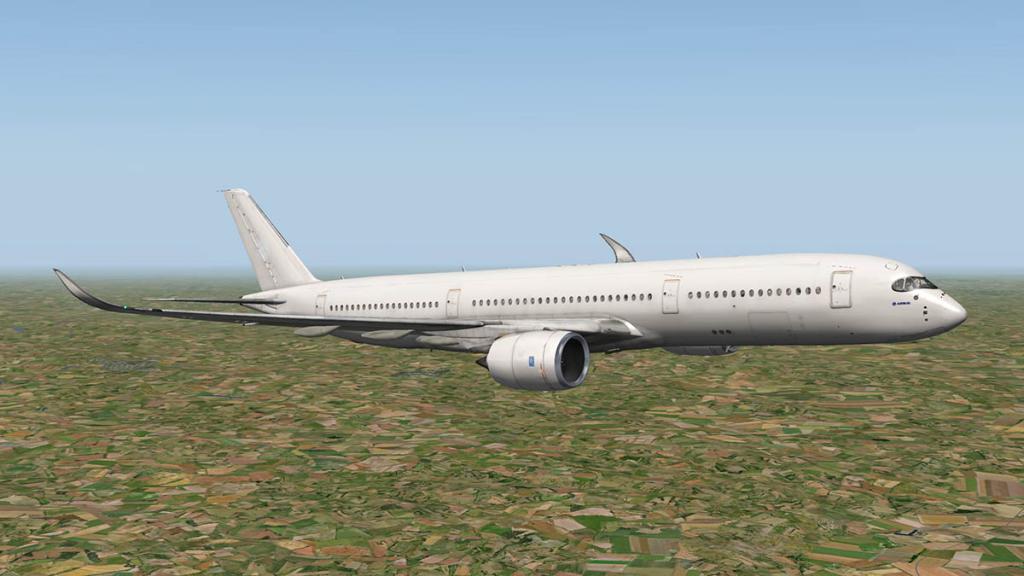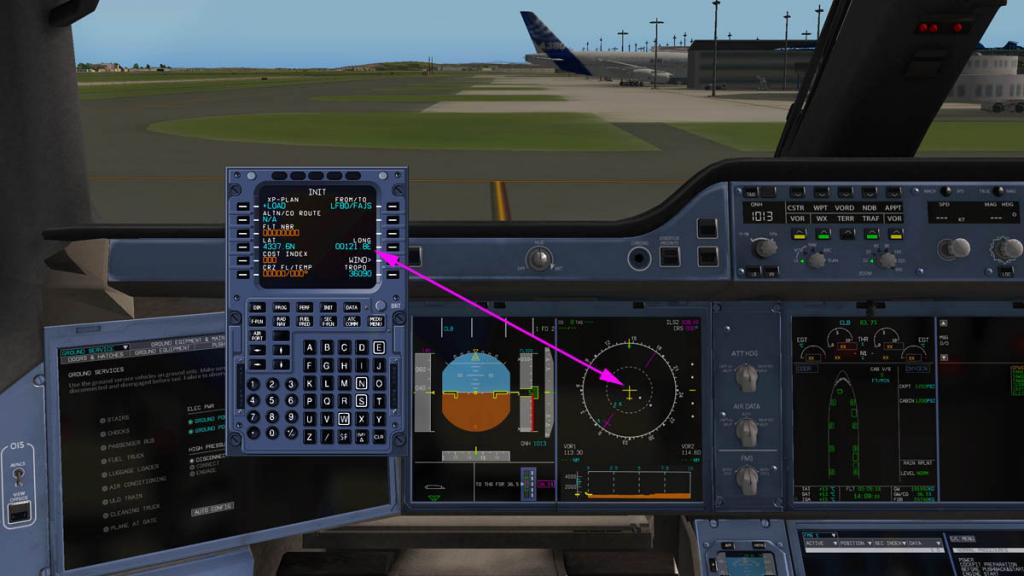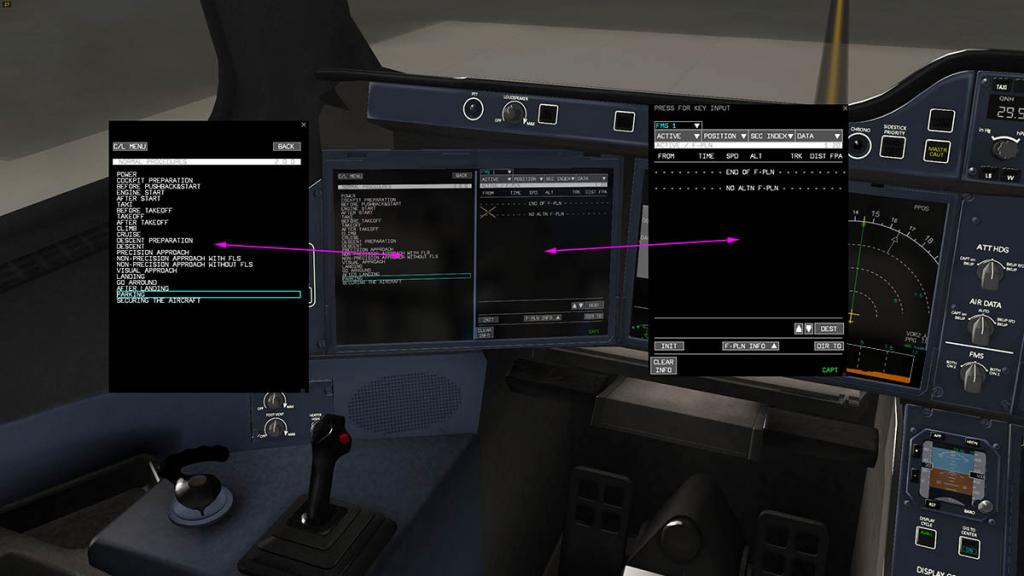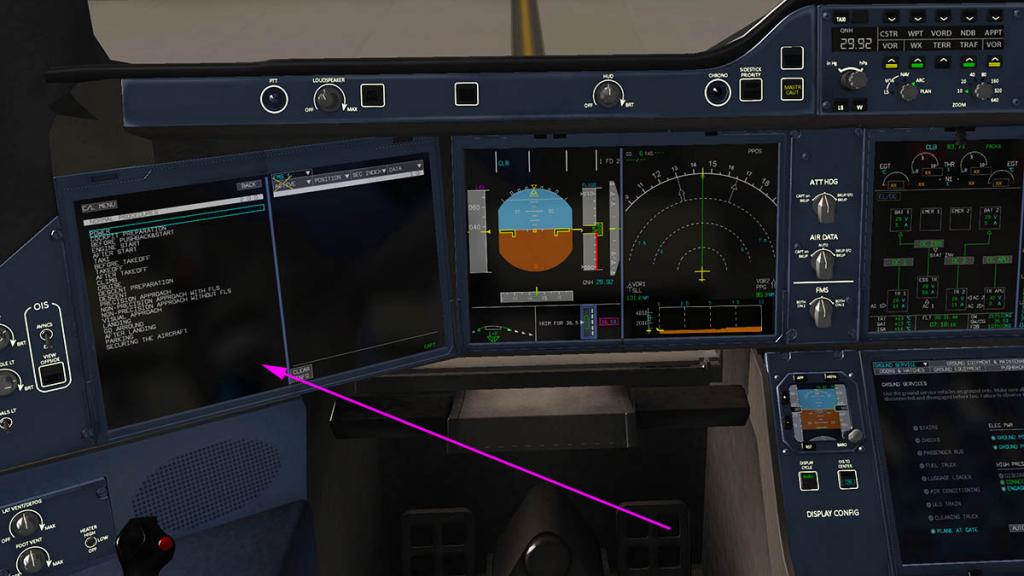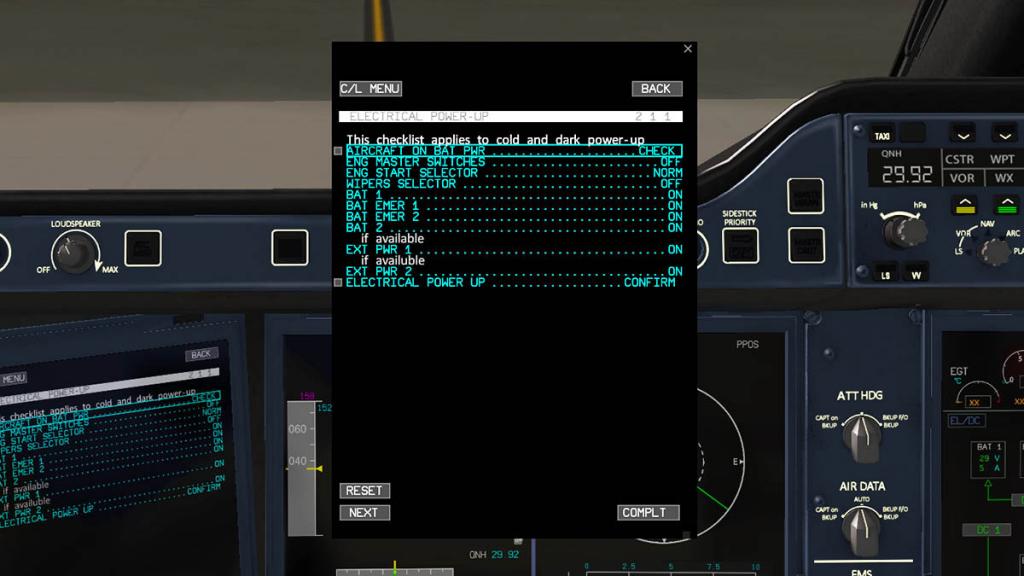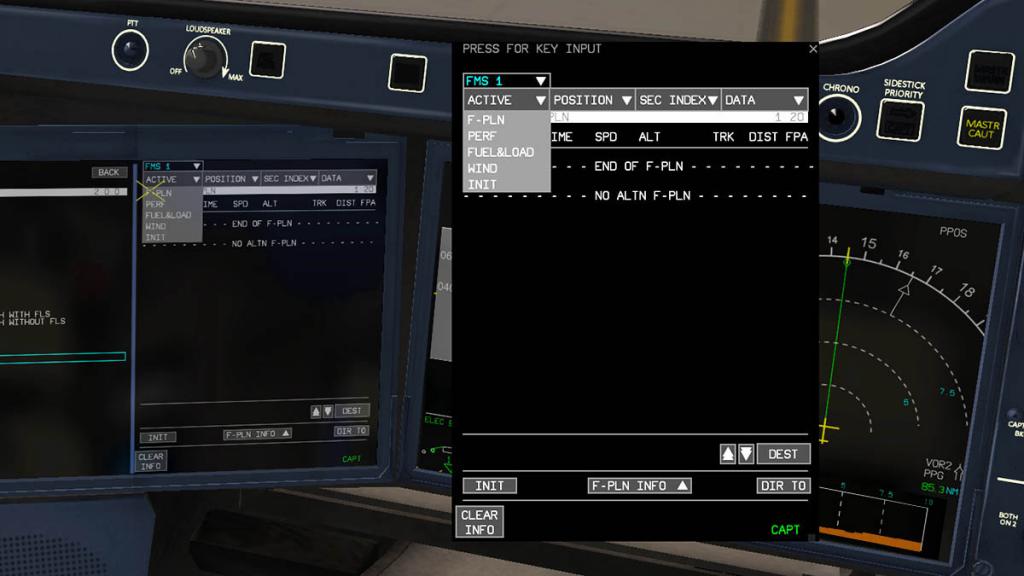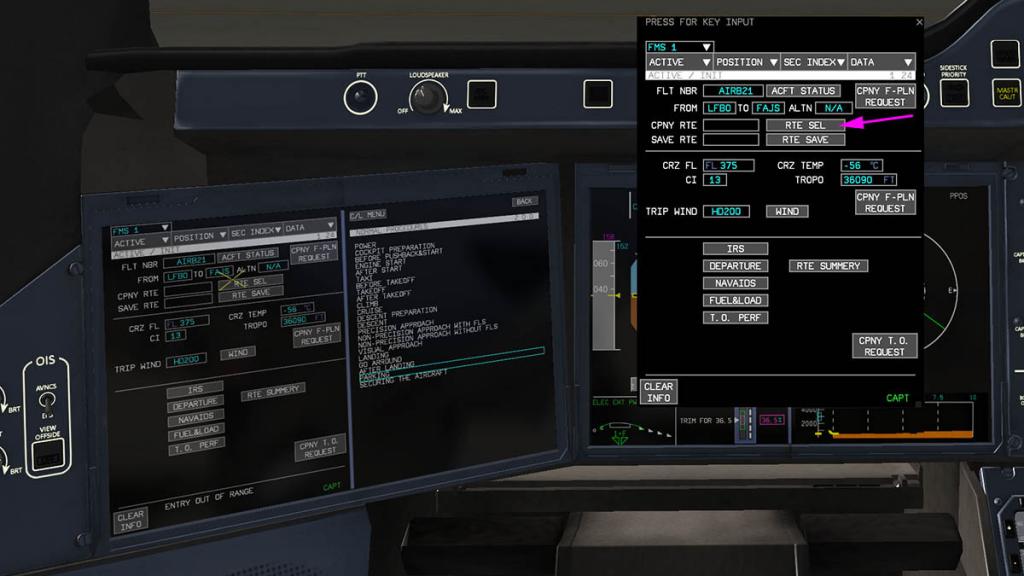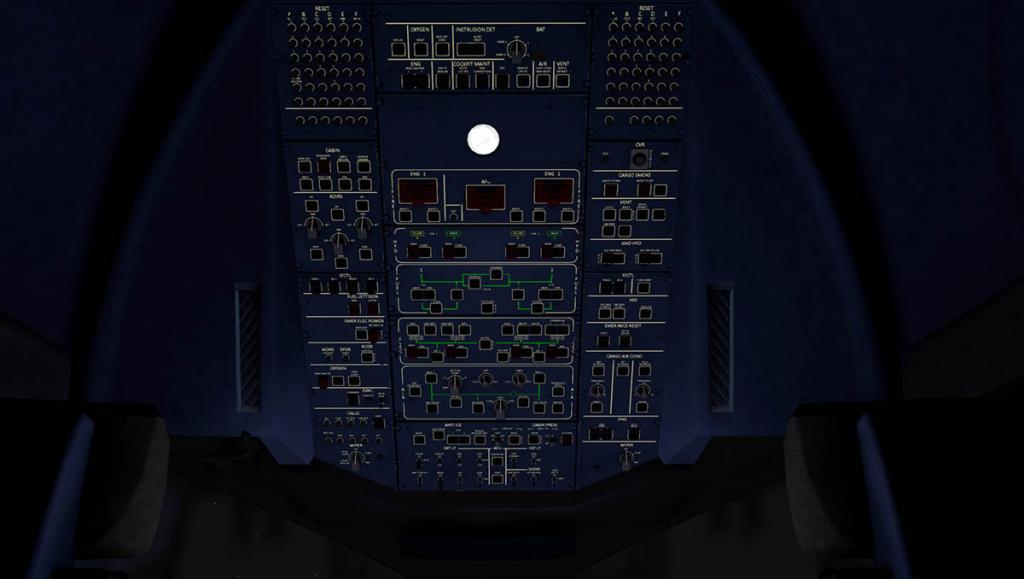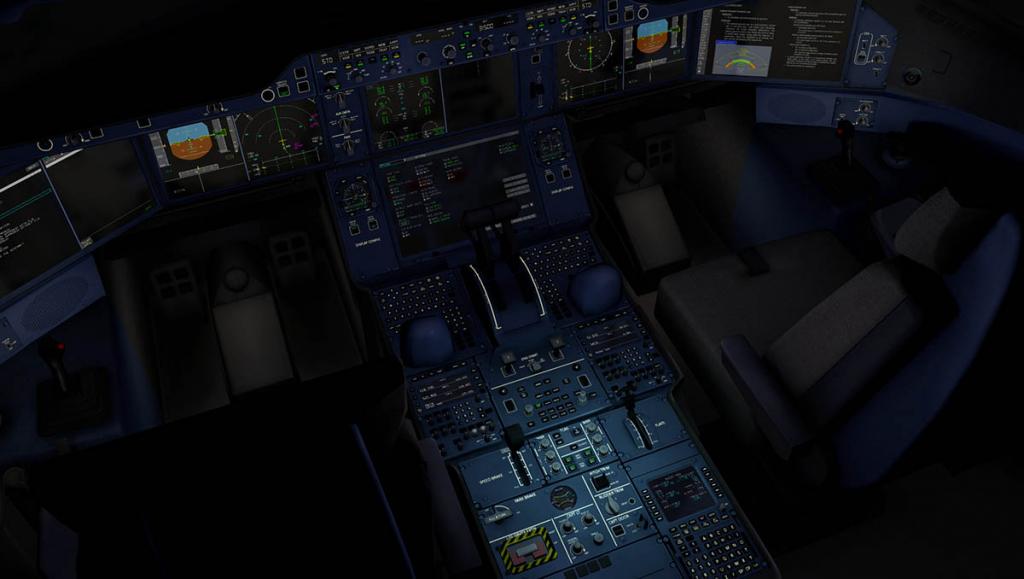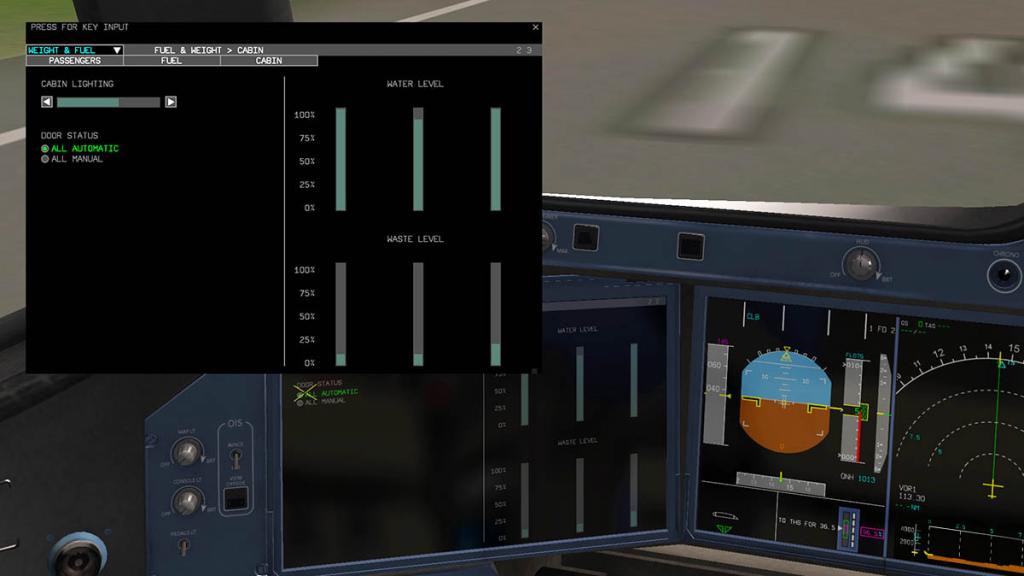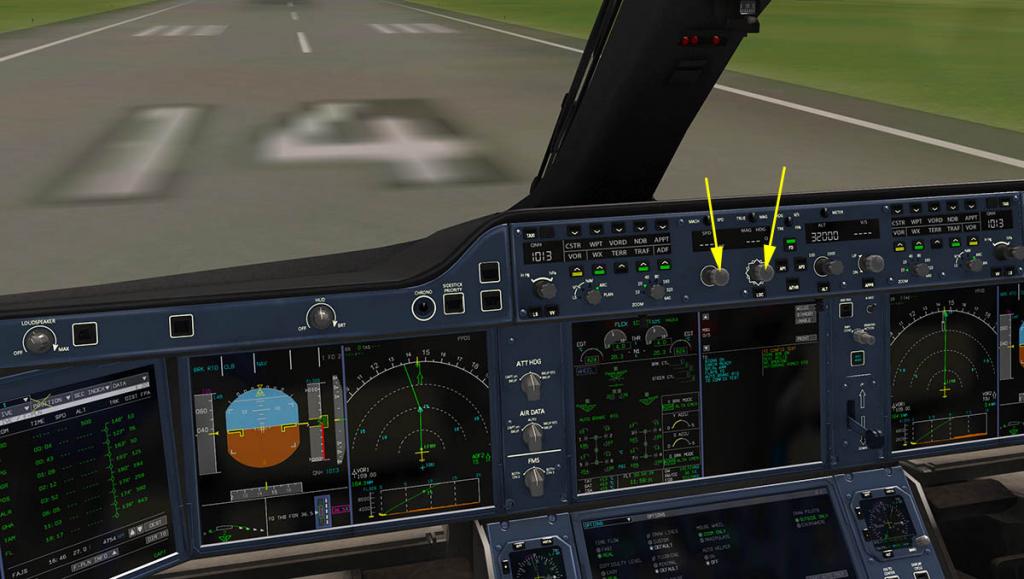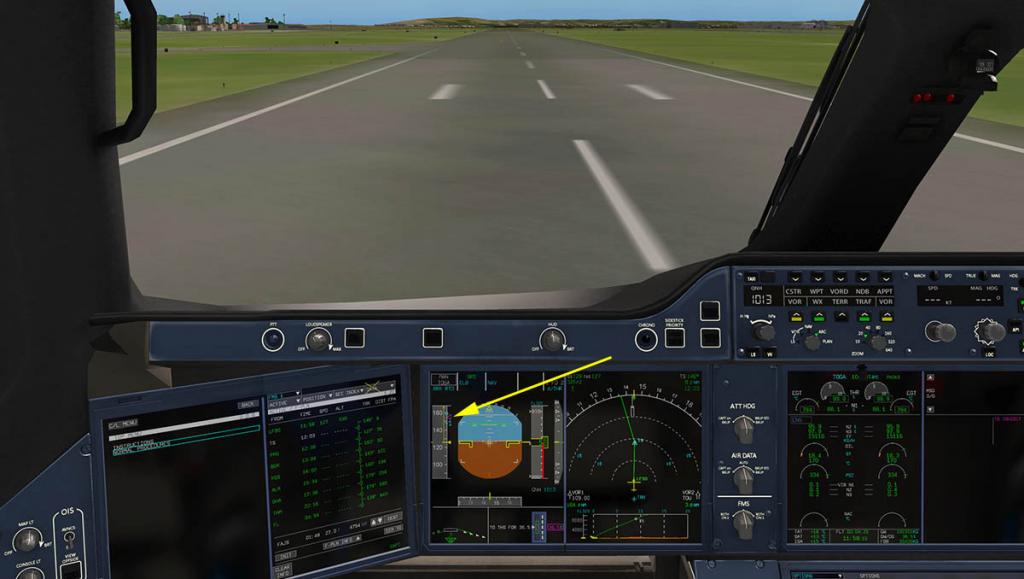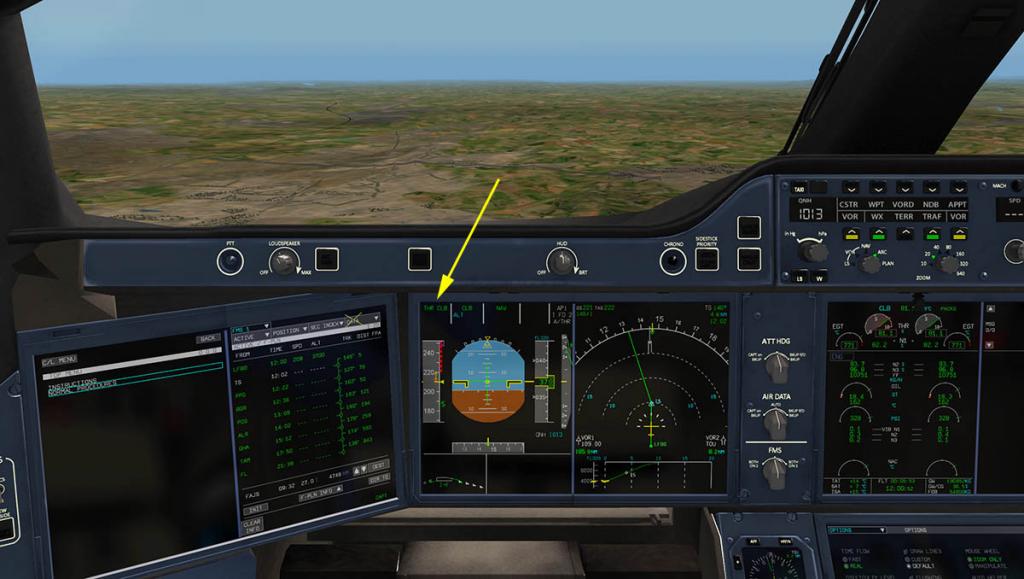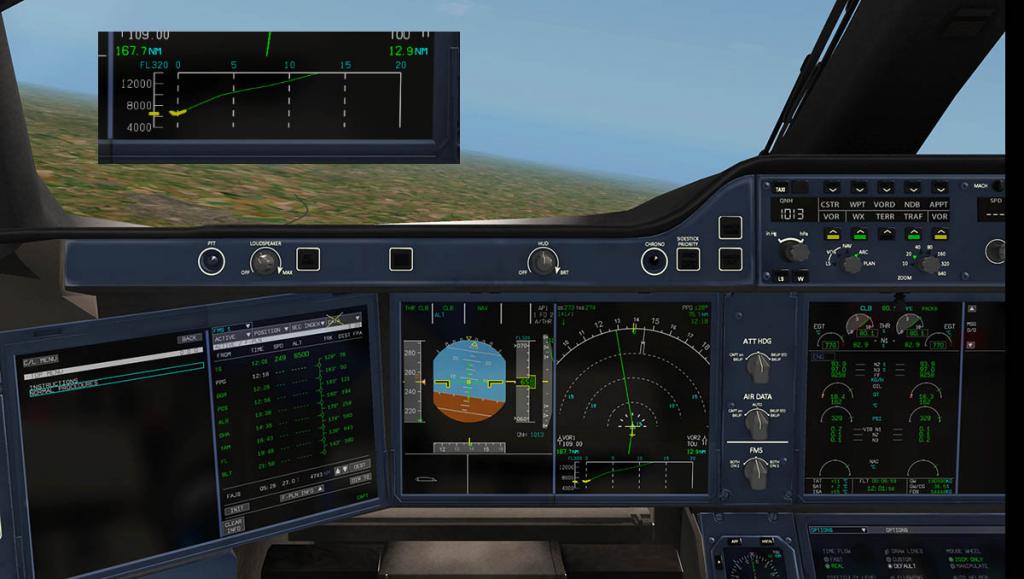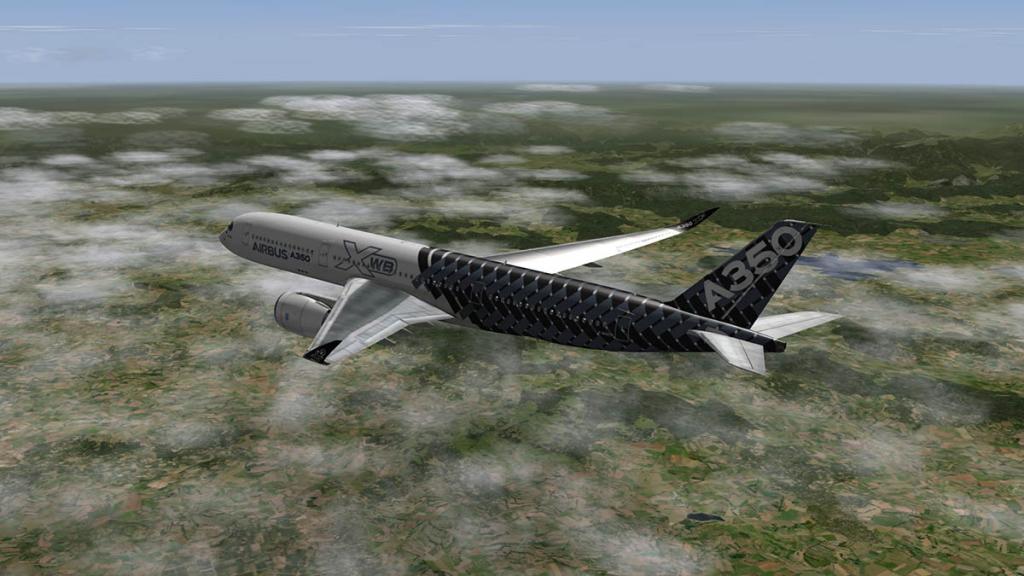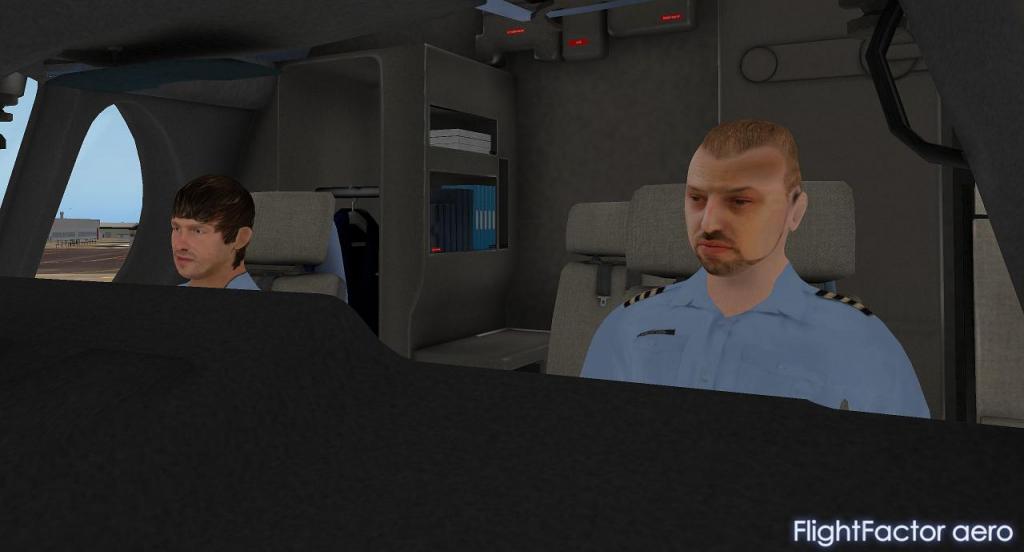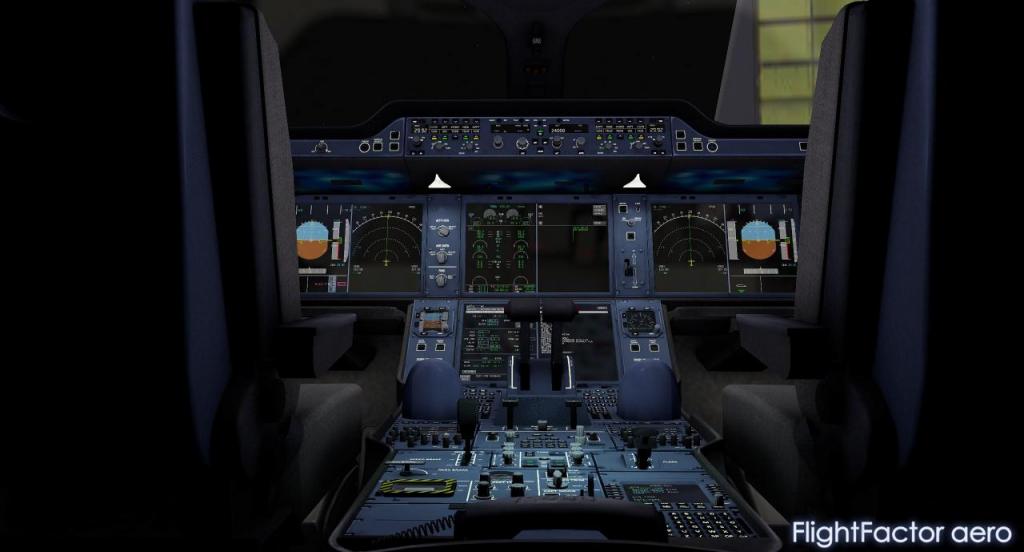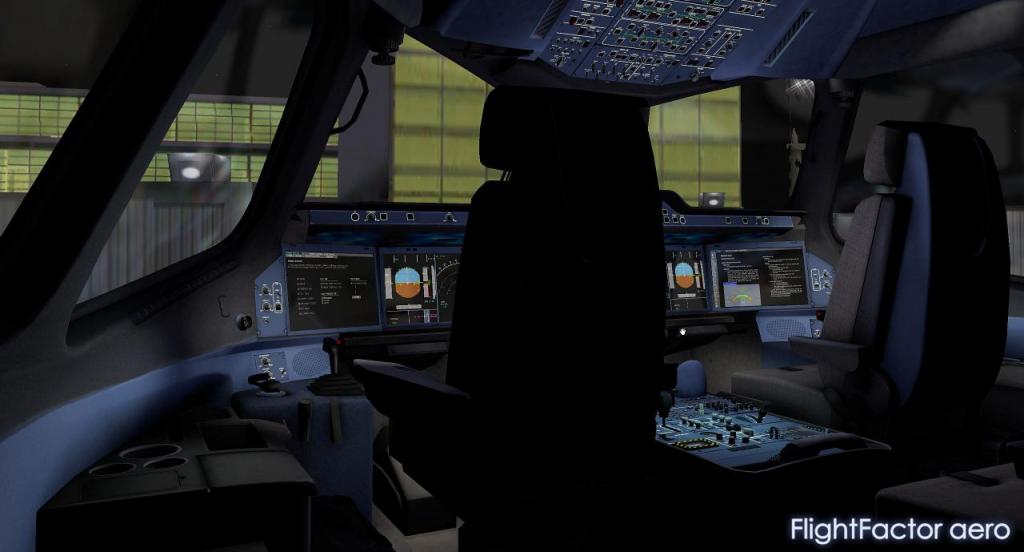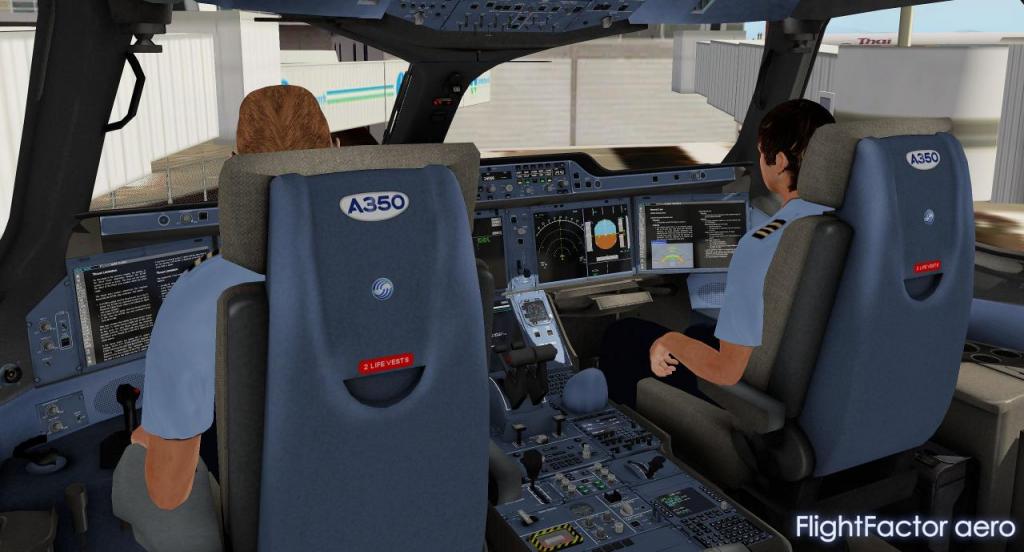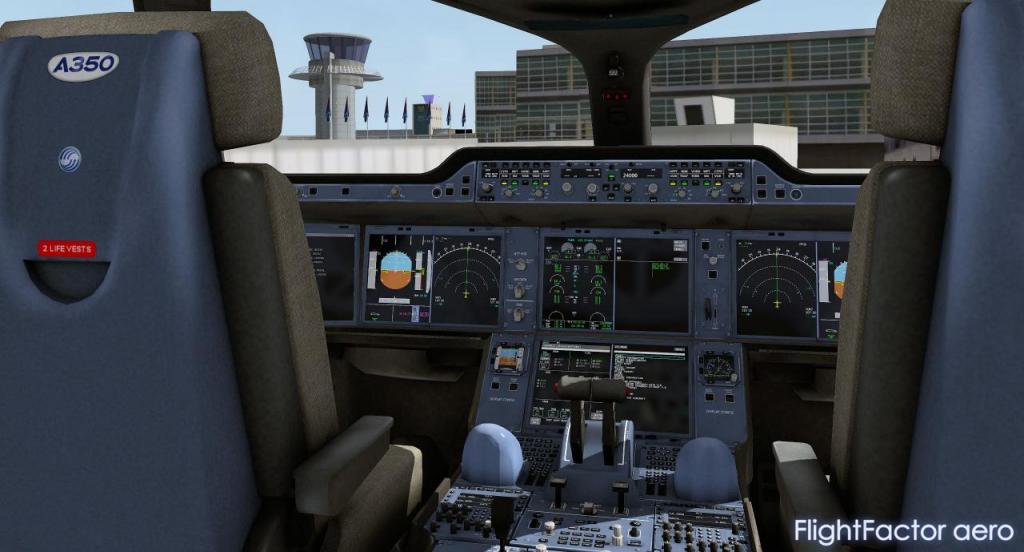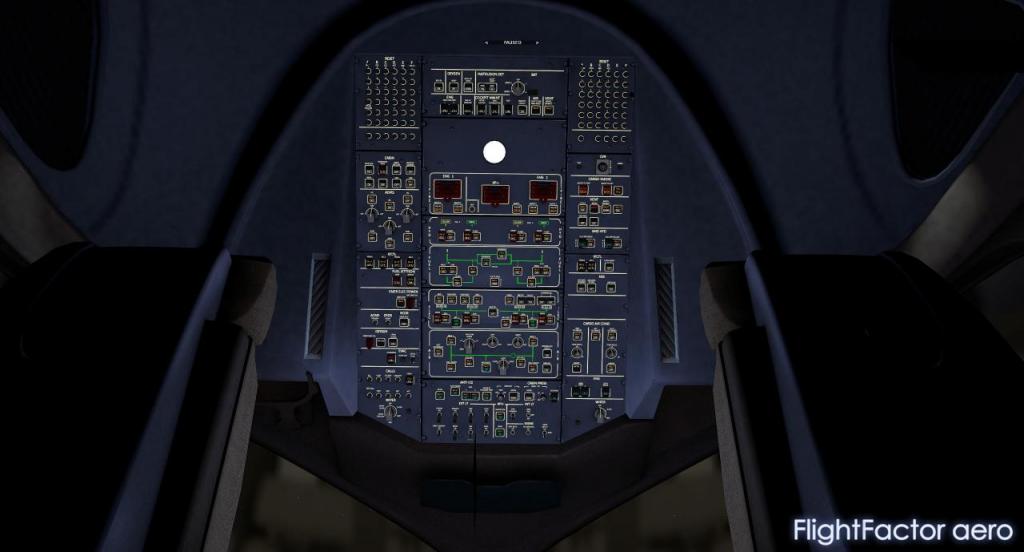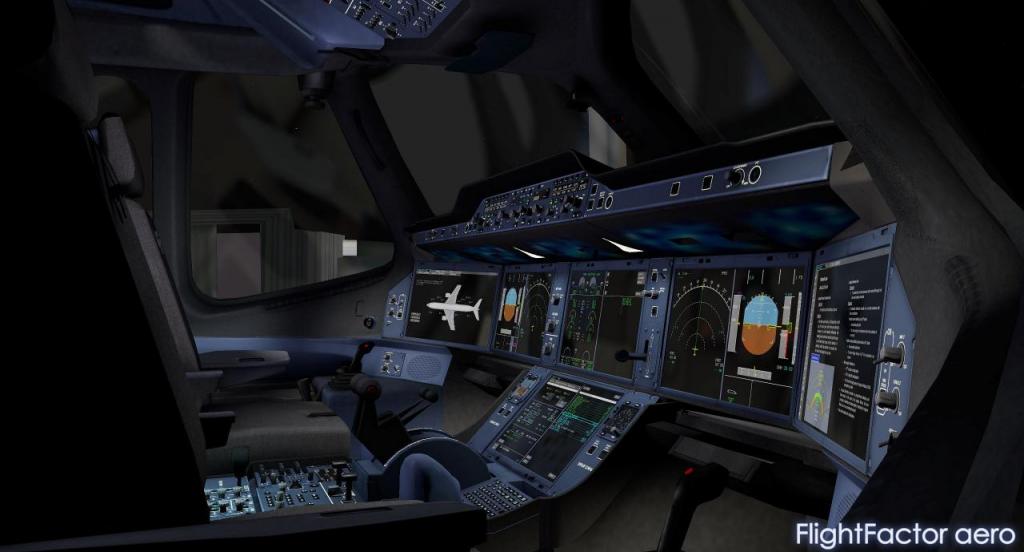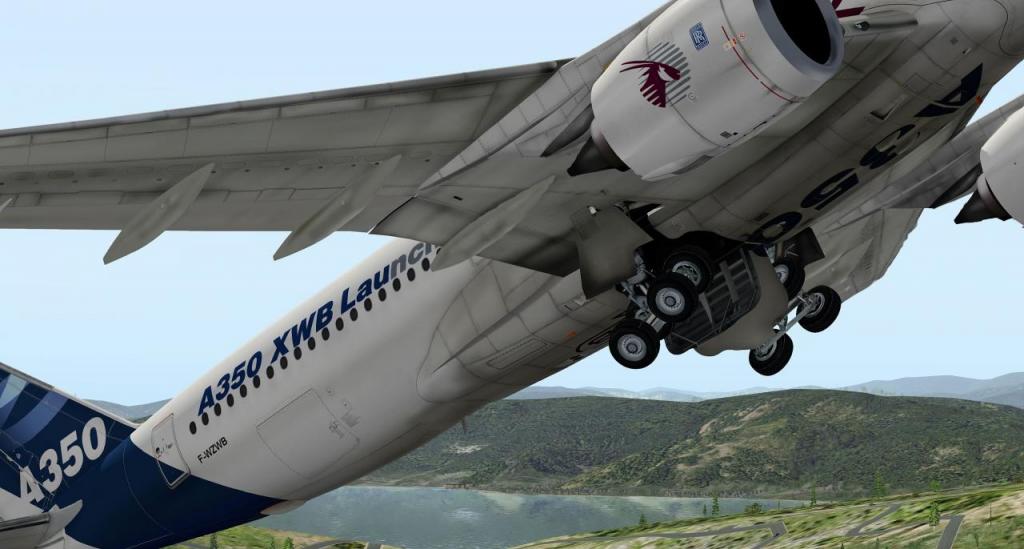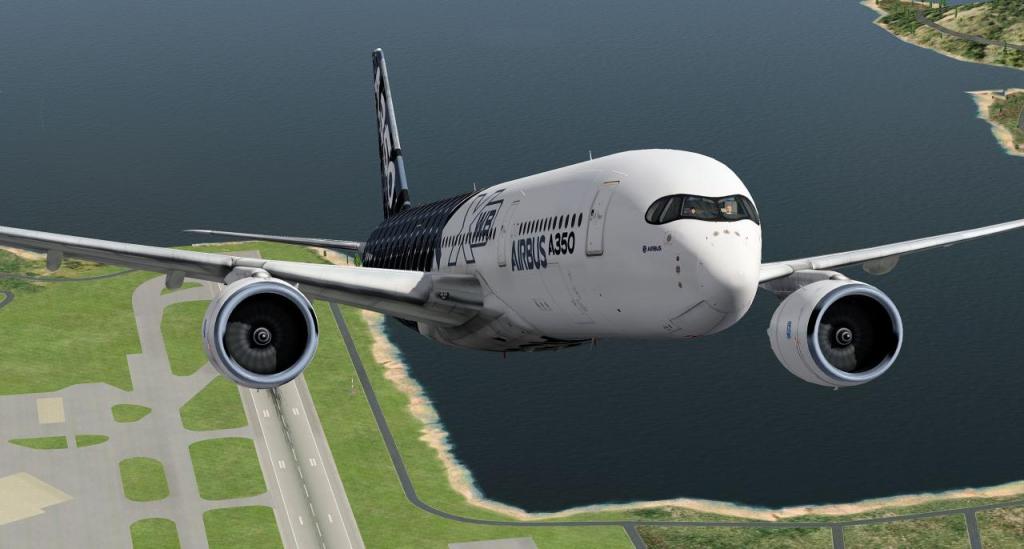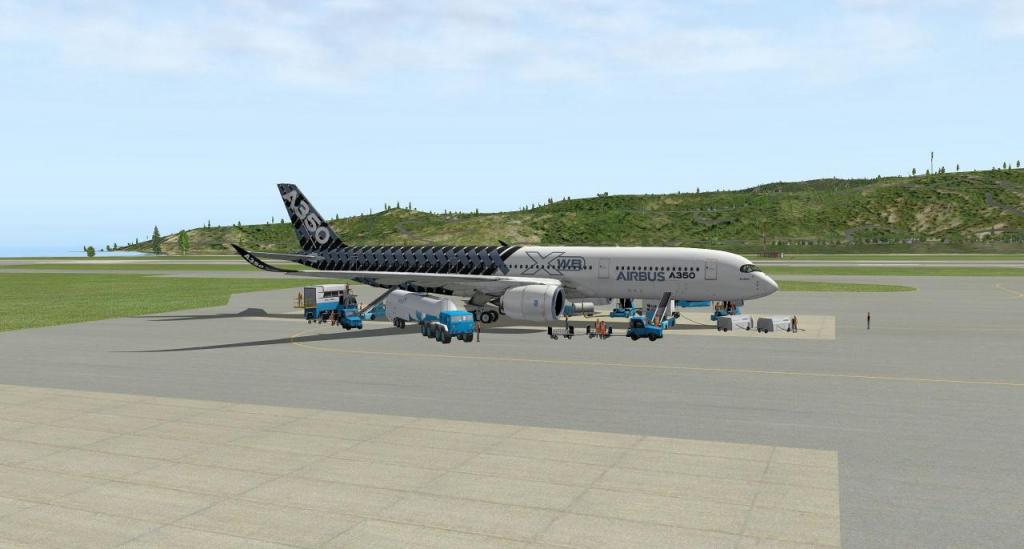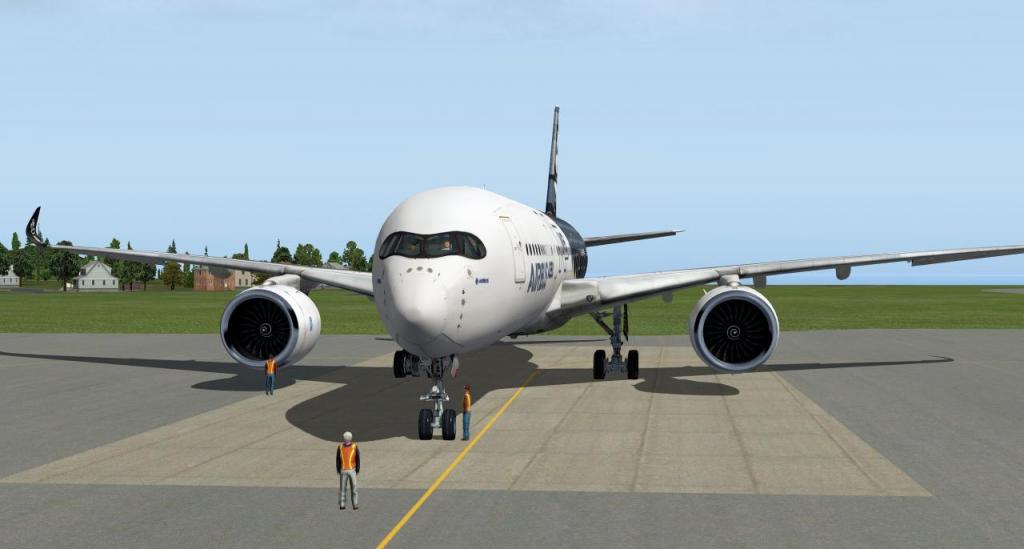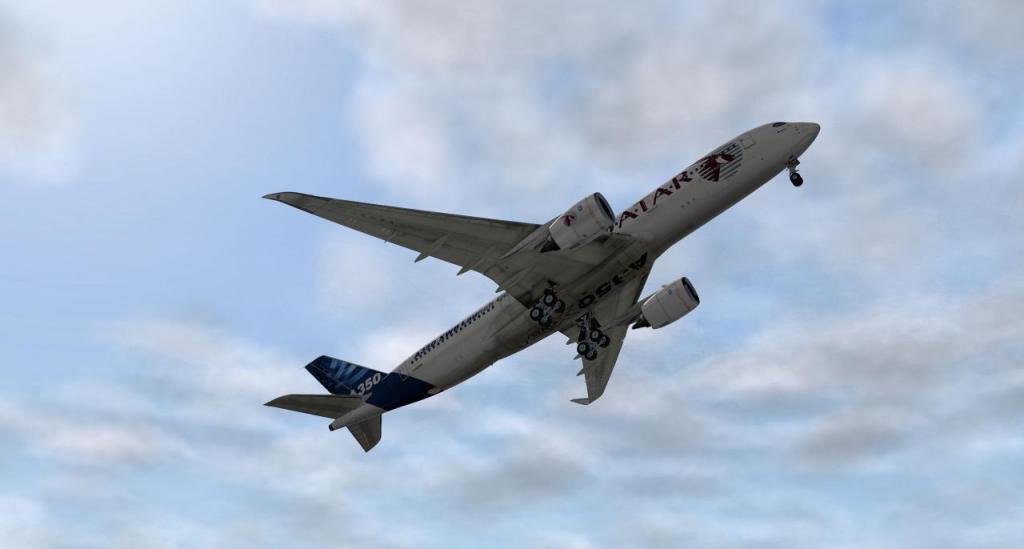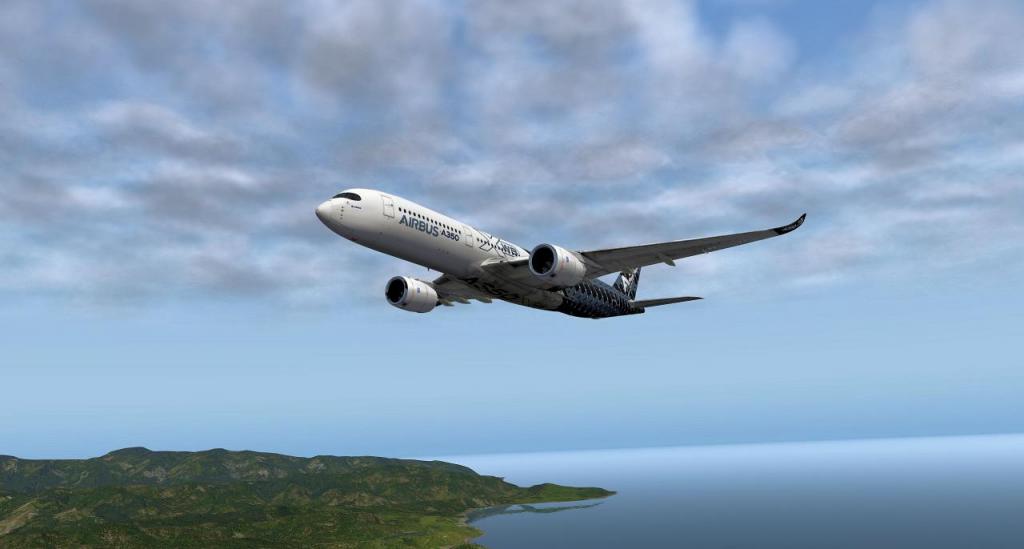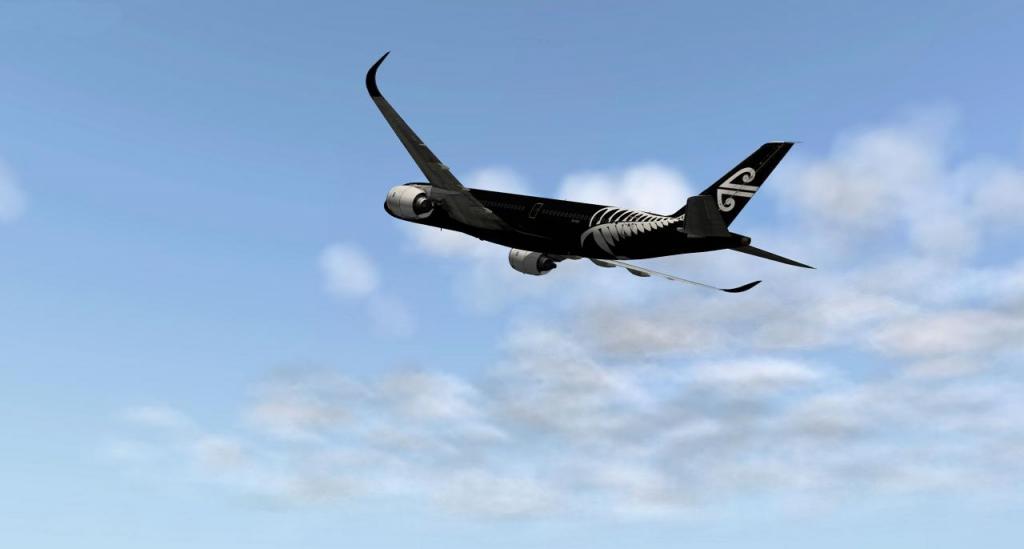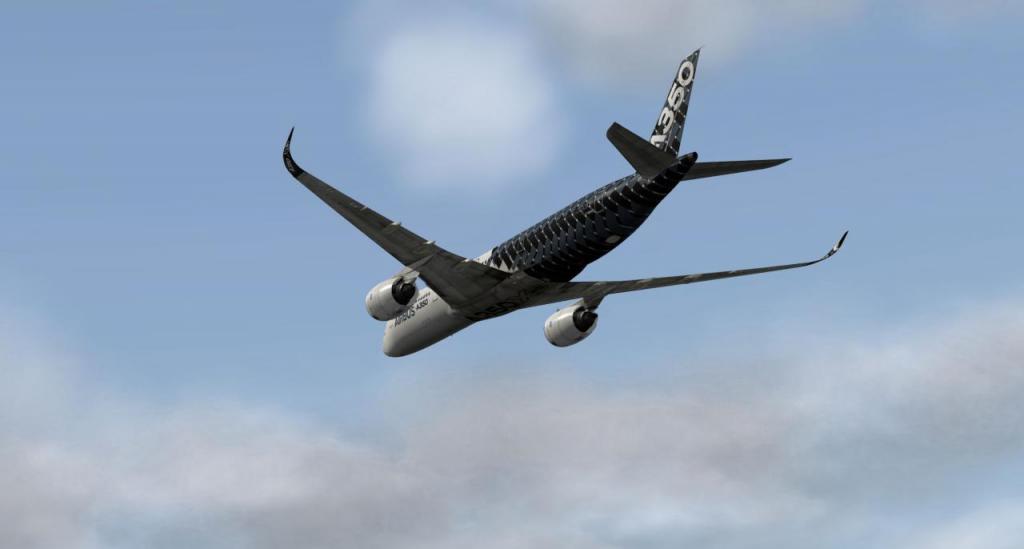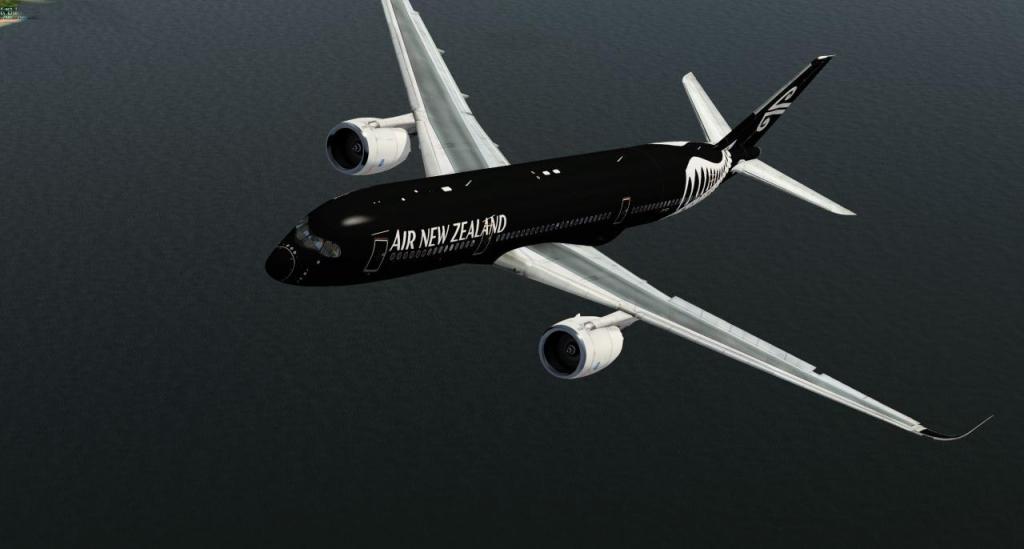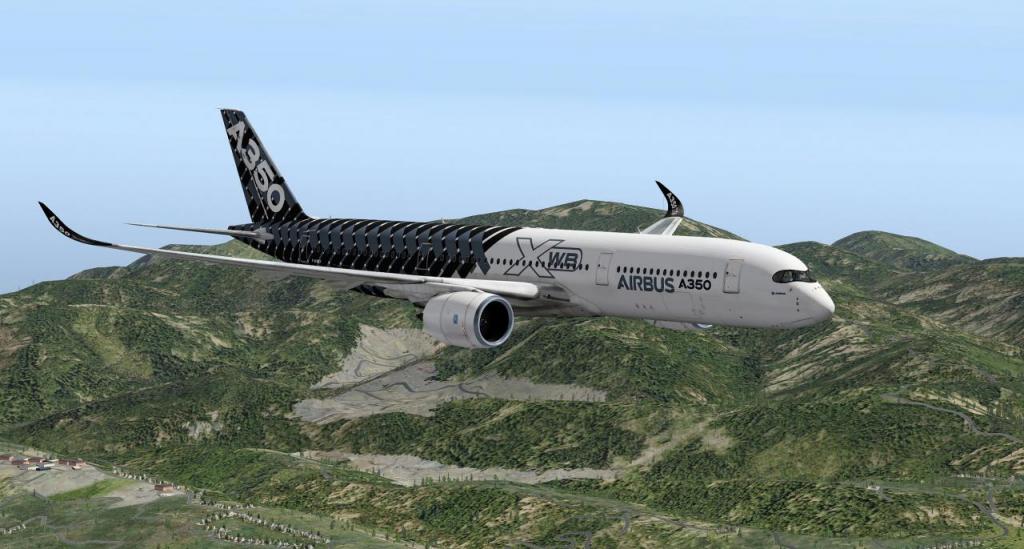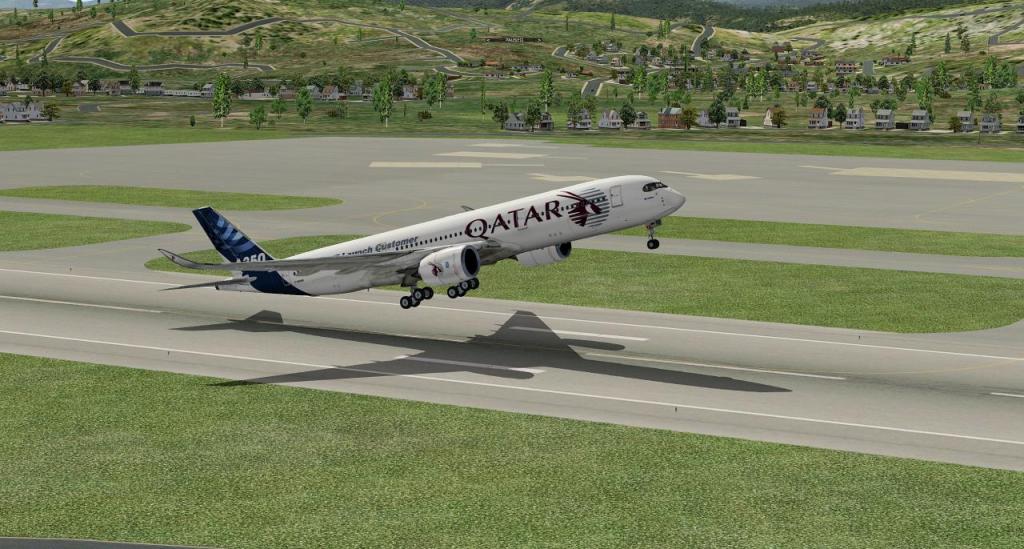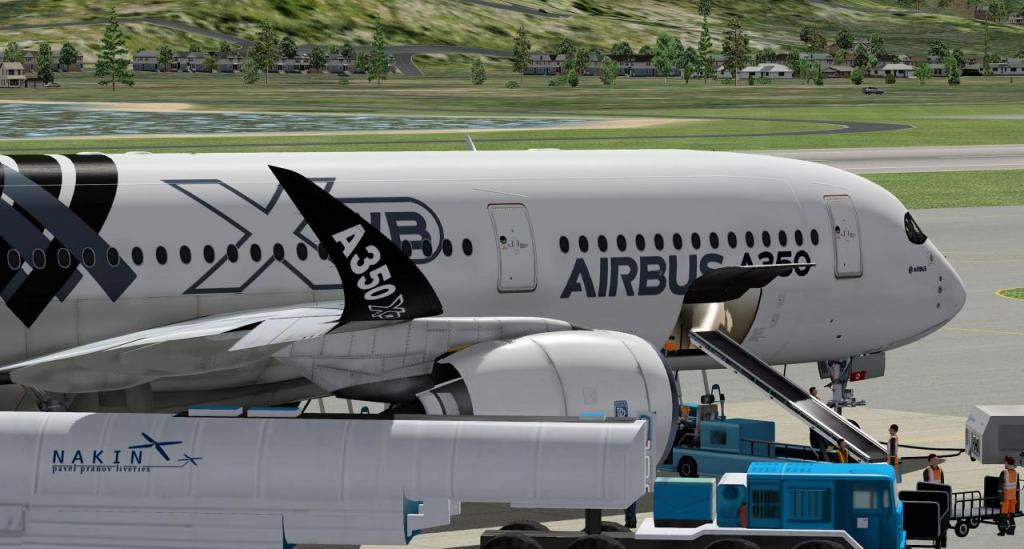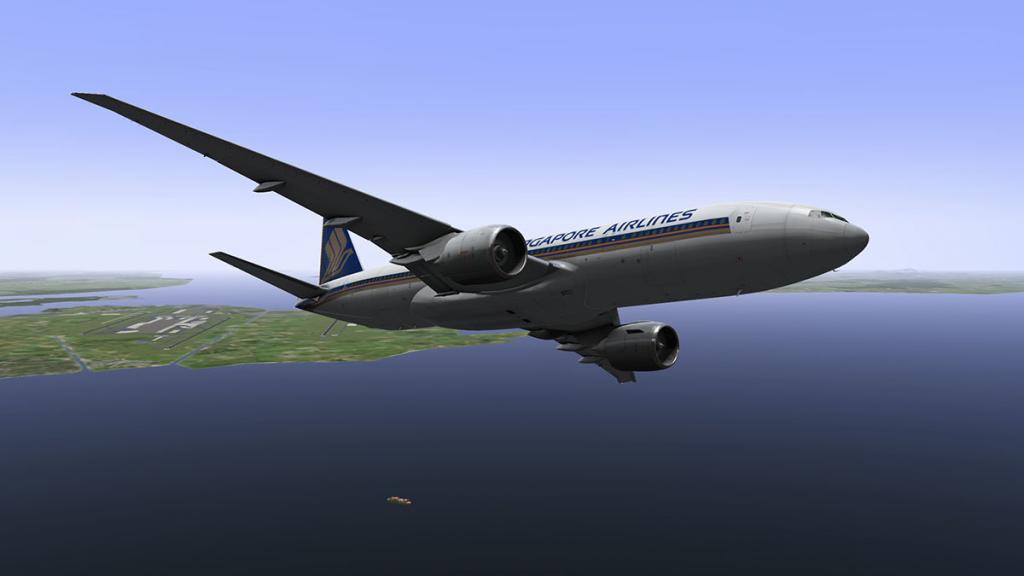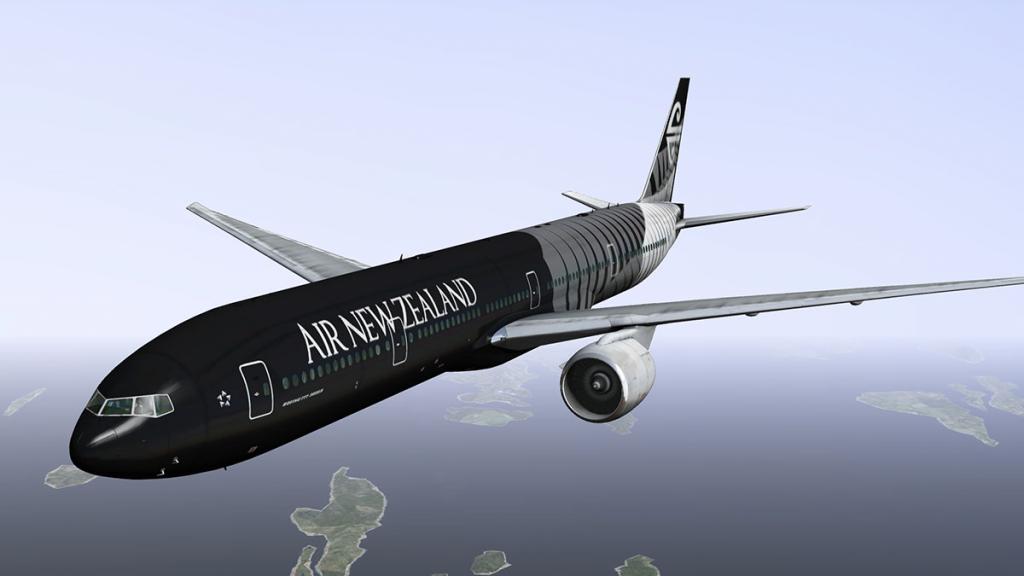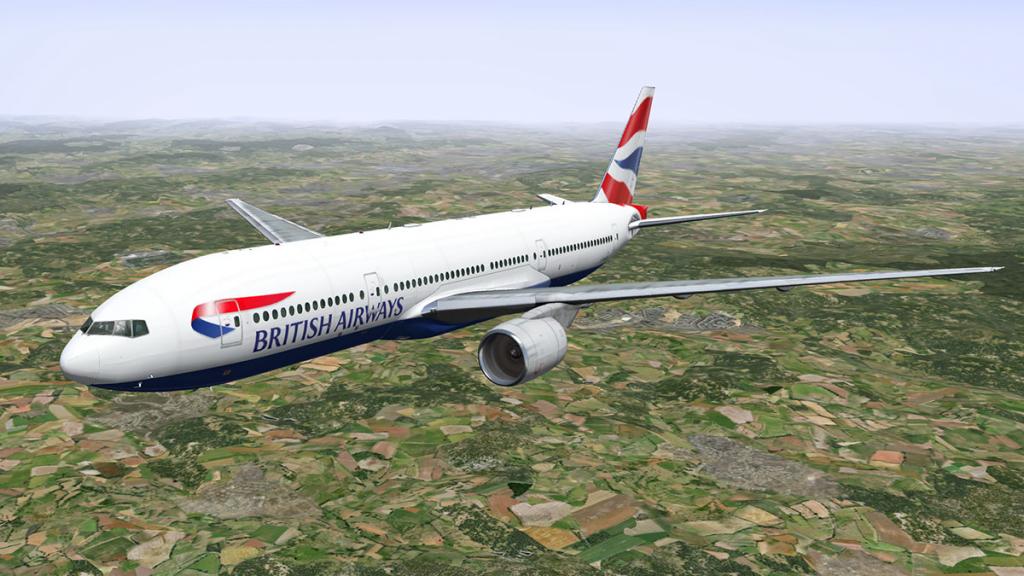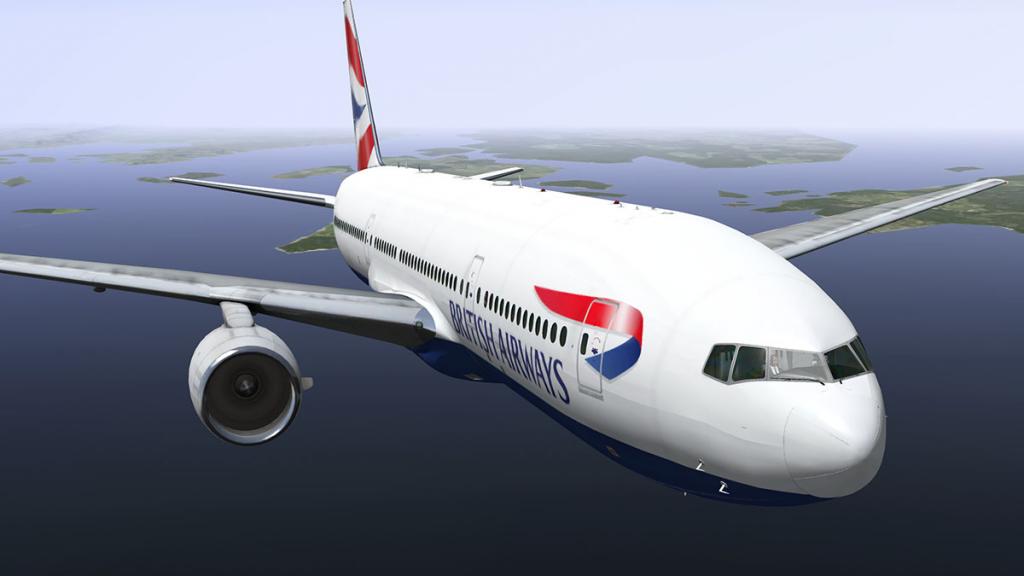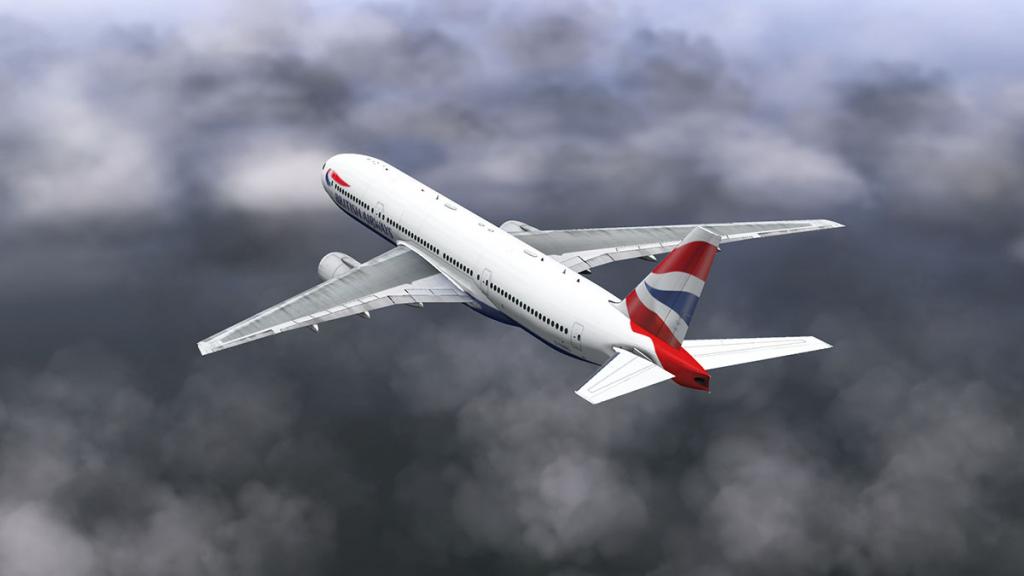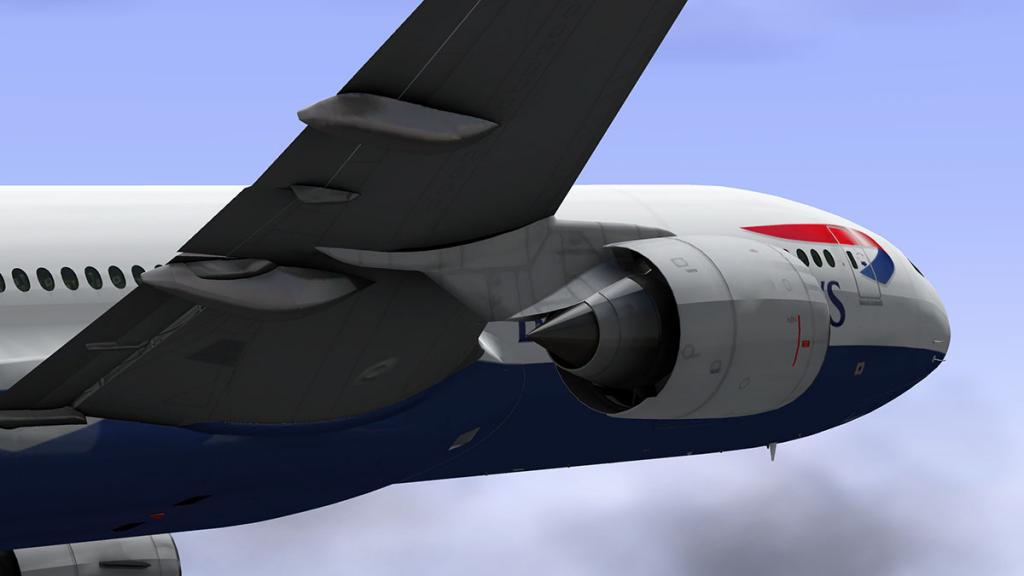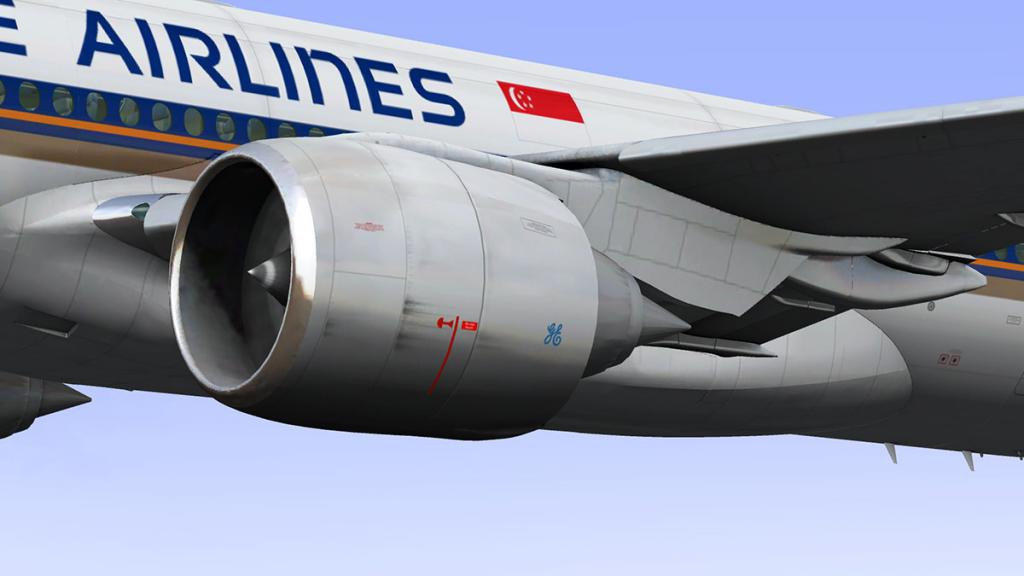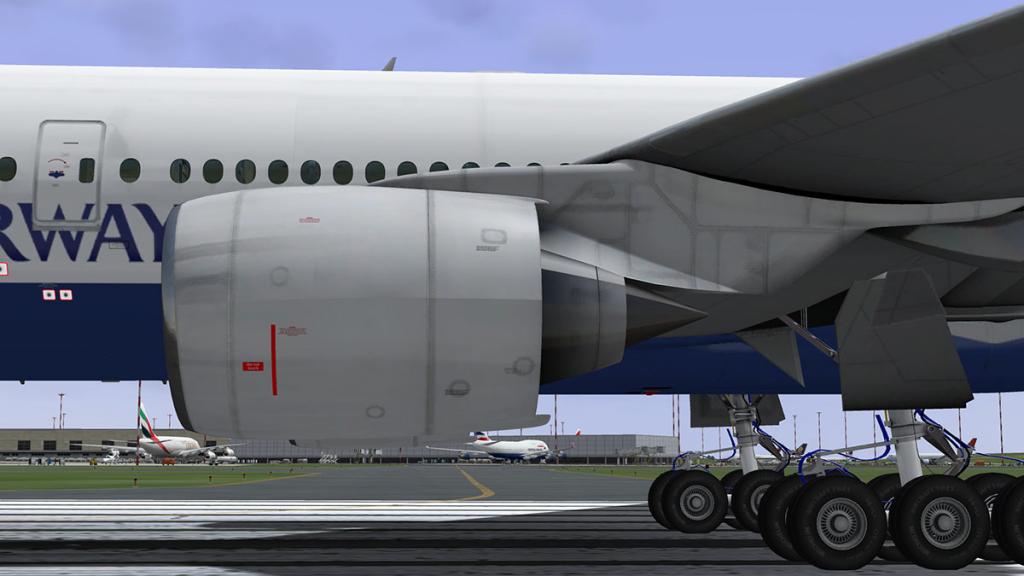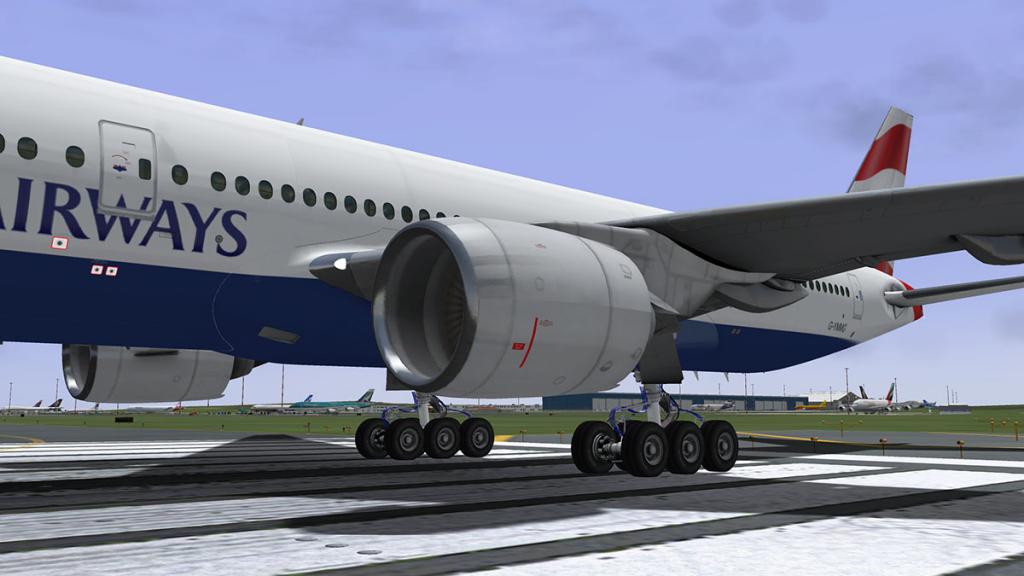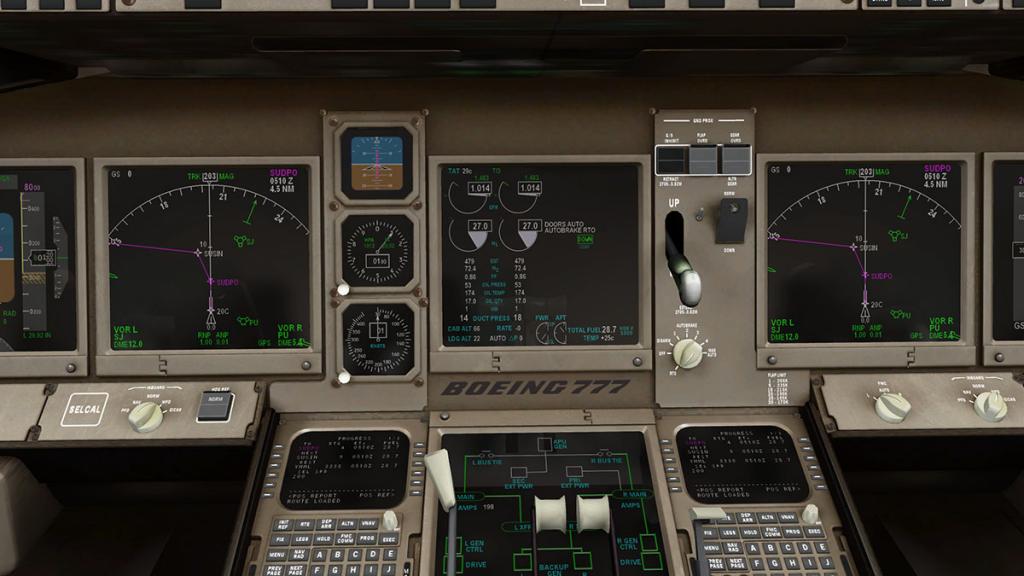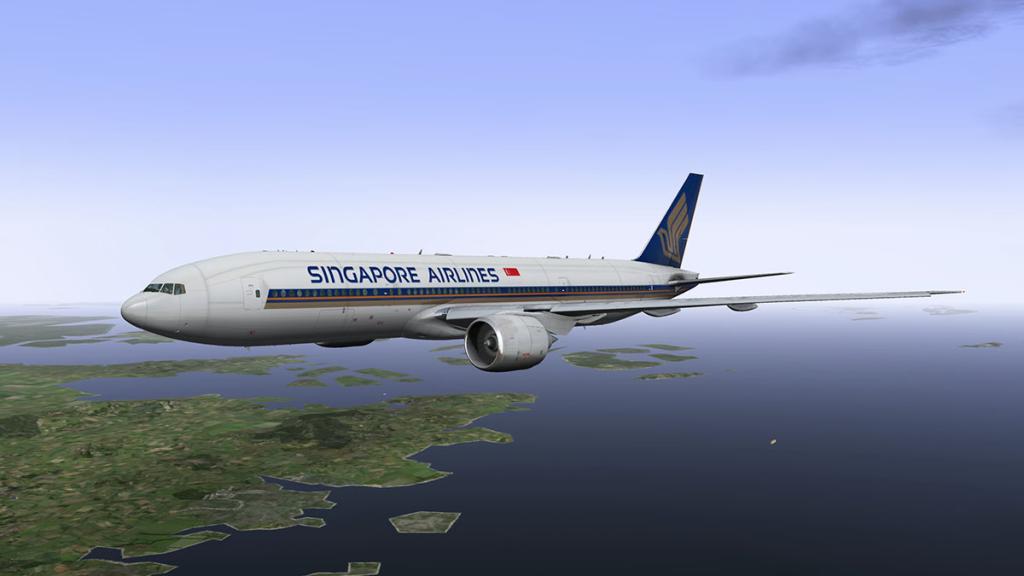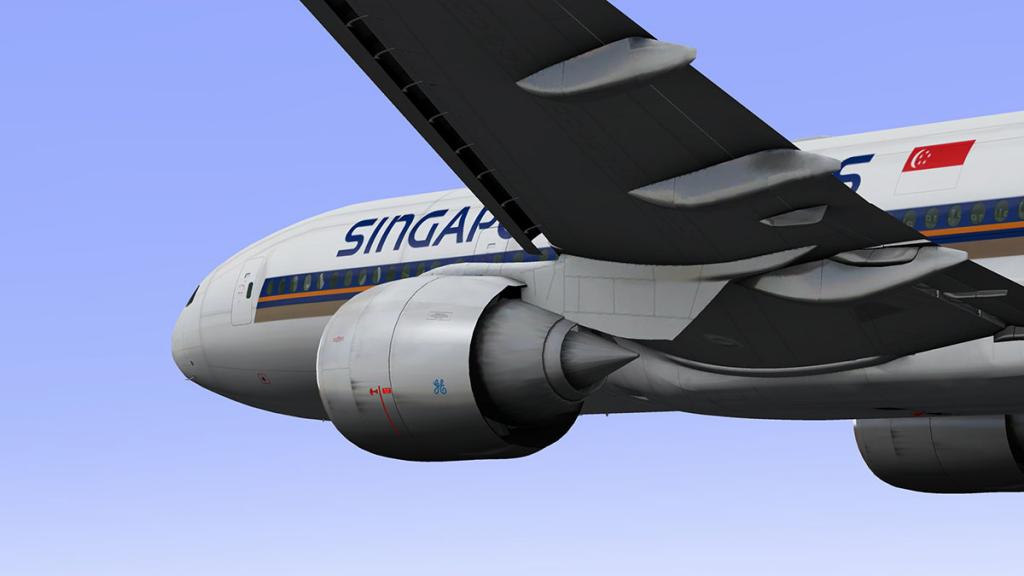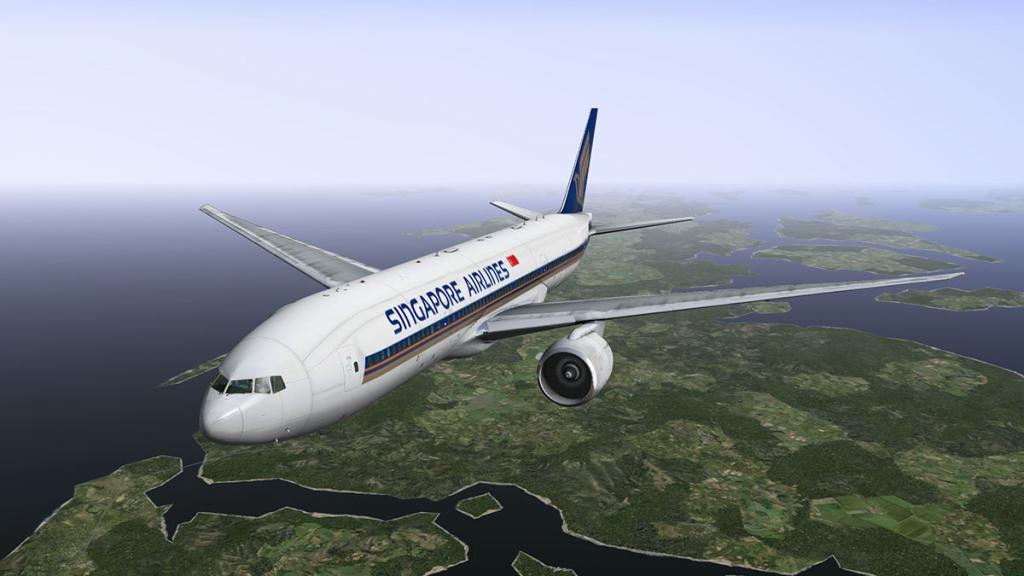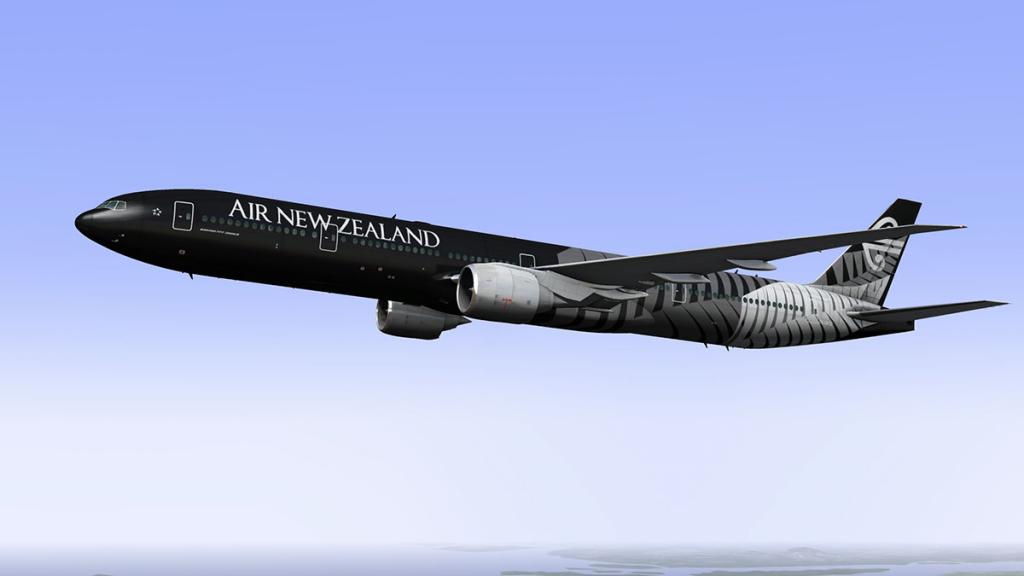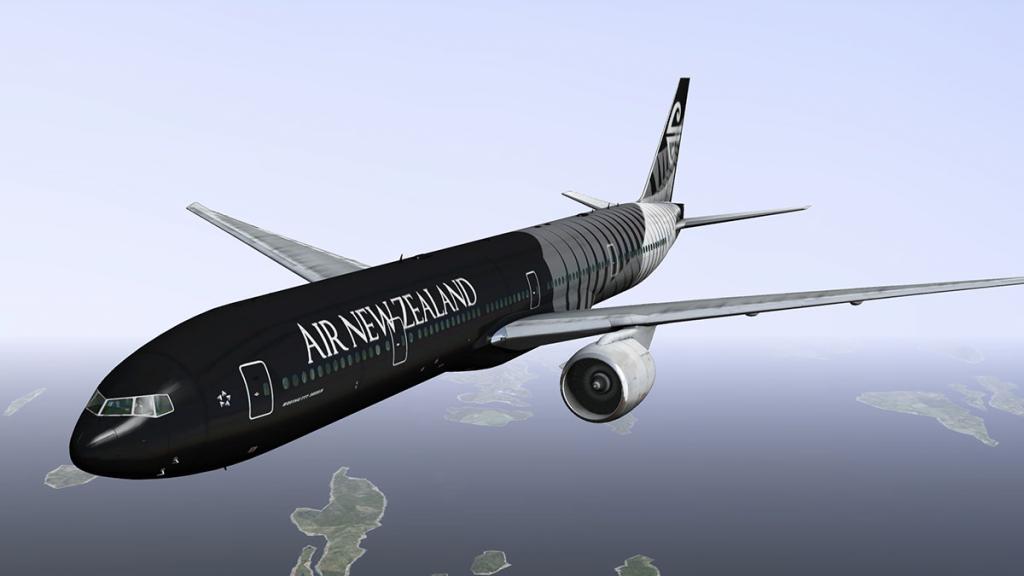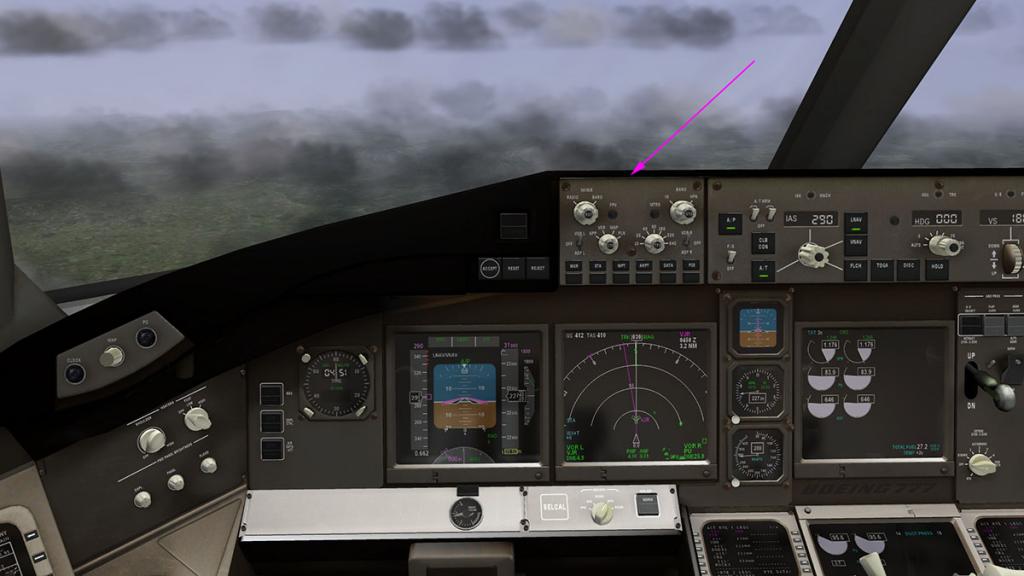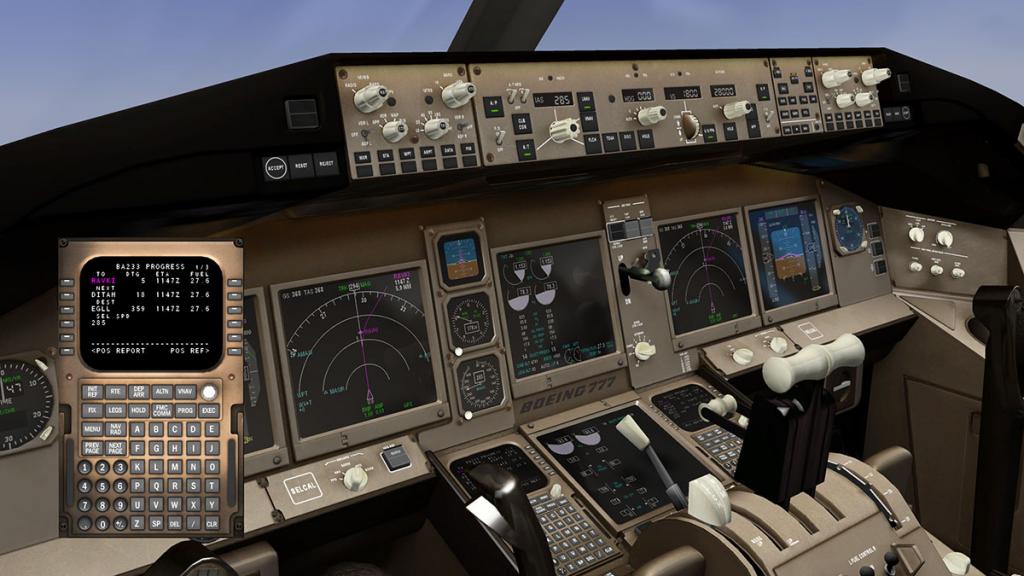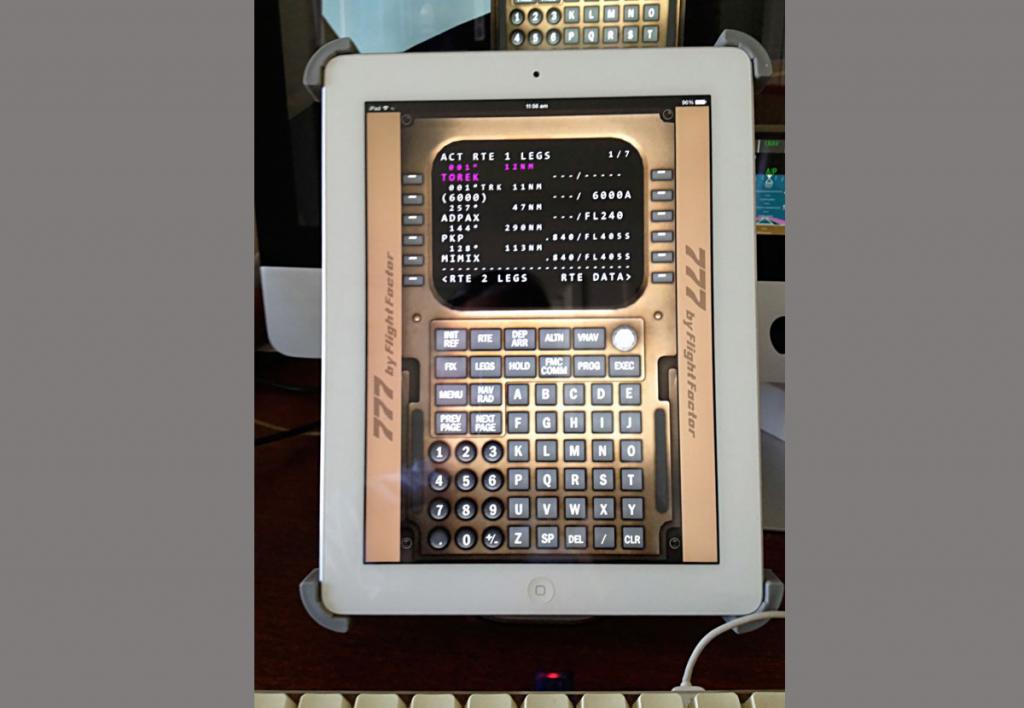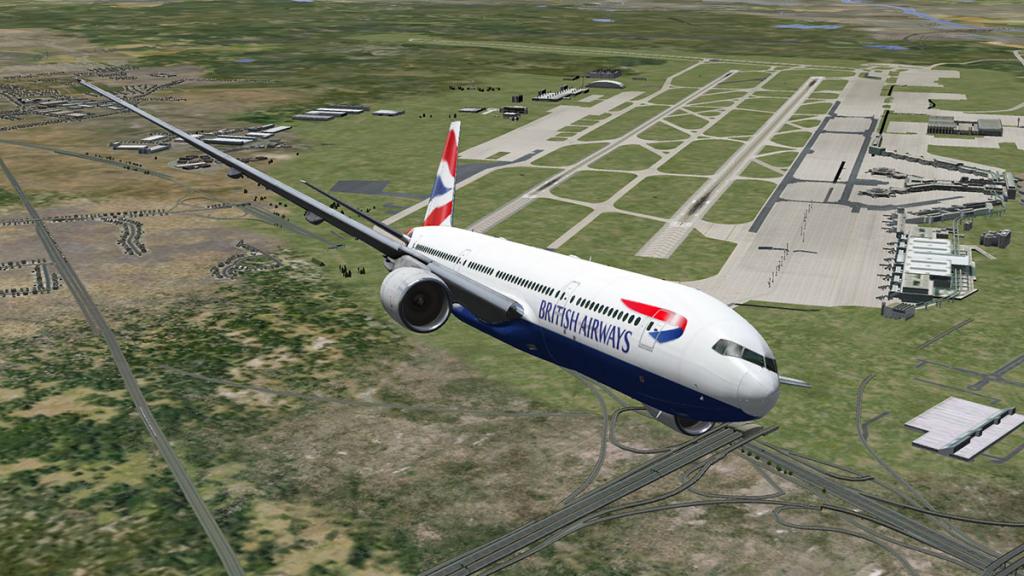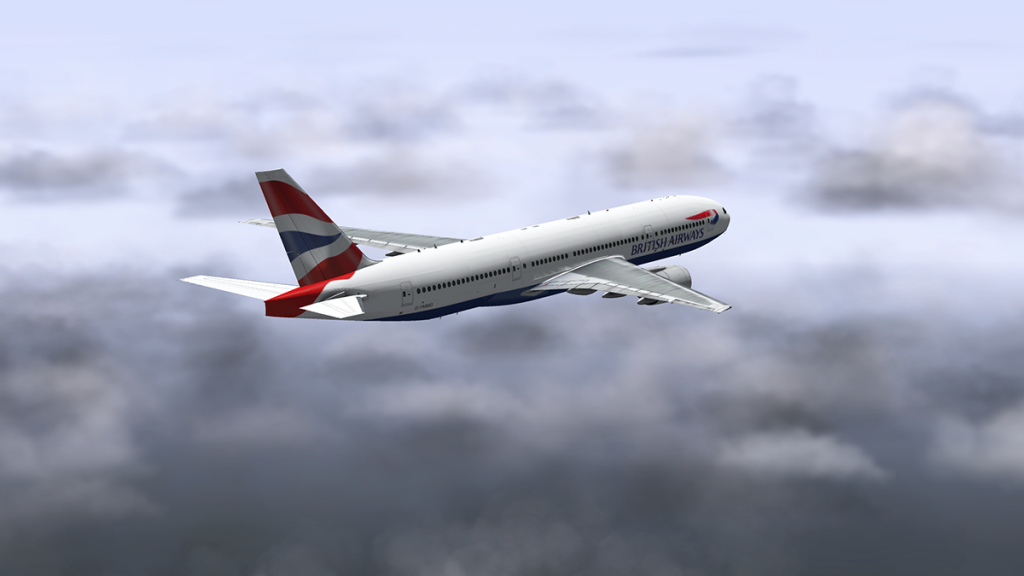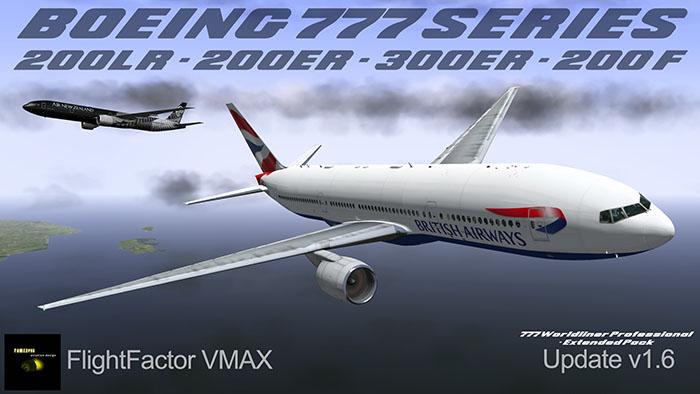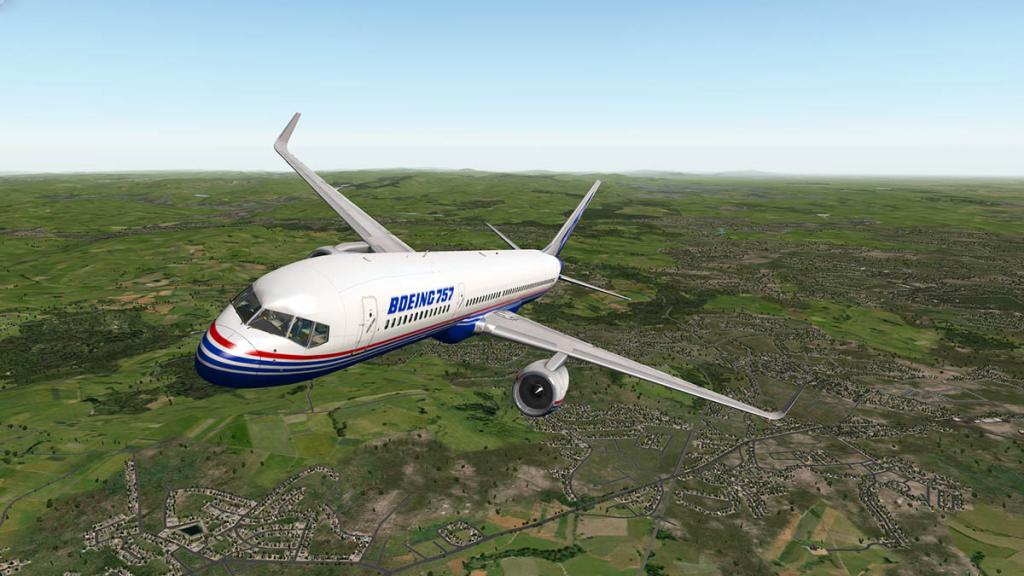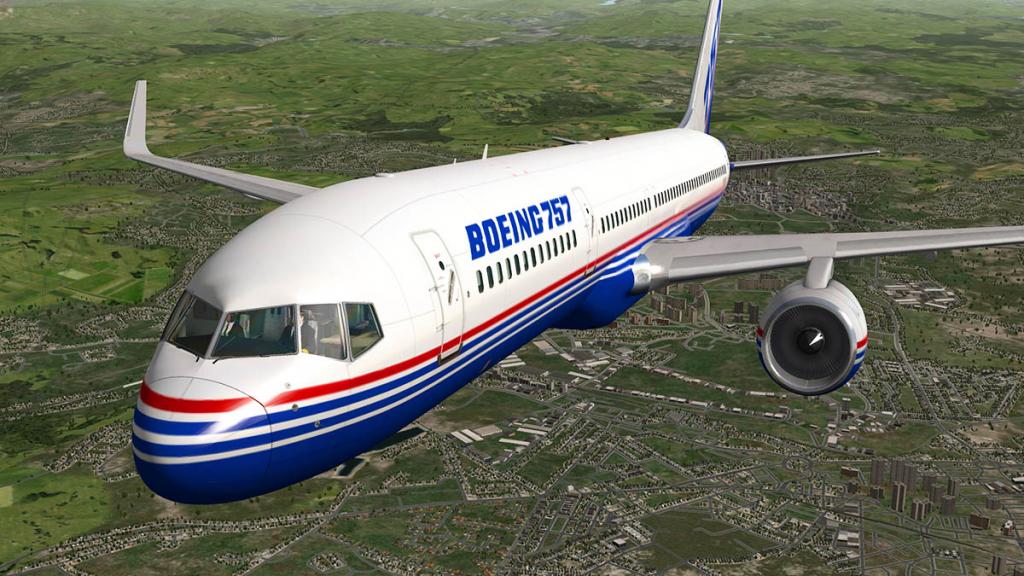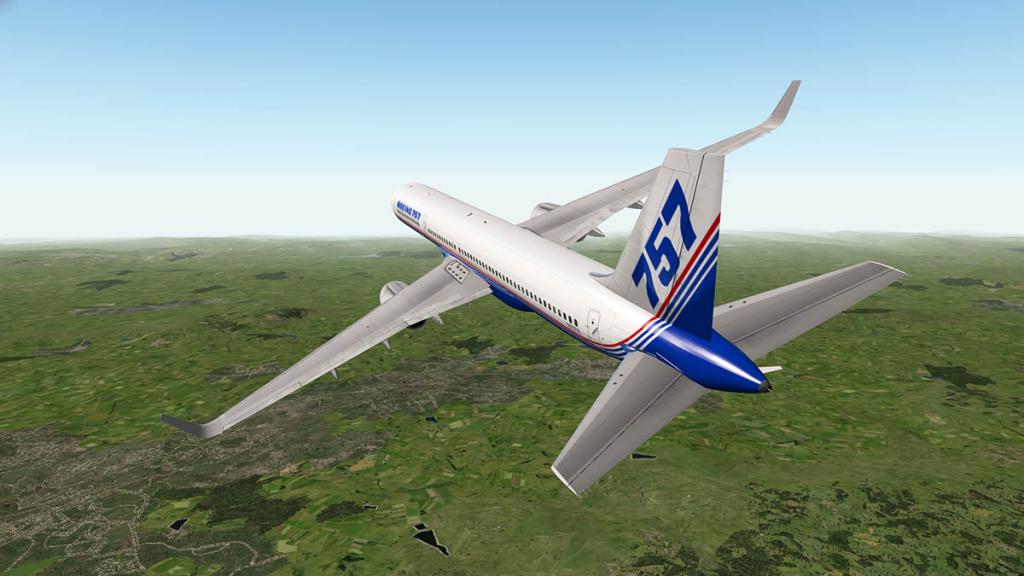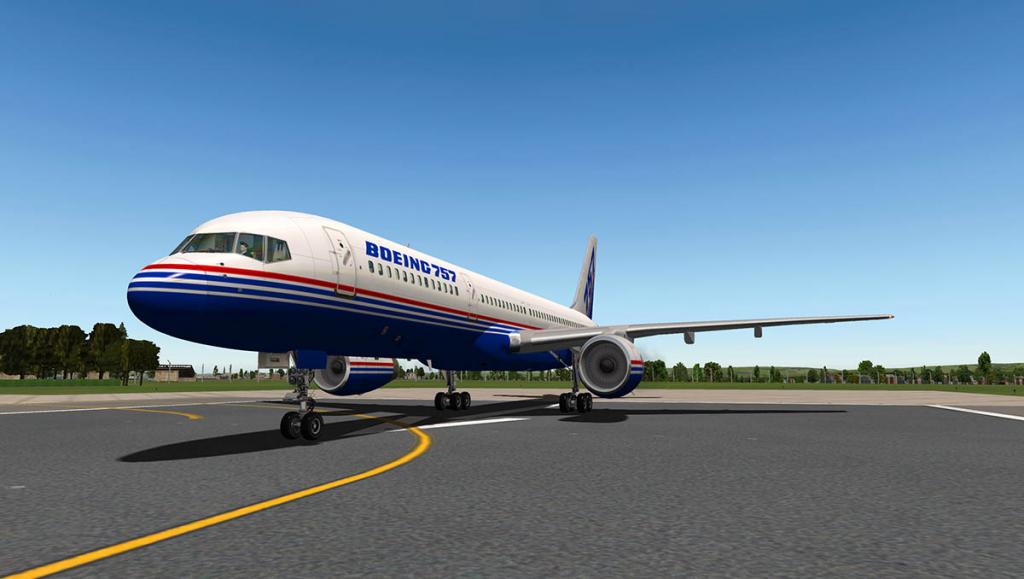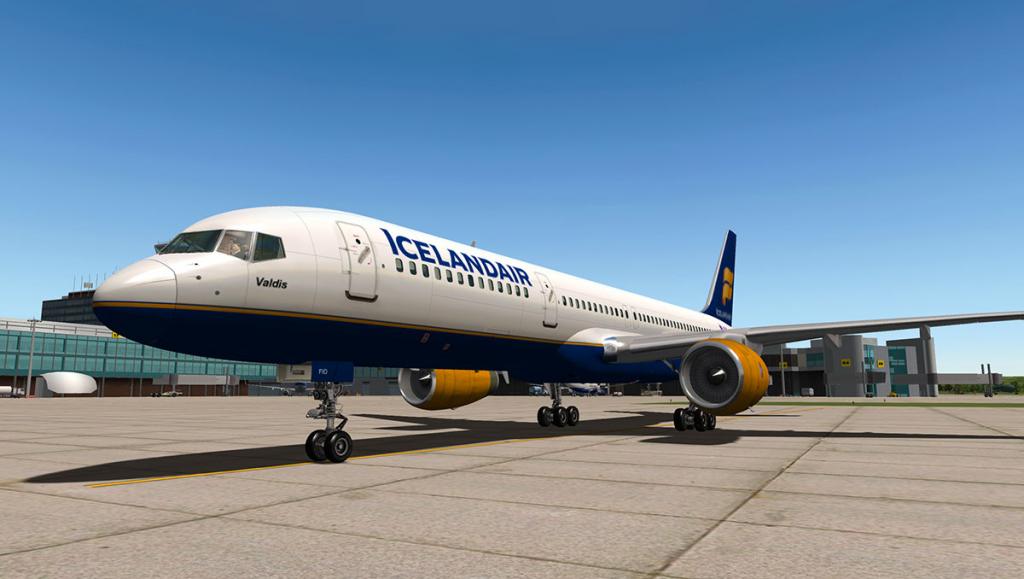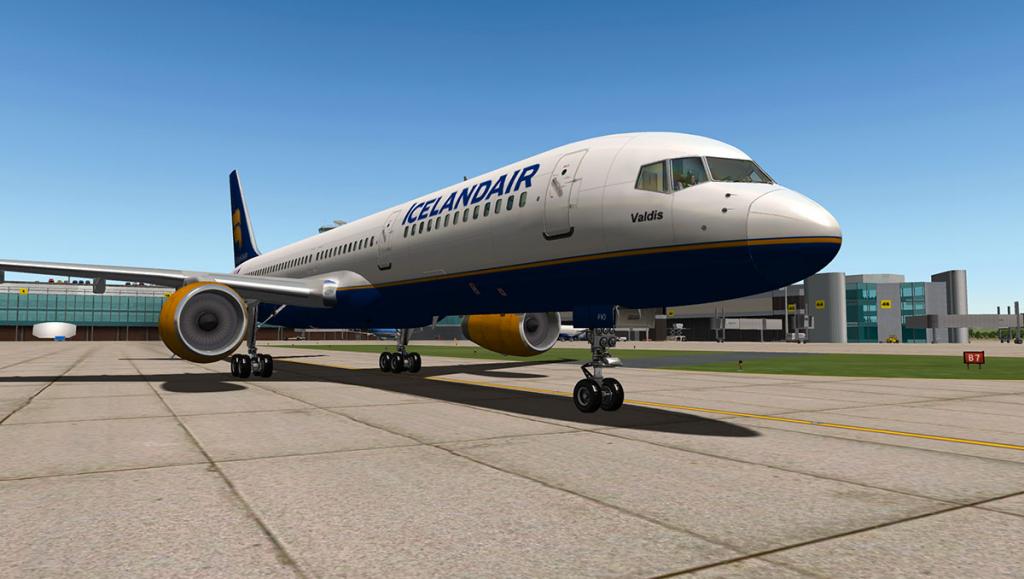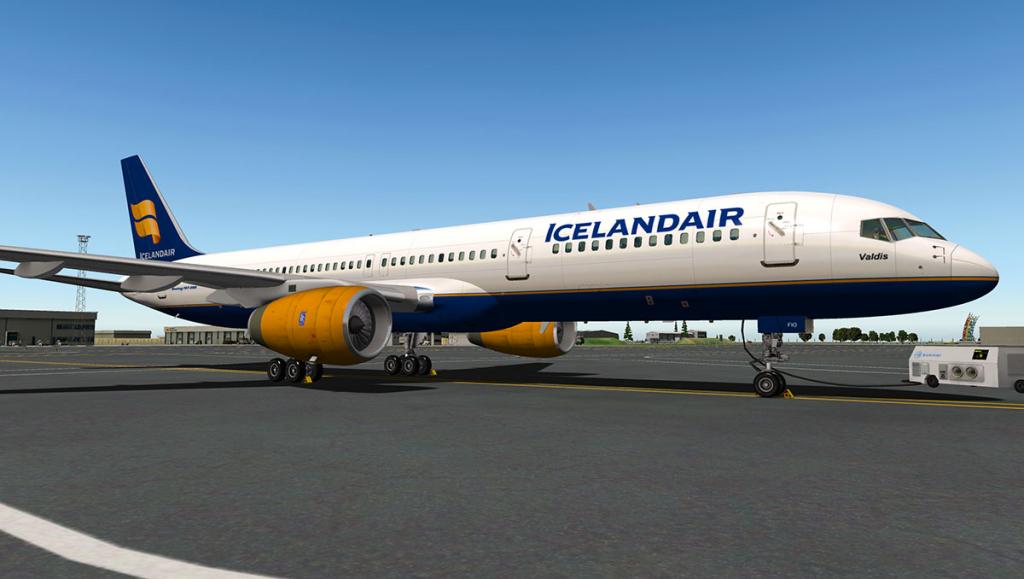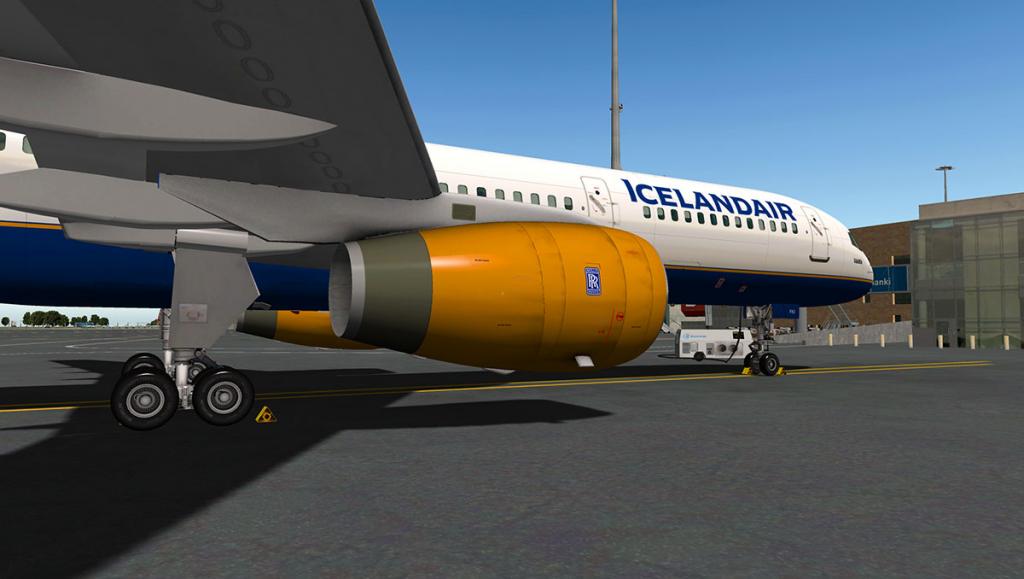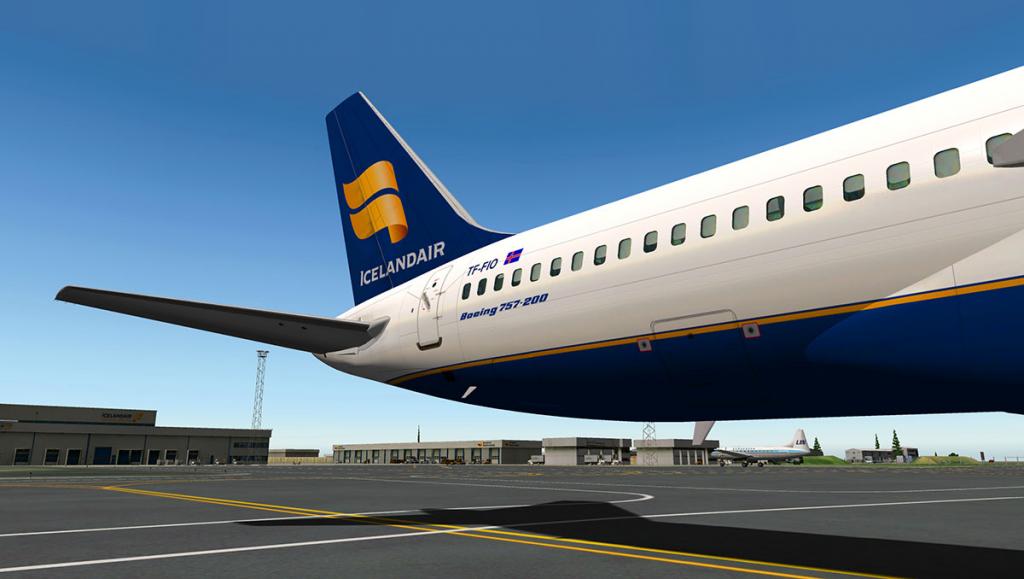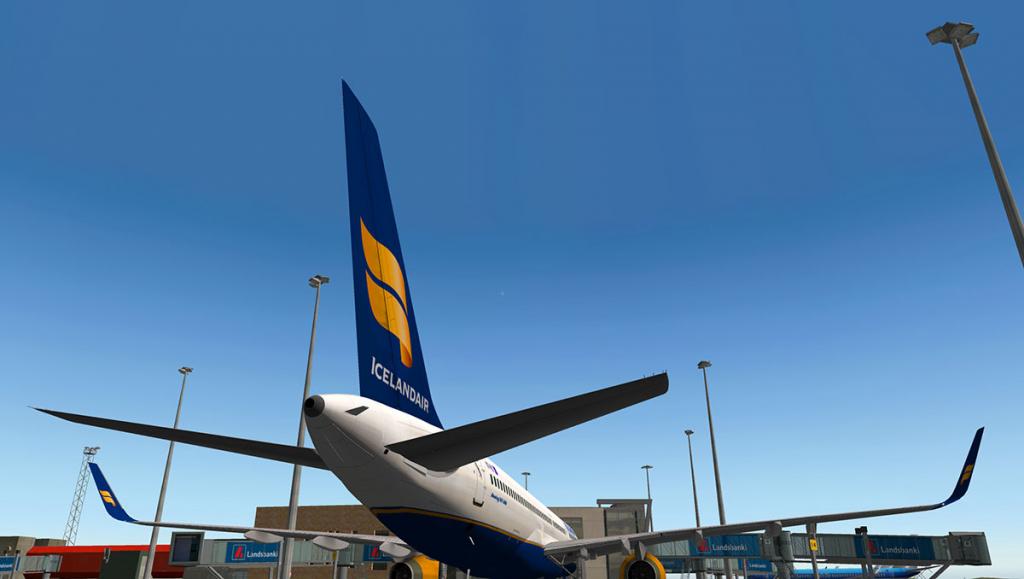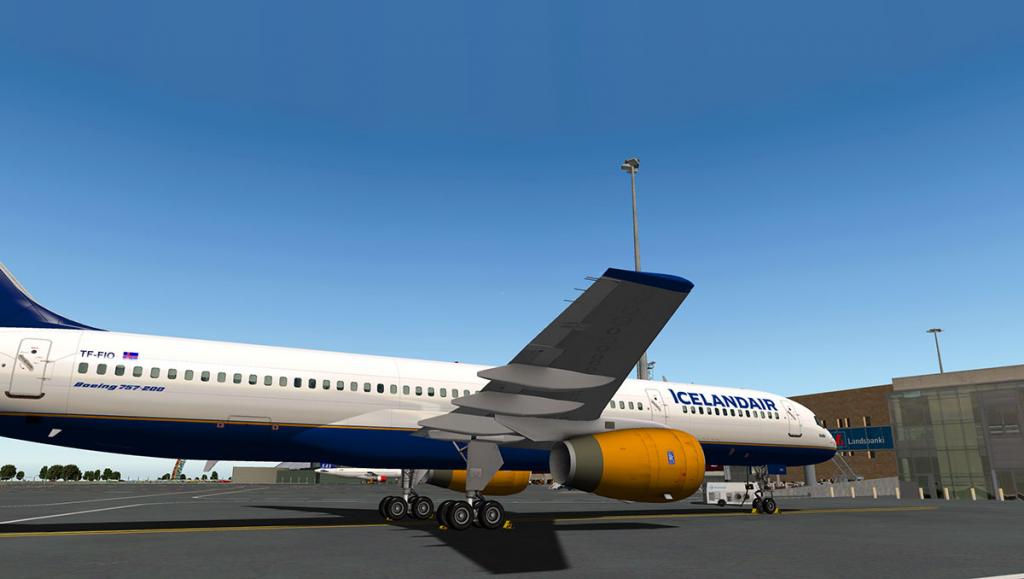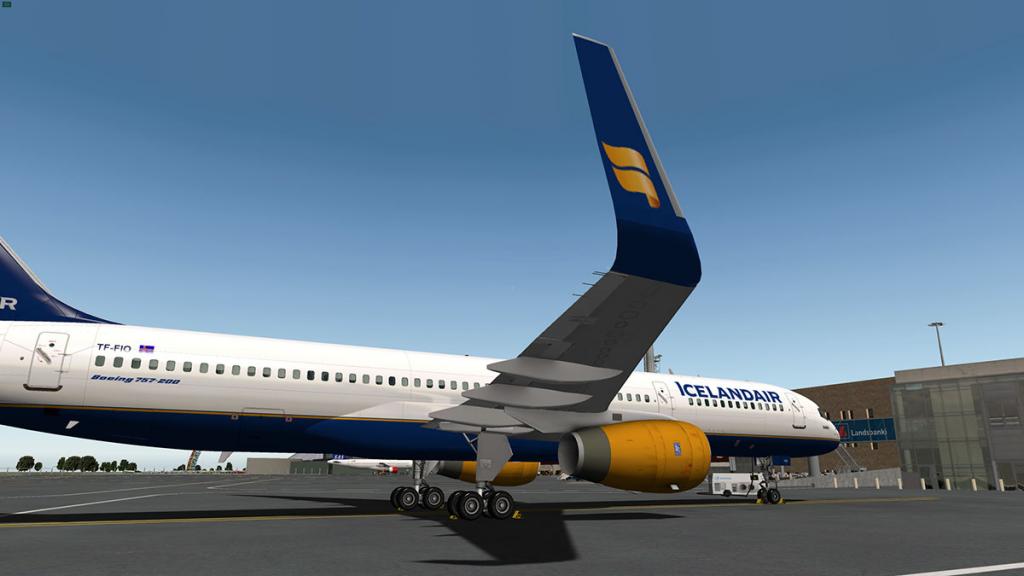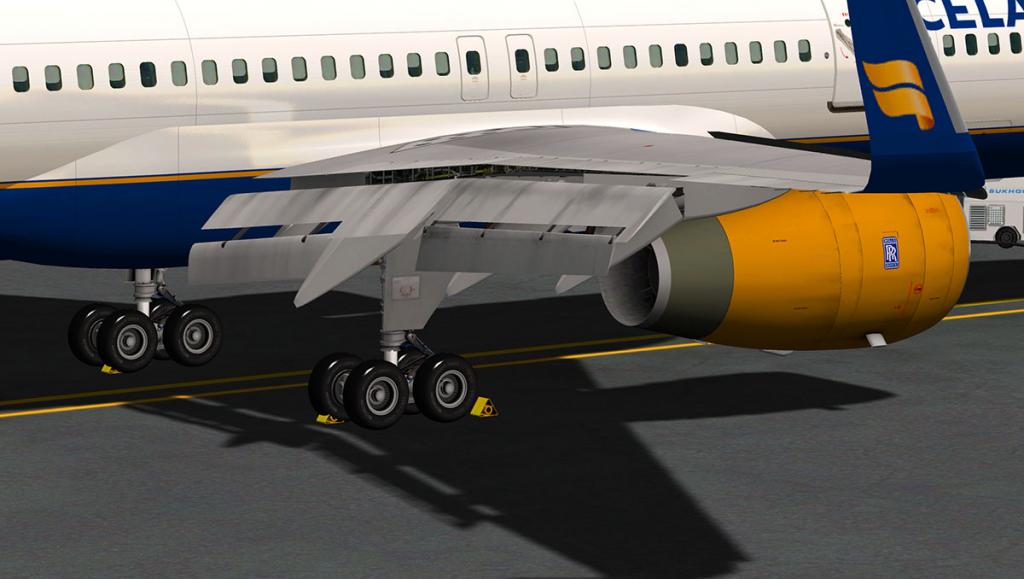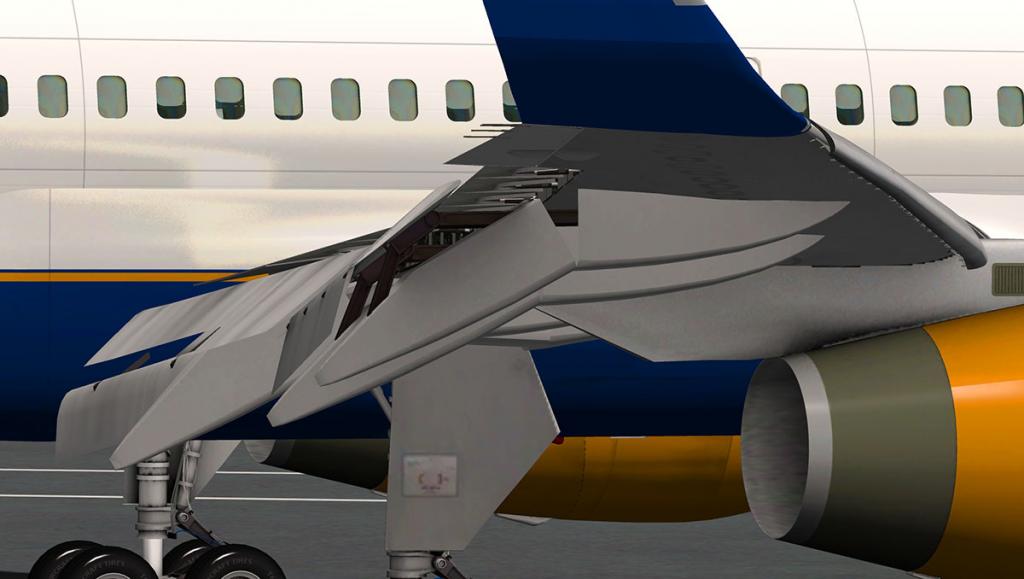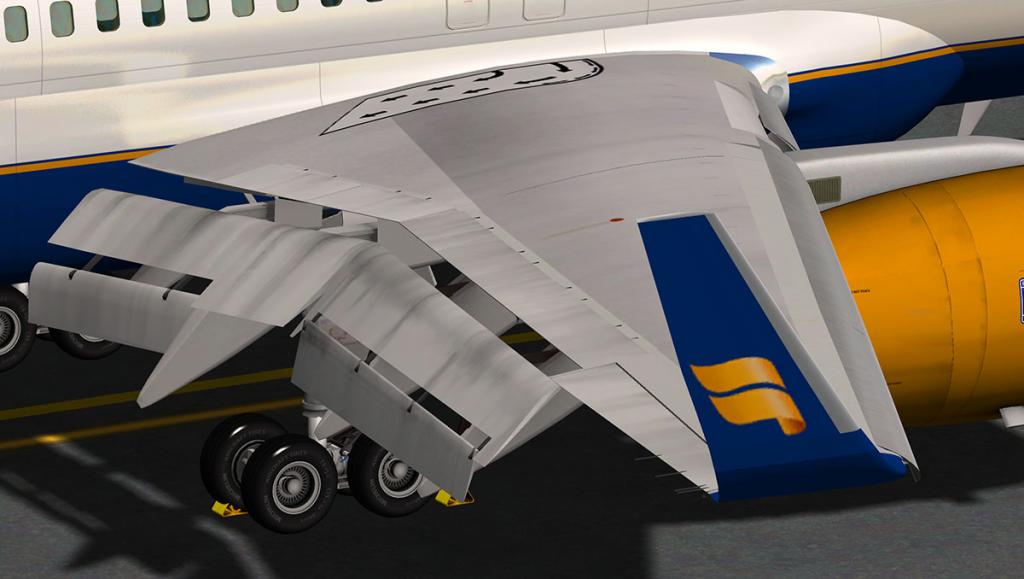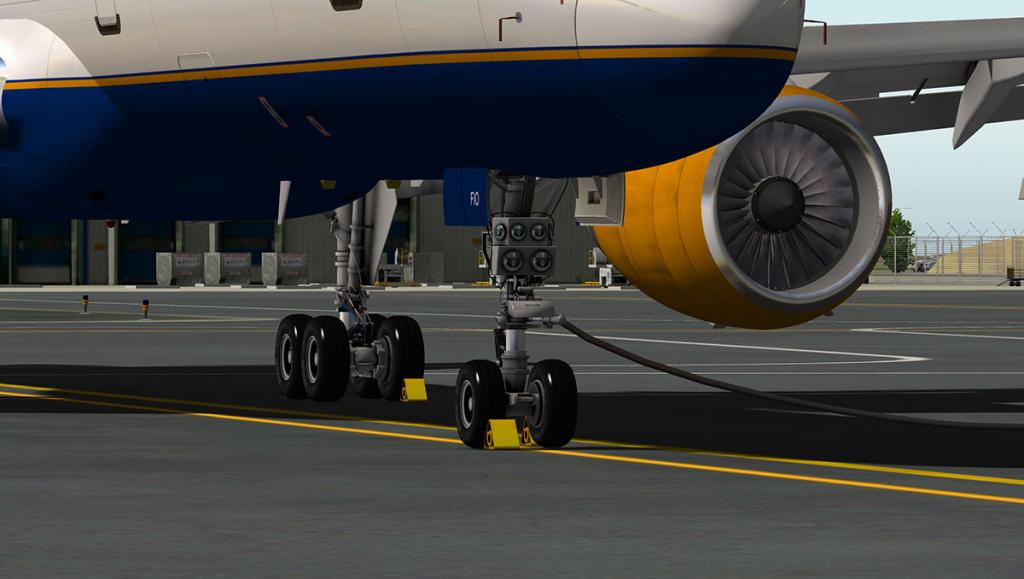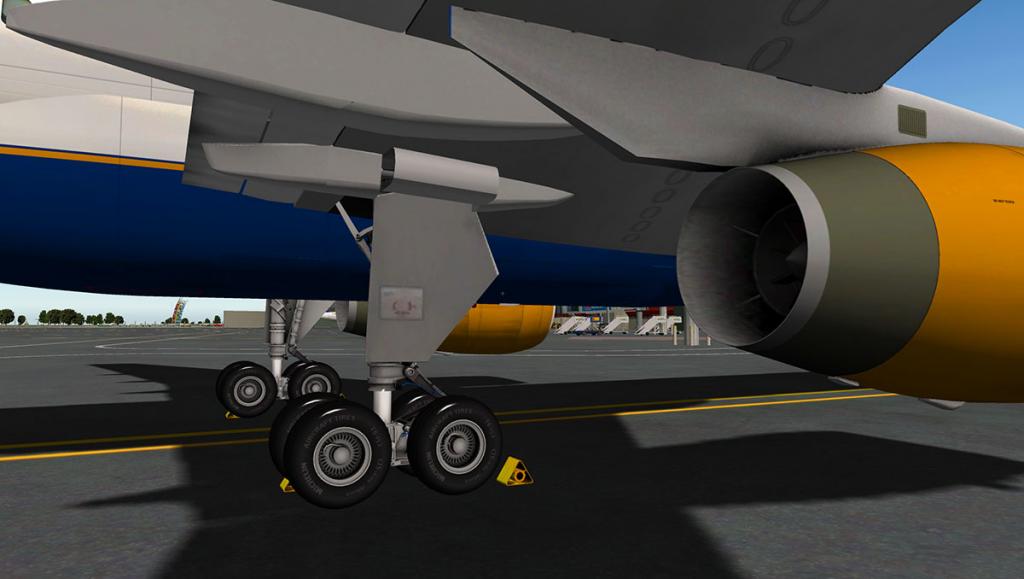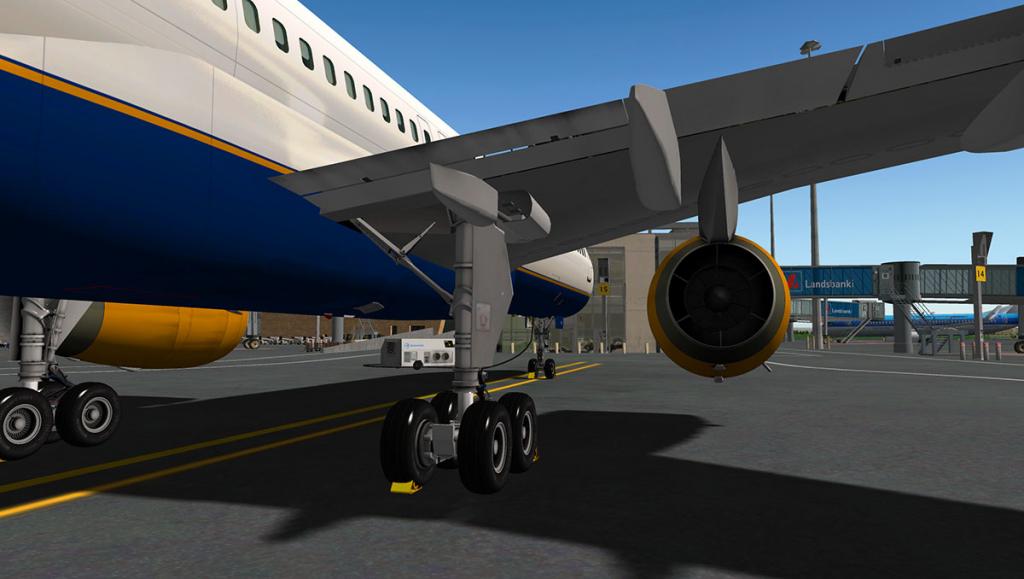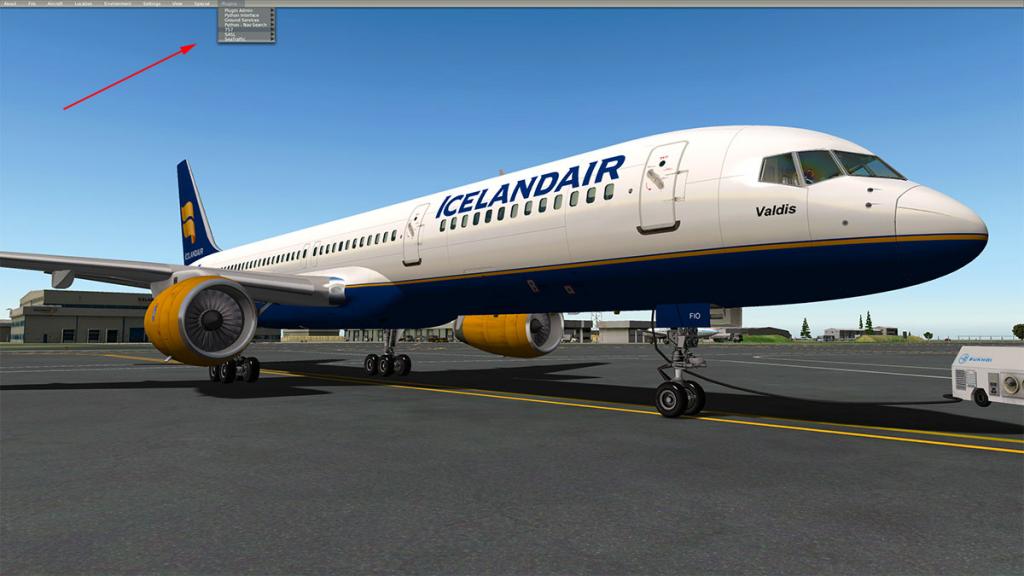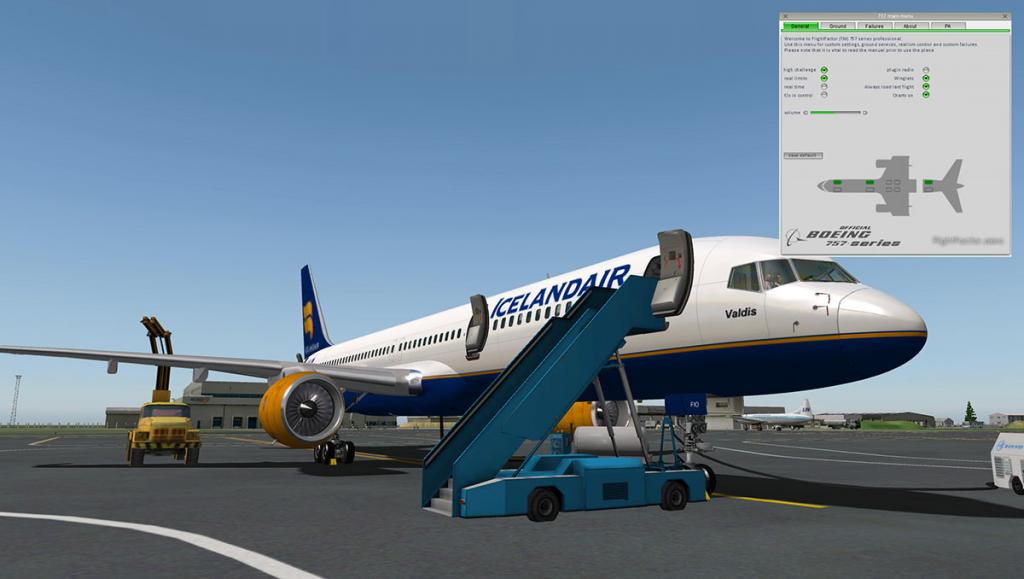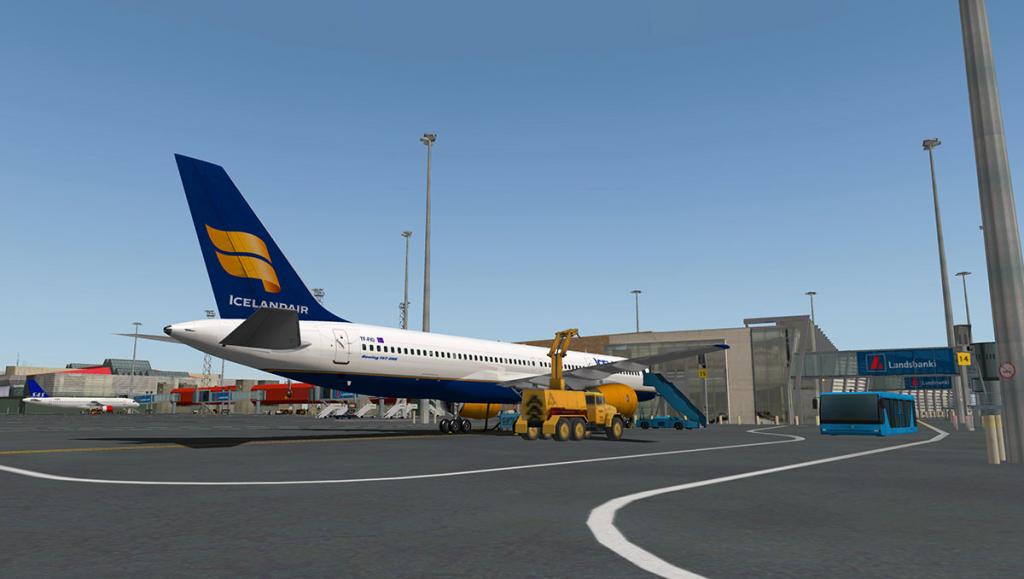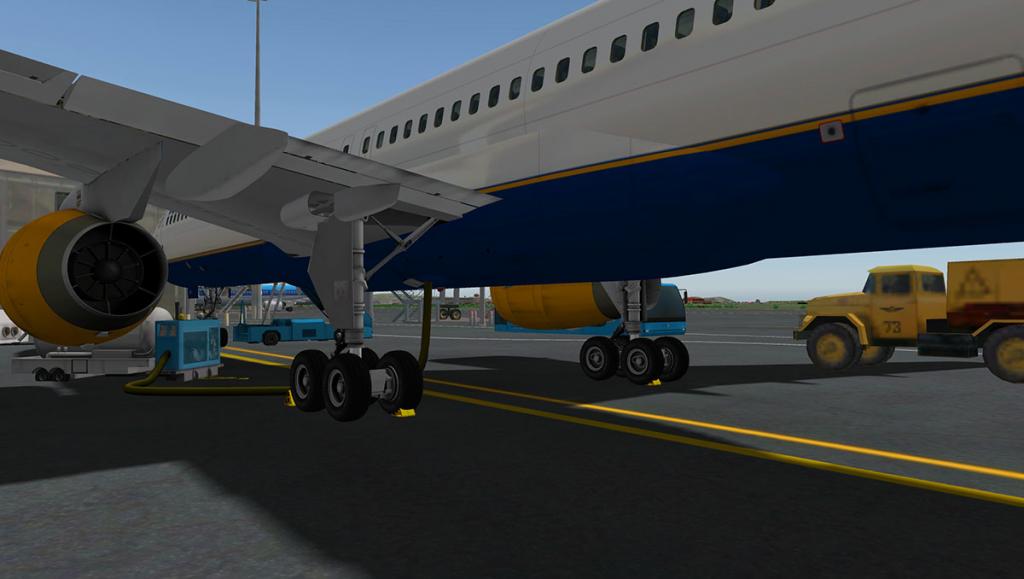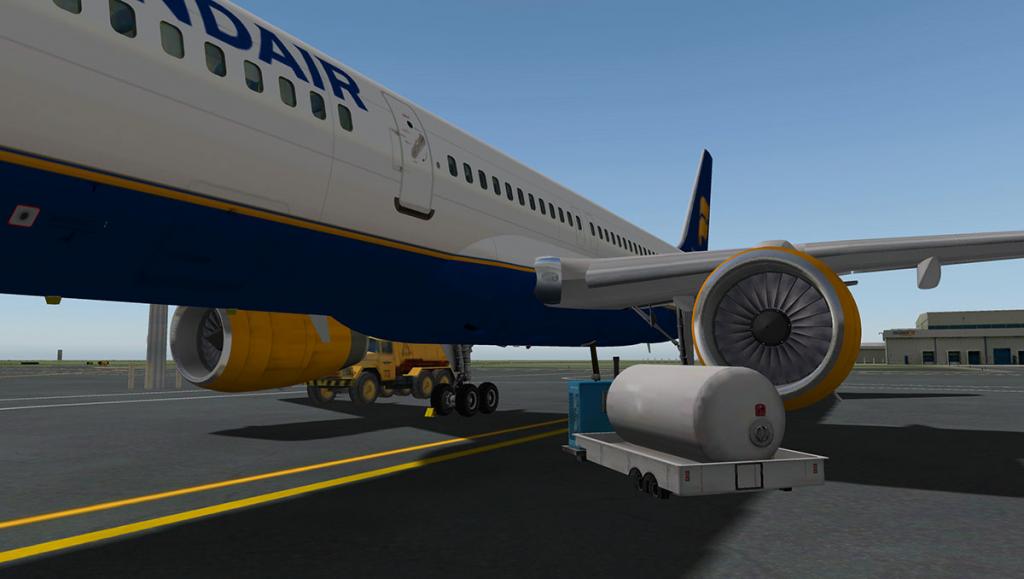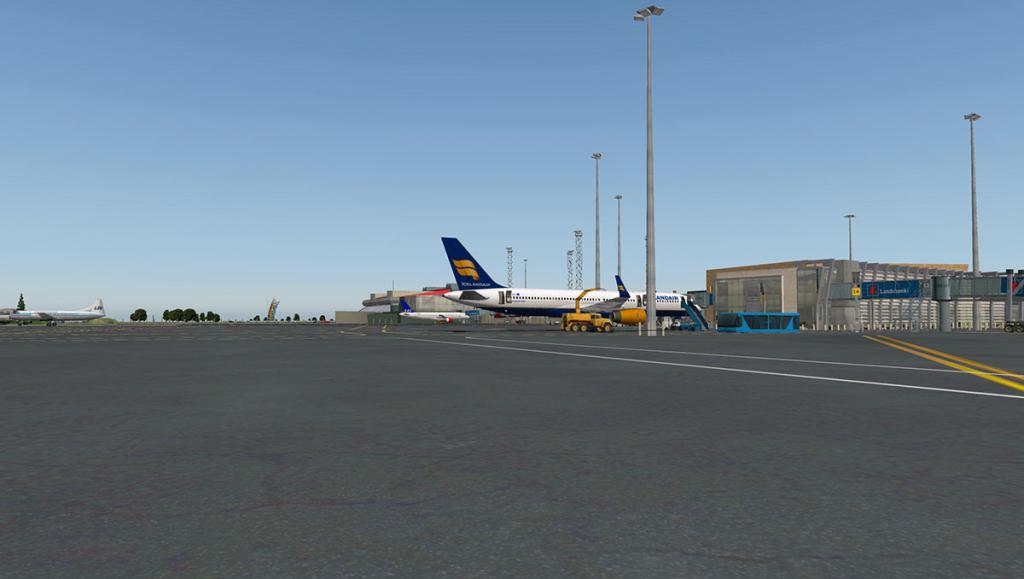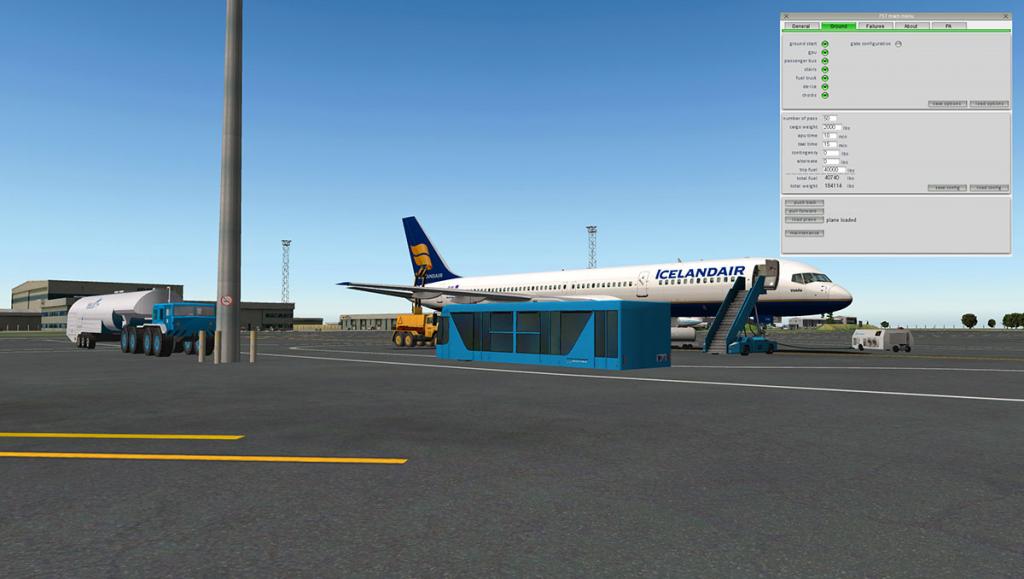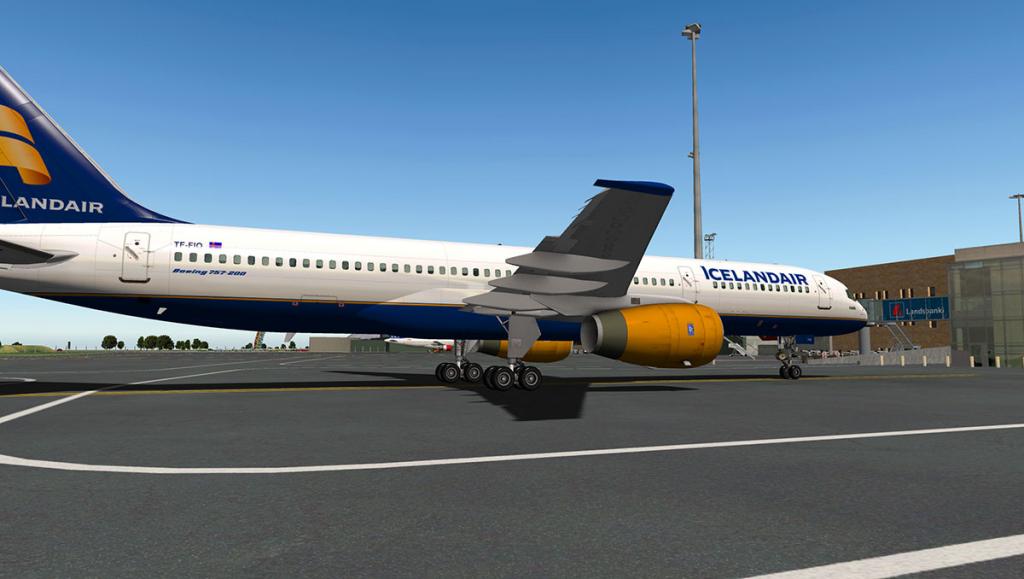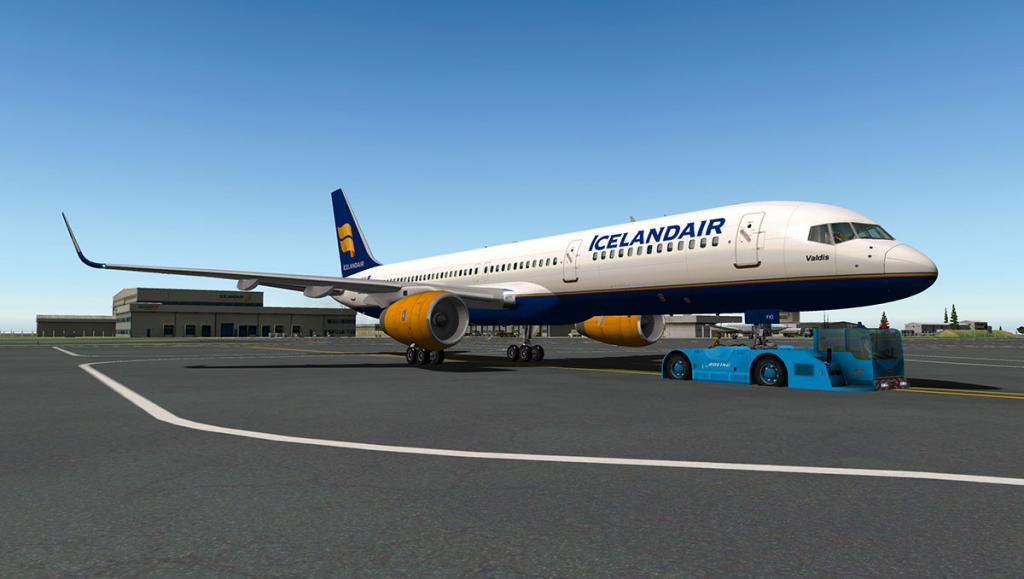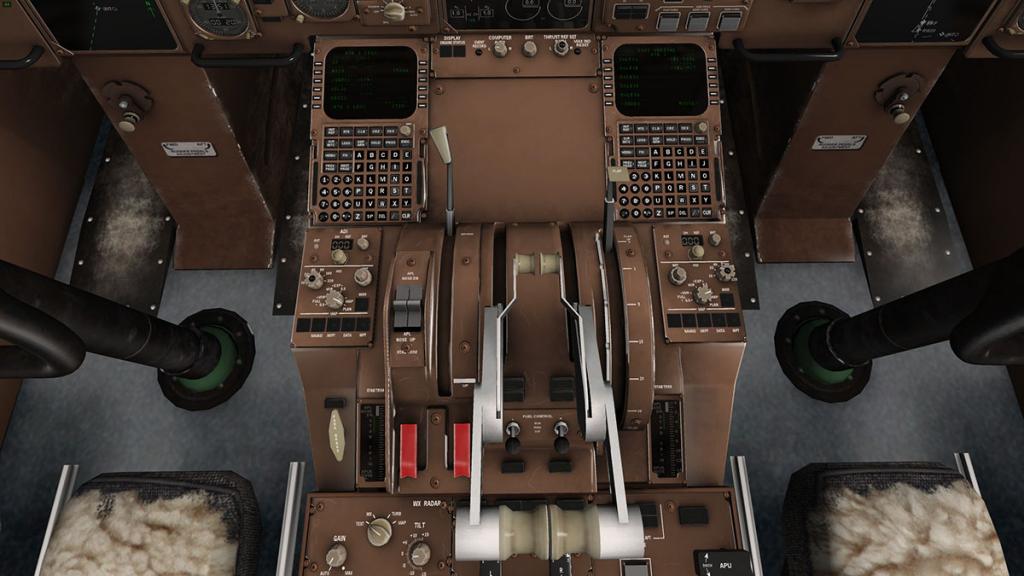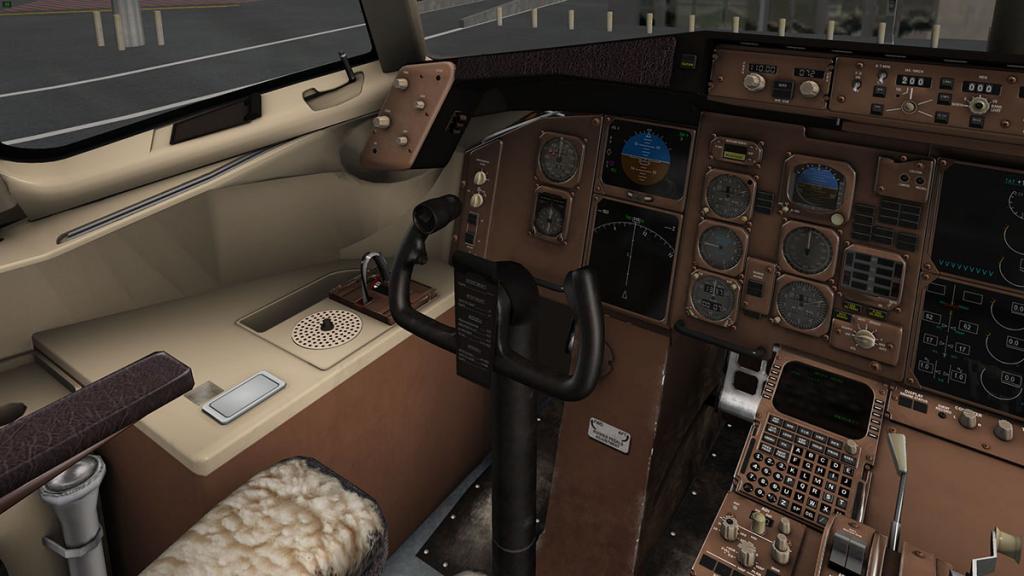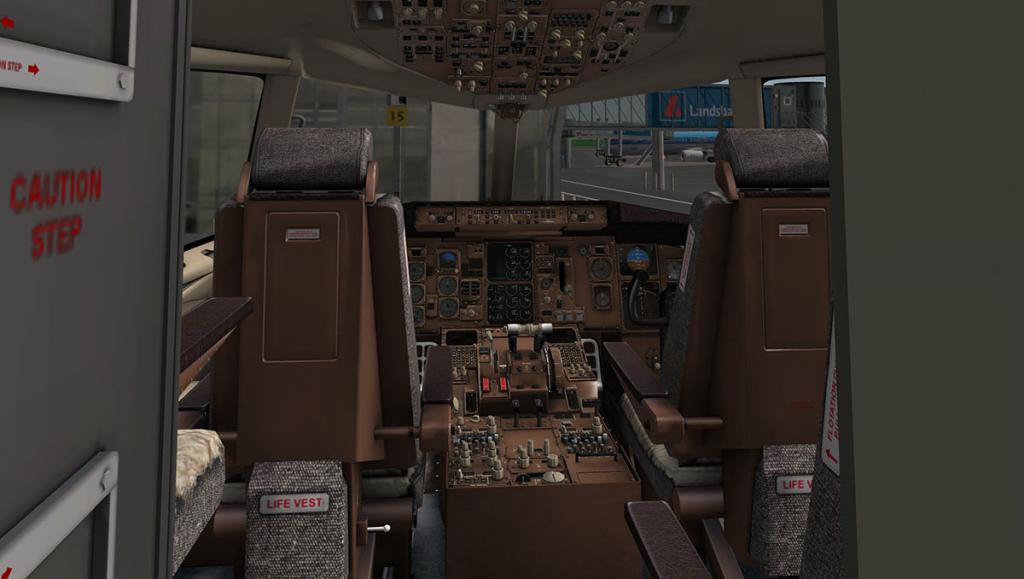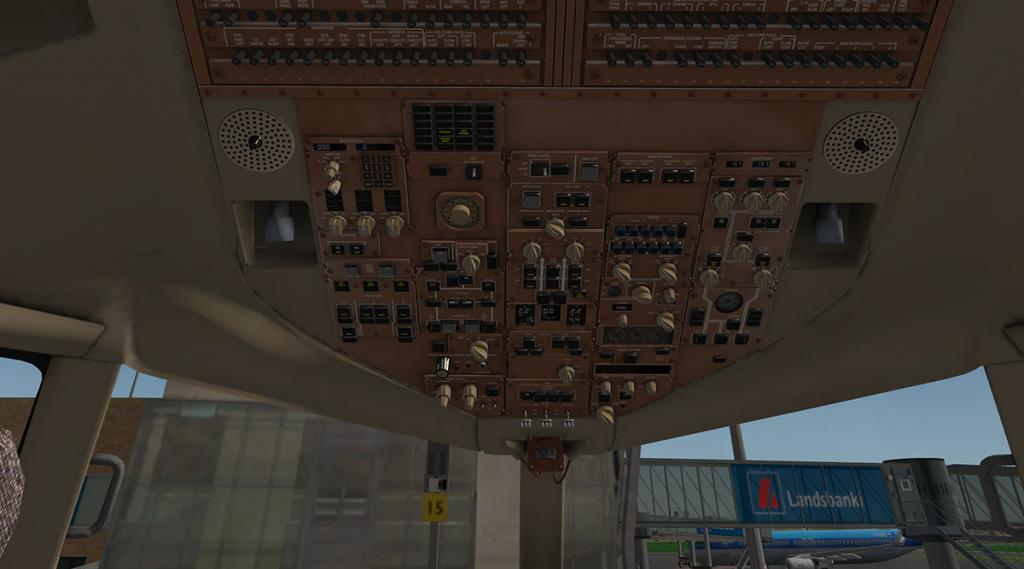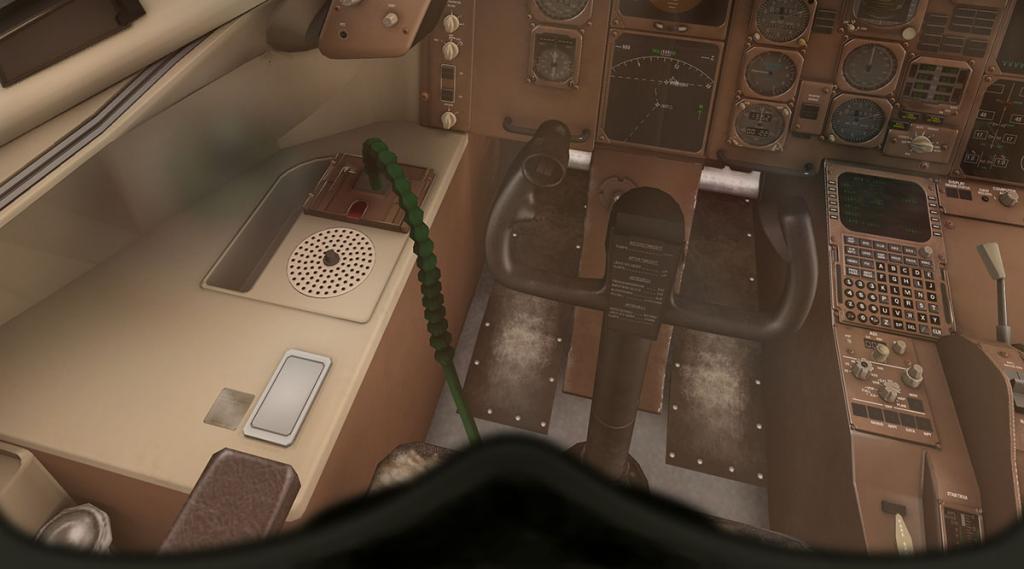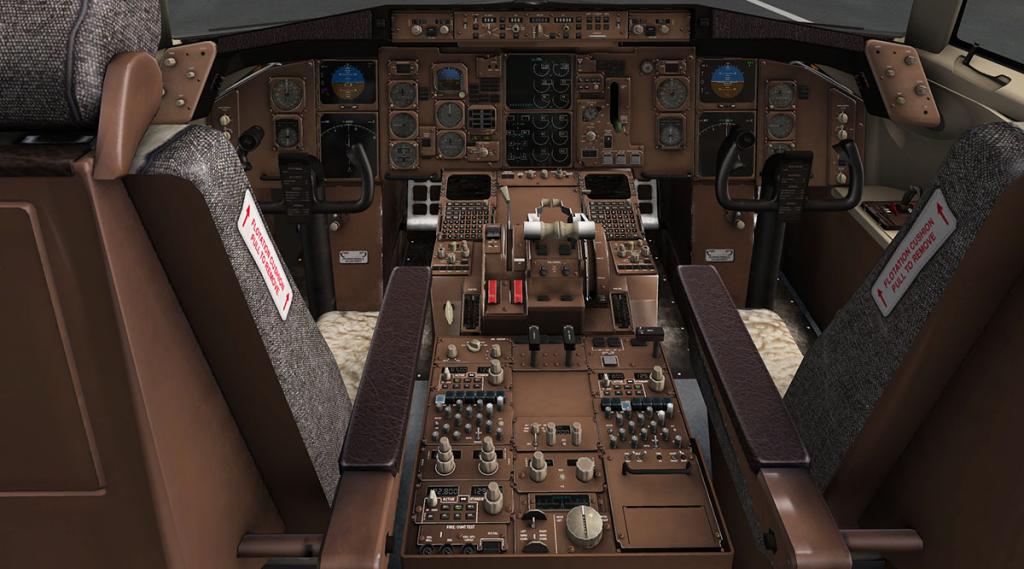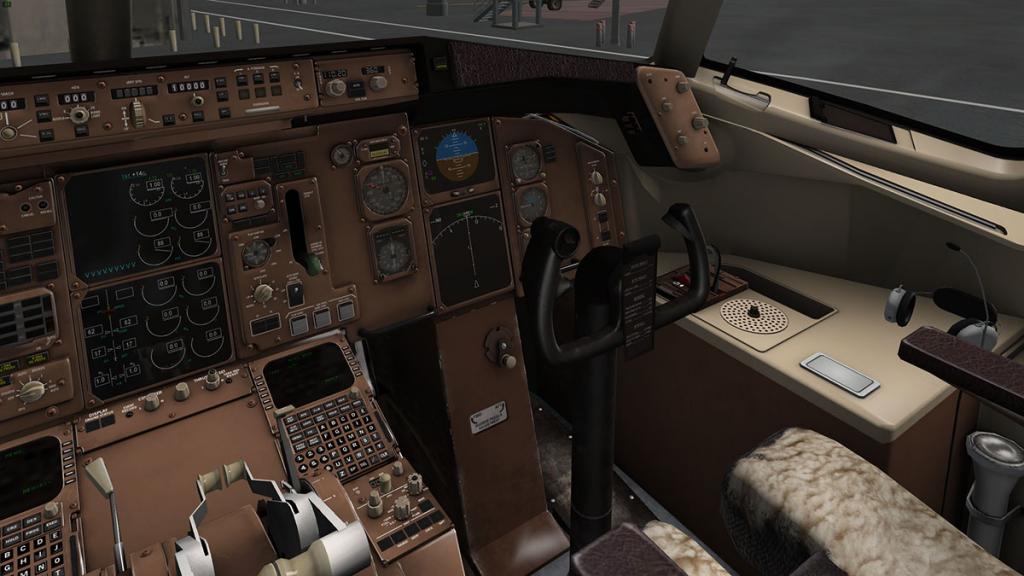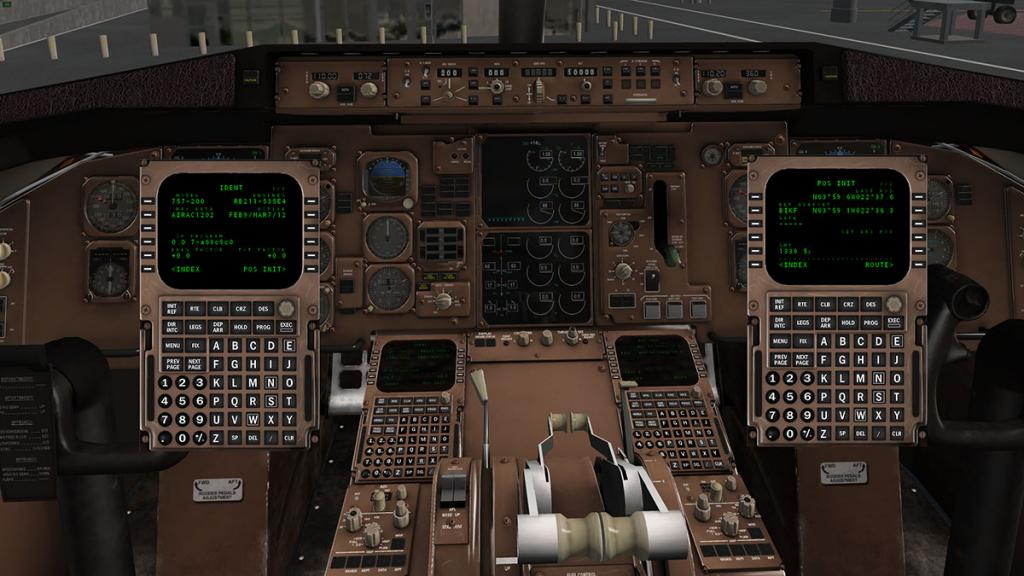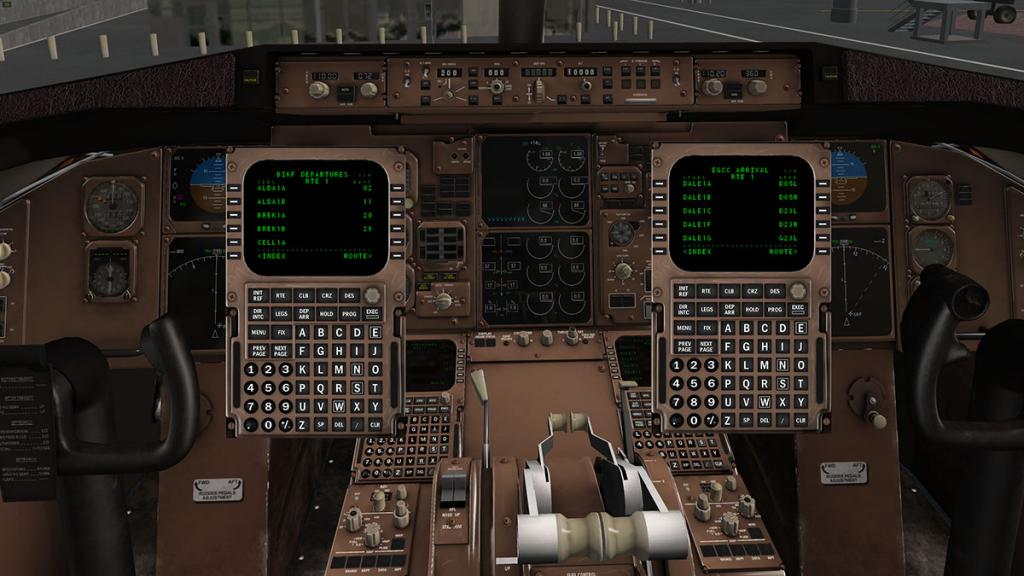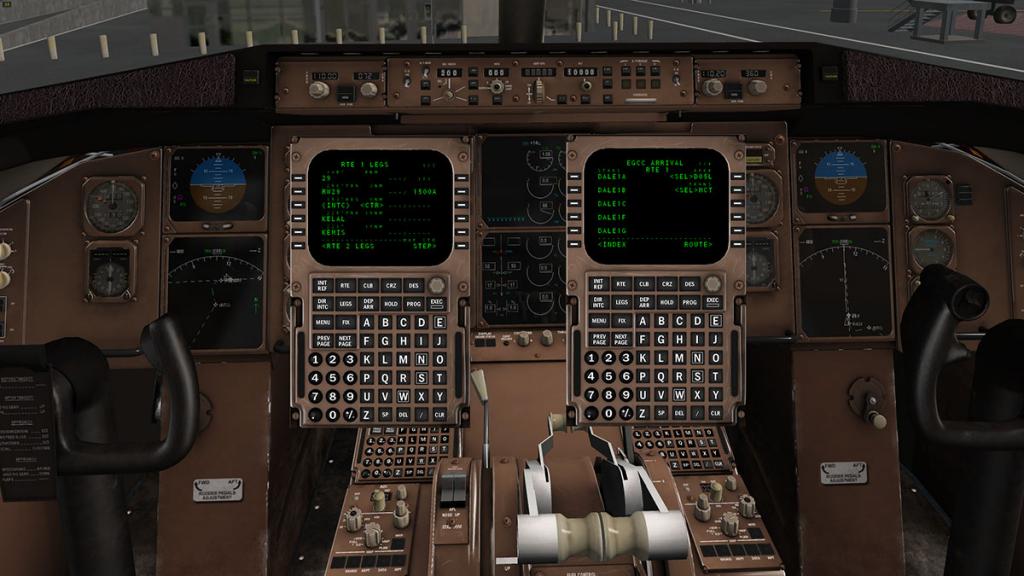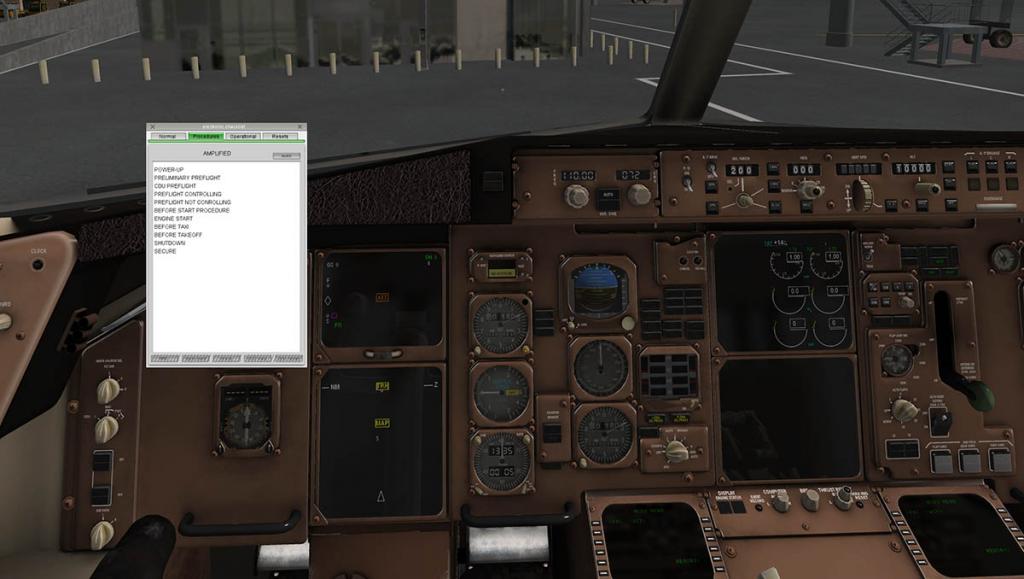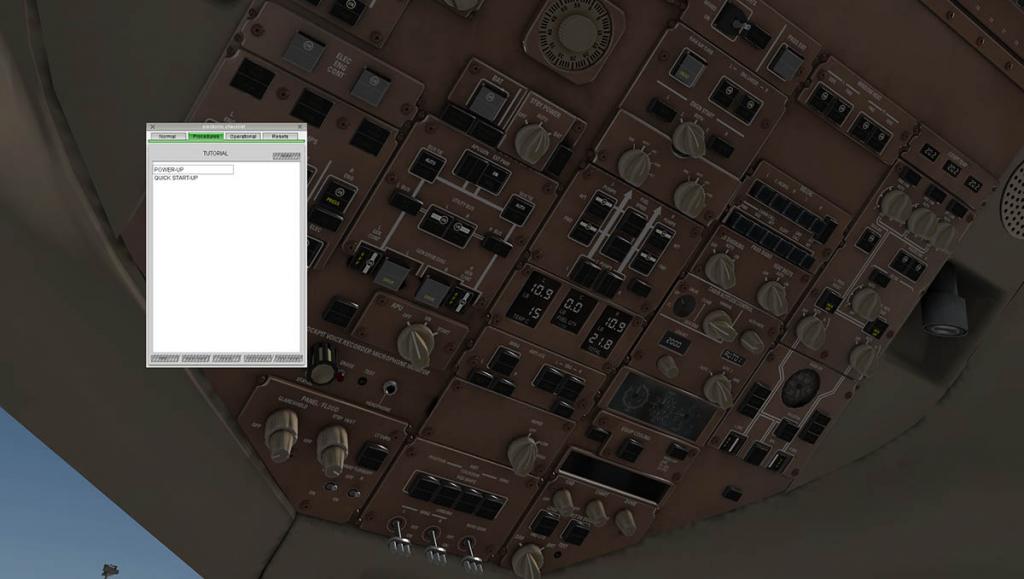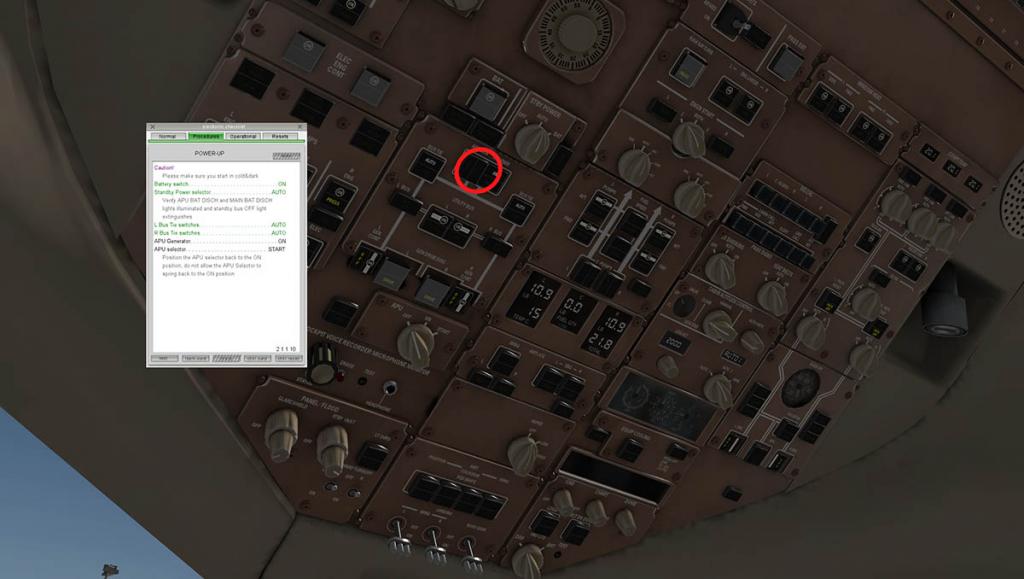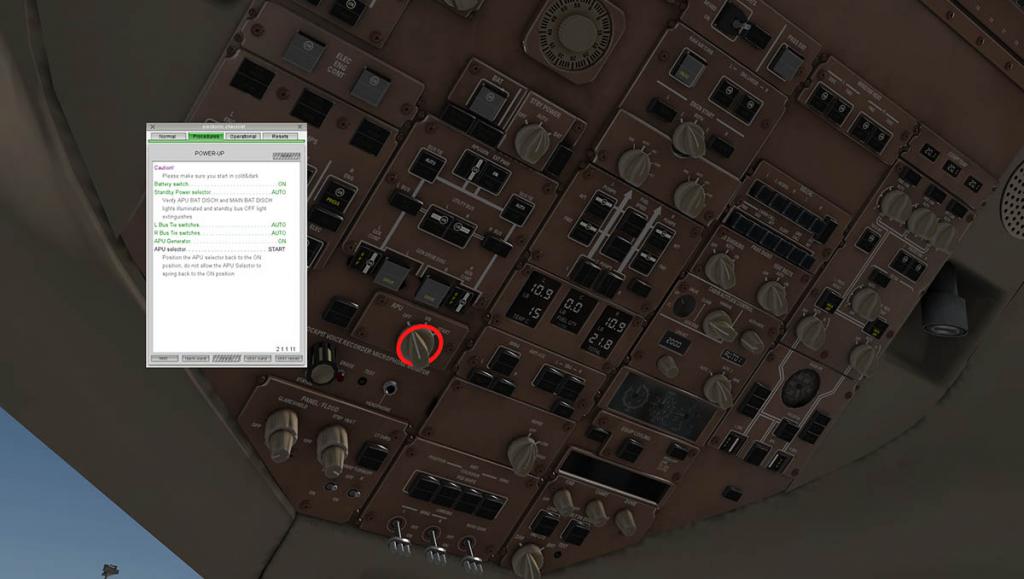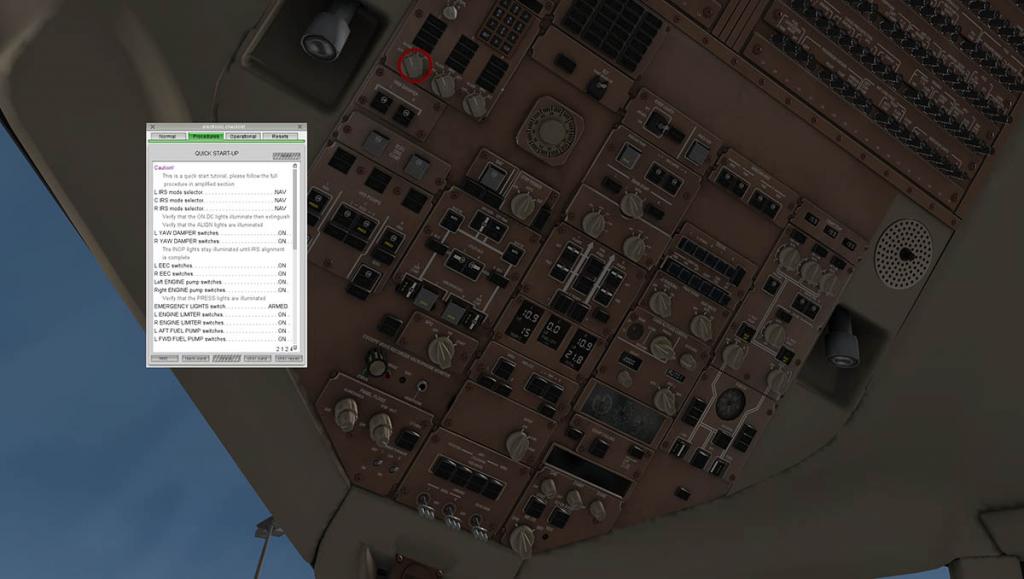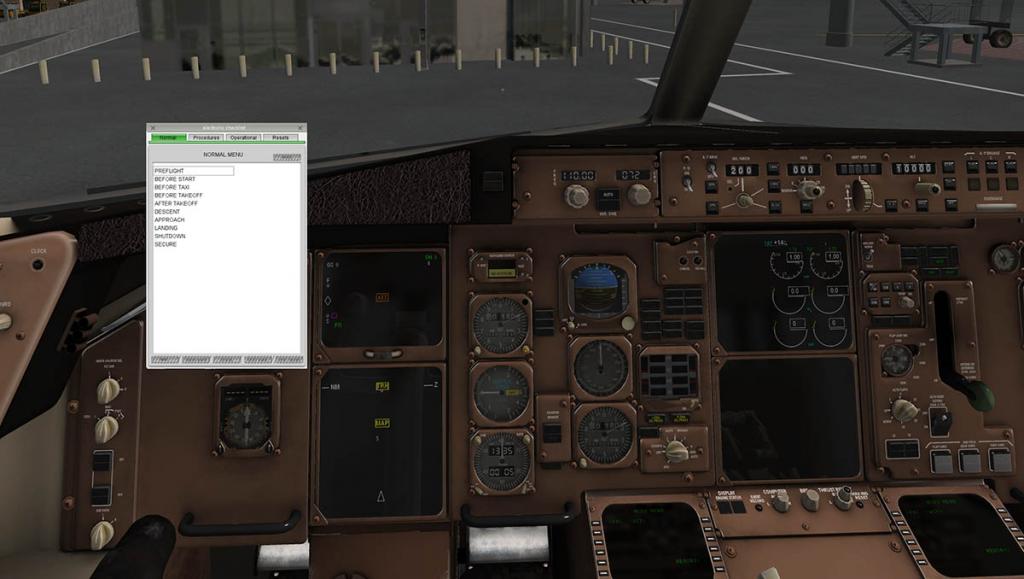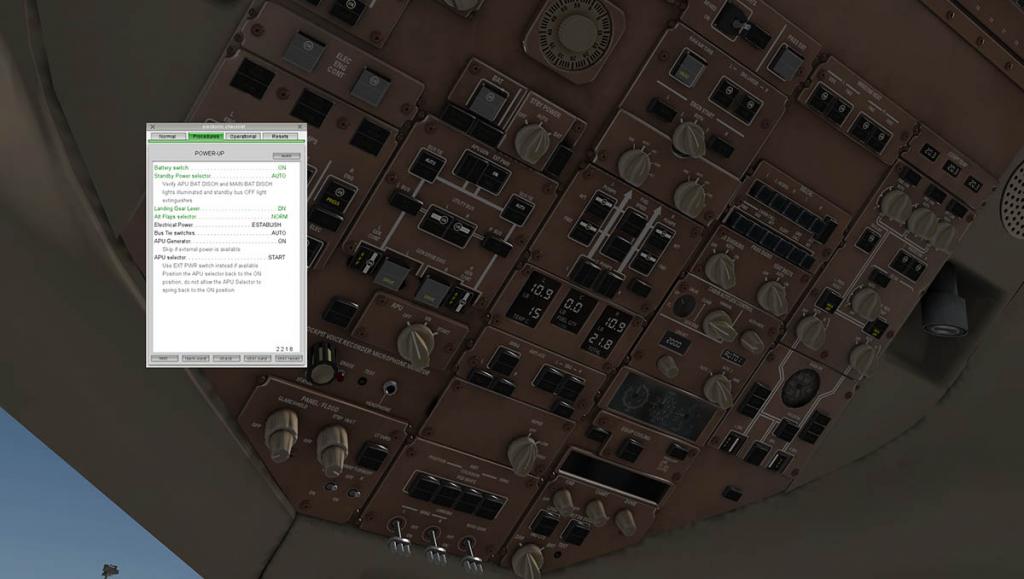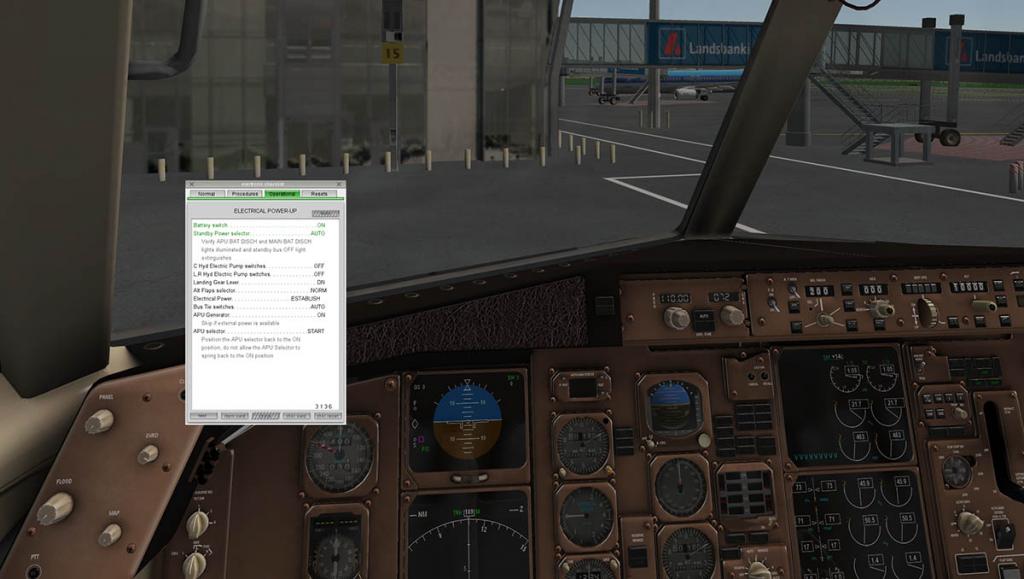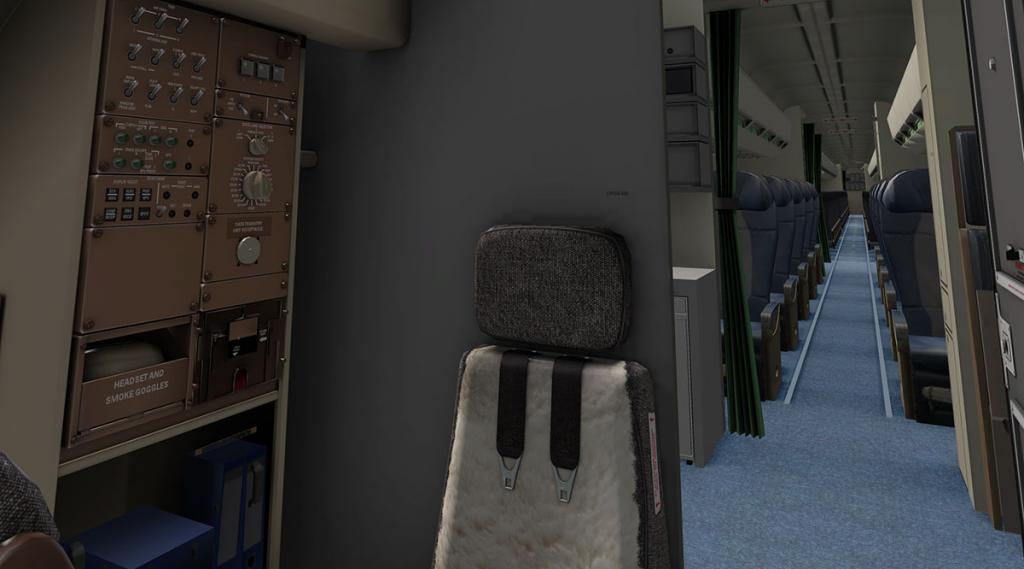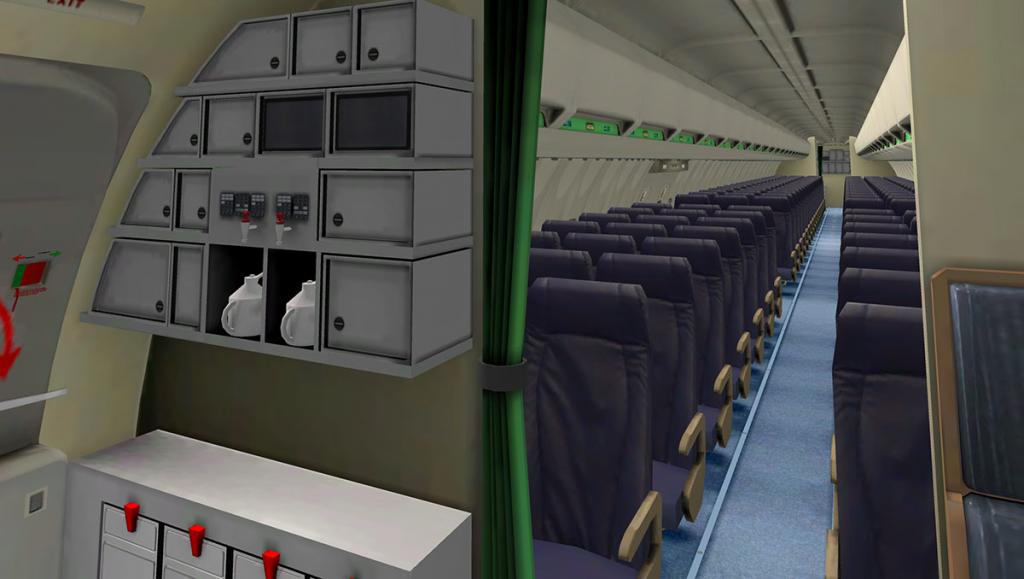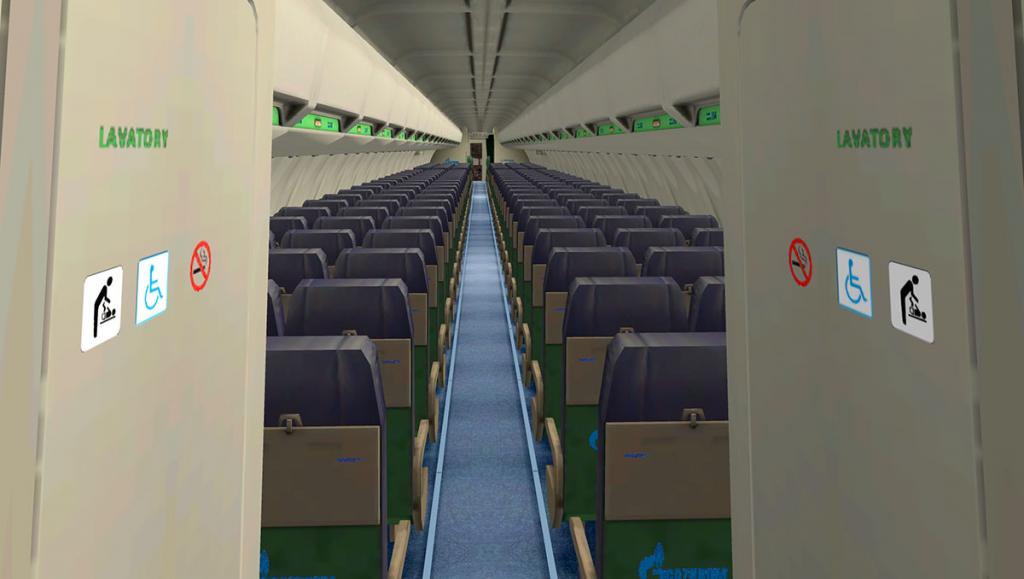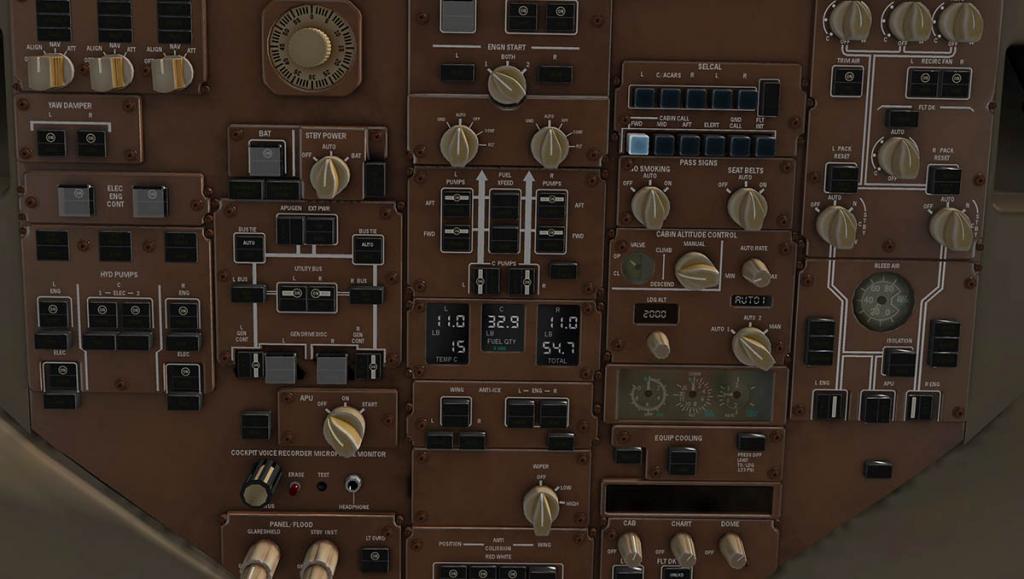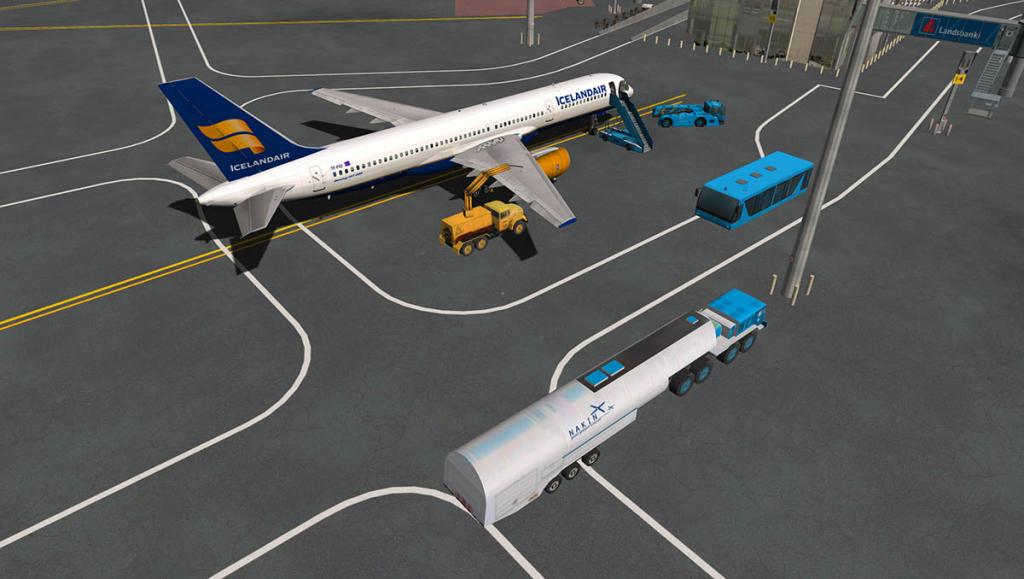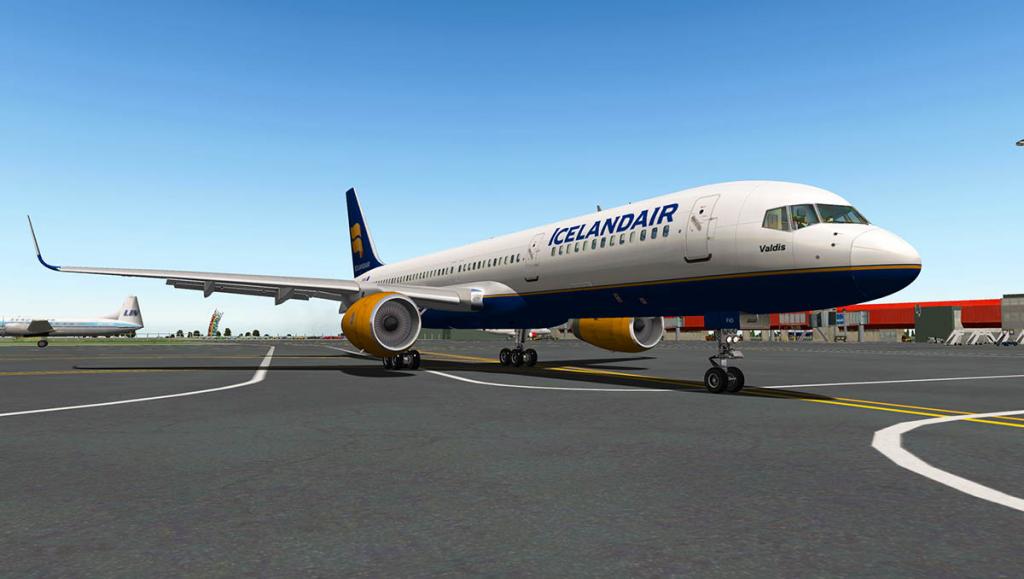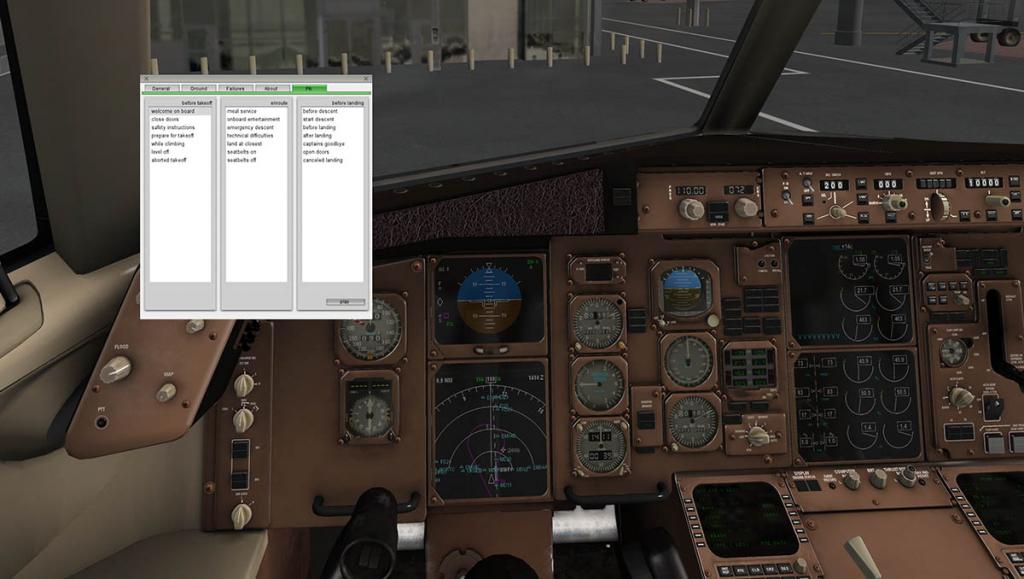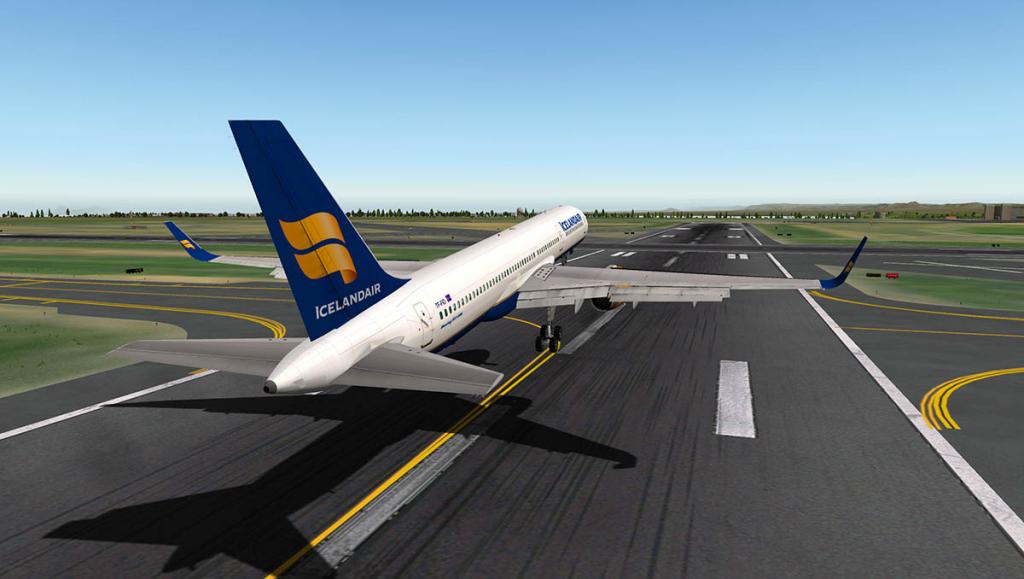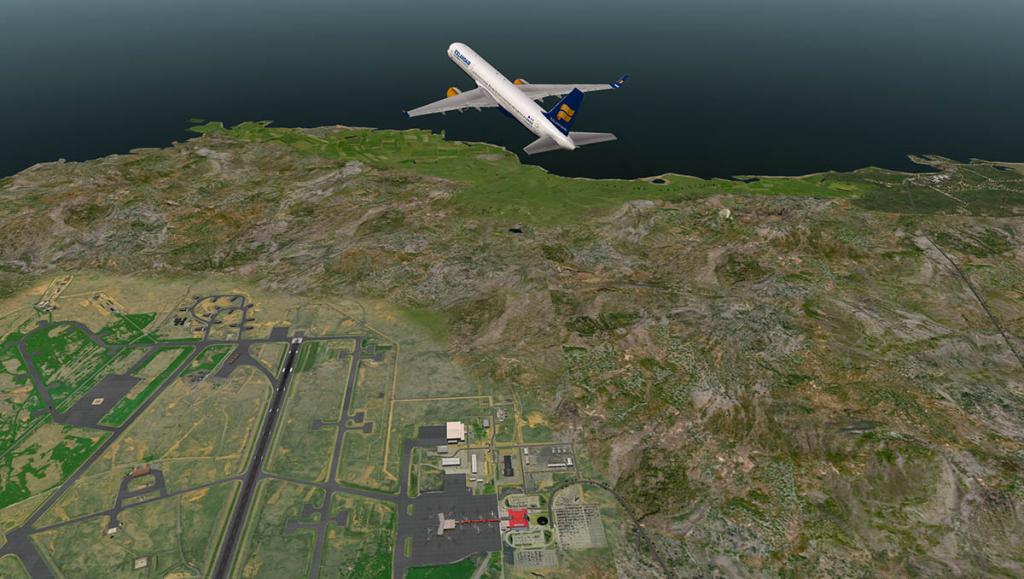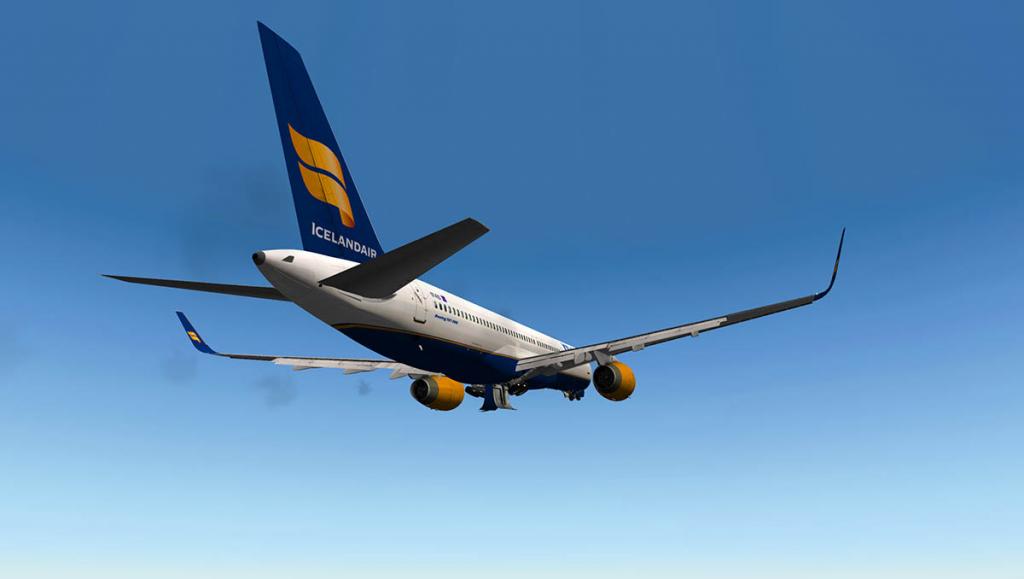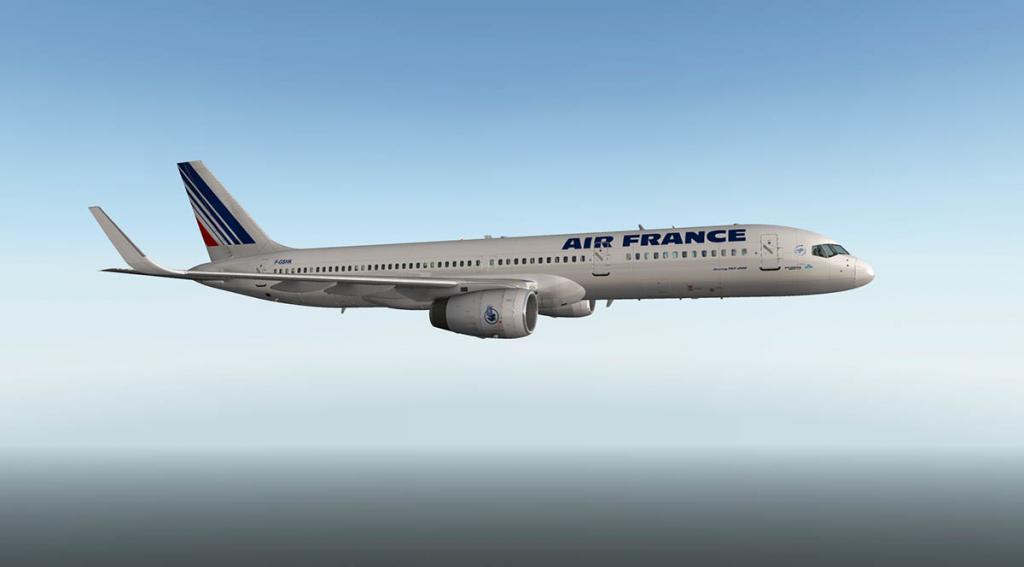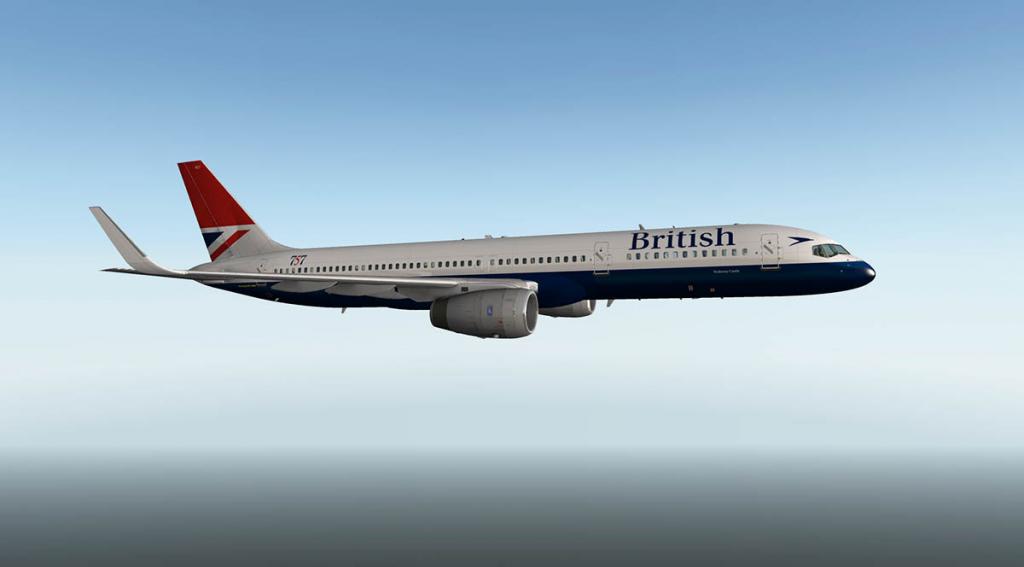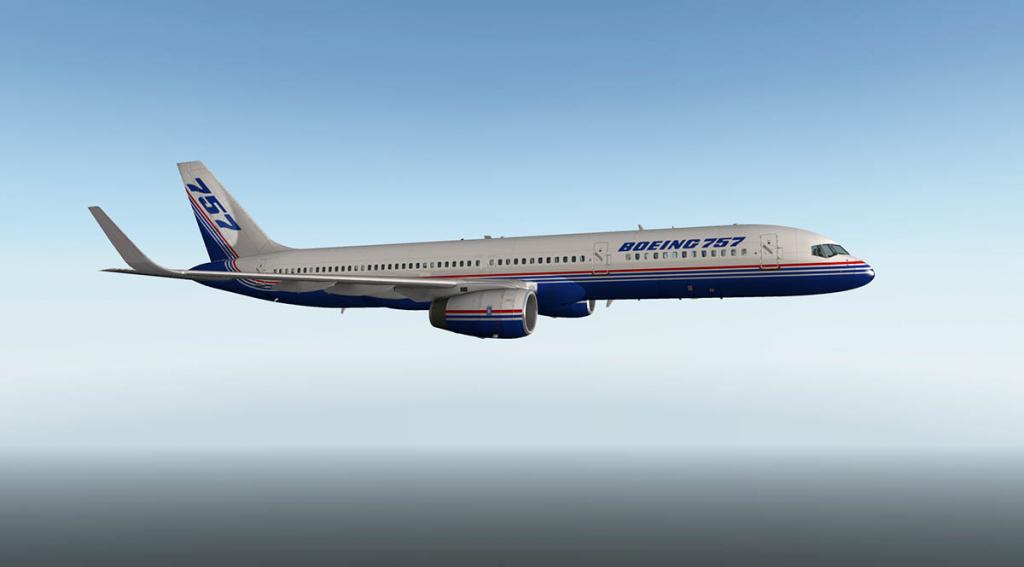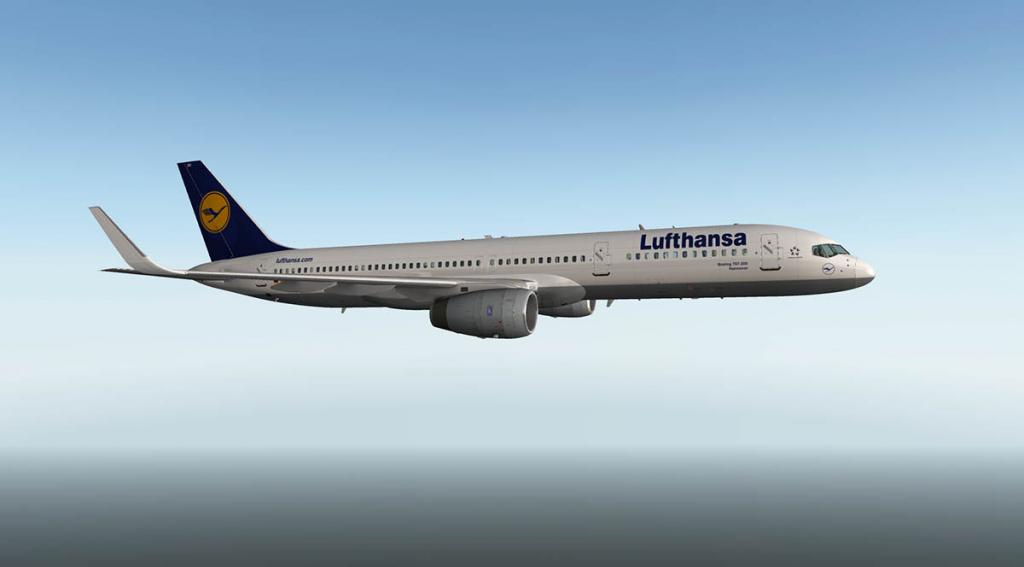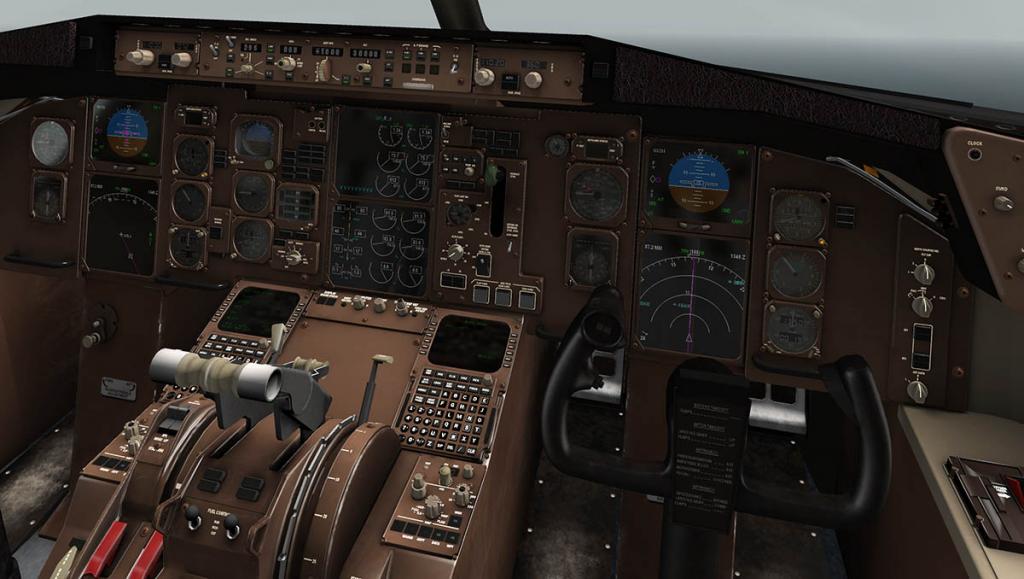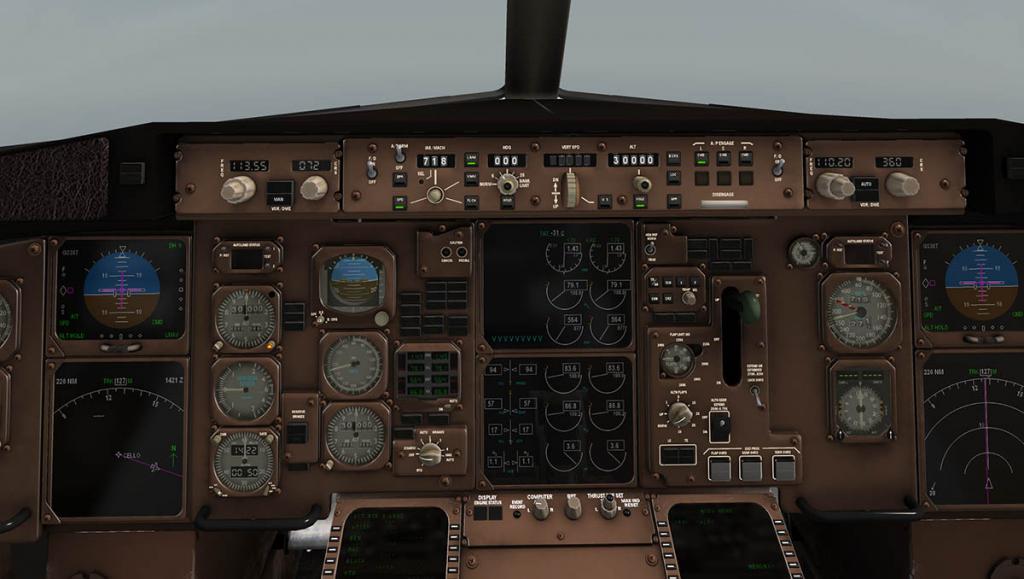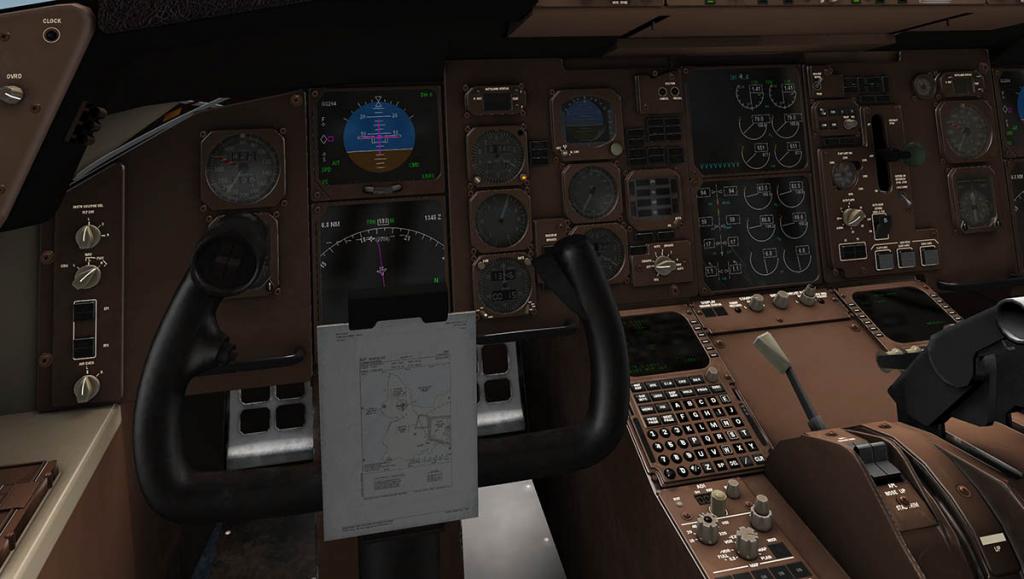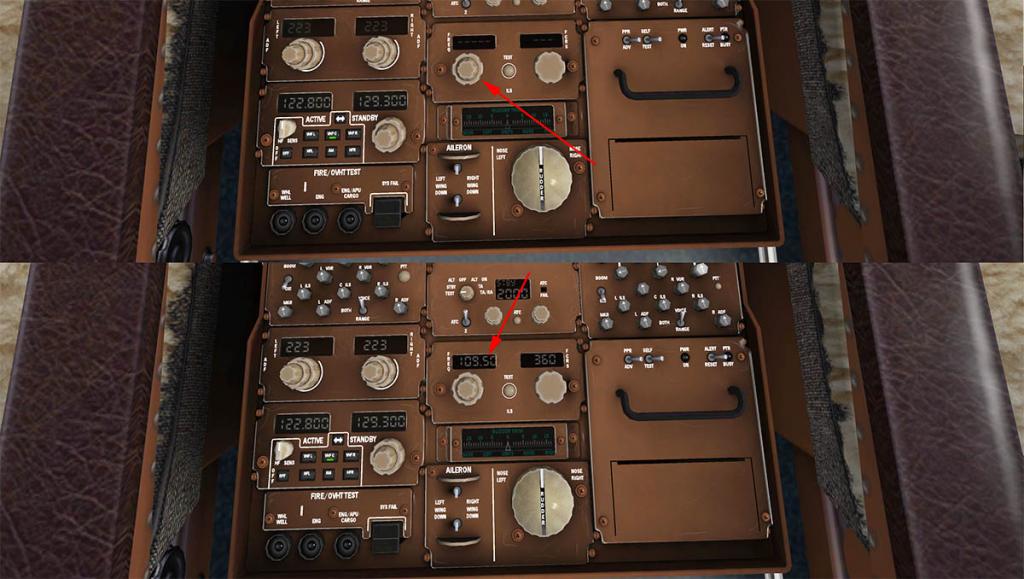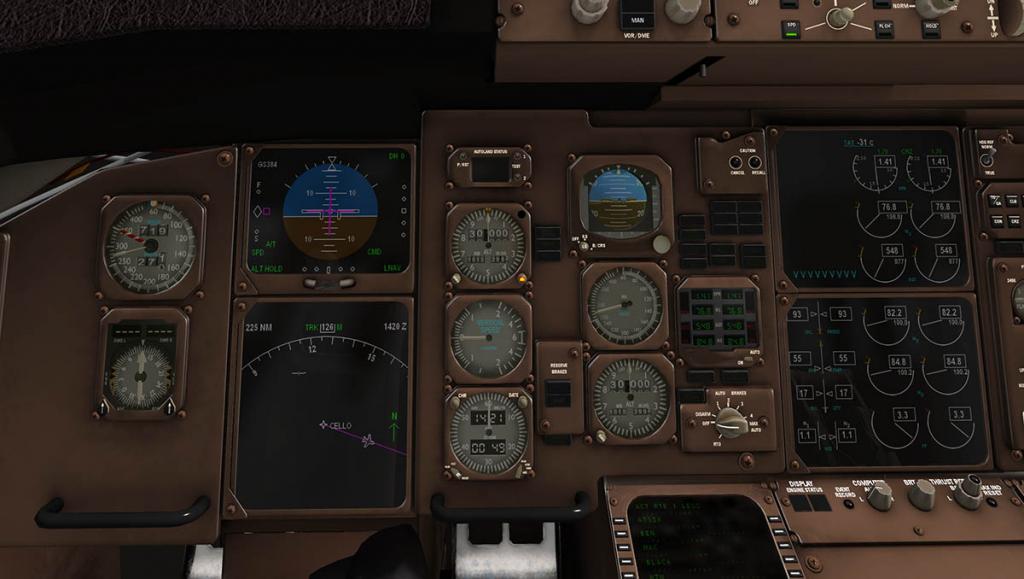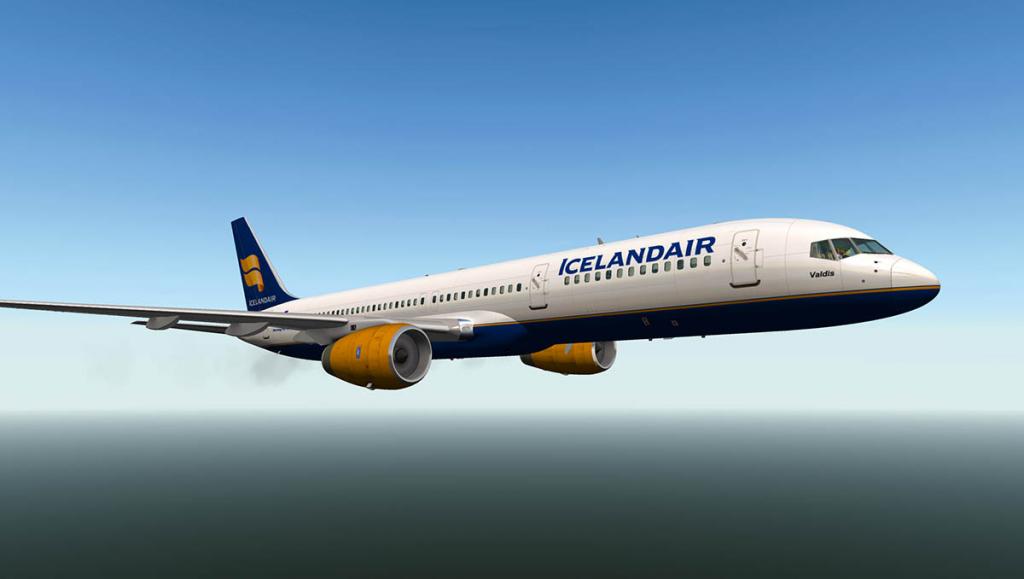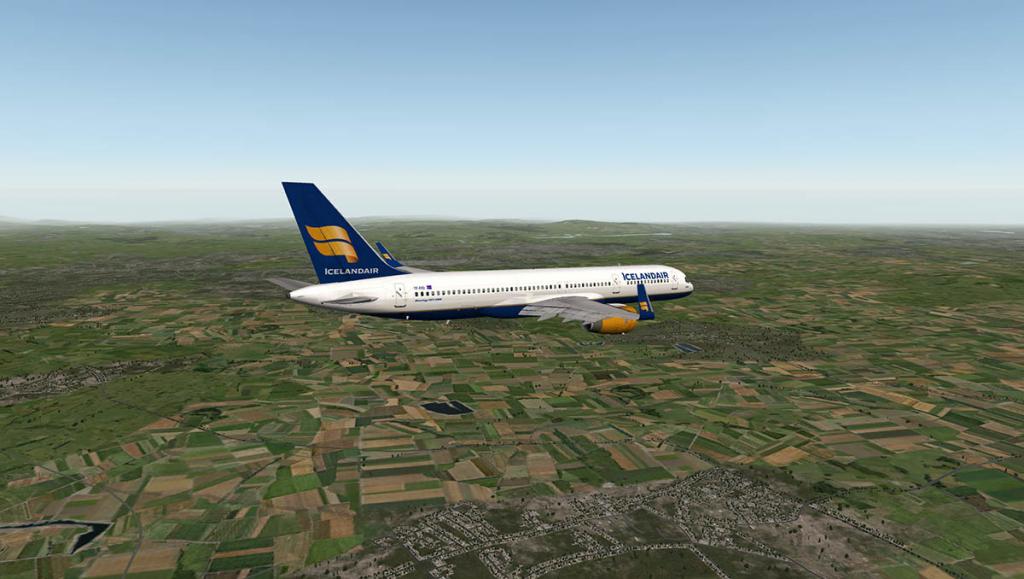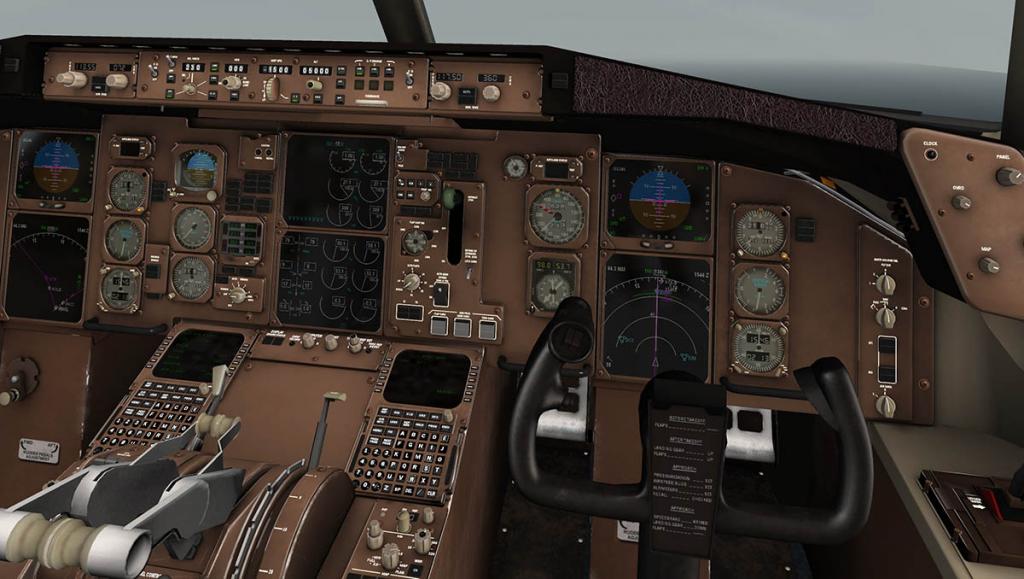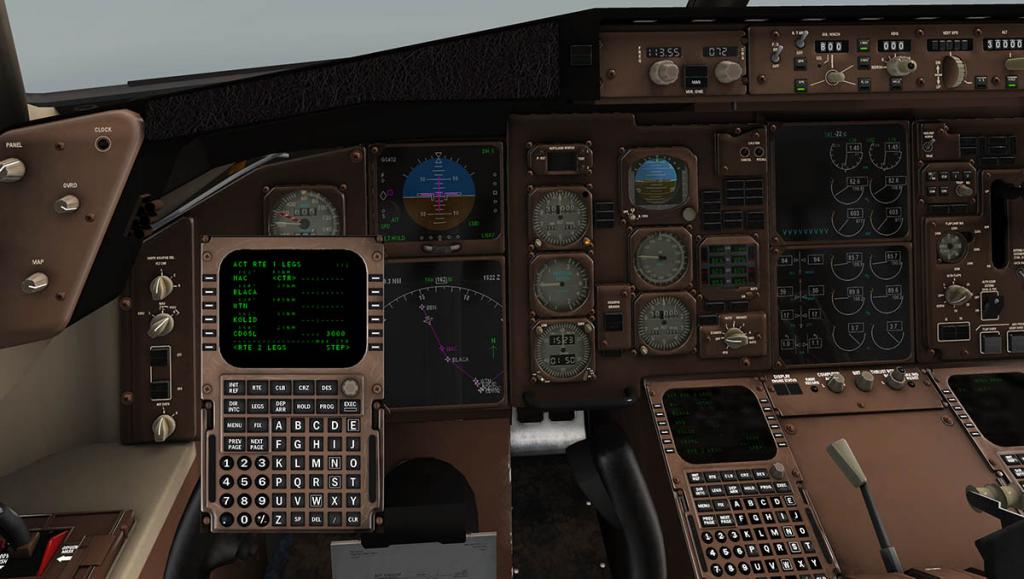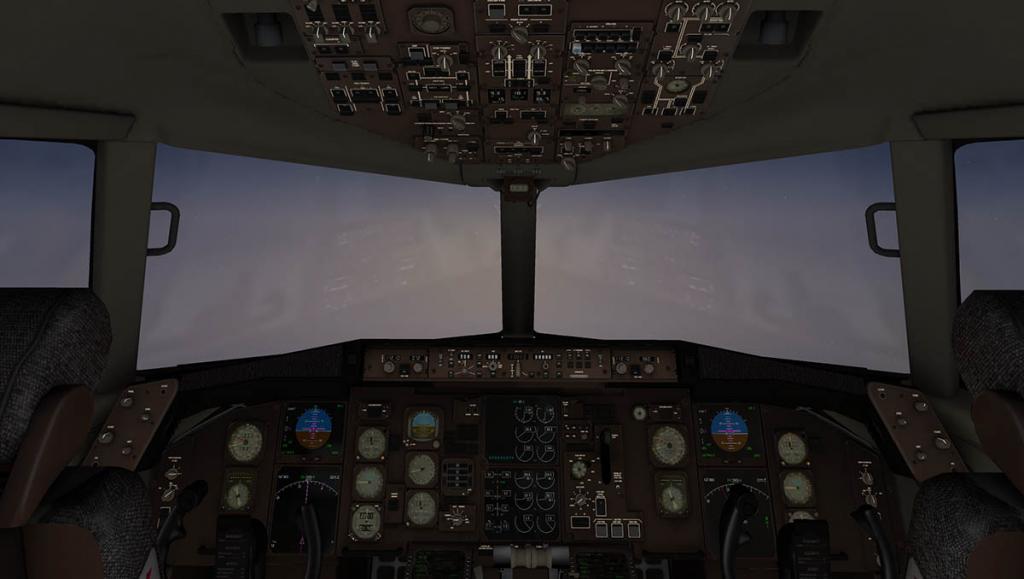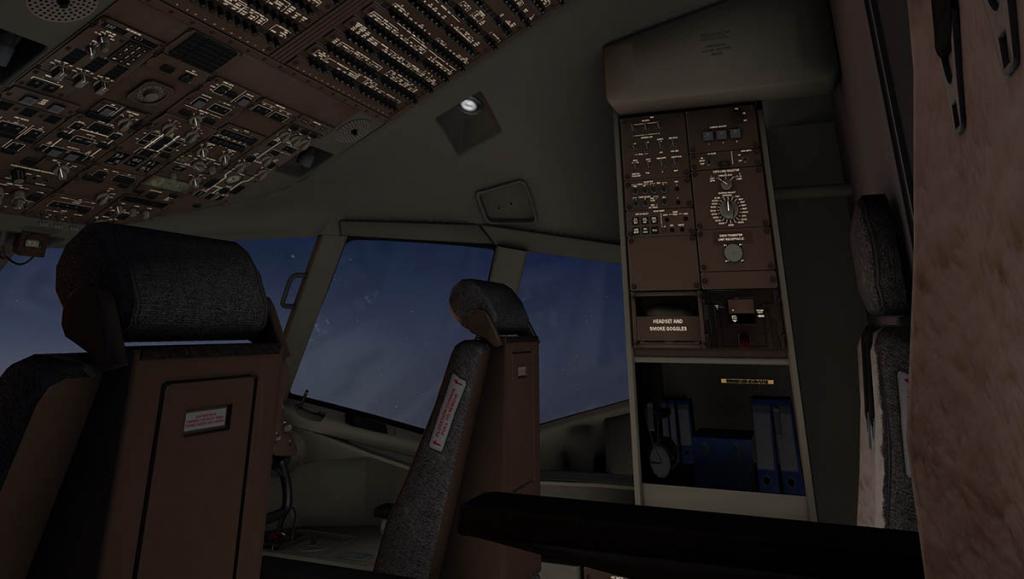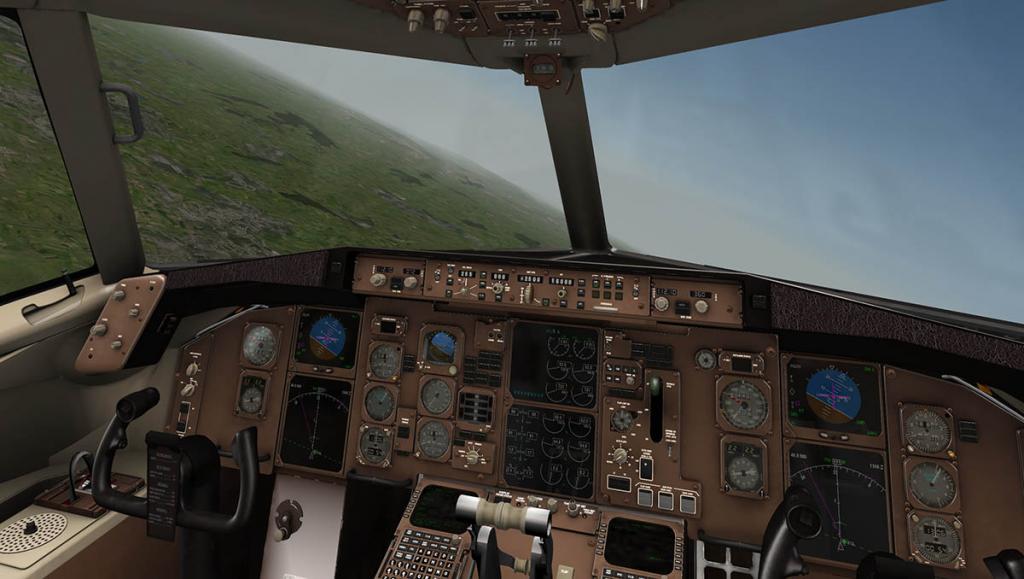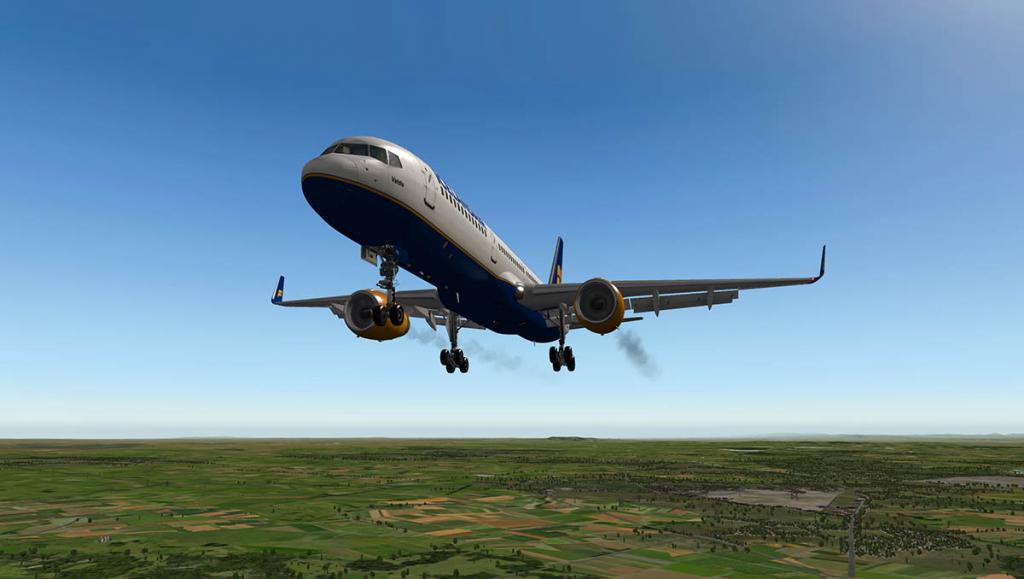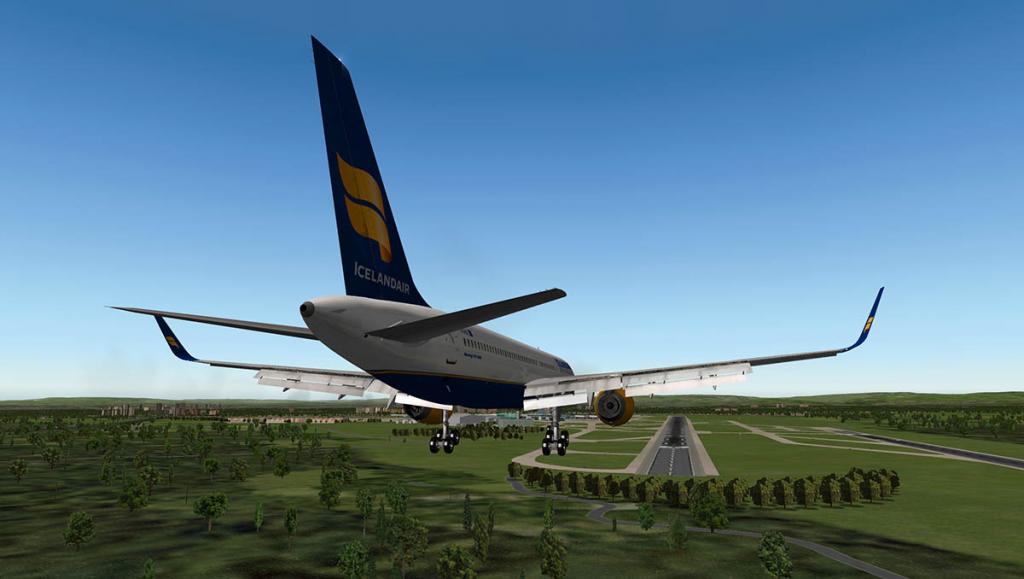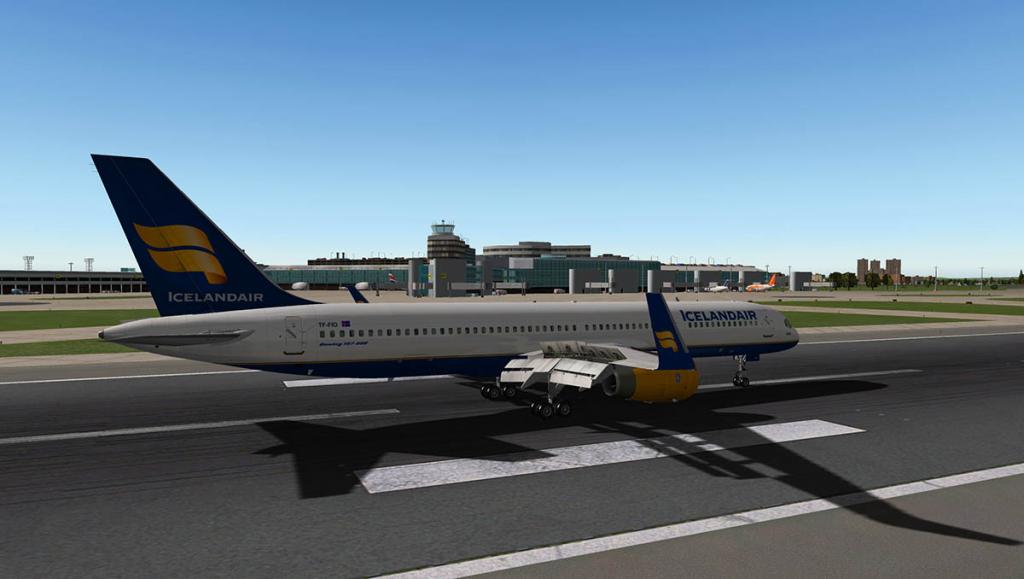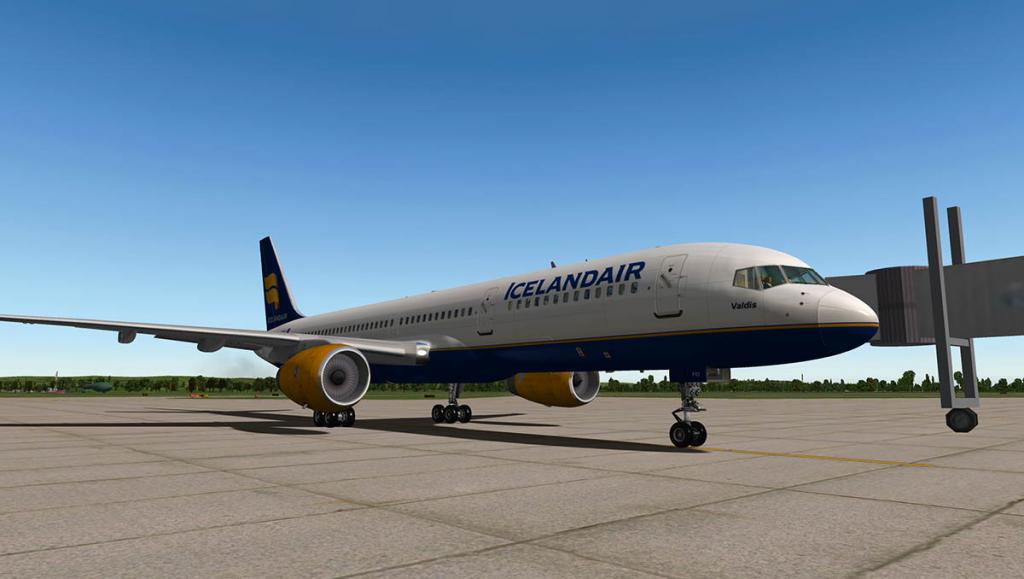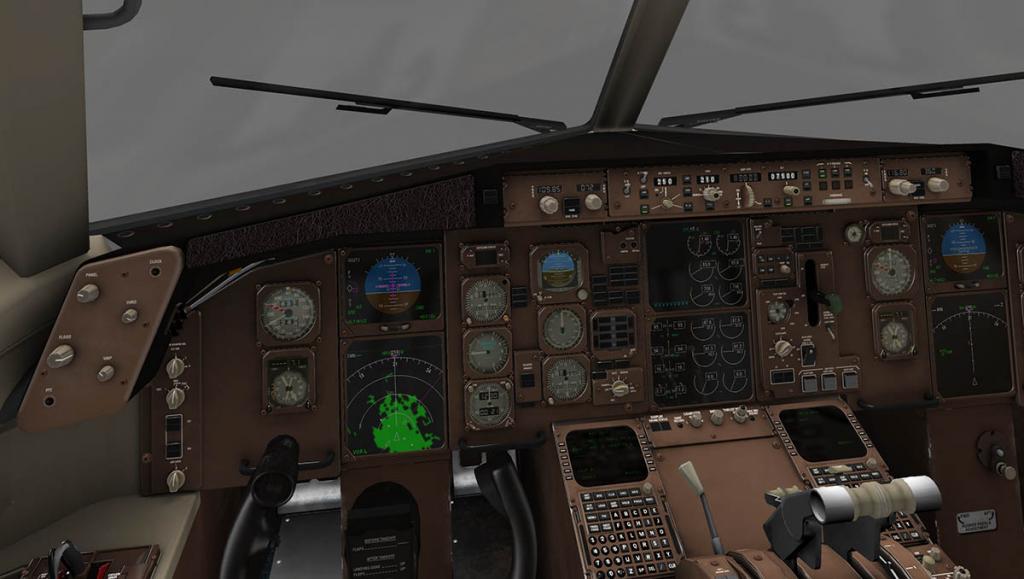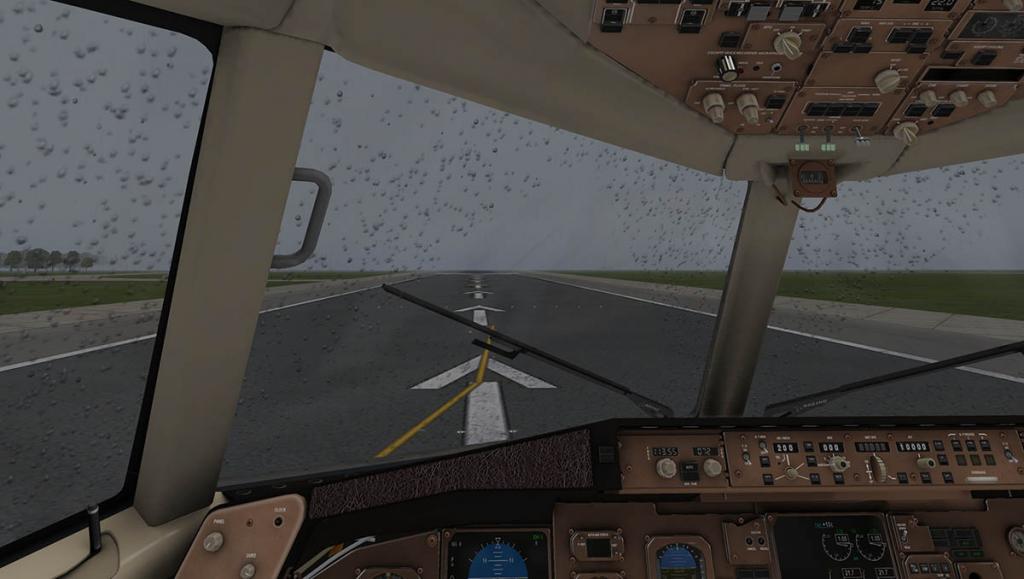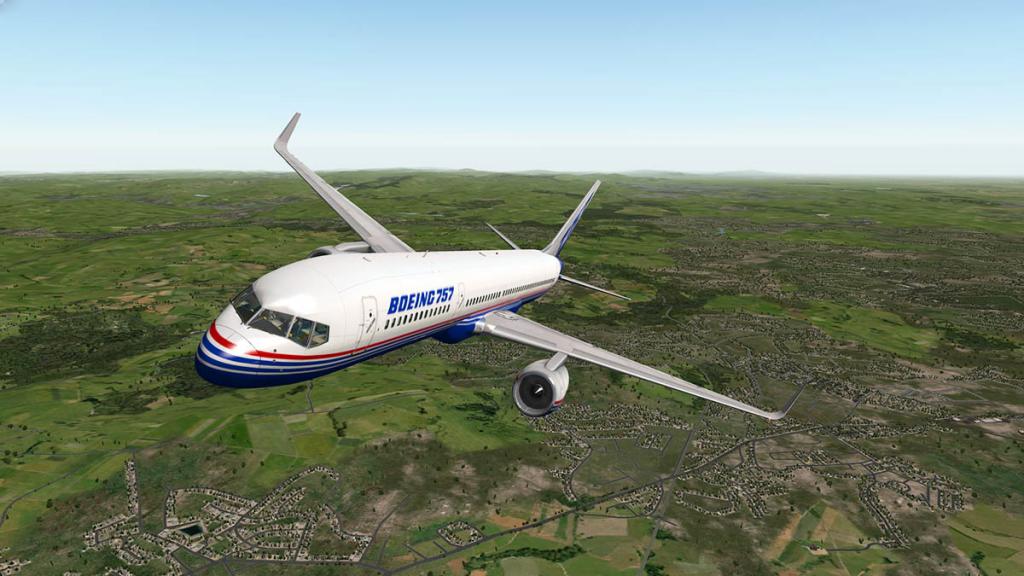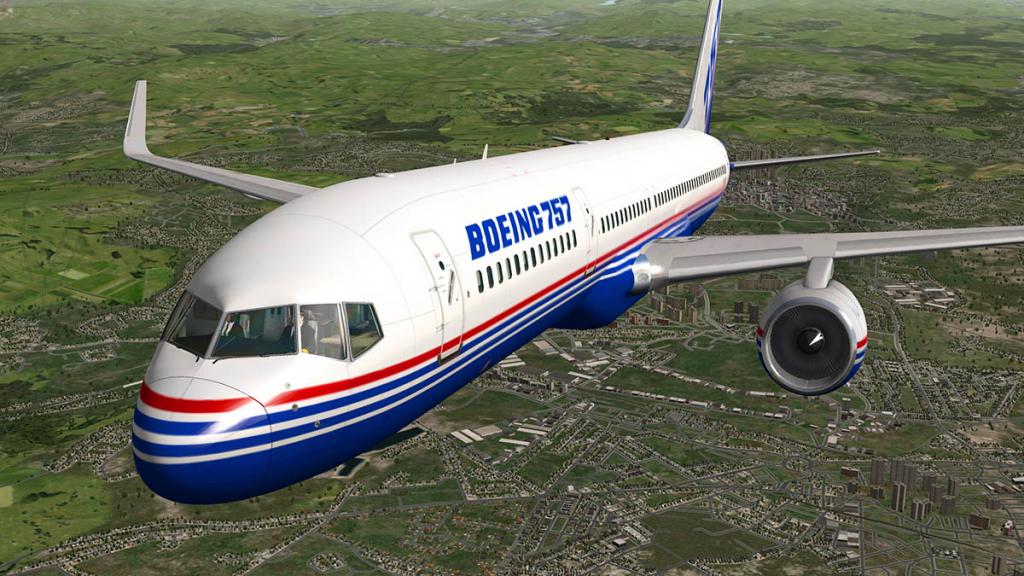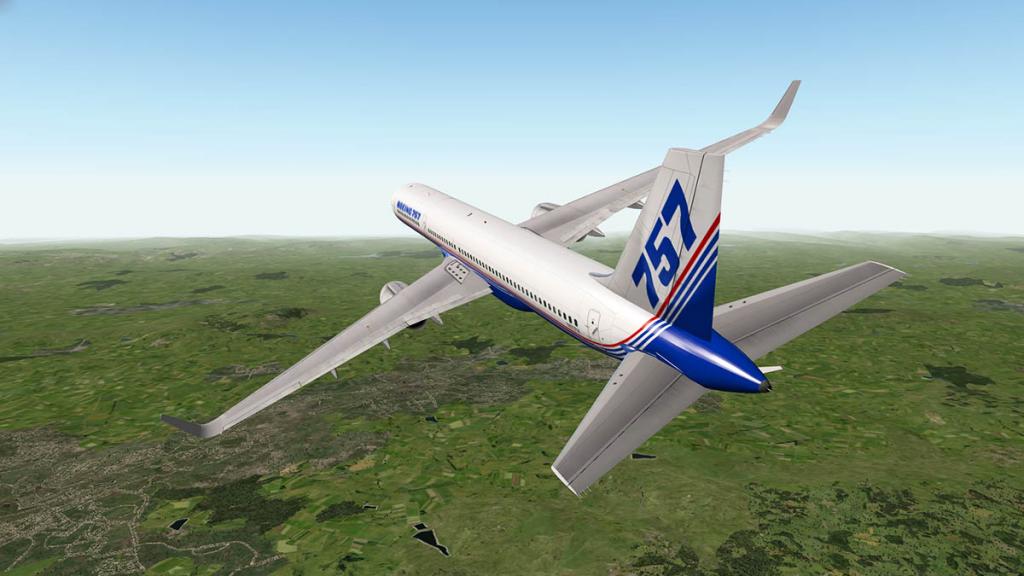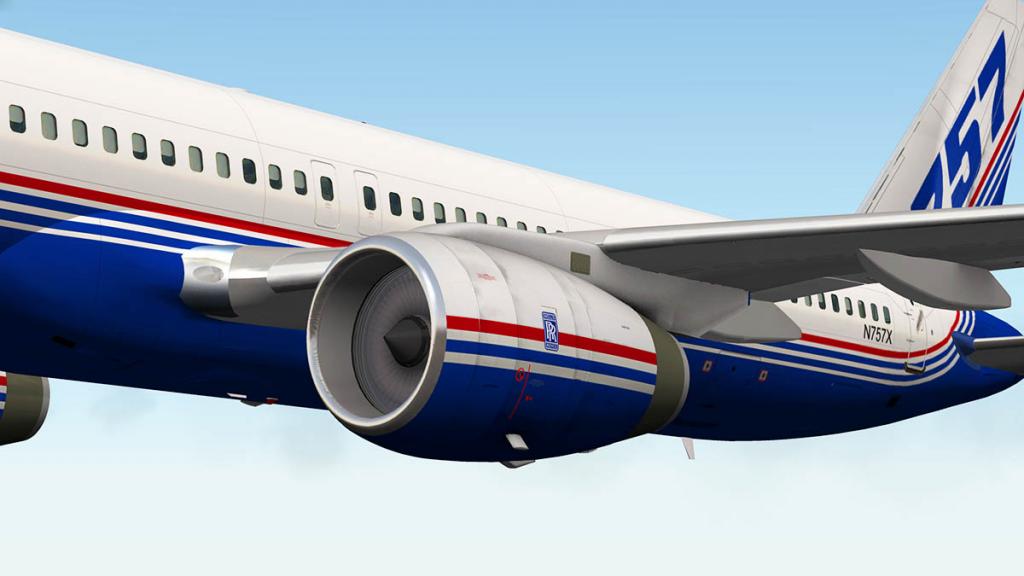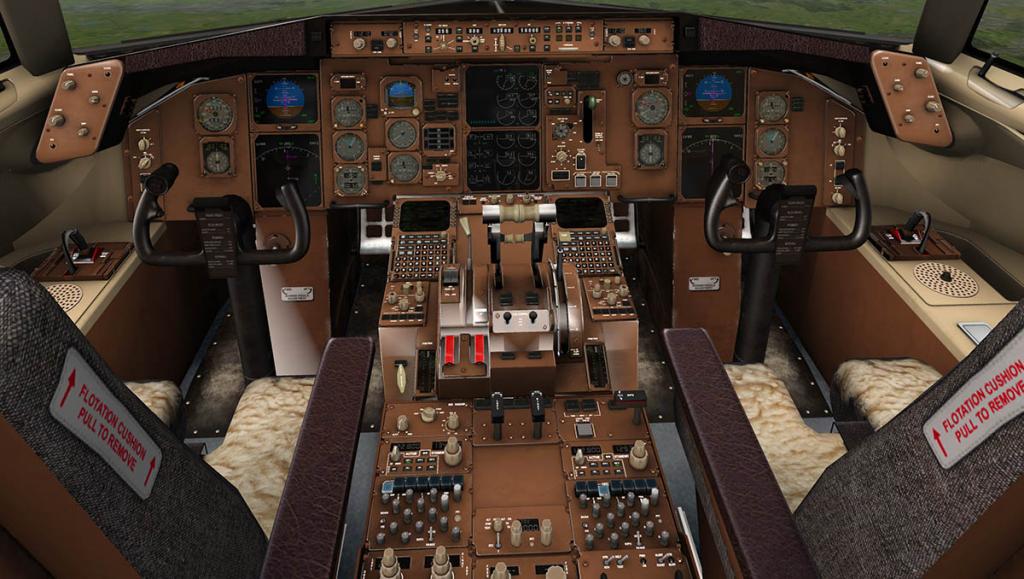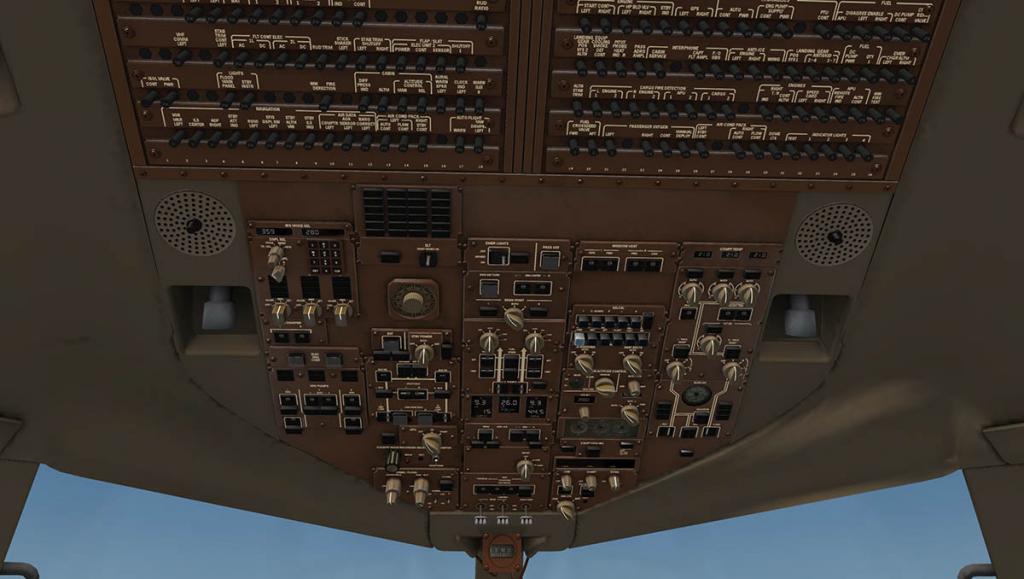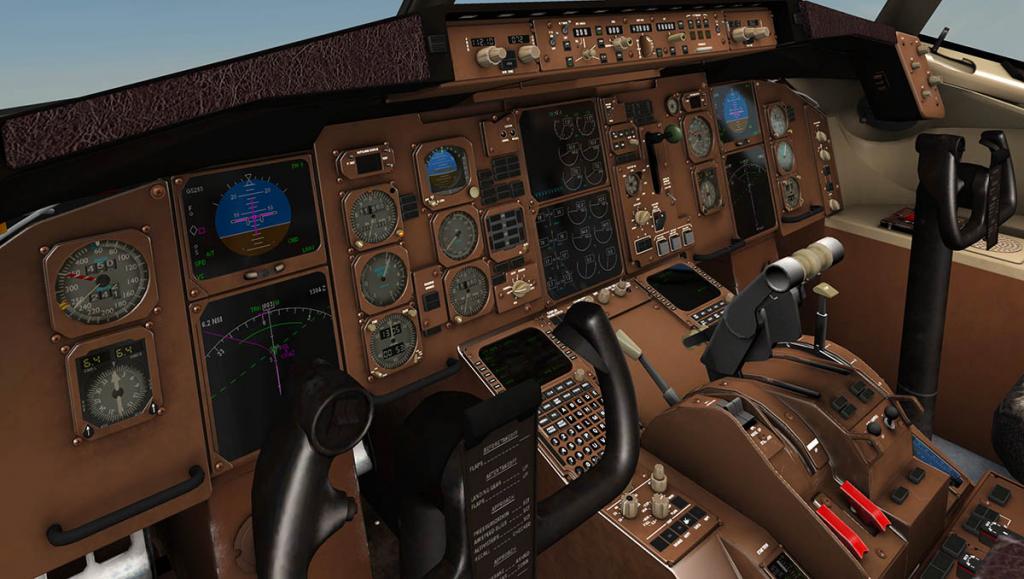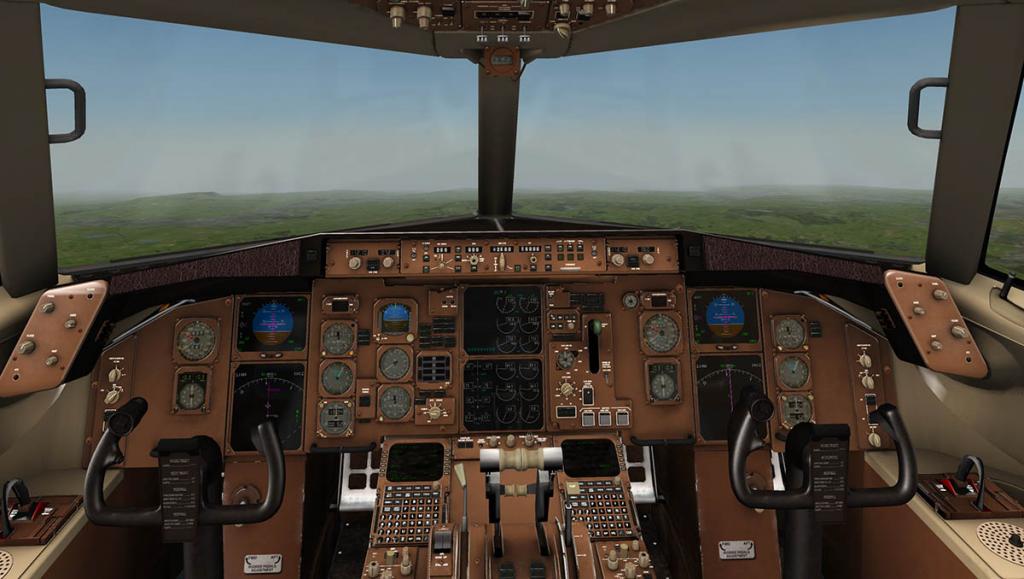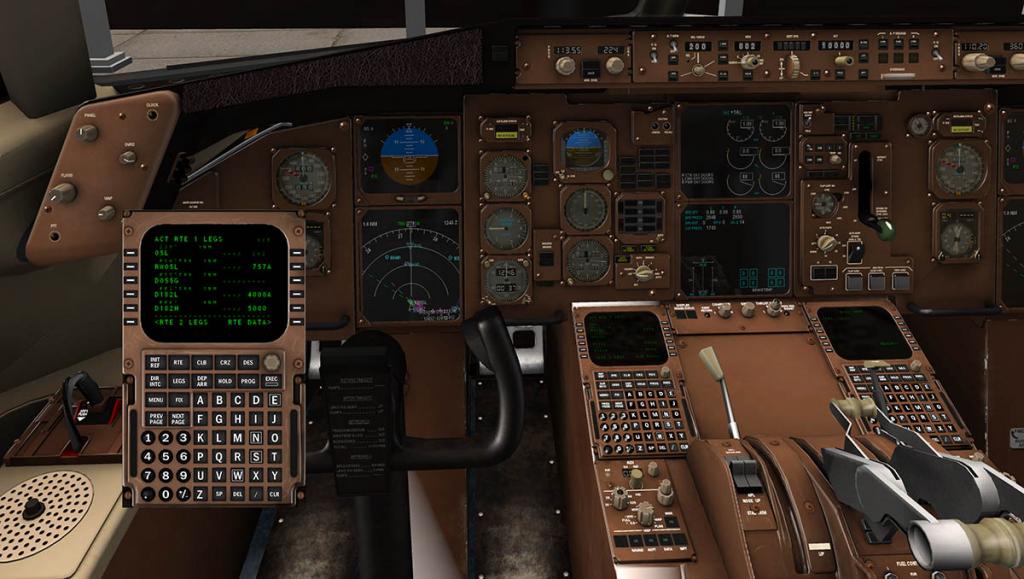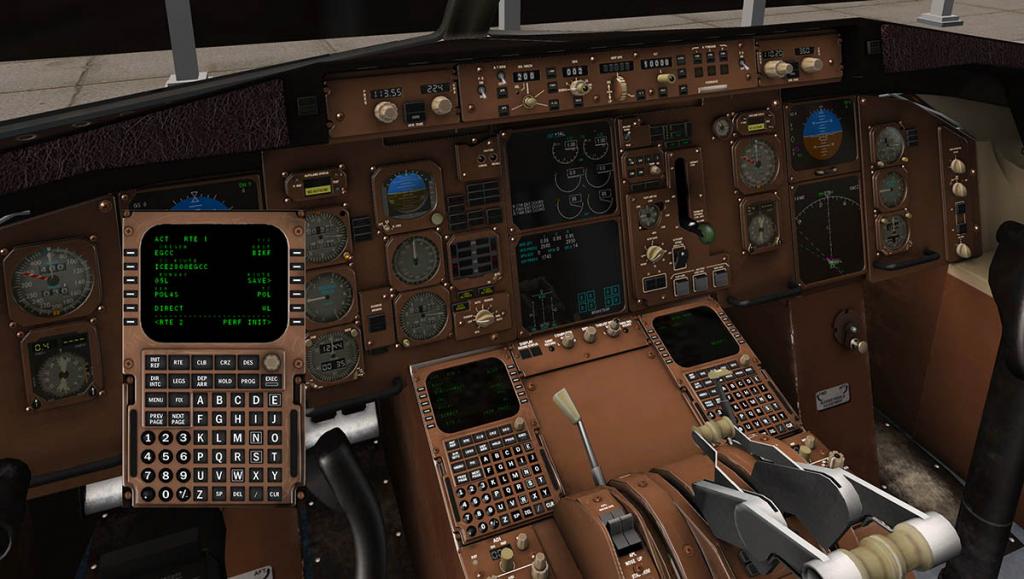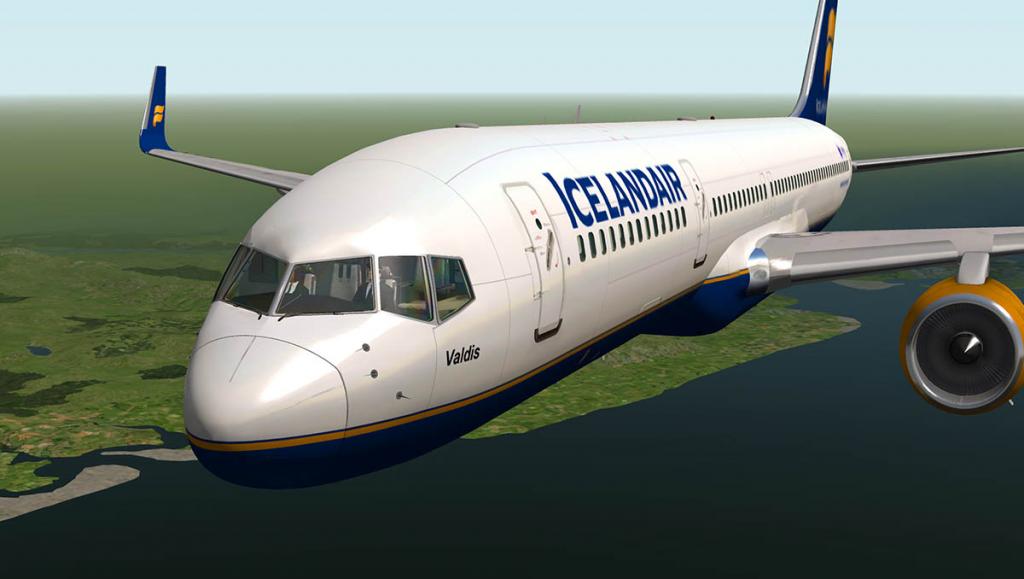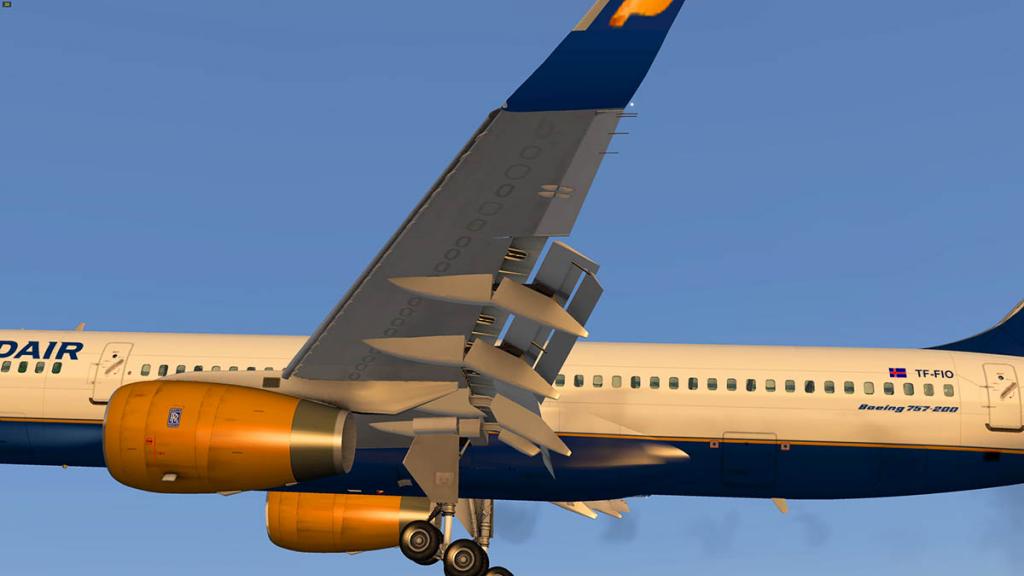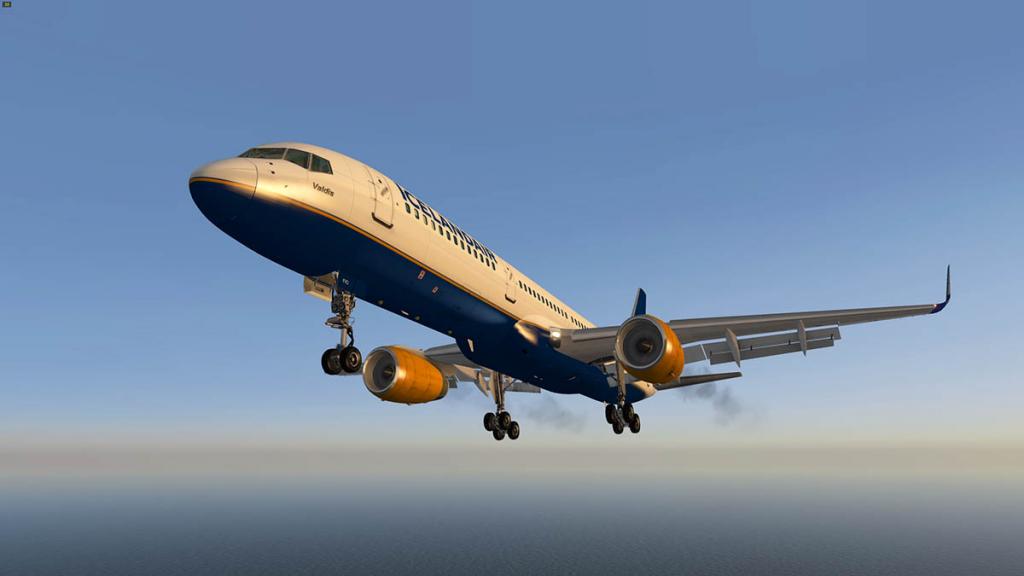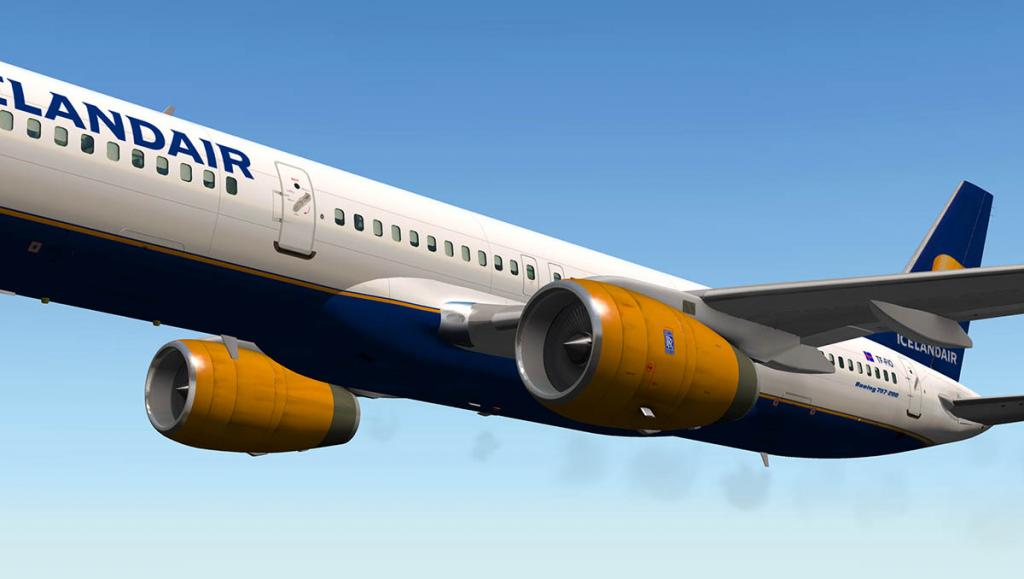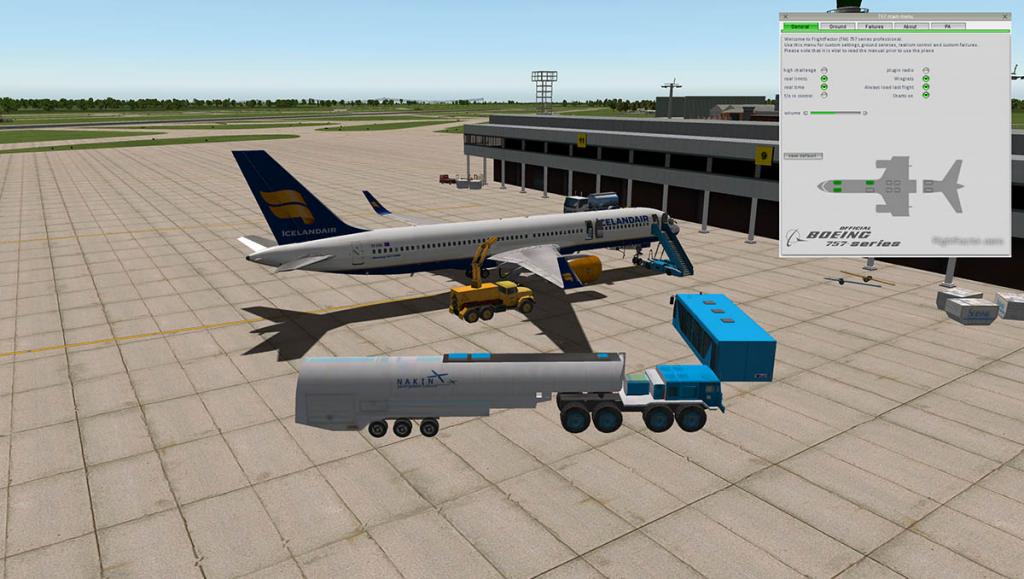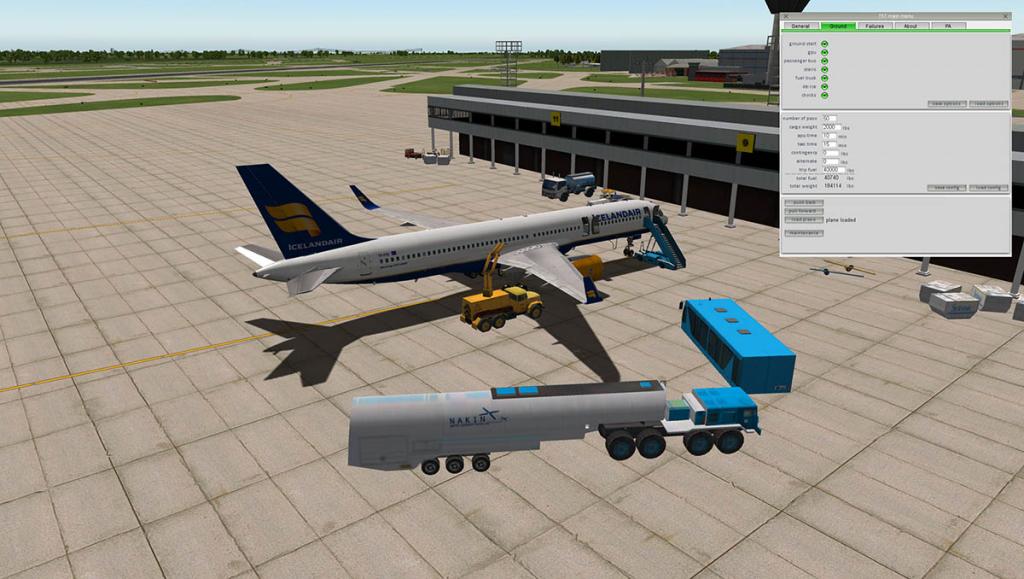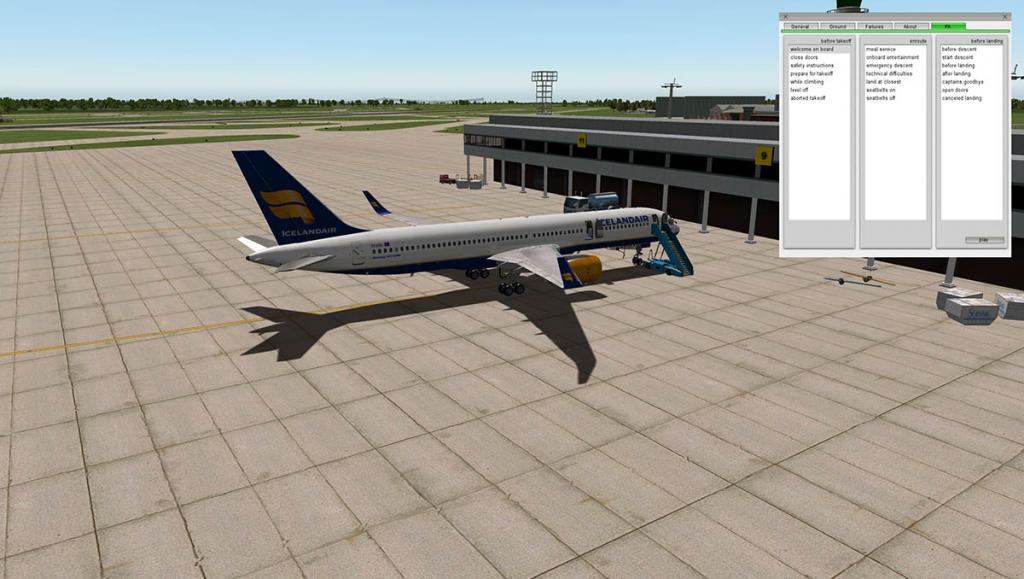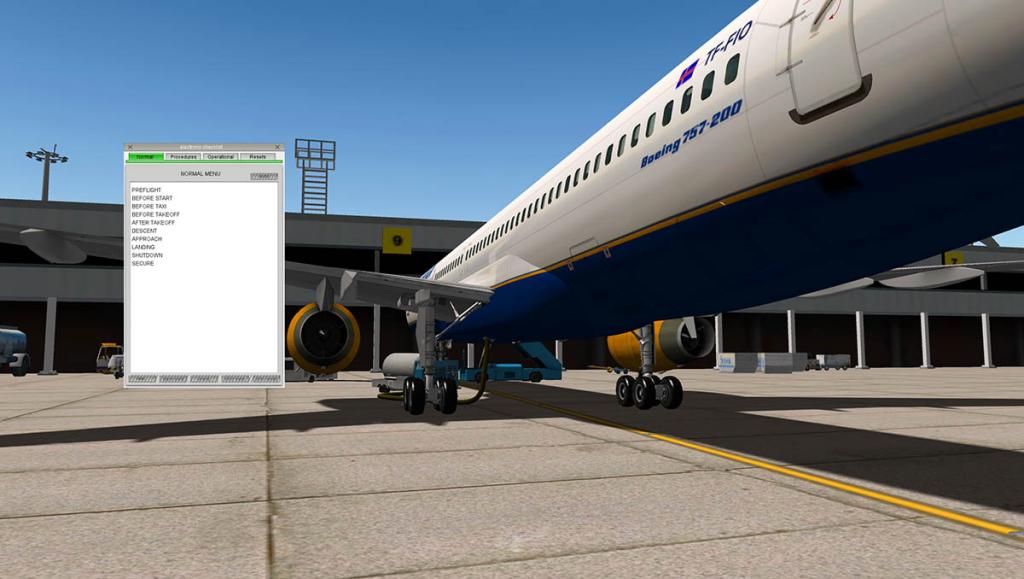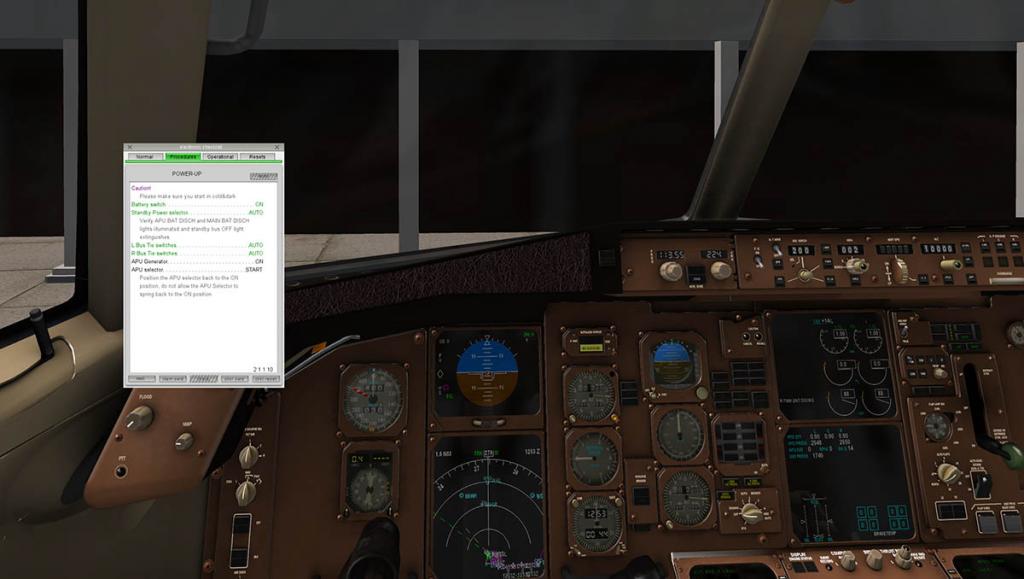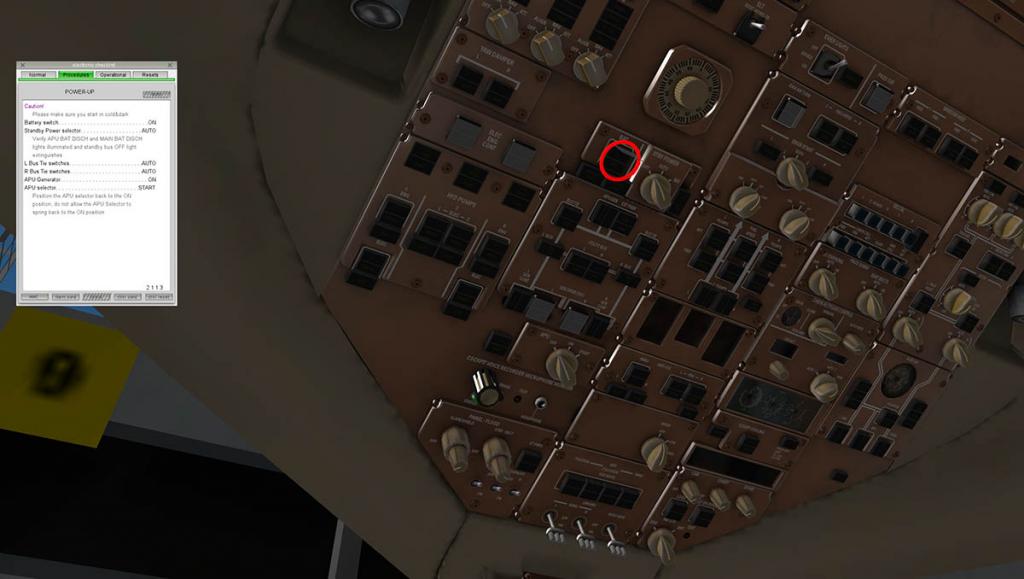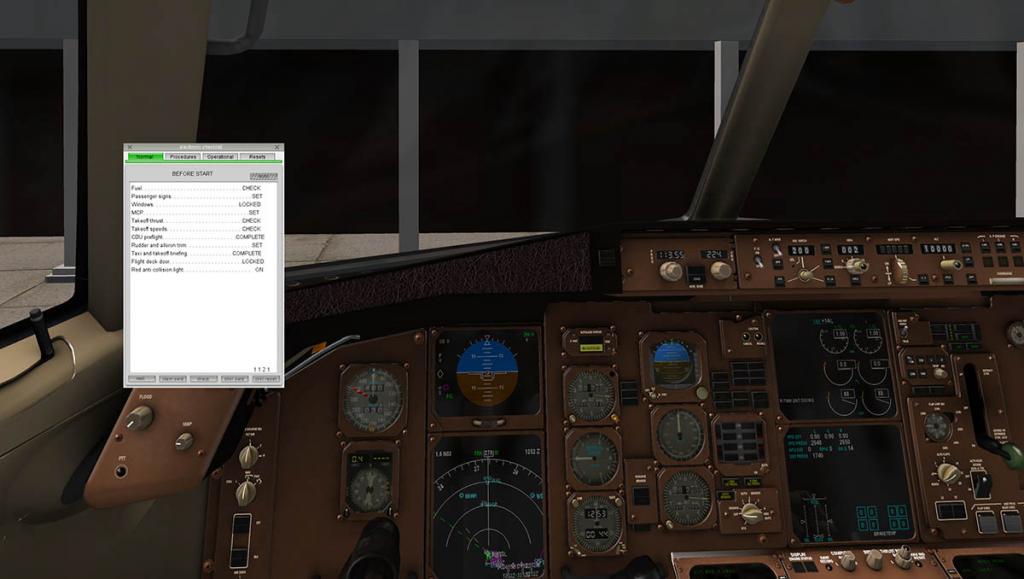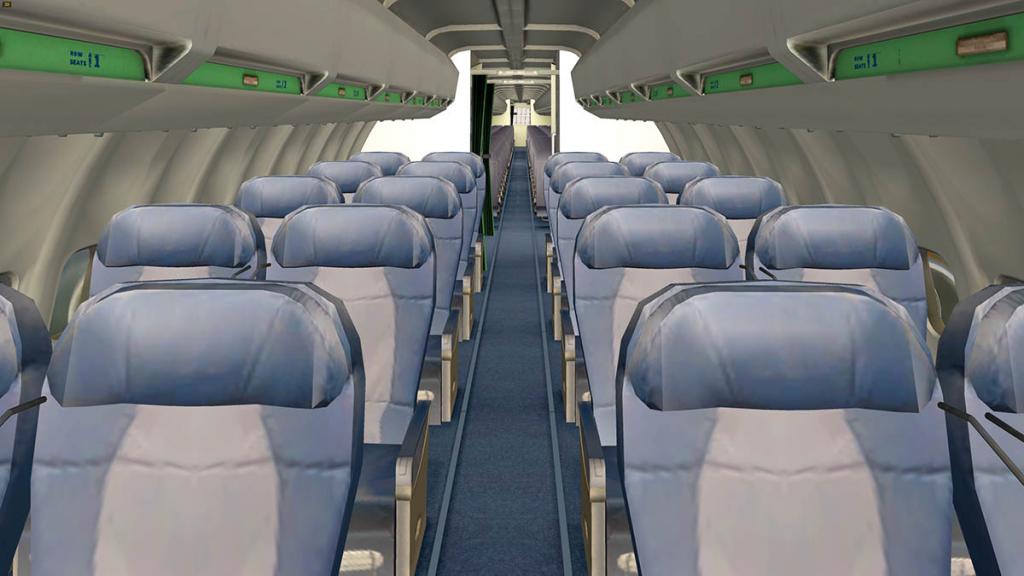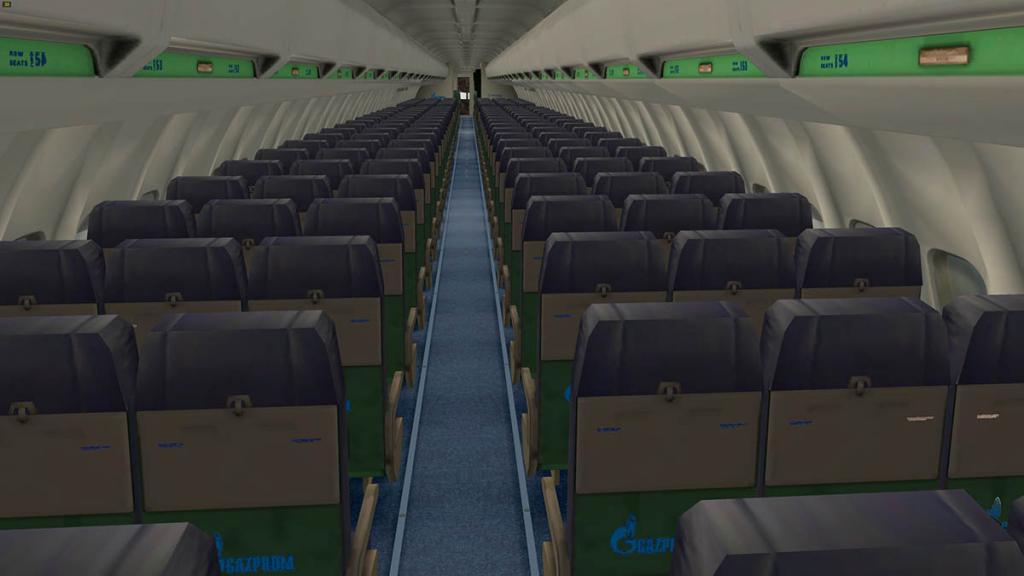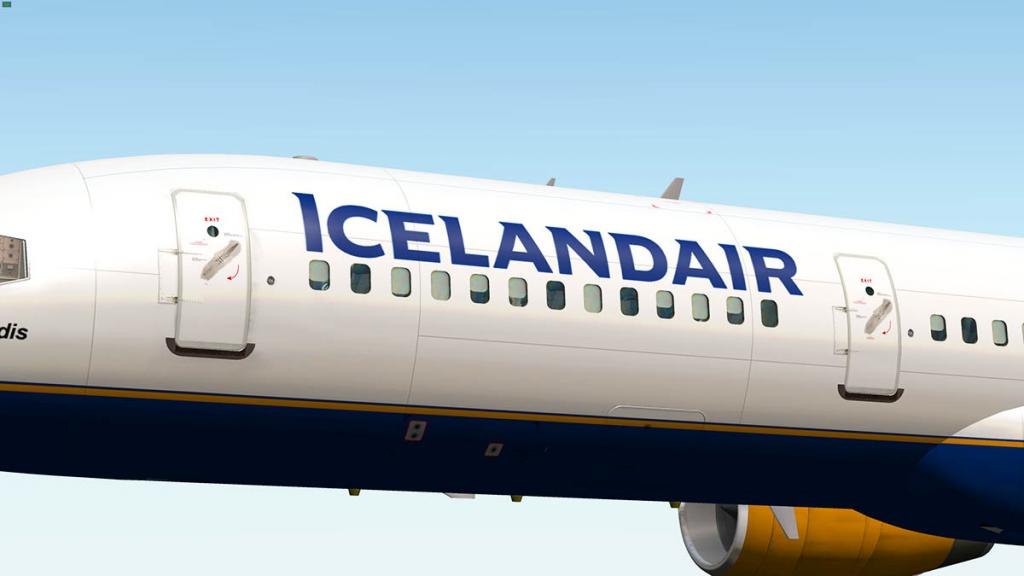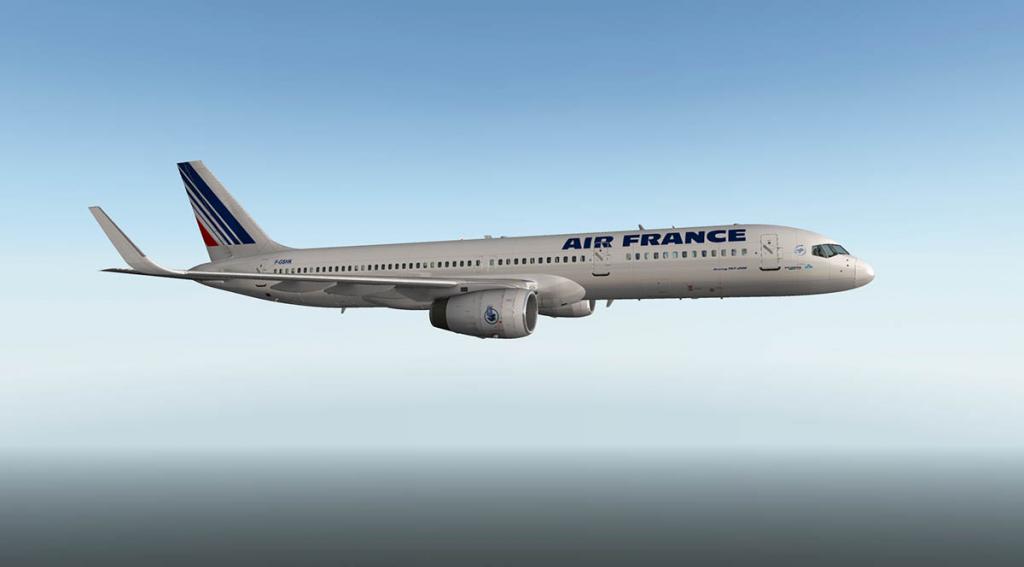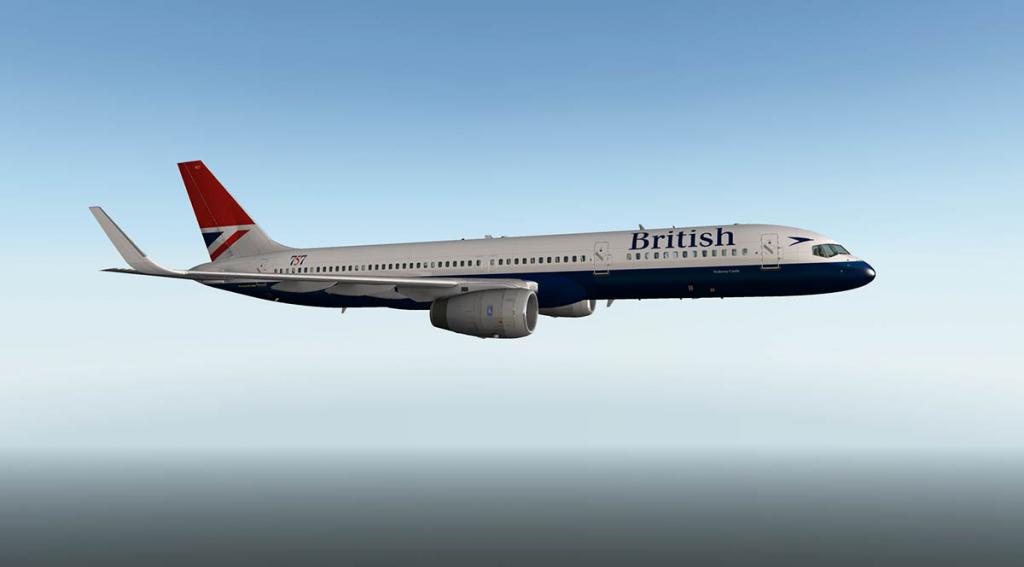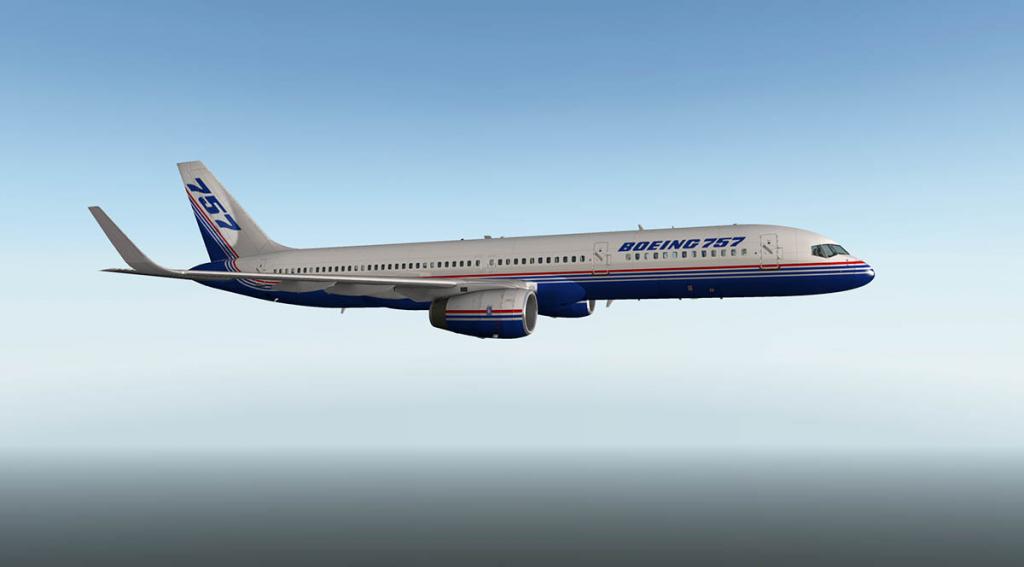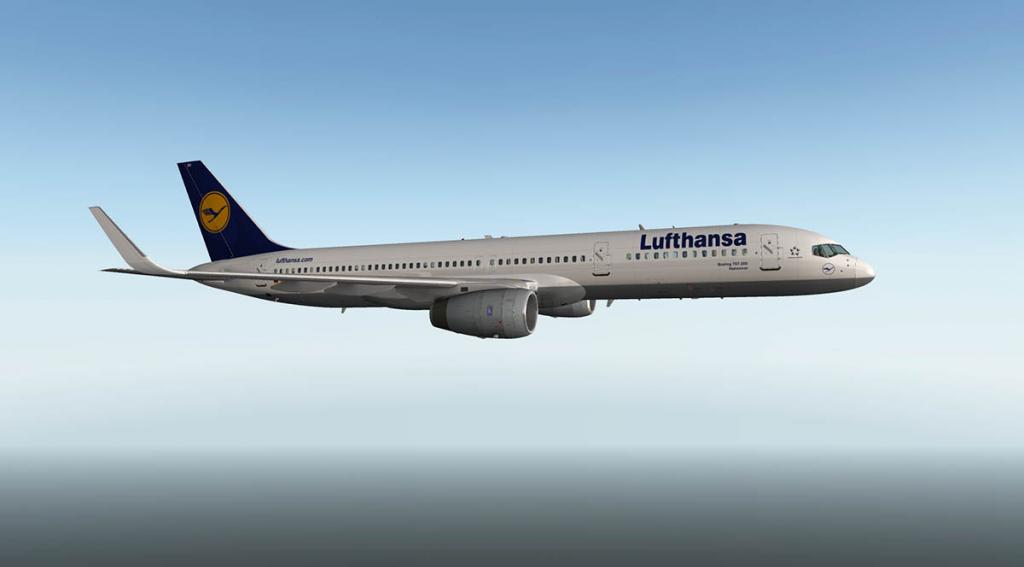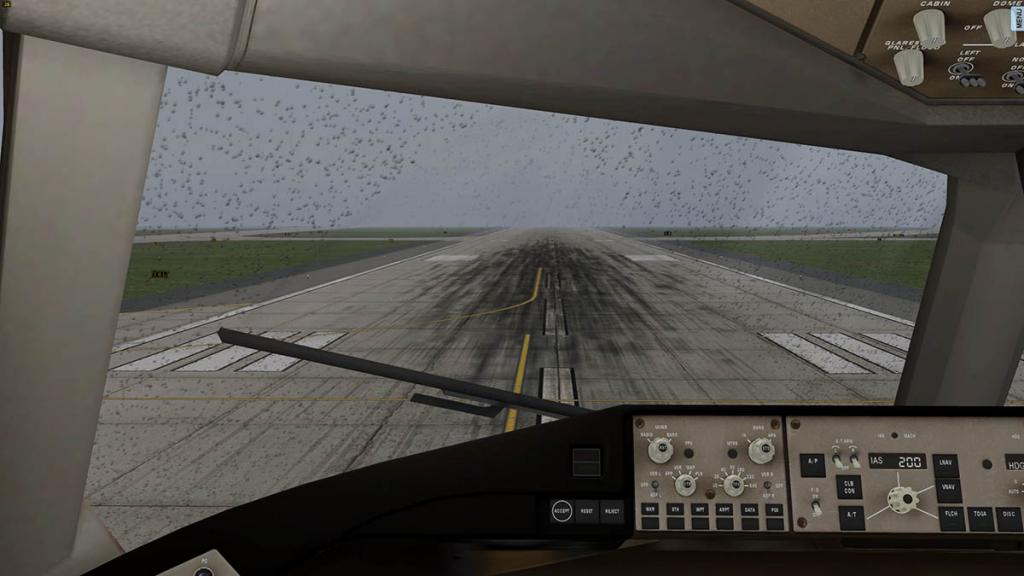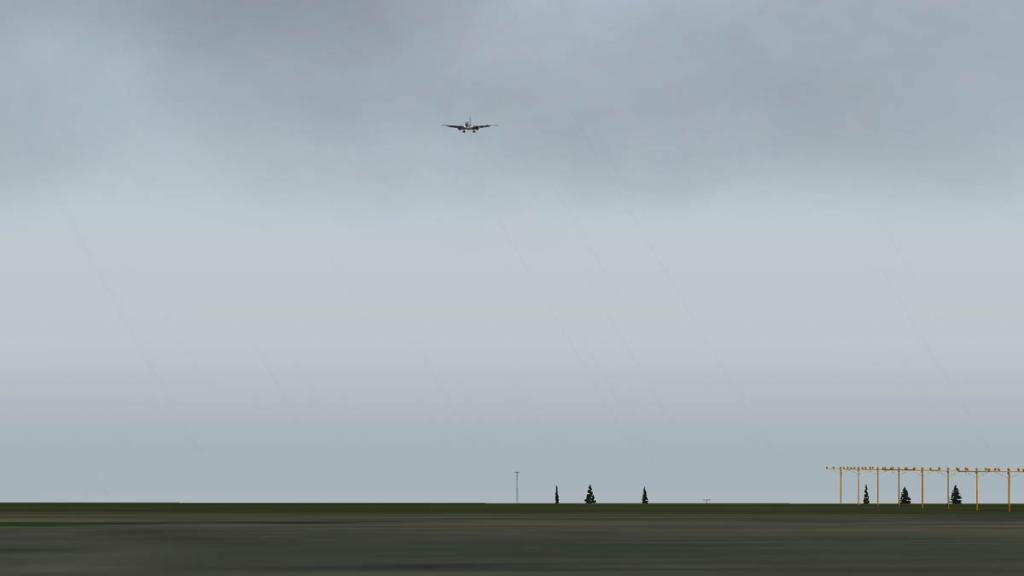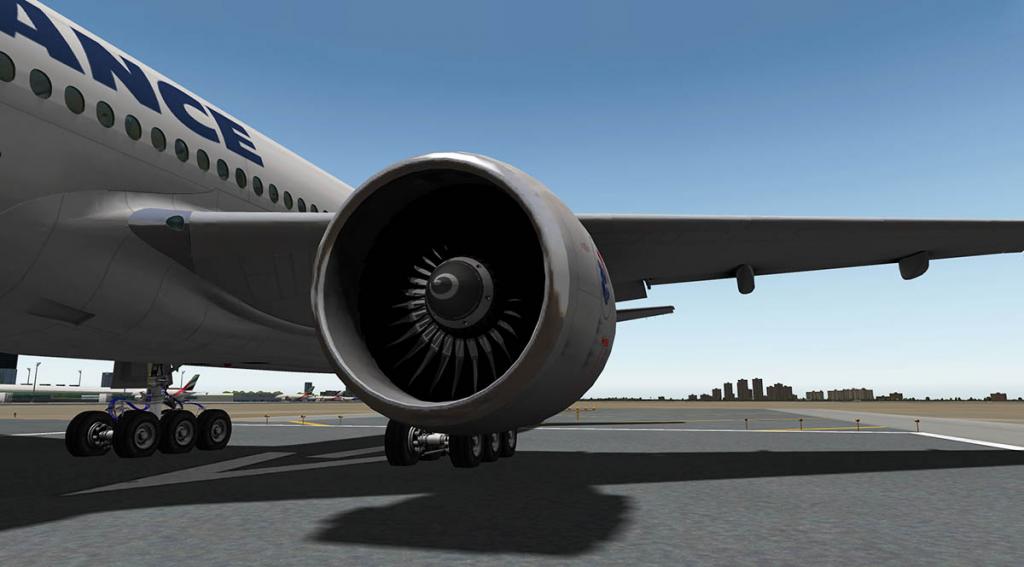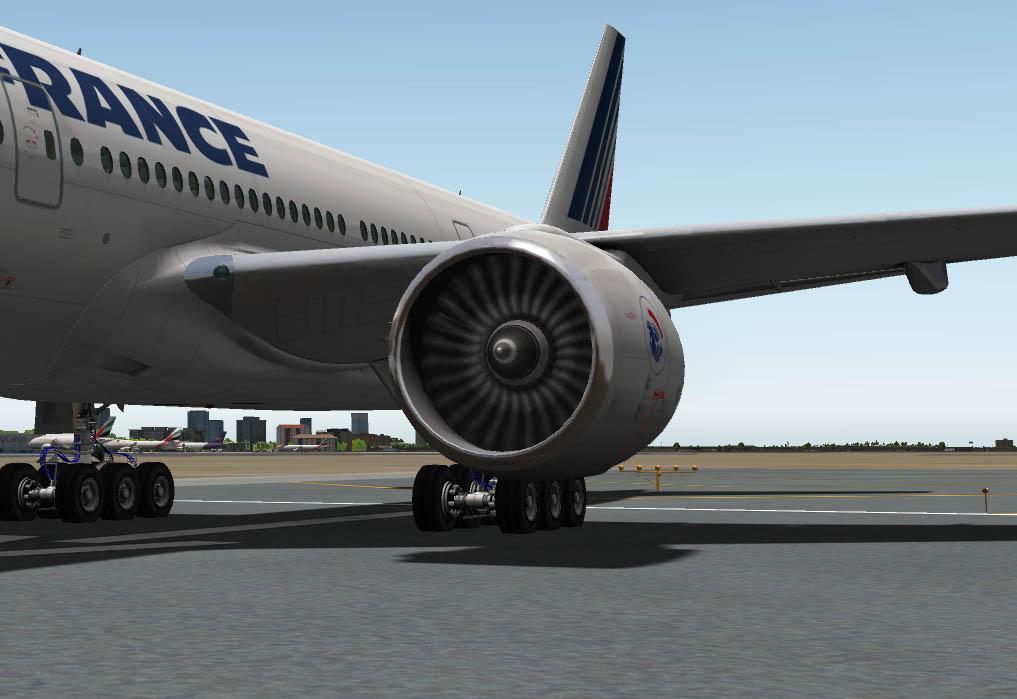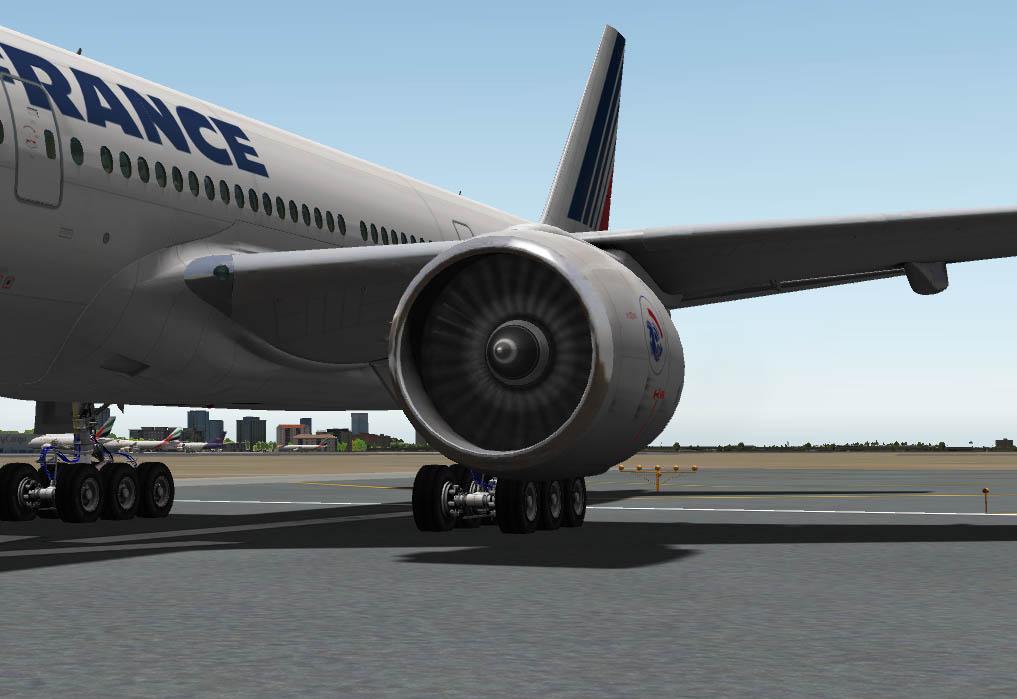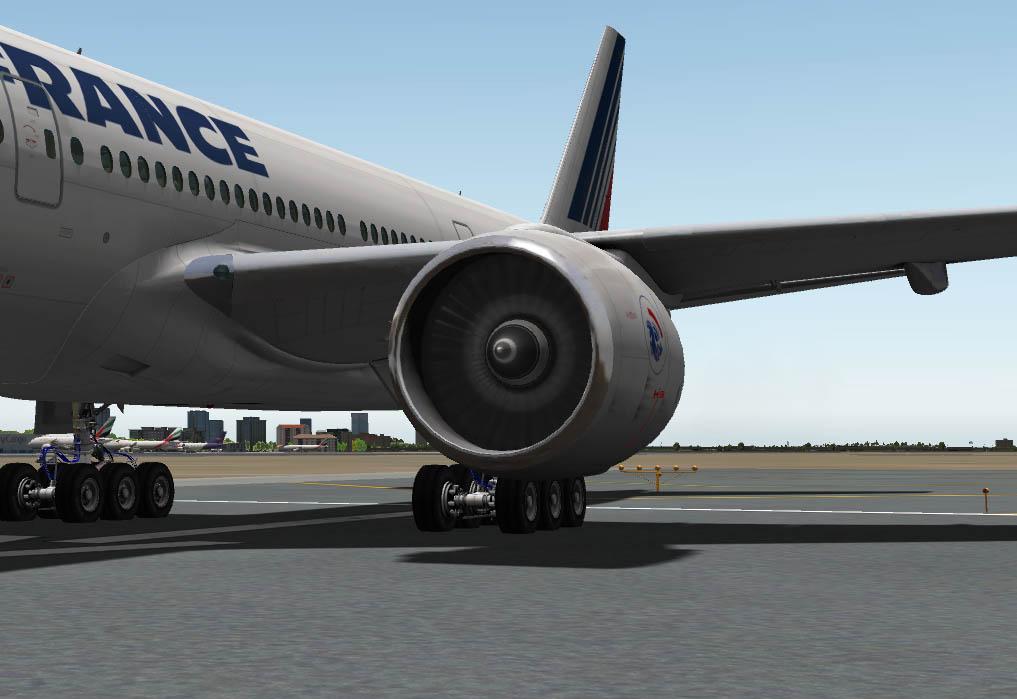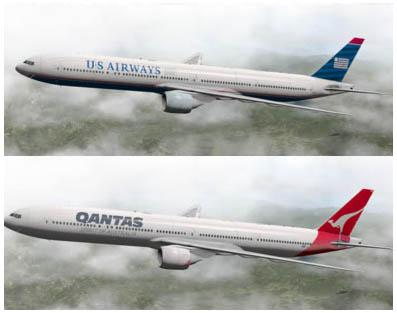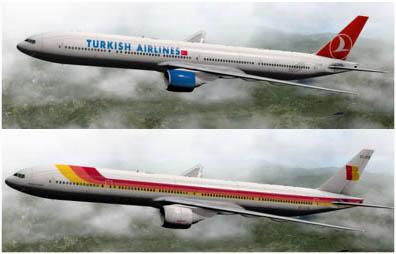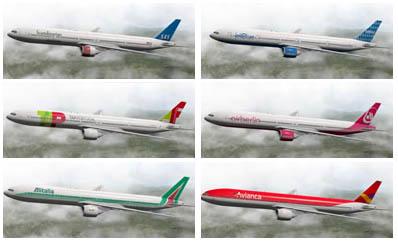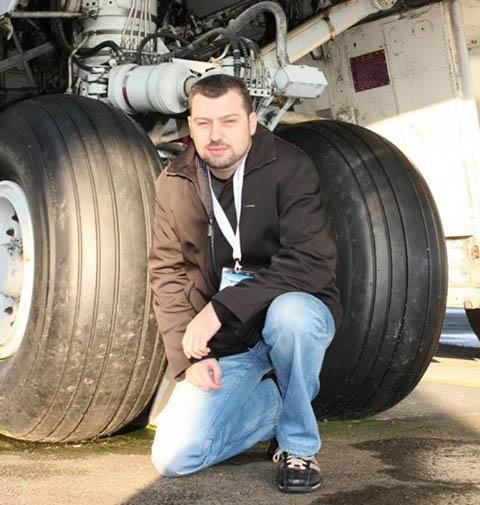Search the Community
Showing results for tags 'flightfactor'.
-
Aircraft Update : Boeing 777 Worldliner Pro 1.9.5 by FlightFactor/Vmax The big twin Boeing 777 Professional Series from FlightFactor/Vmax has been updated to version 1.9.5. This update makes the B777 Pro usable in X-Plane11 (not yet fully XP11 compliant) but this update does cover the important changes of the jet engine thrust parameters that was changed in the X-Plane11beta12 release. Also with this update is the distinction now of completely separate aircraft versions of the aircraft for both _XP10 (XP10.52) and _XP11 and so you will have quite a few none usable aircraft now showing up in your selection menu. This multitude of versions are now going to grow prolifically as other developers follow this same trend and it is certainly noticeable here and certainly if you have the "Extended Pack" because there are four variants that is now doubled up to eight and four of those are not usable in either X-Plane application. These separate aircraft versions could start to fill up your menus very quickly unless there is compromise found to distinctively allocate the versions of aircraft to the acceptable platform application. The new changelog notes the changes: 1.9.5 - split xp10 and xp11 files - added a fix for xp11 beta engine issues (temporary) However flying the B777 Pro you do feel far more items than on the changelog were attended to, to bring the aircraft to an X-Plane11 usable flying condition. It flies very nicely thank you very much, and the big smile on my face says "I'm glad to have you back", and certainly the option to be able to use the aircraft in X-Plane11 is a very big benefit as well. Those X-Plane11 features help any aircraft, but the B777 Twin looks very good with it's shiny new skin. Everyone would feel the Boeing 777 cockpit is a slightly darkish place with all the browns, but X-Plane11 and the new PBR (Physically-Based Rendering) feature does now bring in a lot of life and dynamics to the whole space. The "Extended Pack" includes four versions (below) of the Boeing 777 Worldliner, and the standard version includes the above Boeing 777-200LR. Boeing 777-200 LR Boeing 777-200 F (Cargo) Boeing 777-300 ER Boeing 777-200 ER Not a big update by any means, but at least the aircraft is usable in X-Plane11 until the whole new X-Plane11 version goes final. Go to your X-PlaneStore account now to update to the new 1.95 version (It may note the older v1.94, but it is actually the v1.95) and if you would like to purchase the Boeing 777 Professional Series packages then the details are set out below.. _____________________________________________________________________________________ The 1.95 update is now available from the X-Plane.Org Store here : Price is US$59.95 - Boeing 777 Worldliner Professional Price is US$84.95 - Boeing 777 Worldliner Professional - Extended Pack - Designed by FlightFactor (Philipp and Ramzzess) and produced by VMAX The 1.92 update is free to all users that have purchased the Boeing 777 (Pro and Ext) Series. Just go to to your X-Plane.Org Store account and log-in to download. Features Fully Functional FMS - Plan your routes like a real pilot Custom designed Flight Management Computer, integrated with other plane systems Custom programmed LNAV logic for terminal procedures Custom designed Navigation Display Tterminal procedure database with RNAV approaches and transitions VNAV managed climbs and descends Takeoff and approach speed calculation Custom autopilot modes for autoland Optimum cruise performance and step climb calculation True-to-life radio navigation with procedural-, route-, and navigation support auto-tuning Custom programmed FMC navigation using GPS-, radio- or inertial navigation with individual position errors and management of actual and required navigation performance Magnetic, true and polar grid course reference Alternate airports, diversion and arrival management Ground proximity warning system using real sounds FMC can be used on external touchscreen or tablet, optimized for the new iPad Incredible 3D modeling - the best eye-candy Amazing virtual cockpit with crisp details - Dynamic reflections Custom 3D sounds and Announcements Add-ons: Push-back truck, Fuel Truck, Passenger bus and Emergency slides ... On-Screen Menus: Configuration and loading menu, Quick Zoom Requirements X-Plane 10 Fully updated or current X-Plane 11 - 64 bit required Windows, Vista, 7 / 8/ 10 (64 bits) or MAC OS 10.10 (or higher - OSX 10.9 will not work), Linux Ubuntu 14.04LTS or compatible (older versions are not supported) 4GB RAM/512 MB VRAM (1GB VRAM Recommended)- 1Gb available hard disk space Current version : 1.92 (last updated January 25, 2017) Note: For this update to work correctly on Windows, you need to install the Visual Studio 2015 redistributables, which you can download here: https://www.microsoft.com/en-us/download/details.aspx?id=48145 _____________________________________________________________________________________ Developer Site: facebook Dev Thread : X-Plane.org _____________________________________________________________________________________ Technical Requirements: Windows XP , Vista, 7 / 8/ 10 (32 or 64 bits) or MAC OS 10.7 (or higher), Linux Ubuntu 14.04LTS or compatible (older versions are not supported) X-Plane 10.30+. 32 or 64 bit (64bit recommended) 4GB RAM/512 MB VRAM (1GB VRAM Recommended)- 1Gb available hard disk space Current version : 1.95 (last updated 13th March 2017) Update Review By Stephen Dutton 14th March 2017 Copyright©2017: X-Plane Reviews
-
News! - Aircraft Updated to X-Plane11 : Airbus A350 XWB v1.4.3 by FlightFactor FlightFactor have updated their Airbus A350 XWB aircraft to be flyable in X-Plane11. The note here is flyable or compatible and not a totally configured aircraft for the new X-Plane version as the simulator is still within its beta stages (XP11b11 at this article). But flyable or usable is still a very nice place to be. We saw a very nice and more complete upgrade to the A350 v1.30 just back in July 2016, and right there and then it felt like a completely new aircraft than the earlier predecessors. Here again with this version v1.43 you see a solidness that was missing in the earlier releases of this Airbus aircraft, it usually came off second best compared to the Boeing designs of B757/767 and the B777 Series. But now it is a very though machine and becoming very mature as it ages. Again the FMC is still not a full total replication of a FMS (Flight Management System) like on the B757/767 and in this case the SID/STAR component is still missing for now, but it is coming, I swear it is. FlightFactor put a nice shine on to the A350 in the last update, and in XP11 the aircraft looks amazing. The exceptional lighting of X-Plane11 is bringing aircraft alive in realism and put that factor together with highly detailed aircraft and the results are stunning. Version v1.4.3 notes are: v1.4.3 - added xp11 compatability - Introduction of popup screens - Terrain on ND now available - support of custom earth_nav.dat files. Not a big update list, but you do feel there are more improvements than listed that have been addressed under the skin. The complex sets of monitor screens that is unique to the A350 flight deck has had some slight changes. Popup screens The OIS (Onboard Information System) side (and center) menu screens, were... let us say "a little buggy" in the original release of the A350 XWB. nothing really wrong but the effects of using the huge X pointer was a bit hit and miss. The problem was making out the screen active areas and the outer panel not active area, but all the issues have now been resolved, but to give you a secondary option, you now have a new menu (options) selection that allows you to switch into two modes. The new item is the MFD control that has two options "Wheel+Popup" and "Touch Screen" Default is "Touch Screen" that still gives you that enlarged X pointer. But the newer selection in "Wheel+Popup" will freeze the X Pointer and when you want to make a selection the pop up window comes up and you can only use the standard hand (finger) selector for choosing items on the menus. (sorry the hand selector does not show in the images). It does make selections easier and quicker, but you do have a full pop-up screen every time you want to change a menu item. Another new feature is "Terrain on ND" which is a radar terrain map showing on the Navigation Display. It is like the unit on the Boeing 757/767, but none adjustable. Sea is noted in blue, and you have terrain data details on the right. The ground profile is also shown on the vertical display on the lower part of the Navigation Display. Aircraft data in X-Plane11 In X-Plane11 the Navigation data system has had a complete overhaul. One of the changes is that the usual "Custom Data" or navigation data details is now missing in the main X-Plane root folder. Developers now have to supply the actual aircraft with the data to include Navigraph and Aerosoft Navdata Pro with navigational data. To allow the A350 to fly in X-Plane this data has now been included within the update v1.4.3 Note the excellent click to complete checklist system, green for completed checks and blue for not covered checks. Cockpit is now very refined with lots of nice touches and details. Note the working rear FMS unit and left - right pilot flying selection. Cockpit night lighting is now excellent, lovely place to be on a long overnight flight. Liveries supplied are: Blank, House/Qatar, Airbus House, Airbus Carbon, Air France, British Airways, Lufthansa and United are the default liveries There are sets of 10 other liveries you can purchase from different regions of the world including Oceania, Africa & Middle East, Asia, Atlantic, Europe 1, Europe 2 and Pacific. Summary Developers are caught at the moment with X-Plane11. Fix up the aircraft and the details change with a sudden new beta update. But we are well along the beta path now and an RC is on the horizon soon anyway. Personally I have found X-Plane11 in basic form extremely stable, so creating a compatible X-Plane11 aircraft is not going to go seriously out of whack anytime soon, as this excellent A350 in X-Plane11 shows. This update is just that in a compatible and flyable aircraft for X-Plane11, but the new "Terrain on ND" is a very nice and useful feature to have as well. The A350 from FlightFactor is becoming brilliantly good now, and is starting to fulfill its potential as one of the great aircraft to fly in X-Plane, and there is still more to come. _____________________________________________________________________________________ The Airbus A350-900 XWB Advanced from FlightFactor is Available from the X-Plane.Org Store: Airbus A350 XWB Advanced Price is currently US$ 49.95 Livery packs at US$10 for ten liveries are available here: A350 Liveries Include: North America, Oceania, Africa & Middle East, Asia, Atlantic, Europe 1, Europe 2 and Pacific. If you already have purchased the A350 XWB from FlightFactor then go to your account at the X-PlaneStore and update to v1.4.3. Requirements: X-Plane 10 (fully updated) or X-Plane 11 Windows - Mac - Linux - 64bit Operating System Required 1Gb+ VRAM Minimum, 2Gb+ VRAM Minimum. 8Gb RAM Version : 1.43 (last updated February 10th, 2017) Release Review : Aircraft Review : Airbus A350 XWB Advanced by FlightFactor Support forum : FlightFactor A350 XWB _____________________________________________________________________________________ Updated by Stephen Dutton 13th February 2017 Copyright©2017: X-PlaneReviews
-
News! - Aircraft Updated to X-Plane11 : Boeing 777 Worldliner/Extended Professional series by FlightFactor/VMAX FlightFactor/VMax have updated the Boeing 777 Worldliner Professional to X-Plane11. This is not strictly the full case that this aircraft is totally X-Plane11 compatible, but the word usable is more in line with the current situation as of X-Plane11 still being in it's beta phases. But flyable in X-Plane11 is a nice place to be. The Boeing 777 in it's (Extended) freighter form is the one aircraft that I log up the most nautical mileage in X-Plane as it is the aircraft I use to fly my Formula One gear around the world with, so I over the years I have come to know this aircraft very well. A magnificent beast of an aircraft this Boeing 777 is as well. There are two packages available with the standard "Worldliner" Professional which is the 777-200LR version and the "Extended" Professional pack that includes the same 777-200LR plus the 777-200ER (Extended Range), 777-300ER and the "F" Freighter version and in all a total of four variants with both GE (GE90-115B) and RR engines as options. v1.92 X-Plane11 In the v1.92 changelog there isn't much to take note of but to adjust the textures and make the aircraft compatible with X-Plane11, but with that you do then get the X-Plane11 features that include that nice shiny aircraft with "Physically Based Rendering" or "PBR" effects. The FlightFactor Boeing 777 came out of the X-Plane11 transformation really well, as the body and wings look very nice in their shiny new clothes. Reflection detail is excellent and the aircraft now looks like it has just come out of the paint shop. X-Plane11 reflection detail works for you and also against you here. In the most it is all very good, with the lighting effects making the cockpit far more realistic and more dynamic with the sharper light and deeper shadows. But if the aircraft is in a deep shadow or overcast the textures then go very grainy and dark, certainly developers will have to adapt to the new XP11 lighting conditions to get the right effects, but this is nothing new to everyone. This effect is highlighted here by the yokes (bottom left), and the instrument lighting is more focused but the spot lighting is not as effective in lighter periods, but fine at night under the new X-Plane11 rules. In time these changes will all be adjusted for, but for now it is still perfectly acceptable as the average is totally overwhelmed by the very good new style effects. For me it is simply great to fly this aircraft in X-Plane11. Is it now showing its age in X-Plane compared to the newer v2 versions of the Boeing 757/767 FlightFactor sisters? well yes a little, so I hope a version upgrade is on the cards at FlightFactor-Vmax. Still this is one of the really great X-Plane landmark aircraft in detail and features... If you have already purchased the Boeing 777 Pro's in either Worldliner or Extended packages then go to your X-Plane.OrgStore account and update now. Note: Just make sure you do download the v1.92 version as v1.90/v1.91 releases have missing issues (mostly APU and starting) v1.92 has been checked and it is fine except that I had to realign the ADIRU navigation (switch is very top left on OHP) and reset the POS INIT (GPS position) on each separate version in -200LR, -200ER, -300ER and the Freighter. As noted this v1.92 release just makes the B777 X-Plane11 compatible, with no new features except for the X-Plane11 effects, but it is all worth having just to keep on, flying on in the new X-Plane simulator. Changelog 1.9.2 - fixed the APU xp11 bug 1.9.1 xp11 compatability - provided xp11 compatability - changed the graphical content to fit XP11 features - added xp11 specific splashcreen - renamed the acf files to be more logical _____________________________________________________________________________________ The 1.92 update is now available from the X-Plane.Org Store here : Price is US$59.95 - Boeing 777 Worldliner Professional Price is US$84.95 - Boeing 777 Worldliner Professional - Extended Pack - Designed by FlightFactor (Philipp and Ramzzess) and produced by VMAX The 1.92 update is free to all users that have purchased the Boeing 777 (Pro and Ext) Series. Just go to to your X-Plane.Org Store account and log-in to download. Features Fully Functional FMS - Plan your routes like a real pilot Custom designed Flight Management Computer, integrated with other plane systems Custom programmed LNAV logic for terminal procedures Custom designed Navigation Display Tterminal procedure database with RNAV approaches and transitions VNAV managed climbs and descends Takeoff and approach speed calculation Custom autopilot modes for autoland Optimum cruise performance and step climb calculation True-to-life radio navigation with procedural-, route-, and navigation support auto-tuning Custom programmed FMC navigation using GPS-, radio- or inertial navigation with individual position errors and management of actual and required navigation performance Magnetic, true and polar grid course reference Alternate airports, diversion and arrival management Ground proximity warning system using real sounds FMC can be used on external touchscreen or tablet, optimized for the new iPad Incredible 3D modeling - the best eye-candy Amazing virtual cockpit with crisp details - Dynamic reflections Custom 3D sounds and Announcements Add-ons: Push-back truck, Fuel Truck, Passenger bus and Emergency slides ... On-Screen Menus: Configuration and loading menu, Quick Zoom Requirements X-Plane 10 Fully updated or X-Plane 11 - 64 bit required Windows, Vista, 7 / 8/ 10 (64 bits) or MAC OS 10.10 (or higher - OSX 10.9 will not work), Linux Ubuntu 14.04LTS or compatible (older versions are not supported) 4GB RAM/512 MB VRAM (1GB VRAM Recommended)- 1Gb available hard disk space Current version : 1.92 (last updated January 25, 2017) Note: For this update to work correctly on Windows, you need to install the Visual Studio 2015 redistributables, which you can download here: https://www.microsoft.com/en-us/download/details.aspx?id=48145 _____________________________________________________________________________________ Developer Site: facebook Dev Thread : X-Plane.org _____________________________________________________________________________________ Technical Requirements: Windows XP , Vista, 7 / 8/ 10 (32 or 64 bits) or MAC OS 10.7 (or higher), Linux Ubuntu 14.04LTS or compatible (older versions are not supported) X-Plane 10.30+. 32 or 64 bit (64bit recommended) 4GB RAM/512 MB VRAM (1GB VRAM Recommended)- 1Gb available hard disk space Current version : 1.80 (last updated June 23rd 2015) Update Review By Stephen Dutton 27th January 2017 Copyright©2017: X-Plane Reviews
-
News! - Aircraft Update : Boeing 767-300ER 1.1.12 by FlightFactor/Steptosky FlightFactor_aero and SteptoSky have released an update for the Boeing 767. This v1.1.12 is mostly a bug and refine update, but there is a few special new features. The main new features are: *new click system, with lots of new options for cockpit interaction many FMS and AP improvements new cockpit tooltip system a lot of additions to the many new glow effects updater (still in beta) First new feature is the "tooltip" On the iPad menu under Cockpit Interactions (General/Cokpt Interaction) there is a new selection called "tooltips". You can select right, left or hover mouse clicks (or off) to show what the item you have selected is and what it does... handy. Second feature is the lovely new glow effects. The highlight here is the FMC panel to show off the effects to their full advantage. Developers have spent years trying to make text and lettering clearer in the cockpit and now they want to make them blurry again... but with a reason. It is to show the depth of the glass in the instrument and the internal text reflection on that depth of glass. It is a amazingly lifelike and another step forward in realism in the cockpit... In the darker cockpit environment the new glow effects are simply amazing, beautiful. The glow effects are also used on the instrument lighting reflections. Most notable is the artificial horizon reflection that changes and glows with the instrument's activity. Full 1.1.12 changelog is: - added kg/lb option - fixed some CTDs during STAR/APP setup - fixed some drawing artifacts on Intel HD Graphics - fixed CTD when you enter awy/wpt on the rte pages without entered dep/dest - added logic for checking airac cycle of the co-routes - reworked AT&AP - AP: reworked AT&AP modes switching/engaging/disconnection logic(for example: you can engage CMD without engaged FD), closer to real life - AP: reworked AT&AP modes internal logic( for example: ALT_HOLD modes now correct reacts to changing baro setting), closer to real life - AP: added new AT sub modes: SPD_LIM, SPD_FLAPS, ALPHA - AP: added new AP sub mode: ALT_CAP - AP: added several configurable AP options - AP: and other changes - improved the fast&slow indication for old style eadi. - reworked the click system, implemented new modes of cockpit inteaction with many options - added in-cockpit clickzone tips from the manual - added the ability to manipulate objects in several ways with options - fixed RTO disarm bugs - added a menu page for detail volume options for each group of sounds - added a menu page with cockpit inteaction options - added a page with detailed lighting effects options - added a new glow special effect - improved flightmodel with more precice CG bahaviour - fixed a bug with mach on MCP - fixed a bug with tail light - added an autosave option to the menu - fixed the throttle block RTO issue - fixed an issue with idle throttle blocking - added GA and disconnect switches to the throttle and the yokes - change the behavour of the plane when flying with open doors - change the APU logic to depend on main bat as per manual - added covers to the engines - added an option for more red (old type) digital displays - fixed cargo door text issue - some fixes for RESET MCP ALT message logic. - fixed wrong track indication on the ND during moving back (pushback for example). - added missing RTE COPY function to the PIP variant of the FMC. - fixed co-route loading bug with duplicates of waypoints. - fixed displaying the assumed temp in wrong conditions. - fixed staby instruments' electical dependencies - added support for unnamed oceanic points even if the nav database doesn't include those points. - made it so the menu autosave option includes all the airplane specific data as well as the defaults Check out X-PlaneReviews full comprehensive release review of the Flightfactor_aero/SteptoSky Boeing 767: Aircraft Review : Boeing 767-300ER Professional by VMAX and Flight Factor ______________________________________________________________________ Yes! the Boeing 767-300ER Professional by VMAX and FlightFactor is NOW! Available from the new X-Plane.Org Store here : Boeing 767-300ER Professional Price is US$64.95 If you have already purchased any of the above Boeing 767-300ER Professional aircraft then go to your X-Plane.OrgStore account, log in, and download ver 1.1.12, check under the "Requirements" tab if the aircraft is the updated version and it should be noted like this "Current Version: 1.1.12 (last updated August 24th 2016)"... Requirements: X-Plane 10.40+ (any edition) running in 64bit mode. Windows 7+, Mac OS 10.9+ or Linux 14.04 LTS or compatible. 64bit mode 1Gb VRAM Video Card Minimum. 2Gb+ VRAM Recommended. 3Gb+ VRAM Preferred FlightFactor Developer Support : FlightFactor 767 Professional ______________________________________________________________________ Stephen Dutton 25th August 2016 Copyright©X-Plane Reviews: X-PlaneReviews 2016
-
- flightfactor
- steptosky
-
(and 1 more)
Tagged with:
-
Aircraft Update : Airbus A350 XWB Advanced v1.3 by FlightFactor This is a blink and you will miss it moment, in that FlightFactor has upgraded the A350 XWB to version 1.3. Officially the upgrade only includes new external reflections or a glossy exterior to the aircraft. The reflections change is small but highly significant as it completely changes to look of the aircraft as the original had a slightly flat look about it. But now the A350 looks brilliant and is highly reflective were it needs to be and note on say the wings. The gloss also helps the other areas in more realistic chrome as highlighted by the Trent XWB engine inlet surrounds and leading edge spoilers. In the air the aircraft does look far better and more far realistic in its lofty surroundings. The A350 XWB is an odd one in FlightFactor's fleet. Early versions were a little not too refined enough, but good and even great in concept. The missing Thales FMC/MCDU or Flight Management & Guidance System (FMGS) is the obvious missing item from the flightdeck, but the FMC is to date still coming in the promised "Pro" version but when is still a lottery, and with this FMC becoming available then certainly will there come more Airbuses from this mostly Boeing sourced developer. So the A350 XWB has flown a little under everyone's radar, but I do fly it far more than than I note in these reviews. The big surprise in this v1.3 update is now how very complete now (except for the obvious) the aircraft is. No doubt it has had a lot of quiet attention from the developer, but it has matured quite nicely. There is not a lot of noted items in the changelogs, but there is no doubt been of a lot of refinement done in the aircraft and although not mentioned, the sounds are certainly far better than for that I remember them only a few months ago, then they were whiney-droney, but now feel far more layered and deeper in context, start up and shutdown feels far better, but in flight you are moving away from that whiney sound you had before, it is still there, but not as mono as it felt before. A quick flight and and landing showed me how nice the aircraft really is now and the early oddness is falling away. The only blight which is mostly on all FlightFactor aircraft is the constantly annoying cabin attendant on the overhead panel. I know you have to fix the issues he notes, but when you are in a heavy workload period like taking off or landing and the stupid bugger should be strapped in his seat and not constantly annoying you with comments of adjusting the cabin temperature and whatnots... You start swearing at the aircraft for him to just go away. No doubt the aircraft is now ready for the "Pro" version and FMC and all, until then it is now quite a nice aircraft to put into service and hopefully down the track a A350-900ULR variant or "hub smasher" of this aircraft would really give X-Planers a reason to cover some serious point to point long distance flying in the near future. Changelog is: v1.3.0 - added external reflections _____________________________________________________________________________________ The Airbus A350-900 XWB Advanced from FlightFactor is Available from the X-Plane.Org Store. Price is currently US$ 49.95 : Get the - Airbus A350 XWB Advanced - Here Livery packs at US$10 for ten liveries are available here: A350 Liveries Include: North America, Oceania, Africa & Middle East, Asia, Atlantic, Europe 1, Europe 2 and Pacific. Requirements: X-Plane 10.40+ in 64 bit mode Windows - Mac - Linux - 64bit Operating System required 1Gb+ VRAM Minimum, 2Gb+ VRAM Minimum. 8Gb RAM Version : 1.3 (last updated July 22, 2016) Release Review : Aircraft Review : Airbus A350 XWB Advanced by FlightFactor Support forum : FlightFactor A350 XWB _____________________________________________________________________________________ Updated by Stephen Dutton 27th July 2016 Copyright©2016: X-PlaneReviews
-
Aircraft Review : Boeing 767-300ER Professional by VMAX and FlightFactor After the huge success of the late 1950's and throughout the 1960's for the Boeing Commercial Airplane's Company with their Boeing 707/727/737 and Widebodied Boeing 747 aircraft, it was always going to be a challenge for Boeing and keep their lead in the aviation production business to develop and create the next advanced series of passenger jets. Other manufacturers went down the Twin-Aisle three-engined designs that was signified by the McDonnell Douglas DC-10 and the Lockhead L-1011 Tristar. Originally Boeing with the code-named 7X7 looked to be going down that route of three engine design, but the Airbus A300 from Europe changed the design to the more common current layout with Twin-Aisle, Twin-Engined aircraft as engine design and power had now progressed to allow big twins to have the power and range over their three engined counterparts in that now highly competitive mid-medium to large-size, long-range market. Still Boeing backed its card hand both ways, not only announcing the Boeing 767 as their Twin-Engine Design to cover the Twin-Aisle market, but to also build a Single-Aisle aircraft in the Boeing 757 code-named 7N7, and both aircraft have a commonality design that was shared over the two different types of airframes, in the thinking that airlines would buy and operate both types with a single commonality rating with a small conversion to the larger Boeing 767. Three variants of the Boeing 767 were planned: a 767-100 with 190 seats, a 767-200 with 210 seats, and a trijet 767MR/LR version with 200 seats intended for intercontinental routes. The 767MR/LR was subsequently renamed 777 for differentiation purposes which was when finally launched a vastly different aircraft for a different market. The prototype Boeing 767 aircraft, registered N767BA and equipped with JT9D turbofans, rolled out on August 4, 1981. By this time, the 767 program had accumulated 173 firm orders from 17 customers, including Air Canada, All Nippon Airways, Britannia Airways, Transbrasil, and Trans World Airlines (TWA). On September 26, 1981, the prototype took its maiden flight under the command of company test pilots Tommy Edmonds, Lew Wallick, and John Brit. This version in the FlightFactor/StepToSky release is the The 767-300ER, the extended-range version of the 767-300. Which entered service with American Airlines in 1988. The type's increased range was made possible by greater fuel tankage and a higher MTOW of 407,000 lb (185,000 kg). Design improvements allowed the available MTOW to increase to 412,000 lb (187,000 kg) by 1993. Power is provided by Pratt & Whitney PW4000, General Electric CF6, or Rolls-Royce RB211 engines. This aircraft is the Pratt & Whitney PW4000 version. FlightFactor/StepToSky FlightFactor and Roman Berezin has no need of introduction for most fliers in X-Plane Simulation. Their Boeing 777 WorldLiner and Boeing 757 Series have made them the very best of the Boeing designed (and official product) available for X-Plane. Their foray into Airbus territory with their Airbus A350-900 also shows the design group's versatility. Here with the Boeing 767-300ER FlightFactor still uses the talents of avionics designer Phillipp Munzel, but are also now joined by StepToSky designers Denis Maslov and Alexander Khudekov, but the full development team is thirteen highly specialised individuals coming together to create this highly developed iconic aircraft the.... Boeing 767-300ER Review You couldn't cover every aspect of this review with a simple walkaround the aircraft and point to point flight like I usually write, because different points of the flying pointed to different areas to be explored. So this review covers three sector flights, not the quite Golden Triangle of some of the busiest air routes in the world between BNE-Brisbane (Queensland) to ADL- Adelaide (South Australia) to SYD - Sydney (New South Wales) and finally back to BNE.... MEL - Melbourne (Victoria) missed out because I wanted the longer stretch sector to Adelaide and the longer one back to SYD. When in service (All Boeing 767 aircraft have only earlier this year have been retired by QF Qantas) in the past three decades with Qantas these routes were its main service points (and also PER-Perth) and I have flown on a lot of flights on this aircraft over these routes. So there is a little mixture in the look of some images in this review here as they are taken not in order as I usually do, but overall throughout the three distinct flying sectors. External There is a distinctly different feel to the Boeing 767, yes it looks like FF's Boeing 757 and B777 series aircraft and that design feel is certainly strongly still prominent. But there is a different technique at work here in the way the aircraft's outer-skins are presented. The design of the fuselage is simply exemplary, but what you are looking at is in fact two fuselage's in objects. The usual standard inner version, but now also another object fuselage built over it. This outer object creates a brilliant shine over the aircraft (a sort of holy grail in X-Plane) and gives you (another X-Plane holy grail) great chrome surfaces. These reflective chrome areas are noticeable around the inner front wing surfaces and in the front areas of the engine inlet cowling surfaces. Certainly static images do not give these reflections a good representation of their quality and shininess, but they are very, very good. Externally the aircraft is excellent, how much detail do you want? how much more can you include in small detailing details? To highlight the sort of detailing you have here we will focus on an area, which is the wings and undercarriage (to cover every detail would take a small manual). leading edge and trailing edge wing design is excellent, fully detailed and animated. The B767 uses a unique inner flap arrangement called a "Hinged Beam Four Bar Linkage" with Fowler flap, because of the interference of a drag problem the linkage has a shallow but wide fairing which was small enough to allow it to fix the drag problems. A variation was used on the Boeing 777 in the "upsidedown/upright four bar linkage" flap system. The Boeing 767 wings are swept at 31.5 degrees and optimized for a cruising speed of Mach 0.8 (533 mph or 858 km/h). Each wing features a supercritical cross-section and is equipped with six-panel leading edge slats, leading single-and double-slotted flaps, inboard and outboard ailerons, and six spoilers. Inner wing detailing is overwhelming, only when the wing is fully extended do you get the full detailing shown, amazing detail is what you get for your money today. The B767 here is one of the best yet. As is the undercarriage design, complex and fully animated you get every link, pipe, nut and bolt in perfect harmony, it is simply a miniature version of the real gear system, but the real aspect of this undercarriage quality is in the motion of their working sum of parts, put the aircraft down in a heavy side wind and you see the whole system working to its maximum, the gear compresses and wheels work with the tarmac, and even the Hydraulic piping will flex and move to the gear movement. You can spend hours with replays watching the motions in action. So external design is extraordinary good, every fuselage join, rivet, and body construction is perfectly realized, smaller items like pitot tubes, aerials, rudder and flap joints are all there to look for and see, only slight blemish is the front strut lights can shine through the doors, which is common theme with most X-Plane aircraft (noting a Laminar Research issue and not a developers one). There is the choice between the old original straight edge wing design and the newer upturned Aviation Partners blended winglets. Internal Internally it is a quick glance left into the cockpit, but let us have a look at the cabin first. Two class cabin in five across in two - one - two first/business and seven across two - three - two in the main economy section, all blue seating is very 80's in seating design. Cabin is well designed and laid out, the fittings look the period that the aircraft was built in and the overhead lockers are tiny compared to the huge bins we have today. Overall the cabin is excellent. Cabin has "Dynamic windows" (shades) that open and close to the angle of the sun like on the FF B757, but here you have the option of turning them off (thank you), for the windowhuggers the view out is excellent, early versions of the FF B767 had very dark orange opacity window view, but thankfully for the release they have been made a lot clearer and more enjoyable. Cockpit first look. The cockpit experience is astounding, this aircraft is not fully "cold and dark" because it is waiting for a transition crew to take it on to Adelaide. The surrounding cockpit does feel different, but sit in the captains seat and it all suddenly becomes very familiar. If you already have the FlightFactor Boeing 757 Series you will find this view and all the controls, knobs and switchgear just like home, everything is the same and the only changes are the ones you can't see which is the aircraft's weights, fuel loads and fuel burn, all round the aircraft is of course heavier than its cousin in 99790 kg (220,000 lb) for the Boeing 757 which has a Max - takeoff weight to the higher 179168 kg (395,000 lbs) GTW for the Boeing 767-300ER. From a pilots instrument perspective this is not a complicated aircraft, there are only the same basic tools that you would find on even a regional turboprop aircraft. It is in the setting up detail that makes this aircraft a professional machine. This aircraft had some of the early glass style cockpits, not the full sized panels you see today, but the early style cathode ray tube (CRT) designs. These screens were and are fitted here usually two CRT's and the top smaller one is for the PFD (Primary Flight Display) and lower CRT is is for the MAP/NAV display. Two more larger CRT's cover the aircraft's performance and status are situated mid-panel. The rest of the instruments are standard clockwork gauges and dials. We will get a better understanding of the PFD/NAV displays when flying, so I will pass over them for now. But the standard gauges and dials are on the Pilot's/Captain's side far left is the main Airspeed dial (KNOTS/MACH) combined and below is the Radio Distance Magnetic Indicator (RDMI) that shows DME-VOR/ADF distances and with dual needles display (switchable). Right of the CRT's is the "Autoland Status" which can be switched to Auto1/Auto2/Manual on the OHP. Below is the Altitude indicator with barometric settings. Lower is the Vertical Speed Indicator from 0 - 6000fpm, bottom is the timer/clock. Centre are three standby/backup dials in Artificial Horizon, Airspeed dial and Altitude indicator. Autobrake setting knob is here as well. First officer right side position has exactly the same instrument layout, but there are a few extra dials and displays in a "Brake Pressure" dial, TAS/Cº display, Gear up/down lever, Flap position display (1, 5, 10, 20, 25, 30 degrees) and engine thrust parameter limits selection panel (also known as "thrust management". As noted the panel looks complicated but it is really quite a simple layout. Autopilot (AP) is very standard Boeing, so if you have flown any Boeing flightdecks then you would be very familiar with the layout, like the B757 each end of the AP is a frequency setting (VOR 1/NAV 1) left and VOR2/NAV2 right) both CRS (Course) setting knob are here as well. There is slight (very slight) differences on the OHP (OverHead Panel), but the familiarity aspect is very strong. All areas on this FlightFactor aircraft are covered in systems and switchgear, the panel is very comprehensive in detail. Main panels are Electrical, APU (Auxiliary Power Unit), Hydraulics, Electronic Engine Control (EEC), Inertial reference, Oxygen, heating (external and internal), Air-Conditioning, Bleed and Pneumatic air, Cooling and anti-ice, call panel, Fuel and aircraft lighting. Pedestal (or Aislestand) is well laid out as well, The central Throttle (engine reverse), Stab trim, flap lever, speed brake lever of course dominate the panel, The two start/cutoff fuel control switches are buried at the rear of the throttle set. EFIS (electronic Flight Instrument System) panels are available for both Captain/First Officer and again a replication and use of exactly the same units on the B757. Engine, Cargo and APU fire controls and main radio communications panels are mid-section, rear is the ADF/NDB frequency dials and that difficult to find VOR1/ILS frequency radio set (click lower knob to activate). far rear is your Aileron/rudder trim wheels/knob. There is a right side rear service panel, that is for observers and monitoring general aircraft systems. MCDU and Flightplanning MCDU (Multipurpose Control Display Unit) in the Boeing 767-300ER is one of the best in X-Plane. Bulletproof and well designed, you can easily programme in your aircraft's operating parameter's and route planning. Both Captain/First Officer MCDU's pop out for ease of use and are independent of each other. You can use it on your iPad as well and there is comprehensive instructions provided on the way to connect X-Plane to your iPad or if you already have that installed for the B757 system, the same one will work here also. Setting up the route is very easy, select your departure (YBBN) and arrival (YPAD) airports, select your RWY 19 and SID (Standard Instrument Departure) and "Trans" point in my case LARAVALE "LAV", sometimes you may be required to select from a selection of NAV-AIDS to select the right one is to look at the co-ordinates. Then input your route waypoints and I tend to go for DME-VOR and NDB fixes for ease of input and distance measuring. On ARR (Arrival) you select RWY23 your STAR (Standard Terminal Arrival Route) which is the opposite of your SID and here it is "BLACK SIX" (A note is that I usually have to edit a STAR section to get the best approach, shouldn't have to, but I usually do?), when done then EXEC or activate the FlightPlan, you can save your route and also use flightplans you created in the FF B757 by moving them to the Plugins/767Avionics/routes file (the routes are in the same place on the B757). You can check your route by in the EFIS select PLN mode for the NAV/MAP display and press "SELECT" R6 Key to move down the list. To get the best performance out of these aircraft it comes down to the way you programme and set up the aircraft with weights and balances, you get help of course which we will come to in a minute. But the professional serious pilots of you out there know the good nitty gritty is in the minor details of flight planning. To show the serious depth of programming in performance with the FF Boeing 767 it is how much detail is now available for you. It is certainly important to set up your aircraft's weights and fuel before doing the final calculations in the FMC (Flight Management Computer), if not it can alter your flightplan and it will need re-editing to fit in the new settings, worse it can ruin a STAR approach and you will need for serious editing to get the correct flow to lineup with the runway. But get the W&F numbers right and there is bounty of information at your disposal. One such area is the option of using "ECON" performance. this data will fly the aircraft at the best "Economy" performance to save fuel and give you the information covering the best Climb (CLB), Cruise (CRU) and Descend (DES) and best flight altitude and speeds, transitional speeds and it is clever stuff. Positional reports (even when sitting at the gate!) and Progress data is all at your disposal and is updated right to the conclusion of the flight. But it is in the real details of the FMC that is excellent, the small things that make this FMC certainly the very best one out there in X-Plane Weather and terrain radars are not new, but this version is more adjustable and more powerful than the standard X-Plane version, you can test the unit as well to see if it is active and adjust the beam up or down to to get the best perspective that you require more on them later. Menus Another FlightFactor aircraft and another different Menu design. But this is a better version than the X-Plane menu bar approach of the B757, as this B767 version is based around the iPad or Electronic Flight Bag as many are called. You select the iPad by the smaller version in a pocket on the left of the Captain's position, and it pops up on the top right of your screen, X-Plane menu and key access (recommended) can also be used. The iPad can be moved around the screen but be careful as it can disconnect you from the cockpit controls unless when moved you re-click on the cockpit area background. The iPad has seven different tabs in : General - Ground - Airplane - Failures - Avionics - About and PA (Passenger Announcements) Main tab is "General". This tab selects all the general settings of the aircraft to select more realism or just general flying details. Items you can selects are: High challenge – sets the frequency of custom failures (none, low, high) Real limits – set the structural limits of the aircraft Real time – set the time periods needed for some physical processes f/o in control – the pilots default position is the right seat Throttles block – sets the special throttle block option Advanced windshear – sets the windshear simulation so it can appear in specific weather conditions Mouse wheel – alternates between 4 modes of mouse wheel usage (zoom, rotate, click-rotate, click-rotate-click) Interflight data – sets the option to remember data between different flights (e.g. oil qty, oxygen qty and others) Charts on – turns on the chart on yoke option (read bellow) Hide yokes – hides the yokes Realistic sound – sets the volumes of in-cockpit systems to realistic levels (instead of a mode familiar sim levels) Real weather radar – alternates between a familiar full square radar and a realistic tilt-level based system All settings and preferences can be saved, which is a huge bonus when resetting up for a new flight. Main aircraft volume can also be adjusted here as well. Second tab is "Ground". Ground is split into two areas upper for external operations and lower for aircraft weight and balance management. This is a very comprehensive tab, with a lot of settings and configurations. You have a lot of ground support vehicles, stairs, buses, fuel truck, de-ice truck, Air Start Unit (ASU), Loader (LSU) and gate configuration to park at a airbridge. On early FlightFactor aircraft these ground vehicles were really good, but now they are really feeling their age. They actually now look odd at western airports as they seem more eastern European in design, X-Plane has moved on with more current designs and the de-ice truck looks a little hokey... You can save and recall your favorite support vehicles configuration. Push back is built in here and we will get to that in a moment. Ground "Maintenance" is needed to reset the interflight data – oxygen and hydralic fluid quantities, starter usage counters etc. To make it easier the (very) top of the overhead panel there is a special flight counter which tells you how many flight have passed from the last maintenance. The lower panel is a very comprehensive way to set up the aircraft. You can set up your "passenger load", "Cargo" and "Fuel Weight". and you get the final weight and balance numbers to reflect your choices. CoG (Centre of Gravity) can be set automatically, but I found it to biased to the rear and making the aircraft nose light? The fuel truck has to connected to load in fuel, but when ready if you push the "LOAD/UNLOAD" button the aircraft will load up to your preferences. This can take a little time and with a lot of noise going on behind you, but it is very authentic. If you want to just change the cargo and passenger loads you can just do that by pressing the "RETOUCH LOAD" button. But there was one slightly annoying thing with this arrangement. And that if you are not resetting the aircraft from "cold" then you have to "UNLOAD" everything in passengers and cargo (or wait ten minutes) before you can then load up your new flight preferences and wait another ten minutes while everything is reloaded that is all going on board, meanwhile you can't finish programming the MCDU/FMC data because the final weights are not yet completed? It is I'll go and get a cup of coffee time while you are doing all this unloading and reloading business. In normal arrival and departing conditions it is fine, but in starting a new simulation it is a bit of a waiting game... All custom weights and balances preferences can be saved and recalled. But it is a very powerful setup system, and better than past FF aircraft arrangements. Next menu tab is the "Airplane" menu This menu selects the aircraft items. On the left is the option of the movable cabin window blinds we mentioned and the option of standard wing tips or the newer winglets... Either choice is great, and the detail on the non-winglet version is still to a high quality. Three menu selections covers the "Wingflex" and this does not need to be set very high as it will be a little to flexible, only a small amount on the left is recommended, "Reflections" again you don't need a lot of glossy reflections as it looks odd with a sheen across your screen that looks unnatural at mid to high settings. "Effects" can be set low as well. All settings can be saved and are configured the same the next time you load up the aircraft. Lower panel is the aircraft doors. spot click all passenger and cargo doors including that small lower cargo hold for oversized and last minute baggage. This Boeing 767 has a great upward sliding door animation that is extremely authentic. small great touchs that make this aircraft really great. Next tab is "Failures". As you use the aircraft it will start to produce failures that have to be rectified via the "Maintenance" selection... I didn't clock up enough brownie points to set this in motion... Next is "Avionics" Another big tab of settings, but at this point the dark ones noted here are not yet functional. EADI options include (PFD), EHSI (ND) and EICAS displays options. EADI Airspeed tape – this will set the airspeed tape in the EADI (PFD) FMA on Top – this will set the FMA on TOP for the airspeed tape. This options is hard connected to the airspeed tape options Integrated cue FD – this will alternate between the integrated cue flight director and the crosshair FD Advanced radio altitude alerts – this set the advanced RA alerts Round Dial RA – this set the round dial RA ILS deviation warning – this sets the ILS deviation warning Rising runway – this sets the rising runway option Trend vector – this sets the trend vector option on the airspeed tape (requires the airspeed tape option to operate) EHSI Modern EFIS panel – sets the EFIS panel type (with or without TERR and some other options). Automatically set the EGPWS type Heading up map – enables the heading up map TAS and GS – sets the true airspeed and ground speed readouts ADF pointers – sets the ADF pointers Range arcs – enabled the range arcs Digital wing bearing – enables the wing bearing indicator EICAS FF display – enabled the fuel flow readouts APU oil qty display – enables the APU oil quantity readout Hydraulic pressure – enables the hydraulic press readouts APU RPM – enables the APU RPM readout BULK temperature – enables the bulk cargo compartment temperature readout Brake temperature – enables the bake temperature readout and warning boxes Tire pressure – enables the tire pressure indication PIP FMS This setting will alternate between the classical style FMS and the newer PIP type. See the FCOM for more detail EGPWS – this will alternate between the old style enhanced GPWS system which generates the warning text and has only the standard look-ahead display and a newer system which also has the peaks mode. Lots of detail and settings available, you can see why you need time on the airframe to get the best settings configured to your own perspective. In the "About" tab everyone takes a well earned bow, it take a lot of talented people to create a modern X-Plane aircraft in today's highly detailed simulation world... This is were your money goes. The last tab is the "PA" (Passenger Announcements) Released on the FF Boeing 757 series, these are quality (meaning very long) announcements, which are great to use and use them a lot I do. Just watch you are not disconnected to the aircraft when you select the tab, and you can kill an announcement or change the announcement volume by the knob on the radio panel. Checklists and Tutorial The Checklist and Tutorial menus are not on the iPad, but still like the system on the B757 which is on the X-Plane/plugin menu bar. But nothing is missing here and very good they are. You get a full startup and flight checklists that turn green when items are completed, and auto start functions are here as well and a complete reset page to clear the checklists for a new flight... four tabs represent: Normal - Procedures - Operational - Resets. Flying the FlightFactor - SteptoSky Boeing 767-300ER You would think that starting up a huge airliner would be a long procedural business, in fact it is quite the opposite. Warning beacons on (red), main fuel pumps on, Cabin Air-Conditioning off (for engine bleed) and to note I am using the ground start air-compressor not the on board APU. Then select Ground (GND) start and finally the "Engine Start" switch to either 1 or 2, I need at least one engine running to take over from the GPU external power. The centre MFD panel "Engine Indication and Crew Alerting System" (EICAS) will come alive on the start up engine, let N2 build to 25% and then flip in the "Fuel Control" (flow) switch and the engine will then complete the startup process to idle. When both engines are running then clean up the bleed/Air-Con and turn on the aircraft's engine power supply (DC) and disconnect the external GPU and High-Pressure Units. Startup sounds are extremely good and APU and air-conditioning sounds are constant in the aircraft, and it is weird when you finally shut down the aircraft later on how quiet or noisy it actually is. The pushback truck is built in and a very good one it is... Select push or pull and let off the brakes to move. You have full throttle and yaw control if you use the keys or a joystick and throttle system, so placing the aircraft correctly for departure is easy. Only slight visual issue is the truck does not fully turn on the front gear, so the aircraft tends to drag the truck sideways? But the turning wheels on the PB truck are a nice touch. YBBN - YPAD On the taxiways the aircraft is nice to manoeuvre around but watch that length it is a big aircraft on tight taxiways and hard turns, however the perfect taxi speed is easily found... anyway you are to busy enjoying the "PA" announcements to the passengers. ATC clearance and 15º flap selected and your rolling by pressing the THR (Thrust button), on rotate Flaps up a notch and gear up, switching to SPD and Autopilot (AP) on and LNAV/VNAV are selected. The aircraft has plenty of power and I have a high takeoff weight, so climbing above 2000fpm is not a problem for this aircraft. Your friend is the "Thrust Mode Management" panel in setting TO/GA, CLB, CON, CRZ and DERATE 1 & 2. If you programmed the MCDU correctly the Thrust Management will control your engines for the maximum performance and you certainly do feel the differences. The sheer amount of information in route data and engine data available to you is extraordinary. PROGRESS page gives you perfect updates on the route and DIRECT TO is available when required. Finally at cruise you can breath out and relax. One major thing that you feel is the absolute complete environment of this Boeing 767-300ER. The way you look through those lovely port-holed windows but mostly via the aural connection of the aircraft. I have flown on many aircraft and on the B767 many times and this aircraft is the one that really captures that feeling and the very sounds like the real aircraft... it sends goosebumps up your spine in the reality of it all. I have not been a big fan of FF external sounds (very clicky), but with the "realistic sounds" option on they are a lot better here. but internally they are excellent. Only slight annoyance is still that FF cabin communication "pinging" that you can't seem to keep happy. So is the FF B767 different from the FFB757? From the cockpit yes it does even though the panel layout is the same, and it is a very different aircraft in many respects, more depth and the FF B757 was very good there. The B757 feels darker and far older than the brighter surrounds of the lovely B767 cockpit. It is 2h 30min flightime between BNE to ADL, but it felt longer with the "real time" option on, and yet the clock is right. Pretty soon you are coming over the Adelaide Hill's on the "Black" STAR approach path to RWY 23. FF created the best aircraft noises and this B767 does not disappoint on landing, throttle changes are excellent and wind noise with gear extraction is amazingly realistic, almost distractingly so, you are working hard on the pre-landing procedures and these great sounds are surrounding you with detail... realism par excellence. You are working hard but the aircraft delivers, one natural thing is that the Boeing 767-300ER is just a very nice aircraft to fly, perfectly balanced and you love being at the controls... Landing sounds are exceptional, thrust reverse can be set up so your add-on throttle will allow you to control the amount of thrust you need to stop, but pull the thrust back and close the doors before rubbing off to much speed as you will lose too much momentum as the reset period to forward thrust is quite high, if you want a bit more realism I recommend SimCoders free "HeadShake", but use it sparingly and at minimum settings. Back on the ground and you clean the aircraft up and say goodbye to the passengers, the B767 has such a great visual impact in X-Plane, just a damn nice aircraft. At Gate 14L the unloading of the aircraft works for me, but while the noise is going on behind me the reloading was now starting to start and I am working hard to finish off the reprogramming the MCDU for the next sector to SYD (Sydney), a top up with fuel is also needed but turnaround time is 45 minutes and you have a lot of work to get through... YPAD - YSSY Departure from YPAD is via RWY 23 and this is a great opportunity to test out the terrain radar which is a major feature and independent of the standard X-Plane version. The system notes the high ground to the left of the aircraft, and the radar in the nose is adjustable up or down to give you the feedback you want, the sweep of the radar beam on the CRT is really well done and is highly realistic. There is one notable aspect in that the PFD instrument has no Altitude or V/S tape, there is the speed tape but you are looking to use the standard clockwork dials for the Altitude and V/S information. This EHSI (Electrical Horizontal Situation Indicator) is a little disconcerting at first as you are so used to having both items fore and centre, but you do get used to it and it makes the display less busy to use, there is still a wealth of data and information in there and the Localizer deviation scale and pointer (Horizontal) and Glideslope deviation scale and pointer (vertical) still appear on landing. Pitch, and Rate of Roll displays are excellent as is the Flight Director cues. Lower MAP/NAV screen is highly configurable from the EFIS (electronic Flight Instrument System) panels and have all modes including VOR, APP (Approach),MAP and PLAN, switchable to the ROSE mode for heading flying. The display will also show the above Terrain/Weather displays. Weather On the face of the displays the Weather radar looks like the current default X-Plane version, but it is not. This weather radar is a totally new thing in X-Plane all together. It creates extrapolated 3D weather data and shows cross-sections using tilt and gain. Also shows windshear and turbulence visual data. It is controlled by "weather Radar" panel on the pedestal and this negative and positive look down feature into the weather is excellent. Rain and wind effects are very good, the raindrops drip realistically down the window and then go horizontal as the speed grows, the wipers will clear away the drops and only have them reappear as the wiper moves past and returns. Combined with the radar you get a great all round poor weather conditions till you break through the cloud ceiling and altitude. Route information to YSSY is again top notch. Note the T/D (Top of Descent) point which I found exactly spot on for my descent speed of -2000fpm. One sector to go at YSSY back to BNE and it was another offload... reload and re-programming the MCDU and weights and balances for the lighter load and shorter distance flight back to Queensland. YSSY - YBBN Enroute you can can access pages within pages of data. Helpful is "Wind Forecasts" for different wind altitudes, and that wind data is also translated to the flight PROGRESS (page 2) data. Aircraft cruise (CRZ) ECOM data (page 2) is also available. So you can see that the correct programming of the MCDU is critical in many areas of flight for performance and visual data, this is one very intelligent aircraft. that flies to very specific inputs and weights and balances. We are almost around the triangle and landing back in Brisbane is only a 20min away, and as the light is falling, let us look at the aircraft's lighting. Lighting FlightFactor was one of the pioneers of great internal aircraft lighting and the Boeing 767 here is very good. The only odd visual note is that the panel is more yellowish than the AP panel. It does give it a different visual look and you can certainly find that right point for having limited reflections for takeoff and landing in the dark in four different lighting adjustment knobs. On saying that if you turn up the lighting inside the cockpit the window reflections are excellent and highly realistic. Overhead in two forward spot (chart lights) and two rear main (Storm) lighting fills the cabin with great working light in flight or setting up on the ground. Power overhead (OVHD) lighting gives you full cockpit illumination. Rear Cabin is brightly lit and very realistic, feels very good and adjustable too. External lighting is slightly compromised by Laminar Research's blobby v10.45 lighting, but with HDR on you have a lot of different lighting tools at your disposal. Night view from the cockpit is amazingly realistic, your in the zone and to deep into your landing procedures to look out of the windows, you work hard in here, but the feedback and realism gives you an adrenaline rush... Finals and the cockpit again fills with the huge noise of rushing winds and gear down lights. Forward lighting is very good and the runway is well illuminated. You have three sets of turnoff lighting and with the main, taxi and turnoff lights running you light up the whole area around the cockpit... The view for taxiing is excellent and the lighting is powerful in selecting the right line around tight taxiway turns. There is excellent wing/Ice lighting, but a strange deal on the tail logo light. There is a logo button, but the tail lights don't work? Then on the ground turn on the wing lighting and it comes on, turn off the wing lighting and the logo stays on? weird? It is not centre either on the logo... Three sectors and four ports and it is a big day flying, no doubt the Boeing 767-300ER is one challenging but hugely rewarding aircraft. Liveries You get (noted as "Free") liveries, including: American Airlines, Air France, Garuda Indonesia, British Airways, Star Alliance Lufthansa (a strange choice) and Canadian Westjet. There are also nine livery packs available at $US10.00 per pack, noted are: Asia 1 & Asia 2, Europe 1, Europe 2 & Europe 3, Middle East, North American, Oceania and South America, that is altogether over 100 + liveries for the aircraft... Summary The basic conclusion to this Boeing 767-300ER Professional is that in every way and every department it is a step forward in X-Plane simulation. Three areas stand out though, the sheer depth and complexity of the aircraft and its systems, it is certainly another level again and the amount of data you have at your disposal is breathtaking. The aircraft's design quality and the weather (Radar and Terrain), over gloss and chrome features are other stand out features. Third is with all this huge amount of detail, design and the sheer amount of code that must be in the aircraft and yet.... yet it is so frame-rate friendly, so light on your computer, that alone is a significant amount of genius. Negatives... minor but there are a few niggles, It takes a long time to set up for flight, there is a lot of inputting and detailed areas to cover, so it is not a jump in and fly aircraft by any standards, but creating routes and saving them can really help in reprogramming the MCDU, but your work is certainly cut out in there. The ground vehicles are looking a bit out of date and wrong in a modern airport context, a bit 60's Eastern Bloc. That cabin crew constant communication "pinging" drives you mental, yes you are required to satisfy its needs but a lot of "pinging" 500ft out from landing it is more like "just shut up and sit down" The biggest point to make is that many uses will note that the Boeing 757 has everything the Boeing 767 has and certainly why bother as the cockpit is the same anyway. That is like saying here that my brother or sister is the same as me because they come from the same parents. They are totally different aircraft, and in fact the familiarity is actually a bonus as you don't need to relearn that side of procedural process, but in every other way, in feel, in use and certainly in the depth of the simulation they are quite different aircraft, and you will fly them for different reasons. Overall it is the feeling that no aircraft comes closer to the real aircraft in feel and sounds than this one does, start it up and fly, and your memories come flooding back of being on the real machine, up there high... yes it is that realistic. The best heavy aircraft in simulation in X-Plane, well that is a big call for this excellent Boeing 767-300ER, but certainly it again raises the standards to another level again in every area, it is not in the first look that it really delivers but in the minute detailing of systems and programming and flight performance, in that area it is simply outstanding. ______________________________________________________________________ Yes! the Boeing 767-300ER Professional by VMAX and FlightFactor is NOW! Available from the new X-Plane.Org Store here : Boeing 767-300ER Professional Price is US$64.95 Features Flexible Options A very flexible architecture : You chose the set up Different options for many avionics instruments including two types of FMC. Options to composite your own EICAS, EADI and EHSI displays. Most of the options included in the real 767 Checklists and 'Autohelper' Full electronic interactive checklist with automatic action detection. Automatic mode 'Helper' who performs all the actions for you, you just CHECK the items. A tutorial which shows the user what to do and when. Perfected Flight model Accurate flight model, as close as it gets to real performance. Tested by real pilots and translated to X-Plane A dynamic and customizable center of gravity that depends on actual cargo and passenger load Fully Functional Professional FMS and EFIS System Custom Flight Management Computer, integrated with other plane systems. Custom programmed LNAV logic for terminal procedures from updatable database. VNAV-managed climbs and descends. Optimum cruise performance and step climb calculation. Two independent analogue instrument sets for captain and first officer. Two independently simulated EFIS (EADI/EHSI configuration) for captain and first officer. Dual-FMS with two independently working CDUs. Working instrument comparators. Triple IRS and triple symbol generator systems with realistic instrument source switching. Dual air-data computers with custom failure modes and source switching. Independent 2 nav and an ils recievers. Realistic inertial, radio and GPS position updating, you can see the individual inaccuracies of those systems. Triple-channel autopilot with realistic dependencies. Fail operational and fail passive auto land with mode degradations based on system failures. Load company routes generated by Professional FlightPlanner X (or other compatible programs) directly into the FMC. FMC can be used on external touchscreen or tablet, optimized for the Retina iPad. Custom Systems and Failure model Detailed and deep simulation of almost every system in the real aircraft. Custom air and pressure system. Electrical system with all AC and DC busses modeled - see which system depends on which bus. Hydraulic system that uses a little fluid when treated correctly and a lot of fluid if used incorrectly. Multistage custom failure system - over 200 more failures than X-Plane. Ability to fix failure by following proper procedure. Persistent failure and maintenance system. Aircraft wear and misuse will carry over to your next flight. Warning system and radars Fully functional GPWS with all the modes the real plane has. Fully functional terrain radar, with custom database (just like the real plane), a look-ahead warning system and many other features. Weather radar that works like the real thing. Including tilt and gain functions, ground clutter, turbulence detection and windshear prediction. 3D Modeling Accurate dimensions based on exterior drawings provided by Boeing. Very detailed exterior modelling with high resolution textures. Very high resolution 3D cockpit with every switch functional. Spatial rain simulation with high detail. Very detailed passenger cabin graphics including galleys. Additional graphic features: real working oxygen masks both in cockpit and cabin, dynamic window blinds that react to sunlight etc. New and improved wingflex. Special effects Multilayer dynamic reflections on all glass objects. Reflective metal and plastic objects in the cockpit. Glossy exterior that reflects the outside. XP weather enhancements like custom windshear. ______________________________________________________________________ Installation : Download aircraft file size is 2.27gb - Liveries 426.20mb. Installed file size is 2.6gb Authorisation key is required, and I highly recommend a desktop startup when Key activation is complete. Notes: You will need a lot of time to programme the aircraft before actually flying it. Documents : Both a Official Boeing B767 Operating Manual and FlightFactor aircraft manual and Remote CDU set up guide (iPad). I also recommend to download this: B767_Flightdeck_and_Avionics guide 14.6mb for a more quicker overview than the extensive official manual. B767_Flightdeck_and_Avionics.pdf Requirements : X-Plane 10.40+ (any edition) running in 64bit mode. Windows 7+, Mac OS 10.9+ or Linux 14.04 LTS or compatible. 64bit mode 1Gb VRAM Video Card Minimum. 2Gb+ VRAM Recommended. 3Gb+ VRAM Preferred (Note aircraft is exceptionally good on framerate, playback is current with similar sized aircraft and features) ______________________________________________________________________ FlightFactor Developer Support : FlightFactor 767 Professional ______________________________________________________________________ Review by Stephen Dutton 12th December 2015 Copyright©2015: X-Plane Reviews Review System Specifications: Computer System: - 2.66 Ghz Intel Core i5 iMac 27”- 9 Gb 1067 Mhz DDR3 - ATI Radeon HD 6970M 2048 mb- Seagate 512gb SSD Software: - Mac OS Yosemite 10.10.4 - X-Plane 10 Global ver 10.42 (final) Addons - Saitek x52 Pro system Joystick and Throttle : Sound - Bose Soundlink Mini : Headshake Scenery or Aircraft - YBBN - Brisbane International by tdg (YBBN - Brisbane Airport 1.0 - X-Plane.OrgStore) - Free - YPAD - Adelaide International by Chris K (ISDG) (YPAD Adelaide Airport Photo Scenery 1.31 - X-Plane.OrgStore) - Free - Adelaide City Scenery by Chris K (YPPF Parafield Airport and Adelaide City Photoreal) - Free
-
News! - New images of FlightFactors Boeing 767 Flightfactor have released some great new cockpit images of their coming Boeing 767.... It is noted as going into beta very soon. Images are courtesy of FlightFactor _____________________________________________________________________________________ Stephen Dutton 2nd November 2015 Copyright©2015: X-PlaneReviews
-
Updated 22nd August 2015 FlightFactor has cleared the A350XWB for all platforms as the SASL issue on the Mac has now be fixed, Ramzzess notes: "We are glad to announce that A350 Advanced for mac users has been fixed and should be considered a fully supported version. First of all we would like to that all the people who bought the MAC version in beta and helped with testing. Thank you for you trust, support and patience. For those more technically minded, here is a small explanation. Our planes run on a system called SASL which allows us to script code in a language called lua and run it in the sim. In order to run lua efficiently we do this inside a virtual machine called luaJit which is a 3rd party system. When we saw the gremlin code we started investigating our plugins, our scripts then SASL itself and when our way up to more global things. As it turned out, it was luaJit itself which had an issue with memory which led to completely random crashes without a good trace. We only understood that the bug must be there, or even higher up in XP itself, a few weeks ago. Apparently, the luaJit provider already found this bug and fixed it two months ago. All is well that ends well. Update to v1.2 on the store and enjoy the product." X-PlaneReviews Review here: Aircraft Review : Airbus A350 XWB Advanced by FlightFactor X-Plane.OrgStore here: Airbus A350 XWB Advanced _______________________________________________________ News! - FlightFactor releases patch for A350XWB MAC version Ramzzess from FlightFactor has released a patch 1.1.4 for the Airbus A350XWB that is a fix for the MAC crashes that have cause issues with the aircraft... Link is for patch 1.1.4 is here: http://forums.x-plan...showtopic=88287 Download and insert the "SASL folder" in the plugin folder and replace the "Custom Avionics" folder in the aircraft. Feedback is important because FlightFactor want to know that this nasty has been quashed (hopefully for good) support thread is below. FlightFactor: A350XWB Support Thread Stephen Dutton 17th August 2015 Copyright©2015: X-PlaneReviews
-
News! - FlightFactor announces next project Boeing 767-300ER Ramzzess has assembled a dream team to produce this aircraft with the addition of new graphic designers and programmers (some of them with pro sim background). Based on the experienced acquired in developing the 777 and the 757, the 767-300ER aims to be the most comprehensive airliner available on a desktop flight simulator. More details will be released by Roman and his team in the weeks to come. The aircraft is already in final stages of development. ETA is Fall 2015 Some features: Ultra-High Resolution model with use of 4K textures, normal maps and dynamic reflections. Comprehensive on-screen menus with load manager, dynamic CG, support vehicles, etc .. Comprehensive systems with the PIP FMC (support for sid/stars), professional sound system, terrain map, etc ... The 767 will set a new standard for airliners in X-Plane 10 (Nicolas X-Plane.Org) X-Plane Reviews will add to this as more information comes to light... Stephen Dutton X-Plane Reviews© 31st July 2015
-
Airliner Update Review: Boeing 757 Professional "Extended" Series v1.2 by VMAX FlightFactor/VMAX have released and updated their Boeing 757 Professional Series to version 1.2. And with this update the Boeing 757 series changes into the same packaging as the FF/VMAX Boeing 777 Series in having the basic "Professional" pack of the B757-200 series, and the new "Extended" package of all three types packaged together which includes three aircraft in the -200, -200SF (cargo) which come with both engine choices of Rolls Royce Engines - RB211-535E4 or the Pratt and Whitney Engines - PW2037 and also now included is the new long stretch version of the Boeing 757-300 which is RR powered. The "Expansion" pack of the -200SF cargo version has now been deleted and is only available in the "Extended" package. If you already own the standard package you can simply get an upgrade code (send an email to [email protected] here) of US$20 for the three variants, just like with the B777 "Extended" Pack. If already have both the Pro and the SP cargo packs then the upgrade code is only US$10 to the full "Extended" package. (Extended Package) The highlight of this release is certainly the 757-300... So is this the best Boeing 757 variant yet? To find out I flew the -300 variant from KATL (Atlanta) to KLAX (Los Angeles) in a 5h 20min flight of Delta service. First view of the -300 version is how looooong it really is? The aircraft is a full 23.4-foot (7.13 m) stretch of the standard 757-200 and at 178.7 feet (54.5 m) the type is the longest single-aisle twinjet ever built. It has a higher MTOW of 272,500 pounds (124,000 kg) is specified and the fuel capacity remains unchanged; as a result the -300 stretched variant offers a maximum range of 3,395 nautical miles (6,290 km). If you select an old -200 livery you can see the plugs in the airframe. Boeing thought it was on to a good thing in stretching an already popular -200 version, but Boeing had targeted the 757-300 as a potential 767-200 replacement for two of its largest customers, American Airlines and United Airlines, but neither were in a financial position to commit to new aircraft. So only 55 aircraft were ever built. The first 757-300 was rolled out on May 31, 1998, and completed its maiden flight on August 2, 1998. Following the regulatory certification in January 1999, the type entered service with Condor on March 19, 1999. The 757-300 has been operated by mainline carriers Continental Airlines (now part of United Airlines), Northwest Airlines (now part of Delta Air Lines), and Icelandair; other operators have included American Trans Air (the first North American operator), Arkia Israel Airlines, along with charter carriers Condor and Thomas Cook Airlines. All the original production aircraft are still in service in as of July 2014. I personally like the look of this long and thin version. The Boeing 757 has always been a slightly odd looking aircraft anyway, in being tall but thin against its mortal twin the Boeing 767 twin aisle version. The -300 version make the Boeing 757 more of a statement and say "hey brother, I can play your big games as well" The aircraft is become very hard to replace as well, as until the recent release of the Airbus 321LR (Long Range) NEO option it has been unrivaled in many single-aisle markets and very popular on the North Atlantic routes. FlightFactor/VMAX Boeing B757 version 1.2 This update as noted includes the new variant the -300. The update log (listed at the bottom of the post) is actually quite small? just really a nip and tuck here and there. Any highlighted changes I will note in the update review as we head to KLAX. Two things to note, in that the aircraft after loading takes a fair while to orient itself and get all the functions of the systems up to running order, so you have to be patient and wait for it to finish what it is doing. Another note is that it doesn't like to be moved via the location map or airport gate position. you find the plugin will mis-behave if you do, a clean runway start and a long and boring taxi ride to the gate you want to use is more favourable than the issues that keep cropping up if you move the B757 around quickly. The "office" is still warm as the aircraft has just arrived from San Francisco, and we are the new crew heading back to LAX, so we don't have to completely restart the aircraft from cold. Looking into the cockpit, you can't go past the detailing of this B757 Series from FF/VMAX. It is simply jawdropping in complexity and design, this notes that these high standard aircraft do require either (a) a few hours in X-Plane on heavy aircraft and the need to know at least the basics on how these complex machines fly, a novice would get through, but be aware these aircraft are a very deep immersion simulations, and this B757 Series is very deep indeed. (b ) they need patience and even a bit of homework in the manuals to get the very best out of the simulation, and you have to prepare this aircraft in charts and tables and routing to fly it. Which means an hour on ground before you actually fly if you are not prepared. The CDU (Control and Display Unit) pops out for ease of use for programming, but if you have an iPad (which i do) then this is supported as well, and this is one of the best features on the aircraft and for ease of use in setting out those SID/STAR bookends with the route. The dual and completely separate for the captain and first officer positions CDU's are positioned high on the pedestal, but can be sometimes hard to read in strong daylight. To highlight this is the FMC (Flight Management Computer) in that it is a complete reproduction of the real 757 FMC? no default X-Plane flightplans can be used in here. You have to program the system yourself (you can thankfully "save" the completed flightplan), but still you have to program in your departure and arrival preferences, weights, fuel and GPS position. In v1.2 the 757 will now also load the navdata from the Custom Data/GNS430/navdata/ folder of X-Plane. So by installing usual the navdata update for X-Plane, you automatically now have the latest data available in the 757 FMC. The menu's under the X-Plane/Plugin menus are highly extensive (and have been covered in the original B757 review) But here we will highlight the loading of the aircraft with fuel and passengers, note you need the "fuel truck' and "bus" ticked to allow the loading menu to work but you can now change the external fuel before actual engine start which you couldn't do before. It takes time as well to go about its business (this process has been refined even more), and cleverly also up dates the FMC with the correct fuel load and aircraft weight parameters. The cabin announcements are a menu highlight as well, you can enjoy the ramblings going on the background and even through there are already lists of announcements you want even more to press, it is a bit of a lot of mouse movement to get them every-time from the X-Plane menu... you want a slightly simpler way of just clicking the next one? The cabin requests still keep on donging all the time on the overhead, you either like or hate this feature. But like me you should listen to the requests and comply and they will soon go away. There is a new feature in being able to use the "scroll" wheel function in v1.2 with three options in... mouse wheel, - click and + click, if you don't have a wheel mouse like me you can turn it off on the menu. Another 1.2 feature is a "Throttle block" which is request for users that have large complex surround multi-screen cockpits and added throttle protection for "autothrottle disengagment". Around the aircraft the menu supplies a lot of ground equipment and support for getting the aircraft ready for flight, all the doors open but the lower cargo ones are fixed shut. Which is shame as it is the only negative in the ground turnaround system. Aircraft loaded and clearance given, it is time to start the engines. You can use the on board APU (Auxiliary Power Unit) that makes great sounds when running or in my case use both the GPU (Ground Power Unit) and Starter Unit. Also on the menu is a really good pushback truck that you not only control the speed (forward in pull and pushback) but also can manoeuvre and steer the aircraft directly to where you want it... perfect. There was a bug with the tow-tractor that created a double version, but that has been fixed in v1.2. The immersion of the simulation with the Boeing 757 is total in most aspects. You are really in there in every aspect of getting the aircraft ready and then delivering it to the runway. The FF/VMAX Boeing 757 Series has had many accolades and you can't deny it with its place as one of the very best simulations in X-Plane. The level of immersion now is totally overwhelming, and select the right scenery to go with the aircraft and you can't deny yourself this experience if you love flying aircraft or dreamed about wanting to be the pilot in the front of the aircraft... its here if you want it and are willing to involve yourself in the complexity of the simulation. The -300 version feels different, certainly with nearly a full passenger load and tanked up fuel tanks. It is quite heavy (256,000lbs) and you need a fair bit of power to get the aircraft moving, it is long as well. You have to be very aware of how well far back from you that tail and central bogie gear really is, and to make the large allowances when turning around the taxiways, if you treat the -300 like the -200 version you will "come a right cropper". Departure is via RNAV SID "JOGOR FOUR", And as I am departing by KATL runway 9L I take the southern route towards "GRITZ", then via HYZMN, ZALLE to JOGOR, If you depart via the northern 8L and 8R you have to take the northern departure route to JOGOR and the SID ends at "GUNDE", departure is strictly 10,000ft and 250knts. Rotate is at v2 +15 and a positive climb of 10º is soon slightly a more lower pitch 7º when I switch on the AP (Autopilot). The FMC requires you use 15º flap for takeoff, which is fine but comes with a lot of drag once in the air, so you need to retract you flaps and gain speed as soon as you can. The power of this aircraft is there and it will climb easily at 3000fpm, but keep the B757 a more shallower ptich. A small warning is again that on -300 long tail... at rotation we don't want a long nasty scratch along the underside of the rear fuselage which is very easy to do, if you are a little heavy on the pull-back on the yoke. I really like the target vertical speed marker, it allows you to set your altitude to the correct point in the flightplan (just before a bank or waypoint) it is great for the correct positioning the aircraft during the climb. In most cases the FMC is doing all the work, but you are still quite busy adjusting the correct vertical speed to adjust the overall speed of the aircraft. You get a better perspective of the aircraft in the air. You would think it would look too long and too thin like the DC-8 Super 60 series, but actually it looks very nice, to me even better than the -200 version. The B757 is known for its super powerful lifting speed and powerful it feel. You ned to use that power as if you keep the speed too low and not get up there towards the max cruising speed the aircraft will fly at 5º pitch which is quite an uncomfortable angle, with a .80 mach you can reduce that to about 2º. And I was never really comfortable with that cruising profile. With the sharper light at being at altitude you had to admire the quality of the cockpit design, it is entirely realistic. There was a few noticeable 3D holes in the cockpit? but they have been addressed in v1.2. Internal detailing is superb, you can almost see every flock if wool on the sheepskin seat covers, and in the back the cabin is long and you can see why airlines simply love this human cargo filling aircraft... The -300 is well used for charter flights and the "pack'em in" carriers as there is plenty of seating to go around for everyone. Views out of the windows are tinted, and those pesky window blinds can spoil your view... A trick I found gets around the X-Plane key views that only work in the cockpit. If you unlock the cockpit door (on the overhead panel) and just move your view outside the cockpit area it will then work if you press your (quicklook) set key to the window view you want... In an aircraft this long it is scrolling lifesaver. Quality of the FF/VMAX Boeing 757 is outstanding in X-Plane10. Tracking takes us over the lower states if the U.S.A with Texas sliding by under. You can follow your progress by using the excellent "Prog" page on the FMC, full details on the next waypoints and distance remaining to KLAX. I have tuned both left and right VOR's to KLAX (LAX - 113.60) and OCEANSIDE (OCN - 115.30) to see our distance and position. STAR arrival is by "Ocean Two" with the entrance point at VOR-JULIAN (JLI - 114.00), This is the southern approach into Los Angeles that brings you down to the Californian coast just north of San Diego. It is a more of a smoother descent approach which goes around the lower part of the series mountain chains that surround Los Angeles. You track over the Salton Sea, before descending to JULIAN. entrance height is 7000ft, but I had permission to go directly to "OCEANSIDE" at 6000ft. The track is 272º, but you feel you are going right out to sea. However you are not but just hugging the coastline, and soon Long Beach is off to your starboard side. At SHILY waypoint you do a hard left turn to put your position more out to sea for the approach, so you go left, right at DOYLE and right again at EXERT to the direct heading of Runway 07L at LAX. As the flaps go down to "Full" and once in the ILS beam I could set the landing speed at 175Knts. You can set the Airbrakes to "auto" by touching the top of the lever, but the B757 has a built in auto wing brake system anyway. Gear down and you get that wonderful rushing of air in the cockpit like you do on FF/VMAX's excellent Boeing 777 Series. KLAX's runways look a little confusing on approach, until a certain point I thought I was going land on a taxiway? But then 07L became more clearer. Over the fence and the touchdown was a good light touch, and once the front tyres touched it full reverse thrust. I have my REV thrust set out with a trigger on my joystick to open the engine doors, and then full throttle up for the thrust. Closing up is slightly harder? You have to make completely sure the throttle is completely back in the idle detent before re-triggering the doors to close... and this can take a few moments as the engine displays turn yellow before noting the green closed doors position. You have to get your low speed right because if you too close to your exit taxiway, you may put up the throttle too early and trigger another REV function, or slow to a complete stop because the slow closing REV thrust door process is not complete. There has been added now in the upgrade a throttle protection for autothrottle disengagement, but either way you have time it just right to get the re-applied power right to keep the process of the aircraft moving to the right speed you require on the side taxiway... FlightFactor/VMAX have done a bit of fine-tuning in the tire grip in cross wind taxi/takeoff/landing situations in v1.2, this also applies with improved course guidance in "autoland" with cross winds (before in certain conditions strange things happened in the final landing sequence), and in both cases here the aircraft seems more stable under the ILS and better for taxiing around the airports, you feel the weight just a little bit better when manoeuvring around airports, but note significant difference between a light aircraft and a very on the limit Gross Weight machine. The -300 version is quite more heavier than the -200 at high weights, and you feel that and it is significant in the taxi mode. After the intensity of the landing you can now relax and enjoy a few more cabin announcements? go on you know you really want to press that announcement again... Unlike Atlanta, LAX feels much more tighter with the longer -300, you feel like you are in a big heavy situation (A340, B747, B777) but you have to actually access areas that are set out for the smaller single-aisle aircraft (A320, B737) and the gates are certainly tighter. You taxi/turning skills have to be absolutely exact to get the right point to swing the aircraft around into the gate position, those rear bogies are a long way behind you and it is not very easy to get it right, but with a little practise it can be done... Okay you really need a lot of practise as it is very tight.. The default aircraft packages come with the standard four liveries per aircraft, and the -300 has the Boeing House, British Airways, Lufthansa and Air France. You can also for the -300 purchase sets of ten liveries in packages for US$10 per-package and they include... North American Livery Packs#1 and #2 - Europe Livery Packs#1, #2 and #3 - Middle East/Africa Pack - Russian Livery Pack. Obviously you can't show all the liveries here, but here is a good selection of what is available... Livery quality is excellent, standouts are the Delta I used for the upgrade review, Dutchbird, Icelandair, NWA-Northwest Airlines, Mexicana. There is a very nice new American Airlines livery but not the older version. If you have collected all of the liveries for all of the variants, then your livery folder will be bulging with just under 200 (192) liveries to choose from... that is a lot of choice. Summary The basics of the v1.2 upgrade is just a fine-tuning of the already well refined Boeing 757 package from FF/VMAX, just really a nip and tuck here. But the differences count where you need them. The FMC is already one of the very best in X-Plane, and a few small refinements have been done here as well in fixing the oscillating FMS-commanded speed in step climb, TFC indication to ND, enter PBD/PBPB waypoints on the RTE page, CTD fixes for blanks in "waypoint on legs" and "direct-to function" on legs pages. All small stuff but the FMC is the complete package, quality is evident in that when a "route" is completed and saved, it can be recalled as perfectly after it was saved as it was when you completed it the first time. The satisfaction of knowing that you can start up the aircraft and load in a flightplan perfectly, and just only then to set your "prefs" and you are ready to go is a huge timesaver and gives you back maximum enjoyment of the aircraft, Too many FMC's out there are still far to messy after reloading a fightplan and need as much time resetting them, that it is actually easier to just do the whole flightplan again from scratch... you don't get that here, you load, you set and you go! The Boeing 757-300 variant now included in the package is another highlight, and I love it far more than the -200 version. It makes the B757 a more exciting aircraft not only to look at but also to fly. This v1.2 upgrade also refines all the variants of the aircraft to the current X-Plane 10.30+ requirements. Any novice reading this update review could think they are totally out of their depth with this aircraft. There is no doubting the depth of systems and the skills required to fly this machine to its full capabilities. But any aircraft basics make them able to fly and that is still the case here, and their are quick start modes to get the aircraft ready to fly built in to get you around the complexity. Any negatives? very few, but I found the aircraft always a little too pitch up for me, It was hard to dial out that 4-5 degree pitch up out of the flying, lots of speed and being close to high mach numbers helps but it still was always there. And no opening cargo doors leaves you just one step away from perfect at the gate. Accolades are thrown about a lot of the FlightFactor/VMAX Boeing 757 Series as being the very best simulation in X-Plane it is also officially licensed by the Boeing © Corporation, and no doubt it is in the very top tier of quality and standards that come with these aircraft. Different aircraft can mean different things to many different users, so a complete outright winner is never going to happen in simulation. But now with the added bonus of the stretched -300 variant as part of the line up, it is now as formidable a package as ever and now so refined and complete, No doubt the Boeing 757 Series is excellent and even now the best in this category. The Boeing 757 Professional "Extended" Series v1.2 by VMAX package is now available from the New X-Plane.Org Store here : Boeing 757 Professional Extended and is priced at only US$79.95 Includes: Boeing 757-200 Boeing 757-200F Cargo version 757-200/200F with Rolls Royce Engines - RB211-535E4 757-200/200F with Pratt and Whitney Engines - PW2037 Boeing 757-300 757-300 with Rolls Royce Engines - RB211-535E4 The Boeing 757 Professional Series v1.2 by VMAX is available from the New X-Plane.Org Store here : Boeing 757 Professional and is priced at only US$59.95 (you can upgrade to the above "extended" package at any time for $20) Includes: Boeing 757-200 757-200/200F with Rolls Royce Engines - RB211-535E4 757-200/200F with Pratt and Whitney Engines - PW2037 For more information of this aircraft: The original release X-Plane Review's review of the For more information on the variant release FlightFactor/VMAX 757-200SF - Freighter: See here X-Plane Review's review of the Boeing 757 livery packages are available here: Boeing 757-200 and Boeing 757-300 and are priced at US$10 per package. Installation : Download for the "Extended" package is 560.20mb that is unzipped to 856.90mb to your X-Plane "Aircraft" Folder (full package with all liveries is a whopping 3.23gb!) A serial key activation is required for installation (I recommend a full desktop restart to reset the SASL plugin after key activation!) Note Important! it was found that window PC users require the Microsoft C++ Redistributable 2013 64bit update to be download and installed before activation. Developer Site: facebook Dev Thread : X-Plane.org Requirements: Important: Microsoft C++ Redistributable 2013 64bit is required! 64bit X-Plane 10 and OS are required. Windows Vista/7/8 64bit or Mac OSX 10.7/10.8/10.9 or Linux Ubuntu 14.04LTS or compatible (older versions are not supported) X-Plane 10 fully updated. 64 bit mode. (X-Plane 9 not supported. x). 1GB VRAM (2GB VRAM Recommended). Current version : 1.2 (last updated March 14th, 2015) Features Include: Fully Functional Professional FMS and EFIS System Custom designed Flight Management Computer, integrated with other plane systems Custom programmed LNAV logic for terminal procedures from updatable database VNAV-managed climbs and descends Optimum cruise performance and step climb calculation Two independent analogue instrument sets for captain and first officer Two independently simulated EFIS (EADI/EHSI configuration) for captain and first officer Dual-FMS with two independently working CDUs Working instrument comparators Triple IRS and triple symbol generator systems with realistic instrument source switching Dual air-data computers with custom failure modes and source switching Three independent nav/ils receivers Realistic inertial and radio position updating - this plane has no GPS ,so you can see the individual inaccuracies of those systems Triple-channel autopilot with realistic dependencies Fail operational and fail passive auto land with mode degradations based on system failures Load company routes generated by Professional FlightPlanner X (or other compatible programs) directly into the FMC FMC can be used on external touchscreen or tablet, optimized for the Retina iPad Advanced 3D modeling and features On-screen Menus Accurate dimensions based on drawings provided by Boeing Very detailed exterior modelling with extensive use of normal maps Super high resolution 3D cockpit with every switch functional Multilayer dynamic reflections on all glass objects Spatial rain simulation with lots of details Very detailed passenger cabin graphics, including galleys and lavatories Real working oxygen masks both in cockpit and cabin, dynamic window shaders Custom programmed particle system to visualize failures: generates smoke, fire and sparks Detailed and deep simulation of almost every system in the real aircraft Custom air and pressure system Electrical system with all AC and DC busses modelled Multistage custom failure system - over 150 more failures than X-Plane Ability to fix failure by following proper procedure 200 Mb of custom sounds - In-cockpit custom sounds -3D stereo engine sounds Review by Stephen Dutton 16th March 2015 Copyright©2015: X-Plane Reviews Review System Specifications: Computer System: - 2.66 Ghz Intel Core i5 iMac 27” - 6 Gb 1067 Mhz DDR3 - ATI Radeon HD 6970M 2048 mb - Seagate 256gb SSD Software: - Mac OS Yosemite 10.10.1 - X-Plane 10 Global ver 10.35 (final) Addons - Saitek x52 Pro system Joystick and Throttle - Bose - Soundlink Mini Scenery - KATL - Hartsfield–Jackson Atlanta Intl Airport by Butnaru (X-Plane.OrgStore) $23.95 - KLAX - Los Angeles International 1.01 by MisterX6 (X-Plane.org) Free v1.2 Change log: -added the 757-300RR model (available only in extended package) -optimized the 3D model for 10.30 and above -fixed a bug with real/AT throttle competition while in EPR mode (full control is given to AT) -added mouse wheel control for knobs with 3 options. -fixed incorrect eng anti-ice EICAS messages -fixed a bug with tug double use -fixed some 3D holes in the cockpit -added throttle protection for autothrottle disengagement -added TFC indication to ND -fixed a bug with inability maintain to FMS-commanded cruise speed lower than 310 bellow 10000 feet -fixed a bug oscillating FMS-commanded speed in step climb -fixed CTD when using direct-to without active leg -corrected ref speed dependence on flap settings -fixed the mysterious ILS excursions on some autolands -removed the need to use "external radio" option (works automatically) -external fuel change is possible before engine start (e.g. FSA refuel compatible) -implemented the ability to enter PBD/PBPB waypoints on the RTE page -fixed CTD during entering waypoint on legs page when it is "blank" -fixed CTD during use of direct-to function on legs page when it is "blank" -the 757 will now load the navdata from the Custom Data/GNS430/navdata/ folder of X-Plane. So by installing the navdata update for X-Plane, you automatically have the latest data in the 757 also -fixed CTD when pushing an empty LLSK with empty scratchpad on legs page
-
Variant Release : Boeing 757-200SF - Freighter by Flightfactor/VMAX Flightfactor/VMAX has released another variant for their excellent Boeing 757-200 series aircraft. In March 2014 Flightfactor/VMAX released the Pratt & Whitney PW2037 variant besides the original Rolls Royce Engines - RB211-535E4 and in this release is the "Cargo" variant for both engine choices. To install this cargo extension version you must already have purchased the Boeing 757 Professional series. Installation : On a 72.2mb download you get an expansion "Cargo Pack". Inside the pack you have items that you have to merge with your original Boeing 757-200 Professional series aircraft folders. This pack includes as shown two more aircraft (acf) files and one each for the different engine variants in the Rolls Royce (757RR-RF) and the Pratt & Whitney (757PW-RF), so now you should have in X-Plane four different B757 aircraft variants to choose from. You merge all the files as the ones seen in the main aircraft folder and the items located in the separate folders in the different folders of the same names. There are no files to take out but just a total merger of both. Many users actually create different aircraft files for each varient or two aircraft say the B757-200 passenger and two B757-200 Cargo aircraft so you don't get them all mixed up. That does create a lot of storage space of course, but if you have that spare space then that is certainly a better way to go. There are no notes with the download on how to install the files? When installed you have both the B757 - RB-211 engine version... And the B757 - PW2037 engine version... Both engine options are excellent, but I prefer the Pratt & Whitney for no particular reason than I think it looks better and sounds just as good. Towards the end of 2014 was very good for cargo haulers. SSG (Supercritical Simulations Group) released their very good And now we have a really good medium range freighter as well in this B757-200SF which has a main deck cargo capacity of 14 pallets which is which is one pallet less than the 757-200PF. Max weight is 255,000lb (115,680 kg) with a range of 3,150 nmi (5,834 km). How does the on the ground actions stack up... Very good thank you. On the "General" page of the menu you can open the large forward cargo door. Both the other front doors can be opened as well (unlike on the B777). There are no cargo objects that can be loaded on to the deck? and no K-loader there either to make it more fun. But there is still excellent ground equipment in stairs, vehicles (including fuel and buses), chocks, GPU's and engine starters are all held over from the passenger versions. With the basic package you get three liveries... Boeing House, Air France and FedEx. You can also purchase for US$9.00 a "Cargo Pack" of another eight liveries that includes... Air China Cargo, British Airways Cargo - Cargolux - Cathay Pacific Cargo - DHL - EVAair Cargo - Lufthansa Cargo - UPS All liveries are very good, but some (Air China) if you combine all the variants together do show a few of the passenger windows in blank on the right side? You still have all the excellent other menu options that comes with the standard B757 passenger versions including the very good push-back with throttle control. Taxi and takeoff is still a rewarding event and you have that overwhelming FMC (Flight Management Computer) to program and tune with SID/STARS to your perfect route. In flying the Boeing 757SF you don't really know if you have either passengers or cheap wine in the back... In the cockpit it looks the same in every version. The cockpit is of course one on the very best in X-Plane and the most accessible with almost every system on the aircraft at your disposal... and their failures. As I flew from EIDW (Dublin) to EGHI (Southampton) and the aircraft looked brilliant in the fading light. In fact it had been a whole day of flying in starting from EGHI with a sector to EGCC (Manchester) then to EIDW (Dublin) and this was the home run. No doubt the FlightFactor Boeing 757 Series is very rewarding. It does however require a certain skill set as the manual alone is 793 pages long, and you would need time to become as the series is named a "Professional" flyer in knowing all the various aspects to make the aircraft to perform and to a high standard, but then again that is role of simulator flying. Summary : No doubt these Cargo variants add on a lot more to the Boeing 757 Series, not only in the versatility of carrying cargo but with two types of engine choices as well in the Pratt & Whitney or Rolls Royce engines. The quality is also way up there and so is the high depth of systems and aircraft interaction. Did I miss something? Well I do like to load and unload the cargo or select the weight and type of cargo I want on the deck. SSG did that option very well with their Boeing 747-8F - Freighter, and I wished for the same options here. But FlightFactor don't give you those option on either here or on their Boeing 777F Series and you notice that with both aircraft. But that is really just a niggle. Here you have an excellent add-on and well worth the few extra dollars to give you an even bigger broadstroke of flying. Cargo Haulers are a special breed of aviators, its a fun one as well with great and various destinations that require skill and good flying to deliver the the motto "The World On Time". Full X-Plane Reviews review of the FlightFactor/VMAX Boeing 757 Series is here : Full update for the PW Engine option is here : The Boeing 757 Series is now available from the New X-Plane.Org Store here : Boeing 757 Professional and priced at $59.95 Designed by FlightFactor (Philipp and Ramzzess) and produced by VMAX And the 757 Cargo "Expansion" Pack is priced at US$9.95 and is now Available here: 757 Cargo Expansion Pack Note: You must have the "Boeing 757 Professional" package to purchase the 757 "Expansion" Pack. Requirements: 64bit X-Plane 10 and OS are required. Windows Vista/7/8 64bit or Mac OSX 10.7/10.8/10.9 or Linux Ubuntu 14.04LTS or compatible (older versions are not supported) X-Plane 10 fully updated. 64 bit mode. (X-Plane 9 not supported. x-plane 10 32 bit not supported). 1GBVRAM (2GB VRAM Recommended). Current version : 1.13 (last updated June 23rd, 2014) #Store Updated Developer Site: facebook Dev Thread : X-Plane.org Release notes by Stephen Dutton 19th January 2015 Copyright©2015: X-Plane Reviews
-
Aircraft Review : Airbus A350 XWB Advanced by FlightFactor Of all the battles for supremacy in commercial aviation then nothing is going to compare with the twin engine market. It already has been a ding-dong battle between the Airbus A320 Series and Boeing's 737 Series and between them they have racked up thousands of sales, ongoing now is the next generation in the A320neo and the 737max to battle it out over the next few decades. A size up in aircraft category is also very complicated, as each manufacturer in Airbus and Boeing are both trying to lock in certain sizes in what is known as the "Big Twins" of the market. The Boeing 777 Series in dominating the market in replacing the veritable Boeing 747 has been very successful, but as airlines move away from the large hub and spoke model and back again to the original point to point services, then what was bigger is now not always better. Point to point markets demand very economical and high frequency services and to fit tightly the 200-350 seater markets, known as long and thin. The Airbus A330 filled this market, but its range and now being an old aircraft by today's standards and is also uneconomical, it's problem is that the -200 version has the range at 13,400 km (7,200 nmi) but is in the 250 seat market in a two class layout, the -300 can reach 300 seats but its range is restricted to 11,300 km (6,100 nmi). So one or the other don't fit. Boeing's solution is the 787 Dreamliner in 7,850 nmi (14,500 km; 9,030 mi) for the 250-300 seats with the -800 version and sweet spot 8,300 nmi (15,400 km; 9,550 mi) 280-330 seats with the -900 version. That slots the B787 nicely below the Boeing 777 and the coming 777X and fills the market. For Airbus it has been a two pronged attack to find an aircraft to fit below the A380 and go head to head with the Dreamliner and even the lower hanging fruit of the older 777's. Their solution is the A350-800 with 275-300 seats at 15,300 km (8,260 nmi) and the -900 at 14,350 km (7,750 nmi) with 280-350 seats, and the -1000 to cover the 350 - 370 seat market over the same 14,800 km (7,990 nmi) range which is B777 territory... and to just make sure to fill in all points just below the A350, the A330 will be updated to the neo (New Engine Option) to bring that aircraft up to date and competitive. To change things around and make life interesting the -900 version has been produced first to fill in the gap above the B787-800 and go head to head with the B787-900 and the -1000 version will be next for first flight to go for the B777 replacement sales of the earlier built and well into service aircraft. After the nightmares of the A380 development. Airbus could not want to have any problems in getting the A350 into service and quickly and as efficiently as possible. The timetable was tight, but Airbus in a way played it safe in using the tested, tried and true components from the bigger A380 and not going for a full composite fuselage like Boeing did with the Dreamliner. The results was an almost perfect first flight that was on time and date, and a testing program that ran almost like clockwork, the aircraft received its type certification on 30 September 2014 and the FAA certification on the 12 November 2014, and it is expected to meet its EIS (Entry Into Service) with Qatar Airways due 13th December 2014 with the first commercial service on the Frankfurt - Doha route in mid-Jan 2015. At this point the -1000 version of the A350 with a 15,600 km (8,400 nmi) and the 350-370 seats range is due next as the -800 version has stalled with the A330neo option filling in the gap quicker. Cathay Pacific expects to take delivery of its first Airbus A350-1000 in February 2016. The biggest battle confronting the A350 XWB is it's in service performance figures. Naturally the A350-900 will go almost head to head with the B787 Dreamliner in many markets, but the Dreamliner has a major advantage in it has a 20% reduction in fuel costs. Take this ANA Seattle-Tokyo leg for example as a 747-400 needs at least 136,000kg (300,000lb) to make that trip. The smaller, leaner 777-300ER needs nearly 100,000kg. But the Dreamliner, the only needs 63,500kg for the same Pacific crossing That is less than half of the B744. Yes they are in some ways different sizes of aircraft but the Dreamliner still has a notable 20% operating cost advantage. And those figures will certainly note the end of the B747's reign once the larger A350-1000 and B787-900 become more prominent around the ramps. The B787 does certainly have an operating cost advantage, but its still weaking 98.3% despatch reliability is going to be Airbus's number one target of the EIS of the A350 and its subsequent in service reliability and more importantly also meeting those high % percentage operational savings will only then mean a full order book or the success of the A350 XWB program. FlightFactor Aero No one doubts the quality of FlightFactor aero aircraft. Their Boeing 777 and 757 aircraft have been hugely successful and clever in the extension of the different variants in the "Extended" packages. The surprise was the change to another manufacturer in European Airbus in their next project which is this Airbus A350 XWB. Another challenge was the fact that Airbus aircraft are very highly intergrated with their Fly-By-Wire and Flight Control Laws, the two Boeing's were very good if not excellent in their flying characteristics, but the Airbus is completely a very different animal and only a few developers can or have been able to duplicate these complex systems for the X-Plane simulator. The best is Torsten Leisk that contributed to the QPAC Airbus A320-232 and Peter Hager's Airbus A380 Series, and here the flight laws and associated airbus fly-by-wire systems have been used in this FlightFactor A350 have been created and enhanced for this next generation of aircraft. In other words you fly the A350 more closer to philosophy and laws of flight than any other Airbus aircraft yet developed for X-Plane. FlightFactor aero have also with this aircraft created a new category or have split their product line into two separate types of aircraft in professional models (i.e. B777 and B757) and now another in the “advanced” version in that pro models have like lighting effects, particles, menus, high HD 3D graphics, textures and totally fully functional cockpits, and the "Adv" versions are noted as not so in depth but are still as hard to fly as the real machines. But in all but most cases here this "Adv" aircraft is still a very in depth simulation and the aircraft delivers more on flight and systems than most other aircraft in this price range and category, in this case you will not or never feel wanting there is something or a lot missing in the operation of the A350-800. Design wise with the aircraft power off the A350 XWB is very well designed and developed. detailing outside and inside is excellent, but I found the modeling slightly dark and more so inside. Airbuses have a very bright but grey corporate look about them and it is hard to get any directional light in here to lift the gloom a little. That is not to take away the excellent design work on show here. It is first rate and the best you can have today in X-Plane. Detailing abounds... look at the ailerons with no hydraulic pressure to support them... they all droop down. Why bother doing that? but this is the sort of detail you have around you, and excellent it all is. A start up will give you standing figures around the aircraft, this gives any ramp a busy feel and is well done. The A350 aircraft is a hard aircraft to model in the fact there is not that much information available except what Airbus gives out with their promotional material, there is no official documents and no in service details to gauge how the aircraft performs or is configured to everyday airline use. Remember FlightFactor would have started this project with even less data than what is available now. In that context they have done remarkably well, but we will have to forgive if in a few areas (and certainly in performance) that the numbers can be slightly off until the official ones start to drip through. Same is to be noted if a few things are missing or slightly wrong with the modelling. On the surface it looks absolutely perfect and very well detailed. Some small items look slightly odd at first in the fact the rear bogies are positioned front down and not rear down as with the B747 hanging undercarriage system. It is correct and so you can be sure if items like this are correct then other details are to. But close up the undercarriage here is surpremely well done, you expect a lot from a design of this price range and the A350 XWB does not disappoint. Powering up the A350 XWB Nothing will really work until you give the aircraft power if you want the full immersion of starting from cold. On the overhead (OH) panel there are two main and two backup power battery buttons. With power supplied you then need to set the ADIRS (Air. Data Inertial Reference System. ) which are three switches top left of the OH panel. Unlike some Airbus (JARDesign) aircraft there is only a short time frame for the ADIRS's to align. You have to tell the ADIRS the current position of the aircraft. This can be done two ways with the easiest by pressing the "Force Align IRS"on the "Options" page on the menus and that will align the aircraft to the its current position and start up the ND-Navigation Display. The second option is to select the FMS (Flight Management System) on the rear of the center console (it pops out) and insert your current airport (LFBO) and your destination airport (FAJS) in the FROM/TO box. This will then ask you to "Align IRS" and set up the alignment in that option. A350 XWB Displays The A350 comes with six large display screens. (left to right) Capt Outer OIS (Onboard Information System) - Capt Inner EFIS (Electronic Flight Instrument System) which has the PFD (Primary Flight Display) and the ND (Navigation Display) - Center Up is the ECAM (Electronic Centralized Aircraft Monitor) that includes the ED (Engine Display), SD (System Display), Permanent Data, Mailbox and WD (Warning Display) - Center Lower is the MFD (Multi-function Display) which displays the same information as the two outer OIS's - both right displays are a mirror of the Capt's Inner EFIS and and outer OIS for the First Officer. The Lower MFD function is the same as both the outer OIS displays These three info displays also have a "Cross Pointer" (on the real aircraft displays) that can be aimed to select functions on the screens, some areas on the screens can also have direct input from the keyboard when required. There is another selection for Mouse Users that have scroll wheels... You can select "Manipulate" to scroll, or "Zoom Only" to use the mouse for normal selections. I use the standard single click mouse select way. (the scroll is set in the "Manipulate" state when you start up). You also have the choice to have the FlightFactor Crew visible all the time or just from the outside view The Lower MFD and the OIS displays can be changed around on both the Capt's side and the F/O's side, not only in their actual position but the inner screens can be switched around as well with the buttons on the pedestal. Noted as "Capt OIS on Center" to move from the outer OIS to the center display and "Display Cycle" to move the smaller split screens around on any of the displays. This makes it very versatile for having the right screen where you need it, I liked the Flight-plan switched around on the right side next to the PFD, and all the panels "pop-out" for ease of use (visually) if you need that function and selection. Display Menus The MFD and OIS displays have a lot of menus, almost overwhelming in detail and far too many to do in absolute complete detail here... but we will cover the main areas. Top left are the main seven menu selections in: (Options) - Ground Service - Weight and Fuel - CAB(in) Announcements - Users Guide - Charts - Options. We start with the "Options" page that it is not related directly to the A350 but the noted FlightFactor options. You can set the speed you want the simulation to go at in "Time Flow", Difficulty Level, Structural Limits, Baro selection, Default Trans Altitude (direct input), ILS Auto Alighn on start up, Draw lines and Flushing option to default, Auto Pause, FCU Font, MFD Control (the pop-up screens) Mouse Wheel (Scroll) and Auto Helper. Other menu choices are "Auto Cockpit set up" that does all the hard work for you in setting up the aircraft, "Force Align IRS" (see above), "Jump 100nm" and "Jump to next Waypoint" both of these options require the flightplan to be loaded in the FMS. You can adjust the overall sound levels and save all these "Options" settings as default for future use or use the "Restore" to the default option settings. Ground Service: The menu is split into three selection pages in: Doors & Hatches - Ground Equipment - Pushback. Doors & Hatches - Pushback There is a big menu screen that will open and close all the aircraft's doors and cargo hatches. Just select the door you want to open via a tab on the menu. All doors and hatches open and close with a very vocal sound that can be easily heard from the cockpit. You can also "Open" and "Close" all doors and hatches in one selection. The "pushback is very good and simple to use... You have the choice of either to "Push" or "Pull" and selecting one of these will call the tractor and hook it up ready for use. Brakes off and the you can steer and use your throttle to control the tractor. Ground Equipment Ground service covers all the equipment attached to the aircraft or servicing the aircraft on the ground. The first left column is all the equipment available to service the aircraft (return to that in a sec..), The second centre column is the power provided to the aircraft in two GPU's (Ground Power Units) that can be accessed on the OH Panel and required if you don't start up the APU (Auxiliary Power Unit) on-board and either one or the other power source is required to set up the aircraft. The High-Pressure Unit (ground cart) is used to start the engines (or you can use the APU) and can have the AIR or Air-Con to cool the aircraft. Third or right column is the Maintenance Items (not available with this version). You can select "Stairs" to put a set of stairs at each front left side doors, Or press "Plane at gate" to put a single set of stairs on the rear left door. You wish you could select each door on the left for a stair as the two at left front feels like too many or simply have one at the front and one at the rear, but you can't. The rest of the ground equipment is a smorgasbord of vehicles and equipment... available are - Chocks, Passenger Bus, Fuel Truck (required for loading the fuel), Luggage Loader, Air-Conditioning unit, ULD Train and a Cleaning (Food?) Truck. All these items make it a very busy area around the aircraft and certainly give a great turnaround service feeling to the simulation. Weight and Fuel Here you have three menus that cover both Passengers and Fuel to be loaded (or is loaded) on the A350. First in "Passengers" you have an excellent menu to select passengers/cargo and set the aircraft's weight. You have four classes to select from and choices of cargo containers "96" Pallets and "LD3's". There is the simple option to select either Light-Middle-Heavy loads that fill the aircraft in one or the other configurations and load your preferences, you can clear the aircraft in one selection as well. Selection of "Fuel" can adjust your range which is handy because even with a light pass/cargo load can still mean a long range is required between certain long distance point to point flights. You can also cover all the other variations like with contingency and alternative requirements. Then you can load the fuel (Fuel Truck required to be attached) and you can see the loading from the ECAM displays on the flightdeck. When done you will have your correct final aircraft weight and see the fuel distribution. Third is "Cabin" where you can adjust the lighting and check out the trash and water levels. CAB (cabin) Announcements You will have a great time playing with the cabin announcements for your passengers in the rear cabin. There is a lot of choice, but the announcements are very low and inaudible sometimes? Just select what you want announced and press the play button as many times as you want to and annoy them. The cabin is very well appointed and designed in those four classes and the A350 has a great bar and passengers!... a few anyway in the first two classes, and you certainly notice the XWB (Extra Wide Body) of the aircraft with all the space inside. Users Guide There is a great built in users guide, that is a manual as well. It is also provided in a .pdf version if you like me use it on an iPad. The User Guide is very highly detailed, with the best way to set up the A350 in X-Plane with features and settings including the (plugin) "key" settings in the X-Plane "Keyboard" menu. For the biggest part though the manual (Users Guide) concentrates on the A350's systems and details, but there is no item by item descriptions on start up or instrument adjustments. A good companion to the user guide is a full checklist selection, that goes through every item to checked off or needs to be (you just have to know where they are), and itemises each selection as you work your way through the highly-detailed checklists. I recommend to study them to understand them all before using them in a current simulation, if not you will spend too much time sitting on the ramp working them and the positions of where everything is located. Charts You have Jepperson charts on your OIS, these are .png images of each chart page and that means you can't just drop in a .pdf downloaded from the internet. There are instructions in the aircraft folder on how to create your own charts and how to insert them for use... Charts provided are for airports: EBBR - EDDF - LGAV and LZIB. Options is the main menu... MCDU The MCDU (Mulifunction Control Display Unit) is positioned at the rear of the pedestal, and as noted it pops-out for convenience. The MCDU is a quite a simple but powerful affair on the A350. It is certainly not as comprehensive as the FF B777 or B757 versions which are replicas of the real FMC's on the Boeing Aircraft. It is noted that the later "Professional" version of the A350 XWB will have a full working Airbus MCDU. But you are not lacking here in the required basics. In fact it is quite clever in mating the real MCDU to this X-Plane slanted version. The bonus is you can load an already created X-Plane .fms plan from your current flight-plan folder and the MCDU will take care of the rest. You may sometimes have to do the odd join-up in clearing out any F-PLN DISCONTINUITY's to complete the flight-plan and have to also create your own SID/STAR's but I found these items easy to do and sometime far easier than spending hours trying to match up the correct SID/STAR to start or end a flight-plan. I found it just easier and faster to get the damn chart and input the fixes directiy. INIT You load in a .fms plan on the INIT page via the RK1 (Right Key 1) " F-PLN gives you your Flight-plan and you can scroll up or down through the fixes and Nav-aids. You can add in the "Overfly" (waypoint) preference if you want to as well. And input any speed/altitude constraints on the route. And you use the "Scratchpad" for input. You can see the flight-Plan on the OIS if you switch the displays around and it is excellent there for following the progress of the flight. The centre fix of the Flight-Plan will show on the ND (Navigation Display) if the NAV switch is set to PLAN. DIR DIR-TO (Direct-To) you have the direct-to option and the MCDU give you a list of options PERF You can insert your performance constraints in v1,vR and v2 and select your TRANS ALT in Transition Altitude. Thrust reduction/acceleration altitudes and temp FLEX that not must be below the outside air temperature OAT. PERF pages include: Take Off, Climb, Cruise, Descent, Approach and Go-Around. Like noted the MCDU is quite comprehensive where it really counts and gives you quite a lot of control over your performance, so the pro's will not be lacking in their ability to input their own constraints and performance tables. Ditto for the learners of this style of FMC in that it is also extremely easy to set up and fly this aircraft and learn the basics on how MCDU/FMC's work differently from a standard X-Plane FMC. It is well worth filling out all your MCDU data and complete in your preferences in every "single" box. Not only for the obvious in the way the aircraft performs, but also that the data is reflected on the MFD/OIS displays. You can't stress here enough of the importance of the pref data in the way it affects the flight of the aircraft. There are not a lot of entries by comparison to aircraft of this nature, but every data entry is important in the way the aircraft's performance at takeoff and the in the landing. You have a huge selection of data available from your OIS or MFD displays, In many ways it does mirror what is on the MCDU, and you can input directly into any of these data pages and load even your flight-plan. But the MCDU is quicker as you can do the same inputs on different pages that the MCDU will do once, and you could actually miss a page because there is so many. The Menu is the same as the MCDU buttons in: F-PLN - PERF - Fuel & Load - WIND - INIT, sub-menus cover a myriad of items about performance and your GPS positioning, radio settings, waypoints and fuel. It is really a nerd's heaven in cockpit management. Your Flight-Plan is one of the best features to monitor. You can select and install it just like you do in any X-Plane FMC (using the MCDU as noted is quicker) But it is the amount of information displayed that keeps you happy in the small hours. And also gives you the biggest note that will actually be there and still flying in the wee small hours? It is important that you set up your X-Plane "Time&Date" slider in how you want to do the flight... Living in Australia I will set my T&D to early morning or Zulu time to fly in the day. But as all you long-haulers know, the time you leave is calculated to the time you arrive, and here the A350 gives you an advantage, because it not only notes your time at every waypoint on the route but your actual arrival time! And here it is a mind-numbing to bed late 02.28 am in to the next day (or night), more cleverly is that it adjusts as you fly, so if you adjust the speed or have bad headwinds then the time will change to reflect that. So on one flight I lost 9min ETA in a speed change. You have to note that the actual time does not sync to your T&D until wheels up, which is slightly annoying, but once in the air the information is priceless including an update of your fuel load at arrival. It also notes your full distance and each waypoint distances. So you can see the importance of giving the aircraft all and more importantly the right data for the flight, the more data entered then the more information you get back. A350 Cockpit Except for the six display layout which is really the extra two OIS screens on each side, the panel and instrument layout is pure Airbus, If you know the layout of one and even the A320 layout then everything here will be in exactly the same place or position. The only item that is different is the Braking selection in "Autobrake Armed RTO" is a button press for take off and for landing you only have to adjust the braking action to the runway conditions. The PFD is the standard display with Speed and altitude tapes and V/S (vertical speed) on the right, The artificial horizon with turn indicator and landing ILS bugs are also standard issue. The PFD has the noted Auto-Pilot modes, alpha protections and flight director bars and in the lower section is the trim and flap position. Next is the ND (Navigation Display) with LS-VOR-Nav modes and ARC and PLAN and standard zoom adjustments. On the OH (Overhead) the aircraft comes with full systems in Top to bottom, Fire, Hydraulics, Fuel, Electrical, Air-Conditioning - Bleed, Anti-Ice and APU-Lighting, I recommend to read through the comprehensive manual on all the aircraft systems, because they are very well detailed. The center ECAM gives you a full display of all the systems and warnings, visual displays cover: Engines, Doors, Wheel, Fuel, EL/AC, EL/DC, Hydraulics, F/CTL, APU, Bleed, Cond (Air) and Press. All systems are functional and superbly reproduced in the center upper display. All pure airbus. The only real disappointment is that you can only fly from the Capt's side? you can't switch or control the aircraft from the F/O's side? and you miss that functionality. The Autopilot (AP) panel is standard Airbus, but you can only select one item at a time on the ND, you can have your Waypoints or your Nav-Aids but not together. The A350 also has the new X-Plane function of "Pull" or "Push". You can have the aircraft in "Selected" mode "pull" or manual selection or "Managed" mode "push" or automatic by the AP. Just make sure you know which mode you are in. The NDB/VOR selection for the MAP display is here in yellow. Central pedestal has the Radios, but it is in the MCDU that you set the frequencies for the VOR and ILS Nav-Aids. The ECAM selection buttons are here as is the flap selector in five selections: 0 (retracted) - 1 (1+F) - 2 - 3 - Full. There are 12 slats, 4 Flaps and 2 droop nose devices on the leading edge. Speed brake lever that is quite notchy to select the "Armed" position, so make sure it is engaged on the WD. Engine start is under the throttles to select engines IGN START (1 or 2), The throttle levers are really well done and have all the airbus modes A/THR - FLEX - TO-GA zones. The Reverse Thrust (toggle) is set either as a key or joystick activation on the X-Plane setting "thrust_reverse_toggle" (not "thrust_reverse_hold" like I usually do). To use you pull the throttles back to idle on contact with terra firma, then select the REV toggle (button or Key) and then throttle up to provide the REV thrust. Then Back to idle when required and re-key to disable the REV-THR. This system gives you great flexibility on how much thrust you want to provide for the REV thrust. Undercarriage actions and animations are first rate. But you have to get the landing right with those forward tilted bogies, the point the rear wheels touch if you get it right should be level with the runway, but it is not as easy as it looks, and they will trip if you get the first set of tyres on the tarmac before the rear set. (on a side note, you have to contact correctly... if you touch down too lightly the thrust reverse doors don't operate?) Lighting The internal and external lighting is first rate. The cockpit is a nice place to be for any period of time. It is not that highly adjustable with no moving focus lighting, but still very good with a spot light directly over the pedestal which is very handy. I found a nice sweet spot in just showing the edges of the panel with the overhead lighting as you get a dark panel with just bright buttons and displays with the setting of the overhead turned right down. And lighting in the footwells which most developers don't do. The reflections are very strong (but very good), but that requires an adjustment of the lighting to see out or landing at night. External lighting is excellent. Nose (known as take-off lights) and Wing landing lights and Taxi lights, There are very good Runway turn off lights and Wing scan (Ice) lights that light up the leading edges of both wings, both strobe and logo lights can be set to auto or manual on/off and in the right livery the logo-tail light looks excellent. The rest are the standard Nav and Beacon lighting. The cabin lighting is adjustable via the OIS menu "Cabin"and it is very good, but full brightness is to bright, and this menu also shows other items that are related to the cabin and door status. Liveries There are eight liveries with the A350 XWB package that includes a White (default), Home, Carbon and Qatar Home. The first four liveries are related to the A350 testing fleet, the other four are the airlines: Air France, British Airways, Lufthansa and a (Tulip) United. There are sets of 10 liveries you can purchase from different regions of the world that includes Oceania, Africa & Middle East, Asia, Atlantic, Europe 1, Europe 2 and Pacific. That adds up to 70 liveries plus the 8 with the aircraft. Quality is very good but not every airline (like Qantas) are flying the A350 XWB. Flying the A350 XWB The Airbus is extraordinarily interesting to fly... To a point you do allow the systems to do the work for you, but it is in the way the aircraft does this that makes it interesting, and how X-Plane now is seeing such great programming in flight. If you have flown an Airbus flight system before then you know how easy it is to set up... set your altitude (32,000ft) and just give the speed and HDG (Heading) buttons a push each to set them ready into "Managed" Mode. One of the great features here is the VD, or "Vertical Display" on the bottom of your NAV/MAP display. The importance (again) of programming the MCDU is highlighted here. If your flightplan is installed and the prefs "preferences" are filled in then the VD will show with the zoom out over a distance your profile of the climb to your set cruising altitude. The aircraft is very good at finding the very best climb rate (pitch) known as "Op Climb" (Open Climb). The aircraft will over the climb to altitude change the V/S (Vertical Speed) to match the conditions of the climb. That includes the points you retract the flaps and your transition point. Takeoff is brutal, and you can climb easily between 3,500ft per minute to 4,300ft per minute, or in other words almost straight up. Certainly if you have a heavier weight the aircraft (Open Climb) will adjust to the load factors. It is then important you match the correct high pitch on leaving the runway or you will get alarms or the aircraft when you activate the autopilot will pull the aircraft nose up to match the required Op Clb profile. Once you have left hard stuff and 300ft at the right pitch, then you select the AP1 (Pilot) and ATH (Auto-Thrust) and bring your throttles back into the "A/THR" detent or "THR CLB" on the PFD and the aircraft will then go to the flightplan and correct climb speed while managing the correct thrust and climb rate. To a point it is like riding a Saturn V, you are just sitting there as your climb profile adjusts to the correct vertical speed and is constantly adjusting the speed to flap retraction and transition altitudes. You will find around the orange marker the V/S will drop to about 1400ft per min and then resume when the speed has built up back again to a faster position to 3300ft per min till it again resumes a more relaxed 1600ft per min and continues forever on climbing upwards. Spread out your zoom into the distance and your waypoints (fixes) are noted with the climb profile all the way to your set altitude. At fixes heading changes then pull the zoom back to 10nm and note the curve of the flightplan to the new heading. The aircraft will turn with a smooth grace along the flightplan line. After the initial FL320, I stepped up to my final cruise height of FL365. Sounds are very good right through from start-up to cruise, I did find them a bit whiny in the cruise mode and after a period of time they gave me a slight earache. But high-pitch sounds don't agree with me, so that is personal thing... but I'm not that crazy about it... I have been 100m behind the nozzle of a Dreamliner and these new-gen latest high-bypass engines are whisper-quiet "is it actually running?" is how quiet they are, we may need to hear a real A350 XWB to see how different they really are. You have dual adjustable screens Nav/Map screens, which are great for different perspectives on the landing pattern. And the VD (Vertical Display) is used the same way as the half-moon line on the Boeing 777 to target your initial and final approach heights. The landing brakes are set to their setting and shown on the PFD as: BRK LOW - BRK 2 - BRK 3 - BRK HI (High), the 2 or 3 is medium in the old way. Note the smooth turn curve at a low speed and height, it banks the aircraft perfectly for a final approach. On finals I took control of the speed and selected, "Selected" mode and 160knts, the purists will roll their eyes but I found the aircraft going too fast in "managed" mode or 270knts and needed to pull that speed back to get ready to align up the runway. You however don't really move out of "managed" mode on descent, So I found it was very important that the QNH "nautical height" is set on the MCDU (FMS). So to set the QNH correctly for the aircraft is to set and adjust the speed to the height (or pressure). Flying an approach with the QNH set correctly was very different than if it was not set, and the speed was then controlled perfectly in the descent. Handling at low speed is very good, the aircraft will depending on the weight will land even as low as 140knts, the A350 does tend to point nose (pitch) down on the ILS and that can create the issue of pulling the aircraft nose up to flare... but that can be quite compromising in that if you get it wrong in to much high pitch you will suddenly balloon and float (X-Plane issue) or land nose wheel first (not enough pitch) the middle (perfect) position is a bit of a feel to find at first, but possible and easy after a few landings. Once down and after the armed speedbrakes have activated, then activate the THR-REV (key or joystick button) by opening the REV doors and powering up the throttle. I love the control this system gives you on the amount of thrust you want... off the throttle and then rekey the REV doors to close. Once at taxi speed you can then clean up the aircraft and head for the stand. Summary It is in a way a contradiction the A350 XWB from FlightFactor aero. It is massively detailed and certainly with the menus and systems, but there is a simplicity to it as well. It is a clever contradiction because it covers a lot of bases from users that are new to simulation and others which require the very deep immersion that you expect from aircraft of this price range. The A350 will keep both camps very happy indeed, but it is not as deep or as involving as the Boeing 777 or Boeing 757, but then again it is not meant to be either and maybe the "Pro" version will fill in those small gaps. Like many aircraft released today for X-Plane the A350 XWB is another aircraft that the more you put into it then the more you receive back out again, It is very deep into systems and menus, so a bit of study and flight pre-planning will go a long way in getting the depth that will reward you, so a good start is putting aside some time to study the (excellent) manual that will certainly help in understanding the aircraft and get the best out of it. likewise it is also far easier to quickly set up and fly (certainly with your flight-plans being X-Plane .fms plans) that can allow you to set and fly a flight in a very quick amount of time, even from a cold startup. So you won't be spending a hour or so programming the FMC, if you don't have any saved routes like you do with the B777, B757 or JARdesign's A320neo. However the total replication of a FMS (Flight Management System) like on the B777 and in this case the SID/STAR component is missing for now, do you miss this? well yes and no, no doubt we want the aircraft to be an almost perfect duplication of the the real cockpit, but the ease of programming the route and flight prefs does make it far quicker and gets you flying almost immediately. I miss the First Officer (F/O) point of view of flying the aircraft, and the option of switching from the Capt to the F/O for takeoff and landings, you can assign the joystick to either position, but it is for a visual point only and has no control (or movement on the F/O side). For value, the aircraft is very well priced even if it is as noted not the full "Pro" version, I found the aircraft more feature loaded and with great quality than most aircraft in this competitive price range. Features abound and you will be the happiest pilot on the ramp of any hub with the way you can set up and service the aircraft. I like to fly the whole deal from start-up to shut down and everything in between including loading and unloading the aircraft. It is not just the flying in simulation that counts, it is the total experience.... and in that department the A350 XWB does not disappoint. In the flying experience it is very Airbus with the fly-by-wire, alpha protections and control laws, It has the best X-Plane Airbus plugins and you will want for nothing. This is the very best in Airbus flying yet in those perfect airbus automated procedures and laws, even if the aircraft does a better job than you... and that is the Airbus way of flying. _____________________________________________________________________________________ The Airbus A350-900 XWB Advanced from FlightFactor is NOW Available from the X-Plane.Org Store. Price is currently US$ 49.95 : Get the - Airbus A350 XWB Advanced - Here Livery packs at US$10 for ten liveries are available here: A350 Liveries Include: North America, Oceania, Africa & Middle East, Asia, Atlantic, Europe 1, Europe 2 and Pacific. Documents and Install, Download is 209.10mb, that is unzipped into your Heavy Aircraft Folder of 309.40mb. The aircraft will only fly in X-Plane version 10.30. You have to insert a key to activate the A350 XWB, and it is highly recommended you totally restart and reload the A350 XWB from scratch from the desktop. To align the (SASL) plugin correctly. Features Fully custom aircraft systems (elec, hyd, air cond, ADIRU, etc.) Fully custom ECAM monitoring system with all screens and functions included Fully functional airbus style alert system with multiple status and procedural lists Fully functional interactive airbus electronic checklist system Airbus a350/a380 unique “touch screen” interfaces with dozens of screens and hundreds of functions Fully custom and unique MFD (multifunctional display) system with most of flight planning pages implemented in a new graphical interface, as well as FCU and radio backups just like on the real plane Full OIS screen system with options, ground equipment control, passenger and cargo loading, and even a full user’s manual inside the plane. Old style MCDU and fully functional aux instruments as backup. Full FBW with Highly realistic implementation of the Airbus “normal law” by QPAC – the most realistic fly-by-wire implementation for desktop flight simulation. In v1.0 an advanced flight planning interface (based on XP native data) Basic SID/STAR implementation using X-plane fms-files that you can create yourself and share with the community. "What you see is what you fly" flight path indication on the ND (i.e. curved trajectories with the turn radius properly computed based on speed and angular turn distance.) Implementation of all Airbus AP modes, except some non-precision approach modes (Selected and managed modes, speed constraints respected, "at or below" contraints in phase climb, "at or above" constraints in phase descent.) Full PFD and ND displays with fully independent display and different data sources for the captain and copilot displays. Independent autopilots Many new options like scroll wheel support for switch manipulation A very advanced 3D model with HD textures and complete and animated mechanics. ______________________________________ Review by Stephen Dutton 7th December 2014 Copyright©2014 : X-Plane Reviews Technical Requirements: Windows - Linux Fully Supported Mac: Beta version at this time only - Please only buy the Mac version if you feel you can be a beta tester. 1Gb VRAM, 4Gb RAM Current version: v1.0. Last updated: December 7th, 2014 Updated store# Review System Specifications: Computer System: - 2.66 Ghz Intel Core i5 iMac 27” - 6 Gb 1067 Mhz DDR3 - ATI Radeon HD 4850 512mb Software: - Mac OS Mavericks 10.9.4 - X-Plane 10 Global ver 10.30 (final) Addons - Saitek x52 Pro system Joystick and Throttle - Bose - Soundlink Mini Scenery - LFBO Toulouse-Blagnac - Aerosoft (New X-Plane.OrgShop US$21.50) - FAJS O.R. Tambo International Airport - tdg (Free .Org)
-
Aircraft Announcement : Airbus A350 from FlightFactor/Vmax As everyone piled in their preferences for the next aircraft from the FlightFactor/Vmax universe, the focus was on all the Boeing's not yet available in X-Plane. But when the announcement came yesterday that the next project was to be the American Company's arch rival nemesis in the Airbus A350 and in that context well... that is a shock. That announcement came from the left corner with a smash to the jaw, so why not play it safe with the Boeing 787 series FlightFactor? Reel back a year and a few months and I was watching the first flight of the A350 and my thoughts were, "It is going to be years in X-Plane before I get that machine in my grubby little hands", but the announcement will now mean that when the A350 starts up its entry into service (EIS) later this year I will be right there in my own perfect world, and with the highly detailed systems of the FlightFactor version as well... Life can't be that good now could can it, well yes it can. And it is almost enough for you to change religions. In reality these announcements are like a big chess game for X-Plane. You need to own your square for that product. In years past with doubtable 2d aircraft it didn't really matter if one came out over the over as they were free and cheap anyway. But payware now is business, big business and to own a certain square as X-Plane goes forward can be worth money to you. So what would you do if you wanted to invest in the best 777, Certainly you would buy the FF Boeing 777, job done, If you wanted a CRJ-200... why the JRollon version is certainly going to be your only choice and on it goes. The A350 is going to be with us for a very long time, so let us tie up that market. In time these squares are going to get fewer and fewer as the biggies are going to be sold off. A DC-9/MD-80 series?... how much is that square worth? a lot, a hell of a lot and it does not mean the first aircraft that gets released will win the square, the best will win over time but can the spoils be divided up. The FlightFactor Boeing 777 was a turning point in the X-Plane market, because it showed you that with the right product can win the business if you get it right. As for years we waited and dreamed of the XPJets version of the B777 in that it became unbearably painful to keep tuning in to their dog slow web site to see the next minutely detailed 3d object for that month, and so it dragged on for years, XPJets had that square totally tied up and the money was already in the bank. Not just a little cash but a huge amount of sales.... and it all went south in a moment, and the FlighFactor/Vmax version was started years after the XPJets version was first announced. The failure was simply that XPJets had not realised that X-Plane was now a business, not a weekend hobby, and they kept on treating the B777 as some glorified hobby and to a point the users of X-Plane as well. If you start a project today then you need a business plan, and you certainly need to win that coveted square, because today someone is coming up quickly behind you who wants that same piece of cash ground and then hold it. The winners are certainly the users, us and also X-Plane as a simulator itself. But now the A350 has upped the stakes as a developer has now switched codes, and can a developer that thrives on Boeing grit can then produce the clinical Airbus clean to create something truly remarkable. Personally I think FlightFactor can, and that is why this Christmas and 2015 is going to be a huge rewarding time for X-Plane. FlightFactor has released shots and now more information of their A350... look on and wonder on how good this is really going to be. General systems of FlightFactor a350 advanced: Fully custom aircraft systems (elec, hyd, air cond, ADIRU, etc.) Fully custom ECAM monitoring system with all screens and functions included Fully functional airbus style alert system with multiple status and procedural lists Fully functional interactive airbus electronic checklist system Airbus a350/a380 unique “touch screen” interfaces with dozens of screens and hundreds of functions Fully custom and unique MFD (multifunctional display) system with most of flight planning pages implemented in a new graphical interface, as well as FCU and radio backups just like on the real plane Full OIS screen system with options, ground equipment control, passenger and cargo loading, and even a full user’s manual inside the plane. Old style MCDU and fully functional aux instruments as backup. Full FBW with Highly realistic implementation of the Airbus “normal law” by QPAC – the most realistic fly-by-wire implementation for desktop flight simulation. In v1.0 an advanced flight planning interface (based on XP native data) Basic SID/STAR implementation using X-plane fms-files that you can create yourself and share with the community. "What you see is what you fly" flight path indication on the ND (i.e. curved trajectories with the turn radius properly computed based on speed and angular turn distance.) Implementation of all Airbus AP modes, except some non-precision approach modes (Selected and managed modes, speed constraints respected, "at or below" contraints in phase climb, "at or above" constraints in phase descent.) Full PFD and ND displays with fully independent display and different data sources for the captain and copilot displays. Independent autopilots Many new options like scroll wheel support for switch manipulation As usual a very advanced 3D model with HD textures and complete and animated mechanics. The images: Images are courtesy of FlightFactor/Vmax Stephen Dutton 24th August 2014 - (updated 8th September 2014) Copyright@2014: X-Plane Reviews
-
Aircraft Update : Boeing 777 Worldliner Pro + Extended Pack V1.6 by Flightfactor/VMAX Flightfactor-VMAX have updated the Boeing 777 Worldliner Professional and the Extended Pack to v1.6. The biggest thing to note in this new version is that there has been another addition to the "Extended Pack" of variants in the 777-200ER with the Pratt&Whitney PW4090 engine option. That now takes all the aircraft variants in the Series (Extended) to four. Boeing 777-200 LR - (Boeing Worldliner Professional) Boeing 777-200 ER - (Extended Pack) Boeing 777-200 F - (Extended Pack) Boeing 777-300 ER - (Extended Pack) Boeing 777-200 ER After the initial launch of the standard -200 version of the Boeing 777, Boeing quickly developed an increased gross weight variant of the 777-200 with a greater range and payload capability. It was Initially named 777-200IGW, but the offical name was the 777-200ER which first flew on October 7, 1996, and received FAA and JAA certification on January 17, 1997. The aircraft entered service with British Airways on February 9, 1997, and the -200ER variant was and until the -300ER version was released in 2004 the biggest 777 series seller in 422 aircraft being sold. If the -300ER variant was noticeable because of its long extra length over the -200LR. The -200ER is significant because the Pratt&Whitney PW4090 engines are noticeably smaller than those giant GE90-115B turbofans on the -200LR. GE90-115B PW4090 Pratt&Whitney PW4090 The third family of the PW4000 Series is the 112 inch (2.8 m) diameter fan engine that was developed specifically for Boeing's 777 where it was the launch engine on that airframe. It has a certified thrust from 86,760 to 99,040 lbf (386 to 441 kN). and covers the model numbers of the PW4074, PW4077, PW4077D, PW4084, PW4084D, PW4090, and PW4098 engines. The third series engine entered service in June 1995 with United Airlines, and was the first jet engine to enter service with 180-minute ETOPS certification. It can power all the 777 versions except the 300ER and 200LR. The third series is a "Two Spool-high bypass" ratio Turbofan, which is 163.1 in (4.14 m) in length. The Compressor consits of a 1 stage fan, 5 stage low pressure compressor, 15 stage (5 variable) high pressure compressor and the combustors are annular. The Turbine consists of a 2 stage high pressure turbine and a 5 stage low pressure turbine. Overall pressure ratio is 32.0:1 - 35.4:, the Bypass ratio is 5.3:1, with the Turbine inlet temperature (TIT) at 707. The engines Thrust-to-Weight ratio is ~6 - 7. And the engine has Full Authority Digital Engine Control (FADEC). FlightFactor have noted that the Boeing 777-200ER PW4090 engines have the correct performance and fuel consumption - sound set - EEC with EPR as primary control parameter - EICAS differences for EPR-controlled engines and the correct FMC performance parameters. I haven't flown the B777-200ER over a long route yet, but the engines certainly feel smoother and softer, and yes they have far less power than the GE90-115B which is rated at 115,300 lbf (514 kN). They do sound different and not like that painful grinding noise on the GE that sounds like something very expensive is being slowly cut down to size and a dual engine change is imminent. I actually really like the sound of the Pratt & Whitney, It has a more in the past darker engine feel than the high whiners of modern turbofans. Other changes to the -200ER is that the panel has more backup in three classic standby instruments. The -200LR/-300ER/-200F have a single ISFD as standby instrument (I bet you never noticed that they were missing before, well you were not wrong as they were, but now they are gone) The wings are different as well without the -200LR raked wingtips on the -200ER So yes the new -200ER it is another different variation again on a theme. And yes I like it very much, it does not have that immense huge range of the -200LR at 9,380 nmi compared to 7,725 nmi for the -200ER, but just over 7000 nmi is still pretty good range. Boeing-200LR/-300ER/-200F (Cargo) The rest of the variants have had a lot of improvements as well. I will note again that the B777-200LR Worldliner Professional is a singe package and only the "Extended Package", Includes the three variants in the -200ER/-300ER/-200F. The full list of changes in v1.6 (below) however does cover all the Series. So what are the different variants... 777- 200LR This is the original Worldliner Professional version. To think back to its release and then to where it is now, is to realise how big a change in X-Plane this aircraft really was. It really is outstanding in every area. 777-300ER The B777-300ER is a 33ft stretch over the standard Boeing 777. And it looks like it... but still not with the pencil like look with the A340-600HGW aircraft. Now one of the most common B777 version with 721 ordered and only 250 aircraft left to be delivered, you will see plenty of these at your major local hub. 777-200F (Cargo) I have spent a lot of hours on this variant (shuttling the F1 race cars all over the world) and it is simply the best freighter in X-Plane right now... nothing even comes close. The range is phenomenal, and shipping a full MPW (Maximum Payload Weight) from Shanghai to the UK at around 5000nm is a breeze. Some things I don't get on the F (cargo) is that why can't we have the forward opening doors and the stairs option that are on the passenger variants? How are we supposed to get (in or) out after a long flight, A rope out of the cargo door? And speaking of that huge rear door it is excellent... but don't open it in flight as I have mistakenly done (F1 key) as it takes ages to reset the altitude pressure. (idiot) Cockpit The B777 cockpit is again one of the very best in X-Plane. And one of the most functional. all the aircraft's systems are replicated to perfection. It can take time to be really on top of this aircraft because the systems are so deep. but you want the best in simulation, well you have it here. but there are a (very) few niggles. My pet hate is the gap above the panel right at the top display adjustment panel. It drives me to distraction. As you spend hours here at a time you end up fixated on the damn thing. Just looking at the shafts of light that come through. Worse is coming into land in that the ground colours/or night runway lighting come through and distracting you, a really small thing but annoying. On the pedestal why doesn't the centre CDU work? or just be shown? I also find the manipulation of the Fuel run/cutoff controls annoyingly hard to switch? You are coming up to 25% on the startup procedure and you just can't flick them in, "Awwwh hell" and other blasphemous saying are always on the go as the switch seems to be set the wrong way around in up to down for the switches to go up? Why can't you access the Co-Pilots display adjustments? You have now found it commonplace in aircraft of this caliber to be able to adjust the Co-Pilots screens to other modes, ditto the Co-Pilots CDU, in that it is fixed to the Pilots selected screens? FMS - Flight Management System The FMS on the FlightFactor/VMAX B777/757 is certainly the best system in X-Plane. It is very complex but very useable in that it is very more forgiving if you want to change your runway selection and SID/STAR (usually at the last minute). FlightFactor has done a few fixes and slight changes in v1.6 to the system. Covered is: - fixed a bug in direct-to logic where two subsequent directs would delete a wrong waypoint. - fixed reading Fix-to-DME-distance legs from Navigraph navdata (again!) - fixed enumeration of SID transitions, now all available transitions are selectable. - improved depiction of manual intercept courses on the temporary flightplan. - added intercept-from functionality to the FMS. Now you can create intercepts into radials going from arbitrary waypoints. - fixed a bug where several waypoint combinations in transitions would collapse into one waypoint. - added DEL key assignment for CDU popup. - fixed a bug in entering LAT/LON waypoints in full format. - fixed a bug in the display of ETA on T/C and T/D pseudowaypoints. - fixed a bug in VNAV where a lower speed for a speed restriction was activated too early. - fixed a bug in VNAV where too high a speed was selected after a crossing restriction - improved holdings in cross wind situations. - fixed LNAV ignoring the first waypoint of the flightplan if no departure runway was selected (Thank God for that one) - fixed a bug in the descend speed logic that would override descend speed transitions with higher restriction speeds from previous waypoints. - working EXEC light on the remote CDU. These fixes and enhancements will just tighten up the system that much more, there was a lot of adjustments to the LNAV and VNAV in: - fixed a bug in VNAV where a lower speed for a speed restriction was activated too early. - fixed a bug in VNAV where too high a speed was selected after a crossing restriction. - corrected autopilot bank limits in LNAV mode. - improved prediction of the turn radius in LNAV mode, generating much smoother interceptions to next leg. - reworked autoflight behavior with direct-intercept function. Now the autopilot will revert to LNAV arm when the plane is laterally off a manually selected intercept by more than 2.5nm. Intercepting a manually selected course must now be flown in HDG mode until LNAV engages. This is exactly how the real plane works. And remember you have a terminal procedure database with RNAV approaches and transitions already built in there. Jumping back into the earlier v1.5.1.1 you really notice how wide those radius's were, and how far off the track you went. I do recommend to have the latest AIRAC (Aeronautical Information Regulation And Control) data, I tried the cheaper option of using the default data that comes with the aircraft, but the latest data gives you more flexibility in your selections, It is a cost expense to use the Navigraph or Aerosoft data. But at this level you really need the correct data, so it is well worth the investment. Another several other areas in v1.6 that have had a little refining is there is an improved autobrake behavior and added autobrake disarm on speedbrake retraction, and engine mods in changed auto-thrust vs thrust-limit logic. It is now possible to manually increase takeoff power over the preset target when in A/T is in HOLD mode - changed EEC characteristic for N1/EPR and command arcs to work more realistically and improved interaction of A/T and EEC. iPad The iPad external connection is simply excellent, not only does it save time but the functionality is simply excellent. Totally in love, and certainly one of the really great features of this FF/VMAX series. Summary Once an aircraft get to a certain point in its life. It gets left behind because more modern aircraft take center stage. But that is not the case here. The B777 Series from FlightFactor/VMAX is just as fresh as the day it was launched but now a hell of a lot better as well. If you have the full "Extended Pack" then the extra three variants are well worth the extra over the standard "Worldliner Professional" aircraft. Not only in they are different variants, but in the fact they all perform different roles as well. The new PW4090 variant is simply excellent. You get so much value in this series for your investment, and it is an amazing aircraft to fly as well. It is complex, and the FMS - Flight Management System will give you a few months of homework as well to truly get the ultimate performance out of the Big-Twin Boeing and in v1.6 it is even better than ever. ________________________ The 1.6 update is now available from the X-Plane.Org Store here : Price is US$59.95 - Boeing 777 Worldliner Professional Price is US$84.95 - Boeing 777 Worldliner Professional - Extended Pack - Designed by FlightFactor (Philipp and Ramzzess) and produced by VMAX The 1.6 update is free to all users that have purchased the Boeing 777 (Pro and Ext) Series. Just goto to your X-Plane.Org Store account and login Developer Site: facebook Dev Thread : X-Plane.org Update Review By Stephen Dutton 9th May 2014 Technical Requirements: Windows XP or Windows Vista or Windows 7 / 8 (32 or 64 bits) or MAC OS 10.7 (or higher) or Linux X-Plane 10 fully updated. 32 or 64 bit 4GB RAM/512 MB VRAM (1GB VRAM Recommended)- 1Gb available hard disk space Current version : 1.60 (last updated May 5th 2014) Review System Specifications: Computer System: - 2.66 Ghz Intel Core i5 iMac 27” - 6 Gb 1067 Mhz DDR3 - ATI Radeon HD 4850 512mb Software: - Mac OS Mavericks 10.9.2 - X-Plane 10 Global ver 10.22 (final) Addons - Saitek x52 Pro system Joystick and Throttle (Full v1.6 Change-log) Extended Pack only: -added 777-200ER variant with Pratt&Whitney PW4090 engine option. This variant comes as a different aircraft with lots of new liveries. The new aircraft variant has distinct characteristics of: --wing without the raked wingtips --performance and fuel consumption --sound set --EEC with EPR as primary control parameter --EICAS differences for EPR-controlled engines --FMC performance parameters -fixed tutorial quick zoom functions for the 300ER model -new standby instruments: the -200LR, -LRF and -300ER now have an ISFD as standby instrument, the -200ER has three classic standby instruments -corrected reflection and windows on the -300ER model All models (on X-Plane 10 64bit): -new SASL version to fix several crash and DRM problems -fixed right engine anti-ice -brought back the flap speed placard -corrected pushback truck logic -corrected the compact fuel indicator and its display logic -fixed fuel jettison logic -several fixes for the flightcontrol page of the EICAS -improved autobrake behavior -added autobrake disarm on speedbrake retraction -added pdf 2 png HD application, for those who have memory and want more resolution for the maps on the EFB -fixed a possible crash in the pax/cargo loading menu -fixed a bug where an invisible "blue freeze" screen could cause the mouse pointer to no work anymore -fixed the plane refueling itself after reposition through the XP map view -implemented fuel temperature indication -fixed a bug in direct-to logic where two subsequent directs would delete a wrong waypoint -fixed reading Fix-to-DME-distance legs from Navigraph navdata (again!) -fixed enumeration of SID transitions, now all available transitions are selectable -reworked autoflight behavior with direct-intercept function. Now the autopilot will revert to LNAV arm when the plane is laterally off a manually selected intercept by more than 2.5nm. Intercepting a manually selected course must now be flown in HDG mode until LNAV engages. This is exactly how the real plane works. -improved depiction of manual intercept courses on the temporary flightplan -added intercept-from functionality to the FMS. Now you can create intercepts into radials going from arbitrary waypoints. -fixed a bug where several waypoint combinations in transitions would collapse into one waypoint -fixed a bug that could cause the plane fly parallel to the route after an intercept -added DEL key assignment for CDU popup -changed auto-thrust vs thrust-limit logic. It is now possible to manually increase takeoff power over the preset target when in A/T is in HOLD mode -changed EEC characteristic for N1/EPR and command arcs to work more realistically -improved interaction of A/T and EEC -improved finding of alternate airports -fixed a bug that could cause the FMC to not accept new airway entries -added the possibility to load flight plans in .flp format, which can be exported by flight planning tools like PFPX and also by online services like simbrief.com -corrected FMC and autopilot behavior in the approach phase of non-precision approaches -improved autoland capabilities. For all improvements to work, X-Plane 10.30 is required -fixed a bug that caused performance info on primary route to be deleted when secondary route was entered -fixed a bug in entering LAT/LON waypoints in full format -fixed a bug in the display of ETA on T/C and T/D pseudowaypoints -fixed a bug in VNAV where a lower speed for a speed restriction was activated too early -fixed a bug in VNAV where too high a speed was selected after a crossing restriction -improved holdings in cross wind situations -fixed several bugs related to flightplan saving and loading. Particularly, approaches with procedure turns and holdings in lieu of procedure turns will now also work when loaded from a saved flightplan -improved the calculation of turn radius in holdings. The predicted holding patterns will now match the real performance more closely -fixed a bug that could cause indefinitely small holdings to be generated -fixed LNAV ignoring the first waypoint of the flightplan if no departure runway was selected -improved generating fix-to-DME-distance legs from Aerosoft navdata -corrected autopilot bank limits in LNAV mode -improved prediction of the turn radius in LNAV mode, generating much smoother interceptions to next leg -fixed a bug in turn radius calculation that caused the aircraft to jiggle in procedure turns when flying very slow -greatly improved interception of legs at high speeds, i.e. large course changes in the cruise portion of the flightplan will be much smoother -added absolute altitude labels to TCAS display -corrected TCAS symbol colors and shapes as per TCAS 7.1 specification -added DMOD and ZTHR logic to displayed TCAS threats -changed TCAS implementation to work on different datarefs for online traffic from xsquawkbox and X-IVAP -improved FMC climb predictions especially for long climbs -fixed a bug in the autopilot that could cause it to stay in LNAV arm but never engage it even close to the calculated route -fixed a bug in the descend speed logic that would override descend speed transitions with higher restriction speeds from previous waypoints -working EXEC light on the remote CDU Copyright©2014: X-Plane Reviews
-
Aircraft Review : FlightFactor Boeing 757RR-200 Route : BIKF (Keflavik) to EGCC (Manchester UK) In August 2012. FlightFactor with VMAX released their first X-Plane aircraft in the Boeing 777-200ER Worldliner and later the add-on variants (Extended) of the Longer -300 and Cargo version. The response was overwhelming in the simulation world of the standard that the aircraft represented in the way of quality, but more so in the depth of the systems and the excellent FMC (Flight Management Computer). The release created another upward step in the evolution of simulation standards towards realism and replication of real world aircraft operations. The announcement of the Boeing 757 series as the next release aircraft would certainly create a ready made market for the aircraft. However the B777 Worldliner was a very high standard to reach. The question is that "could the Boeing 757-Series be as good or even better than the acclaimed Boeing 777-Series"? I'll let you relax early and note that it is, and in many areas better. But it is also a very different aircraft than the B777 Worldliner in the fact it is a generation older than its bigger Boeing brother. It is a more manual hands-on aircraft and its systems are in that magnificent tween period of the transition from the standard dial and gauge cockpit to the all glass (display) cockpits of the modern era. This is one of the great attractions of the Boeing 757 as it can keep both the older and more modern pilots happy and fulfilled... The B757 also creates a bigger workload in the cockpit - so you have been warned. Boeing 757 After the success of the original Boeing series of aircraft in the 707/727/737/747. It came to the point in time where Boeing was faced with replacing its most successful aircraft (at that time) - The Boeing 727 that operated on the most important short and medium routes. Boeing knew that most airlines wanted a larger twin-aisle aircraft, but there was also significant demand for a single-aisle version as well. The result was two airframes that covered both markets in the B757/B767 Series as both had the commonality of cockpit layouts and the exchange of many parts and systems on both aircraft. The Boeing 767 became the twin-aisle version and the Boeing 757 was the single-aisle aircraft. It was a mid-size, narrow-body twin-engine aircraft that can carry 200 to 289 passengers for a maximum of 3,150 to 4,100 nautical miles (5,830 to 7,600 km), depending on variant. And it was Boeing's the manufacturer largest single-aisle passenger aircraft and was produced from 1981 to 2004. Production of the 757 ended on October 28, 2004, after 1,050 had been built for 54 customers. The 757-200 was by far the most popular model, with 913 built. The prototype 757 was rolled out of the Renton factory on January 13, 1982. The aircraft, equipped with RB211-535C engines and completed its maiden flight one week ahead of schedule on February 19th,1982. The maiden flight however was not without complications, as the RB211 was affected by an engine stall, following indications of low oil pressure. After checking system diagnostics, Boeing company test pilot John Armstrong and co-pilot Lew Wallick were able to restart the affected engine, and the flight proceeded normally to landing. Eastern Air Lines operated the first commercial 757 flight on January 1st,1983, on the Atlanta-to-Tampa route. and on February 9th,1983, British Airways began using the aircraft for London-to-Belfast shuttle services as the first overseas airline to use the aircraft of where it replaced the retiring Hawker Siddeley Trident 3B trijets. The first 757 with PW2037 engines rolled out about one year later, and was delivered to Delta Air Lines on November 5, 1984. The 757 is a low-wing cantilever monoplane with a conventional tail unit featuring a single fin and rudder. Each wing features a supercritical cross-section and is equipped with five-panel leading edge slats, single- and double-slotted flaps, an outboard aileron, and six spoilers. The wings are largely identical across all 757 variants, swept at 25 degrees, and optimized for a cruising speed of Mach 0.8 (533 mph or 858 km/h). The reduced wing sweep eliminates the need for inboard ailerons, yet incurs little drag penalty on short and medium length routes, during which most of the flight is spent climbing or descending. The airframe further incorporates carbon-fiber reinforced plastic wing surfaces, Kevlar fairings and access panels, plus improved aluminum alloys, which together reduce overall weight by 2,100 pounds (950 kg). Details noted here are noted for the -200 version. Cruise Speed : Mach 0.80 (530 mph, 458 knots, 850 km/h at cruise altitude of 35,000 ft or 10.66 km) Range : 3,900 nmi (7,222 km) (4,100 nmi (7,600 km) with winglets) Service Ceiling : 42,000 ft (12,800 m) FlightFactor The developer house behind the Boeing 777 and the Boeing 757 is FlightFactor. FlightFactor was formed by Roman Berezin (Ramzzess Aviation Design) and Philipp Münzel Avionics and are the main developer behind both series of aircraft and it is produced by VMAX, Roman is more on the modeling and general programming side while Philipp is centered more on the systems and avionics. But it take a lot people behind the scenes today to create these complex machines. Other highly regarded developers have also been involved who include: Andrey Germayer – in aeronautical engineering, Jack Skieczius – aeronautical engineering, Hartmut Krüger – paintkit and graphics, Bruno Gregorie – cockpit texturing, Marius Hoppmann – sound engineer, Pierre Lavaux – sound engineer. It takes a lot of talent to produce these aircraft and the days of the single developer are slow vanishing into the past. First Impressions The Boeing 757 is quite odd to look at compared to most modern airliners in the fact it is tall and skinny. The tall is that the undercarriage is higher (taller) than most aircraft, because Boeing wanted to have room under the aircraft for different variants and larger engines, Skinny is because it is a single-aisle aircraft based on a twin-aisle concept. Both these features however worked in the aircraft's favor because of its lighter weight, slender fuselage, huge power-to-weight ratio and big engines - It goes and climbs like ...... and is known as "the pocket rocket". FlightFactor's detailing is extraordinary good. And considering the detail it is very light on your frame-rate. Here the textures are set in "very high", but "high" is fine with only a slight buzzyness around some graphics at a very close range, most of the images here are set only in "high" and you would be pressed to notice the difference. The Icelandair livery is astoundingly good, It will be part of the add-on livery collections - but well worth the investment. You have the option of having Aviation Partners Incorporated winglets on or off. I like them on and they give you a longer range as well. They are well crafted into the wings with the lighting set perfectly into the leading edge. Flap construction and animation is first rate, the detailing is excellent. Not just for show but also the mechanism and detailing within the wing. The single and double-slotted flaps, outboard aileron and all six spoilers are represented. When the hydraulics are off the ailerons droop in realism. Tyres and undercarriage assemblies are again first rate, full detailing of links and hydraulic systems are almost perfect. I like the texturing of the supports and general worn dirtyness with out overdoing the effect. Perfect realism. Menu System The Boeing 757 menu system is different from FlightFactor's B777 menu... That one sits on the side of your computer screen like a blue blob, I don't care for menus that I can see, although as handy as they are. I find them distracting. Here the 757 menu is part of the X-Plane top menu under "Plugins". It means a double-click to access the menu, but it is a far more neater solution. (just be careful not to disable it) Here we require only the first two "General" and "Ground" menu pages. These pages are for setting up the aircraft and using features of the aircraft on the ground. General The "General" Menu allows you to set certain conditions on the aircraft. First is "High Challenge", "Real Limits" and "Real Time" all are effective depending on your level of skill, to start I recommend to keep them off until you are familiar with the aircraft, then introduce them to feel the effects. "Real Time" does not have as a major effect on the aircraft as the other two. You can select "F/O" First Officer to be in control to fly from the right side of the cockpit. You can plug-in a radio, select your winglet choice and load your last flight including fuel loads. "Charts" can be on/off and we will see them in the cockpit. Volume adjustment and you can save all the above as defaults. The lower section is your 6 main doors and 4 overwing (escape) doors operation (open/Close), No cargo doors though which is a shame? Ground The "Ground" Menu allows you to set up items on the ground around the aircraft. You have a large selection of vehicles and ground equipment to choose from. First you have two GPU's to use, One a general power supply, and the second a start supply that sits by the left engine. A passenger bus, Stairs on the right first door? great for servicing but you miss the door on the first left side for passenger plane/deplane... It feels odd and you miss it, a choice or better still both choices would be nice. A fuel truck that will load in your fuel load, a De-Ice Truck that is great but only De-Ices the right wing?. And chocks on the wheels. There is a "Gate" configuration button that turns off the Bus and Stairs which is fairly useless. The mid-section is for setting up the aircraft configuration for flight. This includes No.Pass, Cargo Weight, APU (fuel) time, Taxi (fuel) time, contingency (fuel), alternate (fuel) and trip fuel, total fuel and weight is shown and you can save and load in the configurations. Finally on the "Ground" menu there is a very good (Steer and power by throttle) pushback truck that is the same on the B777. very good it is as well. Cockpit First impressions of the cockpit are of the complexity and quality of the design. Looking into the cockpit, It does feel quite more darker than a B757 cockpit would look like, it helps with the detail but it does need to be a little more lighter to be more authentic. Detailing is astounding. almost every knob and switch is active and perfect in design. As noted this 757 is a generation of aircraft that transcended the era between the dials and glass cockpits. Sitting behind the beautifully rendered throttles (reverse thrust) levers is the main attraction. The FMS. It is almost the same design as the one on the FlightFactors Boeing 777, but it is the best FMC in X-Plane right now. Fully programmable with flight data (performance, Depart, Cruise, Arrival) routes x 2, Legs, SIDS & STARS, DEP/ARR airports, it is fully functional and both the FMS's of the pilot and the Co-Pilot's pop-outs and are completely and separately programmable, you can start setting up the data on the pilots side and finish on the Co-Pilots FMC or do both at the same time and can input on different modes (you still have to follow the basic input rules).... Just simply brilliant. If you look closely you will find a mode missing? Radio was not on the FMC at this stage (unlike the B777) and so you have to input your frequencies manually. One Item worth noting is that you can save a route (yah!). But to retrieve the route from file you have to input the exact letters and numbers into the FMC. You can check in the Plugin/757Avionics/Routes folder if you forget or simply write them down. The systems on the 757 aircraft are highly complex with full Electrical, hydraulic, De-Ice, Fuel (pumps and tank transfer) most of which is situated on the overhead panel (OHP). There is a multistage custom failure system with in-browser instructor’s console and you have the ability to fix failure by following the proper procedures. And between flights any failures and maintenance will carry over to the next flight that gives you the realism of a not so perfect aircraft. (you can turn this all off via the menu). Starting the engines is as complex as you would expect from a cold start-up, it requires long procedures of button pushing and systems activation. On power up the engine power comes in gradually and then they get noisy outside, they are dirty as well as the black plumes of carbon fill the air behind the engine exhausts. As it is very complex machine, you do have thankfully an excellent checklist and tutorial built into the menu. A full checklist for every portion of the flight is available. First there is a "Normal" checklist that just lists the procedures, This includes the standard aircraft walkaround. "Procedures" takes the situations a level higher. First with a highly detailed instruction of each procedure and then as a very clever tutorial that goes through all the procedures. As you click each procedure it will show you in what order and where each item is to be activated. As you click the items off the checklist it goes onto the next item. For new and even experienced users like me, it makes the systems more easily absorbed and you learn quite fast. Many times you know what to press but can't find the right function on the panel... or do the sequence in the wrong order. Here a few runs through and you are pretty well ready just to use the standard checklists. There is the "Operational" Checklists that is also highly detailed and every one of these checklists can be used in Auto mode when the aircraft will do it for you. The final item "RE-SET" on the menu will reset any of the Checklists in the lists. It looks daunting at first but the checklist menus are simply so good you will soon understand the aircraft. Interior The interior cabin is just as detailed as every other item on the aircraft, Opening the locked cabin door will find you with a "I can't do that look on your face", You can, as the (FLT DK Door) button is on the OHP and that shows the amount of detail you have. Inside the seats are beautifully rippled, and the cabin fittings, Lavatories, working galleys and all the interior lighting lighting is excellent. Flying the Boeing 757 Once the aircraft is configured with fuel (menu), FMS flight route (data) and engine start you are ready for pushback. Flaps were set at 10º. and brakes away. Taxiing is easy as the throttle response is excellent, you feel the weight and it takes a push for thrust to get the 757 moving, then you settle it back to a 10knt taxi speed. You can do cabin announcements via a great announcement menu page. There is a full list of excellent standard announcements that will bring a smile to your face, There is also the option for charts on the yoke, these are pdf's that are stored in the "CHARTS" folder in the main file folder. They have to be listed (.png's) and configured for use, but it is worthwhile for their usability and as an excellent feature. Push throttles forward and the engines spool up to full power in their own time, this takes a moment and then the push comes in. Totally realistic in the moment is that the power is just there on other aircraft, but it is simply not here on the 757 until it comes in with a growing gradient of power. The feeling is fabulous in its effect of reality... amazing programming must be required to get this just right. At rotate you just let it climb without pulling back to hard, Gear up is a two stage click upwards on the lever, It climbs like you expect, very quickly. And on the turn back towards the coast over BIRK I was already at 8000ft and climbing easily at 2000ftpm. Turn to the sun and the active shades feature will cover the windows, turn away and they go up again. Both Pilot and Co-Pilot NAV/MAP displays are independent, Usually placed on the glareshield, here they are on the pedestal. it makes adjustment tricky - but they are very authentic in operation. Glareshield Autopilot is excellent, It has full separate functions for the the Pilot and Co-Pilot, VOR 2 frequency settings are at both sides, which can be set to Manual or Automatic. Pilots side instruments shows the duel mixture of dials and glass screens with digital readouts from that era. Setting the ILS Frequency (VOR1) is a slightly more nerve racking affair if you don't know how? or where it is? It is situated at the rear of the pedestal, but the first the actual frequencies don't show unless you adjust the lighting - it is just dark or blank. When it does show it only displays dotted lines? A casual look around the cockpit became a frantic search for the badly needed ILS setting. The trick is to touch the knob on the frequency selector and the frequencies finally show a selectable freq number. Another feature is the oxygen mask, press the compartment to the pilots left hand and activate the mask, it moves as you wear it and not just where you look, but also on how you breath! Enroute and you have a lot of tools at your disposal. The FMC gives you your route while the Co-Pilot does the flying with the standard MAP mode. Engine performance and power is shown on the displays. At arrival you can easily set the correct distance to your turn fix for the correct height. Cabin and glass reflections are first class. the windows all give great reflections and they are worse at night with the lighting from the instruments.. Flying today is in good weather, But if it turns wet or stormy then the aircraft has a good weather radar (adjustible!) and great rain effects on the windows, now in X-Plane in aircraft of this category rain is mostly de-rigueur, but FlightFactor do it very well. Arrival is down to 5000ft and m62. But watch the aircraft as it will fall quite quickly if you don't control the descent, on finals as you turn but you have to watch the drag from those long drooping flaps, in fact your speed has to be quite slow at around 140knts on approach, because if you don't control the speed and you are not slow enough in the flare you will get a bang of a landing. (or a reset!) That last few feet from the ILS cutoff is going to test your skill to the limit. But get it right and you will smile for days after. The reverse thrust is very effective and blows out a lot of black dirt in front of the engines. Then don't forget to let the passengers know they have arrived... Sounds The Boeing 757 has over 200 Mb of custom sounds, in 3d of course. The cockpit has many of these and can be heard while pressing various functions. In flight the "Ding-Dong" goes off all the time as passengers call the attendants.... very realistic. There are also 3D stereo sound for the engines and they sound great with from some angle a real burring turbine sound that is excellent. Liveries There are four liveries with the aircraft package: Boeing House, British Airways (retro), Air France and Lufthansa. And eight livery packs available for US$10 per pack - Includes: Asia Pacific Livery Pack for 757 - Europe Livery Pack #1 for 757 - Europe Livery Pack #2 for 757 - Europe Livery Pack #3 for 757- Middle East/ Africa Pack for 757 North American Livery Pack#1 for 757 - North American Livery Pack#2 for 757 - Russian Livery Pack for 757 Conclusions The Boeing-200 from FlightFactor is a huge aircraft full of brilliant features. The modeling and design are first rate if not the best in X-Plane at this current period. It is a large investment, but you are getting the very best as well. If you have acquired the Boeing 777Series then you know why the Boeing 757 is also going to be great value. It has the same quality and design as the B777. But still the B757 is very different in its own way. The main feature is again the programmable FMC as it is simply the best in X-Plane, but the shear systems depth is also another real attraction. For a large file it is amazingly light on your frame-rate and the texture quality does not suffer either. The 3d sounds are another aspect as they are very good as well. The only items that I would have liked is cargo doors and the option of the stairs on the left (front) door, but both are for my own service requirements. For a novice flyer the B757 is a complex and daunting machine, the brilliant checklist system helps, but it will take time to fully understand the aircraft not only in operation but also in the air. No review could cover all the systems on this aircraft, as they are to large and complex but with this investment you will get in return of many and even hundreds of hours of simulation at the highest level. for value there can be no other greater reward. _____________________________________________________________ Yes! the Boeing 757 Professional is now Available from the X-Plane.OrgShop : Designed by FlightFactor (Philipp and Ramzzess) and produced by VMAX Price is US$59.95 : Boeing 757 Professional Developer Site: facebook Dev Thread : X-Plane.org Review By Stephen Dutton 7th November 2013 Technical Requirements: 64bit X-Plane 10 and OS are required to run the 757. Windows Vista/7/8 64bit or Mac OSX 10.7/10.8/10.9 or Linux Ubuntu 12.04LTS or compatible (older versions are not supported) X-Plane 10 fully updated. 64 bit mode. (X-Plane 9 not supported. x-plane 10 32 bit not supported) 8GB RAM/1GBVRAM (2GB VRAM Recommended)- 512b available hard disk space (download size:375Mb - Custom Folder size (expanded) is 577.50mb) Current version : 1.01 (last updated November 7th, 2013) Review System Specifications: Computer System: - 2.66 Ghz Intel Core i5 iMac 27” - 6 Gb 1067 Mhz DDR3 - ATI Radeon HD 4850 512mb Software: - Mac OS Mavericks 10.9 - X-Plane 10 Global ver 10.22 (final) Addons - Saitek x52 Pro system Joystick and Throttle Scenery - BIKF (Keflavik) - Aerosoft (X-Plane.OrgShop US$19.95) - EGCC (Manchester UK) - Captain Dij (X-Plane.Org)
-
Ramzzess Aircraft and Phillipp Munzel have announced the imminent release of the Boeing 757-Series. Their Boeing 777-Series was the aircraft of the year in 2012/2013, So will the Boeing 757-Series be the same for 2013 and 2014? There is no doubt that the B757 is one of the most anticipated aircraft in X-Plane at the moment. If you already have the Boeing 777, then you would already know what to expect in detail and depth of systems... Officially licensed By the Boeing © Corporation Accurate dimensions based on 2D and 3D drawings supplied by Boeing © For X-Plane 10 64bit- Mac, Windows and Linux The Cockpit is comprehensive and highly detailed in systems and functionality. With a fully integrated FMC that is separated for use on the Pilot or Co-Pliot stations. The menu and Checklist system is also comprehensive and excellent in detail. Highlights are - Easy settings for aircraft functions - Full compliment of ground vehicles including Pushback Truck) - Custom failures - Brilliant cabin announcements (PA) - Opening Cabin Doors - virtual cockpit with crisp details - Dynamic reflections - Custom 3D sounds. The comprehensive checklist has the feature of leading you through the correct procedure of switches... Is just brilliant. Detailing (below) is also highly visible and outstanding in quality. Special Effects include - Aircraft Fire and Rain (Window) effects - Active window blinds and a fully detailed cabin. Price will be US$59.95 for the standard RB211-535E4 Release Version. Liveries will be US$1 per livery in packs of 10. Four liveries with the release version are British Airways (classic), Air France, Lufthansa and the Boeing House. There is no doubt this is an outstanding aircraft and once released X-Plane Reviews will give you a thorough detailed review of the aircraft and its systems. Some features: Detailed and functional FMS - Works like the real 757 FMS Advanced auto-pilot Super high resolution 3D cockpit with every switch functional Multilayer dynamic reflections on all glass objects Spatial rain simulation with high detail Very detailed passenger cabin graphics (kitchen and toilets) Inn-cockpit custom sounds 3D stereo sound system for the engines In flight announcements Interactive communication with the crew (fault reporting) Ground vehicles and push back track – all operational Very detailed exterior modeling with extensive use of normal maps Blue-out and other visual and auditory reactions to the situation Additional eye-candy features: real working oxygen masks both in cockpit and cabin, dynamic window shatters that react to sunlight etc.. Use of particles to generate smoke, fire, sparks…. Detailed and deep simulation of almost every system in the real aircraft A multistage custom failure system with in-browser instructor’s console Ability to fix failure by following proper procedure Interflight failure and maintenance system – something will spill over to the next flight Custom menus for loading/unloading fuel and passengers, calling for pushback… Ability to customize the plane with winglets and set other options to be saved or default A fully interactive electronic checklist with all procedures programmed in Auto mode for the checklist where the AI automatically preforms the procedures and the pilot only watches and checks Tutorial mode where the pilot follows the AI’s instructions and visual aids Stephen Dutton 2nd November 2013
-
Roman Bezezin from FlightFactor has posted an introduction video on The Boeing 757 Series, with the focus on the Menu system with a built in Checklist. As the release date draws closer, the aircraft is still in a beta test stage. But as Roman notes "The 757 is progressing very well". Developer Site : FlightFactor Facebook Stephen Dutton 7th October 2013 On a side Note : A happy addition to the Bezezin Family in baby Kyrill. congratulations to Roman and Mrs Bezezin.
-
Flight Factor's upcoming Boeing 757 Series has had some more new special effects unveiled : Rain and active Window Shades. Rain isn't a new effect for X-Plane as it was introduced on Javier Rollon's CRJ-200, but it is in the application here that makes this effect outstanding. Roman Berezin has already experimented with this effect in his Boeing 777 Series. The rain is highly effective, And I can vouch for that, My approach to BIKF - in Keflavik, Iceland was from clear skies to poor light, low cloud and heavy rain, My work load was increased and the simulation was highly effective peering through the wet glass looking for the runway and safety. The newer rain effects now give you dropping water streaking down the window and the clearing of the water on windows as the speed builds, It is all very realistic... The Window Shade effect is clever as well. Turn the aircraft into the sun and the passengers close their shades on the light coming at the windows... Roman calls them "Active Blinds"... The Flightfactor Boeing 757 Series is coming to X-Plane soon, but the release date has not yet been set. Developer Site: Facebook / Flight Factor 9th August 2013
-
Flightfactor has updated the Boeing 777 series to 1.5.1.1, Note the extra .1 and not 1.5.1, although only a small change in the "corrected engine limits for auto throttle". It is however important to make sure you have the correct version. The B777 some had some niggles. Nothing that would really spoil the simulation, but niggles they were. My main niggle was the park brake staying on when you set the auto brake (that was fixed in update 1.5.0) and it drove me senseless in the fact I did a complete perfect flight to be then dragging my squealing bogies of tyres down the runway trying to free them from their pain, It is now fixed and so is the issue on the rudder toe pedals as well. Most of the fixes are around the throttle settings and really the rest are mostly final fine tuning. One item that was noted and made the biggest noise on the forums was the fan blade animation, I joined in the chorus as it just didn't look right... and here is the fix. Power on up and the changes in the fan speed are significant. The childish glee turned to outright delight as I powered up those huge GE90-115's to full power and back down again, turn up your sound volume and fill the room with engine power and screeching brakes as the Worldliner drags itself down the runway! Power up and then down and you will certainly love this animation of changing speeds and the way the central core runs the opposite way and then starts to move in the correct rotational direction of the huge fan blades. The animation has moved from being one of only an average visual distraction, to one of the best in X-Plane. A new set of liveries for the -300 version has also been released. The Liveries : US Airways - SAS - JetBlue - Turkish Airlines -TAP - Air Berlin Qantas - Alitalia - Avianca - Iberia In Roman Berezin's I asked him on the status of the B777 Series, My feeling with this upgrade the series has reached nearly a year on from its release a point of maturity, Roman agrees with me there. There will always be somewhere to fine tune or fix as the list is never ending, but at this point the B777 series is at a point that it is now one of the best and mature simulations we have in X-Plane10. Update details: 1.5.1.1 change log (all XP10 models only) -corrected engine limits for auto throttle 1.5.1 changelog (all XP10 64bit only) -new gear model and animation for a more realistic appearance on the ground -new fanblade animation that looks nicer and is fps-independent -corrected reference point of the -300ER, correcting elevator effectiveness at slow speeds -fixed a bug in "Real Limits" option that could cause the wrong crash detection to trigger -corrected animation of the pushback truck -callouts added: V1, approaching minimums (thanks to Pierre Lavaux) -corrected callout logic for Baro decision altitude -added MCP altitude alert sounds -enhanced the thrust reverser sound -corrected some problems with playing PA sounds -corrected engine idle/engine out drag -enhanced autobrake behavior with pedals -enhanced remote CDU graphics and touch responsiveness (thanks to Bradley Fisherman) -stab trim indication on FCTL page fixed -decreased throttle limit for TO/GA selection on the ground -fixed a buffer overflow on the FMC FIX page that could lead to crashes on Windows -corrected thrust settings for flight idle descent -correct pagination for SIDs with more than 4 airway transitions -fixed some typos The Boeing Worldliner - (extended) Cargo (extended), - 300 version and all liveries are all available from the X-Plane .Org Store. Boeing Worldliner US$59.95 : Boeing Worldliner Professinal For the Extended (Cargo) and the -300 version you have to have the main "Professinal" package installed. The add-ons are then: - US$10 Extended (Cargo) - US$10 -300 Version All Livery Packs are US$10 per 10 liveries ($1 per livery) 4th Aug 2013
- 2 replies
-
- Flightfactor
- Boeing 777
-
(and 1 more)
Tagged with:
-
Roman Berezin is one part with Phillipp Munzel that make up Flightfactor, the Designer house that has developed for X-Plane the Boeing 777 Worldliner series and the soon to be released Boeing 757 series. Roman joins us today to give X-Plane Reviews some insights into Flightfactor and his life in X-Plane. Hi Roman... XPR: First off I will note that congratulations are in order as you have just become a doctorate (Dr) of Mathematics. What is your story behind that and how that affects your future and ambitions? Yes, a long and tedious period is over. Don’t get me wrong, I enjoyed being in the university but 10 years are quite enough. For a few years I was teaching but decided I don’t want to continue with a post doc or teaching. So, I am now a Doctor of Mathematics, specializing in probability, I published two papers but will not be making that my career. XPR: It would have needed a lot of focus to do the doctorate and decide to build the Boeing projects in the B777, B757 and all at the same time? Yes, the last year was quite hectic with finishing the PhD and doing the 777 but it the end it all worked out. XPR: Was the B777 considered the number one project from the start or was it put to the front of the pack for other reasons than the big gap in the marketplace for the aircraft? Actually Nicolas has been bugging me to do the 777 for a long time, ever since the SSJ v5. But I wasn’t sure I could pull it off, finally when I decided to do it I met Philipp, we just clicked and that made the perfect team for the 777 and many future projects, we hope. XPR: The B777 has without doubt been one of the big releases for X-Plane in the last twelve months, how do you see the release now almost twelve months on and how it has evolved? Well, trying to be as modest as I can, I think we did a very good job on the model and now its almost perfect. There are a couple more things which I would like to add to the model, but I think it is generally very good now in terms of modeling, the flight model and the systems. Of course, the model will continue to evolve – we will try to keep it at the very best edge of Xp add-on technology. XPR: I found the just released 1.5.1.1 version of the Boeing 777 and what I would now call the aircraft now "mature", certainly the aircraft will still be developed but has it reached that mature stage from your point of view? Yes, as I said, I think that the plane is mature now and can certainly rival the best of them, not only for XP too. XPR: Although most developers have solid business plans, yours was a very interesting one in asking payment for liveries and other versions in the Cargo and -300 variants, I actually like the foundation of the idea as it gave payment to other people who contributed to the project and allows them and the team to share in the business... Do you see this sort business model being adopted more in the future? I think that out model is very good for several reasons. As for the different version of the models, its quite common in other sims and even in XP to have a small and an extended version. For the 757 we will actually have 6 planes available, 757-200/300/F and all with both RR and PW engine types. Of course we won’t ask the customer to pay for each but we will probably in the end have 2 or even 3 variants for the plane. As for the liveries its very simple really. For another models the producers are able to make 5-10 liveries. Here we wanted to give the customer the ability to get up to 100 liveries. Of course, for this we had to get 3rd party help. The price for the liveries is really symbolic of 1$ per livery. For the 757 we already have more than 100 liveries ready which will be sold for 1$ as with the 777. Also, the 757 livery packs are made for both 200 and 300 models. Our goal now is to bring the models as close to reality as possible. For that we get helped by several real life pilots, engineers and have a license from Boeing. XPR: The B757 is due soon as the next release, You then put off the release so you can work more on the different engine variants and so how is that going? Well, the original release date was in June, but we have decided to postpone because we could get the engines to work exactly like in reality. The 57s engines are EPR controlled, which, as far as I know, has never been truly realized in XP before. So we set ourselves to really simulate the internal workings of the engine and thus the delay. XPR: You have added a few special effects to this aircraft, haven't you? Yes, some effects which have already been tested on the 777 and the SSJ have now been significantly improved. Real reflections which employ several techniques at the same time, a sophisticated 3D sounds system is there as well as different lighting effects using the improved v10 lighting. Also, the rain simulation has been improved. The newest addition of course is the particle system. As you may already know, the 757 will have more than 250 custom failures, and now many of them are accompanied by special effects, like wheel well fires, APU overheat with smoke, brake overheat, and others. We also use the new particle system for moister effects in the engine nacelles and wing trails. XPR: How much more complex can we go in aircraft systems, and is it a moving point in the fact that is it worth spending a lot of programming time to simulate a minor function for the return? or is it best to enhance the programming we have now? Well, this is really a question of what we want to have in the end. I guess if the general goal is to have a training sim of the level which can be used by real pilots, then we have to keep on and improve the systems to the point of real simulators. On the other hand, many users prefer a simpler sim, here we can improve on the quality of 3D, graphics and effects. So there is quite a long way to go in either way. XPR: The main central feature in all of Flightfactor's aircraft is Philipp's FMS systems, It is a work of art, how did you both get together and produce this. Generally Philipp’s FMS system combined with the ever improving visual effects make up the unique quality of our products. As for me and Philipp, we “met” when I was working on the 777 and decided to cooperate on that project. As it turned out, we are very good together in terms of timing and common mind. Thus, we have quite a lot of plans for XP and hope that Flightfactors becomes the major player in XP add-on market. XPR: Can Philipp ski as good as you? Actually both me and Philipp ski quite well. The fact that I fell down on the last day of our skiing trip is accidental. The best skier of all is of course Nicolas, who fell down and hurt himself quite badly on the first day of the trip. XPR: Is putting the right team together as important as other goals in projects like these? Apparently so. Now when we have more than one project at the same time, finding the right people is important. Our core team is me and Philipp, but we have almost 10 people helping us on and off, with the flight model dynamics, liveries, graphics etc. XPR: Ultimately though the heavy workload to deliver a great product still falls down to you? In the end, it’s the team effort that gets the job done. Flightfactor doesn’t have CEOs or CTOs, we are all working together for a common goal, I merely act as a coordinator to help bring the projects together. XPR: What was the attraction to X-Plane as a simulator? Actually, as most, I started as a user flying on line in IVAO Ukrainian division and started getting interested in making models in 2009 after watching the first Dan Klaue’s tutorials. I think I never used any other sim, maybe MSFS in 1995. XPR: How do you feel of the current situation of the X-Plane10 simulator?... and for its future? I think that the sim is progressing nicely, finally v10 has become fully usable and its benefits over XP9 are pronounced. Of course I have some wishes for the path XP should take, but I will not mention this, as the designers will probably not listen to me anyway. XPR: How important do you think is the X-Plane community in part of developing your products and feedback? Oh very much. I always prefer to ask the community what they want before starting a new project as well as monitoring feedback to see what we have done wrong and what should be improved. This is the big benefit of a small community, the ability to actually talk to users. As you know, my skype is available online and people are welcome to share their thoughts directly. XPR: How do you feel in comparison of X-Plane Add-Ons are now in relative to say PMDG and other large development houses in the FSX/P3D market and is that a market to plan for in the future? (would you market in the FSX platform) I don’t want to compare ourselves to anyone, let users do that. I don’t think we will develop for FSX, but the thought of doing things for airlines is appealing. XPR: 64Bit was a big change to the X-Plane platform, and it affected Add-On developers like yourself more than in any other area, how did it overall affect your plans and releases? We did spend many hours cursing XP while the move to 64bit was made, but generally the schedule of XP releases was available and people like Ben Supnik were very helpful, so our planes didn’t change much. XPR: From a developers point of view is there anything that you would like from X-Plane that you feel would be either a step forward or greatly enhance your products? Oh yes, and Laminar is aware of my wishes J XPR: You use the .OrgStore to distribute and promote your products, why do you use the .orgstore and what are the benefits to developers in doing so? We did and indeed still use some other stores for product distribution, but generally I like the communal feel of the X-Plane .org and it is the biggest place for XP out there. Of course Nicolas is much fun skiing with. Next year we try skydiving, see what he does there. (laughs) XPR: Thank You Roman, and good luck with the latest release. Developer Website: Flightfactor/Facebook Interview 26th July 2013
-
- Roman Berezin
- Flightfactor
-
(and 1 more)
Tagged with:


